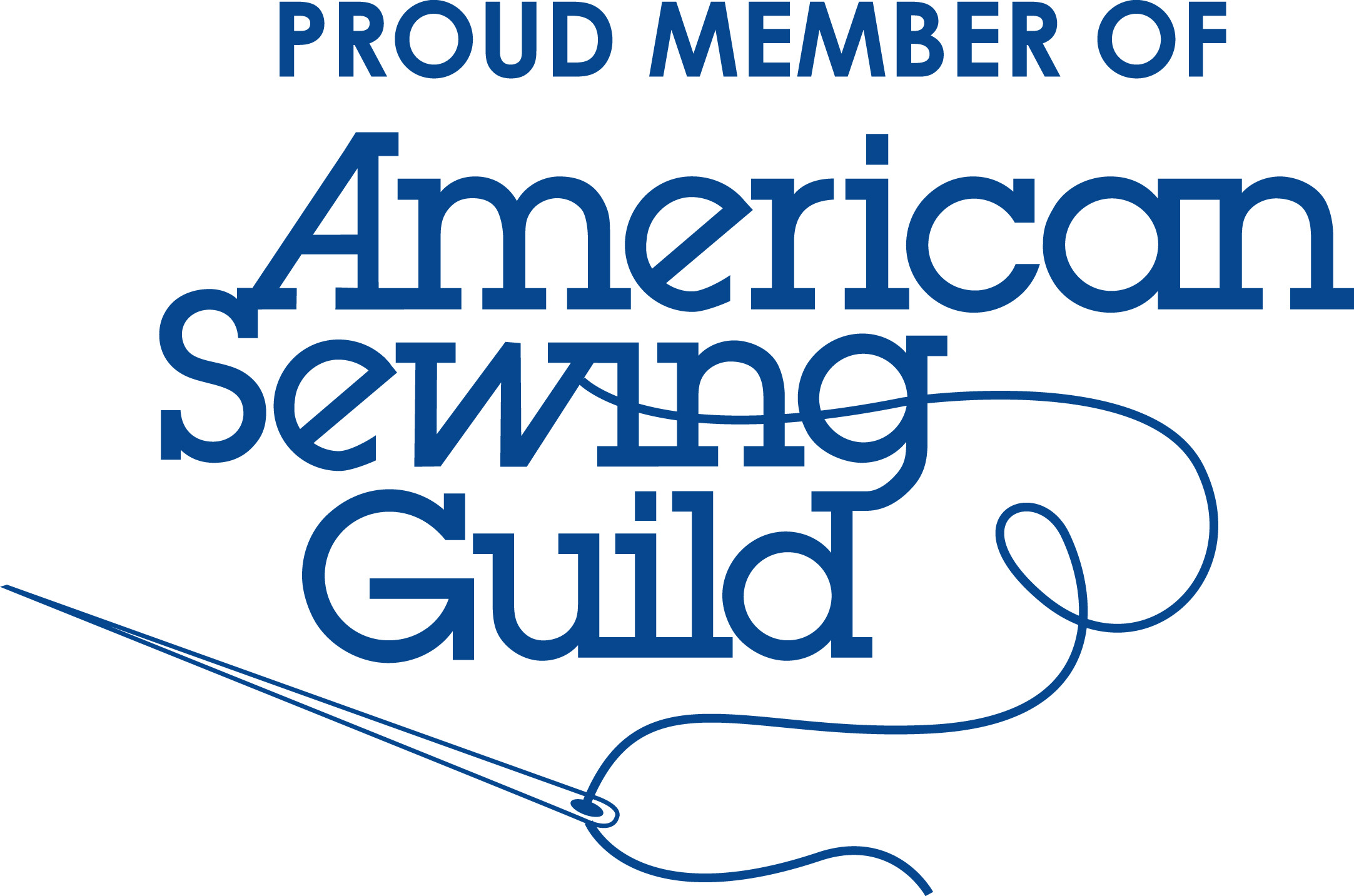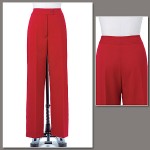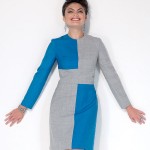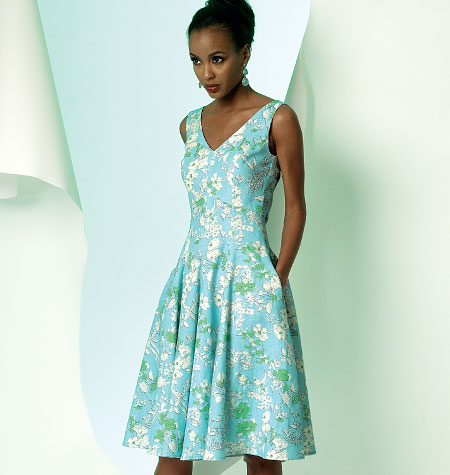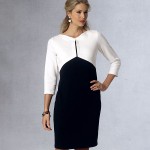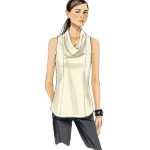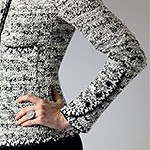Back on Track with Simplicity 1754
To start this party, I think I should first say that 2015 was sort of a tricky year for me in oh so many ways. Honestly, I think it left me drained as we rolled into 2016. My desire to sew took a hit but because I love to create new things to wear…well, it’s my passion so I just had to transition back into the sewing mood. I’m happy to say…I’m back on track! And in an attempt to keep things simple, I dug out an old pattern that caught my interest, but as I said, it was old, tucked away in a big bucket of patterns and unfortunately no longer in print though I found it still available through Joann Fabric on-line. It’s Simplicity 1754 with an interesting style.
I got creative and went for option B, the little green drawing of it in the bottom right corner. Below is the pattern instruction diagrams.
To make this dress, I had to go on a hunt for fabric. Is it just me or is there a lot of nothing available to us non-commercial sewers?! I combed through some of my local fabric stores, and had almost given up when I stumbled across this.
It is cotton with spandex so has a wee bit of stretch. It is soft and was very nice to sew but it does make a rumpling sound that kind of annoys me!
I have no idea why…but the lining queen forces within just won’t let me make something with visible raw seams. It would be easier to not line, but for whatever reason, my brain thinks that a garment feels so much better to wear and is more special if it’s lined! I’ve decided to not fight it, it’s truly easier that way! Naturally the pattern construction did not provide for this pin head notion so I had to be very creative. To top it off, I also decided that I wanted to use piping and of course there were no instructions for that either.
To get the job done, I relied on this…a fabulous handy dandy tool to have for sewing piping…a piping foot!
1. It took some extra time, but I first positioned the piping under my piping foot and using my 5/8″ guide on my machine, basted the piping in place, however, I moved my needle to a more narrow stitch, maybe 1/2″ because I didn’t want my final seam to overlap this basting seam because the threads get tangled and it’s sometimes difficult to pull the basted seams out.
2. I then sewed together the two fabric pieces with the piping sandwiched between, again using my piping foot and sewing the usual 5/8″ seam. I took my time and did this slowly.
3. After checking to be sure it all looked good, I removed all the basting and then clipped the piping to the seam along all the curves and sharp corners.
Dare I say…I finally learned how to apply piping properly to clothing. My corners and edges at the back of the neck were a success!
I didn’t take any pictures of the construction process because what I was doing would have made no sense in pictures. I had to throw the instructions out the window and totally think it through like it was my own design. It was slightly unnerving at first but once I sold myself on the idea that this was no different than when I make my own designed garments, I let go of any fear and just figured it out! I think that’s why I had fun…it was like not having to worry about coloring in the lines!
This is the front bodice of the dress. I’m thinking of adding buttons diagonally along the right front but it has to be just the right ones! HA!
This is a close up of the neck with the piping.
The dress is designed like a sheath but the front and back cut fabric pieces are split just below the waist. When sewn closed, the seam is a princess line in the bodice of the front and back. Here is a picture of the fabric layout to show the pattern pieces. At the bottom of the split, a pleat is created when sewing the two sides together.
I lined just the bodice and zigzagged the seam edges below it. This is what the bodice looks like inside.
A second picture to illustrate that just the bodice has lining. I should mention that I only tacked the lining along the front bodice seam and at the center back where the zipper is placed. I finished the remaining untacked areas with a silk thread hem. I love using silk thread!
The back princess seams start just below the waist line area and are kind of hard to see because of the fabric design, but they end at about the middle of the back of the armhole.
Okay…yes, I’m going to model it. Here it is!
The back…
It’s going to be a nice day!
Just to much fun!
So there you have it…and thank goodness I’m back on track. I’ve really missed my sewing time; I find myself feeling more balanced in everything else I do when I’ve spent some time with my creative side! And on the subject of sewing…news flash… I just received my package from Mood Fabric, it’s arrived! Enough fabric for two different… yep… dress projects and I may even have a little extra left for several cute little summer tops! Of course, on the back burner has been the pants saga which I’m getting ready to return to! Stay tuned for that adventure!
Happy Mother’s Day to all the moms that visit Sewlikeinparis!
À la vôtre! Jessica
Read MoreRestyled Simplicity Runway 1798
My daughter bought this orchid for me on Mother’s Day of 2015. It bloomed the most beautiful flowers again this month, January 2016! I hope this is the case for my new nose too!
Now that we are well on our way into 2016, I’d like to start things off by saying in today’s post that if you find yourself developing basal cell carcinomas on your face…take care of it immediately! Don’t fall into the medical insurance deductible trap and put off taking care of it until later, giving it time to spread! Just earned that T-shirt! I suppose I should be thankful that it was only basal cell, the “nice cancer”… but in all honesty, at this point in time, being thankful is not really working for me since my nose which is where the cancer was, is a “third eye on a cyclops” sort of scenario after the dermatologist and plastic surgeon got done with me. If Rudolph the Red Nosed Reindeer met me face-to-face, he would feel a lot better about himself! On a foggy night in the dead of winter during a snow storm on the arctic ocean I could hang off the prow of a ship as big as the titanic and lead the way! Yes…my nose is red! Bulbous! And it Glows!! And I’m four weeks post surgery! I have no idea why anyone would want to willfully endure a nose job to look better? The black eyes, swollen face and bruised cheeks that I got with the deal kept me housebound until a little over a week ago. And get this, tonight I have a concert to go to and on Sunday, a fashion show in Seattle! Yep…in the words of my daughter…”it sucks to be me!”
Well… ME got pretty tired of the whole ordeal about a week ago and decided to pull up my big girl panties, quit whining and get on with the program. I hit my sewing room and started a project which I had planned before Christmas. I purchased this pattern some time ago and what I really liked was the dress that had a front drape. It is the Simplicity 1798 and it is actually still available on their website!
It is the one in the bottom right corner in pale red?
Here is the pattern drawings. I made Option A with cap sleeves and a front drape (second row of A’s). BUT…I wanted a drape on the back as well which did not come with this pattern so I did a little re-designing!
*Note the back flounce on the bottom dress is just a peplum flounce, not the kind of drape I wanted.
With this style and design in mind, I purchased the fabric for it back in late November which is shown in the picture below. The underskirt I decided to make out of black crepe which has a similar texture as this fabric. I envisioned wearing this new dress with black tights, black booties and a little red purse! I had absolutely no plans about including a red nose into the package but…well…I guess we’ll leave it at that!
Remember the little red purse? Yes I did buy one, more specifically, a Coach Blake Crossbody Pebble Leather in Red. A little reward to myself for not committing harikari because of my seemingly impossible situation.
Because I planned to create a back drape, I knew that I definitely needed to make a muslin. Actually, an almost finished dress minus hems, interfacing or lining. Even though I started off with first drawing the pattern for my back drape, I didn’t realize until after I finished cutting out and sewing my muslin bodice that its back zipper design wouldn’t work for my plan. The zipper had to go! Having sewn enough dresses, I knew that with this design, I could put the zipper on the left side which meant that I would have to put the dress on over my head, and of course take it off the same way. Hey, no problem…just have to remember to fix my hair after putting on the dress!
Below is a picture of my muslin. As you can see, I left open a section of the left side seam where a zipper would go.
Of course, if I put the zipper on the side, this meant that when I cut out the pattern pieces from my actual fabric, I needed to cut the back bodice on the fold which I was a small bit nervous about since the back bodice center was more a natural curve than a straight line. I laid the pattern piece on the fold of my fashion fabric and fudged as much as I could and kept my fingers crossed! I also had to do the same for the back midriff band but this was easy peasy!
The front drape that came with the pattern, hung separately from the underskirt on the front with its hemmed side edge slightly distanced from the the left side seam where the zipper would be located. I liked this and had no plans on changing it! However, I wasn’t sure what to do with the left side of the back drape. Initially I thought I would have it hang separately like the front drape so made my muslin in that way. See the picture below. (There sure are a lot of wrinkles in the muslin aren’t there?! I did iron it as I was assembling it but it’s been through a lot since then!)
I discovered when I tried on the muslin that I didn’t like the way the left side of the back drape flared out. I worried it would make me look fat! Hey, I’m a girl and I think this way! So I decided that I would sew the left side of the back drape into the underskirt side seam on my actual dress.
After I finished with the muslin and looked at the back…I discovered that besides not having the shape and length exactly right, I also did not cut this piece on the right direction of the grain so it didn’t drape very well. I had a total “a-ha” moment and felt relieved that I had taken the time to do this mock up dress!
Here is a picture of the underskirt back view. The skirt is vented and I pondered whether I needed to include this feature if I had a drape over the top of it but decided to keep it in the design in case the hem of the skirt was at all narrow. The underskirt I will make out of my black crepe.
Okay…so after I figured out how to re-construct my new version of this Simplicity 1798 Project Runway Dress, I was ready to start on the real deal. One other major decision now occurred…to line or not to line! I’AM the liner queen but I knew I had to really think this through because I hadn’t built my muslin with a liner. Since my underskirt would be black, I discovered that when I put the black crepe under my fashion fabric, the white part of my fabric changed shades. I wanted consistency so I knew that I would have to at least line the bodice so I was off the hook for having to make an optional decision!
I still assembled the bodice per the pattern instructions though allowing for the side zipper placement. Remember… there was no need for a center back seam. I then cut out all the same pieces in the same way for the bodice lining, out of my black Bemburg lining fabric and assembled them. Next, I took the bodice and bodice lining and basted them wrong sides together.
Now it was time for the cap sleeves. Here is where I had to be a little creative. I essentially sewed the lining sleeve to the fabric sleeve the way the pattern instructions tell you to do with the “cold” sleeves. (Though still can’t figure out why you would even bother making these kind of sleeves if there’s going to be big holes in the shoulders of them!) Instead of folding the lining up and onto the sleeves and basting them together, I sewed only the sleeves to the bodice. Below is a picture of the sleeve lining sewn to the sleeve but not yet folded in and onto the wrong side of the sleeve.
Finally it was now time to fold the lining up onto the inside of the sleeve which is shown in the picture below. Hopefully this makes sense! The white 5/8″ basting stitch along the edge of the sleeve lining is my folding line. My plan was to hand sew the 5/8″ folded edge of the sleeve lining over the top of the bodice/sleeve seam that you can see back in the picture above.
*I use sewing machine basting stitches to mark hems which I will then press into the fabric that creates an even fold line. Then I remove the basting. It takes extra thread but it sure makes things easier! Sometimes I only finger press such as with these sleeve linings, because when a hand sewn seam is on a curve, fabric is a little more manageable when not pressed by an iron.
I pinned in place the folded edge of the sleeve lining, shown in the picture below.
I did remove the basting before hand sewing but I left it in for the picture so that it’s easier to understand what the heck I”m doing! Here is a close up picture where you can see the side seam where the bodice is sewn to the sleeve under the folded edge of the sleeve lining.
So that’s how I essentially made this dress. I’m not especially brave enough yet to plaster pictures of myself on the internets so I will show you my finished dress, worn by my other half, Phoebe!
This is the front…
The back…which I’m not sure the drape was all that important but it satisfied my want.
The side where the drapes are the most noticeable and where the zipper got moved to. The back drape left side is sewn into the underskirt left side seam.
And a little extra of what I saw in my imagination!
Well, that wraps up another long blog post. I’m sorry I do that! For those that don’t want to read, there are certainly some pictures to look at! Big smile!
Enjoy the last two days of the month of January, and I’ll be back soon to share more of my sewing shenanigans! Might even be able to show you my new nose!
À la vôtre! Jessica
Read MoreThe Last of Sewing in 2015
Yes, there has been some sewing going on… it has been a pajama making fete, but I’m happy to say that it actually went quite smoothly. I made 5 pair of pajama pants, not little wee pants, big adult pants! However, this year I cheated and bought t-shirts for the tops, one to match each pair which reflected personal interests of the wearer!
I’ve written on pajamas before in the post Pajama Extravaganza Butterick 4406 and 5433 s0 I didn’t take pictures to share for this one. The patterns I used were the same which was quite nifty! They were
and Butterick 5433 which apparently is no longer in print…
And because I like to put pockets in pajamas for the kids to carry their phones in, I used the pocket pattern piece and instructions for installing them from McCall’s 4244.
As I’ve explained before, pajamas are super important in my family. They are an anchor that holds us all together in my little herd. It’s my mother’s fault! She, without fail, made it a point to place PJ’s wrapped up as Christmas presents under the tree every Christmas Eve for me and my siblings when we were little. We got to open and wear them to bed while we awaited the big guy in the red suit to crawl through the window since we figured he couldn’t get in through a locked door! That’s kids for you…we thought we were brilliant to have figured this detail out!
I am happy to say that I managed to get the fit right for everyone this year. My sewing techniques I changed up a little and weights and inseams have changed a little, but I beat all the odds! The t-shirts on the other hand, were a little questionable. Several mediums seemed to be more like smalls but when there is the commotion of a celebration going on, I think things like slightly tight t-shirts become less important! The fact that they all loved their pants which all fit, was totally good enough for me!
We wrapped up Christmas activities late last night and have spent part of today cleaning up and putting away remnants from a two day revelry, but at this moment, I would really like to take the time to send my best to all of you during this holiday season. And thank you for taking the time to visit me here at Sewlikeinparis, and following along with my ongoing sewing escapades as well as my rants and sometimes craziness! It’s all in the good cause of sewing!
With a beverage of your choosing…mine at the moment is champagne…together, let us raise our glasses and toast to making it another year here on earth and I wish you all the best for 2016! May the coming seasons bring you joy and happiness in all that you do!”
À la vôtre! Jessica
Read MoreJacket of Fleece McCall 5525
This post has been probably the hardest post I’ve written since I started this blog. Why? Well, for one thing, summer is over and the heat is gone. Sure, the trees look beautiful in red, but the leaves that are falling on the ground continually find their way on my front porch and then get tracked into the house! And then there’s the cold…wet…rainy, did I say cold, weather. I know there are those who are happy about this but they evidently have an automatic self-propelled leaf sweeper and a closet full of warm and maybe stylish clothes they can wear for the next 6 months. Me… nope… just a rake, a broom, and no stylish clothes. I will continue wearing the same 3 pair of crappy fleece pants with the same crappy sweatshirts that I have worn for the last… 3…5…7+ years because, well, I don’t know for sure. Maybe it’s because I’m stuck in the same rut many people are stuck in; the holiday season is almost here, and time AND money seems to be earmarked for buying, sewing, and giving to others, which I have never been angry about except for the fact that my wardrobe never changes and in the end, I’m always cold…and I guess maybe even a little grumpy.
Because of this dilemma, I’ve decided to really make a change! It’s not going to happen over night, but I know that it’s a needed change… it will be a warmer change…a change that involves…fur? Well, maybe!? Okay, maybe after I develop winter coat and jacket making skills! Faux fur would be an amazing clothes making adventure! For now though, I guess what I need is to contemplate a bit and start at the beginning.
With a cup of tea and a cinnamon raisin bagel (every morning and should buy stock in bagels!), two weeks ago I sat down in front of my computer and started looking at clothes patterns on-line. This is a standard protocol of mine when I’m trying to get my brain to function in sewing mode. As I sipped my tea and scrolled through the images, I decided on my first “warm winter” project. It would be a jacket! The really cool thing was that I had already purchased a pattern…like…8 years ago! The pattern is McCall’s 5525 and its image is already on this blog! Fortunately, coat and jacket designs don’t change a whole lot; their basic function is to keep its wearer warm!
I should first say that I’ve never made a jacket or a coat. I’ve talked about making either one, but as I said earlier, I’ve been mentally incapacitated and continually sewing summer dresses! To get the party started, I decided I better do a practice run first, though this sounded like a lot of work, especially if there was no benefit in the prototype. As the brain cells started to activate, fleece came to mind. This is very treacherous ground for me since I’ve ranted repeatedly for years about how much I hate fleece. The main instigator here is my local Joann store which has fleece on what seems like three-quarter’s of it’s shelf space…you step on it as you are walking up and down the isles…it’s everywhere…and it comes in every ugly hideous print one can imagine! I need to stop now…I feel a rant beginning to develop…note the breath, slow, steady, in with the wine, out with the unicorns and glitter!
Sometime later….
Okay…I’m back now and composed, dreaming of feeling warm and fuzzy in my fleece jacket, if it passes all my personal picky tests. Yep! You read it correctly. Fleece! I caved! I decided to make my jacket out of …of fleece! I’m not sure if I should be ashamed, or relieved. I’m trying to come to terms with my fleece hatred. Now this isn’t just any fleece…it’s anti-pill fleece for $2.99 a yard! A screaming deal! Admittedly, I envisioned my finished jacket would be a pretty variation of pink, or maybe red, but…alas, it ended up being yellow because it was the best looking fleece, richest in color, not to mention bright, cheery, and sunny feeling! Yeah, I’ll probably look like Bird Bird’s cousin wearing it but if I’m warm…I think I could live with it…I hope!
The jacket on the pattern envelope in yellow, View A, was what I made. The instructions are quite good and overall, the construction of it went very well. I made a few adjustments for fitting, most were perfect but I regret that I shortened the sleeves by an inch as well as the overall length of the jacket. Since I’m not an Amazon women, usually, regardless of the pattern, whatever I make is always too long in the torso and arms hence I shorten! Since the hem in both the sleeves and jacket length is 1 and 5/8 inches, I can squeeze out a little length…hey this is a prototype…and it’s fleece! I can do whatever I want, right!? The question is, will I wear it? Don’t think I can answer that right now but I’ll get back to you!
As for the rest of the story, yes, I like the pattern and I think I will make another jacket but in the other style. It’s a bit of work, not hard, though takes more time than making a dress, but if I make it out of some nice quality WARM fabric, it would be a cost savings for me as well as provide a sense of accomplishment.
My two assistants are both full time college students and so there is only me taking the pictures…also I am not real happy about a piece of lighting equipment that crapped out on me! I’ll spare you a rant about that!
So here is the front of the jacket, unbuttoned. I did line it with satin backed flannel thinking that it would increase the warm factor…don’t think it did. Bummer. I paid more for that fabric than I did for the fleece…go figure!
Another picture of the jacket buttoned up.
Because this was a practice jacket, I thought I would add on the button down yoke on the back to see how the construction of it worked.
I realized that I actually do have a model…Phoebe. She’s almost my exact size…a little more up top and a little less on the bottom…okay, so we are not exactly twins, but close enough!
Here is a front view…
The back…
One more front view for good measure…
Well, there you have it, a fleece jacket. There are some things I learned about working with fleece. It is probably a little too bulky for this pattern. Then there is the weird look it takes on when hemming fleece by hand. I ended up tucking the lining fabric under the fleece and then sewing a hem through the two layers which gave a much better finish. Last but not least…it isn’t as warm as I thought it was going to be. Maybe it will be nice to wear in the spring! What an epic fail!
With that, I’m going to post this and have myself a glass of Chardonnay and think about what my next WARM project will be. Hope your days are fabulous as we transition into the holiday season!
À la vôtre! Jessica
Read MoreMcCalls 7119 Stretches Beyond Boundries
Hi there! I’m finally back and trying to get into the swing of things. Actually, I have been sort of in the production mode. Just converted about 70 lbs. of tomatoes into spaghetti sauce and salsa which I then canned. Last month I was able to can my spicy and dilly beans as well as my beloved Canadian Harmony peaches so I think we are almost ready for winter!
I’m healing up nicely, taking several days out each week for physical therapy but time, I think, is the biggest healer. Then there is the fashion show…the fashion show…what fashion show? Well, the one that I’ve been working for since this last February… it would be Portland Fashion Week. Nope, I’m not designing clothes to show at it, nor am I a runway model…they think I’m too short… HA! I’m an Amazon woman… in my mind! Actually, I’m a producer. I don’t do anything super glorious or thought provoking… and likely what I’ve done will never go down in history. BUT… it’s Portland Fashion Week, and I get to be one of the cogs that drives the wheels of fashion here in Oregon and that’s good enough for me!
Now it’s time however, to get back to work and start sewing! I’m starting a new project this month after I finish two that I’m almost done with but the one I want to talk about in this post is a dress that I made in July before I decided to wreck on a motorcycle! The fabric I chose for the project was what I used as an intro picture in my June post when I talked about my impressionist dress and this is it.
It was sort of a stretchy fabric, not much, but a little more than I anticipated. For my canvas, I decided it would be McCall’s 7119.
The pattern instructions called for wovens or stable knits and after much deliberation, I decided that my colorful sort-of-stretchy knit would be okay! After-the-fact, I’m happy with the outcome but I don’t think it was as stable as I thought. You’ll see in one of my pictures why I say this. Considering it all, I’m still happy with the dress. I had planned on wearing it this summer but it appears that summer is almost over so may have to wait until the next one comes around unless for some miraculous reason I find myself going to the Bahamas or something!
The pattern was easy to follow…from what I remember! June seems so long ago after everything that has happened. I do recall that trying to position the bodice back and bodice fronts onto the neck band was a little trying. I think I kept messing up which markings were for what because all I kept seeing was a lot of straps!
Here is a close up picture of the front. The left shoulder looks a little odd but it’s the way I have it lying on the table…oops!
This is the front showing where the slot is for the waist tie to pull through.
The bodice back. Once again, the placement of the left shoulder is weird!
In several of the pictures of me wearing it, you’ll get to see why I’m thinking that knits should be avoided. The front doesn’t reveal it, however… my posing, I think, was less than satisfactory! I just wasn’t feeling it. I was having a dumpy feeling day…most everyone understands what those are I think!?
This is the tell tale picture. Note that the waist seam is hanging below the tie. I didn’t notice until after the pictures nor did my daughter, the photographer! I think the bodice front and back, overall, pull down with the weight of the skirt which I didn’t expect.
Of course the dress is full length with a little extra on the back hem.
I think the remedy for the tie sitting on the waistline is to drop it a bit before tying it into a knot but if I’m on a tropical beach…who cares! Right!?
There are various ways the ties can be wrapped and knotted but for this photoshoot moment and because I was pressed for time, this is what I did.
Despite this dress stretching beyond boundaries, I like it! I’m thinking though that it might be nice to make another in a street length because it is so comfortable. But…first I have to find just the right fabric!
Have a great rest of the summer since it’s not officially over until September 21!
À la vôtre! Jessica
Read MoreWhen It All Falls Down
The picture above is of South Falls at Silver Falls State Park in Oregon… that rectangular shaped state that I live in. You are probably wondering at this point how I’m going to tie together a water fall and sewing right!? Well… I took this picture on a late afternoon while hiking around the park with some of my bestest best friends. It was a very warm day and we were having a wonderful time, especially because our trip to the park was a spectacular ride on motorcycles. When we were done hiking, back to the bikes we went and off we rode into the sunset… then the bike I was on with me as a passenger… crashed.
I am very happy to say that both of us walked away… well actually I didn’t, I got an ambulance ride to the helicopter that took me to the hospital. Fortunately, I was only knocked out, and yes, I was wearing a full helmet. We had done everything right, it was just a curve in the road and a rock, or something that didn’t like tires! Neither of us have any life threatening damage, just a bunch of road rash which is horribly painful I’ve discovered and I have some muscle or tendon damage in one of my legs. My biggest concern with it is that hockey starts in about 4 weeks and I really need it to work right!
Anyways, I’ve not been doing any garment sewing so don’t have anything to share at the moment. I’m starting to get back into the swing of things and I promise that I’ll have things to share this next month. Take care and hope you are enjoying the summer. Believe it or not… despite a bit of a set back, it’s been a pretty awesome summer so far and it’s not over yet!
Because music makes me happy, I thought I would share with you one of my favorite songs! It’s a YouTube clip so when a little ads pop up, you know what to do (click the x 🙂 ) Enjoy!
À la vôtre! Jessica
Read MoreMcCalls 6887 Impressionist Dress
Impressionist Fabric
When I stumbled across some fabric at Joann’s (no I was not drinking!), for whatever reason, I saw it as perfect for making this McCall’s 6887 dress.
So what does the fabric look like? Well, the picture below is it.
When my son, Jared, saw it, he said it looked like impressionist fabric! My mind was whirling away as I heard him say this… the word was familiar, it had to do with art, but who was I kidding. I never paid attention to the art part of any lecture in my college classes. Nothing is worse than when one of your children seems to have one up on you; so I decided I better investigate and educate myself quickly! Because I like to share, I’m going to present a cliff notes version of what I learned. A glass of wine to sip while perusing my ramblings would fit in nicely about now! Hint Hint!
QUICK BIT OF HISTORY:
In the early 1860’s four young painters met while studying under a Swiss artist, Charles Gleyre. They were Claude Monet, Pierre-Auguste Renoir, Alfred Sisley and Frédéric Bazille. They were all interested in painting landscape scenes but wanted to accomplish this by paying less attention to details, instead using lighter brush strokes and brighter colors. It is said that at an exhibit, a reviewer-humorist Louis Leroy, who wrote his criticism in the Le Charivari newspaper, coined the word “Impressionist” from Monet’s painting entitled Impression Sunrise. He said that he considered Monet’s work to be nothing more than unfinished sketches.
He sarcastically wrote:
Impression- I was certain of it. I was just telling myself that since I was impressed, there had to be some impression in it… and what freedom, what ease of workmanship! Wallpaper in its embryonic state is more finished than that seascape.
What an A-hole right! Below is that picture, Impression Sunrise, Louis Leroy was speaking of.
Anyways, Impressionist art depicts scenes where there is less definition and specificity, with the intention of portraying an image that leaves some of the perception to the viewer.
Please keep in mind that my son is not an “art nerd”… he’s a “history nerd“! He’ll probably have some interesting words to describe me if he happens to read this particular blog article!
Since I’ve now talked a wee bit about Monet, I think I’ll go one step further and share one of his pictures that I think resembles my fabric. It is entitled “Garden at Bordighera, Impression of Morning” by Claude Monet, 1884.
One thing for sure, I’ve concluded that I most definitely made an Impressionist dress but not because of the fabric, but rather because I was less focused on detail, and instead paying more attention to the bright colors of the fabric! I was so mesmerized by it during the construction process, I don’t think my brain was functioning properly. There were tell-tale signs when I made my bodice muslin but I guess I was too eager to sew my Impressionist fabric!
The afterthought… should have made the whole damn dress out of muslin first and then I probably would have made something different out of my precious fabric! There were a number of problems. Here is the list:
1) The band across the back seemed a smidge too high when I put on my muslin, showing my bra strap but my thinking was that after I sewed the skirt to the actual bodice, its weight would pull it down. WRONG!
2) After finishing the bodice, I discovered that the shoulders had a weird curve that caused them to not lay right over my shoulders. So I would do what any creative soul would, I cut off the outer curve portion of the straps, AFTER I removed under-stitching seams and stitching seams. All that time and work and I was redoing it! This did not set well for me! In the end, the shoulders still aren’t right! In the picture, they do extend wider in the back and that’s what I slimmed down! I think I’m starting to hate this dress!
3) Attached the skirt and discovered that the back waist was 2 inches to much and sagged down my back. Lots of cussing commenced at this point! Since I had already put in the zipper this meant tearing it back out for my adjustments! More work!
4) When I was done hemming the skirt and skirt lining, I held my breath as I tried it on…the stinking back waist was still to big! I took 2 INCHES out of the center back! To top it off, the left shoulder was still doing something weird (probably because I have a weird left shoulder!) and the cross strap in the back did not cover my bra strap!
I left my sewing room, gulped down a glass of wine, and decided that I would sew elastic on the seam allowance in the back waist and call it good. Maybe when it’s 90 degrees I’ll wear it because it will feel cool on my back and everyone else will be so hot that they won’t pay attention to my wardrobe malfunctions!
Well I guess I better get this over with. I decided to do a photoshoot in my backyard. It’s beautiful outside and after a long winter indoors, I plan on spending as much time as I can outside!
Here it is!
Here is a view of the back which I am going to do some more work on but decided to share it and then tear apart later so I could get this posted! (Part of my bra strap in the back popped out – I didn’t Photoshop it out. This is one of the problems!
And just because…
Honestly, I did like the pattern and the instructions were easy to follow but because of the styling in the back of the dress, I sort of failed at getting it to fit properly so a word to the wise, be careful with this one!
Almost forgot… remember the picture at the very beginning of this post? Well that’s fabric for my next dress! Wish me luck!
Salut, Jessica
Read MoreMcCalls 7088 In Spring
My Wisteria in full bloom!
Finally…the rain has slowed down and April is turning out to be a very beautiful month! The setting at the winery I visited last weekend was fabulous. It was a beautiful 76 degree day and I got to enjoy time with friends while listening to Ty Curtis play the blues and of course, sipped a glass of lovely rose wine… or two…or –uh…we’ll stay at two! Needless to say, I had the feeling that life just couldn’t get much better!
Spring days like those at the winery always inspire and motivate me to push ahead through the winter drudgery mood that I develop, slap me in the face with new ideas and prod me on to the sewing machine to get back to creating clothes! I posted a picture of my Wisteria above because it kind of reminds me of my fabric for the McCall’s 7088 dress I just finished. Well sort of! I bought it from Mill Ends in Beaverton Oregon.
Now you’re thinking…What? What McCall’s7088 dress are you talking about? Well, here’s the pattern:
I really enjoyed making this dress. I got caught off guard with a surprise, but nothing disastrous. If I made this dress over and over, there would be no surprises, only perfection! But that’s how it is for us “home sewers”. The beauty of this though is that with all the surprises and mistakes, we get very good at problem solving which is where that lovely creative part of us really kicks in!
Instructions for the dress construction are pretty straight forward. I’m still working on improving SHARP pivots like that in the bodice so do whatcha gotta do! My fabric was sheer so I tread traced all the darts and used the pinking shears on all my seams. I would have done french seams but the fabric has a slight stiffness to it and I was concerned how the seams would hang so decided to avoid them.
The bodice lining was easy. I used a very fine white cotton that feels almost like silk. For the price it should have been!
You might notice in the picture above that the waist seam allowance is pressed under 5/8″ inches. I decided to not sew it into the waist with the skirt but rather sew it over the seam allowance of the skirt and skirt lining for a nicer finish. This is when I realized that the right side of the lining would not be facing my body, the wrong side would. Why? Because that’s what the pattern instructions tell you to do! I was okay with this here because my fabric was shear enough that I didn’t want the seams to show. I had to iron out the fold and press the fold to the outside. No problem though because I always baste a line of thread to follow when I press, which I remove later.
In the picture below, the dress bodice, skirt, and skirt lining have already been sewn together and the zipper installed. I went ahead and did the finish sewing that secured the skirt lining over the zipper tape. Now I was able to hand sew the bodice lining to the waist seam allowance and finish the sides along the zipper.
Here it is finished, laying on my working table with the sunlight shining in! Not a very good picture for displaying work but it just seemed right because it’s sunshine!
I decided not to sew the lining straps to the dress shoulder. If it becomes a problem, then I can easily do that at any time.
Here is the back with the zipper open.
This is the back with the zipper closed.
The front. In both this picture and the last one of the back, it is easy to see the lining.
A close-up of the neck. Notice how the zipper rolls ever so slightly. And I tacked it down!
This is the skirt and skirt lining. Really no purpose but I took the picture and figured, why not!
I simply loved how this dress went together. Probably the beauty of the fabric played an enormous role too. The colors and brightness of the white lining lifted my mood. I’m going to have to get back to a fabric store soon and buy some more cheery fabric and make another summer dress!
I suppose I better show you how it looks on me. I keep worrying that it may be the boring part of my post but from some feedback I’ve gotten, it seems that’s sort of like the drum roll! The question of what shoes I’ll be wearing is sometimes the grabber! I’ll probably never know for sure, but as the old adage goes, if it’s not broke, don’t fix it! So, until then, I bring you me!
Yes… hot pink shoes! Below is the back.
A close-up so you can see that the fabric is shear above the bodice back lining and of course, the strap that I chose not to sew to the inside of the shoulder is peaking out!
Back to the front…
And because I’m a ham!!!!
So there you have it… McCalls 7088 in Spring! Speaking of spring… the sun is suppose to grace us with it’s company for the next four days, as you can see behind me through the window but for the moment, it’s time for me to sit, relax and enjoy a glass of Nebbiolo Wine and decide where to wear my new dress!
A Votre Santé! Jessica
Read More
Making Pants is Rocket Science Part 2
Here I am, back with Part 2 of the pants saga… Making Pants is Rocket Science. All the alphas and zooloos lined up and finally my friend and I were able to get together and do a pants fitting. Guess what?!! I was so close! I would have taken pictures but I forgot and wore hot pink undies that proudly glowed through the muslin and so I really didn’t want to post pictures of this on-line! I don’t even want to think about what kind of spam I would get! The good news — I have taken pictures of the pants muslin with all the thread tracings and adjustments so that I can share and explain.
Just to briefly up-date, the pants pattern I have been using is Vogue 7881.
It is from the Claire Shaeffer’s Custom Couture Collection. These pants are straight-legged with a contour yoke waistband. They can be made as dart-less (option A) or with darts (option B). I followed the couture techniques and construction given for the dart-less option A pants.
As you can see from the picture below, my muslin still requires some adjustment on the front. The front crotch length is about 3/4″ of an inch too long (this was easy to see when doing my fitting). We pinned darts of 3/8″ inches, starting from the edges of where the zipper will be placed and easing to nothing at the side seams. The same measurement of these darts I will transfer to the front pattern piece and so the fact that the pinned in darts on my pants muslin are not meeting equally at the center is nothing worrisome. I also need to remove 1″ inch from the waist because we pinned 1/2″ out on each side through 1/4″ inch pinches.
The back of the pants fit almost perfectly and this is why. In all my failed attempts I had always thought that the reason for the bagginess or pooling of fabric under my butt cheeks was from too much back crotch length (the measurement from the top of the waist to where the back crotch seam meets with the front crotch seam). Well, I was wrong. My problem was not back crotch length, rather the “pitch” of the seat.
The question now arises… pitch? what’s a pitch? Yep, I asked the same question. I had never heard that term before either and whether it was a creation of my friend’s that she used in her explanation to me, or an actual pattern drafting term, it didn’t matter because it was that magic word that helped me to make sense of what was happening to the back of pants when a dart is added into the back center seam curve of a pattern tissue for the fitting adjustment that fixes under the cheek fabric bagginess!
I was so excited about this new discovery that I ran home, re-worked my pants pattern back piece and then wrote my Making Pants is Rocket Science – Part 1. After the fact, I learned in my next couple of get-togethers with my sewing friend that while my method for creating a dart to alter the pitch was correct, there is a cleaner and more efficient way of carrying it out which I will once again be eager to share, only this time I ‘m applying the method to the front pattern piece.
Oh, and though not something to climb a mountain and shout about… well maybe I would because goofing off is in my nature, I also learned that the back center seam curve is usually shaped like a J but mine looks more like an L!
For a quick review, below is the picture from my Making Pants is Rocket Science Post. I made an upwards fold in the pattern piece which in essence is a dart, then trued up the curve and added the lost 1 inch length to the top of the waist.
Now, for the more efficient way to shorten the crotch length in the front or back of a pants pattern piece.
I should first explain that when reducing crotch length, whether in front or back, this adjustment is done thru a dart made in the pattern tissue or muslin, in which the larger side of the dart starts at the center since this is where the fabric that shapes around the roundness of our bodies is too excessive. The dart will then ease to nothing at the side seams. When I adjusted my back pattern piece, I used a dart but I didn’t want to change the crotch length, rather the “pitch” of the curve so the amount I removed in that dart I added back to the top of the waist. My front pattern piece however, has too long of a crotch length so in my steps below, I will create a dart to shorten it and not add anything back to the top of the waist.
1. Determine where the fitting dart should be located. In a fitting of a muslin, where the pinching and pinning out of the excess fabric happens, somewhere between the waist but above the crotch, this amount and location is where the dart should be drawn on the pattern piece.
2. On the pattern piece (my front is shown in the picture) draw a line from edge to edge where the dart is needed. I drew mine just below the red colored hip line in the picture below.
3. Make a mark below the line just drawn, at the center front, the measured amount that needs to be removed. (I needed to remove 3/4″ of an inch in the crotch length so the blue mark in the picture is 3/4″ of an inch down from the center line)
4. Begin cutting from the edge of the front center seam of the pattern tissue, continuing along the drawn line towards the side seam, but stop just a smidge from the seam allowance. (In the picture below, the seam allowance is the dashed line in red on the left side)
5. Next clip on this same line from the edge of the side seam of the tissue towards the seam allowance but not cutting through. There should be just a snag of tissue between these two cuts that are going to be a hinge for pivoting.
6. Now pivot the cut line section downward to match the line that is not cut. There will be a small gap at the side seam (slightly less than what you see in the picture for step 5) but don’t worry, it’s okay.
7. The center front now needs to be trued up along the edge so tape a piece of paper to the underneath near the area and re-draw the front curve. (The edge is just on the inside of the plastic curve ruler. I am merely adding back in a little section.
*Note: My above instructions are if the crotch length is too long, but if the crotch length is too short, this same method can still be applied, only rather than layering the top and bottom parts of the pattern using the hinge, the two sides will be separated or spread apart to the amount that needs to be added and additional paper is used to fill in the space.
Okay… so maybe I should next talk about making my muslin. Yes, I thread traced all the lines Ms. Shaeffer recommended… EXCEPT the seam lines. I was eager to do things right but not quite that eager! Each fabric piece has to be thread traced separately so first cut the pieces out of the fabric and then lay the tissue on each piece, and sew running stitches by inserting the needle in and out from the same point along the markings. By using the same point for access and exit, the pattern paper will lift up easily from the fabric with maybe a little snag here and there. I traced the crotch line, hip line, knee line, the crease in front and the grain line in back, all the zipper markings and start and stop points for the gathered darts. See picture below.
This is how one leg (front and back) of my pants muslin pieces looked when I finished. There is baggy bumpiness at the waist area of each because this is where I stitched gathering threads in the fabric between markings. Remember… dart-less pants! Already a little nervous about this part of the construction.
My dart gatherings before the gathering!
And after.
Okay… phase 2 of the engineering of my pants is complete. Now I’m ready for phase 3, the construction of my actual pants! It was my hope to refute the thought that Making Pants was Rocket Science and that is still my goal. But I’ll have to get back to you on that when I write Part 3. For now, enjoy the rest of your Spring break, vacation, or week and I’ll be back soon!
Salute! Jessica
Read MoreButterick 6054
Spent this last weekend with 10 of my bestie gal pals at the February 2015 Seafood and Wine Festival in Newport Oregon. It was lots of fun… well maybe even more than that, especially when wine, champagne, Fireball and a bunch of “ladies” are involved! (please note the quotes, italics, bold print and underscore. Its important that I make this point clear – I want them to remain my forever gal pals!) Seriously though, one of the highlights for me was getting to spend time by the ocean. I love our ocean here in the Pacific Northwest… even if its not as warm as bath water and doesn’t have palm trees swaying in a toasty summer breeze around it. Heavy sigh… gonna have to leave that thought behind though because now it’s time to talk about important stuff… like sewing!
It was my hope that my next post would be about pants but with work schedules, time… life, my friend and I have not gotten together yet to do my fitting but no worries, the pants post will arrive soon! In the meantime I’d like to talk about a project that I just finished and involves the Butterick 6054 pattern.
The fabric and look of this dress is what immediately drew me in. You know… that comfortable summer look… it reminded me of those swaying palm trees and sipping a tropical drink on the beach while lying on a lounge chair! You’re really getting the picture now… I’m ready for summer! And a vacation!
But honestly, the biggest reason for why I bought this pattern was because the Buttericks were on sale, 5 for $5.00! Anyways, light weight jersey is the suggested fabric to make this dress out of and it just so happened that I had some. And can you guess what color… yep, black. I had actually bought the fabric to make a top out of but never did! Yeah, I bet many can say, been there, done that!
At this point I have to admit something… though I really like wearing garments made out of jersey, I don’t especially like sewing with it. And, I really don’t like cutting pattern pieces out of it. It’s so s-t-r-e-t-c-h-y!!! However, this was not the worst of my problems. I had to figure out how to cut all the pieces from my 1 and 3/8 yards of black jersey when the pattern instructions called for 1 and 7/8 yards. For several hours, maybe more, I arranged and rearranged. At one point I had to walk away and decided that a glass of wine might ease my frustration! Because my cutting table is not very large, I attempted laying the fabric on my big cardboard cutting mat on the floor where there was more space but discovered that my knees were gonna hate that idea so moved the mat and fabric back up onto my table. I persevered and in the end, won! There was barely any waste which I was actually quite happy about!
The instructions for putting this dress together, for the most part, were easy to understand but I would say that it is not the easiest dress to make. There are 5 pleats in the top of the right side of the skirt, 4 that stack one on another requiring a lot of basting, and then after the skirt is sewn to the bodice which I found a little tricky doing when I reached the glob of pleats section, the 5th pleat is then folded over the top of the others. The tie comes next which is basted over the top of all this.
This picture shows my beautiful black jersey as a gray… with fuzz balls on it! I so hate that!
With the tie folded to the left, it’s easier to see along the edge of the bodice and skirt.
It was at this juncture that I understood why “light weight” jersey is suggested because the next step was to sew on the front right facing which layers over the top of the other ?? layers at the waist area that I’ve lost track of at this point!
This was when I got a little confused but… right or wrong, this is what I did and it worked fine. I laid the facing over the top, right side to right side, matching the waist and facing edges and notches, and sewed across in a 5/8″ inch seam but stopping on the left at the pivot point where the arrow is pointing.
Then I pivoted the facing upwards to match along the bodice edge and then sewed a 5/8″ seam along that edge. Important point: I did discover that this seam has to stop at the pivot point otherwise the facing doesn’t turn to the inside properly.
After I took out part of the seam which is a pain in the derriere when the fabric is black and stretchy jersey, this is how it looks turned to the inside. Note the big glob of fabric hence the light weight jersey!
Just got to thinking that I forgot to mention one important little detail that was suppose to happen after sewing the skirt to the bodice. The pattern instructions call for plastic elastic to be sewn into the waist seam allowance. I hate wearing elastic in most anything I wear, bras I suppose are the exception to the rule and so I avoid making garments that require it. However, just to be a good sport, I did try once to apply the elastic. When finished, it was my opinion that it looked like crap, would probably feel like crap to wear, so removed the crap! Since the dress already fit me like I liked, I determined that I didn’t even need elastic so end of story! We’ll see how I do on my wear test… hopefully there will be no regret!
The rest of the construction process went smoothly. There is a bit of double top stitching but I like the look and it’s easy sewing! Well I guess it’s time to share. Oh yeah… there is one other tiny little thing about light weight jersey… it’s very thin! Still trying to work out what to wear underneath but at least in a controlled environment like in my studio, there’s no worries! After looking at the pictures, maybe I don’t even need to worry!
Forgot to move my hair but the back looks like a back for whatever that’s worth.
Was trying to do a side shot so the tie would be visible but since the dress is all black it’s hard to see.
And as far as I can tell, there’s no undies showing so light weight jersey certainly rocks this dress!
Tomorrow is February 28 and then we roll into March… and Spring! I’m getting antsy to start sewing my summer dress wardrobe and will share of course. Also just finished up my pants fitting so have some up and coming news about that too. Until next post!
Salut! Jessica
Read MoreMaking Pants is Rocket Science Part 1
This picture illustrates clearly how I feel as I start my pants challenge!
Happy New Year! We’ve just pushed off from the starting line of 2015 and personally, I’ve got my fingers crossed that this year is gonna be the best ever yet!
With regards to years, while writing this, I’ve realized I just passed my 2nd anniversary of starting up Sewlikeinparis. It’s hard to believe that I’ve been banging away on my keyboard for that long! I remember when I started… I was so scared. It felt like I was jumping off a high dive into a pool with no clothes on in front of a grandstand of spectators, worrying I would belly flop! And I felt bombarded by all the warnings about the dangers of the internet! On occasion I found myself entertaining the thought, “what if there are internet boogie men who try to steal my personal information and expose me in Facebook, Twitter, Spokeo or some other sensitive information vacuum sucker up-er! Well I’m over that now! It’s been an awesome experience that I’ve truly enjoyed… and I’m certainly not done yet!
I’ve shared many things through my posts, feelings of success, frustrations accompanied by rants, a few disasters, songs, jokes and toasts, but I’m not sure if I’ve shared enough epic fails! Believe me, I’ve had my share, especially when it comes to making “PANTS”! I know there are those that get to enjoy the sweet taste of success from accomplishing this great feat, I’ve met some of them and they say it’s easy. I call BULL. I think making pants is rocket science. I’m sure of it! I’ve lost track of the number of muslins I’ve made, say…7, maybe 10, nah… more like 15! I’m actually not sure – I quit counting after 6. I’ve even sewn from good fabric 4 pair of trousers and 2 pair of jeans, and all ended up in the trash! Certainly sounds like an “epic fail” to me. But I’m tired of failures and ready for success so I’m challenging myself to learn how to make pants that fit!
In order to meet this new challenge, I decided to start from the basics; meaning, no fitted jeans, no low-rise waist, no skinny legs, but rather, plain classic women’s trousers. And I’m not going to draft my own… I’ll save that for later. I’m going to take baby steps on this project, meaning that I’m not going to be in a hurry and the perfect pattern for this, I think, is Vogue 7881.
These pants are straight-legged with a contour yoke waistband. They can be made as dart-less (option A) or with darts (option B). The pattern is part of the Claire Shaeffer Couture Collection so couture techniques and construction are given for option A and stream-lined instructions for option B for quality ready-to-wear. I know I said baby steps… but to me, this is baby steps. Yes, there is lots of hand sewing involved, specifically, thread tracing the major construction lines but I see this as really digging in, one baby step at a time. All the thread tracings will show me what is going on when I’m trying to fit the pants to my butt! Yes, the butt! This is where all the action is happening… all the unwanted wrinkles, or pooling bagginess, or uncomfortable tightness! Getting pants to fit my butt is the maker or breaker here!
I have a friend who studied pattern design at Parsons in New York and she sat with me this last week and explained how the “pitch” of the curve of the back center seam affects the fit of a pair of pants. Hopefully I’ve understood it well enough to explain. The curve of the back center seam of a (back) pattern piece for a pair of pants is at a “pitch” that matches the shape of the model’s derriere. Since no two butt shapes are alike, the pitch of the curve will vary. Darts, go figure… are what is used to adjust the curve and change the pitch. With every pair of pants I’ve made, it’s always the same; there’s a pooling of fabric to the right and left side of the center back seam under my butt cheeks! This I’ve learned, may be a pitch of the curve problem. I guess I’ll just fly by the pitch of my pants and see what happens!
Below is a picture of my pattern piece with a fold (dart) at the center back seam. It’s 1″ inch that decreases to nothing at the side seam. I don’t want to change the side seam because it has to match the front side seam. My friend warned me that this dart may cause some tightness a little up from it’s location and if so, I will need to add back in some of what I just took out! It’s all about the dart!
Because I’ve taken out 1″ inch on the back center seam length, I need to add that 1′ inch back to the top of the back center seam, and from that point re-draw the waist ending at the top of the original side seam. See picture below. I will also need to re-draw the crotch area seam line where the fold (dart) creates a discrepancy.
Below are some miniature pants back examples to provide visuals of what happens to the pitch of the curve on the back center seam when a dart is added.
Picture #1: The pants back pattern piece before doing anything.
Picture 2: I have drawn lines on the example to show how the fold (dart) is created that will change the pitch of the curve.
**Note: The lines I drew on my actual pattern piece were not arbitrary. I’ll explain:
At the back center seam, I started the bottom line at the point where the bagging is most problematic and drew it diagonally upwards to the side seam at the point where I’ve found through fitting with muslins that it seems to start. The point is about 4 to 5 inches down from the top of the side seam, including the waistband.
The top line I started 1 ” above the bottom one at the back center seam, ending at the same side seam point of the bottom line.
Picture #3: I’ve folded the bottom line up to the top line. Now the top of the back center seam has dropped lower and so the amount folded out will have to be added back to the top and a segment of the curve will need to be filled in to correct the discrepancy.
Picture #4: I have laid the folded pant back on the top of the original one that has not been changed which gives a visual of what is happening with the pitch of the back center curve. This change does not change the width or circumference of the back of the pants, just shifts the curve in the seat area. This adjustment will hopefully clear up the bagginess I get in the back. It will be with the fitting of my muslin when I will know for sure!
**Note that because my fold in the miniature example is roughly 1/4″ inch instead of 1″ inch, the change is not as drastic.
After I completed the adjustment I just discussed, I then traced my back pattern piece using tracing paper I purchased by the roll from Nancy’s Notions, and also drew in the corrections resulting from the adjustment. I went ahead and traced the front pattern and waistband pieces as well, preserving them in their original form in the event this fails and I have to start over!
I think I’ve reached a stopping point for this post but no worries… I’ll be back with Part 2 after I’ve met with my friend who is going to help me with my fitting! It will either be on to making my fabulous pants or back to the drawing board!
Salut! Jessica
Read MoreGoodbye 2014 Hello 2015
There were only 5 “tootsie rolls” under the tree last night. This morning there was a 6th. It is for me! … and I thought they forgot!
What is under the Christmas tree you ask? Looks maybe like “tootsie rolls”? Well yes, that’s what we call them, but no, they are not candy. Inside each tissue paper roll are pajamas! Those who have been reading Sewlikeinparis for the last year are familiar with this oddity but for you new comers, I’ll give you a brief synopsis! I’ve carried on a family tradition that my mother did for me when I was growing up. Every year on Christmas Eve, the “tootsie rolls” are the one present my children get to unwrap and wear for all the evening festivities! It’s gotten even more fun now that they’ve grown up… we party down in our pajamas! In past years, we’ve had guests who have spent Christmas with us knowing that if they stayed, they would have to play along in this strange tribal custom. They were good sports and discovered that it was actually a pretty fun thing to do and had a really good time! Friends and neighbors who drop in for a hot tottie have grown use to seeing all of us in our bed clothes and look forward to seeing what the trend and styles are for the year!
To make the girls pajamas, I used the Vogue 7837 pattern.
There was a bit of mixing pattern styles, as well as some recreating to end up with the kind of tops I made. I did this by using the pieces for the teddy, except when cutting out the front and back, instead of cutting the pieces on the bias, I cut them on the grain at 22″ in length. They turned out the same as shown in the top left corner, only they had the empire bodice of the teddy. Also, I cut the back pattern piece leaving in the flare of the back center seam which would have been part of the seat of the teddy. Leaving it this way gave a nice shape to the back and allowed it to drape nicely over the derriere! At least on me! We’ll see when the girls put on theirs! The pants I sewed just as the pattern directions instructed.
Here they are finished…
For my daughter who really likes Cheetah anything!
and…
for my daughter-in-law who loves the color Red!
I did do one thing when making the bodice that wasn’t part of the pattern design. I cut a second set of bodice sides and sewed them onto the shoulders in the same way when making a man’s shirt with a yoke. This way the bodice part was double thickness which ensured a bit more privacy.
A bit of warning when making the top though… I struggled with how to bring the two bodice sides to meet the center of the point at the top of the bottom front section after I had already sewn on the lace. Each top turned out slightly different because I never really did figure it out!
The boys were next… I have two sons and our herd has grown to include my daughter’s boyfriend which meant I still had to sew three pair of mens pajamas! It was at this point that I decided that even though it would have been nice to make them shirts that matched the pants… it wasn’t going to happen! Time has been flying just way too fast this year! What they got were t-shirts that I purchased from various sources but matched nicely with the pants. Hey! They were cool t-shirts. They had personal sayings on them to not only match the fabric of their pants but also their individual personalities! The pattern I used was McCall’s 4244.
For the most part, making these pants was pretty cut and dry, though after three times of trying to feed the elastic into the top casing, I got really really pissed (sorry but that’s what I was) … removed all the seams and then folded down the top of the waist 2 inches plus an extra 1/8 of an inch for good measure. I did surge the seam allowance of the top of the waist so I wouldn’t have to mess with folding it under 1/4 of an inch. Then I re-sewed the casings as follows:
From top to bottom:
5/8 inch, 3/4 inch, and then 5/8 inch.
Obviously not sure yet how they will fit the guys but I checked the crotch lengths on some of their ready-to-wear pants and the pajamas are almost identical so I don’t think there will be a problem. I doubt they will notice anyway, not with all the celebrating that will be going on! 😛
Here they are… This first pair are for my oldest son who makes hard cider and beer!
The second pair is for my younger son who likes to drink beer!
and the third pair are for my latest adopted son who likes to drink beer after he plays hockey!
Not sure if we will get in a photoshoot on Christmas Eve but if we do, I’ll certainly share the moment here on Sewlikeinparis!
And there you have it. We’ve almost reached the end of 2014 and what a year it’s been! As I look back over the last 12 months, I have to say its been crazy fun! Have made a lot of new friends, have had lots of adventures, and got to spend some wonderful days with my family. The only thing on my Christmas list that I’m asking the big guy in the red suit for is a healthier me in 2015. I have spent a good deal of this year ill due to an unexpected exposure to Mononucleosis sometime back in March of this year. I discovered I am not as invincible as I thought I was!
Ending on that note…if you are so willing, please raise your glass and have toast with me! Together we will say goodbye to 2014 and the next time we meet it will be 2015! Cheers! Enjoy the rest of this holiday season and see you next year!
Salut! Jessica
Read MoreMcCalls 6801 Little Black Dress
The beginning of my collection of LBD’s
For the last several months, it feels like time boarded a jet that’s flying at mach speed with absolutely no definite destination! The holidays are screaming their way in and right now, I have utterly no idea about anything! Well… I do know one thing. I’m still in “little black dress” mode which is really perfect for the up and coming holiday season!
There is something about black that I just love! Black shoes, black coats, black leather jackets, black underwear… maybe I shouldn’t have mentioned that last one… Anyway — black dresses are just way cool to wear so I just keep making them. And the good news that comes out of this ongoing extravaganza is that my eyes are getting better adapted to seeing the black thread in the black fabric! So then, what of the latest LBD or the little black dress? It came about from the McCall’s 6801 pattern.
I think you could call this a “wiggle” dress. I like the fabric of the one on the pattern envelope but I felt certain that it would look stunning in black. I found some beautiful knit at Mill Ends in Beaverton, Oregon but that was probably the first mistake I made. I wanted a heavy enough knit that It would compliment my derriere and other things, rather than illuminate the weaknesses that I don’t think I want to talk about anymore! Ahem… so that mistake I said I made; well, I think the fabric was too heavy for the design of this dress. It started off not too bad, but I think the disaster happened after I finished the step where you sew in the two drapes (strips of fabric) that crisscross over the bust. When I went to try the dress on, I looked like the Michelin man! In simple terms, I looked like a big black blob! Somewhere in all the folds was me!
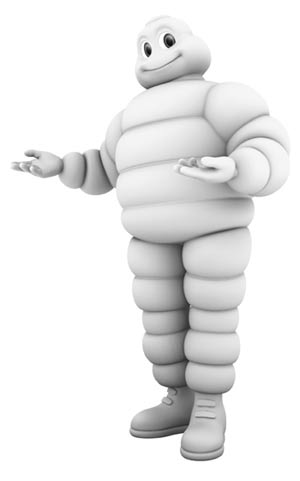 *All rights belong to Michelin
*All rights belong to Michelin
I speak the truth even though I have no picture to prove it. I was very disappointed to say the least. In sort of a fury, I took the damn dress off, rolled it in a ball, threw it on my work table in my sewing room and poured myself a glass of wine and sat down to watch a show on Netflix. By the second glass of wine I had decided that I could make some sort of a top out of my “little black flop”!
After a week of stewing, I got to thinking… maybe I can still make the dress… I just had to let go of the idea of having those cool drapes across the bust. AND, the dress is shown on the pattern envelope without drapes. Why didn’t I notice that before! Anyways, did I mention that the bust of the dress does not drop as sharp in a V in the front as on the pattern envelope. My only assumption is that the model has big… Nevermind!
It took me a day to remove all the stitching. Try pulling black thread stitches out of black stretchy knit fabric! Thank goodness for my Ottlite Magnifier Lamp I got at JoAnn Fabric Store. Mind you, I did not drink wine while doing this! I ended up with only a few little holes (with wine I’m pretty sure there would have been more). Also, because I’m still learning to fit when sewing knits, fortunately the dress was a little big so my new seams would land beyond them! Yeah! Finally I felt like I was winning this battle!
The next day, I turned on my sewing machine, sat down and once again began to create a little black wiggle dress. I didn’t tear apart the lining, just left it the size that it was. After a few calculations I figured out that I needed to make the bust and shoulders a little smaller so I made adjustments on the pattern pieces and then laid them over the dress front and back pieces and removed the extra fabric. Fortunately I still had a little fabric left as well as those damn drapes so I was able to cut out a new yoke front and back neck facing pieces. Now I was ready to start sewing!
The pattern instructions say to pin a strip of seam binding to the side seam allowances, one for each side, after marking them to match notches on the front and back fabric pieces. They ensure that the gathers in the front and back are equal in length and match. Yes, it sounds confusing and yes, it is sort of a pain, but if you make this dress, when you get to this step, you’ll understand. Besides acting as guides, these strips are a definite plus for holding all the gathers and making the seam more sturdy and stable. I used a good quality black twill and was happy with the results.
Here is what the side gathers look like on the inside.
As I mentioned earlier, the lining I left intact just as it originally was. Here’s how it looks on the inside in the bodice area. Tricot catches all the light so it looks like it’s glowing!
The outside neck, like I mentioned earlier, is not a plunge like it looks on the pattern envelope.
The shoulders of the sleeves are gathered and a little poofy. I wasn’t sure if I would like it but when I wore it to a Wine & Cheese pairing party recently, they were one of the features of the dress that I got compliments on so I decided they were totally cool!
Sleeves on most garments tend to be a bit long for my arms so I reduced the length 1″ inch. Shouldn’t have done that! I ended up with sleeves shorter than I expected! However, even if I hadn’t shortened them, I wouldn’t have got the length I wanted which was long! So… I made cuffs!
So here it is!
See! The fabric is thick enough to pull off the derriere look!
This dress is very comfortable to wear so I am really happy that I didn’t give up and make a top out of it! Once again, I’ve had another lesson in patience!
Take care and have a wonderful Thanksgiving! Until next post…
Salut! Jessica
Read MoreTricked So No Treat Part 1
Why, you ask, is the above picture a snapshot of an empty mail box? Well there is an answer! The short version… ordered 8 yards of trim for the Halloween costume I was making to share with you in this post but it never came! Boo-Boos do happen (pun intended!) … have made at least a few of my own, so rather than blame the business I ordered the trim from, I decided to not spend energy on ranting about the fact that I don’t have a finished costume for this article one day before the big “Trick Or Treat” event and instead, share what I have got done so far in a Part 1 with a Part 2 to follow. And what will I wear for the party tomorrow? Well… I finally have a reason to justify the dozens of costumes I have, stored in boxes and containers and stuffed everywhere in my house…they are my back up plan for when something like this happens!
**Note to self: You just ranted!
Okay, moving right along. So… the costume I’ve been working on is an historical period garment. The pattern is Butterick 4093 that was available in 2003. Unfortunately being that it was 11 years ago, this pattern is no longer available.
I don’t remember what my thoughts were when I bought the pattern, maybe I just thought it was pretty, but here in 2014 with Downton Abbey being so popular, it seemed like the time to break it out.
For my fabric, I chose Chiffon for the gown. It is the perfect texture and color for the tunic that fits over it made from Crepe Back Satin but unfortunately because of it’s thinness and low neck-line of the tunic, an additional under layer is gonna be needed! This was a total “OH CRAP” moment. I never thought about it when choosing my fabric.
I worked out a system for cutting my pieces out of the chiffon. I laid a cutting board that you can buy at Jo-Ann Fabrics on the floor and then pinned one grainline side edge onto the cutting board. I used lots of pins spaced about 2 inches apart. I next gently pulled the fabric to pull out the wrinkles and make it smooth across to the opposite side leaving the remaining fabric lying off the board and on the floor. Then I pinned alternately, the selvage along the end and the fabric laying over the opposite edge of the cutting board, continuously smoothing and working with the grainline so my finished gown would hang properly when wearing it. Because this fabric is very thin and light, I think it’s really important to pay attention to what it does when you are pulling on it. It’s not hard, but you do have to be patient!
Cutting my pieces from the Crepe Back Satin went a little quicker because the fabric is heavier though it was slippery so I used my pinning technique that I used for the chiffon. I did get bold and cut my pieces on the fold! Risky but it worked out! Below is a picture of the fabric.
There is a third piece to this costume, a girdle, and for it I chose a gold Brocade embroidered with colored thread that looked perfect next to my Chiffon and Crepe Back Satin.
Here is a mix-up of the three. See… they look good together!
Hey, I’m stretching this out so this posting has something interesting in it. It’s not my fault!
The gown I made first because I thought it would be the biggest challenge due to the sheerness of the fabric. Surprisingly it actually went quite well. I did make my own bias tape and used the same Chiffon for it.
The sleeves are sleeves, but not sleeves! They are connected for about two inches down past the point at the end of the shoulder, but from there to the hem they are open.
The tunic I found to be a little more of a challenge than the gown. It was like sewing… uh.. I hate to say it… “snot” because it sounds gross but it’s the best analogy! Once again, patience was my best tool of defense! Believe it or not, I changed absolutely nothing and followed the pattern instructions exactly when I made the tunic! And I might add that it went very smoothly.
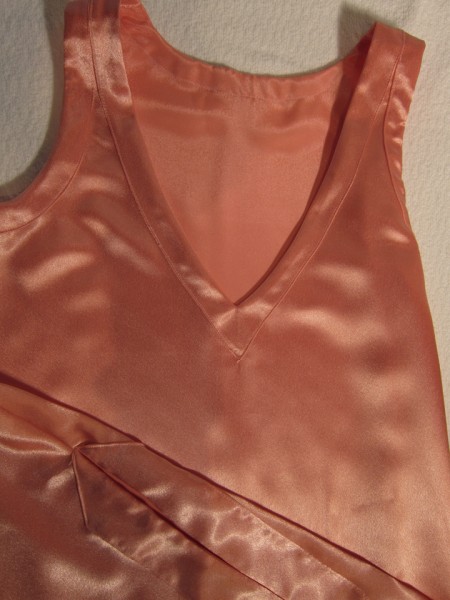 The two folds towards the bottom of the picture looking like a “V” pointing dowards are actually one of the sides. I just folded it upwards into the picture.
The two folds towards the bottom of the picture looking like a “V” pointing dowards are actually one of the sides. I just folded it upwards into the picture.
When I finished sewing the tunic, this is when the production line shut down. I needed trim, 8 yards of it to be exact, and I faithfully checked my mailbox every day thinking that it would be there because I ordered it!. Several of those days I even made my son go check the mail for me in rain that was pouring down in buckets… (well I wasn’t going out there!). But alas, no trim. While stuck in stand-by, waiting for the missing package, I figured it was the perfect time to finish the girdle. Hey – that’s what it’s called! There is really nothing to it. There is a front panel and 2 back panels that fasten in the middle of the back, and then it is faced to enclose the seams. This part of the costume I have been chipping away at for a while because I have been sewing beading on it. More specifically, pearls, bugle beads, sequins, and glass beads as well as gluing on Swarovski crystals. It has been a work in progress but it is done.
It is actually very sparkly and bling-y but I was having trouble with my lighting today so it is what it is!
Good news! My trim has been shipped so when it arrives and I get it sewn onto my tunic, my ensemble will be ready to share! Until then, have a fun Halloween, stay safe, stay warm and here in Oregon, stay dry!
Salut! Jessica
Read MoreDKNY Vogue 1160 as Little Black Dress
It looks like summer is about over here in Oregon. How do we know this… it’s raining! And when it starts, it seems like it never stops. But the good news… this is when I find myself sitting at my sewing machine quite regularly, forgetting the cold wet dreary weather outside and focusing on what I can create to wear that will pick-up my mood through the winter months. I think bears have it made! They just hunker-down in a cave and sleep until the sun comes back out. However, it’s hard for me to to picture myself hunkering down in a cave… well I do love to sleep, but I’m a social creature who loves to spend time with family and friends, love my wine drinking activities and don’t want to miss out on any fun stuff! Hmm… Better re-think the hibernation business. One thing for sure though, I will definitely continue to cling to my Little Black Dress mode because the LBD makes me think of the warm summer evenings, sipping wine or champagne, laughing, eating and dancing the night away!
This is where the sound of a needle dragging across a vinyl record is heard…..and a voice in the distance crying out “BACK to EARTH JESS! Ahem…. So — the point to my ramblings is that I am ready to share my new LBD I made using the DKNY Vogue 1160 pattern. I had fun making it! Well… most of it was fun… except for all the “n-a-r-r-0-w” hems… especially on the slip that is cut on the bias. But this too I eventually conquered and I think will not be as big a deal with future projects. Most of the seams are “french seams” so plan to use lots of thread!
Recommended fabrics are Chiffon or Georgette for the dress and Silk Twill or Charmeuse for the slip. Definitely jumped ship at this point. For the dress, I used a rather stretchy mesh. Why?! Well because it’s polka dots, it’s sheer enough to see the slip underneath, it’s black… and because it’s just plain cool!
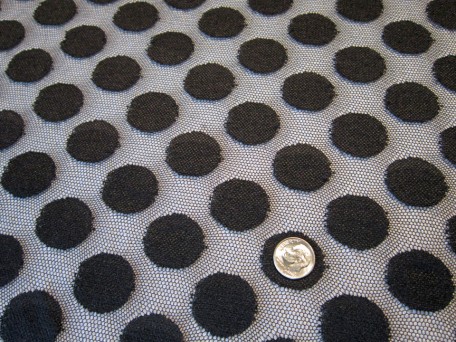 The dots are not much larger than a dime!
The dots are not much larger than a dime!
The sleeves are an interesting design, but unfortunately my picture could not really capture what’s going on. Nonetheless, here it is.
The bodice midriff piece is suppose to be lined with the same fabric as the dress, but I chose to use China Silk because I didn’t want all the seams to show.
There is a side zipper which fortunately isn’t real long, 7 ” inches to be exact! Kind of a pain because of the fabric I used.
So I was zipping along, making good progress, though all the while thinking… there’s a LOT of skirt to hem… in a “n-a-r-r-0-w” hem. Don’t get me wrong, the skirt is really neat. It’s a little shorter in the front than the back… but there is a lot of gathered fabric that creates it! I never measured it, didn’t want to know! When I finally made it to the hemming step, I had concluded there was only one way to take on this bad girl! I was gonna do a “rolled” hem! Do I know how to do this. NO! Not really! But one of my ASG (American Sewing Guild) friends, Suzanne, shared a most awesome link with our group that was gonna save my butt!
What’s a hand sewn rolled hem? Watch this video and you will see! This is a gem done by Ami Simms, who is a quilter, teacher, author and fellow blogger, who has most graciously allowed me to share it with you.
Pretty nifty huh! And here is a picture of my “rolled” hem. I know you can’t really see the stitching, but truthfully, I couldn’t either! That’s mesh for you!
Yes, I did use Silk Charmeuse for the slip and overall, it went smoothly. Admittedly there was a wee bit of hair pulling but I persevered!
The straps which I call “spaghetti” straps (cuz that’s what I learned growing up) were really really really easy to do with Charmeuse! This fabric has lots of “slippage capability”! Yes, it slips when cutting it, it slips when sewing it, it slips when “n-a-r-r-0-w” hemming it! But don’t be afraid. We must dive into pits of horror to learn that we CAN get out! And it makes us better sewers!
I contemplated not doing a photo shoot with me as the model and using Phoebe instead. She’s so easy to work with. Just hangs around and doesn’t talk back! Phoebe is my full bodied dress form for anyone wondering what in the world I’m talking about. I sometimes wonder if I come across as narcissistic, with all the pictures of myself. Truly I’m not, I am actually quite camera shy and so it usually takes a glass of wine to put my mind at ease. Okay… you figured me out. I guess photo shoots are wine drinking opportunities! Well, on with the show!
Moi in my LBD!
See how the back is a little longer than the front.
The back of course!
Cheers to another photo shoot!
Right around the corner is one of my favorite times of year… Halloween! To everyone sewing costume(s)… I raise my glass to you. This is when the artist in each of us gets to really shine! I am presently working on mine like a mad fool in order to get it done pre-Halloween and posted to share with you. Be back soon!
Salut! Jessica
Read MoreButterick 5919 with Petticoat
The photo above is me during a hockey game I was playing in last week. Mind you, at the moment it was taken, I wasn’t sure if I was going to skate off the ice when the game was over, or have to be carried off on a stretcher from total exhaustion. I took a break from hockey for a few months so being in game shape I am not! My options are to either adjust or bail and since I’m not a quitter, somehow I will endure!
So what’s the point of this image? Please note the orange jersey over the 10 lbs. of gear. First of all, the orange is a horrid shade, is not my color and I did not choose it! My apologies to whom it may concern. And good-by to any idea that I might be a female! Feeling like I look pretty? NOT! After an hour and half on the ice sweating profusely with a bunch of guys also doing the same, when I leave the smelly locker room, I mentally return to my pink fluffy unicorns and glitter mind palace, envisioning myself wearing a dress! Truly, I do love to play hockey but this is one reason why I like to sew dresses for myself. So that being said, now I want to share with you a really cute one that I’ve finally finished.
I first saw it last year on a Burda Style web page and no where could I find who the pattern maker was. Then on a pattern shopping day this last spring, you know, when you can buy 5 for $5.00, there it was, Butterick 5919 in their book and I knew I had to make it. It looks a little retro with the boat-neck and large peter pan type collar with a poofy skirt. Being short like I am, it’s maybe not the best style for me to wear but… I really liked it, it was pretty and so I was making it!
This was a design that definitely required a muslin. There was no way I was going to start chopping on the very beautiful fine cotton that I discovered at Mill Ends nor the silk that I chose to line it with until I did a practice run. Below is a picture of the fabric. I choose it from a selection the fabric store called the Downton Abbey collection. Get this… my choice of print was one of those thought characteristic of “granny” played by Maggie Smith. Hmm… I’m not talking anymore about this!
I ended up making 3 muslins of just the bodice before I was ready to make the dress. Why three? Well, it started off the way it should. I made the usual fitting adjustments and discovered when putting it on that the gathered bustline (see in picture below) didn’t feel right nor look right on me. It felt way too high! At least that was my opinion and that’s my story and I’m sticking to it!
Just to clarify, I have made so many dresses for myself that much of the time I don’t make a complete muslin because I have the feel for knowing what I need in circumference for my waist and hips and find it easy to adjust the bodice to those measurements. Plus, it’s less work! However, if I was sewing something really special, I would make a full muslin.
So Anyhoos, I’m pretty sure I was having a “derp” moment when I started making my 2nd muslin. I tweaked and adjusted the pattern pieces in order to drop the bustline and that’s when it happened! Thank goodness it was a muslin. I got to looking at my 2nd set of pattern pieces that I traced from the originals which included my new pattern changes and that’s when I saw the boo boos! Feeling totally frustrated, I quit working on the dress for several weeks… or more! When I once again felt the wind back in my sails, I broke out the tracing paper and then created muslin number three. Yeah! this time it worked and feeling happy and pleased, I was ready to make my dress!
Since I’ve already shared with you the “Happy” song by Pharrell Williams to express my happiness, I decided this time I would share this lovely postcard.
https://www.flickr.com/photos/jok22
It was fun sewing this dress because it had such a neat design. I did discover however that when sewing the bodice to the bodice lining, sewing the armholes first before the neck, opposite of the pattern instructions, made it easier to check that the sleeves didn’t need any fixing! For me, one sleeve was error free and the other I needed to fix a tiny imperfection that I didn’t like. This would have been harder to do if the neck had already been sewn. If you make this dress, you will totally understand what I’m talking about! Here is a view of the collar and one sleeve on the finished bodice.
The upper back opening at the neckline closes with a single button and thread loop. An afterthought… maybe an elastic loop?
Of course, the back has the center cut-out which is why I thought this design was so cool!
This is the front of the bodice. You can see the collar but unfortunately the gathers at the bustline are not easily seen due to the type of print on the fabric.
It is printed on the Butterick 5919 pattern envelope that the model in the picture is wearing a petticoat with the dress. This got me to thinking. I had just bought a McCall’s skirt pattern recently that included a petticoat, option F.
Before making it up, I wasn’t so certain that it was worth the trouble. Gathering petticoat netting! Yuck! It was actually not too bad though. I used black tricot and black petticoat netting and for some pretty, I chose this pink lingerie elastic.
I did discover a minor problem with the construction. The instructions have you sew the seam that connects the gathered netting to the upper section on the inside. I think it should have been on the outside. Why do I know this? Because when I wear it inside out… it doesn’t scratch!
Well, here’s my black petticoat, right-side out for the moment. It’s really not much to look at…
But when I wear it under my dress… it makes a difference!
The back is a lot of why I wanted to make this dress.
This is without the petticoat and there is a difference in how the skirt hangs!
Go Petticoat!
Yes… it’s champagne, not wine! What am I celebrating? Well… I think being alive, feeling pretty, and happy that I get to write about my wacky sewing adventures with you!
Salut! Jessica
Read MoreMy New Dress Form Phoebe
It was “Girl’s Day” this last Friday for me and my daughter. When the time is right and we feel the need, off we go to do whatever we want to do for the day, spending time together talking, sharing dreams and laughing… a lot! This last Friday ended up being a shopping day for clothing staples and lunch that included a glass of wine for moi! Mind you, shopping for clothes is not a simple undertaking. When I look at a garment, not only do I look at the design but I also examine the quality of the fabric, the stitching, and query how well it will hold up with wearing. Even my daughter who doesn’t sew, shops according to these guide lines though she also operates under the premise that if she works it right, she can get me to make it for her! If I ever quit sewing, she’s doomed — unless she learns how to sew!
I should say that quitting sewing is the last thing I can imagine doing. For me, creating garments is like needing to breath air! Of course, in order to carry out this life force activity, a number of tools are required that include dress forms. These shapely life-size mannequins really have multiple purposes and the dialogue in discussing them can fill a book! For my post today, rather than doing a lot of explaining of their uses, I decided to keep things simple and introduce you to Phoebee!
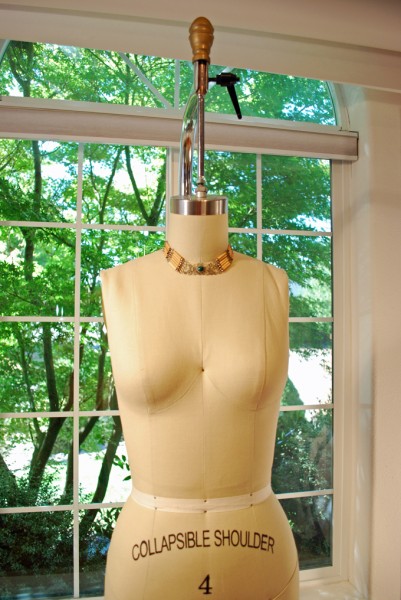 The choker Phoebe is wearing, I purchased from a Huaorani Indian Community in the jungle of Equador, South America.
The choker Phoebe is wearing, I purchased from a Huaorani Indian Community in the jungle of Equador, South America.
Phoebe is a Full Industry Pro Female Roxy Dress Form that I purchased from …. drum roll…. you’ll never believe it… wait for it… Facebook! Yes, I am one of those Facebook socialites and I am not ashamed! Especially because it was FB that brought Phoebe and I together. Long story short, I belong to a fashion trade group on FB and one day last month, her previous owner posted her for-sale on the group site. Her sale price was $250.00 and it wasn’t very far to drive and pick her up. Wow! Now that was a deal I could not pass up! I was on it like flies on poop! I have dreamed of owning my very own Wolfie which I discussed in an earlier post, ‘Wolf Dress Forms’, but given the cost of one of them, it has been just that… a dream. I did some research on the “internets” and discovered that the Roxy Dress Forms are constructed quite similarly to the Wolf, and fortunately for me don’t carry the hefty price tag. As for the sizing, well… Phoebe is a size 4 which fits my daughter perfectly, fits me in the shoulders and bust perfectly, but I will have to add a couple of inches in the waist and hips! Yeah… gravity, babies and age do things to female bodies but let’s not go there!
She of course is full length and hangs from a pole on a heavy cast iron horseshoe base with wheels.
We of course had to do a photoshoot together!
Now I finally have a dress form that is a near fit for me, but I discovered one thing that I really hadn’t given much thought to. Because she hangs, the post above her neck is in the way if I want to test fit for a pull-over-the-head kind of garment. It can be done but the dress form has to first be removed from the hanging apparatus. It’s manageable since the form is not drastically heavy, about 14.8 lbs. to be exact. It’s not often that this will happen so I’m not too worried about it. Besides, the idea for buying this dress form was for it’s true purpose, draping. I have all kinds of ideas that I want to explore, only first I need to purchase some cotton batting and pad out those several inches I mentioned earlier!
Yes, I did make the dress. It is an out-of-print McCall’s pattern, #4444.
This is what the back looks like.
The live back side now including Phoeb’s!
We are having a really warm summer this year in Oregon. The temperatures are heading back into the 90’s for this coming week. I will appreciatively and gracefully sweat through it since the rain season is just around the corner which I’m not quite ready for. Until then, more sunshine, more summer dresses to wear, more Chardonnay to drink and more time to get to know Phoebe before we begin our draping adventure!
Until next post…
Salut! Jessica
Read MoreSimplicity 2362 LBD Part 2
Waldport, Oregon
Okay… I’m back and ready to share with you my LBD (little black dress)! As to where I’ve been… well, the last few weeks have been pretty crazy. It’s summertime and that means spending time with family and friends, and going on adventures! Some of the highlights… Portland Blues Festival, a winery concert, and last weekend, a coast trip, hence the above picture taken at a beach in Waldport Oregon. What’s really cool is that we’re only about half way through summer, which means there’s still more time to play before the sun and its warmth leave us!
Believe it or not, amid all this fun, I have actually been sewing too! It’s been difficult at times though because my machine and work area are upstairs and on days when we have hit the high 90’s, it’s been too hot to sew! No, I don’t have an air conditioner. Maybe I’m nuts, but I like the windows open, rain or shine… or heat! And I like cheap electric bills! The worst is only about three weeks out of the year and so why not bond with mother nature a bit, even if it gets a little wickedly hot! I’ve been wanting to sew some of the Up-Coming Projects posted here on Sewlikeinparis so I can share them with you but alas… I’m kind of stuck in “little black dress” mode so I’ve decided to change things up a bit! This means… get ready to see a bit more black!
As for my LBD made from Simplicity 2362…
I purchased some black China silk from Mill Ends in Beaverton, Oregon, like I said I was going to do. Making and sewing in the lining was simple. I used the same skirt pattern pieces. Because the bodice was already attached to the main skirt, I just hand sewed the lining to the inside of the skirt, wrong side to wrong side, stitching in the seam allowance along side the actual seam. Then I folded the center back seam allowances under along each side of the zipper tape and sewed them in place.
Here is the inside…
The black isn’t as dark as it really is, but I decided not to change the lighting because it’s easier to see the details.
Along the zipper.
This is a close-up of the front of the bodice on the outside. I sewed a rhinestone button on each pleat. When I was preparing the pictures for this post, I noticed a lot of fuzz or lint! My excuse… I was out of lint roller paper which I like to use but I have more now!
The straps are pleated on both the front and back ends rather than gathered. Yes… I didn’t follow instructions but I’m notorious for this!
This is a close-up of the bodice though this picture came out more like its true color.
So now I’m ready for an evening out!
The back of course… hmm… got some weird tan lines going!
Back around…
The front again…with pockets!
And without pockets!
That’s a wrap-up for the 1st “little black dress”. I have already purchased the fabric for two more and the work is in progress. Also ready to share with you another one that is in the final stages of hemming. Lots to come! However… Right now it’s time for a glass of wine!… or two!
Salute! Jessica
Read MoreSimplicity 2362 LBD with Shoes I Love
Dresses, and more recently skirts, are my favorite things to make because I really like wearing them, especially in the spring and summer months. They are comfortable (most of the time) and when I wear them, I feel pretty… even with no make-up and hair from hell! But, dresses and skirts don’t stand well alone… they must be accessorized with shoes! Me and my girls feel shoes make or break the outfit! We try to hold onto comfort, but if going to an event that involves mostly sitting, comfort often goes out the window and instead we wear what we term “fashion shoes“.
Recently I went on the hunt for a pair of black strappy heels which my wardrobe is lacking. I was hoping to find comfortable ones that still looked like “fashion shoes“. I started with wandering through the pages of internet shoe shops looking for my black jewels but there were none to be found. Then, on a brief trip to my local Macy’s, hence the heading picture above, I stumbled onto my dream shoes. Why I didn’t see them on-line is beyond me but now that I have a style name, up they pop on a brief search!
They are Anne Klein’s Akopolize, 3″ heel (comfortable) yet still simple gorgeous high heels! On the discount rack no less! It was a total hands down win in my book and I can’t wait to wear them with a few of my new dresses that are in the works. One that I’m just finishing is made from Simplicity 2362.
The instructions are not too difficult though trying to match up dots in the pocket areas and bodice to bodice seams may make one want to throw things… only temporarily! It’s a pretty cool design and there are a number of variations that make it a jewel to have. My plan for its first test run was a “little black dress” My inspiration for an LBD (little black dress) started with a magazine my kids gave me for Mother’s Day, Designer Techniques, from The best of threads Collector’s Edition.
There is an article in it by Susan Khalje titled “Make your own Little Black Dress from Start to Finish” that includes step-by-step couture details. It was after reading this article, that I decided to make myself an LBD and incorporate some couture techniques while I was at it! Admittedly, there was another reason for wanting to do this… I realized after rummaging through my closet several weeks ago, that I didn’t have any LBD’s! I do have several long black evening gowns and a casual yet dressy pair of flared pants with a matching sleeveless top made from black cotton lycra but no LBD’s! Can you believe it! Not one! Truthfully, I kind of feel embarrassed. I am going to change that though. I have plans for more LBD’s in the near future so be prepared to see a bit of black!
As to why I would want to bother with all the extra work of couture methods… well, because I’m worth it! And an added benefit is that many of the techniques really help to improve sewing skills. Plus you get the pleasure of creating with beautiful fabrics, especially silk. I absolutely love working with silk. Yeah, it can be a pain in the butt to cut your garment pieces out of but I love the way it feels and the ruffling sound it makes when I handle it.
So on with my LBD. The fabric of course is black though unfortunately not silk (the couture idea came after purchasing the black fabric) I didn’t bother taking a picture of the fabric because… well… it’s black! The texture was the reason for my choice. Let me explain… when I think of a black dress, I envision a tuxedo — more specifically, a man wearing one. There is a breathtaking elegance that resonates from the wearer which can pull in eyes from every direction. The white shirt looks crisp, the bow tie perfectly held in place and the black coat and pants so complimenting. So when I was choosing my fabric, I kept these thoughts in my mind and settled for a black sateen which has a subtle diamond shape pattern in it, is a deep black (is there such a thing?), and has a small bit of stretch yet holds it shape.
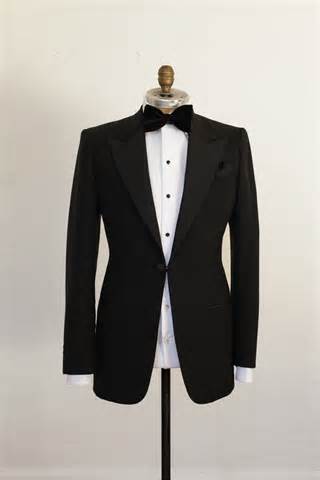 http://davidreevesbespoke.wordpress.com/2011/05/16/tuxedodinner-suit-special/
http://davidreevesbespoke.wordpress.com/2011/05/16/tuxedodinner-suit-special/
To start the process, a muslin was in order. I usually always do a muslin. Yes, I know it’s extra work but so worth it! There’s nothing worse than sewing your heart out and dreaming of wearing the garment when it’s finished and then discovering that it doesn’t fit properly and likely will never get worn! Been there done that! For this dress, I only made one muslin and it was just the bodice since the skirt I felt confident wouldn’t be a problem. This is because I have made so many dresses that I pretty much know how much circumference I need in the waist and hip area but if I was sewing for someone else, I would have made the whole enchilada! Here is the front of it.
Notice that the pleats are not matching up. I didn’t even think about matching pleats when I sewed it, and then when taking pictures, they got my attention. This is an example of a good reason for a muslin. I was now aware to pay more attention when sewing my actual bodice.
For interfacing, I used dark brown silk organza. I chose it for three reasons. 1) It was silk organza, 2) the color brown wouldn’t interfere with my black fashion fabric, and 3) the brown was 60″ wide at $15.99 a yard whereas the black was only 44″ wide and $15.99 a yard. It was a no brainer!
The pattern instructions have you interface the lining, probably because the pleats in the bodice front could get to bulky, but I wanted those pleats to hold their shape, remember the bow tie and white shirt crispness… so I hand-basted my silk organza interfacing pieces to the actual bodice pieces.
I applied interfacing to all my other bodice pieces in the same way, using the silk organza. Below is a picture of the front bodice side pieces. I didn’t take a picture of the back bodice pieces because I think you’ve got the idea! 🙂
Okay, so this is where I have to confess… I didn’t follow the pattern instructions for assembling the dress. Yeah… what’s new! I’m such a rule breaker! I did start off in the right direction. I sewed the bodice front pieces together… but the back bodice pieces I set aside. I did attach the straps next only there is an important point here… with “visions of tuxedos dancing in my head”, I had decided to create pleats rather than gathers at the ends of the straps. I planned for this when cutting them out of my fabric. Lastly, I then applied the front bodice lining, not silk, but rather a $10.99 a yard beautiful drapey perfect shade of black lining fabric. I did not understitch. I decided to do the understitching after I sewed the front and back bodice together.
With the front bodice finished, I was now ready to tackle the assembly of the pockets #7 to the front yoke #8 pattern piece and then attach this to the skirt front. Keeping couture techniques in mind, I first sewed the pockets to the pocket sides in french seams. I did this by matching the left and right pockets to the front yokes, wrong side to wrong side. I sewed a 3/8″ inch seam, cut off all but 1/8″ inch, pressed the seams flat, then turned each right side in and sewed a 1/4″ inch seam as far as possible to the dot that matches up to the skirt front dot. It’s a little tricky but the finish is worth it. I then finished the upper pocket/skirt seam allowances using my own method which I explain in more detail shortly. The underside seam allowance of each pocket that doesn’t show when it’s folded towards the front, I trimmed with pinking shears. This fabric really attracts lint. It doesn’t look especially black in the picture below.
Now I was ready to finish the edges of the side seam allowances. I do have a serger and yes, I have serged many an edge but this is my couture LBD so we can’t have that! I have several books on couture that describe the technique for finishing seam allowances but because I have never really done it, I was a bit confused. So I do what I always do when I am not sure, I wing it! With that, I cut 1 and 1/4″ inch strips of black china silk for this task. I use the real china silk, not the polyester. Silk chiffon is the fabric of choice for doing this as mentioned in my books, but I didn’t have any of that on hand so I decided the china silk would suffice. I first sewed the strips to the outside edge of the seam allowance, raw edge to raw edge in a 3/8″ inch seam.
Next, I pressed the seam flat, then turned it out and pressed again.
Then I turned the skirt over and turned up the edge of the silk strip to the edge of the skirt seam allowance edge, creating a fold, and then pressed again. It’s hard to see the fold in this picture.
Lastly, I folded the strip one more time, up and over the edges, holding it firmly in place and at the same time stitching a 1/4″ inch seam.
As you can see, my work looks a little lacking. The seam should follow along the inner edge of the strip, and it doesn’t, even though I think I sewed a pretty even stitch. I must not have been exactly accurate when first sewing my strips on. Also, I may not have cut my 1 1/4′ inch strips with good precision either. At least I now have an idea as to how finishing seams work, so I will go back and read the instructions again… it may make more sense now. It certainly seems anal retentive to be so fussy about seam allowances, but in the couture world, perfection seems to be one of the reasons for why a garment is so expensive. As to my efforts… well, they will improve with practice but what I’ve done here is acceptable and I can live with it and feel good about it, so end of story!
After finishing the raw edges but without disrupting the 5/8″ inch seam allowance, I was then ready to assemble! I first attached the front bodice to the skirt front.
Assembling the back of the dress started with first sewing the 2 bodice backs to the 2 skirt backs but I did not sew the center back seam. Instead, I finished the edges of the seam allowances like I explained earlier. Now I was ready to install the zipper. I am an invisible zipper addict, so this was my closure choice. Regardless of the kind of zipper, they are easy to install when you are working with flat pieces which is why I chose to assemble the dress the way I did. After the operation zipper closure installation process was completed (whew, that’s a hefty bunch of words!), I went ahead and sewed the center back seam.
Now I’ can finally attach the front and back of the dress together. Here are a few pictures to show you how I did it.
Step 1: With the back side face up and the front side face down (right side to right side), laying on my sewing table by my sewing machine, I was ready to baste the straps to the top of the back bodice pieces.
Step 2: Before I sewed the back bodice facings permanently on, I first basted the sides and tried on my dress. Two things I discovered were: The straps needed a bit of adjusting, and I wanted a little closer fit in the bodice. Both of these issues were easy peasey to fix! After removing the basting stitches from the sides, I laid the two parts back on my sewing table like I did before, adjusted the straps and then basted them in place again. Now I was ready to sew on the facings.
Step 3: Next were the side seams. I wanted to tighten the bodice up a smidge so instead of 5/8″ seams, I sewed 6/8″ inch (3/4″) seams. It was a little tricky at the bodice level because of the angle at the top of the side seams, but with patience, I got it. Actually, I DID do a bit of swearing… mainly because I couldn’t get the seams of the bodice front and back to match up on one side. Okay, I did a lot of swearing! I sewed a seam starting at the bottom of the lining (top of the picture), continuing on through the bodice and down to the bottom of the skirt in a continuous seam.
After pressing all my seams, I was now ready for another try-on. I was happy! It fit perfectly. However, there was this little nagging thought that I just couldn’t shake. What about a skirt lining. The pattern doesn’t call for it but… but… I am the queen of lining! How can I not line? And lining feels so soft against the skin, especially if it’s silk… or Bemberg lining fabric… Bemberg would be nice. Of course, this meant another delay getting this post posted! Hmmm……. well crap… sorry to do this but I can’t help myself… I am going to have to post this in two parts. I will be back really soon! Right now it’s time to go to the fabric store!
Salute! Jessica
Read MoreHockey Officiating Pants Made for Her
Hockey Officiating pants made for her! For my favorite hockey Referee that is!
My daughter and I have been playing hockey for a number of years now. It has been a pretty awesome journey that we’ve shared, but several years ago she decided that just playing the game was not enough. As an official “rink rat” she had found her place in the hockey community and so it was no surprise when she landed herself a job score-keeping hockey games. There were some things to learn, but overall, she discovered that this new job made all kinds of sense if you know the game and she became pretty good at it. However, it wasn’t too long after spending time in her refrigerator box, that she figured out that along with doing this new job, she could also fit in another. So after seminars, tests, and lots of skating, she landed her additional 2nd job as a Referee, known in the hockey community, as a “Zebra”. Why a Zebra? Well, part of their uniform includes a “sweater” and the picture below tells the rest!
Along with this sweater, black pants are worn that are suppose to give the feeling of being suit pants but still accommodating for a physical work-out. They come in various styles based on the manufacturer and designed in different ways to allow for the padding worn underneath. Yes, even hockey referees wear padding. It can really really hurt to get hit by a puck and there are all kinds of other things that can happen too!
The first pair of pants my daughter purchased were an intro brand that served her well after a major re-build operation provided by moi! She wears a size 1 in juniors, and so mens size small hockey officiating pants are humongous on her. That first pair were not too expensive, about $50 dollars and so I tore into the project feeling confident. They turned out fine but after a year of reffing experience, it was time for a pants upgrade. This new pair she paid $170.00 for and of course the mens size small was way way too large! This meant only one thing… It was rebuild time… again! With a deep breath, I picked up my seam ripper and my work began. I should say that I have been working on a muslin for a dress that I’ve posted a picture of under Up and Coming Projects, but fixing these pants was also very important so the dress project got put on hold. I worried at first about what in the world I would share with you but then it occurred to me that fixing these pants to fit my daughter is sewing so why not! Oh, and get ready for some hockey lingo that you will see in italics!
Okay… here are the back of the pants before my seam ripper started “hooking” and “slashing” the back seams out of them. We decided that the stretchy insert looked like a diaper!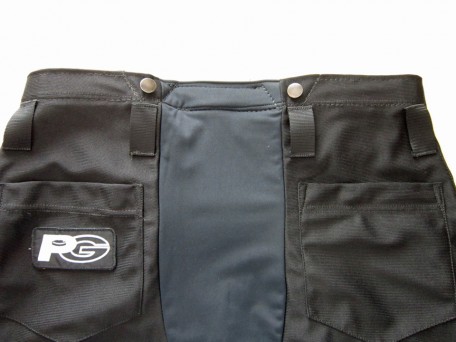
At the top of the pants on the outside, there is a seam that holds a strip of Velcro to the inside waist which padding fastens to. The padding on the back side is important for protecting the tailbone in the event of a fall sometimes caused by “tripping”. 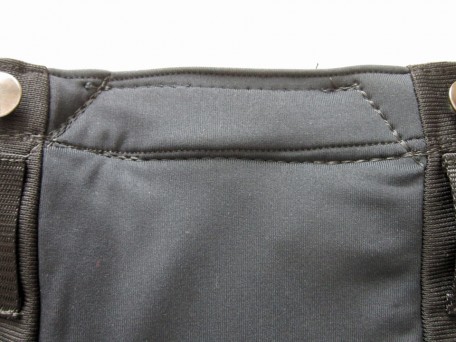
As I began trying to take out this seam, I realized that if I wasn’t careful, I could do a lot of damage and earn myself “major penalties” with my daughter for cosmetically messing up her pants! Fortunately I had my nifty Ottlite Led Magnifier Lamp that I purchased from JoAnn Fabric. It is portable and when I first purchased it, I wasn’t sure if I wasted my money, but given that it has saved MY butt so many times with it’s “assists“, I have now become quite fond of it!
It was a “give and go“, as I attacked this seam from the outside to the inside due to the thickness of the waistband, the Velcro, and the heavy-duty thread.
But eventually I got it removed.
The next step was removing the stretchy panel that was inserted between the two back sides of the pant.
Still a little nervous about tearing apart these expensive pants, I decided to start at the crotch seam first, and then work my way up the two sides.
I discovered that the front and back insert sections were double layers which sort of made me nervous at first, but as I worked through it, it turned out to be no problem at all.
Admittedly, the language I used in this part of the pants re-building process would have landed me in the “sin bin “. I think it took me about an hour to get all the seams out.
This is the insert that was sewn into the back.
At this point it felt like I was ready to do a “break away” and sew up the seat of the pants but as you can see from the picture before the insert picture, the front side of the pants and the inseams of both legs also had inserts. I decided it was the end of the “1st period” of hockey pants re-building and so poured myself a glass of chardonnay and watched Inspector Morse on Netflix with my son. These kind of projects sometimes can confound you temporarily and if you step away for a bit, afterwards, it sometimes just all makes sense!
The next day… Back to the task at hand and fully charged, I knew what I needed to do. Before I could close up the back, I had to take out some of the inseam on each side of the crotch but along with this, I had to figure out how much of the front insert I wanted to remove because it made the crotch length way too long. If you look at the picture below, the open part is the back and the ruler is lying along the left inseam. The remaining inserts sewn into the inseam of each leg meet at the center and are also part of the front.
** A side bar-note for anyone that may be asking the question … **What’s a crotch length? There is a wonderful explanation along with pictures written by a fellow blogger that I would like to share. Her site is A Fashionable Stitch.
A quick definition: The measured distance from the front center waistline, down and through the crotch, continuing to the back center waistline.
These hockey pants had a crotch length of 33 1/2″ inches. The older hockey pants had a crotch length of 32″ and were a little too long. Obviously I was going to have to shorten the crotch length on the new ones but I wasn’t sure at this point exactly how this was going to work so I became the “winger” that I am and decided to take out 10″ inches of inseam on each leg and then sewed up the back of the pants. As you can see in the picture below, I also did a flat-fell seam like you would on jeans because I wanted it really durable. Working around the suspender hooks at the top was a bit of a challenge but with some hand sewing, and the use of a zipper foot, I think I’ve got it pretty good. Sewing back in the Velcro strip at the center top back was also reassuring because it extends several inches on both back sides and anchors the two sides together.
Being well into the “2nd period” and feeling strong, I pushed on to re-assess how to reduce the crotch length. I re-measured the old hockey pants, breaking down the measurements to front and back, the front being 15″ inches and the back 17″ inches. Then, starting at the front waistline on the new pants, I measured down 15″ inches plus an additional 1/4″ inch for the seam allowance. This distance landed a little ways into the insert. I marked this point with chalk and the marine blue arrow points to it. Notice how much of the insert still remains below my mark!
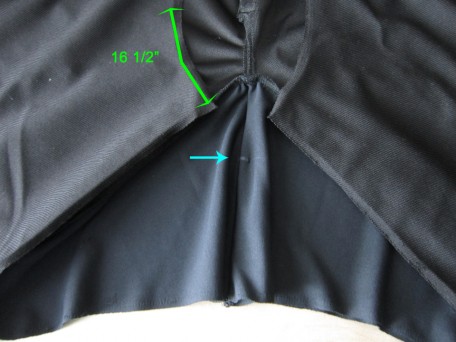
Oops! Took this picture before sewing up the back but it doesn’t change the situation I’m talking about.
Then I measured the back which was now 16 1/2″ inches in total without the insert (see above photo). Hmm… I thought… now what?!! I needed 32″ inches or a little less in total… the front of 15 1/4″ inches plus the back of 16 1/2″ inches equaled a total of 31 3/4″ inches… then if I sewed a 1/4″ inch seam, I would end up with 31 1/4″ inches which was less than 32″ inches… well, then there was only one thing to do… pin the back crotch seam to the marking I placed on the front, reposition and pin the inseams of each leg for the new crotch length, baste them together and have my daughter try them on!
Hot damn and a woo-hoo! They fit! I made a “goal”! I was singing the “Happy” song by Pharrell Williams! I really love that song. So much so that I decided to share it with you so you can feel some happiness too! At the end of this post is a start button and you can check it out! Anyhoos… the rest is history! I stitched a solid seam where the basting was, then serged the selvedges and hemmed the pant legs since they came un-hemmed for custom fitting.
While I was writing this post, I thought it might be fun to share a few more pictures of all the gear that my daughter wears when she’s reffing a game. We’ll start with the under-undergarments. They of course include a sports bra if the ref is a female, some sort of undershorts that hold a cup for protection… yes, girls wear them too because they also need protection… and special wicking socks.
Then there are the “keep you warm” undergarments… our preferred choice is Under Armour frosty tights and long sleeve t-shirt.
Next up is the padding. Besides the padding in the pants included in the picture below, she wears elbow and shin pads.
After donning the under-under garments, the warmth under garments and then all the padding, she’s then ready to put on her padded pants and sweater. But there is still a few necessary items: A certified helmet with visor and cleaning goodies to keep off fog; shin tights to keep her pants from hooking on the back of her skates, an official hockey whistle, ties to make emergency repairs on the nets and white tape for protecting fingers if she has to break up “dancing” hockey players!
Oh! And one more very important item… the hockey skates!
A photoshoot was in order to share with you how the pants look now that they have been custom fit for my daughter.
This is our family “Zebra”!
The pants fit her properly now.
And taking a knee because it’s time out!
For all of you, I also decided to include in this post an interview of my daughter that was done by one of her brothers (one of my sons!) which was a college class film making project filmed in November of 2013. Emjoy!
And here is that most cool song so you can clap along and be happy too!
Take care and hope you had a wonderful Memorial Day weekend. Will be back soon!
Salute! Jessica
Read MoreBlouse in Silk plus Vigoss Skinny Jeans Renewed
My Wisteria is blossoming!
There is so much I want to share and I’m not sure just where to start. I try so hard to not write monster blogs. I’ll do my best to try and keep it minimal. But I’m drinking wine while I do this so I really can’t make any promises! With the absolutely beautiful weather we are having, it seemed such a nice idea to sit on the patio, sip Chardonnay and write to you.
OKay… so… let’s start with the blouse that I designed, drafted and made in some inexpensive fabric that I posted about a while back. I was inspired by a blouse that Emily VanCamp wore on the TV show, Revenge. I can’t believe I’m still watching it… I hate TV because of all the commercials! It’s Netflix’s fault because that’s where I got hooked on it! No rant, promise! Anyways, there were a few discrepancies when it was finished, but overall I was happy with it. After putting it on the back burner for a bit to work on Vogue 8972 dress project, I decided to go back at it so that’s where I’ll dive in.
Here is a picture of it and if you want, you can go here to read more about it..
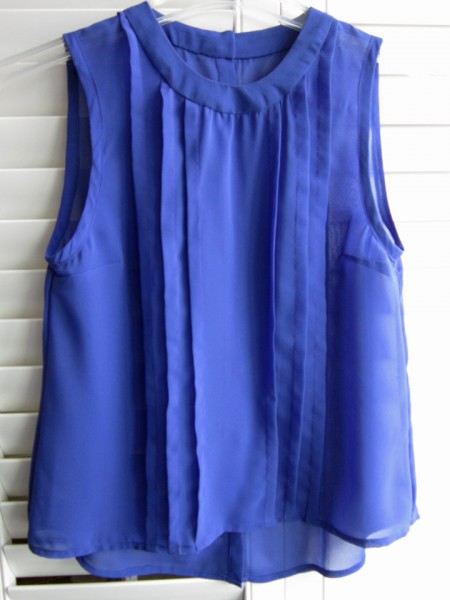 There were a few things that I needed to change.
There were a few things that I needed to change.
1) The front was a little shorter than I wanted. When I extended it in length on my pattern, I also had to redraw the back at the side seams to match the front side seams but that was pretty simple.
2) The pleats were in sort of weird positions when I had to apply the neck yoke so I moved them more towards the side and away from center.
3) Instead of a 1 inch neck yoke, I reduced it to 3/4 inch. Not sure if I like it the way it is now or better when it was an inch wide, but…it’s just a minor detail, nothing to get excited about. (still not super happy with how the yoke lays around the neck but that just may be the way I am sewing it on)
4) The last two changes were lowering the front and back neck lines, 1/4 inch for the front and 1/2 inch for the back.
So this time when I made it up, I used some cream silk Crepe De Chine that I had. I love sewing with silk because it feels so luscious! And it feels so nice to wear, though I did discover that it’s still pretty shear. Will wear a cami under it unless I feel really bold on a night out with the girls! Woo hoo!
Haute Couture fascinates me, so while I was making this top, I decided to pretend I was a famous fashion designer, sewer kind of person (I think the wine is starting to kick in! :P) and have some fun. I used tailor tacking to mark my pleats. It was still a bit of a challenge to get all the folds equal, and running evenly straight from top to bottom but I managed.
I took these pictures to show you what they look like. If you look at the picture on the right, it’s a closer view. For those that aren’t sure how to do this I’ll try to briefly explain.
I insert my sewing needle downward (like I am sewing) about 1/8 alongside the center point (this can be whatever side you want to start at) and then push the needle back up through the center point, then I push the needle back down through the center point again, and bring it back up about 1/8 inch away from the center opposite from where you started. Through this process, from the start when I first pull my thread through, I leave several inches at the end where I started, a big loop at the center and leave several inches at the end where I finished. (see the picture above on the right)
When you have finished, you pull the pattern tissue/paper away. Most of the time the tissue just slips off unless it hangs up at the center point where you stitched in and out. When this is done, you then have to clip the thread that lies between the two sides of cut fabric pieces, leaving equal parts of thread for each side.
So when it was time for me to make my pleats (on the outside), I used these tailor tacks for my guides.
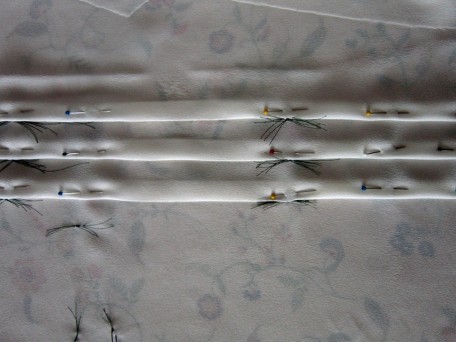 The tacks under the pleats are for the dart.
The tacks under the pleats are for the dart.
A Hong Kong finish on the seams was my first plan but I didn’t have any silk organza on-hand so I ended up using my pinking shears on the seam allowances. I did finish my armholes with bias I cut from my Crepe De Chine and then used my 1/2 inch Daisy Bias Tape maker. Silk looks so smooth so I didn’t want to use any top-stitching in my construction. This meant a lot of hand sewing but hey, I’m a famous designer sewer person and I do like to hand sew so this worked out just fine.
My silk bias tape turned out very nice… thank goodness!
Covered buttons look so elegant so this was also a feature that I wanted to include in my silk blouse. They are not hard to do. You can buy the metal buttons and the tool to make them. Here’s how it works.
1) First, you have to cut out circles of fabric. The package that the buttons come in has a template. They don’t have to be perfect, just large enough to cover the round metal cap. I did a double layer because the Crepe De Chine was too sheer.
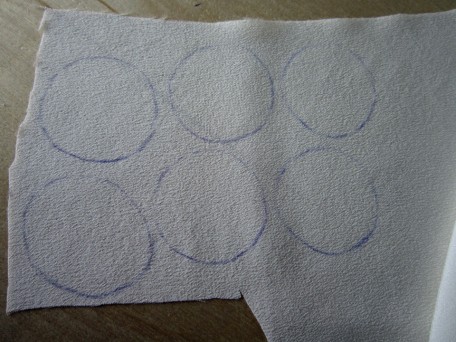 One of my circles looks a little oval. I was not drinking wine at the time!
One of my circles looks a little oval. I was not drinking wine at the time!
2) You gather up all your widgets. The metal button dome and matching back, the blue pusher and white mold tools that you can purchase in a package from most sewing stores including JoAnn Fabric. My sewing machine fuzz remover is my tucking weapon! You’ll see in a minute.
I used the #20 which is 1/2 inch.
3) Next – Center the white mold over your fabric. You’ll probably figure out your own technique for doing this. I’m just trying to explain this in steps so bear with me.
4) Now flip it over and place the dome part of the button, top down over the top of the fabric.
5) With the fabric sandwiched between the mold and the button top, now push the metal button top down into the mold.
6) Here is where my fancy fuzz tool comes in. Oh… and my circles of fabric are larger than they need to be. Yes, there is a template and I could have cut out the exact size from my fabric but this is where things can go bad. The exact template size j-u-s-t fits and if the circles aren’t perfect and if everything is not centered, then it’s a bomb! I purposefully cut the circles larger to see what I could get a way with. With the non-fuzz removing end, I tuck in all the fabric as neatly and smoothly as I can.
7) The button bottom is now placed with the flat end down over the folded fabric.
8) While holding everything in place, you take the blue pusher and place it with the opening over the top of the hook part of the button bottom and then squeeze it and the white mold together.
9) When you are done squeezing, then comes the moment of truth… did it work. This is how it feels to me almost every time!
Voila! Silk covered buttons. If I was really going all out Haute couture,
I would have also covered the button bottoms.
Here are all my finished buttons with several extra if one comes apart or I lose one!
Here they are sewn onto my blouse.
Oh yes, and I also hand bound all my button holes. They are not too bad, but with practice I know I can get better!
The front of the blouse with all the pleats…
Well I think I’ve written a monster, but… it’s all for you! With that I’m going to just keep on going because the next part is the cool part! At least I think it is!
Remember the title of this post that included Vigoss Skinny Jeans Renewed. Well… I purchased a pair last year, several pair in fact. Getting skinny jeans that fit me is tricky business. In order to get them over my thighs, I have to get a slightly larger waist. On one particular occasion, I decided to buy a pair in a waist size that fit so I wouldn’t have to wear a belt. I proudly wore them shopping for the first time a few weeks later and the legs were so too tight that as I walked, they would pull down. It was awful! My coolness that day melted into a day of hell! My first thought when I got home was to hurk them in the garbage. Then I thought, maybe I can fix them to somehow fit me so I tossed them in the “later days” project pile and forgot about them! Then, last month at the American Sewing Guild garment lunch bunch group meeting, one lady who I so adore, Lottie, suggested we do a sewing challenge. Different ideas were tossed around but I think what was most important was that we try to remake, or renew something showing our creative side. I went home and pondered this while digging through the “later days” pile and there they were, those evil skinny jeans! I knew what I was going to do… I was going to make a skirt out of them.
I took out the inseams first. Then I calculated how long I wanted the skirt to be including the hem, then cut off the legs! Served them right! There was now missing fabric in the center of the front and back shaped like triangles. Using pieces of tracing paper that I laid under the edges, I drew these shapes. Then I added an inch on the two sides for my seam allowances. and used them as pattern pieces. After removing the inseams from those evil skinny legs, I played with my pattern pieces until I figured out how I wanted them to look. I decided to stay on the side of caution and only cut out the back side first because it was the larger section and I wanted room for error. It took several tries on both sides until I got the fit I wanted but it wasn’t much trouble. I think the hardest part was sewing in the tip of the triangle on the top because I was sewing through the felled seam on the jeans. It’s all experimental so you just have to go with the flow.
Here is my new skirt on the inside and the template.
On the outside. I top-stitched along the two sides of the triangle at 1/4 inch.
Close-up of the V
And the back on the inside…
And on the outside…
Well, there it is! My very own silk blouse and newly invented Vigoss skirt! It took me a trip around Africa to explain it all but there are so many things that I wanted to share with you and by golly I did it! Take care and will be back soon!
Salute! Jessica
Read More
Vogue 8972 Out in Yellow Daisies
All the spring showers we’ve been having are destroying the only flowers
I’ve got to plant so far this year.
We’ve had oodles and oodles of rain in the last few weeks. It can get a little old after a while, but on a positive note, this means lots of beautiful flowers for summer… provided they survive! Rain, however, has really been the least of my worries. I must of jinxed myself or something! I should have known better than to say “look out 2014, here I come”! It seems like it’s been one thing after another. The latest attack came about three weeks ago when I came down with a creeping crud that has made me sicker than I have felt in a number of years! Well… on the bright side, the sun is suppose to shine all this week… so maybe everything is going to start coming up daisies? My fingers are crossed and since we are talking about daisies, I would like to share with you my latest sewing project(s).
Yep, I’ve somehow managed to get some sewing time in during this miserable plague, in between the fevers, the fiery sore throat and major coughing fits. I’m probably not a trooper, but rather an obsessed nut case when it comes to sewing! Fortunately I was stocked up on sewing supplies I needed since I had visited my local JoAnn fabric store just before this damn crap virus hit me! On that particular day, it was pouring down raining, as usual but it felt like the sun had started shining when I stumbled upon this fabric… it was beautiful white daisies on a background of sunny yellow, reversible no less and I knew that I just had to have it.
The daisies are about 1 1/4 inches in size.
The really cool thing though was that this fabric looked like maybe it was what was used to make this Vogue 8972 dress.
There are various options in making this dress. Princess seam sheath style or flared style, no sleeves, little sleeves or 3/4 sleeves and then there is a contrast yoke.
I loved the sheath style shown on the envelope but I’ve always had a fondness for flare because they are so comfortable and allow easy sitting! I consulted my fashionista assistant, my daughter of course, and after much discussion, I decided to make dress B (sheath style) and dress D/E (flared with contrast). And… since my sunshine daisy fabric was reversible, I would make both dresses out of it! This meant another fabric run to Jo Ann’s and fortunately my son, who grew up with a sewing mother, had no fear with doing this favor for me, especially given that I was quarantined!
The pattern instructions are very easy to follow and the design made assembling it quite easy. Admittedly though, I did swear a few times when putting in the little sleeves. Trying to match things up was a bit tricky but eventually I had it under control.
Putting the bodice together is a breeze. There is the front with left and right side fronts that are then sewn to a yoke. The pictures below are dress B on the inside.
The back is attached to a yoke like the front, only there are left and right sides, later connected by a zipper. The princess seam skirt attaches to the lower edge of the front and back yokes. All the seams, except for the back and sides, are pressed towards center and then edge-stitched on the outside along the front and back seams.
A fabulous technique incorporated into this Vogue pattern is that in the assembling process, you are instructed to install the zipper before sewing the back to the front. In this way, the back section gets to remain flat while you are sewing in the zipper. This is a very important thing in any sewing project you do… that is, being able to keep whatever pieces you are sewing, flat in the process. And of course it also helps if you are working on a flat surface rather than letting the fabric hang over the arm of the sewing machine. Hence, sewing machine tables, or acrylic sewing machine extensions like the one I have.
View A
ViewB
There are little legs under the acrylic extension that can be adjusted so that the table can be aligned to the arm of the sewing machine. As you can see in the pictures above, I store various tools that I can quickly grab when I’m sewing. There is a table, a computer table in fact, to the left side of my acrylic extension, creating a continuous flat surface.
I had mentioned earlier that the sleeves challenged me a bit, but this was during the insetting of them. Before doing this, things went super. You first have to make a narrow hem along the bottom of the sleeves. I have developed my own tried and true method for a narrow hem and though it uses extra thread, I think it’s worth it because I avoid headaches later.
The pattern instructions call for a 5/8 inch narrow hem so
1) I basted a 5/8 inch seam along the bottom of the sleeve.
2) Then pressed up the fabric along the basting. I pressed carefully so my 5/8 inch hem width was equal along the entire edge.
3) Next, I turned under the edge so that it touched the inside crease of the 5/8 inch fold and pinned it in place all along the hem fold. I love pins and I use them a lot!
4) With the side that I pinned, facing up, I stitched a 1/4 inch seam along the edge. *Note: If I am worried about how it will look on the outside, I will baste this first a smidge in from where the actual seam will go, remove the pins, and then turn the piece over to the right side and sew in my 1/4 inch seam along the edge, then remove basting. Extra work, but in the end, it always turns out nice!
Underside and outside of sleeve for Dress B Option …
As I said early, insetting the sleeves tripped me up a little. They have to fit at the usual marked spots on the armholes while also matching the lining that you have already sewn in and understitched via the neck and lower armholes. I think the understitch step was the pest! But, my fabric was also sort of stretchy which may have also attributed to some of the problem. Nonetheless, I weathered the storm and figured it out.
My second dress, option D/E turned out gorgeously lovely and and to think I was worried about it being a little heavy! My beloved sunshine daisy fabric is a denim and I was concerned when I started. But I have to admit, I am almost more partial to it than the option B dress!
So here are the twins!
And here they are with me wearing them.
Introducing Vogue 8972 Dress Option B
The back of the skirt has a slit at the hemline.
Here is a close up of the back so you can see the yoke. I think I was twisting so there is a wrinkle on the left side but it’s just due to the twist! You may note that I use invisible zippers. I really love the finished look!
Then… this is Vogue 8972 Dress Option D/E
The back of course! And there’s that damn twist thing going on again!
A close-up of the yoke in front. I used the underside of the fabric for the main part of this dress but cut the yoke out on the right side. Of course, you might say all of this in reverse because it is… reversible fabric!
And one more cuz !
I’m pretty sure I’m on the mend at this point in time. The doctor said that this goofy stuff hangs on, sometimes for a month! EWWWW… YUCK! Well I’ve about logged in my time and looking forward to this weekend. It’s gonna be a day with the girls… and… Curtis Salgado again! Thinking about wearing one of my new dresses, unless it starts raining in which case it’s my good old stand by… leather! Ooh la la!
Salute! Jessica
Read MoreSpring into Vogue 8817 Top
My “Weeping Cherry” is full of honey bees right now! There is one just below the center.
This is definitely a sign of Spring!
At last it’s officially spring! This means warm weather is coming… hopefully sooner than later. We have had several nice days now with the temps being in the upper 60 ‘s but the rain is back today and the temperature has dropped down to 50°! Oregon is such a tease! This means that for some time yet, many of us Oregonians will continue to wear sweatshirts, hoodies, and sweaters to stay warm. And some of us are still happy with long sleeves and so that is why I decided to sew up a new tunic type top. My daughter thought it was a sweater! She did say it was really cute though and coming from a 19-year-old, I decided to roll with it!
So what is this sweater tunic thing I am talking about? Well, I made it using the Vogue 8817 pattern and it looks like this… only different!
I have to say it right away… sewing this top was a dream of a project. I had a lot of fun making it and was even able to sip my wine during the process without any major casualties! I had so much fun in fact that I forgot to take any pictures while I was assembling it. I’ll blame THAT on the wine! The pattern instructions are very easy to follow. There are no zippers, buttons and button holes, facings, etc., so you can just fly like a breeze right through the making of it. I am not saying that sewing knits is easy though. There are a few challenges… like using the right sewing machine needle, getting the tension right so the fabric feeds through smoothly and lots of double row stitching if you aren’t fortunate enough (like moi!) to have a machine that sews an excellent stretch seam.
The total instructions are less than a page. I was a little uncertain about how heavy a fabric I should use so I leaned towards more of a medium weight than a light, and while I really like what I chose, my next one, maybe two, (yes I am going to sew several more because they are so quick and easy) I think I will choose more springy bright colored lighter weight knit fabric. You know how it is though… the prototype is always the test run and you never know how you will feel about making another until you’ve finished. The pattern instructions call for 3 different fabrics, the main fabric with 2 contrast colors. For contrast one & two I decided on black and a beige-y brown…
The beige-y fabric was a little heavier than than the other two and I was kind of concerned about this but it was the perfect color for the ensemble so I decided to give it a go!
And for my main fabric, I chose this. The back side is a solid black. I loved sewing it.
All of my fabrics I purchased at Mill Ends in Beaverton, Oregon. Unfortunately they do not have an on-line catalog so it would be difficult to order from them if you are out of state but if you are ever in Oregon, they have two stores you can visit, one in Beaverton and the other in Portland, both with a very nice selection of some very beautiful fabrics.
Since I didn’t take any pictures while sewing this top/tunic together, I thought I would share with you some close-ups so you can get an idea of how it goes together.
The front bodice is in two parts while the back is one. Here is the back.
This is the front. Each section is top-stitched.
The neck band goes together like this:
1) You stitch it’s ends together so that it is a circle.
2) You next pin it to the neckline, right side to right side, stretching it slightly to match markings. I just marked centers and one shoulder since the seam goes on one of the shoulders.
3) Lastly, the band is then folded over the seam allowance to the inside with the edge turned under 1/4 inch and sewn in place. You end up with a 1 inch wide neck band. I thought this a bit bulky but the beige-y fabric which I already thought was a bit too heavy may have been a big part of the problem. I ended up cheating and didn’t turn the edge under 1/4 inch. This fabric doesn’t ravel so after sewing the band in place I just trimmed off the excess.
The skirt for the front and back is made from one of the contrast fabrics and I didn’t do any close-ups because it’s hard to do with a camera. If you look on the pattern, it is easy to see that the front is cut on the bias and has a upside down U shape while the back is cut an even length
I did lengthen the sleeves a bit since I wanted LONG sleeves. Remember… I’m still cold! My arm from shoulder to wrist is 21 inches long but the pattern pieces for the sleeve in a size 8 which I usually use, are only 19 1/4 inches. It looks to me from the picture on the pattern envelope that they are probably suppose to be 3/4 inch sleeves.. I think! Anyways, I needed to add 1 and 3/4 inches so I divided that number by 4 and then added 3/8 inches plus a smidge to each end of the 3 pieces for the sleeve (bottom of top – top and bottom of middle- and top of bottom). Here is a picture of a sleeve. Oh yes, and they too are top-stitched.
I decided before I even made this that I would wear it with black tights or leggings. Warm and comfortable! So this is the front.
The back of course.
A close-up so you can see the color blocking a little better.
And another because, because… oh just because!
I have already started looking for more fabric to make several more of these. I am thinking one in coral and one in robin egg blue, oh and maybe one in lace… with contrasts that really complement! But of course, that’s if I can find just the right fabric I see in my mind! My next up and coming project I think you will really like. May even wear it to my next Curtis Salgado show! He is such an awesome rhythm & blues man! Sheesh… that means I better get sewing because I only have 2 weeks! Until then, enjoy the beginning of spring!
Salute! Jessica
Read MoreTechnical Difficulties
I”m writing this quick note to let you know that Sewlikeinparis has been down for almost a week due to Web Hosting technical difficulties. It seems even web hosting services can have drive failures! All is well though, nothing lost or misplaced and we are back on line for your amusement, entertainment, interest, or just because you like to visit!
Salute! Jessica
Read MoreDesigning a New Top
Useful Tools for Flat Pattern Design… Except one item missing… TAPE!
For several years before the last several years, before our economy blew up, clothes in stores, blouses in particular, had style! They were made from fairly good quality fabrics in stunning patterns and beautiful colors and were just plain fun! AND… during that time, it was more tempting to buy than sew, especially when you fell in love with something and wanted to take it home and wear it immediately! Okay… so the cat is out of the bag… Yes, I think I bought more than I sewed! There! I said it! I was sew lazy! Now days though, when I get that wee little urge to go out for a little sneak peek, all I see on the racks is, for lack of a better word, garbage! It seems there are more cheap ugly clothes than ever! You know what this means don’t you?!! Yep… it’s time to do some serious blouse sewing!
I have an assortment of top/blouse patterns in different styles, a few I have attempted to make but…so far, none that really fit me properly. I can’t hold the pattern makers responsible because it is the same problem when I buy Ready-to-Wear blouses. In either case, blouses are a little too roomy in the shoulders and if they do fit in the shoulders, they are not quite roomy enough at the waist. My only explanation… I am shaped like a triangle! I long ago accepted this fate in life but am growing tired of the fitting battle so I decided to strap on the big guns and take on the challenge of making my own blouse pattern(s).
Okay… so for my first blouse design, my inspiration came from something I saw Emily VanCamp wear on Revenge about a month ago. Yes… I’m still watching that stupid show! She wore a cream colored blouse that looked to me to be made of Crepe de Chine but of course that’s just a guess. Anyways, after stewing on it a bit, I grabbed my clip board with pages of ready to use croquis and started sketching. Eventually this is what I ended up.
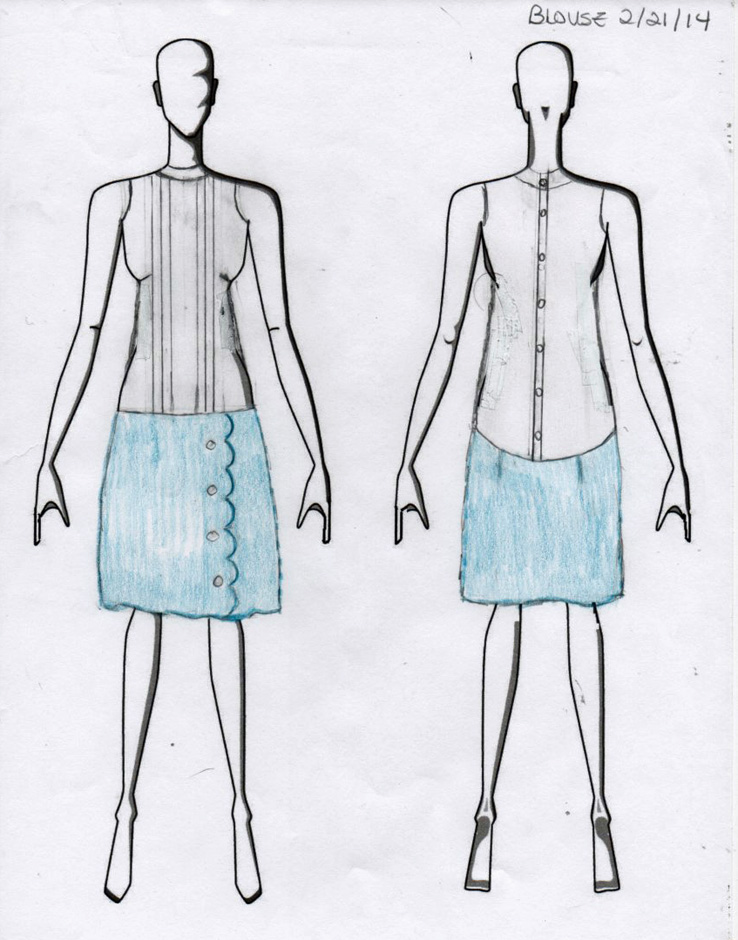 Yes, there was a bit of skirt thinking going on too!
Yes, there was a bit of skirt thinking going on too!
Obviously I am not the greatest at fashion drawing on croquis but it works for me and that’s what matters! After dwelling on this drawing for a bit, I went to work. I started off with a basic bodice block that I drafted last year using Connie Amaden-Crawford’s book, “Patternmaking Made Easy” (The book on Connie’s site is the 3rd edition whereas mine is the 2nd so the front cover picture is different).
My bodice block has waist darts on both the front and back and a side dart on the front. They come in handy time and time again when I am fitting patterns that have similar bodices. Not sure why I added the 5/8 inch seam allowances to them when I originally drafted them. It was a learning curve at the time! Sheesh… it’s still a learning curve! I should say it now… my pictures for this post are a bit lacking and I’m sorry about that. It’s hard taking pictures of paper! Next time maybe I should do mini’s.
Anyhoos, the next two pictures are my basic bodice block, front and back (oops! I’ve got fold wrinkles – sorry about that!)
My initial idea was to use this basic bodice block to create a dart-less blouse block, aided by my book “Patternmaking Made Easy”. I spent two days drawing, measuring, ERASING, drawing more, cutting, wadding paper into balls, then taping and drawing again… and when I thought I had it, made a muslin. It was after trying it on at least five times after at least five different MAJOR adjustments, I contemplated taking it down to the fire pit in the back yard and setting it ablaze, then filling my wine glass extra full and playing games on my computer! “Defeat” is hard for me to accept though so instead of resorting to fire, I dumped the dart-less idea and started over.
Here’s how I created my Darted Blouse Block
1 ) Using tracing paper and my basic bodice blocks, I begin again to trace, only this time the front side dart at the bust line got to stay. The waist darts in front and back became non-existent.
2) For the front, I continued drawing the center front line downward from the waist line adding another 7 inches of length. I wanted the back longer than the front so I extended the center back line down from the waist an additional 11 inches. However, before I could draw in side seams, I had to determine just how wide my hem line would be.
3) I calculated the width I needed for the front and back hem-line. (hip measurement + ease ÷ by 2, then ÷ by 2 again because the flat pattern is 1/4 of the measurement amount. After doing these calculations, I subtracted 1/2″ from the second calculation, and used this final figure for the front but added 1/2″ to the same second calculation, using this final figure for the back which is “butt” a little fuller than the front. 🙂
Example: Hip 37 inches. I added enough ease for a drapey look which I guesstimated to be of about 5 inches: 37 “+ 5″ = 42”
42″ ÷ 2 = 21″ (width for front and back)
21″ ÷ 2 = 10 1/2″ (width for flat pattern front and back pieces)
Now, move 1/2 inch to the back: 10 1/2″ + 1/2″ = 11″
The front: 10 1/2″ – 1/2″ = 10″
** Note that 11″ + 10″ = 21″ x 2 equals the 42″ we started with.
4) Using the above calculations, I then drew in the hem lines for the front and back. An L-square metal ruler (shown in the picture at the beginning of this post) is really helpful for doing this. You place the ruler with an edge on the center front or center back with the other end extending along where you need to draw the hem line.
5) To create side seam lines for the front and back, I drew lines that angled out from the waist to the hem line. We are not really boxy or straight edged so I then did a little curving and blending so that the side seam lines looked more like a body shape! When done, I double checked to make sure that the front and back side seam lengths were equal to one another.
Well here is my new drafted blouse blocks. I went ahead and added seam allowances since I’m almost ready for production. I decided to go with 3/8″ so I wouldn’t have to do trimming.
It’s hard to see in the 2 pictures above, but there are a number of features that I included on my front and back blocks because of some styling features I wanted to achieve.
1) Yokes: There are yokes drawn in, on both the front and back blouse blocks. I made them 1 inch in width and drew them in before I added seam allowances. I did this by drawing a line 1 inch down and along each of the the block necklines. In order to create yoke pattern pieces, I then traced the yokes I drew in and added 3/8″ seam allowances. Word of warning. Make sure they are equal widths all the way around! My first pieces I cut from my fashion fabric were off and after I sewed them on and thought I was finished, I noticed some major discrepancies! Yuck! I had to take them off and make new ones.
** Note 2: The yokes are just the upper part or neckline section of my blouse blocks so in order for me to create the style I wanted, I needed to trace the blocks again and exclude the yoke sections but remembering to include a seam allowance.
2) Center back button/buttonhole extension: At the center back, I added 1 and 5/8 inches that is a combined facing unit and button/buttonhole extension.
To break it down: I drew a new line 5/8″ further out from the center back line that runs parallel from neck to hem line. This added amount will accommodate the buttons and buttonholes. Then parallel to this line I drew an additional line 1 ” away from it. This 1 inch section is the facing unit. It contains a 5/8″ facing and 3/8″ for a clean finish.
How it works: In order to keep all things equal, I first basted a 3/8 and 5/8″ seam on each back side. (the picture below is the left side – the pin in the shoulder tells me that this is the right side of the fabric)
I next turned under the 3/8″ section and pressed it. Then I did the same for the 5/8″ section. Now I was ready to sew the final seams. I laid each back side right-side up, and stitched a 5/8″ seam using the guide on my sewing machine. Fortunately I caught the folded-under edge all the way down! You could also edge stitch on the underneath which I often do so I don’t have to worry about not catch the folded edge, but because the fabric I was using for my prototype was so slippery and showed every uneven thing I did, I decided to do what I did. Below is a picture of the underside but unfortunately it’s not the match to the left side shown above. This is the inside of the right side instead of the left. Damn it I hate it when I do that!
3) Creating my pleats (tucks): There are 3 straight lines drawn in on my front blouse block that run from the neckline to the hem line and are parallel to center front. They are for the creating of tucks (Page 173 of “Patternmaking Made Easy”) or what I call pleats. The bust level line is on perfect crossgrain so once again, with the aid of a metal L-square ruler, I used this point and the center front to make my markings for my pleat lines. Since cutting up the block is the next step, I decided to first trace an additional front blouse block that included the 3 lines for pleats and then let the cutting commence! Mind you I have now done this twice! Once for the actual creation of my pattern and the other to be able to show you how I did it! On the positive side… I’m getting faster at it!
So when I was done tracing, I next had to cut along each of the 3 lines, separating the sections completely from one another. Here’s what it looks like.
Now I have 4 sections but there are only going to be 3 pleats. You can choose whatever width you want… it could have been 1/8, or 1/4, 3/8 or 1/2″ but I decided I wanted 1 inch. The ruler in the picture is there to show you how it looks when I place my sections 1″ apart for my pleats. (my picture is not square so my strips don’t look square!)
The above picture is for explaining… you actually take the strips and position them the width you want, onto a piece of paper that fills in the gaps and enough room at the top so that you can fold, and draw in the finished look of the pleats. Here is a picture though once again, it may look uneven but after the many times I folded the paper in order to draw in the top of the pleats and all the tape that was involved, I couldn’t get it to lie very flat!
For the real deal, here’s what it looked like during construction! By the way, I messed up several times when trying to decide how I wanted to fold my pleats (tucks) and so had to pull all the threads out. With no instructions you are free to do what you want, but this is when the accidents occur! It’s a wonder that my blouse went together at all by the end.
Now is the moment of truth… here is the front
And here is the back…
My handy camera crew are both sick and tired so not able to help me with a photoshoot so I couldn’t model it for you! Yes, it turned out and I will wear it but it does have flaws. My front and back yokes were even but they don’t lie as nicely as I had hoped. It probably didn’t help that I pretty much mangulated the neck line while trying to figure out how to do my pleats and resewed the yoke on about 3 times! I also ended up with the front being shorter than I thought it was going to be. It’s just long enough but I like it longer than just enough. I will probably layer with a red cami which will make things interesting. As I look at these last 2 pictures, I realize that I didn’t say anything about the armholes and how I finished them. It was pretty easy… 3/8″ seams and bias tape that I made from the same fabric using my Clover Bias Tape Maker, only I folded it to the outside.
This is a monster of a post which I know is a pain to read and I am sorry about that. But hey… it was a pain to write! Whew! Right now it’s totally Wine:30! And time for a piece of cake too! I am truly happy though, that I could share this with you and hope it helps someone! Sew until next post…
Salute! Jessica
Read MoreSweaters and Skirts and Snow
Okay… so you are probably wondering where I have been THIS time! Remember in my last post when I signed off with “Look out 2014, here I come”? Well… I think I was the one that should have been feeling a little worried! It started last Wednesday when THEY who think they can predict weather actually got it right this time, predicting that an abundance of snow was heading straight our way. All kinds of snow came falling out of the sky on us. We are super good with rain, most of us don’t even use umbrellas which makes us true Oregonians! We understand rain and know how to work with it… but snow?!! … now that’s a whole other story! And I have come to the conclusion that home builders here in this state don’t know ANYTHING about snow either because without a second thought, they build driveways everywhere just like mine! “Shuttle launches” that give you the feeling you are laying on your back and ready to blast off when you sit down in the car and so steep that when it snows, you can’t get in or out of your driveway… for days!
But the snow was really the least of my worries because I had a bigger problem. Thursday morning right after the snow hit, I decided I better finish up my son’s taxes and that was when another event also happened… my computer gave up on me… it keeled over and died… crashed… dropped dead… bit the big one… I didn’t even get the blue screen of death… just blackness! “Awe Crap” was not exactly what I said but I will spare you from that rant!
For the next three days while I was held prisoner in my home because I couldn’t get out of my driveway, I did my best to research new computers on my phone…this was like… like… like sewing clothes for a thimble!
It was my good fortune though that Sunday afternoon, a friend with a truck helped me immensely by taking me to a computer store where I was able to replace my poor old Dell with a new sleek and sassy Toshiba so I could get back here to Sewlikeinparis and talk to you!
Believe it or not, I actually did do some sewing during the snow storm. I dug through some left over fabric from past sewing projects and decided to try my hand at making a pull over sweater and a jeans skirt. While neither I felt were masterpieces, they both turned out nice enough that I have already worn them and they are now in the laundry.
For the sweater, I used McCall’s 6708 only I made a whole lot of changes!
I didn’t want a cardigan… I wanted a pullover so I cut my front on the fold of the fabric after I calculated how much width I needed to take out. To do this I layered pattern pieces for style E over style A because I wanted the body of the sweater to be longer but I wanted the higher neck of style A. There was not enough fabric for long sleeves so I went with short sleeves instead.
Sewing it together took me all of ten minutes. It was easy! Of course there was still the question of what to use for the binding around the neck, sleeves and bottom. I had some black ribbing, a little too heavy for this fabric, but since this was an experiment, why not! I used the same band pieces that came with the pattern, cut them out of my black ribbing and just stitched the ends together with a 5/8″ seam. I wasn’t sure how it was going to turn out but hey… I was winging it! The wine may have had something to do with the winging at this point!
Here is a finished sleeve.
This is a close-up of the neck. I wasn’t real happy with how it turned out. I think maybe the band needs to be smaller. I thought about ripping out the seam and trying again, but I find it rather frustrating trying to remove seams from knit fabric! I put it on to see if it looked stupid and it really didn’t so I decided for sure to leave it alone. On all my bands, I top-stitched right next to the ribbing on the outside in order to keep the bands from rolling and this held them in place nicely; then I trimmed the extra fabric off.
Note for the future: I will cut the pattern pieces with a 3/8 inch seam allowance instead of 5/8 inches and then I won’t have to worry about cutting it off and it will also have a nicer more even finish.
It was debatable as to whether to put a band on the bottom or not… for whatever reason the band won so I put it on!
For the skirt, I actually started with McCalls 6361
It’s actually a very nice skirt design though it didn’t have a back yoke like I was after that you see on a traditional jeans skirt. But hey, this was a trial run so I wasn’t too concerned. You start with stitching on the pockets and since I was in experimental mode, I decided to try making the lower half out of different fabric. In jeans the pocket itself is often made from muslin but for my test run I decided to use some cotton shirting.
Following this, I had to stitch the pockets on the outer fronts, right side to right side and then I followed the pattern tip and additionally stitched on twill tape that I centered over the seamlines.
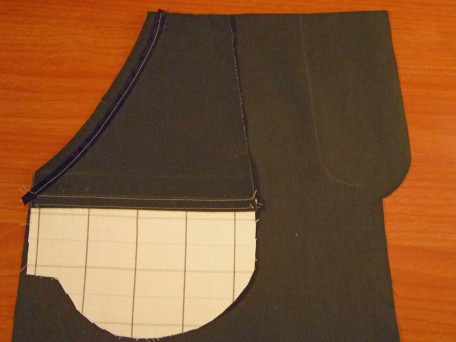 This picture shows the inside of the right side of the skirt
This picture shows the inside of the right side of the skirt
When you flip them back over to the inside, it looks like this.
Just before the zipper stage, I switched to McCalls 6610
and dug out the right fly and fly facing pattern pieces so I could have a more jeans look zipper that McCall’s 6361 didn’t.
This is on the inside after I had finished with the pockets and the zipper installation. It’s not a very good picture, but you can see the inside lower part of the pockets and the fly facing that goes behind the zipper.
I top stitched all my seams with Jeans thread and boy was that a nightmare. My machine does not like to sew with it. I played with my tension a lot! I found that I needed to have it between 8 and 9 with a little extra pressure on the foot and definitely a 5.0 stitch length. Even with these adjustments, it was iffy! I pulled out what seemed like yards and yards of thread over and over, trying to get it right. Even remembered to change the sewing machine needle to a jeans needle though it didn’t seem to help that much. If the top thread was too loose, it felt really scratchy on the underside! If you look at the seams here in the waistband, you can see that they are not consistently the same.
The top thread of the stitch looked good most of the time which really fooled me because I would just keep sewing along thinking that I finally had it and then… I would look underneath and it looked like crap!
This is the front of the skirt after I finished it.
And this is the back without a yoke.
Sew there it is… Sweaters and skirts and snow! I don’t seem to have it in me this week to do the Ta-Da thing so I’m ducking out on the photo shoot! But I am thrilled to be back here on my blog talking to you about sewing. I am presently working on a new sewing project that I will share with you soon. You know… I’ve learned several valuable things in the last week…1) I can make a sweater, 2) it’s good to sometimes believe the weatherman may be right and go grocery shopping early on and 3) there is absolutely no way that I will ever conform to doing all my blogging from my phone! I love my new computer and large touch screen and hopefully it will stay with me for a while so I can keep coming back! À tout à l’heure ! ( See you soon!)
Salute! Jessica
Read MoreBurda 8836 in Blue
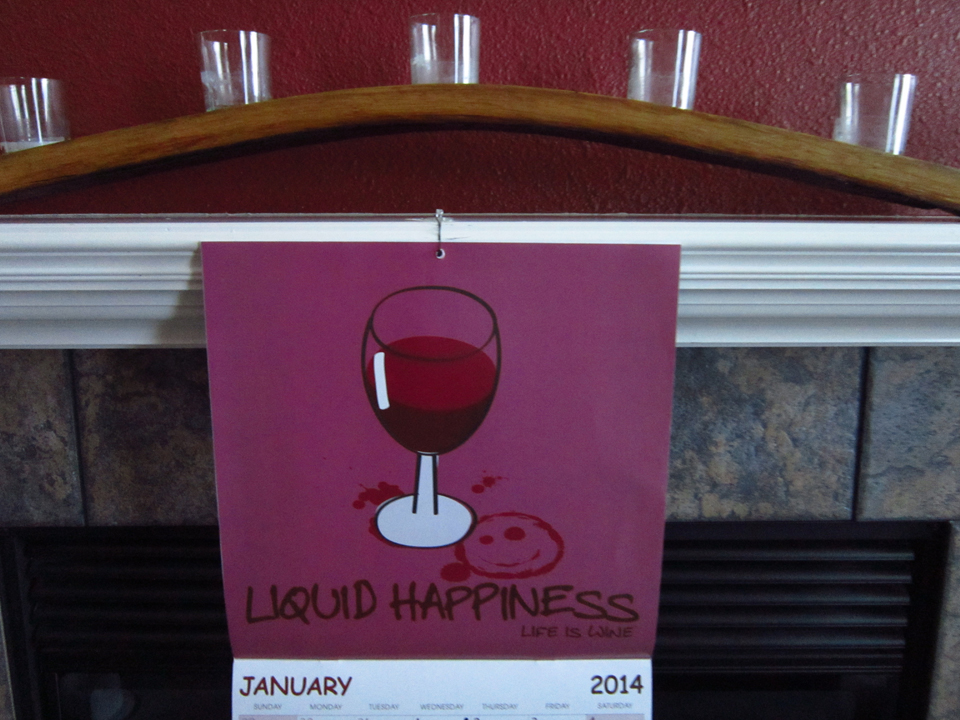 My new calendar for this year! I’m liking it!
My new calendar for this year! I’m liking it!
Well I’m back! You were probably wondering if I fell off the earth… or something! Happy to say, nothing of the sort, just recovering from the holidays and adjusting to the beginning of a new year. It started off with a bang. Spent all day the 5th of January at Oregon Health Sciences University in the surgical waiting room… one of my sons had to have his gall bladder removed. Imagine that! He is a 27-year- old male and so this is sort of an odd thing. After the dust settled from that, I decided I better get busy and make my little Burda 8836 dress in blue. This project also ended up in the emergency room which is why I am so late in getting back to you. Oh… and did I mention that this same now gallbladder-less person is having a birthday at the end of this month and asked me to sew him a flannel shirt for a birthday present?!! Yes… I have definitely been feeling overwhelmed.
So I suppose you want to hear the grizzly details… of making my Burda 8836 dress, that is. Let’s see – where do I begin. Maybe a picture of the pattern first!
Originally I had imagined this dress in black, however I found myself not to excited to take on another black project since making the black jumpsuit, mainly because I need to improve on my lighting. I think what I need is one of those big bright lights you see at a road construction site! That would be so awesome! Okay, never mind, not logical, but you know where I’m coming from. Anyways, after much deliberation, I ended up deciding on blue. I have never owned a blue dress so I was feeling pretty jazzed about this idea. I spent about an hour at the fabric store wandering… and wandering… and…. then finally, I found a small bolt tucked in between several others that I just didn’t notice before. It was blue but with a red hue making it almost purple but not quite.
Interesting thing about this fabric. It was in the Georgette/Chiffon section which is the kind of fabric that I wanted but it feels like silk… sews like silk… even the lady at the cutting counter thought it was silk, but it was not in the silk fabric section. Hmm… maybe I got lucky and things are going to start shaping up!
And this is my lining…
Okay… moving right along – this fabric business is where my disaster happened. The width of the fabric was less than 45″, can’t remember the exact measurement now… I think it’s intentional memory loss due to trauma! Anyways, I think what happened is that after much discussion with the lady at the cutting counter, I ended up with a converted amount of yardage and so I was a happy camper and off I went. After pre-shrinking, I laid out my fabric and as confident as can be, started cutting out the pattern pieces on the fabric. I really was paying attention in the process and it was when I got to the last piece, a skirt front to be precise, I realized that there was not enough fabric! Panic began to set in. My daughter had to go into Beaverton that day so I asked her if she would swing by the fabric store, in hopes that she would be able to buy me another yard of that same fabric. WRONG! No fabric, no where, no how!
Some days passed as I stewed on what I should do. Then the light bulb finally turned on in my head and I figured it out. You see, the dress pattern calls for two skirt layers and since I did get all the bodice pieces and one entire skirt layer cut, all I needed was to find a second fabric that blended, contrasted, or whatever, that I could use as a 2nd layer that is sandwiched between the top layer and the skirt lining! It wasn’t what I really wanted to do because I saw in my mind two matching layers flowing with each other along the hem but since that wasn’t going to happen, this was certainly a solution to the problem. I went back to the same fabric store and wandered… and wandered… you know how it works. I finally had to settle on my best option, a solid blue Georgette in a totally different shade, but it was not to dark or too light so it didn’t change the shade of my original fabric when I tested it with a scrap. This is a picture of my blue Georgette.
Alrighty! I was ready to sew now. I had already made a muslin of my bodice which I was happy with. The front…
and the back…
I am fussy with the inside of anything I make. I don’t think it’s an anal retentive thing! It’s just that when I feel my clothes are made really nice, then I feel good wearing them. Enough said right? So I really liked this Burda dress, but the design challenged me with finishing concerns. For the butterfly sleeves, I sort of did what was suggested in the pattern but not! I actually created an edge that looked sort of embroidered. Sort of…
The way you put the bodice together does not allow you to use seam allowances to fold under to cover the stitching of the attached skirt or the installed zipper. I decided to use hemming tape to cover up both areas. I am not sure I am happy with the look of the hemming tape but I went with it.
I am an invisible zipper addict and since I used one in this dress, I had to definitely bind the edges.
The pattern instructions said to finish the hem the same as the sleeves so that is exactly what I did. I did however make the Blue Georgette layer shorter because I wasn’t liking the contrast. It looked to me like the slip was showing!
Alright then. I finished the dress and I really love it. I think sometime this spring I am going to make up the option A style with the ruffle around the neck… AND I think the fabric will be yellow!
Here is the finished Burda 8836 in Blue! The hat is a little goofy but I was having trouble getting into photoshoot mode…it was part of an outfit my son had to wear for his bachelor party!
The back of course….
Goofing off as usual…
Now I’m ready to head out to the Wine Cellar and celebrate! Feeling pretty good in my blue, maybe silk, dress. And lots to celebrate… including that I’m almost finished with my son’s flannel shirt, got my 2013 taxes done and started bottling my wine so everything is momentarily alright in the world. Look out 2014… Here I come!
Salute! Jessica
Read More
Pajama Extravaganza Butterick 4406 and 5433
Pajamas are an important garment to most everyone right! Lots of stores certainly have this figured out. They are meant for wearing when you sleep of course but they’re really not just for sleeping. If you are in my family unit, they are what we change into when we want to get out of our not so comfortable street clothes; they are the necessary attire for movie marathons on Netflix; they are what we wear when we are putzing around the house doing whatever we want, their warmth and comfort validating that in our own little domain, we are in control… for the moment! Each of us gets to fly our own colors and flaunt our favorite animals and symbols. When one of us puts on our P.J.’s, it’s an unspoken message… “yes, I am home and I’m not leaving for a while.” They may be flannel, fleece or jersey but no matter, pajamas are a keystone that holds my family together.
Pajamas a keystone? I know this may sound like an odd thing to say but it’s true! They are one of the major elements that binds us together, especially during the Christmas season. For a few weeks before Christmas pajamas are a focal point in the shopping experience. I of course am always responsible for taking care of the kids, but they are in charge of taking care of me! It gets pretty interesting for the boys. The girls have drug them through lingerie departments and Victoria’s Secret! Of course they have no idea what I have in store for them. They wait as patiently as possible for the official packages to present themselves under the tree! The kids have dubbed them “tootsie rolls” because they are a always rolled up in tissue paper and wear ribbon ties on each end. When the early Eve of Christmas arrives, we all get to unroll our tootsie rolls, don our pajamas and then the revelry begins! Yes… we party in our P.J.’s for the whole evening! Our friends and neighbors know of this strange custom and think nothing of it… anymore!
This P.J. addiction has been going on since the very beginning of my children’s existence though the tradition started long before then. As a little girl, I remember always getting pajamas. They were wrapped and placed under the tree for the grand opening Christmas Eve. We of course wore them to bed awaiting the visit from the fat guy in the red suit! (another weird custom!) I can’t say that I learned all my lessons very well growing up… however I did hold on to the pajama mania, certainly an oddity but it has been so much fun through the years that I’m glad I did! I owe it all to my mother… thanks Mom!
This year I decided to sew pajamas for my children. A wonderful woman who is in the American Sewing Guild Garment Group that I belong to inspired me to do this; Joyce, is her name. She was making P.J.’s for all her grandchildren that included embroidered pictures on them matching each child’s interest. I don’t have an embroidery machine but I knew I could do plenty of damage with fabric and color so I thought… why not! This is going to be cool! I’ll make my kids P.J.’s for Christmas this year!
Okay… so I only had to make 4 sets of adult sized pajamas… 2 girls and 2 boys. Yeah I know… how can I say…only 4? Sets? Hey, I try to be an optimist regardless of how impossible things appear! First up… I had to purchase fabric. What and where was a challenge. I searched through my local fabric stores. Flannel was either a blend of cotton and polyester or 100% cotton. Sort of a purist by nature, I decided to go with 100% cotton and the softer the better. I don’t know a lot about flannel, have never really researched it because I’ve never made pajamas before. I ended up choosing flannel from Jo-Ann Fabric and ordered it on-line for quite a bit of savings due to an on-line sale. This was quite helpful since I needed to purchase 26 yards. The only draw back… the fabric didn’t arrive until December 10th. So I had two weeks to make 4 pair of pajamas… what was I thinking! Oh yeah, I wasn’t thinking! I was determined though and was not going to give up – like the little engine that believed it could… I think I can, I think I can, I think I can!
I chose 2 patterns for my big pajama extravaganza challenge! Butterick 4406 and 5433.
The patterns are very easy to follow… they are pajamas and so they should be right! For the girls, I decided to make the pants and tunics. I had already been informed by my daughter that she didn’t want long sleeves so that was the first style change. For the boys, I made the pants and shirts per pattern instructions though I did shorten the length of the shirts some. Hopefully this won’t be a problem! It’s just that the pattern pieces looked really long! I also decided to throw in some side-seam pockets on all of them. Gotta have pockets! They all have to have some place to put their cell phones… right??!! I borrowed a pocket pattern piece from my Butterick skirt pattern.
How did I do this? I applied KISS (keep it simple stupid)
First: I sewed 4 cut out pockets, 1 for each front and back side (4 in all). I placed the top of each pocket right at the fold line for the waist band casing and then sewed them all in place.
Second: Pinned the front and back sides together as well as the pockets which should be pressed away from the pant legs (forgot to take a picture for an example… I was sewing like a mad fool to make the deadline!)
Third: Measured down from the fold line of the waist 2 inches, marked that point and then stitched the front and back together from top of waist (edge of fabric) to that point. I then measured 4 3/4 inches down from the same fold line but this time started stitching the front/back side seam at this point and going clear to the end of the leg.
Fourth: Sew the 2 pocket sides together starting perpendicular from where the 2 inch section stops, across the pocket and then down and around staying at 5/8 until having to quickly and sharply rotate the fabric until you are stitching straight across the side seam, perpendicular to where the 4 3/4 inch seam starts. Voila! Pockets!
The pattern for the girl’s pants didn’t include the styling for adding a tie that resides in the casing along side the elastic so I added this feature.
The other pattern that I used for the boys did have this. Besides looking cool, my thought was that if the waist band was to big, they could remedy the problem by using the tie. Awe…. I had my thinking cap on! To do this, you just have to make 2 buttonholes, each off center 1/4 inch. Remember though that you have to allow for the 5/8 inch seam so the buttonholes need to be 7/8 inch from the edge of the fabric, 5/8 plus the 1/4. I reinforced the buttonholes by first basting a 1 inch square of fabric behind the area where each buttonhole was to be. I used twill tape for the ties.
The girls pants still seemed like they needed something more so I ended up sewing a back pocket on them.
Since I was sewing in a medium weight flannel, I chose to not use interfacing on any of the tops/shirts. I hate that iron on stuff anyway! I don’t know why, I just do! On the girls tops, I sewed the facing to the top front rather than just tacking it to the shoulders. I personally like facings to be well attached so that I’m not having to smooth them down while trying to put the garment on!
The girls P.J.’s with the facing top-stitched.
As I mentioned earlier, my daughter requested short sleeves so I indulged her! My daughter-in-law however, gets cold easily, like me, so I thought I would give her long sleeves. The problem here was that the pattern is a 3/4 sleeve length so I had to get a little crafty but it was manageable. I just cut the sleeve pattern piece at the shorten lengthen line and added the length I needed between the two pieces.
These tops are tunics so the sides are not stitched clear to the hem. The fabric in this picture doesn’t look as black as it. Black flannel really attracts fuzz too!
The Butterick 5433 pattern shirt seemed simple enough when I started but ended up being about as much work as making a shirt! It was still fun though. Making the pleat in the front below the buttons was a little confusing to me and so while it seems to be fine, I did have a wide space between the point where I sewed across it and the bottom buttonhole. I decided to get creative and sewed an X across this space. Awe Crap! I am just noticing that the picture below which I had taken to explain the X’s doesn’t show them! Another DERP moment!
Well… here are the boys pajamas minus the “X”!
The bears and penguins are a bit cutsey for young men but they were the ONLY bears and penguins I could find in flannel! I told you I could do damage! It must be the South Pole Elf in me! 😉
The big moment still awaits… it is Christmas Eve day so the “tootsie rolls” are still waiting for their debut. I am not going to post this until after this event and hopefully will have coerced my munchkins to do a photoshoot that I can share with you. Hang tight and treat yourself to a hot tottie with me… I’m thinking hot buttered rum! Be back soon…
I knew I could, I knew I could! It’s just after midnight… rolling into Christmas Day, but in the best form possible, here they are!
We have an addition to the group… the gentleman wearing his P.J.’s with a Batman T-Shirt. I cannot claim fame for making his but I’m proud that he was so willing to participate in the P.J. Extravaganza!
In what ever way you celebrate this time of year, I wish you the very best! Now its time for me to get back to the revelry!
Salute! Jessica
Read MoreEdith Blouse Paired with Wool Butterick 5613
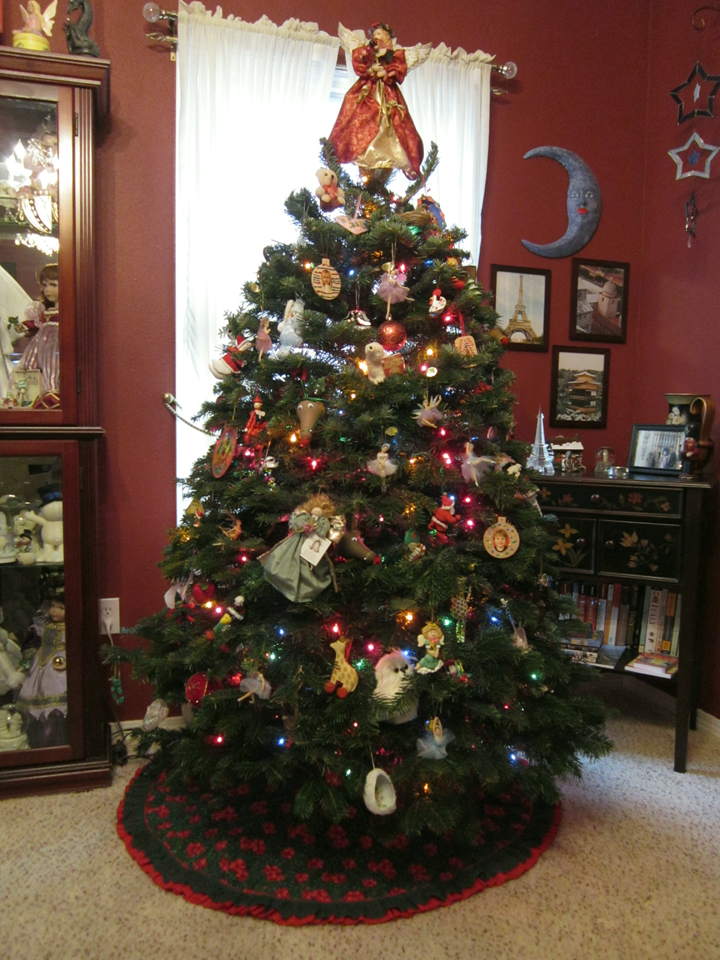
Yes.. I am one of those who drags the yule log in the house and decorates it… with the help of my kids of course! There were absolutely no squirrels in the branches this year but… there was another problem. Monday morning at about… say 6:30 am, there was a tinkling, ringing, clanking sound that came from the downstairs room where this pretty little tree WAS (I’m emphasizing the “was”) standing. The ornamental carnage that came with the falling of our tree drove me to drink!… Tea! HA… you thought I was gonna say wine! I am unwilling to take the responsibility for this fate so I am blaming this incident on either the South Pole Elves or the crappy tree stand that we used. Since there was no evidence of elves, I determined that the blame would be placed on the tree stand! After a trip to Lowe’s and the purchase of a new improved tree stand, we were able fix the disaster. I did have to wait until today for the carpet to dry so I could put the skirt underneath but now it is finished and ready for Christmas.
Interestingly, this holiday season here in Oregon has started off with truly cold cold weather that has caused a lot of us to actually freeze our butts off!
For the last three weeks it has been in the teens and low 20’s during the day, getting even colder at night. My understanding is that this hasn’t happened since the 70’s! Believe it or not, during all of this coldness, I have managed to continue sewing, albeit a bit slower of a speed than my usual. I haven’t left my skirt making mode and while making them, I got to thinking that I need tops to go with my skirts.
MariaDenmark, a fellow blogger has designed and created a blouse pattern, the “Edith Blouse”, that you can purchase on Craftsy . She shares a little story on both Craftsy and her “Wool and Weeds” Blog about how this cute blouse came to be. Last summer I purchased it with the intention of making it then but alas… so much was going on that it didn’t happen. However… now, in my skirt-making-madness-mood, it seems the perfect time to make it.
This is a picture of the blouse. The pattern also includes a dress, which actually is just added length below the level of the blouse. It has that Retro look yet still looks modern and given that the blouse fits me so well, I think the dress will be a fabulous spring project!
This is a download pattern which arrived to me via PDF file. I have never downloaded a pattern before so admittedly, I was a little nervous at first. However, it truly went very smooth. I opened the PDF file and after reading all the instructions, printed off only the pages for the blouse. While piecing all the printed sheets together, I kept the full pattern layout sketch picture that’s included, on my computer screen while I was cutting and matching and taping.
Before I started, I considered to first cut off all the right sides and bottom edges of the printed pages along the red dotted lines but… since I am really getting tired of re-doing ANYTHING.. I decided against this and instead, went one page at a time. Here is a picture of my system.
Now that the printed pages were all taped together…
I was ready for step two. Using tracing paper that I purchase by the roll from Nancy’s Notion’s, I traced the pieces that I needed for the blouse, adjusting sizes between bust, waist and hip. I next made a muslin to see where I was at in the fitting. Too much shoulder length, perfect bust, waist to narrow and hips WAY to wide. It was back to the drawing board so-to-speak. I rolled back out my taped together Edith Blouse pattern and re-traced my pieces making adjustments for all my fitting issues. Now it was time to make muslin number 2! It was a success! The happy dance commenced!
I had found some fabric at Mill End’s in Beaverton, Oregon that I felt so drawn to. Not sure why… it was a very nice fine cotton, but I knew that matching cut fabric pieces with a pattern like this fabric had would be tricky! Nonetheless, I was determined to make this fabric into the E. blouse.
I spent a little time pondering my tactics before I started cutting. I pre-washed, dried and pressed the fabric and when I laid it out to cut out my pieces, I discovered that it was not on grain! Yuk! I paid $9.99 a yard for this fabric which was only about 42 or 43 inches wide resulting in having to buy additional yardage to cut out all my pieces. I decided to do what seems to be my usual these days… I tossed my fate to the rain and cut my blouse pieces the way that I thought the printed pattern would look best. I haven’t washed it since I’ve made it so I don’t know if I will get twisting or what, but…I will worry about that then!
The blouse sleeves finish in such a way that I was concerned about them raveling even if I used my pinking shears so I decided to dig out my old dinosaur serger. I hate that machine! If I was a better operator maybe I wouldn’t get so frustrated with it but it’s so rarely that I use it. That is why I’ve not considered taking classes or joining a serger group but maybe I should reconsider. At least I would know how to fix most of my problems! It must have taken me an hour to finally get it to sew a decent seam and so now I was ready to actually sew together the blouse .
I had fun sewing it. It was a little time consuming making all the darts but they are what makes the blouse fit so nicely. There are two long ones that go to the hem in the back piece and one on each of the front pieces that are almost as equally long as the back ones. The front center edges fold over to the outside towards the top like a lapel and blend nicely into the collar.
Next up was my skirt. I found some beautiful wool flannel in black that I couldn’t wait to sew so I could wear it! I am thinking really warm here! I tried to take a picture of the wool but because it was black, the camera had a horrible time with it. I was getting grays which were not at all true to it’s color so I bailed on the picture. The skirt that I decided to make was a style from the Butterick 5613 that I made my previous skirt from. My lining skirt that is!
This time I chose the option C style with pleats. I made a few changes however. There are five pleats in the front section and per the pattern instructions, all are folded in the same direction. You are told to make the pleats on the outside, creasing along the lines of the small circles and then bringing those creases to the lines of the large circles. I did this for the 2 outer pleats on the right side but did the opposite for the 2 outer pleats on the left side. I still had the center pleat to contend with. I decided to divide the width of this pleat in half and marked this as the center. Then I folded one side of the pleat towards that center and then folded the other side of the pleat the same. I pinned them in place and then basted them. I wanted the pleats to hold their shape so I then top-stitched each fold, 6 in total, down 4 1/2 inches from the top edge of the waist. The back pleats I folded per the pattern instructions though I did top-stitch them like I did the front ones.
The pattern doesn’t give instructions for lining the pleated skirt but because I made mine from wool flannel, I considered the itch factor so decided to line it. An added plus would be that the pleats would drape better, especially if I used the straight lining that comes with the pattern. This straight skirt lining is intended for the pleated skirt if you make a bubble hem so that’s why it’s included. My method was my own for attaching the lining. I followed the pattern instructions through until after inserting the zipper (excepting the change I did in the front pleats). Then I made my lining and basted it to the skirt selvage, raw edges even, in a 3/8 inch basting seam with my sewing machine.
It was a toss up on what to do next, either sew the waistband yoke facing to the waistband yoke, or slip stitching the lining to the zipper. I decided to sew on the waistband facing first. I followed the pattern instructions for this… it’s pretty easy. Just matching up seams and markings. Next was slip stitching the lining to the zipper.
Almost there… now it was time to slip stitch the folded under waistband yoke facing over the skirt seam.
Then finally, the last thing to do… hem the lining. Mind you I did do this before I attached the lining to the skirt but I had an oh crap moment! I didn’t hem it short enough so it hung down below the hem of the skirt after I basted it in place. I just hate it when that happens!
I contemplated top-stitching the waistband yoke on the top and bottom, but for some reason my mind doesn’t want to let me. I kinda like the plain wool look, it is so beautiful. I absolutely love sewing wool flannel. I don’t know what other colors it comes in but I plan on making more skirts from it. It will be so warm and cozy to wear.
I am not sure if my cotton Edith Blouse is the best match for my wool flannel pleated skirt but their colors compliment one another so I decided to pair them up for pictures. Here they are!
The back actually hangs quite smoothly but because I was turned a little, I think this feature was lost!
My daughter told me to tip my head a little, and then shortly later said left giving me a direction but I thought she said laugh!
That’s a take then! We are finished. I hope to next start on something blue. I have never made myself anything in blue before but the ladies at one of my favorite fabric stores did a poll with some customers while holding the fabric up alongside my face and it was unanimous that I could pull off wearing blue! So please note that if I look like crap, I am not responsible! 🙂
Salute! Jessica
Read MoreButterick 5613 Causes Skirt Making Madness
These are a few of our favorite beverages we like to partake of during the coming season. The Pyrat Rum is for the hot buttered rum that warms us on chilly winter days and evenings. There is a fresh batch of batter, heavily seasoned with Caribbean spices that I made last night, patiently waiting in the chillerator for us to add to the rum with steaming hot water that begins the kick off for today’s festivities. We can’t leave out my favorite… wine, the fruit and nector of the gods! And last but not least, fine scotch, Laphroaig 10 Year single malt, the water of angels!
This year, the feast is being held at my son and daughter-in-law’s home. On this day every year, my children grab the opportunity to dress up for dinner… ties, sometimes dinner coats, dresses and occasionally hats! A very fashionable and fun revelry that transcends into the New Year! And what will I be wearing? Well…
I recently purchased a new pair of leather riding boots because I decided that it’s going to be skirts and warm tights for the wearing this winter. The problem however with making this decision… there is only one winter skirt in my closet. I guess it was a DERP moment! This one and only skirt I have is a heavy cotton/spandex that I purchased from the GAP back in… try 2004! I have no explanations or excuses for the no skirts syndrome… just never thought much about them. All of that is going to change though – now that I have my Butterick 5613 pattern!
So what do I like about this pattern? For starters… the wide yoke. They seem to be feel so much more comfortable than a narrow waistband. Then there is the style options: pleats, bubble hem or a lightly gathered flare. The pattern calls for the light weight fabrics Broadcloth and Faille but also throws linen into the mix. I need winter skirts not spring/summer skirts which these fabrics work well for so… since I like to bend the rules, I decided I would try something that would be heavier and warmer… like wool flannel. But before going wild, I thought it best to practice with a fabric sort of similar and less expensive… like the wool crepe remnant that I couldn’t bring myself to throw away after making a dress out of almost two years ago. It is sort of a red rose color.
The piece looked big enough to make a skirt from but it was not going to be big enough to make the pleated skirt. I kinda figured but I had to try. My good fortune still came forth however! It just so happens that the pleated skirt has a lining if you want the bubble hem so guess what I did? Yes… I made a skirt from the lining! The beauty of this is that I made a muslin that is actually a skirt I WILL wear. An added plus is another style of skirt to add to my style options. Of course, I now also know how to line the pleated skirt which I am making next.
I definitely wanted to line my skirt because I find that wool crepe is scratchy on my skin. I ended up with a polyester lining that was not what I was after but the color matched so perfectly with the wool crepe that I went for it. It sure didn’t like to be ironed, even at the synthetic heat setting on my iron which is cooler than silk.
The pattern lining is really simple: A yoke styled waistband (front and back), the front skirt section (cut on the fold) with 2 darts, two skirt back sides, each with 1 dart. I cut all of these from my Wool Crepe and then a second set of all of them from my lining. Oh yeah, and also cut interfacing pieces for the yoke.
However… Before I cut out my lining (after I cut out the actual skirt), I first shortened the front and back pattern pieces 1/2 inch in length. Let me explain… the Butterick 5613 pattern “D” option for the pleated bubble skirt uses the lining to create the bubble hem by instructing you to sew the hem of the lining to the gathered hem of the pleated skirt. The lining is shorter than the pleated skirt so when you do this, the lining pulls the skirt hem up and under, giving a finished hem in the process. I wanted to do the same but since I was using the same pattern pieces for both the skirt and lining, I had to shorten the length of the skirt front and back tissues before cutting out my lining pieces.
Another cool thing … because I didn’t make pleats, the hemline width of my skirt and lining were the same and so sewing them together was easy peasy! I just sewed the bottom of the skirt to the bottom of the lining, right side to right side, then folded the lining back under to the inside that I later basted to the inside top of the skirt. But First!
Important Tip: I didn’t sew the two hemlines together until after I first applied the fabric yoke and installed an invisible zipper ( I love the finished look of these). Doing it this way made it easier to sew the lining onto each side of the zipper and gave a nicer finish. I basted the lining to the seam allowance of the yoke and top of skirt, matching seams and notches. Next, I top-stitched the outer bottom edge of the yoke, giving both a nice finish and more permanently attaching the lining. Is this a correct way to do this? Well… the art of sewing has developed through experimentation so is there a wrong? I figure that if you get what you are after… then it must have been right!
This is what the hem of the skirt looks like finished.
It was now time to add the yoke facing which I did per the pattern instructions. However, instead of under-stitching I chose to top-stitch the top of the yoke on the outside to match the bottom. I did this after I turned the facing to the inside and slip-stitched it’s pressed under edge over the seam.
My first day of this season’s revelry attire includes my new skirt!
It’s hard to model a skirt! Maybe this is why they never get a lot of attention. They are tucked in under everything. Trying to show the darts here but it’s not working. Sure got a laugh out of my daughter though!
Up and coming soon, expect to see my black Flannel pleated skirt, my “Edith Blouse” by Maria of Denmark AND my Burda 8836 black Georgette dress. But right now… it’s time to start this season’s revelry so… with a glass of my favorite Chardonnay… here is my toast to you!
“May the coming season bring you joy and happiness in all that you do!”
Salute! Jessica
Read MorePattern Review McCalls 6760
I bet you’ve been wondering where I’ve been huh?! Well… besides finishing up making wine, I just started on another mission… apple butter and applesauce! Several of the family favs so they are necessary items for the pantry. To complete the juggling act I have also been sewing… and sewing… and sewing on the same damn project! Don’t get me wrong, I am really excited about the project I chose and I can’t wait to wear it but… well, let’s start at the beginning.
The pattern I chose for this project is Fashion Star McCall’s 6760. I love the dress but I feel totally charmed by the jump suit. Yeah I know – jump suits haven’t been cool for a long time – not since Diana Rigg rocked them in the original Avengers T.V. show.

I’ve seen a few in clothing catalogs recently but with skinny legs. I can wear skinny jeans, have five pair of them, different colors, several in prints but truthfully, I have to be in just the right mood to wear them, which is most of the time NOT.
The pattern calls for Georgette, Jersey or Crepe de Chine fabric. The jump suit looks gorgeous in what appears to me to be Royal Blue and I considered this but then decided that I would go classic black because the holiday season is right around the corner and I needed something elegant to wear.
I found several Jersey fabrics on-line that I really wanted to buy but without being able to see and touch the fabric, I couldn’t bring myself to clicking the pay the “Your Total” amount key for 3 yards at $16.99 plus shipping! Since I go to Beaverton frequently, I decided that a Mill Ends Fabric Store visit was in order. I imagined a row of black jersey somewhere in the finer fashion fabrics section. WRONG. There was nada, zip, zilch, zero! I was in a total awe crap mood when I then stumbled across some black Rayon. I struggled with this notion because while Rayon drapes so beautifully, it is a wrinkle magnet! After about another half hour of wandering, I finally threw my fate to the wind and decided that I would make my jump suit out of Rayon!
For my lining, I wanted something matte and that would hang similar to the Rayon so I ended up with a slightly stretchy 60 inch matte “lining fabric”. Yep, that’s what it was called and so I don’t know exactly what it is but it complimented the black Rayon so beautifully that I decided not to argue about it and purchased it as well.
Now that I had my fabric, I was ready to make a muslin for my fitting. I didn’t cut the entire leg pieces, just a shorty version. I’ve gotten very adept at making muslins; I go through lots of muslin fabric. But… this is not because I am smart… this is because I learned the hard way by making too many garments that flopped! Anyways, one of the things I quickly discovered was that the design of the back bodice was going to be a problem. While it was really stylish with it open clear down to the top of the high and wide waist band, it was going to show my bra strap where it hooks. There was no way I was going to give my female cupcakes air time so I decided to create an insert just high enough that it would cover the strap of the bra I would be wearing!
My designed insert was to be 1 1/4 inches wide, 3 inches long and tapering to nothing at the bottom. It had 5/8 seam allowances around it. Somehow I ended up with extra width on the bottom, 1/4 inch to be exact which actually worked out quite well. This is a picture of the pattern piece I drew up.
Using my new insert pattern piece, I cut three, one from the Rayon and two from the lining fabric. I sandwiched the rayon piece between the two lining pieces and sewed top, bottom and one side. There was some planning here because when I turned it right-side out, I wanted the rayon to be on the outside with the raw selvages open on the left side. Then I laid my insert face down, selvages flush with those of the left bodice back, 5/8 inches up from the top center back edge of the waist band. Now I was ready to sew the lining to the bodice per the instructions on the pattern which would enclose the selvages of my insert and voila. Here it is.
So why did it take me so long to make this garment? Well there were actually two reasons. The first… I chose Rayon.
I wanted flow-y and drape-y but I knew that it would cost me, more than just the purchase. Now that I look back, I had to really take my time cutting out my pieces but with the sewing, it went better than I expected. I just had to take my time and be one with the fabric! Time! That’s the part I need to reiterate! I couldn’t plow through the sewing process the way I usually do, I had to be patient. EWWWW! And I didn’t sip wine while I was sewing because I had to stay keen and alert, not relaxed! I think that’s why it took me so long though. I should have been MORE relaxed! Note to self: Drink more wine while sewing!
Reason 2) I don’t know about all of you but I have concluded that sewing with black fabric, black thread, black lining and black interfacing sucks! You can’t see! At least that was what I struggled with. Everything was the same color and so… black! I love to wear it but I don’t like sewing it. One thing for sure, I definitely need to improve on the lighting in my sewing area. Majorly!
Here is the finished insert that has two small BLACK snaps.
Here is a fuller view that includes the upper back.
This is an inside view with the invisible zipper down in the back.
The shoulders gather with ties that you make sewing long one inch strips folded in half lengthwise. I hate making these when you are asked to sew the ends closed and turn inside out from the center. I decided to do it my way and knotted the ends. It may not look quite as finished but I rather like it and that’s what counts right?
The pattern instructions also had you top-stitch all of the bodice as well as the waist band and hem. I am usually pretty good at top-stitching but I wasn’t liking the results I was getting sewing with Rayon. I also thought the bodice looked more elegant by not doing this given the fabric I chose. My daughter concurred so I was happy with my decision!
I tried to get a nice close up shot of the front bodice but it was kind of difficult because the Rayon was so slippery. This is the best I could do.
I guess it’s time for show & tell… my new jump suit!
This is the back…
Gotta show the legs!
And… I got brave and gave my glamorous jump suit “pockets”.
It is actually quite comfortable. The real test however will be sitting in it. If there are going to be wrinkles, I think that’s when it will happen. I’ll have to get back to you on that! Until next post…
Salute! Jessica
Read More
Black Diamonds Costume My Way
That special evening is almost here! The count down has begun and we are preparing. Carved pumpkins will be our sentries standing guard at the threshold of our front door and there will be candy treats for our evening visitors. This is only part of the evening of fun. At our house, everyone dresses up on Halloween and we celebrate with a harvest supper! This year, turkey and stuffing, rosemary potatoes with gravy, candied yams and baked apples! So what is my costume going to be? Well… have you seen the movie “Moulin Rouge“?
It is an Australian-American musical that came out in 2001. At the time, I was attending Linfield College and this movie was one of the hottest topics around campus! I have watched it enough times through the years that I’ve lost track of just how many. Why? Because I loved the songs and I loved the acting, but even more, the costumes were phenomenal! The one that caught a lot of eyes was this one… the Black Diamonds costume.
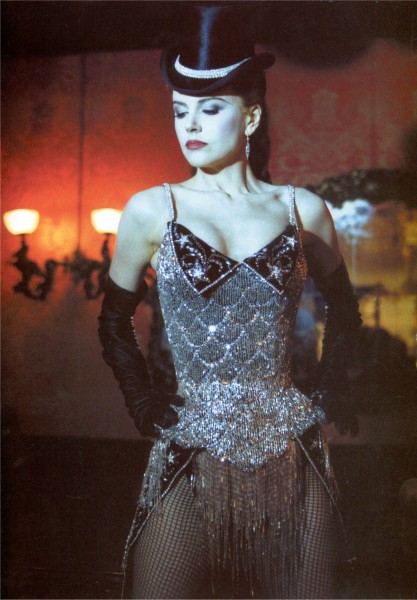 Photo from: Costumer’s Guide to Movie Costumes
Photo from: Costumer’s Guide to Movie Costumes
You can find it done up on a number of costume maker sites in their renditions, each as gorgeous as the other. I am therefore certainly not alone in my “black diamonds costume” infatuation.
I do have to share a word of warning though to any of you that would be interested in creating this costume. It requires lots and lots and lots of bugle beads, rhinestones and bugle bead fringe so be prepared to bead heavily for weeks,unless you are one of those super-dooper beaders, and plan on spending some money.
There is obviously not a pattern for this costume. I spent a great deal of time searching the internets and studying pictures and any other postings that shared any details relating to it. My version is what I thought I saw, utilizing what I could find available. I purchased my supplies as I moved through the making of the costume so that it wasn’t a cash crunch all at once. I have worked on it for several years now… wore it to one of my costume parties. But… the tails were never done properly to my liking because I got tired of beading and couldn’t justify spending any more money. Then several months ago, I decided that I wanted to share it with you and so knew what I needed to do first. I removed the tails from the corset, rebuilt them, purchased MORE 3 inch bugle bead fringe from Fultons Trims, then attached them back onto the corset. My “Black Diamonds” costume is now ready to wear tomorrow night and to share with all of you!
So starting at the beginning… the shape and style of my corset came from Simplicity 5006.
It’s made up of 10 pieces, three for each front side and two for each back side. I didn’t follow any of the constructions directions since I spring boarded off into my imagination after cutting out the pieces! I used 11 (eleven) strips of 1/4 inch spiral steel boning (center, front, front sides, back sides, back and back edges) cut from yardage I purchased along with casings from Corsetmakingsupplies.com. The outer layer of the corset and the tails were made with Faille fabric that I purchased from Mill Ends in Beaverton, Oregon. I underlined the Faille with Coutil from Tutu.com. For the lining, I used black Batiste though I don’t remember where I purchased that.
Before I lined it, I begin sewing the rows and rows and rows of strings of bugle beads. After this, I used sew-on Lochrosens Austrian Crystals in 4mm, 5mm, 6mm and 7mm sizes purchased from Fulton’s Trim, in sort of a fish scale pattern over the entire corset and the binding along the bottom after the corset was finished. I noticed that my link shows these crystals to be closing out. 🙁
It is hard trying to take pictures of the corset with all its amenities but for starters, here is the front of the corset itself.
And the back.. I chose hooks instead of lacing.
The lapels are shaped similar to a peter pan collar but are actually individually sewn onto the corset. The pattern of beads, sequins and glue-on flat back rhinestones from Fulton’s Trim are in a pattern that I felt somewhat matched images I’ve seen.
They are trimmed with silver crystal rhinestone chain #24 purchased from JoAnn Fabrics, however I purchased it in the store in the trim section.
The straps are constructed from the same silver crystal rhinestone chain. I sewed a strip of it on each strap made from the faille fabric I made the corset from. I also sewed a short strip of elastic on the back end of each strap for comfort before applying them to the corset.
At the lower front you can see a mass of layers of bugle beads strung in individual lengths. Yes… I beaded it all! My understanding is that this is called a modesty panel. I made my fringe modesty panel using 1/2 inch heavy twill tape.
There are several layers that I sewed together before attaching the whole unit to the front of the corset. The lining comes down over the twill band so it looks finished inside.
The tails start at center back, following the bottom edge of the corset towards the front of the hips. They are covered with layers of 3″ bugle bead fringe that I also purchased from Fulton’s Trim. Hey! I was tired of sewing bugle beads… I think you can totally understand!
Glued along each band of fringe (except for the top band) are rhinestones in 3mm, 4mm, 5mm and 6mm sizes, all purchased from, yes, Fulton’s Trim again. But I did order a second batch from Dreamtime Creations. Clearly I needed a form of modesty for the back so I made a bustle of netting that snaps to the corset on the inside but peeks out between the two tails in the back that you can see above. The original costume tails were more narrow leaving a wider space between them for JUST the netting! I decided to not be so bold except I think I should have made the netting shorter.
There is a border around the tails made up of bugle beads, regular crystal beads, more rhinestones and french sequins. The edges are trimmed with the silver crystal rhinestone chain #24 that I used on the lapels and straps.
Now… it is time for the accessories! Oh yes… they are what bring it all together!
You have to have stockings of some sort. I was going to wear fish net but I can’t locate my pair. Ended up wearing Hue hosiery in stripes.
Long opera gloves are in order. The actual gloves for this costume were leather which would have been sweet but too spendy for my budget. Besides, I never wear gloves… except for snowmobiling!
Of course when there are tails involved, you must include a top hat! I needed a fancy hat band so this required a bit more of the silver crystal rhinestone chain that I sewed together into a triple strand.
Jewelry most definitely! Earrings to be exact. My daughter got them for me and they are so perfect for this costume.
There is still one more important thing needed… shoes! This was a bit of a challenge for me. I hunted a while and finally found the perfect pair of bare black suede shoes from Famous Footwear. Then.. the real fun began when I started decorating them.
Now all that’s left is showing you the real deal. I just love blingy glitzy glam! It’s too bad that Halloween is only once a year!
Okay… guess I’m having too much fun. How about this?
The tails from the back… still not liking what I see. Maybe a bow? Hell! Who likes to see their back side!
Fun is increasing with self-medicated chardonnay!
Just having way too much fun!
So I guess this is the end of my 2013 Costume Fashion Show. Hope you have enjoyed it. It’s been a lot of fun but I am getting sort of antsy to get back into sewing clothes that can be worn in public!
As a side note, all my grape must has gone through primary fermentation and quietly resting until it finishes its business. In a couple of months we will be bottling it up and then let it lay until it’s time for the official coming out party. Mmm… can’t wait! With that.. Have a fun Halloween!
Salute! Jessica
Read MoreSimplicity 2851 Feathered with 2966
Feather fashion is said to date back to the 11th century with the birth of plumes in head dresses of the wealthy. Twelve century venetian masks were adorned with them. Through the middle ages, feathers were a wardrobe staple for high society. However, when the 1800’s rolled in, feathers were for everyone! AND… the boa stepped into the spotlight! They were actually an accessory in the 1700’s but didn’t catch on very well. Thank goodness some dear soul was determined not to give up! I Love boas and would own dozens if my practical side wasn’t so dominating! I saw a beautiful pink one at the Oregon Fabric Depot in Portland a few years ago. It was $55.00 and about a foot in diameter. It was gorgeous and I remember how I longed for it but there were many other things that my family needed… things that cost less than that boa! Besides, it would likely have ended up in the basket with all the other boas that I do have… but they are special boas.
This one I wore several years ago at the Seafood & Wine Festival in Newport, Oregon along with about 10 other ladies wearing them too!
In 2008 I visited Trinidad and stumbled across one of the biggest Carnival supplier shops in Port of Spain… Samaroo’s Limited on Abercromby Street where I found this black one!
This one was my daughter’s that her grandmother (my mother) gave her when she was about 10-years-old. A few years ago she was reorganizing her room and stumbled across it somewhere in her closet. She asked me if I wanted it because she grew up and was not into pink anymore. I told her Y-E-S – I want it!!!! Does a bear poop in the woods! End of discussion and now I have a pink boa!
So about now you are asking what all of this has to do with a costume! Well… this next costume I want to share with you is a cornucopia of feathers! To start, let’s take a flight with Simplicity 2851.
This costume pattern includes what they call an apron. When I think of an apron, I think of what you wear when you’re cooking in the kitchen however, the apron you can create using this pattern is a whole lot different, really cute… AND certainly perfect for a Moulin Rouge costume!
I started off constructing apron B, using black fabric that I chose for it’s draping qualities but for the life of me don’t remember what it was. I do know that I didn’t want to use cheap fabric so I was picky when I chose it. I was happy with the way it turned out but I knew that we needed some extra poof in the back, bustle poof to be exact so I made a giant bow out of black petticoat netting and fastened it permanently to one side with a snap that fastened to the other side when worn.
When it came time to sew the train, I knew that it was going to be too long for what I had in mind. I used only one puff and sewed the long train onto it just like if it was puff number #2. The train was still a little too long so I gathered the sides from where it was sewn to puff number #1 and down about 10 inches on each side. I took a picture to share but the picture looked so stupid and confusing that I decided not to post it. I think it would be easy to understand what I am saying if you were sewing this.
Now that I had got the apron/puff/train finished, it was time for my daughter to try it on. It just wasn’t working. Then an idea hit me… wasn’t sure how I was going to do it, but I saw feathers all over the back somehow attached to the puff/train. To the internets I went and after a bit of surfing, ordered three six-foot 60 gram boas. from Rhode Island Novelty. Why here? Well, they were the only ones that had a red AND black boa.
I spent an hour or two figuring out how I was going to attach them and when I finished, had my daughter try it on again. It was DA Bomb! This is it and the puff/train that it’s attached to is underneath.
Now that the bottom half of the costume was taken care of, it was time to create a top. We already had a vision… a corset of course! After much thought, I decided not to draft a corset and instead used Simplicity 2966.
I had already made a few corsets and I knew the proper way to construct them so I used the pieces of this pattern but did my own thing for all of the construction. I used a Brocade for the outer fabric; underlined this with Coutil that I purchased from Tutu.com; and lined it with black cotton batiste. I think lacing looks cool but I wanted the corset to be a one-person job, in other words, I wanted my daughter to be able to dress herself! I therefore decided to use a 12 inch busk for the front which I purchased from Corsetmaking.com.
Below is a picture of the front of the corset. To finish the edges, I made bias strips to encase them using remains of the black fabric that I used to make the apron/puff/train.
This is what the busk looks like when it is opened.
I put lacing in the back, but it doesn’t have to be undone so it gets to stay put and look cool!
If you are a regular reader, by now you know that I really have a thing for accessorizing my costumes, a condition which all my children seem to have developed… even in their everyday attire! Calley and I decided that the right hosiery was necessary for our version of the Moulin Rouge costume so she chose these from Art of Adornment.
We thought a fan was in order!
And there has to be something to adorn the head so I made this using sinamay, satin, lace, netting, red trim, lots of feathers, a red jewel and rhinestones.
For shoes, she chose these.
And… when you lump it all together.. Voila! You have Lady Calley!
The bustle of boas!
Hair adornment…
And a picture of my lovely daughter that was just too pretty to pass up.
Well… there it is, our version of a Moulin Rouge costume. Next week is zooming in fast and of course the grand finale of my costume presentation… It has taken me months to make this last one and is definitely an eye catcher in the light! Until then…
Salute! Jessica
Read MoreButterick 4827 Medieval Dress
Here is my son in total bliss in the vineyard. You might think it’s because he is spending the afternoon outdoors on a beautiful day. But nope… that’s not it. He is laughing his derriere off because he knows that he’s dragging home 300 MORE pounds of grapes for me to make wine out of! As of today while writing this, I have almost 500 lbs of grapes fermenting in my kitchen! We are going to be very happy people for the next year!
So there it is… since I’m knee deep in grapes, I’m a little bit late posting costume number4 for you but better late than never eh! In my last post, I mentioned that I was going to show you something renaissancey! I should clarify that what I am actually going to show you is medieval. The difference between Renaissance and Medieval is really nothing more than two different periods of time in history with the medieval period coming before the renaissance period. There… now that I have that covered, we are off!
The Butterick 4827 pattern is a very nice put-together medieval dress ensemble.
The only challenges to making it, from my perspective, are in the fitting and putting in the eyelets if you happen to get some of the crappy gold ones that I used! (Sorry to say it but I think they were a Dritz product) They did not set well and so have snaggy edges that are messing up the cording that laces up the back, replacing the need for a zipper. Yes! No zipper, but… be eyelet aware! They have some very nice grommets in assorted colors at corsetmaking.com which I have used since making this dress and they are definitely worth the trouble ordering. Grommets are just a little bit more heavy duty than eyelets but so is a zipper! Oh.. also a bit of warning… since the back laces, you will need help getting dressed AND undressed but that’s none of my business!
For the dress I used drapery fabric, a little heavier than I would have liked and which may have have played a little part in the eyelet disaster, but I loved the look of it and couldn’t resist!
The instructions are pretty easy to follow though I did get tripped up a little when it came time to make the bands that the eyelets are inserted in. The instructions talk about “the band” and it’s not until step 21 when the instructions say to apply eyelets to each band! Maybe I was just having a dork moment but there it is just in case it’s confusing to any of you.
The finished dress has princess seams with a small chapel train built into the length of the back. As I mentioned earlier, the zipper is replaced by lacing down the back.
I made this dress several years ago for an SCA event and at the time did not make a skirt so to give this pattern a fair review, I decided to go ahead and make the skirt. I envisioned some sort of gold taffeta fabric with embroidered somethings on it but the fabric gods were not interested in helping me out! I had to keep reminding myself that it was just a costume so I found myself settling for some gold metallic fabric. I had many reservations, clear up until it was time to cut out my pieces. Following a glass of wine, I decided “who cares!” and started cutting. It was actually really fun sewing with it and I am quite happy with how it turned out. No zipper here either… just a button and buttonhole though you can finish it with hooks or whatever type of fasteners please you.
I loved the look of the belt that the model is wearing on the pattern envelope and assume it is made using the belt pattern pieces included. However… where do you find that kind of fabric?!!! Once again, I detoured and decided to go with something that I had stuffed away in a costume basket. I don’t know where it came from but I think it use to belong to my daughter.
Of course there is footwear that must be considered! I purchased these medieval boots on-line at Costumes of Nashua. You have to scroll down a ways before you see these.
Okay! So there’s the necessary garb for a medieval female. And here she is doing her best to not look too tired! LOL
The fabric of my dress was too heavy to really look good hanging over the gold skirt. Fortunately it is being held up with safety pins that I can easily remove!
No skirt, but now you can see the dress and train.
Of course there is the interesting back…
And one with my hair. Hey… it’s about the only thing that I was born with that I half like! I keep toying with cutting it off though…
And you always have to have a fun one! I was trying to show some boot!
Okay then. That’s it for this week… I hope this is helping give you some ideas for your Halloween debut if you haven’t already set to work creating something fabulous! Next week’s costume line up involves lots of feathers! Will see you then. Now I have to go check on my wine… and have a glass to celebrate finally getting this posted!
Salute! Jessica
Read MoreButterick 5662 with Simplicity 3677 For a Pirate
What you see above is a few of the tools of winemaking. Yep! It’s that time of year. I get to make believe that I am a genius chemist while brewing up my wine (Einstein would roll his eyes!). Tonight the first batch of grape juice gets inoculated and fermentation begins. For the next few weeks, my son Jared and I will be spending time taking temperature readings, punching down the popping up grapes, doing lots of taste tests and drinking a bit of wine and beer in the process! Certainly a good reason to love the fall season, but not the only reason! Besides the winemaking harvesting mash-up that occurs, there is also the cherished evening where everyone dresses up in all sorts of sorts, Halloween!
Yes… it is creeping up fast and I have got to stay on task and do what I said I was going to do. So… this week’s featured costume is my interpretation of a sassy fancy Victorian pirate! It’s made up of 3 different patterns and a few accessory purchases. I think we will start with the Butterick 5662 pattern.
Corsets are a always a good topic for discussion among women. It’s quite entertaining to listen to! Some women absolutely hate the whole idea of them and have a bazillion reasons for why. Then there are those of us, myself included, who have a fascination with them. Why? Well… they are feminine, pretty, and just too cool to not like!
Before we go any further, I should clear up any confusion you may have. In brief, a corset is designed to cinch in or narrow the waist and the bustier, a more modern style, is intended to boost the bust! For me, I really have no interest in the squeezing or boosting part because I just want to feel comfortable. This is certainly do-able with this pattern.
I should also mention that the true traditional corset would use spiral steel boning and either strong cord for lacing or a busk. With regards to the boning, I have used the plastic featherlight boning and it just doesn’t have what it takes like the spiral steel does. As for corset closures, I have tried metal grommets, metal eyelets, creating eyelets by using an attachment for my sewing machine or using a busk such as this one from Corsetmakingsupplies.com.
All of these work but if you apply grommets or metal eyelets and don’t install them properly with the required pliers, they can snag your lacings. (Yes, I have learned this first hand 🙁 ) Corsetmakingsupplies.com does offer grommets that install quite nicely and they do also carry spiral steel boning, cording and lots of other goodies too!
I will buy strong cording by the yard from a fabric store and then cover the tips with shrinkable corset lace tipping which is nothing more than skinny plastic tubing that you melt onto the ends of the cord (another tidbit at Corsetmakingsupplies).
Last but not least, a traditional corset would be made of or at least under-faced between the outside fabric and lining with Coutil. My source for this is Tutu.com.
The Butterick 5662 pattern can be made as a traditional corset using any of the things I just mentioned but you can certainly make it out of whatever you choose. Be prepared however when doing this pattern because if you follow the instructions exactly, you will be making your own boning casings which you sew on the outside! My advice if you want it – get yourself a Clover Bias Tape Maker (range in sizes 1/4 to 2 inches) and will make things easier, especially when pressing your biased cut strips for the casing.
This is my corset with a view of the inside of the front so you can see how the extension or flap is sewn so that it lies under the cording. I should say that there is a proper way to lace the cording and when you look at my picture… it is NOT done properly!
It ties in both the front and back which is nifty so there is an extension or flap for the back lacing as well.
I made the casings from the same outer fabric of the corset, a brocade.
The front of the corset.
Then there is the Simplicity 3677 coat and pants that we have to talk about!
The coat in the top left corner grabbed my attention and I knew immediately what fabric I was going to use.. a bargain special from the Red Tag section at JoAnn fabric store that I purchased and stuffed away several years ago! It’s sort of a brocade but sort of not. Likely it is a drapery material that has gold metallic embroidery. Being that I am “Queen of Lining”, I lined it in Ambiance or Bamberg though I kind of complicated it more than necessary when working around the godet in the back. It all worked out though.
The sleeves are way to cool! I love the big cuffs. I would so like to just wear this coat with everyday wear. The pattern gives instructions for adding a flap as shown in the picture but I went one step further and also installed pockets. Hey! I needed a place to stash candy!
I saw the pants in my mind so clearly under the coat, in gold… I always have such big visions that sometimes send me landing on my butt! Once again I ended up with none other than drapery fabric I think! The cardboard bolt label had silk printed on it… what kind of silk I know not!
There is the matter of a “doilie shirt”, a name my son Dylan has dubbed them because of his dislike of the ruffles they have. Making mine was sort of a process. I started with making the top from the Simplicity 8855 pattern. Unfortunately it’s no longer available, even in the out of print section of the Simplicity web site though I have seen it offered at various on-line web shops.
It was simple looking and went with the skirt and vest that I also made. However… I needed a pirate shirt so I liberated it from the rest of the outfit and converted it to a “doilie shirt”. I went a bit nuts sewing ruffles all around the neck! Then I decided that it needed color so I dug through my craft drawers and found cording and baubles!
Keeping in mind that my costume is a sassy fancy Victorian pirate, I decided I needed some additional panache so I created a fascinator.
And of course a tricorne for good measure though I did not make this but ordered it from the internets!
There is the stockings and gloves that I just had to have! Compliments of Icing and Claire’s respectively though I do not see them on either on-line web site. I purchased them last year so that is probably why.
So here the sassy fancy Victorian pirate in all her shiz!
The coat has a godet in the center back.
I guess that wraps up this post. For next week I think we will roll the clock back even a little further and try out some renaissance wear! Until then… Adieu! It’s now time to get back to work on our wine!!
Salute! Jessica
Read MoreButterick 4891 Bonaparte Style
Napoleon Bonaparte’s throne
I think most everyone knows who Napoleon Bonaparte is and what you see in the picture above is his throne displayed in the Louve in Paris, France. There is an entire apartment within the Louve dedicated to all things Napoleon and it is breathtaking to see. My son, Jared, loves history and so it was a given that during our last visit to France that we had to visit the Louve and most definitely not miss this!
There is lots to read about Napoleon, lots of history, lots of tidbits which makes him interesting enough to style a costume after… such as the Butterick 4891 pattern.
I thought this would be a fun pattern and costume to share with you and so included it in my scheduled line-up of costume posts. Then when it was time to dig it out of the costume closet and begin writing this article, I experienced several shockers! First, I have discovered that the Butterick website no longer has this pattern. It is not even listed in the out of print section and is spoke of on the internets as a vintage pattern. It’s selling anywhere from $26 to $38 dollars… Qu’est-ce que c’est? (English…What is this!) And secondly, I made this costume for Jared a few years back and… well… his sizing has changed… A LOT! Once again, what I thought would be quick and easy has turned into a laborious job but hey – since I have been making shirts for Jared, I have learned some things about fitting him which has saved my butt!
The jacket was my biggest obstacle to change up. Fortunate for me, while this pattern is considered a historical costume of a Napoleon French Revolution Uniform, it is not exact nor does it use period garment making techniques so I had free range on how I managed the changes. The pattern instructions are easy to follow and the design of it is well put together and an enjoyable sew. For the main part of the jacket, I used a royal blue denim and as per the pattern added a white garbardine overlay to the front. It is a lined jacket and so I chose the only obvious color to line it with… red! I loved working with the contrasting colors and for the first time, sewing on buttons was a treat because that’s when I began to see the jacket really become officially a uniform!
As you can see in the picture above and below, I chose to make the collar in red since that is what all the Napoleon images on the internets show it to be. I think the mandarin style makes it quite attractive. I do wonder though when the mandarin collar was introduced into military fashion. I guess I have a homework assignment!
Given that this is a mens garment, I chose to use big jumbo hooks for closures.
Of course the red cuffs brought it all together.
When I first made this costume, I didn’t do any research to see how close to the real deal it was, I just followed the instructions and made it! Now that I’m back re-doing it, and at the same time searching on-line, I’ve discovered that the shape of the tails, the cuffs, as well as the kind of buttons, etc, may not be correct so you can’t very well call this a true historical period costume but it certainly is easy to adapt it to what you need. For instance, the back of the jacket seemed so plain that I decided to borrow a detail from some of the images I viewed and with some scrap fabric I had left, did this.
Next is the vest. It is simple and quite traditional. As you can see, I did it all in white using the same gaberdine fabric as in the pants and jacket.
The pants are nothing more than two legs with an elastic waist. I hate elastic but when I made these pants, I was following pattern instructions so I just went with it. And… the costume was for my son and I knew he didn’t care one way or the other as long as he had a costume! I thought the Gaberdine fabric I used was too thin so I lined the pants with Bemberg (Ambiance) and this made a big difference. I didn’t take a picture though because… because… I’m a nerd and forgot!
The sash definitely gives this uniform some panache! I used a lining fabric from the JoAnn store that cost me $12.99 a yard and it was not silk! The gold fringe is oh so uniform.
Shoulder boards seemed to be in order as I was re-working this costume. I found a gorgeous pair on a historical costume site for 400.00 euros but… I decided that it might be better to eat and have electricity so decided to try making them myself. This is what I ended up with.
Now – there is the matter of a bicorne hat. Long story short… after spending most of the week rebuilding the costume and another day making the shoulder boards, I decided to bypass the bicorne and get this posted! The hat sure would have made the costume complete but I am choosing not to stress! I think you all would agree with me! 🙂
We dug up a shirt and a pair of boots from our costume collection but for the life of me, I can’t remember where I purchased them from. I do know that I found both on-line. The shirt, my son Dylan calls a “doilie shirt”. You know… like doilies that you put on tables and set nicknacks on! He has an attitude huh! We tried to find medals that looked like what Napoleon wore that wouldn’t cost a fortune… it didn’t happen. It was compromise. I created something from what Jared decided he could accept.
Now it is the time for the man of the hour in all his regalia that his mom made!
On the back are the bands that I added. They are really suppose to be a little longer based off the historical images that I’ve seen but I was working with scraps!
I think the shoulder boards or epaulettes really stand out on the costume.
Probably need to include this one…
Jared is a fencer and so is having a bit of fun here!
Well…it is 4 1/2 weeks until All Hallow’s Eve and I’ve already started counting down! I hope you are enjoying the costumes so far. Next week’s show-and-tell will be a bit of a mix-up… a little bit of pirate, a little bit of Victorian and a whole lot of fun!
Salute! Jessica
Read MoreSimplicity 2172 Rocks Steampunk
Yes in deed! I made it to Oktober Fest and had way to much fun. The Weingarten was fine, however… the Biergarten was a hands down winner! It felt like we did a non-stop conga until the cows came home! There were lederhosens everywhere (mens attire). There were also some very pretty Bavarian maidens wearing their dirndl dresses. All of this Bavarian regalia reminded me of another important up-and-coming event… Halloween! This is my most favorite time of year. It is the one day that you can be whom ever you want and wear a fantastic outfit – or in Halloween terminology, a costume.
Sewing costumes opens the door to the creative part of my mind and I become so involved in the process. I find myself pouring over details. I think that’s why I have fallen madly in love with steampunk and with the Simplicity 2172 pattern.
About 1 1/2 years ago I started making this costume, the jacket to be exact. I had planned on wearing it to the 2012 Mardi Gras in New Orleans except that didn’t happen. Well the Mardi Gras part did, but I never wore the jacket. This has turned out okay though because now I can finish this ensemble exactly the way it’s suppose to be!
The fabric I chose was something I have had for over 15 years! No kidding. I don’t even know what the fabric is exactly but when I purchased it from Sprouse Reitz (don’t think they even exist anymore), I was going to use it to make curtains for a camper! Now that’s rocking steampunk philosophy eh … re-invent, recycle, re-use and make it better!
The pattern includes the jacket, a skirt, and a bustier. They are not the easiest garments to make and no matter the skill level, I think it will take some time so I would advise getting started now if this is what you would like to wear for Halloween 2013. Since I made the jacket some time back, I unfortunately can’t offer up many tips. One thing I might say about it though is that the pattern piece that is provided for making the back tie for lacing is not long enough. In my situation, this may have been because I didn’t want the jacket so wide that laces would have to pull tight to fit so I fit the jacket exactly to my back width. I wanted the lace just to be decorative and so I needed a lot more length.
As for the skirt, get ready to do some pleating… LOTS of pleats, 108 pleats to be exact! There are 9 sections that you will have to sew end-to-end and each will hold 12 pleats, the 12th overlapping onto the next section.
TIP: I did not sew all the sections completely together into a ring or circle. Instead, I left one seam open so that I could work on a flat surface which made things a whole lot easier. It’s a little tricky sewing that last seam once you have the pleats finished because there’s a lot of bulk but I still say it’s worth it. It’s totally up to you though. There is no wrong way, just what ever ways works the best for you. I made snips at each pattern marked pleat along the top when cutting out the sections but I didn’t snip on the bottom because you have to sew in the hem before making pleats. The pleats are each 1 inch. Once you start, it doesn’t take long to find your groove!As you can see in the picture, I used chalk. Chalk is your friend!
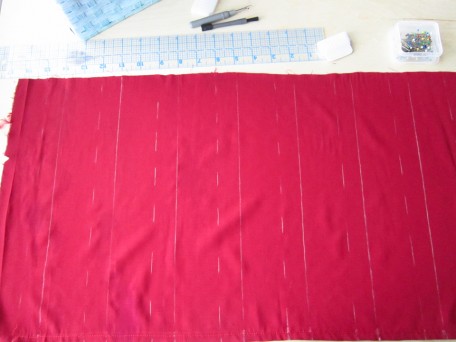
In the picture below, I have started pleating.
When I was done pleating and pinning, I laid the whole “shabang” on my sewing table that fits my sewing machine.
The best thing I can advise is to relax, be patient and realize that when you are done, you will feel like you have done something amazing!
The pattern instructions tell you to iron the pleats in before basting but I decided to baste them first. When I finished with the basting, I laid the pile of pleats gently on my ironing board and section by section, I removed the pins and ironed as I went. The thing that kept flashing in my mind was how much work it would be to iron all these pleats back in if I ever launder the skirt! Maybe I’ll be lucky and the pleats will stay even after a cleaning. Sheesh…given my luck though, this is probably a NOT!
So here they are all finished!
I was so fascinated with the pleats that I kept taking pictures! I know! I”m a dork!
So as to not mess up my nicely pressed pleats, I made the main skirt with the yoke and waist band separately and when they were finished… then I sewed on the pleat section. After I did this, the skirt was finished! I did have to remove a part of one section of pleats however because I shortened the skirt and I didn’t take into account that the width of the skirt would change at the bottom. However, trying to figure how this would play into the length needed of the pleat section would likely have broke my brain!
So the next order of business was the bustier. I have made more than a few bustiers and corsets and so happen to have on hand a number of corset making supplies. One of my favorite places to buy all my special goodies is Delicious LLC., Corsetmakingsupplies.com. They have pretty much anything you need. The Simplicity 2172 bustier is a really nice design. The finished front bottom reminds me of a vest and looks really spiffy under the jacket. Instead of interfacing, I used Coutil which is a fabric intended for corsets, etc. For the boning I used spiral steel boning that I purchase by the yard as well as the casing that holds it. You can buy metal ends to cover the boning after you cut it since it is pointy, but I have trouble getting them to stay on so I put glue on the ends instead. Below is a picture of the inside of the bustier after I sewed in my casings and put in the steel boning. I sewed the lining to the top, then trimmed the seam and pressed the lining flat like it would be when finished because I thought it might look better in the end. Alas… in the end I don’t think this was necessary but now I know.
I did change up the way I installed the zipper because I wanted it more hidden though this made things a bit challenging… not to mention that my separating zipper was a MASSIVE white plastic one! (I should have known better!)
And the front…
Now… remember how I feel about details. If I am a steampunk lady, then my ensemble will not be complete without accompanying the bustier with drawers! Yes, that’s what they were called. Edwardian drawers to be exact. Maybe you know them by the name “bloomers”. The pattern I used to make my drawers was the Folkwear 203 pattern.
The drawers in this pattern have plackets on each side, similar to long sleeve shirts. So far, I stink at plackets which is why I have been stalling making long sleeve shirts. Also, it is recommended to finish the seams using flat felling. I figured out that if I make a whole bunch of drawers, it might help me with my shirtmaking! Hmmm…
So this is the finished placket on one side. Notice that the back waist band folds over the front waist band (yes, they are separate) and fastens onto the button sewed on the front. The placket with the point is sewn on the back and so is not connected to the front. I am sorry but I forgot to get a picture showing how they open up… Crap!
For the flounce, I decided to use some lacy fabric that I have had FOR-E-VER! The width was not quite what the pattern called for but hey… remember – this is steampunk and so you re-use, re-cycle and re-invent!
And now, last but not least, the finishing touches… A mini Top-Hat which I am still working out the bugs on… like a way to easily pin it on my head, myself!
Decorative goodies…all the parts I found at a Super JoAnn store on the 60 to 75% discount racks which was so totally awesome!
And the perfect shoes! Where did I get them? I’ve seen them on various sites but I purchased mine at Clockwork Couture.
Okay… so now I need to show you the real deal and since I made it all, I guess I will show it all! My pesty spammers are probably going to really give me fits but hey, a girl’s got to do what a girl’s got to do!
So here is my bustier and my drawers…
Now for the rest of the ensemble! Mind you I was in a bit of a hurry and so unfortunately forgot my lace fingerless gloves and walking stick which would have made the outfit so complete. Oh well… doodoo happens!
The back of course…
And the only prop I could think of was a phone. It’s not steam powered machinery but it’s sort of techy, I guess!
So there you have it. Simplicity 2172 rocking steampunk. If you decide to make any or all of the pieces in this pattern and you have any questions, please e-mail me or post a comment. I will help you anyway I can.
We have about 6 more weeks before Halloween which means I will be delivering up 6 more costumes for you to view! Be sure and come back to check it out. Next week is mens week! Until then…
Salute! Jessica
Read MorePattern Review McCalls 6705
Well it’s September and you know what that means… yeah, summer is about over and school is starting but that’s not what I was thinking. The end of August and beginning of September means that the peaches have finally ripened on the trees and are ready for picking. An alternative band, The Presidents of the United States of America, rocked a song about peaches so I know I’m not the only one that’s got a thing for them! My children are also caught up in the peach frenzy so they most willingly helped me last Sunday, after our morning brunch, can 28 quarts of Canadian Harmony peaches and cook 16 jars of jam. The almost 80 pounds of peaches that we blanched, peeled, pitted and halved or chopped are now nestled in their jars and will rest in the pantry until their debut this winter. Yummy… can’t wait. Incidentally, peach jam is bodacious on scones!
So yeah, Summer is about over and for us Oregonians, the imminent rain will be arriving before long, but… I actually do look forward to the season change because this means having to spend more time indoors and getting back in full swing with my sewing. My projects have backed up on me, a basket full to be exact, and it’s going to take a bit to catch up. I’ve still managed to get a few things finished though, one being the McCall’s 6705 top which my daughter has been patiently waiting the whole summer for (I’m glad she loves me). Maybe I should rephrase my words a little and say that I made the top and THEN re-made it again! Stay with me and I will explain.
This is the McCall’s 6705 pattern.
It is designed for knit fabrics and the word “easy” on the pattern I can agree with! The instructions are easy to follow, only 3/4 of a page!
The fabric I used was a red t-shirt type of knit and for the lace overlay, a red stretch lace.
A useful tip: Baste the lace overlay onto the top, all around, and stitch the inner edges along the stitch line (1/4 inch) BEFORE sewing the front and back together. However, don’t baste and sew the lace clear to the edge of where the side seams will be; stop about 2 inches before reaching them. Remember, the lace overlay has to go over the side seams so you will have to fold it out of the way when you sew each of the side seams. With the first top I made, I did it per the pattern instructions, the 2nd time around I did it this way and it was a lot easier to stitch the majority of the inner edge of the lace before the front is sewn to the back. And when I had to finish stitching the overlay that goes over the side seams, there was a lot less sewing to contend with so it went pretty smoothly. (I still haven’t explained the top #1 and top #2 but it’s coming!)
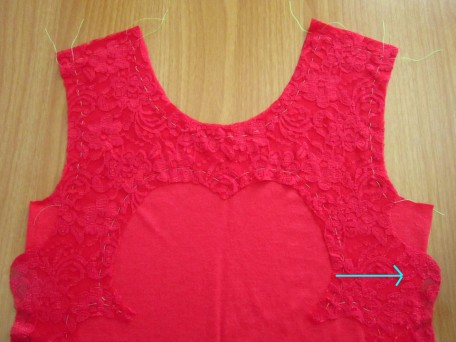
If you choose to apply the lace to the front first – remember not to baste and stitch edge of lace near the side seams. You can finish doing this after sewing the side seams.
A close-up of the basting in front.
After you sew the side seams, you can then baste the remaining lace overlay and then stitch it down permanently. The pattern directions aren’t just for directions! I inserted them between the front and back to make it easy to baste.
Okay… so this is where my dilemma started. I didn’t care for how the neck and arm bands were styled. There are 2 bands, one wider than the other, that are applied as one to the neck and each arm hole. They are a raw edge finish.
For the last several years, many RTW (ready-to-wear) tops have been made in this same fashion and quite frankly, I think its crappy looking! No doubt it’s probably part of the trendy shabby chic look that is great when all you want to do is put on some comfy kick around clothes when you are canning peaches or something else messy and work intense but… I don’t want that look on garments that “I” make! That’s just plain wrong! Against my better senses though I went ahead and made the neck and arm bands the way the pattern instructions were given so I could live to tell about it! In the end, I was not happy… not happy at all but it wasn’t the unfinished raw edges that were bugging me, it was trying to sew the 2 bands as one onto the neck and armholes and getting the finished edges equal widths from one another all the way around. If that sounds confusing, I’m sorry, but I think it’s one of those things where you have to do it to really understand.
Anyways, after I finally felt I had those damn things sewn on the best I could manage (cuz that’s how I felt about them), I was nearing the end. It was now time to cut the fabric off from underneath the lace and hem the top. It must have taken me a half hour or more to so very carefully cut that fabric off and when I was nearing the end… the last little section… those nasty evil scissors took control and snipped a substantial hole in the lace!
It was over! The four letter words came spilling out. I hated my Kai scissors even though I loved them before I started cutting the fabric from underneath the lace. I was more than pissed! I contemplated many things in that moment… chopping the damn thing to pieces with my evil scissors, burning it, or better yet, laying it out in the street and letting the cars have their way with it. Then… after a deep breath and a little dread for fear of her disappointment, I went to tell my daughter what I had done. All she said was “that’s a bummer.” Okay… wasn’t sure how to react to that! Did this mean she understood or did she just not care. It was a trap! It was then my turn to say something. So I did what I thought was the mature thing to do and said – I have enough fabric to make another one if you would like me to. She was thrilled that I was willing but wondered if we could do something different with the finished look of the neck and arms. Now that’s my girl! She has taste!
When I made the 2nd top, to change up the finished neck and armhole edges, I decided to just sew on bands like you see on a t-shirt. To do this, I took tracing paper and traced over the wider width neck and armhole bands but re-drew the pattern width of 1 1/4 inches to 2 1/2 inches. The original band is 5/8 inch wide with a 5/8 seam equaling 1 1/4 inches so by doubling this you end up with a width of 2 1/2 inches. After cutting them out, I just sewed the ends of each band together and then folded them in half lengthwise, wrong sides together so you have a circle and then applied them to the neck and armholes just like in the pattern instructions.
This is the neck band when finished…
And the arm bands…
Then it was time… being ooooh so careful, I cut the fabric off from behind the lace and it was a success. Absolutely no holes!
Well, there you have it. The photo shoot commenced this morning and I am happy to share with you the finished McCall’s 6705 top with my daughter wearing it!
The right side…
And the left side.
And one just because!
Calley really likes this top and wants one… or two… with long sleeves to wear this winter. Minus the lace overlay of course which is just fine by me!
I have mentioned it before, but as a news update – with October creeping up and Halloween in its grasp, costumes are going to be my focus in some of my up and coming articles! Hope you enjoy them. As for September events, the October fest at Mt. Angel here in Oregon is next weekend and yes… I am going, with my sons! They have a r-e-a-l-l-y big wine garden!
Salute! Jessica
Read MorePairing McCalls 6028 Dress with Simplicity 1797 Jacket
Living a glamorous life as a jet setter fashionista who also happens to be an Executive CEO is running rampant in my imagination while I walk through Staples, wearing my well worn flip flops from Trinidad, five-year-old faded yoga pants and a Converse T-shirt I got from Christmas last year. Definitely not a fashionista but hey, there’s nothing wrong with dreaming, right?! As for the Executive CEO… m-a-a-y-be she or he would be wandering around in Staples. So why am I at Staples in my gym clothes? Well, to either buy 2 tanks of ink OR a new printer. My ink guzzling printer has decided to not print in black, only color and is refusing to go into maintenance mode so I can do diagnostics until I feed it more ink! Yeah… there’s a rant brewing. You know the whole ink scenario. You can buy a printer for the cost of all the packages of ink that it needs to print! Well, I will resist the rant and say that I decided to toss my fate to the wind and sink $30.00 into ink with the hope that a nozzle cleaning after I fed the stupid thing would fix the black ink problem.
So let’s go back to my day-dream, the part about being an executive CEO. When I first saw the McCall’s 6028 pattern, I saw me, miss wishful fancy pants, wearing the sheath dress in royal blue with black trim shown on the envelope, in my fancy office with a fancy desk and lots of windows overlooking a city! I know…I’ve got a really big imagination 😛
That happened close to 2 years ago and I did buy the pattern, the fabric and made the dress. AND, it has hung in my closet since, unworn, because I made it too big and couldn’t convince myself to re-do it or toss it!
Then about three months ago I decided it was time to make a decision. Hmmm… it was tough but yep, I took it out of the closet and proceeded to remove all the trim, took out every seam and then.. then.. folded it up and put it in my future projects basket. Okay, so I was still stalling BUT… I had made a decision. Then last week, I am happy to say, I took all the pieces out of the future project basket and f-i-n-a-l-l-y went to work! I made a few discoveries in the process. 1) My fitting skills have improved immensely since I made that dress… obviously since it didn’t fit! 2) Some of my sewing skills have improved. 3) I have developed a lot more patience!
Okay… so the fabric is not quite royal blue but close. It’s a medium weight loose weave, sort of like a linen, but not! And the trim is a 1/2 inch twill that I learned you have to be careful of ironing because it’s very sensitive to heat! As you can see in the picture, I chose to not apply trim to the armholes because they fit so comfortably the way they are and I wanted no more boo boos!
A lining is not called for in the pattern however, you know me, the queen of lining, decided otherwise so I chose a soft blue china silk.
If you want to make this dress, no worries, the pattern instructions are fairly easy. I might offer a tip: Baste all the trim before you edge stitch it with your sewing machine. Its extra work but worth it since you have more control with the placement of the trim being centered over the seams. Learned this because I tried to short-cut it the first time!
I installed an invisible zipper, my fav.
I think the dress was designed for Amazons. I had to take 3 inches of fabric off the bottom before hemming it. This is where my height of 5 foot 3 inches shows itself! I had to get a little creative with the back vent because of the lining I put in.
Now, to go with this dress, I got this crazy idea to pair it with the jacket from the Simplicity 1797 dress that I did the pattern review Simplicity 1797 on.
The really cool part was that I still had some of the blue fabric left that I made the dress from, so last week I dug it out from one of my stash piles. I laid it out and placed the pattern pieces on it to see if I had enough and indeed I did!
The instructions were easy and I thought the jacket was fun to make. It has some interesting features. There are two pleats on each front, on the outside. When you sew the darts, you have to be careful when coming to the point of the dart. You have to be able to pull the threads to the inside and tie them in knots.
Basting the fasteners on is easy, it’s making them that can be a bit tricky. The easiest way I have found is to tie the thread from one end of the 3/8 inch stitching to a BIG hand sewing upholstery needle and then feed it into the casing eye first.
You next sew on the front bands by first finishing the edge which I did by pressing under 1/4 inch and then edge stitching.
Here is a close up…
This is how it looks after you turn it to the inside. I went ahead and carefully tacked it down after hemming the jacket.
Putting the pleat in the back confused me a bit at first, but once I figured it out, I felt like a dummy. On the inside, you simply create a pleat like a box pleat on a mens shirt.
On the outside it looks like this…
and close up…
The red thread is marking the placement for the tab that goes across the back and holds 2 buttons. Of course somewhere along the way the red thread came out!
Shoulder seams were the next part of the construction. I decided to finish the edges in a flat-felled seam because the fabric is real unstable and frays easily not to mention that I just wanted it to look pretty inside. This is the outside seam.
And my not so attractive inside seam. I do have a flat fell seam foot but this fabric is so loosely woven that it’s hard to take out a seam if I make a mistake and given that my flat fell seaming skills stink using the said foot (but not forever!), I decided to flat-fell by hand.
Applying the neck band I found a little tricky, partly it was just due to me but also I think because of the fabric. It easily stretched in all directions. I guess it’s that loose weave issue again! Or else I’m a DERP! Ehhh, I think I’ll blame it on the fabric!
Be careful when applying the facing band over the front edges…specifically the one with the fastener! I made sure the lengths were equal on both the left and right but then I got fussy with how bulky the fabric was looking on the side with the fastener so started messing around with it. When I was done, I should have checked the length of each neck band front one more time before top-stitching all the seams around the band but didn’t! I just hate it when that happens!
Underarm seams are a bit unnerving when flat felling seams. I maintained as much composure as I could and patiently worked on them for what seemed like hours. I first basted them down, and then edge stitched them just like with the shoulder seams.
And the inside…
The sleeves were easy enough. You machine hem and then top-stitch 4 additional rows. I forgot to take a picture of the sleeves to show you. They turned out fine though I noticed sort of a bell shape thing happening along the end of the sleeves. I could have pulled to much but I think I’ll stay with the fabric being stretchy excuse! Maybe with the next washing I can press this out.
I have some advice on making the tab. Don’t cut off the corners like you are instructed to do in the pattern directions. And stitch from edge to edge rather than pivot on the corners.
I learned this valuable tip from Peggy Sagers of Silhouette Patterns and forgot it when I made the first tab! Fortunately I had enough scrap fabric and so made another one. Also, if you can do what I will attempt to explain next, you should be able to get nice looking outer corners on your tab. For starters, don’t try to turn the whole tab right side out through the opening at once but rather work with one corner at a time. I found it easiest to start with an end corner that is not on the side of the opening. Fold down the top seam allowance of the corner at the stitch line towards the underside of the tab and while holding it in place, fold the side seam allowance of that corner at the stitch line over the top of what you are holding. Then while holding the two edges pinched together begin turning them right side out, leaving the inside of the other corner of that same end of the tab visible. If you have the look you want, then do the same thing to the remaining corner of that end. You will do the same for the other end of the tab. It’s not rocket science but it requires patience. I hope my explanation makes sense and is not confusing.
The finished tab…
The rest of the construction of the jacket is pretty uneventful. Some hemming and a little tacking of the front bands if you choose to though the instructions don’t call for this.
So here is me in the dress with all the “executiveness” I can muster after a visit to the doctor and some skin wounds!
The back of course…
AND with the jacket…
The back of the jacket…
And a tadaaaa!!!!!
I’m still not sure about the combination, but I love the jacket and will undoubtedly make other things I can pair it with! Oh… and by the way, almost forgot, my fiendish printer works again!
Salute! Jessica
Read MoreHow About Making a Coat
Summer is definitely here! We’ve had a lot of 90 degree plus kind of days and we aren’t done yet! Don’t misunderstand me though, I am not complaining. It’s pretty nice not being cold, wet and wearing fleece! And… what’s really cool and the best remedy for dealing with this hot weather is the quality mother-daughter time we get to spend at the ice area. Both my daughter and I love to dress up and wear high heels but at every opportunity, off go the heels and on go the skates! My life, as many of you regular readers may have already figured out, is an interesting marriage of interests but there is never a dull moment which is fine by me!
As for sewing, well… with all of this warm weather I seem to be getting behind on projects I have been working on as well as those I have been planning. My sewing room starts warming up about 11:00 and by noon I have to give it up and go chill out. Then my mind is free to contemplate on even more sewing projects. (digging a hole for myself huh!) And.. when it’s 94 outside, I have no idea why but I have been thinking about making a coat. To your next question, no, I have never made one before but I have made jackets with various tailoring techniques so why not? I purchased a book some time ago, like sometime back in the late 90″s (whoa, the 90’s are starting to sound sort of ancient), to learn to make tailored jackets. It was written by Pati Palmer and Susan Pletsch.
Unfortunately this book is no longer in print but I noticed that used copies are still available on their website. Amazon may also be a good source. A newer book was written to replace this one titled “Jackets for Real People“.
I’ve not had an opportunity to view it so I can’t convey differences but it looks to be loaded with pictures and quite possibly more information than my book. Despite which one you would choose to have, these ladies do a very nice job of explaining things so that even a beginning sewing artist, seamstress, tailor, or sewing enthusiast can understand and follow. Warm winter wool coats are not discussed in my copy of Easy, Easier, Easiest Tailoring, rather jackets and blazers, however, to me it seems that a coat is really nothing more than a longer version of a jacket with maybe an additional internal layer or two of fabric for warmth so I think the tailoring techniques in either book can still be applied.
I do sometimes question my enthusiastic confidence, especially when I get a notion like trying to make my own coat, so to be on the safe side, I did what lots of others out in the world do, I went to ask the oracle… the internets, about coat making. Interestingly, either I stink at surfing the internets or there’s just not a lot about coat making to inquire about. I did find bits and pieces, but overall, making a coat seems to be sort of uncharted territory. I did find a few patterns that caught my attention, each with one or two features that I want to include in my coat. There is the Simplicity 2311.
What I like most is the shawl collar, but I am not keen on the one piece sleeves and yoke in the back. It does have a double breasted front, a definite feature for my coat.
Another possibility is the Simplicity 1759 pattern,
This too is double breasted, has the 2 piece sleeve and princess seam style. Hmm… getting closer, but I still haven’t found exactly what I am imagining.
Not ready to give up, I next looked at the Burda 7855 pattern.
This pattern had most of the length that I am after. Actually I would like my coat to be ankle length.
Now here is where the heavy sigh comes in. A realization has hit me straight in the face like dung beetles zeroing in on poo! (actually witnessed this in the Amazon jungle) The coat I have in mind does not exist which means I am going to have to do a bit of design work. Actually a TON of design work.
Whenever I start planning a new project of any sort, especially with sewing projects, I have developed a skill that requires wasting lots and lots of paper; it’s called making lists. For whatever reason, this is the way my mind works and I choose not to argue with it because I would loose. So it was after I purchased all 3 of the above patterns, opened them up, compared pattern pieces, measured, and cut, that I realized it was time to “make a list” of the style and features I want my coat to have before going any further. It really wasn’t too awful.
- Princess seam style (with subtle flare at bottom)
- Full length
- 2-piece sleeves
- Double breasted
- Seam pockets
- Removable hood (for times when I am trying to save my hairdo from the rain)
- Lapel collar (I was thinking a shawl collar but I want a hood so I guess the hood cancels out shawl – unless…. I make a second coat – ewwwww, scary thought right now)
So my greatest hope at this point in time is that I can design this list of wants into the coat of my dreams AND get it finished before the cold weather really sets in. Well… time will certainly tell but for now, after a great workout today at the ice arena, it’s time for some cool refreshing beverages at one of our local hot spots, McMenamins Rooftop Restaurant and Bar.
We will sit and eat our delicious food, drink our fabulous beverages as I ponder coat making, new and unfinished projects and costumes! Yes…costumes! Halloween will be here before we know it and that’s when the artist that dwells somewhere within me comes out to play and then the real sewing artistry fun begins! But I promise that I will keep you updated on the coat extravaganza!
Salute! Jessica
Read MorePattern Review Simplicity 2703
Hope you all are enjoying your summer. Likely taking a holiday to some special place…the beach, the mountains, going home to another state or country, or visiting family and friends you haven’t seen for a while. If so, tell them I said hi! 🙂 As for me, well – not seeing a holiday in the near future… there just seems to be more work that needs to be done! My herbs, flowers, bushes and grass are in constant need of watering, especially in the 90 degree days we seem to be having quite a bit of. Who said we were approaching an ice age? Honestly though, I’m not really complaining because I love doing these seasonal things. It means that I get to spend more time outdoors, I get to appreciate the smell of flowers (though there is something with hot days and dog poop that I don’t especially appreciate) and I also get to do my yearly canning. Canning, you ask? What’s that! You know, I think it’s becoming a lost art. I was fortunate enough to learn it from my grandmother. I remember my visits to her house so clearly. The first thing I always did was hit the pantry, strategically planning my meals based on what grandma had canned since my last visit. My favorite was peaches! Naturally my children have been indoctrinated into canning and will help me (most of the time) when the fruits and vegetables start rolling in. Every year the pantry gets filled with the usual items for the winter months; peaches of course, raspberry, strawberry and boysenberry jam, apple butter, spaghetti sauce, spicy tomato and mango chutney, and of course pickled dill green beans which explains the picture above.
Somewhere though in all of this chaos, I still manage to find time to do my sewing which brings me to my latest project, a dress I made using the Simplicity 2703 pattern.
I bought the pattern back in February or March, I think, and then added it to my “collection” and forgot about it. I hope I’m not the only one that does that! Anyways, then in the beginning of June, when I was buying fabric for the McCall’s 6745 dress that I made, I stumbled across another fabric that I had no idea what I would do with but had to have. Now I know I’m not the only one that does that! There was only 2 1/6 yards left and I made it mine. So last week when it was time to start a new project, I pulled out this fabric and pondered again on what I should do with it. I contemplated designing something of my own, but it was hot, I was tired and so I decided to take the easy road and rummage through my pattern “collection” (notice how I’m avoiding the word stash – collection sounds more artsy fartsy!). Lo and behold, I found the Simplicity 2703 pattern and wow…my fabric looked almost the same! The point here is to say that I didn’t mean to do that! But… since it happened, I decided to go all the way and I even added the two rows of twill tape. So here’s the fabric which turned out to NOT be fine cotton which I had originally thought but instead sateen. The white fabric is a pongee.
The pongee is for the lining. Yes… I am a liner! I don’t line my garments to hide ugly seams since I am pretty particular with how I finish seams. I like to consider myself sort of an “haute couture” kind of girl. I should be clear though that I don’t always use haute couture techniques for finishing seams, but I am fussy. There is something about a lined garment that gives me the feeling of quality – maybe it’s what the RTW (ready-to-wear industry) has done to me! But it’s also that it just feels nicer to wear. I like to use china silk, but when I”m not sure I’m going to like a garment I’m making, I hesitate to splurge and spend the extra money so pongee is always my fall back. At $3 to $4.99 a yard, it’s a no brainer! Pongee does sort of feel like silk to me, is nice to sew and since this makes me happy I’m good with it!
It is such a pain in the derriere every time I start a new sewing project because there is a whole fitting process that I have to go through. My shoulder width across the front is about 1/2 narrower than most standard patterns, my bust cup size is somewhere between an A and a B and my torso length is about an inch shorter, especially noticeable in the back if I don’t shorten the pattern pieces in length. I have learned this through trial and ERROR! Depending on the style line, all of these details can be easy to remedy or become challenging. This dress did create a bit of a challenge for me because the darting happens in the neck line. I started off thinking I might not like this dress but after three muslins, I finally nailed it down and thought otherwise.
The pattern instructions are easy to follow. I did make one change – I added a skirt lining made from my white pongee by sewing it to the bodice facings that I cut out of the dress fabric.
The back tripped me up a bit. I initially sewed darts in the skirt back lining and then when I went to attach it to the bodice back facing, the skirt part was too narrow. It was a total DERP moment! I removed the darts, though now have dart markings that hopefully will wash out but hey… now they fit together perfectly!
Whether it was the fabric or the pattern, or both, sewing this dress went very smoothly other than the lining foo-bar. I wish all my sewing creations went this way. (I’ve still not gotten over the experience of sewing the Simplicity 1797 dress) As to some of the details – here is the bodice showing the neck line pleats and the two rows of 1 inch twill tape. The pattern calls for 1/2 inch but I wanted the trim to be more bold! What’s new huh!
Here is a close up of the neck line pleats.
The dress closes on the left side with a zipper. I used my favorite, an invisible zipper and so I did not sew the fabric and lining seams below it until after it was installed.
Well there you have it – a dress made from the the Simplicity 2703 pattern.
Now the moment of truth, a picture of moi wearing it.
The back of course!
And one for fun!
So there it is, another new dress! A special event is coming up this next month that I might wear it to unless I think of something else before then… it’s called “Dragging the Gut”. My youngest son and daughter are going to drive their cars and I’ll drive mine of course. Probably have some friends join our herd and we’ll all drag the gut for part of the evening, along with hundreds of others on a route that will take us down a main street of a town we live near. After a bit of dragging we will cruise on back home, have dinner and I will indulge myself with a glass of wine! Or maybe two! A hot August night adventure … can’t wait!
Salute! Jessica
Read More
Dressmaking or Shirtmaking
So I have traversed back and forth across a bridge that connects two arts in the sewing world, dressmaking and shirtmaking and the question is… which do I prefer to make? I’ll have to say it’s a hands down… BOTH! Each satisfies my creative passion and both help me to develop more skills to stuff in my “tool box”. Not to mention that it’s just awesomely cool to also know how to make mens clothes!
In the last several weeks, I have been hard at work (when I’m not elsewhere like Blues Festivals, smacking pucks around at the rink or working in my yard trying to keep my herbs, vegetables and flowers alive through this ongoing hot spell) designing a shirt pattern for my loveable beer connoisseur and sewing a glamor dress for my adorable pencil. Today I am going to share these tales with you! Sorry about the length. I know blog articles should be short, sweet, to-the-point, and not novels! However, if you meet me in person, the first thing you will learn is that I love to talk to people. Yes, I am a social butterfly 🙂
I’ll start my tale with the glamor dress. The pattern is McCall’s 6561.
I’ve made this dress before in white embroidered cotton and lined it with cotton silk. It has a 10 piece bodice that I had to totally re-design for my daughter because she was smaller than a 4 but a bit bustier. There is a post here at Sewlikeinparis, Pattern Review McCalls 6561 with more details and pictures but in short, while it’s not horribly difficult, it is a bit time consuming to make.
The fabric I used this time is shimmer satin in black and royal blue.
The pattern provides instructions for which pieces of the bodice should be cut from the fabric or the contrast fabric but we ditched those and my daughter marked the muslin bodice with her desired color scheme. This is the bodice front finished.
And the view of the back…
The dress has two gathered skirts, the instructions tell you to attach one to the bodice and one to the bodice lining. My daughter didn’t like the feel of the two separate skirts so I attached both to the main bodice this time. I didn’t sew the side seam and put in the zipper until after I had sewn both skirts to the bodice. There was a lot of basting going on.
Next, I installed the zipper first, then sewed the side seams. To be on the safe side, I decided that before going any further, I would make the straps and attach them so my daughter could try it on. OOOOh, it seemed a bit too snug for my liking but she felt it would be just fine. With hesitation, I went ahead and applied the lining and did the finish work.
This is the bottom of the dress with the layered skirts, one being a little longer than the other.
So yesterday was the official photoshoot for the McCall’s 6561 glamor dress but guess what? My pretty little pencil…
had at some point very recently, turned into a fine point Sharpie!
Yep, you got it… the glamor dress did not fit! Not even close! Because of this, there are no pictures to share this gorgeous little number with you because there is NO body that can fit into it. I had to go downstairs for a drink… of water, and when I went back to my room I found the dress hanging on my closet door frame. This is a nonverbal form of communication that as a mother I have learned to understand. My daughter is saying, “if you want me to wear this dress, you can fix it if you want, but I don’t want it in my closet taking up space if I can’t wear it.” I love my lovely fine point Sharpie very much and so believe it or not, there will be no more words and I will return to the fabric store in search of more matching fabric for a new bodice. I will see this experience as an opportunity for me to get better at alterations! (even though I really HATE altering anything!)
So, I bet you are wondering how the shirtmaking went huh? It too was quite an adventure. I have designed a final pattern which is a melting pot of three patterns, a draping, and a number of additional features that I discovered after studying one of my son’s better well-made RTW (ready-to-wear) shirts. It was after 3 muslins, an official attempt at shirt #1 which was an epic fail and my son’s fading hope that he would ever get a shirt when my bull headed determination saved the day and I finally figured it out! The next day after the celebration 🙂 , my son and I went to the fabric store and he chose this fabric.
It is 100% cotton plaid and the pale yellow is broadcloth which will be the contrasting neck stand (band). I think my son has figured out the magnitude of his good fortune because he picked out some additional fabric as well for his next shirt!
Cutting shirt pieces out in plaid fabric, I think, is an art of its own! The 1st shirt that was a bomb took me all day to cut out because of the matching game I was trying to play with all the horizontal and vertical lines. It wasn’t too long before I figured out that the more pieces you had, the harder it was to match things up! Therefore, I devised a method through my pattern design that made things much easier. I drafted two separate pattern pieces, one for the right front and one for the left front. Each piece includes enough yardage at center front that will fold over itself several layers, creating an interfaced placket for the buttons and buttonholes. Mind you, folding over the right side that holds the buttons is pretty easy, but it was the left side that holds the buttonholes where I got a bit creative. Ultimately you fold the center fabric edge backwards, right side to right side, then forwards and then under 3/8 inch, allowing for a 1/8 inch overhang of the left side over the right side when lapped and wide enough for 1/4 inch top-stitching along both edges. And on another note, if sewing on only one pocket, that goes on the left and good luck with that matching! Argh!!!!!
So many details… and this is only the beginning. I find myself feeling a little overwhelmed right now explaining since it was just yesterday when I finished the shirt. Maybe we’ll just look at some more pictures for now. Pictures that I could take!
This is the collar and neck stand.
I don’t have any specialized shirtmaking tools yet… like a point presser clapper for collar edges but I was satisfied with what I did. Holy crap! Just realized when looking at this picture that I didn’t top-stitch the collar yet! I am going to have to sneak it out of my son’s room and do that ASAP!
Pockets are not really traditional in high quality mens shirts but… with sportier shirts they are considered okay. I found it a bit challenging to match up all the lines so I decided to try first with one pocket. And… with an attempt to show off, I decided to go with a rounded bottom and while I didn’t do half bad, I think I am in need of some more practice!
Closer view of pocket…
I like the knife pleats I used in this one but with the next shirt, I am going to do box pleats instead which are done exactly at center point below the yoke and see which my son likes better. I also felled the seams on the inside around the armscyes. That was a dangerous time during the sewing of this shirt! That’s all I am going to say about that.
Speaking of felling seams… because the author of “Shirtmaking”, David Page Coffin recommended doing them using a foot rather than by hand, I heeded his advice and went and purchased one for my sewing machine.
I’ve concluded that if I did nothing but flat-fell seams every time I sewed, then I might eventually become a master flat felled seam sewer when using my felling foot! However, because I am really hating that damn foot right now, I don’t have much hope!
Ahem…. I did eventually succeed at flat-felling the side seams using the felling foot (It’s almost time to raid the wine rack!) I sewed the wrong sides of the shirt together and then flat felled the seam allowance. I will re-visit flat-felling for you in another post and explain it more in detail when I am over it!
Finally, you have to hem the shirt using a rolled hem. I did NOT use a foot for this (even though I have one). I have a technique that works well for me and so I stayed with it.
Step 1:
Step 2:
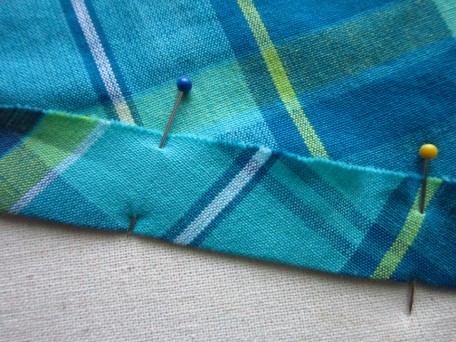
Next, I press, just setting the iron flat against the edge of the folded hem, going slowly and doing it section by section.
Step 3:
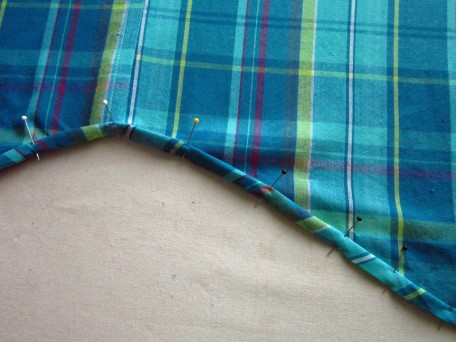
I fold the fabric over and under with the edge touching the inside bottom of the fold and pin again.
After step 3, I sew a 1/4″ seam along the bottom, then press again and this is the final look.
Of course, as a thoughtful addition I sewed on an extra button!
So the grand finale, my son with a hind sight view!
Being that he is sort of bashful, after some coercion and a bit of bribery, I got him to sit on a stool and smile!
To get this cheezy grin, he was thinking of his older brother who in a few hours will be off to a rally race competition in California. My son, Dylan, is a rally race driver with a passion for rally racing like I do for sewing… and obviously a personality that makes Jared smile!
Salute! Jessica
Read MorePattern Review McCall’s 6751
Well I made it to the Blues Festival this last weekend and it was fabulous! There were so many different blues artists playing on stages all over the park in downtown Portland. At midday on Saturday, my chicadees and I left land and stepped on the Portland Spirit and took a blues cruise down the Willamette River. The Sister Cruise, it was called, with blues singing sisters that rocked that boat! For a short spell, we stepped out on the lower back deck to see some sights and that’s when I took the above picture. I wonder what it would be like to live in a houseboat? Lived on a sailboat once for about six months (that’s another story!) but I don’t think that’s the same.
Anyways, I wore my latest dress, the McCall’s 6745 halter dress for this day and guess what? It happened again. When I was standing on the deck taking my pictures, the wind whooshed in and blew up the hem of my dress, I mean UP! It took me a couple of seconds to realize, but by then it was too late! I quickly grabbed the skirt of my dress and pushed it down, turned around and there was an elderly woman and her husband sitting in chairs watching me. I asked her how much I flashed and she said “well, quite a bit, but don’t worry, it didn’t look bad.” Hmmm… I wasn’t sure what she was saying but with as much dignity as I could muster, while holding onto my skirt, I gave my best smile and headed back into the cabin.
Maybe I should have worn a top and shorts instead of “the flashing dress” to the Blues Festival… if I had, I think I might have worn my new McCall’s 6751 top.
Mind you, I haven’t made the top shown above – it is top B. I made top A which shares the same front, but has a different back. Below is the drawings that includes top A.
Since the pattern is drafted for x-small through XX-large, I decided to throw my fate to the wind, pass on sewing a muslin, and just cut and sew! I was using some fabric that I had in my stash so other than the time I would spend sewing it, I wouldn’t be out anything so why not. I usually wear a size small so I decided to stay with this size, but I did adjust the pattern pieces to be medium at the waist because sometimes RTW (ready-to-wear) tops tend to be a smidge tighter in this area than I like.
The fabric that I used is a pale pink rayon and has a slight stretch to it. I didn’t particularly like sewing it. It was kind of like sewing peach skin fabric which I will never be sewing again, don’t like to sew that stuff at all! This rayon was not quite that bad, nonetheless, the 2 yards I have left may never see my sewing machine.
The pattern instructions are really easy to follow, however, I am not real fond of the finishing technique used for the neck and armholes. Maybe it’s me, but I cannot get a nice finish in these curved areas by simply folding the fabric into a narrow hem. The second technique they suggest is to use bias tape. I am not a big fan of packaged bias tape – yes, I have used it, but it feels and looks sort of cheezy to me. Instead of either of these, I opted to make my own bias tape, which I made from the pink rayon and used my Clover Bias Tape Maker.
It comes in two sizes, 1/2 and 1/4 inch. I have the 1/2 inch. Using this little gadget is the easy part of making your own bias tape. The work comes with cutting out your strips and sewing them together. An important point in your success is making sure you cut every strip a width of exactly 1 inch. Sewing it to the neck and arms can be a bit tricky too, especially with certain fabrics like pale pink rayon.
When it was time to apply the bias tape, I baled on the instructions and attempted to do my own thing. While writing this review and re-reading the pattern instructions, I now realize that I made it harder than it had to be so I will not even explain what I did but I’m such a dork! You can still follow theirs using your own bias tape and be just fine.
I wanted to add my own touch so I opted on making a pocket different than the one given with the pattern. This is what I ended up with.
The back is interesting. I’ve seen lots of tops in clothing stores in this style and really like the look.
Wearing them is sort of different though. Still not sure what I think, but this is it.
And then there is the front view of course!
I still haven’t decided whether I want to make top B or let it rest. If I did make it, I’d get more practice making bias tape and applying it… hmm… guess I will be making top B after all! When we started our photo-shoot, my daughter informed me that she wants one of these too. I guess you know what that means… it’s time to start drinking this glass of wine!
Salute! Jessica
Read MorePattern Review McCall’s 6745
We are having a heat wave here in Oregon, first one for the summer and given that this is Oregon, it could be the only one. Some dismiss us Oregonians as whiny because our warmest days don’t usually get much higher than 99 to 103, but keep in mind that we have few of them, so how can we get use to them. AND there are many of us who do not have air conditioning! Why? Well, most of the time we are wearing fleece so why do we need air conditioners?!! This is heat wave day 4 (89 , 91, and 95 for the last 3 days) and my house is barely cooling down enough to be able to sleep at night. I have looked so forward to the summer because I was tired of cold and rain… I am determined not to get grouchy, to stay positive, to stay cooooool. Speaking of cool, this weekend is the Blues Fest in downtown Portland and since the temperature prediction is the high 80’s, I plan on wearing a dress that I recently finished, one that I really love, made with the McCall’s 6745 pattern.
I think what fascinated me most about this dress pattern was that piping was used to trim the bodice. Piping creates a look that has always caught my eye when it is sewn into a garment. I have used it enough times that I eventually purchased a piping foot for my sewing machine and it makes the job much easier. The pattern instructions say to use a zipper foot…I don’t know about that. I would love to hear from anyone that has tried sewing piping with one.
This is what my piping foot looks like. I have a Husqvarna 750 Platinum.
It took me over a month to find fabric that I could see this dress in. I loved the colors in the fabric of the dress shown on the pattern envelope but I’m not big on the southwest look. I do love teals as well as the deep cobalt blue that I’ve been seeing in lots of RTW (ready to wear) garments shown in magazines but alas, no printed fabrics with these colors in either fabric stores or on-line fabric stores. What’s with that! I probably know why but I won’t go there because it could cause me to rant.
I eventually decided on this, far from blue, but I really love this color too. (wow-I just rhymed) The fabric is fine cotton and for the lining I chose a salmon colored voile.
Before cutting into my beautiful fabric, I did what has become habit, made a muslin. With experience I have learned how much circumference I need for my hips and waist so I chose not to make the skirt part of the dress, just the bodice. Thank goodness because there was naturally a fitting issue. It seems to always be the same for me, the area just above the bust and next to the armhole. I need a size 8 everywhere but this spot. I decided to try something different since up until now I have remedied this problem by making adjustments to either the shoulder and/or center front neck, though neither really fix the problem that well. I have to share this even though this is suppose to be a pattern review because it was a major revelation for me!
I first traced the front pattern bodice piece on tracing paper. Next, I marked a spot 2 inches up from where the armhole starts. From here, I made a second mark 1/4 inch further up from this mark. Using these two marks, I created a dart drawing a line from each all the way to the top point of the waist dart. After briefly admiring my lovely new dart, I cut it out! I then drew a line from the bottom of the waist dart at the center between the two dart legs, all the way up to almost the tip of the lovely new dart I cut out, leaving a smidgen of tissue paper to act as a hinge. (the standard method is to cut the waist dart leg closest to the side seam but I was was in experimental mode, and being a rule breaker, as usual!) Using the hinge, I then swung the section of bodice nearest center outwards closing my lovely dart! Essentially what I did here was to remove the extra fullness at the armhole I didn’t want by first drawing in a dart that would remove it but then moving that dart and it’s fullness to the waist dart. It was then the final test. I made a 2nd muslin and when I tried it on, I tasted sweet success (like eating chocolate if you are chocoholic like me). It worked!
Now back to our review. The pattern instructions are clear enough to understand, but I would consider this pattern to be an intermediate skill level, partly due to the piping, but also because of the pivoting that happens in the center front of the bodice and all the pleating in the skirt. I am not sure if I pivoted properly, but did achieve a look I could live with. It might have been easier if piping had not been involved! (Sounds like I’m dancing)
The darts are to be cut open and ironed flat. By doing this, you distribute the extra fabric of the dart evenly creating balance. This is an haute couture technique which I love, but you certainly need to be sure that you have done your fitting because once it’s cut, there’s no changing anything!
I basted the piping to the bodice but had a difficult time removing the thread after sewing the bodice and bodice lining together. I used the loosest stitch my machine sews. I try to always remove any temporary basting after the final seam is sewn because the fabric seems to lay smoother, especially when there are a number of layers.
With the bodice finished, I was ready to move on to the skirt. Be warned, you will need some patience for this. I made all my markings for the pleats on the wrong side of the fabric but the picture instructions show you how to do the pleats on the right side of the fabric. Maybe the best way to do this would be to make tailor tacks (marking all the large and small dots with thread) on the right side but because I was not paying a lot of attention to the pictures when I first read the instructions, I missed this kind of important detail. There was a whole lot of pinning and I think a whole lot of swearing going on and fortunately the fabric I was using was forgiving of the pins and me!
The two back pieces each have four pleats.
The front has two double (yes double) pleats on each side of center.
Here is a close up so you can see what I mean when I say double. It may be a bit confusing looking at the picture, but the main point here is that I want you to know that two pleats are stacked on one another which I found sort of confusing at first when following the instructions. I need to find out the techy way of putting pointers on my pictures so your eyes are directed to what I’m talking about. I’ll get there, soon, promise 🙂
I was a little worried about the thinness of my fabric and the skirt without a lining since it was not called for but when I finally finished my skirt, I knew exactly why there was no lining. And I certainly didn’t need to worry about see through. There’s a lot of fabric in that skirt, especially when it came to having to hem it. I made a 1 inch hem instead of a 5/8 inch like the pattern recommends since dresses are usually too long for me. Now I wish I would have made it a 2 inch hem but it took me an hour to sew by hand so I think I’m good with how it is!
So here’s my dress!
And the back.
Notice the interesting color line on my back. Got this after 20 minutes in the sun watering my plants on Saturday. Lots of Aloe Vera Gel for the first 24 hours!
So there it is – McCall’s 6745. I’m not sure if it’s the fabric or the style of dress but I feel girly when I wear it. Several weeks ago I wore it to an American Sewing Guild Garment Lunch and when I left the restaurant, the wind caught my skirt and blew it up. I mean UP! It was sort of a Marilyn Monroe moment but I wasn’t feeling very Marilyn. I was worried more that someone saw my butt! Oh well – it made for an interesting moment. Wonder what I should expect this next weekend at the Blues Festival. Part of the day I will be on a boat cruise floating up the Willamette River listening to Blues singing women and drinking wine and the remainder of the day sitting in my beach chair, listening to more blues singers and socializing. Hmm…I’ll have to get back to you on that!
Salute! Jessica
Read MorePattern Review McCall’s 6754
When I first saw the Eiffel Tower, I was awestruck. It was gargantuous! No doubt I looked like the typical tourist at the time, snapping away on my camera, picture after picture. It was a magical moment for me that is hard to describe and one that I will never forget. So when I saw the McCall’s 6754 pattern with the model standing in front of a back drop picture of the Eiffel Tower, there was no question… I had to get that pattern. Yeah for me that it happened to be a dress – I love dresses because they are so feminine and to me, this dress had a look of french-ness, especially with the Eiffel Tower in the background.
The pattern is designed for knits and instructions suggest a stretch lace specifically for dress B, the adorable one shown on the envelope. It’ rated as an “easy” pattern and I would agree, however, if you plan on making dress B with stretch lace, get ready for a LOT of hand sewing. Both the dresses and tops require 1/4 inch wide elastic in the waist. I personally do not like using elastic because it feels to me like I am cheapening the quality of a garment that I have poured my heart and a lot of time into. But… the design utilizes the waistband seam allowance as the casing to hold the elastic so it is a lot less intrusive to the outside appearance which eased my mind quite a bit.
For a test, I decided to first make the sleeveless top that’s like dress B from some left over knit fabric that I had when I made McCall’s 6708 sweater.
It fit quite nice aside from the neckline in both the front and back which hung so low that my bra was sticking out majorly, a demi-bra that shows some cleavage! I wasn’t sure what to attribute this to. It could have been a combination of things: the knit fabric I was using, my shoulders may be more sloped downward than I thought, or just maybe the pattern size I was using was to big. Whatever it was, I managed to repair this problem somewhat in this top through shortening the shoulder straps but decided that when I made the dress, I would add 3/4″ to the neckline on both the front and the back and definitely do a fitting right after assembling the bodice to the skirt before I started finishing the neck and armhole edges.
Now that I was armed and dangerous, I went to what I thought would be a decently stocked fabric store to get some gorgeous stretch lace and 60 inch wide tricot for my french-ness dress. Mind you I was really hoping to find fabric just like what was used for the dress shown on the pattern envelope. I bombed! There was only one lace that was stretchy, 60 inches wide and red…too red and I would later discover, really snaggy!
Then there was the 60″ wide tricot that I needed… well forget that! There was nothing, nada, zilch, zip, zero in white. It was suggested by one of the ladies at the fabric store that I try using swimsuit fabric which I did. DON’T DO IT! I think it is too heavy and the skirt of the dress will not have that billowy or light flouncy look you see on the envelope.
So… moving right along, remember all that hand sewing I was talking about? It starts when you are done cutting out the lace pieces AND the underlining pieces. ALL the lace pieces have to be basted to their matching underlining pieces (in stitches that can easily be removed) and then handled as single pieces. I did not take pictures to share because I was too busy basting and forgot! I used green thread that looked obnoxious which was my intention because then I could easily see it to remove it! When I finished, I begin the assembling.
For finishing the seams, I decided to pink the seam allowances so there would be less bulk. I think I need new pinking shears because they kept catching on the two fabrics.
After attaching the bodice to the skirt, I was ready for the moment of truth…would the front and back neckline adjustments be positioned properly and would the shoulder straps be where they were suppose to be? YES!!!!! All was right in the world EXCEPT… I did not like the red over-lay look nor did I like the way the skirt hung. Remember what I said earlier about the fabrics I used? The way too red snaggy lace and the heavy swimsuit fabric… Well there was nothing I could do. The dress was almost done. I would not blame myself I decided. These were the only fabrics available to me at the time and being the determined person that I am, I gave them a whirl. Now I felt like whirling the damn dress into the garbage! But… I decided I would be better than that. I would think positive… see the glass still half full! I had successfully made a dress hadn’t I? It fit perfectly, and as my daughter timidly added, “it would be real nice to wear for a day on the beach”. Okay – so there it was. It’s not a french-ness dress, it’s a “beach-ness” dress and I can live with that, I think? So all that was left now was to sew in the hem.
Oh yes, more hand sewing, lots more hand sewing! Why not use the machine? Well… early on I had decided that the lace overlay would have a richer look if it didn’t have machine stitches in it which proved true when I hand sewed the neckline and armholes. Therefore, I decided to hand sew the hem as well. It took a while but eventually I finished. I then hung the dress in my closet for a few days before looking at it again to decide how I felt about it. With a little reluctance, I decided to have the official photo shoot so you could decide for yourself. Is it a “french-ness” dress or a “beach-ness” dress?
Personally, I have concluded that it is definitely a red wine drinking dress so with that… it’s time for a glass of Pinot Noir!
Salute! Jessica
Read MoreShirtmaking Part 2
So… as you may have already figured out, the shirtmaking continues and it’s quite Da Bomb! (slang for excellent 🙂 ) My son is eager for me to make shirts for him so he has been very cooperative and so far, patient. Hopefully our recent live draping will help get me to the point where I have a working pattern so I can get busy and be a shirtmaker! You are wondering how the live draping went huh? Well that’s what I am about to talk about but first I need to bring you up to speed.
Like I said in my last article, I made a muslin using the McCall’s 6044 pattern.
MCALL’S 6044
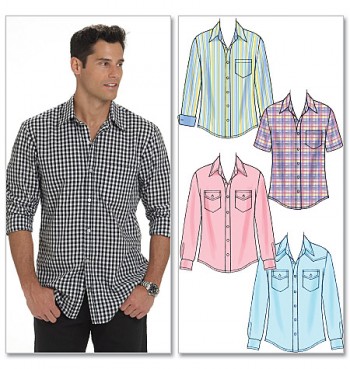
When I had my son try it on, he was swimming in fabric. So…while stewing on what to do, I perused the internets and stumbled across “Drafting The Men’s Shirt Block” on the BurdaStyle.com forum website. It was provided by gedwoods, a Canadian scientist who has a passion for sewing. It took me a bit but I was able to figure out the instructions and drafted a decent pattern. For giggles, I laid the McCall’s 6044 pattern pieces on it and they were quite close. Too close, so I didn’t see any point in repeating history by making another epic fail muslin. At this point I was sort of at a loss, so I threw in the towel that day and went to the library with my son.
My spirits however, were lifted on that library excursion. I FOUND the book “Shirtmaking” by David Page Coffin. I could kiss that man! He shared so many words of wisdom in that book and even provided instructions on how to drape a live person! I had a hallelujah moment! I just recently finished taking some draping classes, and while not a master draper as of yet, I could easily see how draping a real person could be so beneficial. I would just have to go easy on the pinning!
Mr. Coffin gives a list of things needed for his draping method that of course requires muslin, of which I was fresh out of, so this meant a trip to the fabric store. While there, I thought I would check out the Simplicity patterns since they were 5 for $5.00. Guess what?!! They had a mens shirt pattern (also for ladies) and so I picked it up as well.
This new pattern comes in medium, large and extra large which was another OMG moment because it turns out that my son’s shoulder width is about medium, even though his neck is an extra large. We were both pretty surprised by this discovery.
Mr. Coffin’s draping method starts with first fitting the yoke on your subject. He feels the yoke is a basic element of a shirt and so feels it’s an important starting point. The McCall’s 6044 pattern did not have a yoke that you sewed onto a back piece section to make a whole back piece, but rather a decorative western yoke that you sew on the full back. However, the Simplicity 2741 pattern did have the actual yoke so I opted for using it as my jump off point. In the picture below, the back of the shirts show the yoke that I am talking about. In the diagrams, just below the yoke are knife pleats. Another version is the box pleat where the same ease of fabric is pleated exactly at center point.
So it was last night, after I prepared my front, back and yoke that the draping commenced. Oh yeah! Almost forgot. There was also another item on the supply list. The bribe!
So with all my supplies gathered up, yesterday evening my son and I headed for the kitchen. The place a guy doesn’t mind being stuck in for a while. I think a kitchen is sort of like a man cave in that you can find comfort in the food and beverages located there!
Step 1: We started with the yoke of course!
See (above) how the yoke was too wide. The left side is still hanging down over the shoulder but on the right I have already pinned in a pleat which I will do for the left side too. This is not really the proper way to do this but I didn’t want to leave my son sitting and waiting and take the risk of losing him as my model. I pinned out the length as you can see on the right.
I simply made a 1/4″ pleat on each side making a total of 1″ that I removed from the width of the yoke.
Also, when cutting out the muslin yoke, I allowed for 5/8″ seam allowance on all sides except for the neck which was 3/4″. As I smoothed the fabric down from the center point, working outwards towards the shoulder ridges, I clipped down the allowance around the neck one section at a time, being careful not to clip below the actual seam line. As you clip, you can see where the fabric begins to relax and smooth out. Eventually I ended up with what you see. Here is the yoke at the proper width and positioned in place with pins…
All ready for step 2: Draping the front
So to do this, you have to prepare a piece of muslin that is the half the circumference of the fullest part of the body (chest or waist) plus several inches extra on each side and the length desired plus about 3 inches. Next, fold the fabric exactly in half lengthwise and draw a center line starting at the neck and drawing downwards. (The author gives so many details that sometimes I think the directions get a little confusing. I am trying to share with you as much as I can about how you do this, but some of it, while not really hard, is just hard to explain. You need to actually see it being done) Anyways, I drew the line the full length of the muslin piece. This line is not only your center-front but also your grainline or point of reference. When you are pinning it to the front yoke sections, that line should always stay perpendicular to the floor when your model is standing. Mine actually sat a lot! He sort of had to though because I am 5″3″ and he is 6″3″.
Mind you the neck I found to be a bit tricky. I am still not sure what Mr. Coffin was telling me to do. You are suppose to use your thumb and forefinger to measure the distance around the front half of the neck and then apply that measurement minus 1/2 inch for drawing your neckline. I sort of winged it. The important thing here is that you will need to draw a small u- shape or more of a half circle at the neck position, but the fabric needs to fit as snug as the model will allow! My son was feeling like he was wearing a bag and wouldn’t let me take pictures of his face and neck. I get it though and I won’t fault him.
Next, you want to pin the front fabric piece at the center front line you drew, to the model’s center front TIGHT t-shirt that you have conned them into wearing for this wonderful experience! A second pin should be placed as well at center waist holding the fabric to the t-shirt.
So here is the front piece pinned to the right front of the yoke. I started by taking that corner on that side of the fabric and lifting it to remove drooping and smoothed it up over the yoke front, making sure the grainline was perpendicular to the floor. While doing this I had to snip the neckline a bit just like I did in the back of the yoke to get the results I wanted. Notice next to the green straight pin on the right that I marked his shoulder ridge. I did this just because I wanted it as a reference point for any reason I may need it for!
When you have finished fitting the front on both sides, you need to mark at the point where the yoke seam meets the front from neckline to the armscye ends with dots or dashes. Also make sure to crossmark at the armscye ends. I also marked as best I could, the center front armhole (armscye) point (where the center screw is in a dressform) and the underarm point where it meets the side-seams.
Step 3: Draping the back
Now you need to cut or tear a piece of fabric that is the other half of the full circumference of the widest point of the body (chest or waist) plus several inches extra on each side that you will also mark with a center line like you did for the front. You don’t need to worry about building in pleats at this point in time. Those can be added later when drafting the final pattern. The center line has to stay plumb or perpendicular just like with the front, only this time it should be a bit easier because you are only fitting to the bottom of the back yoke. Start by pinning the fabric at the marked center line to the center back yoke seam line with about a 1 inch over-lap. Also pin the fabric at the level of the back waist to that tight t-shirt. Then continue draping by lifting up the corners, one side at a time and gently pulling them up and over the yoke pinning as you go.
Once you have the back piece fitted and pinned the way you like, then mark with dots or dashes or both like you did on the front yoke shoulders. Also be sure and cross-mark at the end of the armholes (armscye). Here again, it is helpful to mark a point at the underarm and center back armhole (armscye). It won’t be super accurate, but at least you have a reference point.
The beauty of Mr. Coffin’s shirt draping method is that after you finish these steps, you have essentially finished with the draping. The next step is to return to the shirt pattern of your choice and transfer the armholes (armscyes) from the pattern to your draped shirt muslin. He gives instructions on how to do this, but his instructions get a little murky for my understanding so I will have to leave you to it at this point. As for the sleeves, cuffs, collar and type of front closure, there are an abundance of suggestions and tips in the book, but as a designer, you are on your own or you can fall back on a commercial pattern if you want to. I know this doesn’t help those of you who need further directions and I am sorry about that. You see, I am totally at the winging stage now and so I don’t want to take you off course or give bad instructions. Actually, I didn’t know I was going to write a “how to”. It just sort of happened! Consequently there may be some weaknesses in my instructions so please send me an e-mail with any questions you may have and I will do my best to help you out.
My draping muslin is hanging on Elizabeth (my dress form) right now waiting for my son to get home from work so we can put it to the test! I will give you an up-date soon along with a pattern review for McCal’s 6754 and McCall’s 6745. But for now, I have to go make tacos for dinner. Hmmm…wonder what kind of wine goes with tacos?
Salute! Jessica
Read MoreShirtmaking Begins
Sewing for my daughter is lots of fun. Not just because I get to sew something and it happens to be for her… there is a whole lot of stuff that happens. There is the choosing of the pattern and fabric that gives us the opportunity to spend some time together. And then there is this communicative thing that happens between us. We talk about our likes and dislikes, our favorite colors, what trends we like and what we absolutely hate! We talk about what looks good on her and what looks good on me. She becomes my confidante/fashion apparel assistant adviser. And in all of this, the mother-daughter bond is ever strong (most of the time). So.. how do I improve the bonding power in my relationships with my sons using the sewing approach? Easy! By shirtmaking (hopefully).
Unless one is fortunate enough to have a shirtmaker mentor, you will be forced to start off like I did and visit your local fabric store, looking through the pattern books hoping there is a men’s pattern available. I did find one that I thought I could live with.
McCalls 6044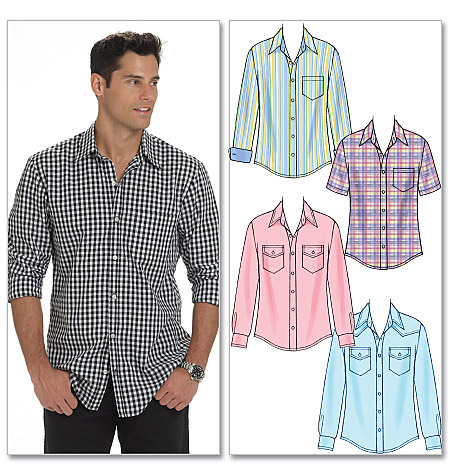 I could live with him. Hey! I’m human.
I could live with him. Hey! I’m human.
Ahem…My shirtmaking career is going to start with my first victim, Jared, so I selected an x-large pattern size because that’s what he wears in RTW (ready-to-wear) shirts. Now I know better than to think that this shirt is going to be an exact fit so before cutting out anything, I decided to get lots of measurements. First of course were my son’s. The next were from a shirt that fits him comfortably. I measured the neck, the shoulder length, the armhole (armscye), shoulder width, chest, waist, hips and shirt length.
The pattern measurements were almost identical to the RTW shirt so I figured I would push on to making a muslin (with a little tweek of course). I wanted a traditional yoke in the back, not a western styled one that comes with the pattern so I changed it. The result… well the neck fit really nice, but from there, let’s just say I was pretty disappointed. No…it was not because of my change in the yoke. You thought you had me there huh! These were the usual fitting issues that seem to happen every time with any pattern. The shoulders hung almost 2 inches over the ridge points, at chest level we needed to lose about 1 to 2 inches and the armpit area was full of extra fabric. “Awe crap” were naturally my first words. So then I made him try on his RTW shirt and discovered almost the same problems. I had a revelation! Besides the fact that I am finally figuring out fitting problems and recognizing them easily, more importantly, men have become comfortable wearing crappy fitted shirts!
This is where the bonding thing was suppose to be happening between me and my son but from his perspective, I think there is a bit of confusion. I think he is thinking, it fits him just fine so why not make the shirt and be done with it. I on the other hand want to make him the best shirt he could ever have. It’s a stale mate… a Mars vs Venus! So he walked off, thinking about cars, girls, making videos, drinking a beer.. whatever guys think about, and I did the only thing I could think of… I asked the Oracle (the internets!) what she knew about shirtmaking.
I learned quite a bit during my visit to the Oracle. There are some pretty nifty bloggers on the internets who share a wealth of information about shirtmaking.
Peter Lappin, of Malepatternboldness.blogspot.com is a very interesting gent whose blog I will continue to enjoy reading. He talked about felling seams when shirtmaking, totally groovy information that I hadn’t even thought of!
Pamela Erny, a custom shirtmaker who shared her split cowel collar design on her blog site, Off-the-cuff-style.blogspot.com that I can’t wait to try.
Geoffrey Edwards, blog writer who posts on the BurdaStyle.com forum website under the name, gedwoods. To my delight, one of his postings I found on the forum was “Drafting The Men’s Shirt Block”. Interestingly, he is a Canadian scientist with such a passion for sewing that for the past five years has developed and designed a new clothing line, “g-moda“. Last night I drafted a shirt for my son using this gentleman’s drafting instructions and it turned out quite well visibly. The next test of course will be to make a muslin.
And last but not least, David Page Coffin, author of “Shirtmaking”. His book was recommended in a number of the shirtmaking blog articles I have read.
The beauty of this book discovery was that day-before-yesterday, while perusing the sewing book section in my local library not expecting to find much of anything, I stumbled across this very book! What a wealth of information. It’s so awesome that I have been reading it like a novel! It’s gonna be another one of my sewing library requirements! What’s more…he walks you through his draping technique, step-by-step, in the creating of a shirt, on a real man! You know what this means don’t you. I have briefed Jared of my intentions and noted a rather grim look on his face. There is no doubt in my mind that a six-pack of Newkie Brown Ale will appease his concerns and sweeten the deal! There will be an up-date soon on my shirtmaking career including the live male draping. Almost forgot to mention, straight pins will be involved!
Salute! Jessica
Read MoreDraping Fashion Designs
Some fabulous ladies to drape with!
Well…I have finished all my draping classes and learned right from the get-go that my biggest challenge was overcoming the feeling that I was wasting fabric. I am not a hard core recycle queen, not even remotely close, but as we cut, tore and marked our muslin and rayon for all the different projects we did, I had a struggle going on in my mind. Kinda weird, I know. Maybe this was in part due to the fact that at times it’s hard for me to find the extra funds to purchase fabric for my own sewing projects so to use up almost 14 yards of muslin and rayon for these classes gnawed on me. I had to keep reminding myself of what I was gaining in this process and believe me, I truly gained a lot!
To start off, let me first officially introduce you to “Wolfee”. Her and I worked quite well together. Since she is almost exactly my size, this means that everything I draped, with a few small adjustments, I will be able to use to make garments for myself. Pretty cool eh!
She is wearing black soutache braid for style lines.
Our instructor, Catherine Stephenson, Custom Couture Clothing, was awesome. She shared a wealth of information as she walked us through our draping projects, providing both group and individual guidance.
Catherine showing us how to drape a cowl neck.
Some of the draping techniques Catherine used were from the book, “The Art of Fashion Draping” by Connie Amaden-Crawford, a designer for The McCall Pattern Company under the Butterick label. It’s a bit spendy but will certainly be part of my sewing library one day soon.
In the first session of classes, we learned the importance of grain lines and cross-grain lines since these play a major role in the draping process. Another crucial part of draping is being precise and consistent when marking the draped and pinned muslin pieces since these markings are the lines, notches and bust, waist and hip levels that we rely on to construct the garment. The learning curve started flattening real fast for most of us with this part of the draping process. It’s kind of difficult to take pieces of fabric off of a dress form and then pin them together to form a garment if you can’t figure out what your markings mean!
I think our Christian Dior jacket was one of our high points in our draping projects. After finishing, I knew where I should have been a bit more careful in my draping, but nonetheless, I think that if I can fix a few discrepancies, it could serve as a functional pattern to make a jacket for myself…aside from the crappy collar. I was not happy with it at all. It was a project we did earlier and I didn’t know that it was going to be what we would use for the collar of this jacket.
Princess bodice done and now making peplum.
Notice the batting around hp area. It was to ensure more fullness in the peplum.
Finished front of Christian Dior jacket with my crappy collar!
Back of Christian Dior jacket.
The final garment we draped was done on the bias! I have not worked much with bias though have been wanting to. I didn’t realize the complexity of just what happens when you cut fabric diagonally. Sheesh! One thing for sure, I will definitely have plenty of stay tape of some sort on hand when I create a bias garment
A cowl Neck
And the potential dress with a cowl neck
So guess what? Draping is a dying art. Many accredited fashion schools have removed draping from their fashion design programs because they feels it’s an obsolete technique. Since much of the design work these days is taken from drawings to computer pattern design programs, I guess technology is draping’s downfall. And get this…the ability to sew is not considered a requirement of a fashion designer. If you are talented enough to be able to design, you leave the sewing to someone else. Hmm… It sounds to me like being able to construct a garment through sewing is not considered very honorable let alone glamorous. Right about now I bet you can feel a rant coming on cuz I sure do!
Well I suppose I better show you that my draping classes were successful in showing me how to drape. If you are a returning visitor, you have seen a picture of some pastel green fabric with embroidered pink polka-dots. If this is your first visit, well…I used this fabric to make the princess-seam line dress that we draped in one of our classes and here it is.
I wore this to one of our last draping classes since Catherine had challenged me to make it and I knew I couldn’t chicken out. I felt a lot of sweating going on when she said take your sweater off and let me see. Fortunately this was not a full fledged test, but if it had been, from the smile on her face, I think I might have got an “A”.
Salute! Jessica
Read More
Wolf Dress Form Draping
This is Elizabeth. Yes, I am referring to my dress form in the picture above. She is not vintage, but she is a bit aged, about 17 years to be exact. We have collaborated together for many many projects over the years, never fighting or arguing… and she has patiently stood for hours while I repeatedly shove pins in her, never complaining. I know she would be crushed if she knew I have been working with another dress form! The dress form is a size 8, has long slender legs and her name is “Wolfee” (my pet name for her).
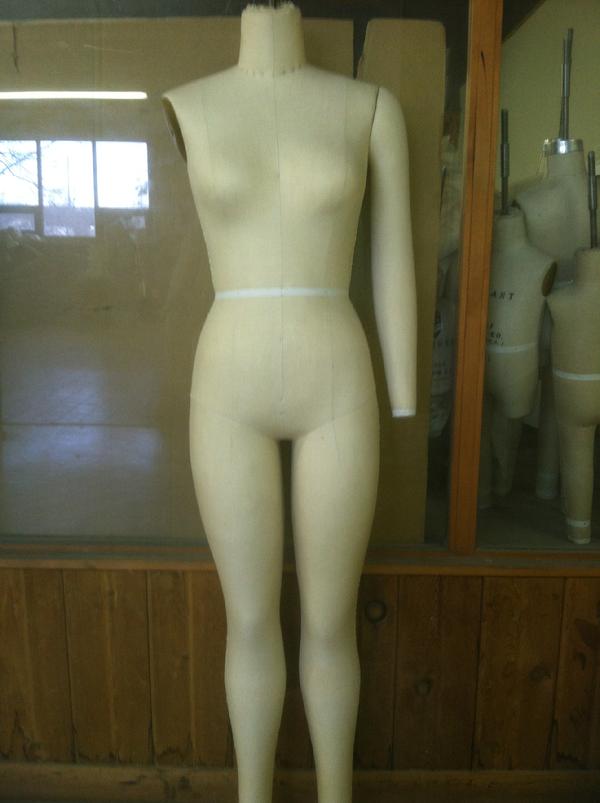 This photo is from Wolf Form Company, Inc. web site.
This photo is from Wolf Form Company, Inc. web site.
“Wolfee” and I have been working together in my draping classes. She was assigned to me the beginning of the first class and we will be working together till the end. I have learned that Wolfee’s kind is considered the industry standard for dress forms, meaning of course that they are considered the best. I can buy a sister of Wolfee for $1600 from the Wolf Form Company, Inc. , or the traditional straight skirt dress form for $825 (below).
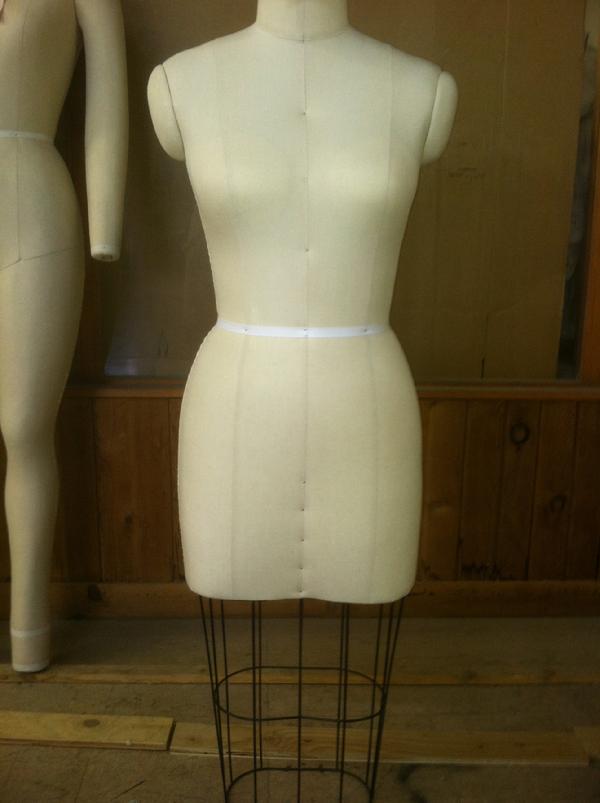 This photo is from Wolf Form Company, Inc. web site.
This photo is from Wolf Form Company, Inc. web site.
Yes, they are expensive and so unfortunately I may never have the luxury to own one but you just never know! See…I told you Elizabeth would be really upset if she knew.
So how are my draping classes going? Well, up to this point they have been incredible! We have draped a bodice, skirt, circle skirt and a princess seam dress. And… as usual, I have managed to get myself into a challenge project. I am not sure how this exactly happens. My best explanation is that I am sort of a visionary that can’t keep my imaginative ideas quietly to myself! I certainly can’t turn down a challenge; sometimes I think they are the reason for my existence. The challenge… making a dress for myself out of the princess seam dress that I draped and wearing it to my next draping class. Mind you the draping classes were split into two sessions of classes, Draping 101 and Draping 401 with a 3 week interval between…thank goodness for the 3 week interval! The 401 starts in four days from now so yes, I have been working hard on making the dress!
Okay, so last Tuesday my daughter and I hit one of my favorite fabric stores in search of challenge dress fabric and guess what? Oh yes, we found fabric for my dress but Calley found fabric for hers too, specifically the McCall’s 6561 pattern with the 10 piece bodice and the tons of gathering.! Yep – I am going to be doing more sewing for my beloved pencil!
This is the fabric and trim for my princess seamed summer dress.
It is a fine cotton in a pastel green with embroidered soft pink polka-dots. The trim is little pink daisies in glossy thread. I am trying to steer clear of the dots but the colors were exactly what I was looking for so I just had to!
And this is the fabric for Calley’s dress. It is called shimmer satin and I am truly excited to sew it, the fabric feels luxurious!
So I guess I have a lot of sewing to do. What’s really crazy is that I am already thinking about other projects that I can’t wait to dive into! My son, Jared, really wants shirts! Shirts made by me! You will definitely hear all about it when I get there but for now, I guess I better sign off. It’s Monday, Memorial Day, and time to reflect with a glass of Chardonnay!
Salute! Jessica
Read MoreDress Designing
Pattern Design Tools
Well…here I am, back to share another story with you. Hope you had a wonderful week. I would like to start off with a sharing moment…I have learned from a sister sewing artist in the American Sewing Guild Chapter that I belong to, that she has brought aboard followers who live in Florida. Hello to you “Floridians” and I hope you are enjoying your wonderful sunny weather while I am here in Oregon still freezing my… butt off and trying to enjoy our rain! Just teasing 😛 Truly, thank you for reading my posts and by all means enjoy that sunny weather, someone has to right!
So…Last Sunday, Mother’s day, was a pretty awesome day for me. There were some unexpected surprises including brunch and lots of yellow roses. I always get yellow roses on each of my children’s birthdays but generally not on Mother’s Day. How does that work you may ask? Well, I was smart and taught my children at an early age that giving flowers to your mother on your birthday is an honor (well it is!). Pretty brilliant huh! Why yellow…well I just happen to love yellow. Maybe it’s because it reminds me of the beautiful daffodils that grew in our front yard when I was a little girl. I don’t know but for whatever reason, the color yellow is calming to me. That is why I decided to make a yellow and white dress; a certain yellow and white dress that I designed myself.
SEWLIKEINPARIS
I went with inexpensive cotton, given that this was my first try at completely drafting a dress by myself. It has been my experience that if there is potential for something to go wrong, then it probably will! So here’s the fabric for the skirt of my dress.
Yep…polka dots again! I think I loved the colors more than I did the fabric. It is 100% cotton but doesn’t have quite the textured feel I would have liked.
This is what I used for the bodice.
It is also 100% cotton, a slightly heavier hand than the polka-dot yellow, with chevrons on it. I had hoped to find the yellow in a fabric of this grade, but it was just not happening.
I think I spent several days drafting the different pattern pieces before I figured it all out, but when I did, I was feeling like the world was oh-so-right! I chose to use 3/8 inch seams which is just too cool! There was no trimming involved, no wasting of fabric and a nice even finish.
French darts fascinate me. I think they look more subtle than traditional darts and seem to flow more gracefully along the contours of the body. That being said, I chose to use them for my design.
I love the look of diagonal darts on a skirt and so included them in the design of my dress skirt. Fortunately I have a book that shows you how to do this. It is titled “How to Design Your Own Dress Patterns” and written by Adele P. Margolis. My edition was printed in 1959! It’s a treasure to add to your library so by-all-means try to find a copy. A few weeks ago I posted instructions on how to do these diagonal darts in an article called “Drafting a Peg-Top Waist Skirt” which will explain it in more detail.
After having all my pieces drafted, seam allowances added and fabric pre-shrunk, I was ready to sew my first dress muslin. The bodice fit well though the sweetheart neck-line felt a little loose making me feel somewhat uneasy. I decided to be sure and stay-stitch the neck first thing when I begin my actual dress construction. I didn’t care for the large darts that I ended up with in the skirt front. It turns out they were large because of the 2 inches of space that the instructions say to use between the skirt sections at the top of the slash as shown below. (Please read Drafting a Peg-Top Waist Skirt to get the full skinny!)
To eliminate these large darts, I tried using a 1 inch space instead of the 2 inches. Also, I didn’t draw my darts the same way they were illustrated in the book. Instead I made both the darts 3 1/2 inches long and angled them parallel to one another with 2 inches between them and 1 inch away from center. The results were exactly what I was looking for.
The front and back of my muslin with the peg-top waist.
The back is a normal one-dart block fitted for moi!
Okay…so now I’m reaching the point in my story where I talk about the “if it can go wrong, it will” part. Yes it happened… it went wrong…it was of course the sweetheart neck-line. I had tried the dress on several times through the sewing process. My thinking was that once the seams were finished by means of the lining, the looseness I was having would be tightened up. WRONG! The bodice really does fit me quite well. It was awesome sewing it to the skirt…all the darts matched up perfectly, the seams were true, but… it was that gaping neck-line that set me ablaze! To say it honestly, I was p-i-s-s-e-d! I wanted it to fit perfect the first time so I could relish in my success. Alas – there would be no relishing. I took a few deep breaths, went to the kitchen still wearing my dress, got myself a glass of wine and then went and stood before the mirror, glass in hand and pondered it all. I had three options:
1) Bail completely.
2) Redo the bodice on the dress after I re-designed the pattern.
3) Rather than tear it apart, sew an encased 2 inch section of elastic on the seam allowance on each side of the center of the neck-line to fix the gap, close up the lining, wear it and be proud… then re-draft the pattern and make another dress.
Yeah, you guessed it…I thought it best to go with option 3. So do you want to see?
Well here it is!
- Peg Top Darts
Then there is me. I sure hope you don’ get tired of the me shots, but it’s the only way I know how to show you that I can actually sew clothes that fit!
The back of course…
You know – I knew it was risky business trying to draft a sweetheart neck line. It seems that they are notorious for doing the gap thing. I still think I can beat it…maybe. If all else, my skirt draft was a success and I can always come up with a new design for my bodice front and still use my beloved french darts. So… I think it’s fair enough to say, “I have officially “designed a dress ” AND this is only the beginning! Au-revoir!
On yeah, by-the-way…have you ever sat on a straight pin?
Salute! Jessica
Read MorePattern Review McCalls 6561
A table fit for Mother’s Day
When we went into Joann’s fabric store to look at patterns I had this funny feeling. As we sat and perused the pages of the McCall’s pattern catalog, I watched her scanning, looking for that perfect…unique dress and when I saw her zero in on it, I knew right then that I had my work cut out for me. My daughter chose McCall’s 6561. Don’t misunderstand me. I have nothing against the pattern, they definitely had a cool idea in mind but… 10 pieces just to make the bodice? Just saying.
McCall’s 6561
Needless to say, she had her heart set on it and so I said yes! So the first thing I did was make a muslin. Remember those 10 pieces! We tried it on her and I had an “Oh Crap” moment. I made the muslin up in a size 4 but my daughter is like trying to dress a pencil!
She is lovely, healthy and the eating machine in my household. How she gets away with it I have no idea. Her brothers harbor a little resentment since they have to count their calories, as do I. Somehow she manages to maintain a 24″ waist! We’ll see just how many years this lasts. (that sounds evil huh)
Well… anyways, besides the fact that my daughter is a pencil and size 4 was too large, she was still fuller busted than the pattern allowed for so I had to do some major pattern changes to all 10 pieces! It took me two muslins before I got it right!
While it doesn’t say it on the envelope, if you look at it on McCall’s website, it is considered “easy”! Well yeah…it’s easy to understand how to sew it; the instructions are pretty clear. But it’s a “sewer beware” pattern. I think most of the difficulty lies in the fitting but for new sewers, I think constructing the bodice is not a cake walk. If any of you readers are new to sewing and have already taken on this challenge and did it, I have two words to say to you.. You ROCK!!
Anyways, with the fitting out of the way, we were ready to choose fabric. It was a unanimous vote, white with a splash of red. The fabric is white embroidered cotton and the lining which Calley chose is a white silk cotton. We found some beautiful red satin trim but my concern here was whether it would bleed onto the white fabric when it’s laundered so several pieces had to undergo testing. Cold water brought out red making the water pink, but hot water was worse. I decided to wash the trim in my washing machine on gentle cycle, hang to dry and press it before applying to the dress. (Heavy sigh; more work)
After pre-shrinking all the fabric, I was ready to start construction. Assembling the bodice wasn’t too bad though like I mentioned earlier, there were several pivots in the top and bottom of the front pieces that took me a bit but eventually I got them.
I took this close-up picture so you could get a good look at the bottom pivot on the center front. I fussed with this one the most.
The main bodice is sewn to a gathered skirt and then there is a bodice lining that is sewn to a second or contrast gathered skirt. Suffice it to say, there was a whole lot of gathering going on! It wasn’t hard, just time consuming.
I decided to hand sew the red trim around the waist after the dress was constructed. I did try top-stitching it on first but I didn’t like the look.
To break up the layers, I sewed red satin trim on the top skirt.
And here it is being worn by my daughter.
The back of the dress…
And a just because picture!
The dress was a success, especially because it’s what Calley wanted but I am not real keen on making a 2nd or 3rd one. Unfortunately I think she wants more of them and since she let me make her something versus buying it, how can I say no? I’ll make 10 if I have to. 🙂 I truly love being her and her two brothers mom, and sewing for them is such an honor to me. You can expect to see more of my family creations in the future.
With that, I think I will now go and enjoy Mother’s Day with my children. If you are a mother, a child who has a mother, or know someone who is like a mother to you, take advantage of the opportunity today to give your love. We don’t know what tomorrow will bring, but today is here, so live it to it’s fullest. That being said, I’m now signing off to go and enjoy a glass, or two, of champagne!
Salute! Jessica
Read MoreButterick See and Sew 5741
When you look at the above picture, you are suppose to think I am draping but I actually have absolutely no idea what I am doing! However, hopefully I will know when I finish with the draping classes I registered for a little over a month ago. I’m so excited! There is not a definition for draping in my 1978 Webster dictionary though under drape it reads “arrangement in or of folds. Then there is the on-line Merriam Webster version that says that “draping is a present participle of drape”. I guess this means that soon I will be “present participel-ing” fabric into a garment! I can’t wait.
I received a student supply list when I registered, so I have been rounding up all the things I am required to have. Of course I was gong to need something to put all of it in and that’s when I remembered a pattern I had, Butterick See and Sew 5741.
I bought this pattern about a year ago thinking that I would do a sew-along with my kids for something cool to do. It’s a good thing I never got around to doing that because I would have probably ruined our wonderful relationships! I don’t think the construction of the bag is quite as easy as the Butterick designers claim it to be.
The fabric I chose is Home Decor…
I fell in love with the purple because it made me think of my blog site (what a dork huh!) and I thought the stripes would be a complementing contrast for the lining and the variations I was planning. (I can never leave a pattern design alone, I’m always messing with it, I don’t know why?)
The bag instructions are easy to understand, but the further into the project you get, the more challenging it seems to become. Admittedly, part of the difficulty might have been my doing. One of the materials called for is hair canvas. I have felt it once in a store 40 miles from where I live, but I couldn’t remember how stiff it was so I opted to head to the local Joann’s and see what they had. I ended up buying Pellon Peltrex 70 Ultra-firm stabilizer. (It sounds like something dangerous!) It turns out it was. My headache really started once I had to assemble the pieces. The worse was when I was nearing the end and still had to do the top stitching on the handles and around the top edges. Words were flying along with spools of thread and various other objects that happened to be to close to my working space.
As to those variations I was talking about…I decided to change the fabric of one of the end pockets from the main fabric to the fabric I used as lining (Piece #5). I did this too for the band that goes across two of the sides (Piece #3 that is barely printed on the tissue).
That narrow band incidentally, was a b…. bear to sew! You had to stitch across 4 layers of home decor fabric which is rather heavy.
Well this is it… I was after firmness and boy did I get it. The handles hold themselves up!
My #5 pocket that is the same fabric as the lining…
And that nasty little band…
I’m really happy with how it turned out despite the Peltex 70 accident! It is an awesome “TOTE” bag. Mind you, nowhere on the envelope did I see the word “tote” bag. I did read that the finished size was 12 1/2″ x 12 1/2″ x 9″ and I did look at a ruler and contemplate this. A “tote” bag caution sign never started flashing before my eyes so I didn’t give it another thought. I just hit the “see and sew” road and never looked back!
Now I am all ready to go to my draping class…
I got to thinking though… it sure would be a bodacious “tote” bag for carrying all the french-ness accessories I would need for a picnic or meal!
Well… that was it and now I am ready for dinner! Oh… and yes, I made the dress. It’s another one of those patterns I have that’s out of print. It’s Simplicity 4224. I am thinking that maybe I should make another one like this. I love the dropped waist.
À tout à l’heure! In English, see you soon! Now it’s time to prepare my French cuisine but first… an apéritif. I think I will start with a refreshing glass of Chardonnay. 🙂
Salut! Jessica
Read MoreDrafting a Peg-Top Waist Skirt
We are having such beautiful weather and to think that it is Oregon, and in April! I have had more energy in the last 3 days than I feel I’ve had in the last 3 months. I guess I’ve got the “spring fever”.
So while cleaning, cleaning, and cleaning…
I have been thinking about a dress I am going to make, a summer dress in yellow and white. Part of my inspiration came from the T.V. show “Revenge”. Yes…I am watching it but I blame it on Netflix. Believe it or not, I don’t watch television. I do however watch my “talking books” on Netflix but it really stinks when they put the first season of something on it; you watch it, and then you’re hooked and have to continue watching it on T.V. or Comcast On-Demand, both with all those obnoxious irritating crappy advertisements… uh-oh, rant coming on, shut it down- shut it down! Ahem…
Anyways, there were several dresses that the leading actress, Emily VanCamp, wore that caught my eye. One of course was a yellow and white one, and the other was what might have been a white brocade but it was the skirt of that dress that grabbed my attention. Instead of the standard darts that start at the waist and go straight down, these were diagonal. I thought, okay, that would be easy enough — I’ll just use my skirt pattern that fits me perfectly and fold the darts diagonally. But I was so wrong! Mind you I had already drawn out my vision on a croquis…
and have been mulling it around in my head, trying to figure it all out. It was in one of those moments when my brain was fully functioning properly that I remembered a book I have. The author is Adele P. Margolis and the book is titled “How to Design Your Own Dress Patterns”.
The diagonal darts that I needed to create she terms in the book as a “peg top” skirt with actual instructions for drafting it. What a score!
I was so excited that I
stopped breathing for several
seconds…
This was so big that it
demanded a glass of wine with
a toast!
So now that I am back on my feet, I thought I would share with you how it’s done. There are 12 steps to drafting the peg-top skirt and hopefully with pictures, some from Adele Margolis’s wonderful book, it will be easy for you to follow. Here goes…
DRAFTING A PEG TOP WAIST SKIRT in 12 EASY STEPS
** Please note that my pictures and the book illustrations are opposite views. I did this intentionally but realized half-way through that it would be conflicting for this “how to” but I had already spent a bit of time with the drafting and pictures so decided to keep my dingy sailing in the same direction!
This is the whole sha-bang of illustrations for the peg-top skirt, all on one page. I have re-illustrated them individually in the following steps to make it easier to understand. Hopefully you will be inspired to go hunting for this little treasure to add to your collection if you don’t already have it. It certainly has saved my butt!
Step 1:
You start with a skirt front block that fits you nicely but because you’ll be cutting it up, you will likely want to trace one from your original. I traced around my original skirt block onto a piece of art paper and then drew in the dart and grain line. Keep it simple and do what works best for you.
Step 2:
Draw a line from the bottom corner of the side seam to the dart point. Then label these B and A respectively. (See above and below)
Step 3:
Cut out the original dart at the top of the waist. There is no picture for this because for some reason I forgot to take one. (It was an awe crap moment when I realized this)
Now you are going to slash the line you drew from Point B to Point A but leave just a smidgeon of paper at Point A so the 2 sections are still connected. Then pivot or shift Point B, closing up the dart at the waist; then tape in place. Label the hem line points B (already there) and B1.
By pivoting, the dart control was shifted from the original dart to the hem line.
Step 5:
You will need to draw “style lines” as shown and label them X and Y
This is a bit tricky. There is no precise placement for these lines and no specific lengths. It is entirely up to the designer. I worked from the sample that is shown in the book and drew my lines 4 and 6 inches in length.
Step 6:
Next, connect each of these lines to A.
Step 7:
Label these sections 1, 2 and 3. Then cut them completely apart from one another. Across from A, you will want to mark A1 though not shown in the photo below.
The next steps I found to be easier to manage by placing my 3 sections on another sheet of paper. There were no instructions given to do this and I struggled for a bit until I got it sorted out.
Step 8:
You start with placing sections 1 and 3 with the bottom points B and B1 touching and positioning A and A1 two inches apart. Below is how they look before I taped them on my additional sheet of paper.
Then after…
Step 9:
Place Section 2 between 1 and 3 so that the darts will be equal on each side at the waist line with the point touching midway between A and A1.
I don’t have a picture for the top of section2 between 1 and 3 so refer to the book illustration. It will look wonky but as long as the tip is at the mid-way point of A and A1 and you maintain an equal width for each side of Section 2, you will be fine.
Step 10:
Find the center points between C and C1 and D and D1. Nothing beats a good eraser when you can’t make up your mind!
Step 11:
Draw in the 2 new darts. The dart legs need to be of equal length when measuring from the midway points at C and C1, and D and D1 to ZY and XW respectively.
Dart ZCY
and Dart XDW
Step 12:
Fold the new darts to the center and draw in the waist line. Now finish up by tracing your draft onto pattern paper and be proud. You did it! Of course you still need to draft a skirt back or obtain one that matches this one at the side seams and supplies the remainder of the waist measurement that is needed. The waist and sweep of the hem line should remain intact when doing this peg top style. Only the hip fullness is affected. It does not change, just relocates!
This is mine finished. I didn’t create little tabs extruding from the center part of the darts because I wanted them to be even with the waist line when they were folded. Right or wrong, it’s what I wanted and besides, I’ve always liked living on the edge!
In the near future you’ll be seeing that yellow and white dress I’ve been talking about, with this peg top skirt sewn into it of course. I am really excited about it because I have truly created my own dress pattern this time around. The bodice I designed off of my own drafted bodice block; then I did style changes giving it french darts, a sweetheart neck line and a scooped low back. I hope I haven’t shot myself in the foot by announcing this! Ehh, what’s life without a bit of adventure right? Stay tuned! Now it’s time to go enjoy the rest of my day with no cleaning!
Salut! Jessica
Read MoreBetsey Johnson Polka Dots
Yes, this is Betsey Johnson polka dot fabric! Lady Luck was on my side when I saw it available at Gorgeous Fabrics. I snagged 2 yards, then later thought about getting some more, but alas…it was all gone! It is Sateen and has a slight stretch to it; definitely has the feel of bottom weight fabric but perfect for what I had in mind. I washed it on the gentle cycle in my washing machine, bypassed the dryer and hung it to dry instead.
Some of you might say, “who the heck is Betsey Johnson?” Well, she is an American clothing designer who loves color, adores costumes and likes to design fashions that are playful, whimsical and edgy. I bet she would be a lot of fun and I would so love to meet her! So when I saw this fabric with the big polka-dots, I caved!
My original plan for this fabric was to make a dress from the Simplicity 1797 pattern. However… crap happened! There is really no other way to say it and that was the nice way. If you are one of my regular readers, then you know the story. If you are new here, it had nothing to do with the Simplicity pattern but the fabric I was practicing with before I started cutting pattern pieces out of my polka dot fabric. The pattern review for Simplicity 1797 tells all!
My new game plan was to draft my own dress. I wanted to make a skirt with an empire waist and it would have a whole lot of flare! I envisioned the bodice as sleeveless with a criss-cross front. Oh yeah – I thought I was brilliant until it was time to start drafting. I begin to lose my courage and started the transformation into a big chicken!
I deduced that maybe I needed to stimulate my imagination so for ideas I went rummaging through my patterns. It was sort of like panning for gold; a lot of “not what I wanted”. Then all of a sudden, there it was, the gold nugget, Simplicity 3783. What I saw sparkling was the bodice…it was exactly what I saw in my mind. The skirt I was not sure about though I loved the bubble hem idea. I had time before I had to make up my mind so I swept the skirt business aside, eager to check out the bodice scene.
I can’t remember when I bought it but it is old enough that if you search Simplicity’s website, you can’t find it, not even in the out-of-print section.
I selected the bodice pieces of tissue from the pattern envelope and began. Here it is… my muslin. I loved the fit…it was perfect!
Elizabeth, my dressform, is probably a little embarrassed by the wrinkles that you can see on the muslin so I should apologize. Not sure when it happened, but I did iron it at some point! 🙂
Now it was time to figure out what to do about a skirt. The bottom of the skirt pattern seemed wide enough to do a subtle bubble hem (though I wanted more than subtle) but it was the darts that ran from the top of the skirt to down below the waistline that were troubling me. Not to mention I wasn’t sure I wanted all that fabric folded around me and wasting those beautiful polka dots! That was when Simplicity 3783 was no more but my courage had grown and drafting a skirt didn’t seem to be as scary a business. I had a skirt pattern I drafted last year that I used to make several other dresses and it had an empire waist so I dug it out. I know it’s a crummy picture, but it’s hard photographing tracing cloth.
I fit me perfectly, a front and a back, each side with two darts. I wanted fullness, not as much as a circle skirt, but just lots of flare at the bottom. I knew that I couldn’t get the flare I wanted with only a front and back piece; I was going to have to split them into a center front and side front, and center back and side back. After having a mental struggle with whether I was on the right track or not, I gave in to my creative side and dug out my pattern tracing paper, my mechanical pencil and my Dritz cardboard cutting board with the quarter circle lines on it.
The drafting commenced for what seemed like hours and then it was time to cut my new skirt pieces out. Once again the wave of uncertainty hit me! I hate it when that happens! Everything looked good; all the sides that were to be seams were of equal length. The waist matched the bodice…but I needed some support so back to my pattern stash I went. It was the Butterick 5603 pattern that slapped me in the face! The skirt was exactly what I wanted.
I pulled out the tissue pieces and compared them to my drafted pieces. I was close! Several of my curves needed a little correction, but outside of this, I was good to go!
(I figured out a way to take better pictures of my tracing cloth pattern pieces–that is until I think of something even better!)
With the pattern/designing war over, I went to work cutting out the pieces from my beloved polka dot fabric. Sewing the dress together was like a fantastic dream! I loved the way the fabric handled and it all went so smoothly. I made the bodice first.
As you may note, the bodice is already attached to the skirt in the following pictures. I forgot to take pictures during the process. I also forgot to eat that day –I’m sorry but I get so involved!
Then it was on to the skirt. I serged all the edges before I sewed the seams.
I made a lining. I used the one from Simplicity 3783, It was nothing more than a front with 4 darts and 2 pieces for the back, each with 2 darts. I serged all the edges on these too before sewing it together, then I machine sewed a 5/8 inch hem in it. Next, I basted it to the skirt, wrong sides together. I didn’t sew the back seam of the skirt so basting in the lining was easy. I usually do it this way anyway because I find it easier to put the zipper in first, THEN sew in the back seam.
Now with the skirt lining installed, I was ready to attach it and it’s mate the skirt to the bodice. It went very smoothly. I was definitely needing a confidence boost and this was it! Now, all that was left was to set in the invisible zipper, sew the back seam and turn under and hand sew the edges of the lining. This was a little tricky on the front of the bodice where the two sides crossed. I had to get a little creative but still managed a nice finish.
All that was left was to hem it and Shabam!
Check out the earrings if you can see them. They are my daughter’s…red guitars! How awesome is that!
So there you have it. My creation with a little help from B & S! (That doesn’t sound right does it?) I call it my Jessica Betsey dress. I love this style so much, especially because while being somewhat form fitting, it is oh so comfortable. So comfortable that I made a second one, a “little white dress”. The fabric has pretty embroidered flowers and I used a bit of pink chiffon I had on hand.
I did change it up a bit though. A pink band of chiffon sewn between the bodice and skirt.
And a v-neck in the back.
and the full deal…
I have several occasions in mind for wearing my dresses and I can’t wait. Coco Chanel once said, “Dress women in black or white at a ball. They will catch the eye”. I don’t know about catching the eye, but I certainly will feel like I’m going to a ball. I can’t wait!
Salut! Jessica
Read MorePattern Review Simplicity 1797
SPRING IS HERE! But…I live in Oregon and — well let’s just say that we Oregonians are still planning our wardrobes for that mildly warm sunny spring weather that will actually be here when it’s almost summer. However, I am not complaining…much. This is actually a good thing because it means that I have a little more time for sewing projects that include those pretty summer dresses that I envision myself wearing to parties, the Blues Festival, wine tasting, birthday parties, or just because!
Since we are on the subject of dresses, I believe it’s time to talk about Simplicity 1797. I decided to make this dress for several reasons. The obvious one of course is that it’s cute! I really liked the sample displayed on the pattern envelope and so I purchased it when it came out last year. Somehow it ended up in my future project stack of patterns and…I sort of forgot about it. Then last month when I was reading the American Sewing Guild Newsletter I made a discovery. A national sewing contest is just getting underway and to participate, you can sew one or all of the patterns from a a selected list and the Simplicity 1797 is on that list! The grand prize and 2nd reason to make this dress…a Babylock! I was so excited that I think I drooled on the newsletter.
My plan was to make this dress from a special designer fabric that I purchased, but I wanted to do a test run first so I chose a floral eyelet that I found in the local fabric store’s linen section along with a pretty rose-red cotton for the piping. The eyelet was regularly $12.99 a yard but with the 30% discount that I noted, I figured what the hey, I can handle this. Keep in mind that during this time my phone was ring-a-ding-dinging text messages from two of my kids. When I left the cutting counter it turns out the fabric was not on sale! I was already late for meeting my son at a local pub for lunch so with as much calm collective-ness I could muster, I purchased my NOT-ON-SALE fabric and left in a dash!
Later, when I got home and started looking at my eyelet, I realized that it was not embroidered threads in pretty flower patterns but rather glued on rubber stuff that looked like eyelet. Sort of flocked, but not! All I could do at this point was hope that this wasn’t a tell-tale sign of what was to come!
I went ahead and pre-shrunk the fabric (if rubber can shrink) reminding myself that it was suppose to be a test-run. By this point I was a little irritated and so I just threw the fabric in the washing machine and then the dryer. Turned out fine so off I went to iron it. That was when I hit the next speed bump! I couldn’t iron it on the right side. Okay I said to myself, “self, don’t let this fabric beat you!” And I didn’t. I ironed it on the wrong side which worked out fine… until it was time to press seams. But I would not lose this battle either so I broke out the press-cloth ammo! During all the frenzy in a room full of colorful expletives, my daughter came in to see what was going on and her only comment…”that’s pretty fabric”. At that moment I swear I saw the eyelet blowing a raspberry at me!
© Copyright Richard West and licensed for reuse under this Creative Commons Licence
Moving along…I had already made a muslin before I purchased my rubber fabric. With only a few adjustments I was able to find my desired fit; the usual size 8 grading to a size 12 at the waist (yes, I am the shape of a triangle) so I was ready to go. I made style B. I love the look of the little jacket that goes with it and plan on making it with some beautiful white boucle I purchased recently.
The instructions were pretty easy to follow. I left out the pockets because of my previous side-seam pocket ordeal with the floral silk fabric dress that I had to re-do because of the big butt scenario but we won’t go there! I’m sure it would be fine in this dress, but my trauma has not quite passed yet.
I chose to do the piping which was 2 inch strips of fabric folded in half length-wise. The instructions asked you to baste the strips to the bodice and skirt with raw ends together before actually sewing the bodice and skirt sections to one another permanently. The width allowed for a 5/8 seam and 3/8 for trim. I thought it was fun to apply so no problems here.
The only thing that I found difficult was when I was applying the fabric bands around the neck and arm holes. The first part was easy. You simply pinned the binding to the neck and sleeve edges and then stitched a 3/8 inch seam. It was the next step that got me. You were to fold the edge of the binding to the inside, pin and then stitch on the outside in the the groove of the seams. The fabric was not cooperating at all. And…being to fussy, I finally ended up sewing along the top along the inner finished edge catching the underside of the band with it. I don’t know if this is when it happened but the shoulders and bust area seemed to grow a bit larger. My muslin fit so well, so I am not sure what happened, but hey…with that extra space, there is always room for the Wonder Bra!
Well…this is it!
I don’t know if I will make the dress again though I still plan on making the jacket. I think the dress pattern is great but due to the fabric issues, I kind of lost some of the wind in my sails on this project. I will definitely submit a picture to the American Sewing Guild contest. It is totally a long shot but… winning a new Babylock to replace my dinosaur serger would be stupendous!
Well, time to go and enjoy a beautiful overcast day in this pretty springtime dress. Where am I going? My daughter and I are going shopping for shoes! Then go have lunch and with a glass of wine for me at the Cheesecake Factory!
Salut! Jessica
Read MorePattern Review McCalls 6708
I’ll start by saying… I love sweaters! The weird thing though is that I don’t have very many, however that’s going to change because I just figured out that I can sew them! Up until now, I never dared to consider making these wonderful little wardrobe necessities. I figured sewing knits would be an experience from hell and happily chose to never go there. Then after spending some time with some wonderful women in ASG (American Sewing Guild), a door has opened and knit fabric has hit the fan so to speak! I won’t say that I am totally comfortable sewing knits now but my confidence is growing, especially after making the McCalls 6708 sweater.
For the fabric I chose a double-ply knit, black and white stripes on one side with small polka-dot like markings on the other.
My inspiration for this fabric came from the Spring 2013 Ready-to-Wear Fashion Show number by Balmain which drew me in and renewed my interest in the black and white theme, and especially stripes.
Photo: Monica Feudi/Feudiguaineri.com http://www.style.com/fashionshows/review/S2013RTW-BALMAIN/
The sweater I made was a mash-up. I wanted the neckline of A and the length of the bodice and sleeves of E. It wasn’t difficult at all. By overlapping the front A tissue piece over front E tissue worked perfectly. I used the back pattern piece for E. Long sleeves were not a problem either since both sleeves come as one tissue.
For size, here again I chose small based upon the circumference of the bust provided on the pattern for that size. I didn’t make a “knit” muslin. I do like adventure and given that there would be some stretchy going on, I decided to throw caution out the window and just sew!
The instructions were very clear and quite easy to follow. Double-stitched seams were suggested for most of the construction. For this I used a twin-needle, a 3.5 mm. stitch and my standard sewing foot. It wasn’t called for but I decided to serge all the edges that would be exposed to make a nice finish.
I was fascinated with the knit that I used because it was double-sided and not too thin. It seems that thin fabric is the norm in store bought garments these days and doesn’t last long but I will save that for another rant! Due to my stripe inspiration, for some fun and to make it interesting, I decided to use the opposite side of the fabric for the neck, front and bottom bands.
All the bands fortunately turned out pretty good, but because of the method of construction with the neck band and my double-ply not-too-thin fabric, it was a real pain in the… derriere to get the finish I wanted. The thickest area was where the top and bottom buttons go. It doesn’t help that I tend to be a perfectionist, sometimes very problematic for me!
As a side note, always up for a challenge, I decided to cut out the sleeves and bands cross-grain so I could have the stripes in the direction that they are as well as to utilize the fabric and eliminate waste. There were no problems with doing this and I have a chunk of fabric left, for what I don’t know, yet…
So…here it is
I have to say, I really like the way knit responds when a seam is sewn in it and I love how it feels to the touch – oh so soft. It is pleasurable to sew! I’m still a bit skittish when it comes to doing buttonholes. It’s a real pain to remove all the threads when the buttonhole is a total bomb and requires a do-over! Moving right along… yes I’m discovering that sewing knits can be a pretty fun thing to do, and that’s why I plan on sewing this sweater again. However, I would like to try and figure out another method for applying the neck band…I need to put on my thinking cap. If you have any suggestions, I would love to hear them. Until then…it’s off to go wine tasting!
Salut! Jessica
Read MorePattern Review Butterick 5646
Believe it or not, I have been sewing while I have been chit chatting on this blog for the last few weeks! And… outdoors soaking up the sun and working in the yard cuz spring is here and it’s time to plant! Even mucked out the small pond and waterfall in my backyard leaving it sparkly and pretty…until next year when I have to do it again! Here I am though, faithfully sitting here at my desk on this beautiful sunny April 1st Monday morning, writing because this is important too. No fooling!
So what have I been sewing? Well, actually a few things, with three more projects in the makings. Sometimes I make myself crazy! Today I am going to start by reviewing Butterick 5646 and with the next several posts McCalls 6708 and Simplicity 1797. I am splitting them up because I think I talk to much and end up making monster posts that you may not want to sit and read! See, here I am, yaking!
Butterick 5646 McCalls 6708 Simplicity 1797
Before diving in, let me first say that each of my projects gets to go through muslin consideration. There’s nothing worse than finding out that something doesn’t fit properly that you were dreaming of wearing when you finished sewing it. Been there, done that!
Also, sewing for myself is sort of like dressing a triangle! I find it a constant challenge with any pattern I choose to make, because my shoulders are a little more narrow than standard shoulders. My bust… well I won’t complain; I am far from gifted in this area, but it could be a lot worse. Then there’s my waist, it’s two sizes up as compared to my bust measurement; what’s with that! Hips are hips; they are always the fullest area but the numbers just keep getting bigger. See… a triangle! What has worked best for me is to cut a size 8 at the top with still a bit more adjusting, then ease this size into a 12 at the waist. Most of the time size 12 is good for the circumference at the hip line, but sometimes I will cut out a 14 just to be sure! I try not to pay a lot of attention to size though, just actual circumference; notice I said try. And go figure, my store bought clothes are entirely different sizes! We are all in this mess together so I’ll just leave it at that 🙂
Okay…so here goes: The Butterick 5646 top
Let me start by saying that I picked this top because I like the long v-shaped back business that’s going on. Besides looking very feminine, it’s a butt cover when I don’t want my butt seen. (have no idea why I sometimes feel this way) 😉
The pattern is sized by XS, S, M, L, XL, and XXL
I chose size Small for several reasons. First, the bust circumference was closest to mine. Second, the waist and hip measurement with ease was printed on the pattern pieces, a number of inches more than I needed. And third, I pinned all the tissue pieces together to see what I was working with and could easily tell that it was going to be loose fitting all the way down; so…with much contemplation, I decided there would be no muslin done and size Small it would be. After the fact, I could have made an XS, since I almost feel like I am wearing a painting smock, but…I am not gonna fret!
I made style B because it has pockets which I thought would make the front more interesting. Chiffon and georgette were two of the recommended fabrics which was why I chose to make it in the first place. I love to wear things made of these light flowy fabrics, but… I thought I would do a test drive with some fabric I discovered in my stash that I bought a year or two ago to make a skirt out of, don’t know what I was thinking, anyways, decided to use it for this top.
The instructions for the most part were straight forward. The band around the neck tripped me up at first, likely because I have not sewn a lot of tops. You had to sew 2 bands allowing for a hidden band where the buttons and buttonholes are to be placed. As usual, I went off the beaten path because I wanted blingy buttons and didn’t want to hide them! The 2 bands got to become one band for my whim. All I did was slip stitch them together along the center edge and then top-stitched 1/4 inch from the edge all around the entire band.
I loved sewing the french darts. I have read that they can be a bit tricky at times. I can see how this might be, especially with certain kinds of fabric but the finish line is so complimenting that I can’t wait to sew them in future garments.
Also, french seams were a suggestion for finished edges which is one of my favs so I did this too. Maybe I will make this again in an XS if I can find some pretty georgette fabric.
The back…
And the front!
Salut, Jessica
Read MoreThe Sweat Shop
Photos by Fabrice Fortin for Paris by Appointment Only™ presented on a lovely web site: http://www.parisbao.com
I know…you are reading the words, Sweat Shop, and right about now thinking – EVIL – and you are ready to hear all about it. However – it’s not what you think.
Sweat Shop is actually a “café couture” sewing shop that opened in Paris about 2 1/2 years ago. It was located in the residential 10th district of Canal Saint Martin, tucked away among other trendy boutiques and bars. Its two founders, fashion designer Sissi Holleis and makeup artist Martena Duss, had a brilliant idea and set out to make it happen. They wanted to encourage people to buy less and make more things for themselves either by sewing them or changing up things they already owned. With the help of Singer, they took this concept and, well the rest is history.
There were 10 work stations, each supplied with a sewing machine, all located around a big central work area. You could rent any of the available sewing machines by the hour to work on your projects or just visit and relax in their cozy little nook where sweets were available.
Whether you were a beginner or a master of sewing, there were regularly provided workshops, often held by well known designers willing to share their knowledge. If you wanted to brush up on your English, there was the Patch-Up Your English workshop. While creating a patchwork cushion or blanket, you had to chat strictly in English! There were even knitting classes for those wanting to learn, or those ready to whip up a sweater.
However, I don’t know if you noticed, but when I have been talking about Sweat Shop, it has been in the past tense. As of July 1, 2012, Martena and Sissi closed their doors. Awe crap was my first response. I was so excited when I first discovered this little gem that I was plotting on how to make it one of my stops on my next visit to Paris. There is good news though; a book was born out of this project that I already personally have on order.
It was published November 15th 2011 by Andrews McMeel Publishing. My understanding is that it is less technical and more personal, and full of ideas for being creative. I can’t wait to get my copy. As for Sweat Shop, well..Au revoir!
and…
Merci Madame Sissi et Madame Martena for thinking of a most exceptional way to share sewing!
Salut! Jessica
Read MoreAn “Enjoying Life Moment”
Today’s post is going to be about nothing! Well – not nothing, but instead of the usual sewing discussions or the occasional rant, I decided to get off the merry-go-round and take a moment to talk about what I like to do when I choose to just enjoy life. I would like to think that this activity is very French and so I think appropriate for this little blog site sitting in the middle of a big blog world!
On the menu today…
Yes, you got it. Cheese, crackers, grapes, macadamia nuts AND wine! Wine that I made. So there…also shared a little something more about myself – besides being a sewing artist, I am also a winemaker!
It’s been a wonderful day. Have not cleaned my house like I should have but instead spent quality time with my daughter. I could be sewing the buttons on the sweater, McCalls 6708, that I just finished or start sewing together the pieces that have been cut for the Simplicity 1797 dress, but hey… I need to take a brief time out, sip my glass of wine, snack on my cheese plate and just chill-lax!
Since I am writing about enjoying the moment, this may be a good time to mention the book that my son Jared surprised me with several days ago…
No…no major gift giving event. He got it for me because he knows I love books, especially when they are about Coco Chanel. I have had such a fascination with this woman. Within the pages are some gorgeous pictures as well as some more tidbits that I didn’t know.
There are several dresses shown in the book that were done in the 50’s and 60’s that I love and have attempted to take pictures of to share with you.
The bodice fits the body like a glove and the full skirt flares out dramatically from the hips with horizontal layers of ruffles.
A cocktail dress made in black lace. It is boned and strapless with a trumpet-shaped skirt and triple flounce.
Coca said “Dress women in black or white at a ball. They will catch the eye”. Hmm.. maybe I better quit enjoying life, try to find a ball to attend and start sewing a gown! First I need to finish my cheese and wine though!
Salut! Jessica
Read MoreThe Do-Over Liberation Dress
Have you ever decided to sew yourself something, lets say… a new spring-time looking cocktail dress that you can just imagine yourself wearing. You then decide it would look spectacular made of this fantastic silk that just happens to cost almost $30 dollars a yard, but it’s not very often that you buy fabric this expensive and so…you tell yourself you deserve it and BUY it! You then hurry home and dive into the project like the world is going to end tomorrow. As you are nearing the finish line, having sewn all the pieces together, you try it on before doing the final touches and discover that… IT DOESN’T FIT! It turns out your butt is bigger than you thought. You become concerned that maybe you are shaped weird in the shoulders because the neck of the bodice back looks more like a vampire collar. AND…you discover that your boobs are actually bigger than you thought because the bodice fits more like a corset!
Okay…yes, I am talking about something I did! I know; you are asking…why didn’t you make a muslin first. Well…does previously making another style of dress from the same pattern count as a muslin? I thought it did but I was WRONG. After a number of different tactics, I finally admitted defeat, lovingly folded the partly dismantled dress into a small square and put it away because I couldn’t bring myself to throwing away the almost $30 dollar fabric it was made out of.
That was over a year ago…my life has changed a lot since then, more than just the usual changes that life brings. There were broken friendships, the death of a friend, end of a marriage, that feeling of ickiness that comes when we think we may have failed. But time has passed, healing has occurred and it now feels like it’s time to take on new challenges. This includes that little folded up square of partly dismantled dress that is in bad need of a re-do.
My sewing courage has certainly been re-vitalized through the learning of pattern drafting that I have undertaken the last few months. With the seam ripper in hand, and a deep breath, I set to work.
The pattern that I used was S2588, the multicolored dress on the right except with a slim fitting skirt rather than the fuller one shown. The slim skirt is also included in the pattern and drawings of it can be seen on the lower part of the pattern envelope.
The original dress I made had side-seam pockets but they are now gone for good! The approximate 3 inches of pleats that were suppose to be in the top front of the skirt found a new home. The side seam also moved away from the bodice side seam. This all was done to make room for my big butt!
After making the Silhouette top with the 3/8″ seams, doing the same with this dress was a no-brainer. I managed to get plenty of circumference!
As for the vampire collar, I cut 5/8″ from the top of the bodice-back which brought the neck band more in-line with my neck.
There are lots of angles and curves in the pieces that make up this dress, which makes it a bit tricky when it comes to fitting, but I took my time, did lots of hand basting with lots of FITTINGS and I did what I set out to do. It felt liberating to move seams, create darts and tear out unnecessary interfacing. Here it is from the back…
Still doing some finish work, but almost done.
Buttons still need to be sewn on the tabs at the waist.
And here it is all finished!
The back…
Close-up of the side
I have named it my “Liberation” dress. Why? Because I felt both a sense of relief and a sense of freedom when I was making it conform to what I wanted, rather than the other way around. No pattern instructions, just me, my creative nature and a handy-dandy seam ripper! The side-seams are not where they usually are, but why should that matter. Maybe the darts are not located in the correct places, but my butt has enough room so who cares! And thank you thank you Peggy Sagers for 3/8″ seams; without them, this might not have been possible! Yes…if we set our minds to it, there is almost always a chance for a successful red-do!
I forgot to tell you – when I saw myself wearing this dress, it was while drinking some of my favorite wine so with that, catch later, gotta go enjoy the rest of my glass of Chardonnay!
Salut! Jessica
Read MoreYes…I made it!
Wahoo!!! You can’t see me but if you were a fly on the wall right now, you would be watching me skip my way to the wine rack looking for the appropriate bottle of wine to celebrate my triumphant moment! You do get to see this though…
The wine…
and the moment…
Yeah, I am drinking wine, I am suppose to be, I am celebrating my latest project! The Silhouette 675 Top.
So what’s so exciting about the fact that I made this top? Well…the fabric is knit and this is the first knit anything I have ever attempted. So………….Yes, I made it and it actually turned out!
Admittedly I was a bit nervous before I dove into this project. I spent a good deal of time on the “internets”, surfing anything and everything that had to do with sewing knits. Finally, after feeling like I killed a bazillion brain cells fretting about how to tackle sewing them, I decided to go with the advice of the lady who designed the pattern, Peggy Sagers.
She said “use a ballpoint needle” and sew it like you do anything else. Also, I had heard her say in one of her pod casts that she uses a teflon foot for most everything so I opted to do the same. It did make sense to me since I have used this foot when sewing silk because it holds the slippery wonderful stuff quite nicely! I set my machine to a 3.0 stitch for all the major sewing like she suggests in the pattern instructions and used the recommended 3.5 setting when top stitching and both worked like a charm.
The needles and the teflon foot that fits my Husqvarna sewing machine.


Silhouette patterns have 3/8″ seam allowances and when I first started sewing the fabric, I wondered if this seam would allow for enough width, especially when sewing three layers of the knit where there was facing. I experienced the WOW factor. I was impressed. It was so cool to not have to spend time trimming the edges of seams. It also meant needing less fabric and of course less waste. I’m kind of diggin the idea!
There was a small speed bump that I hit…the buttonholes. I have done lots of buttonholes but never on knit since I’ve never sewn it, right! It was BACK to the “internets”! Once I found the magic info I needed, I headed for my interfacing stash basket and pulled out my handy dandy Tear-Away interfacing and started cutting out strips which I then cut into large enough sections to place underneath each area where I needed to sew a buttonhole. The interfacing tore away easily leaving the underside of the first buttonhole I made look exactly like it was suppose to. It really did work like a charm. I was so thrilled with my success that I went a little crazy and ended up with 7 buttonholes instead of 6 but hey, who’s counting and besides, 7 is one of my lucky numbers so – “all is right in the world!” Now – it’s back to my wine.
Salut! Jessica
Read MoreWhat’s Wrong with Home-Made
 Today is going to be a rant day. The rant of course is me saying exactly what I feel in no uncertain terms and which my children lovingly refer to as me getting up on my soap box!
Today is going to be a rant day. The rant of course is me saying exactly what I feel in no uncertain terms and which my children lovingly refer to as me getting up on my soap box!
The subject of my rant…the bad rap that the term “home-made” is getting.
It seems like “home-made” is okay sometimes but other times not. For instance, it is generally accepted that home-made food is better than fast food (and better for you!). Then there are home-made gifts that for many people are more personal and meaningful than store bought gifts. But with clothes…well that’s another story. It appears that home-made is taking a bad rap where clothes are concerned. Apparently clothes should look store bought, not home-made. Oh Snap!…I think we have been duped big time on this one and didn’t see it coming!
I have recently realized just how much of a victim I am in this evil marketing plot and how deeply I fell into it. I will spend countless hours meticulously making a garment so that it doesn’t look homemade. I have even actually been told that what I have sewn “doesn’t look home-made” and experienced a sense of relief. I can’t believe that I missed it! That I tossed “home-made” out the window without a second thought, to instead basque in the knowing that I sewed something that looked “store-bought!” I am a horrible person!
(I have now stepped up onto my soap box)
Ahem…
I know there are others who have fallen into this same trap; very experienced sewers with good intentions who generously share their ideas, tips, etc. on how to sew something so that it doesn’t look home-made. Unfortunately I think they have been duped too and they haven’t realized it! It’s like we are all receiving a subliminal message…the words being spoken by a mesmerizing voice that says “you should be buying your clothes – they are better than what you make”.
(ooh – starting to warm up now on this cozy little soap box)
So then… can we deduce that if something doesn’t look good enough to the eye of the beholder, then it looks “home-made“? Awwh…see what I am saying.
And think about this… “distressed jeans”. I absolutely hate ripped up and holy jeans and will not apologize for saying it! They were probably beautiful jeans before they were violated with distress! Would you say they look home-made or would you say they look ruined? Definitely ruined of course!
(Okay…now we are getting somewhere. I am on my tippy toes right now, standing tall on my soap box and going for the finish line!)
After a brief examination of this poor defenseless adjective, I think “home-made” is being used out of context and so is not guilty of its charges. If something looks like crap or doesn’t meet one’s expectations, it has nothing to do with “home-made”. It has to do with skill level, but the skill will grow if the creative mind is not ruined by unkind words. “Home-made” is a wonderful way of doing anything and we need to remind ourselves of this. And remember that before there were factories, there were people like you and I who learned to sew because… it was a very important and useful thing to be able to do.
There is nothing more gratifying and rewarding than lovingly cutting out pattern pieces from beautiful fabric and transposing them into something that we can wear. It gives one a wonderful sense of accomplishment. As to the quality…well we know that it has nothing to do with “home-made“. The quality is only the level of ability of the sewer who can only get better and better. 🙂
So my friends…lets take back what is rightfully ours! Sew to your heart’s content, and realize that you are a clothing designer, an artist, a dress-maker, a tailor, a seamstress, a sewer who is creating what was once created in the home, performing an art that has always belonged to us, the at-home sewers who are fabulous people who create and design “home-made “ clothes. Salut!
Read MoreParis Fashion for Spring 2013
I love clothes… they are my second skin! What I choose to wear each day is usually dictated by my mood. There are those days when my mood says “put on the fleece pants and a t-shirt because we are not leaving the house!” This is not a bad day moment, it just means that I am in a creative mode so I turn on the sewing machine and see where my mood takes me! Sometimes I find I need a little help to get the creative juices flowing and that’s when I start surfing the internet, looking at designer ideas. I enter this world with caution however, because I am looking for inspiration, not things to copy. Don’t misunderstand me, I really enjoy making a copy cat dress; one that catches my eyes due to the color, style and details.
For example…”Mad Men” inspires the retro look.
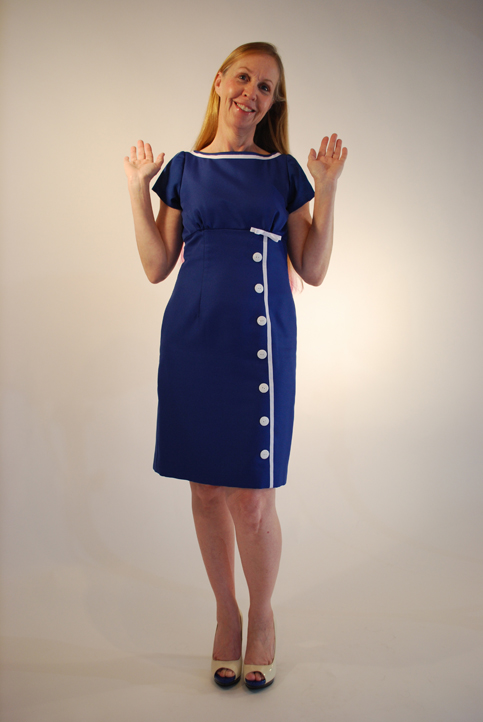 Photo Credit: Calley Brandon-Laux
Photo Credit: Calley Brandon-Laux
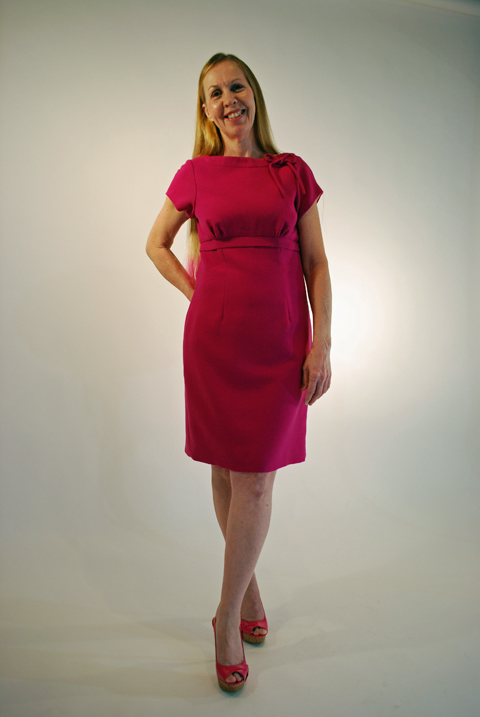 Photo Credit: Calley Brandon-Laux
Photo Credit: Calley Brandon-Laux
My “Joanie” dresses, as one of my sons so eloquently puts it!
So – while I look to the inspiration of designers, I feel a great sense of accomplishment when I can come up with my own ideas. It is designer ideas though that have a big influence on what we are going to see on the racks in the shops, stores and boutiques each season so I find it fascinating to watch what they do.
The fall Paris Spring 2013 Ready-to-Wear Fashion Show was held September 26, 2012 and went through October 3, 2012. There are some wonderful web sites dedicated to presenting beautiful photos of these events that include this site
http://www.style.com/fashionshows/S2013RTW/PARIS
but I thought it would be fun to share some of my favorites here with you. I will not likely ever own any of these designer’s apparel, but I’m not gonna say never because never is a fallacy right? Just go with it – I’m not gonna stop dreaming! 🙂
So check this out.
Read MoreDrafting Basic Bodice Block
So if anyone asked me what I did over the weekend that was fun, I would tell them I drafted a fitted waist seam bodice block that fits! At this point the yawning would start! There are those of us in this world however, who know how rewarding AND challenging this kind of project is. During the holiday season this last year, I started drafting the bodice block, got sick and stayed sick for a while, then things got busy, actually more like turned into chaos, so didn’t finish it – until of course this last weekend!
I was intending on drafting a pant block. Why you ask? What about Vogue 1051 or the Silhouette 3008 pattern. NOT – Big epic fail! I know how you are suppose to fit pants, but… maybe I just stink at it! I don’t know – but it was at this point that I decided to not be a sewing artist for a little while, and instead be a wine taster. After several glasses of wine to gloss over the nasty feelings of defeat, I remembered the big gun I had packed away and decided to bring it out.
About a year ago, I purchased this book. “Patternmaking Made Easy”, the second edition, by Connie Amaden-Crawford.
No – I am not going to school and learning fashion design. Wish I was but it’s just not financially possible for me at this time. That’s okay though because I happen to be one of those people that enjoys figuring things out on my own, even when it sometimes requires beating my head against the wall! Uhem…moving right along. This book is intended for the designer student and covers oodles of things regarding flat pattern design, is pretty straight forward, most of the time, so certainly worth it to have for my personal library.
Read MoreCoco Chanel – Thank you for the little black dress!
I have a fascination with Mademoiselle Coco Chanel that seems to keep growing. I can’t claim I developed this interest all by myself though… it was partially kindled by my son, Jared, who dubbed me “Coco” a few years back because of my on-going sewing projects. I didn’t even know he knew who she was! I proudly accepted my nickname but realized that I needed to know something about this woman so I began doing my homework.
Coco was born Gabrielle Bonheur Chanel in Saumar France on August 19, 1883 to an unmarried laundry woman in a workhouse in the Loire Valley. Considering that this went against the grain of society in that era, Coco tried to disguise her past. She changed her year of birth, changed the story of her youth as well as various other things which has made it difficult for those that want to tell her story to get it straight.
As the story goes, her mother died when she was 6, leaving her father with five children, some of which he farmed out to relatives. He sent Coco to the orphanage of the Catholic monastery of Aubazine and it was there that she learned to sew. At 18 she left the orphanage and at this point is where it truly begins… Her journey that one day takes her to the top of a fashion empire. Interestingly, she did not immediately start with the designing of clothes; it was hats that caught her fancy.
I am no Coco nor would I dare compare myself to such an amazing woman, but for some reason I feel an understanding or a connection to her. Maybe it is her passion that I identify with…I don’t know, but whatever the reason, I have found myself wanting to know everything I can so I have spent a lot of time surfing the web for anything Coco Chanel. I have ordered several books from Amazon and have recently watched several movies about her. Three autobiography movies have been done, each telling basically the same story though there are some subtle differences between them.
The most recent…
Coco Avant (before) Chanel was filmed in France in 2009
Audrey Tautou did a beautiful job at playing the part of Coco in her early life as Gabrielle Bonheur Chanel. You learn how she got her nickname and watch her journey towards becoming the fashion icon of today. I enjoyed the film immensely, though it would have been even better if there were sub-titles since it is all in French. I streamed it and for some reason (who knows!) I was not given an option for sub-titles so I had to follow the story with my eyes, leaving my ears to trail behind, hanging onto a few French words here and there that I knew. Yes, I watched a 111 minute movie all in French with no sub-titles! Either you will think I am very dedicated or crazy, but that’s okay. It’s all for Coco!
The second movie I watched was…
Read MoreFitting and fitting and welts oh no!
Okay… so I have started working on the Vogue 1051 pants project and…and…was fortunate that I used some old stash fabric for my first pair! I discovered the error in my ways and will make future adjustments for fit in the proper location. There, I admitted it – I messed up!
moving right along…
Note to self: Since my goal is to make pants that truly fit me, are comfortable, look professional and make my butt look good, then the number of re-dos is immaterial! Ha! What a play on words.
Now on to cutting out muslin #2 for second pair of pants.
Yes, still using scissors and not a rotary cutter. (I admit that I am a coward that needs more courage!)
I folded the tissue above the crotch line (the fold nearest the waist) to raise the crotch line to the fitting point that I found comfortable with the first muslin. For me this was a 5/8 inch fold that adds up to 1 ¼ inches being removed when I cut the muslin fabric. Yes…I am sort of short, sort of!
The second fold in the tissue (the one at the crotch line) is now in the proper place, uhem… which is why muslin #2. It is also 5/8 inches for a total of 1 ¼ inches of fabric that I am removing because the top of the leg is where there is bagginess under my derrière.
Sometime later…
Well this is interesting…tried on the basted together muslin #2 and there is still some bagging happening at the base of my back side so I decided to take up a smidge more of the fabric. I made a 5/8 inch fold (okay, a little more than a smidge) just below the crotch line, basted it in place and then tried it on. The muslin fit so well that I decided to use it as my main front and back pattern pieces.
Read MoreStop for a moment and Take a breath
This is a fairy figurine that I purchased several years ago because it reminded me of my baby girl who is just about all grown up! But this fairy also reminds me of other things too which is why she sits on my night stand next to my bed. She is there to remind me to slow down, to remember to take care of myself and to reflect on the things that truly matter to me…So for this moment my readers, I need to set aside sewing, stop and take a breath and share some thoughts with you.
I have spent the last 4 months birthing this blog. Yes birthing, because while I have been so excited to do this project, it has been a bit laboring. I am my geek squad that developed this site as well as the writer/author and the sewing artist who is suppose to be sewing so I have something to blog about! I am certain things will smooth out soon, but be patient with me as I work through the bugs.
As for why I decided to create this site – well…I think it was several things. For one, I’ve really been inspired by other fellow bloggers. There are some wonderful sites on the internet, beautifully done and that provide a wealth of sewing information.
Then…the other reason – a good friend of mine, Gina, feels that I should teach sewing classes. I adore her confidence in my abilities but wish that I could feel as sure. It occurred to me after mulling her suggestion around a bit that maybe a blog site would be a good starting place to entertain this notion. Only time will tell and because I love adventures, I will press on and see where I end up!
I look forward to the months and seasons to come and maybe at some point in the future we will find a way to come together in Paris as sewing artists, to share our creative thoughts and abilities of sewing over a wonderful glass of wine! Okay…break is over and time to get back to work! “Tata for Now!”
When winter hits, the pants come out!
I love to wear dresses or skirts with tops because they are usually a lot less restrictive and easy to move in. However, when I get cold…out come the pants! To make sure we are on the same page, when I talk about pants, I am talking about dress slacks, maybe cargo or a straight leg slimming everyday pant, but not jeans. Hey I love jeans, but just not on me! I have a hard time feeling comfortable in them. Regardless of the brand or style, they never seem to fit me properly, which is why the up and coming Silhouettes # 3300 project…can’t wait!
Now…back to pants. Overall, I have had decent luck getting a good fit with pants that I have purchased, but I feel it is time to break free from the chains that have kept me prisoner to store bought pants, face my fear and learn to make my own…that fit! Then on to jeans!
For starters, I decided to try this Vogue 1051 Alice + Olivia pattern because I liked the overall style.

Vogue 1051
They have a wide waist band which I find comfortable, a slightly flared leg, and welt pockets in the front and back which are intimidating to me because I don’t do enough welts though that is about to change!
Read MoreTis the season
The festivities are beginning and with it, the planning of parties, holiday events to attend, and an important feature of it all, the age old question, “what am I going to wear?” In my world, the answer is “what am I going to sew?
Dresses are always a must during the holiday season which can be oh so comfortable… or not! This one, a new winter season McCalls 6646 has so many possibilities. The color combination of black with a deep violet blue contrast looks gorgeous…but then red as the contrast would also give it a kick! The “Pretty in Pink” look is also a winner as far as I am concerned!
This is a “Plus” pattern so there are a few variations for the creative artist in us! Assembling the pieces are actually not as difficult as it may look. The bodice is made up of princess seams with boning in the side and side back seams. It has a sweetheart neck line which is one of my all time favs though it does have an optional overlay with shoulders and neckline that the pattern calls a “flounce”. The straps are optional spaghetti or wide straps. The bodice is underlined and there is also a lining for both bodice and skirt.
I love the look of the black fabric used in the pictures and may have to do some sleuth investigating to find it. So many decisions!
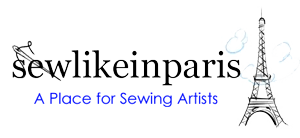


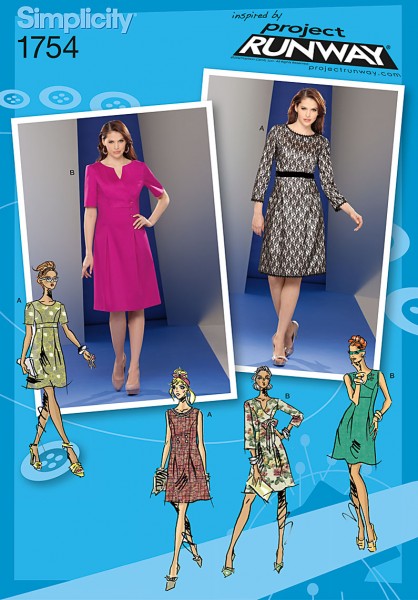
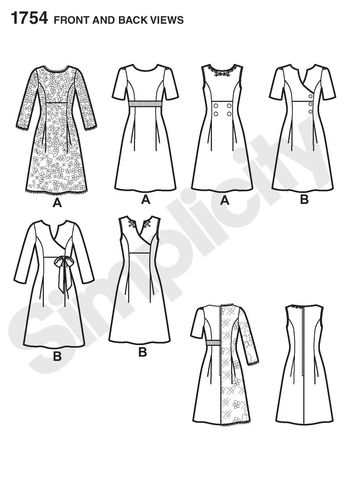
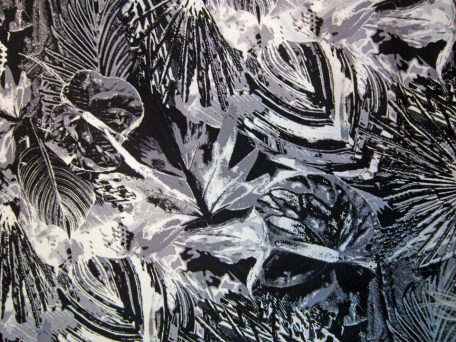
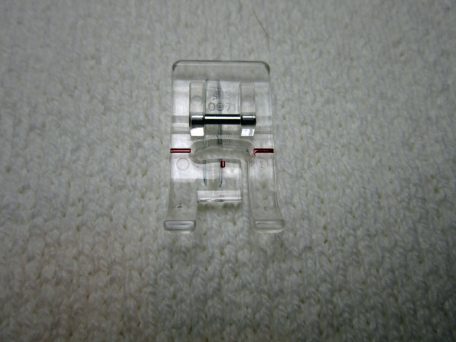
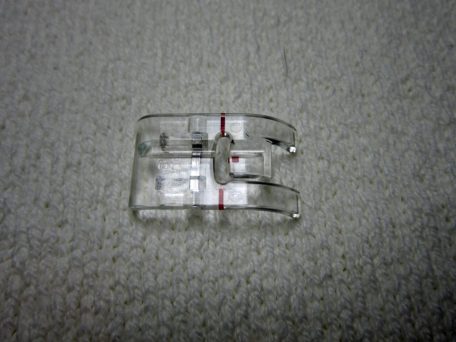
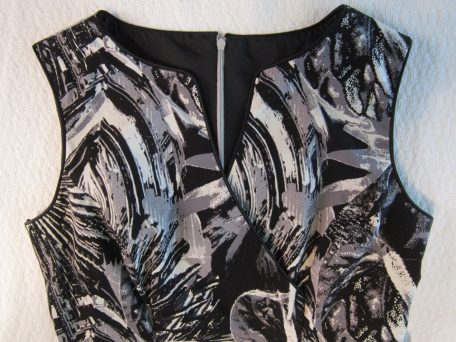
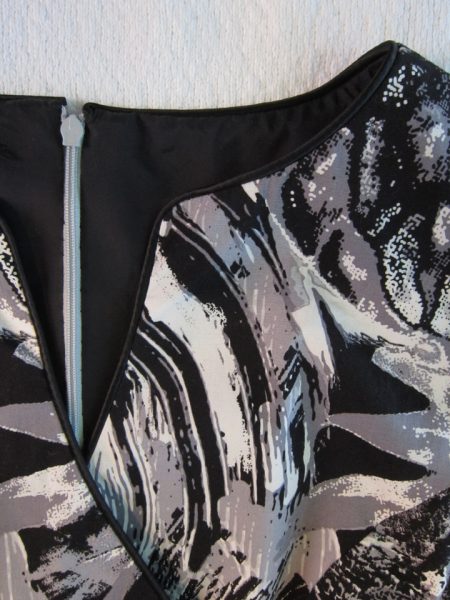
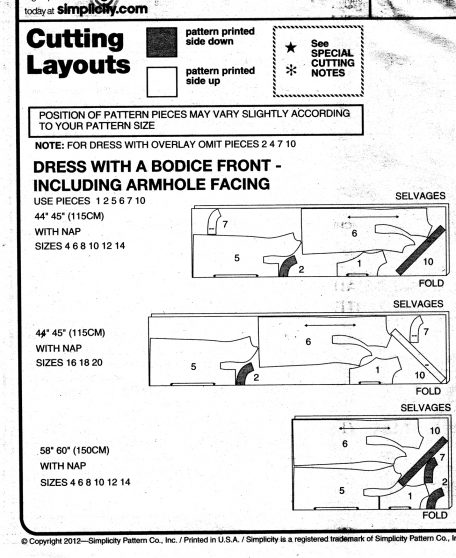
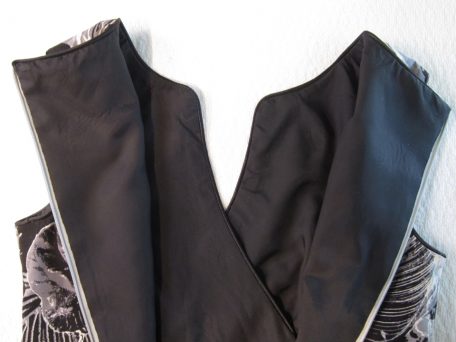
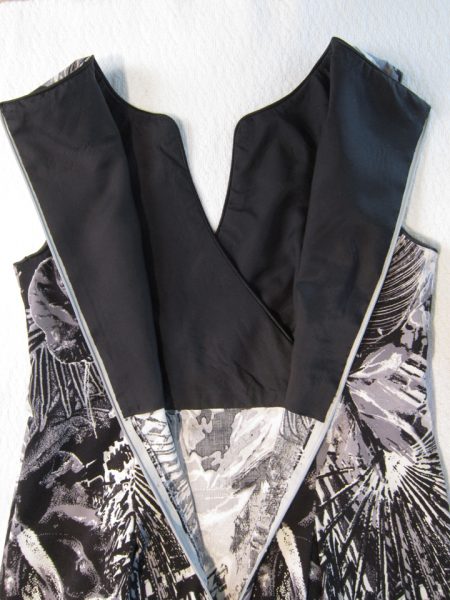
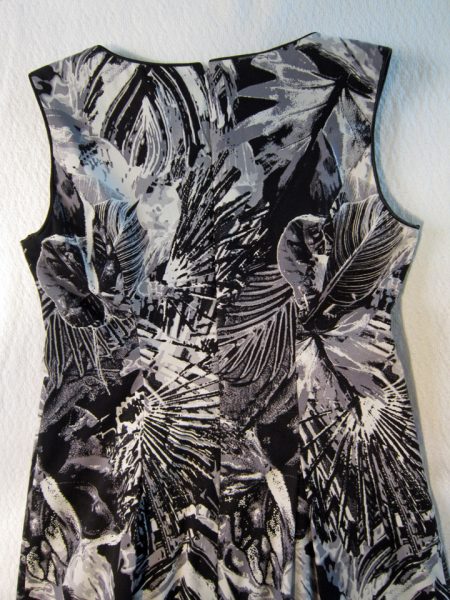
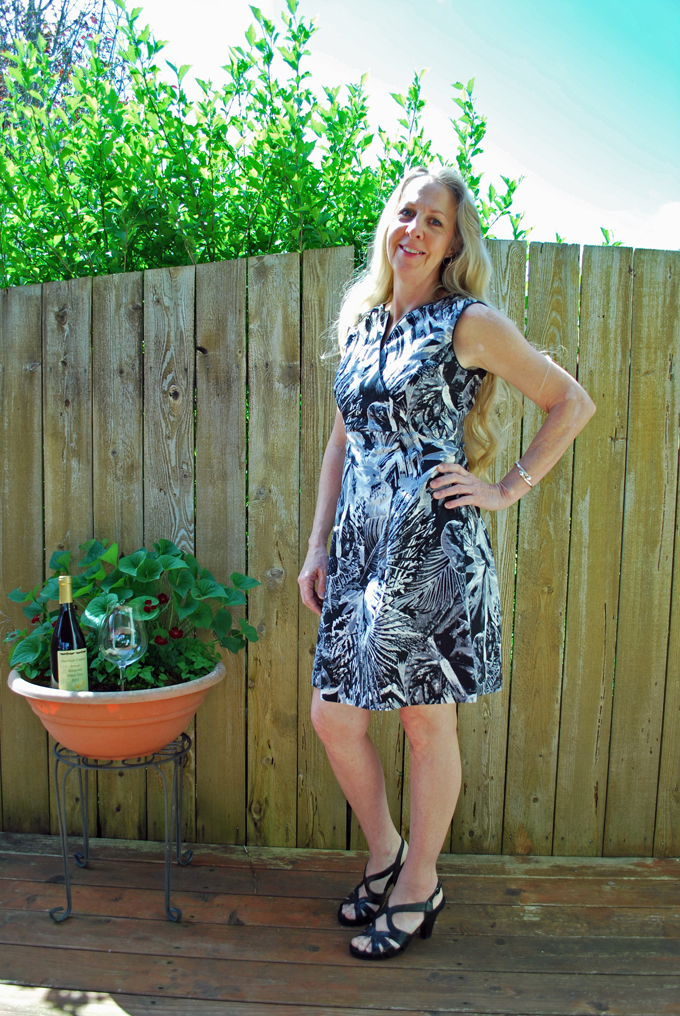
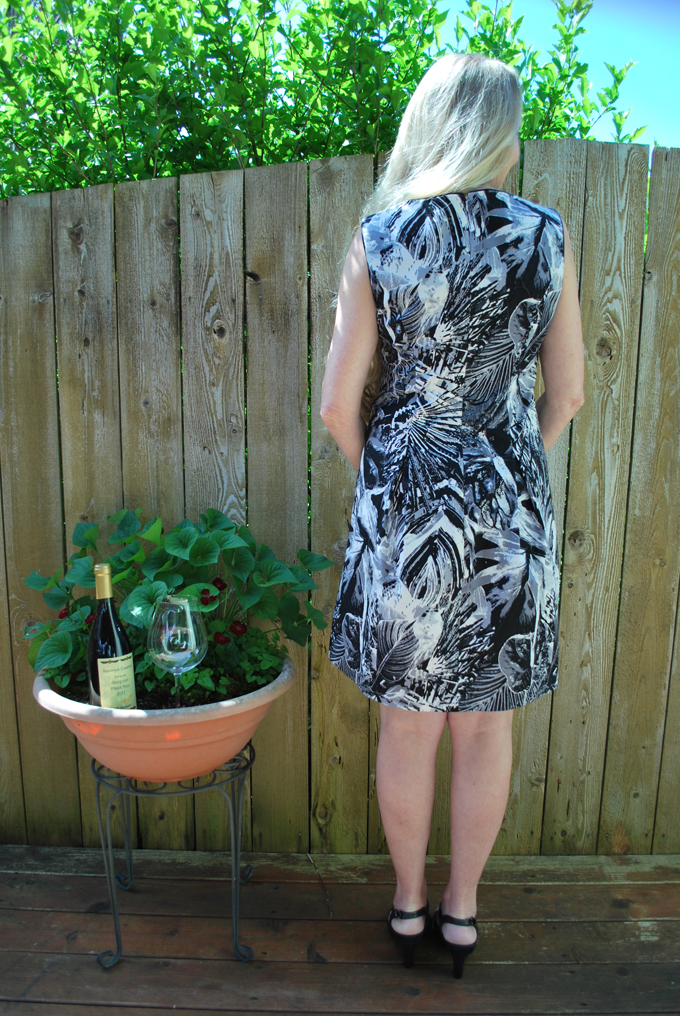
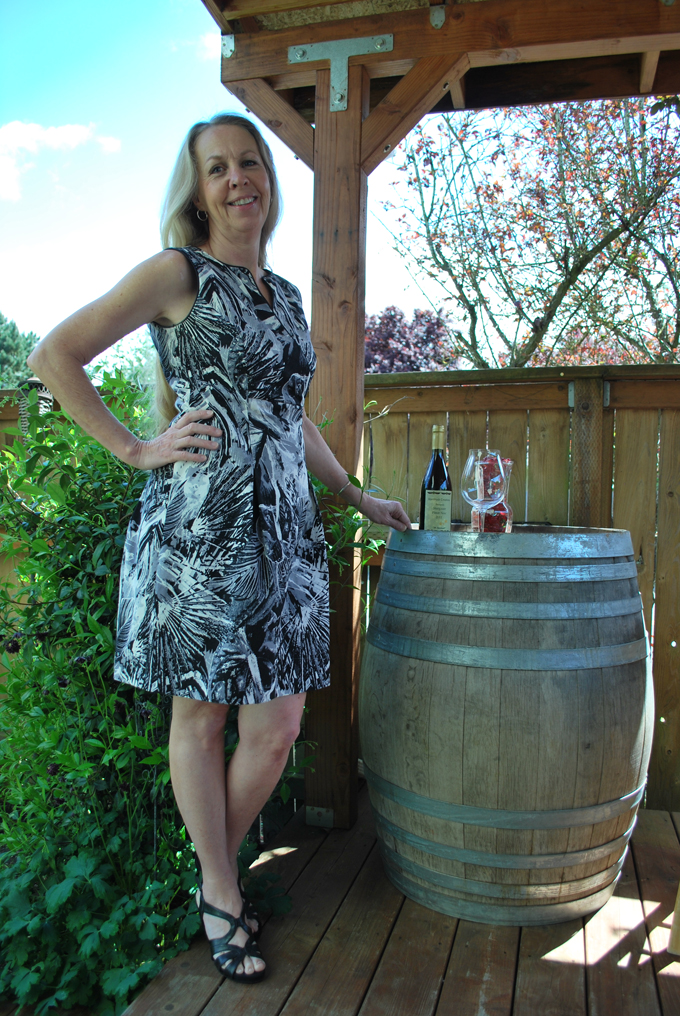
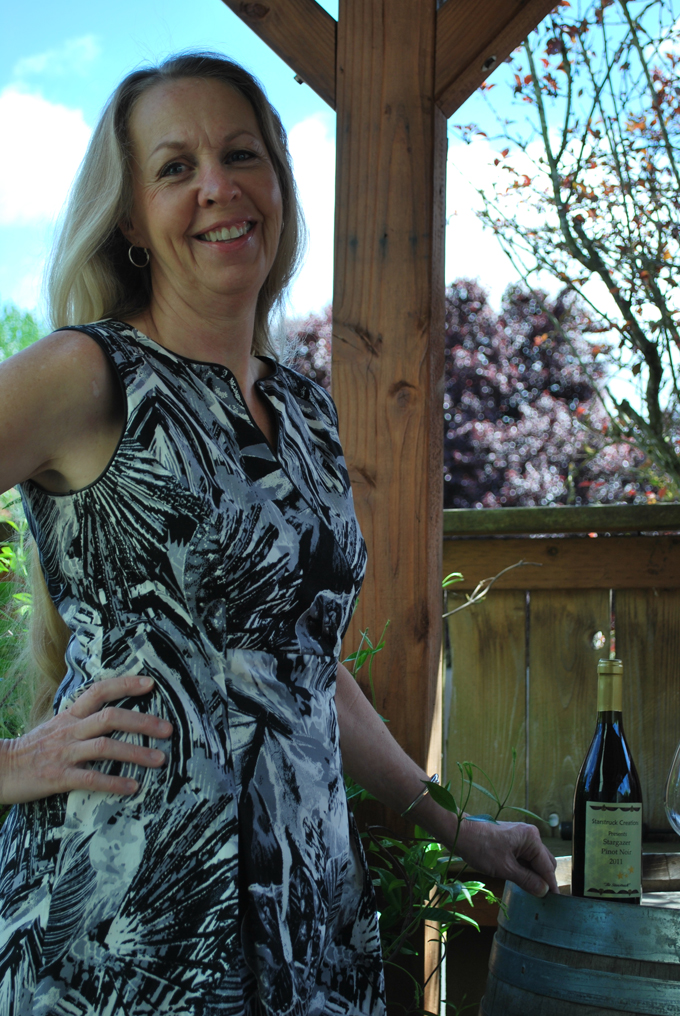
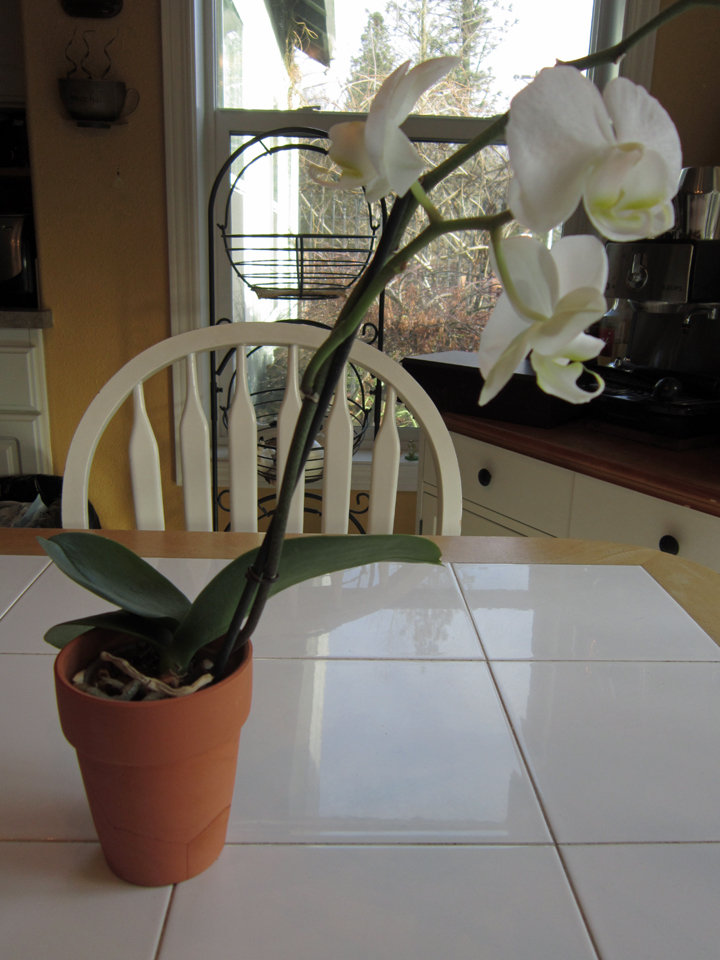
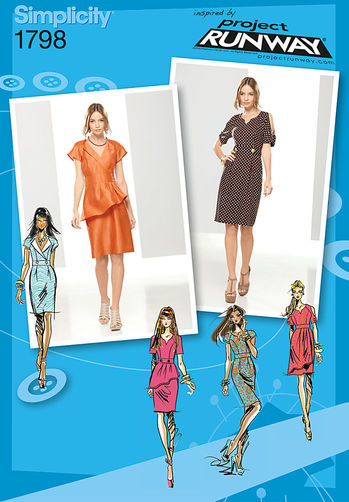
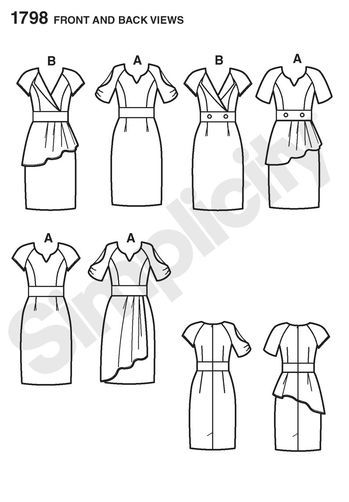
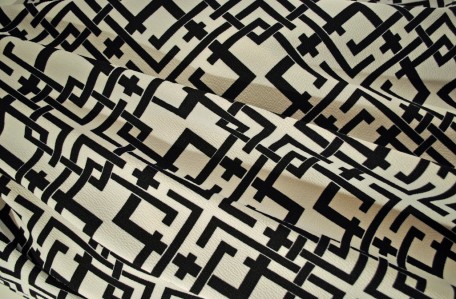
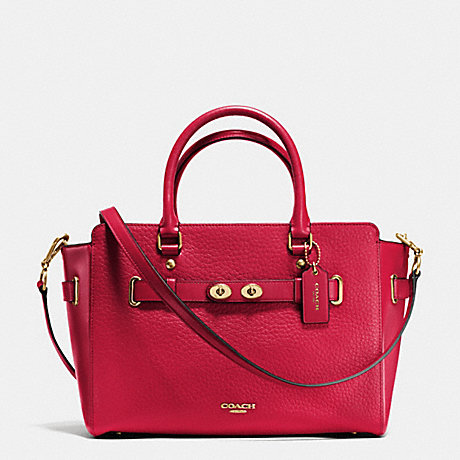
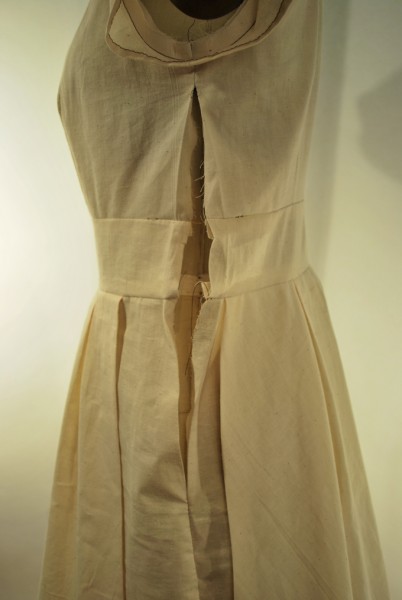
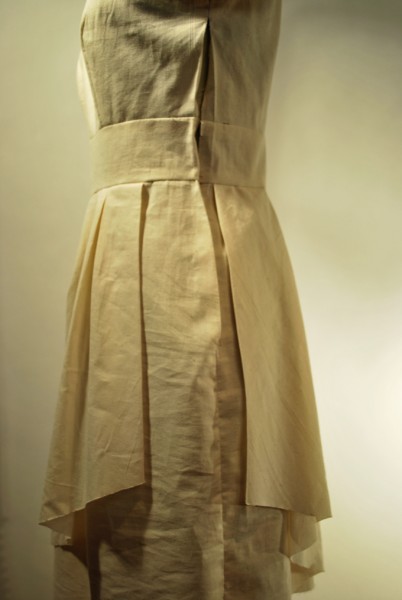
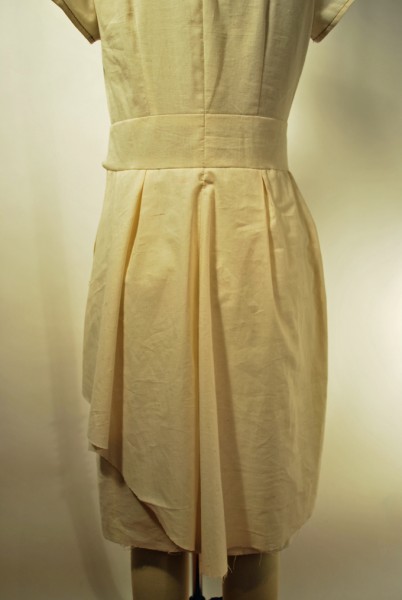
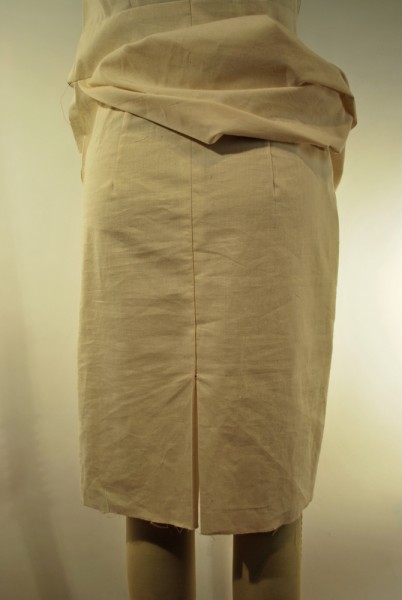
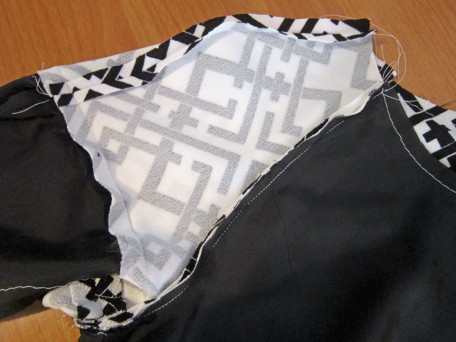
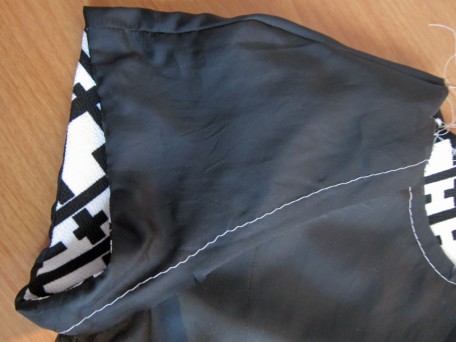
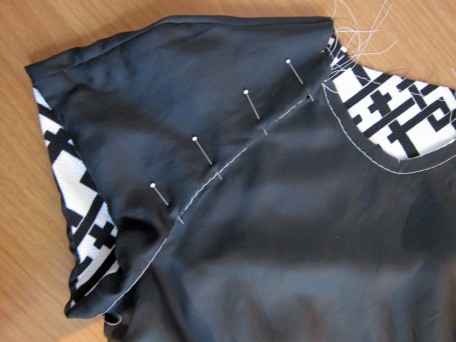
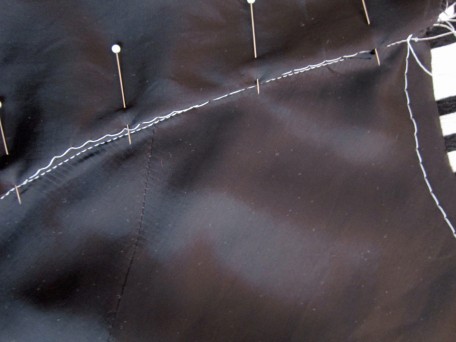
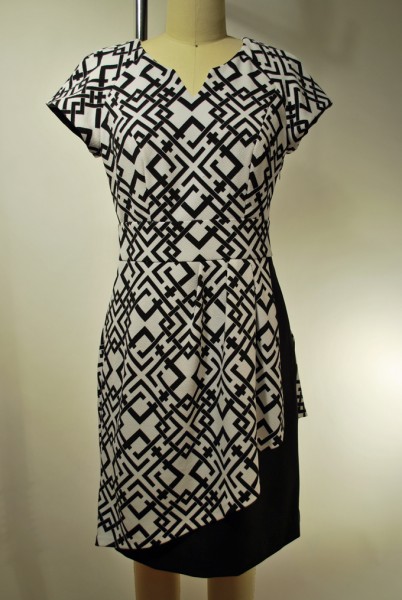
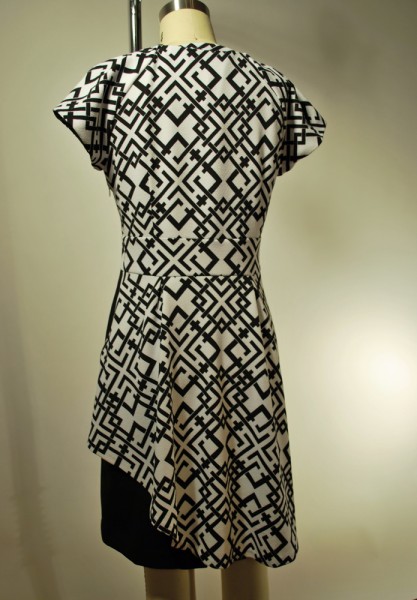
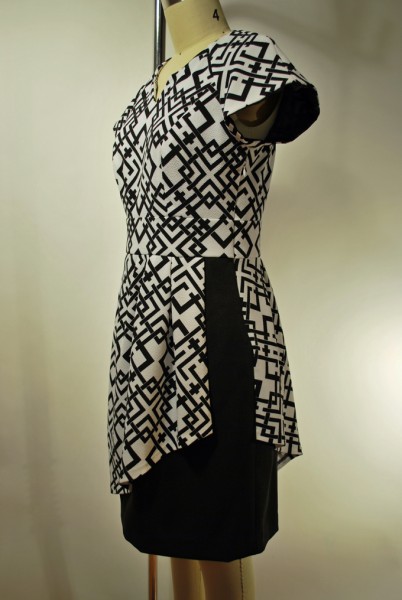
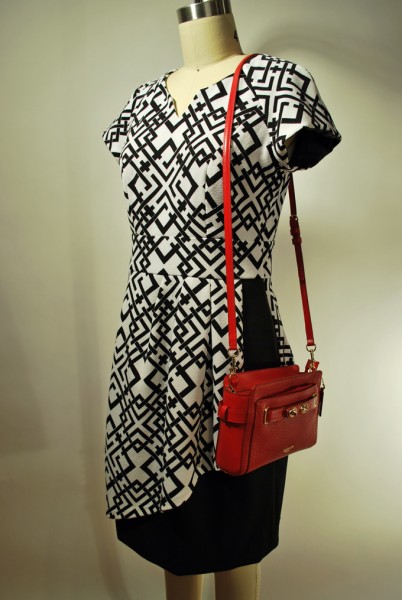
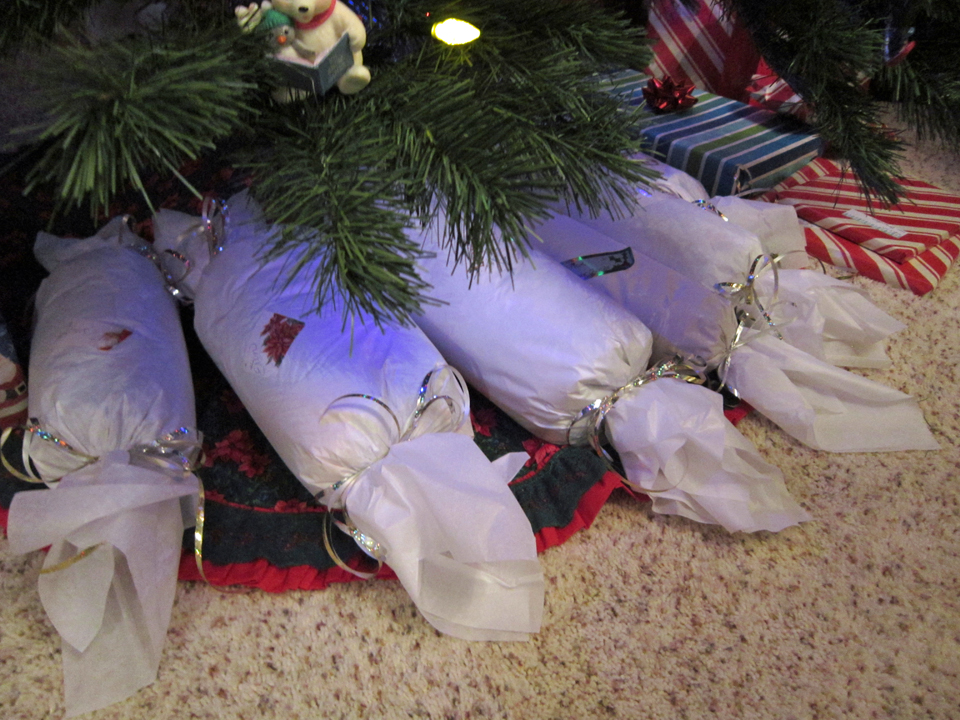
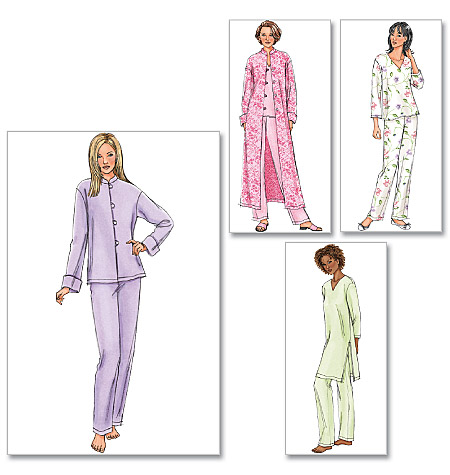
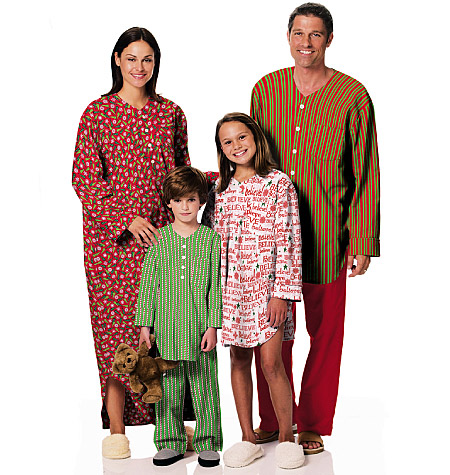
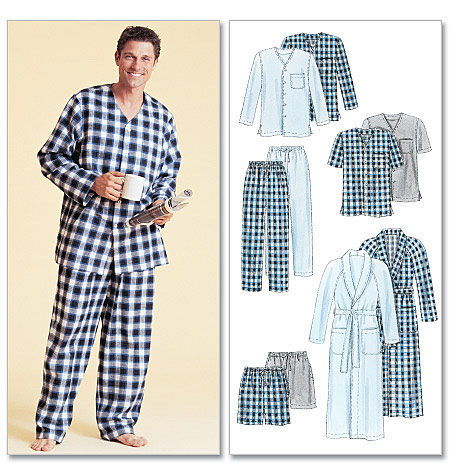
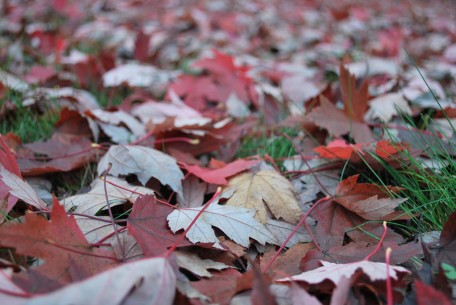

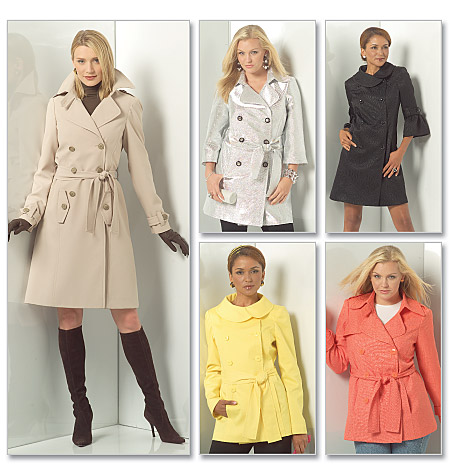

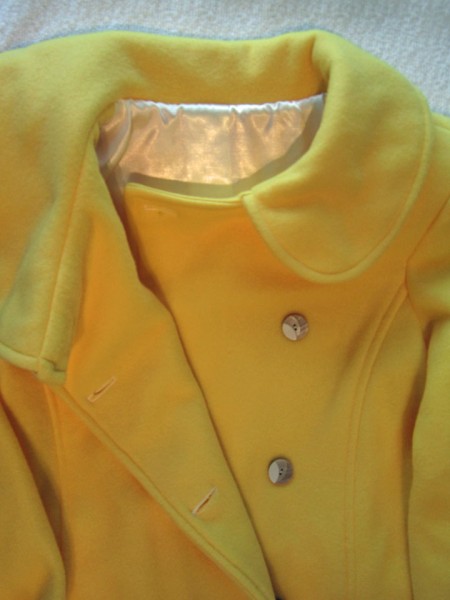
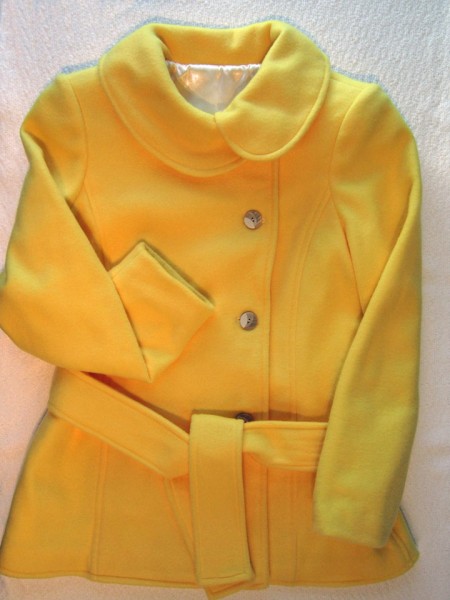
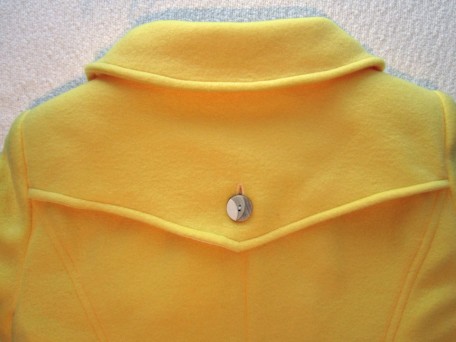
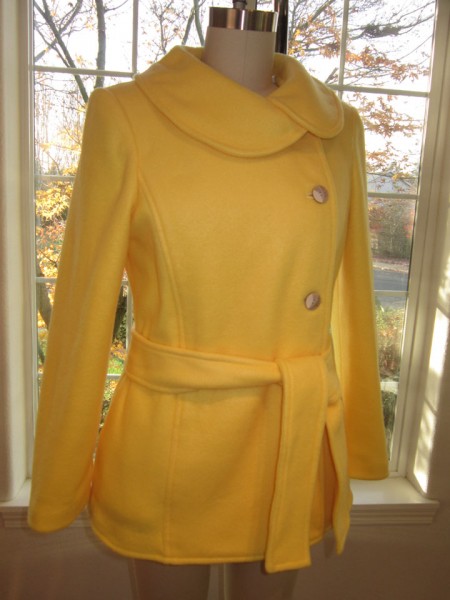
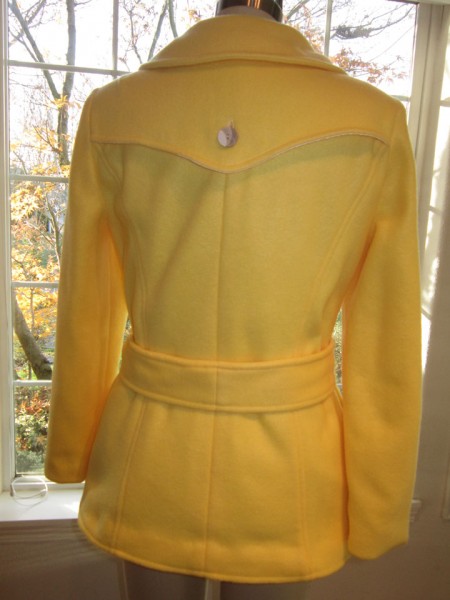
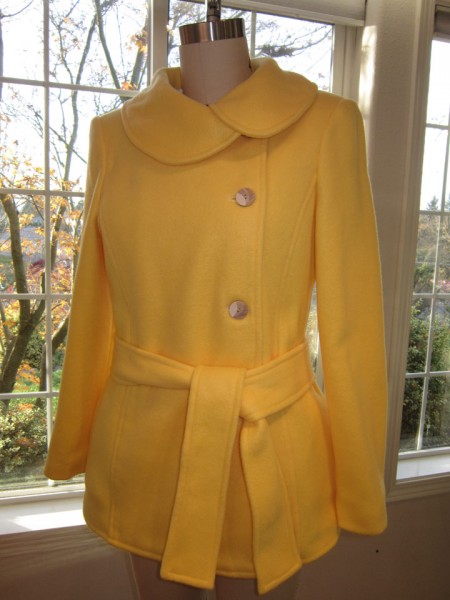
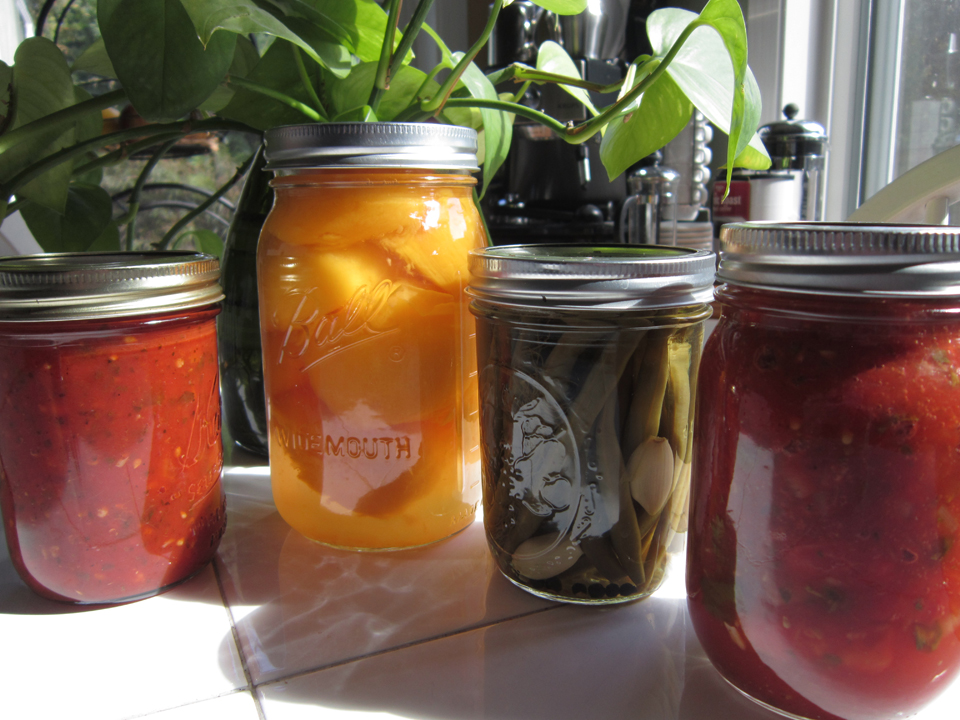
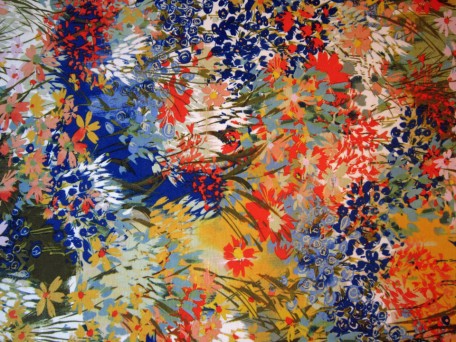
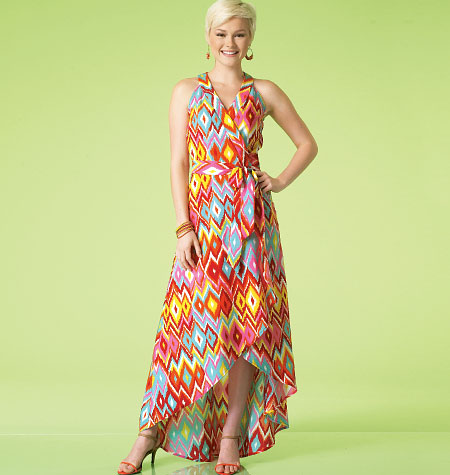
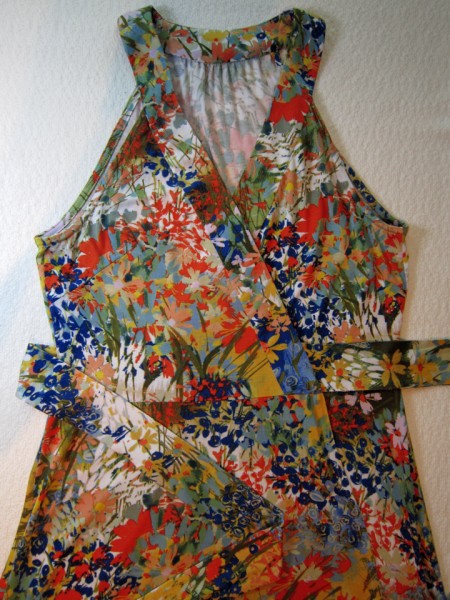
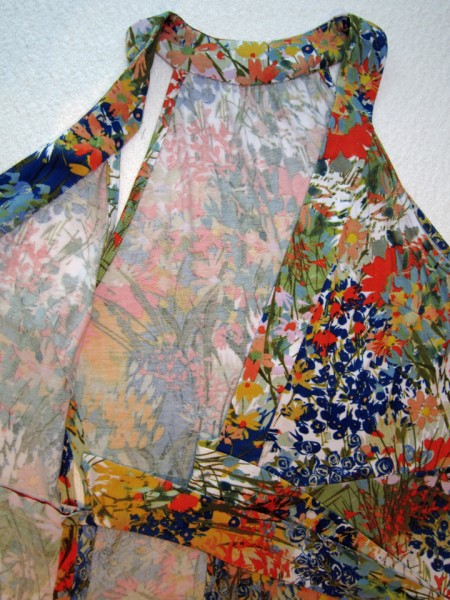
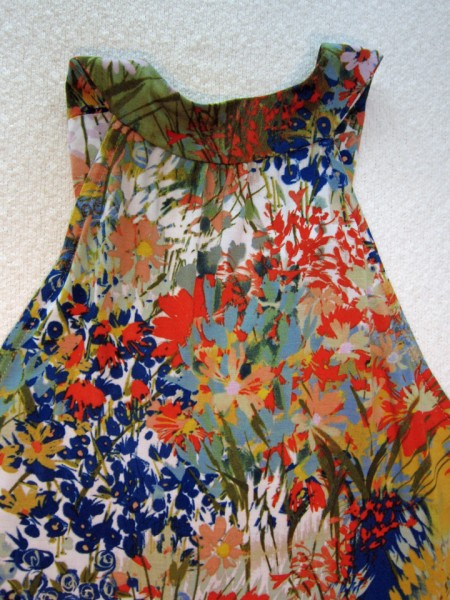
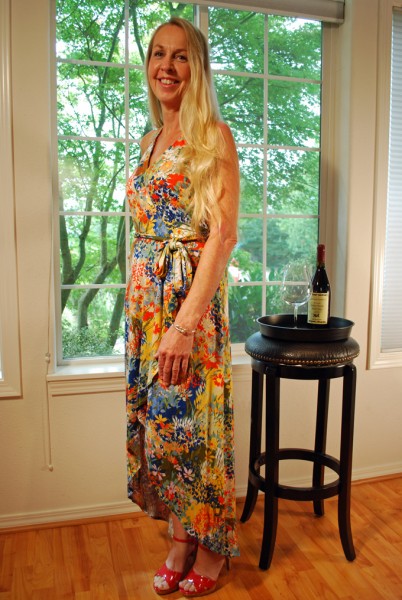
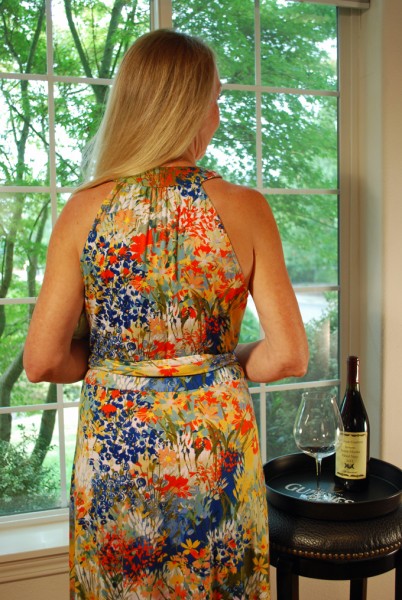
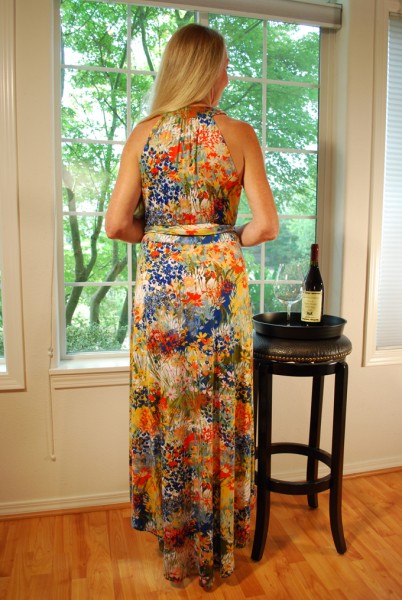
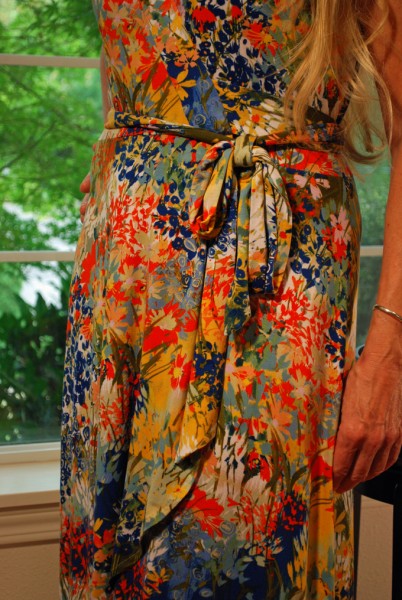
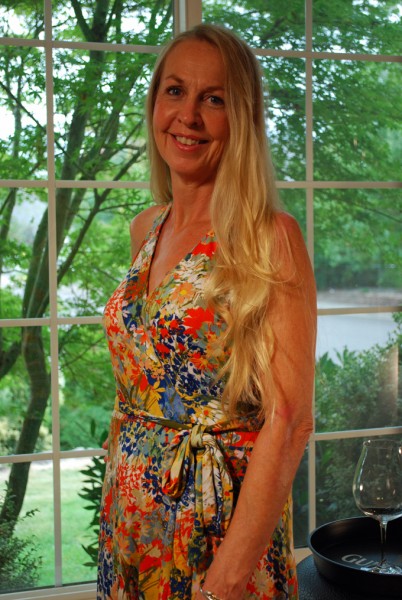

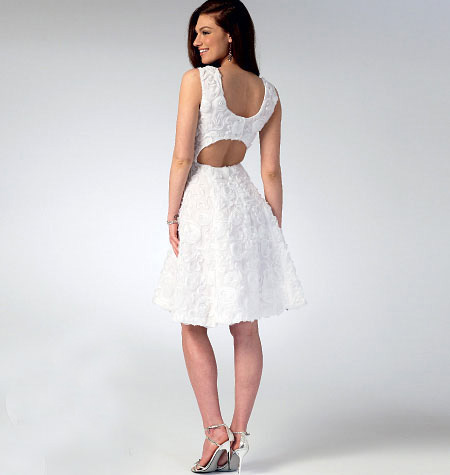
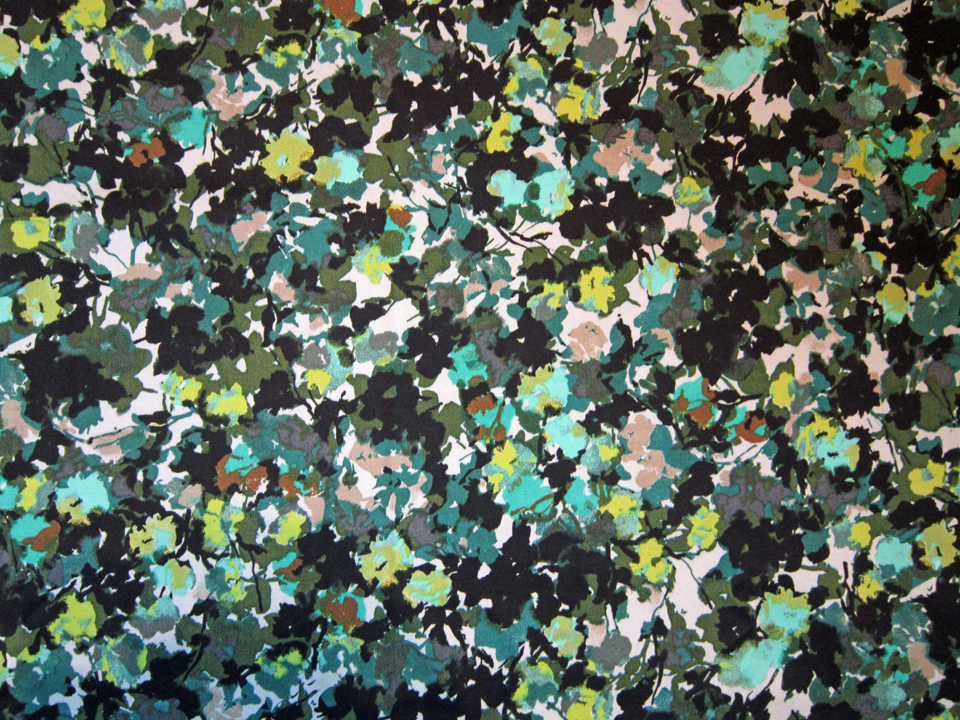
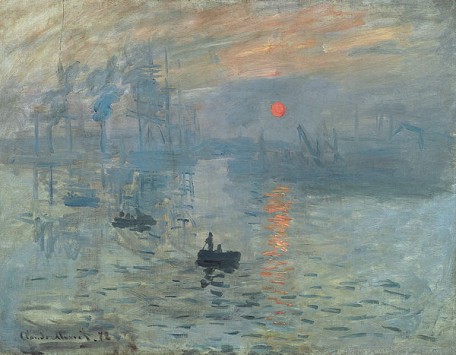
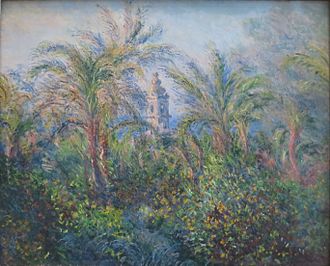
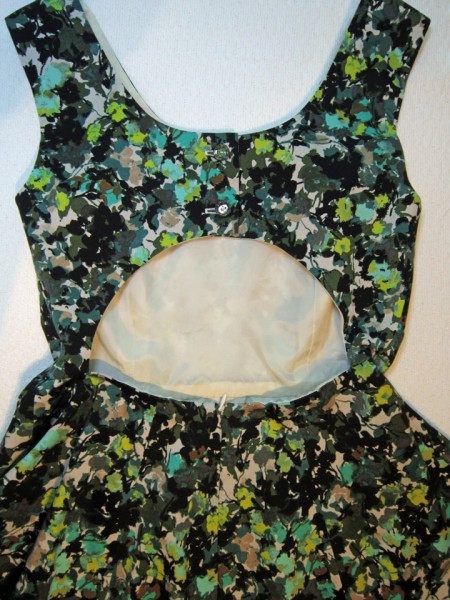
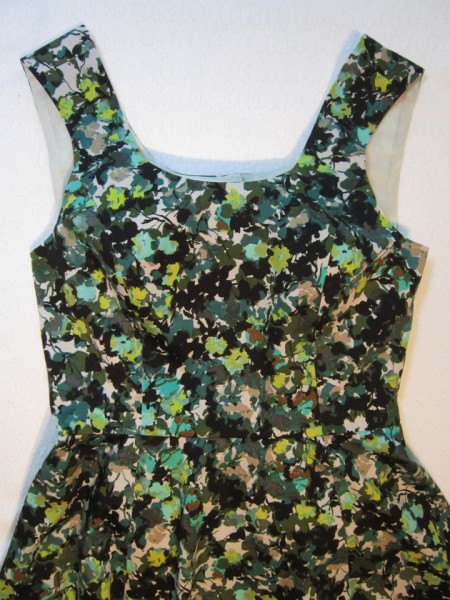
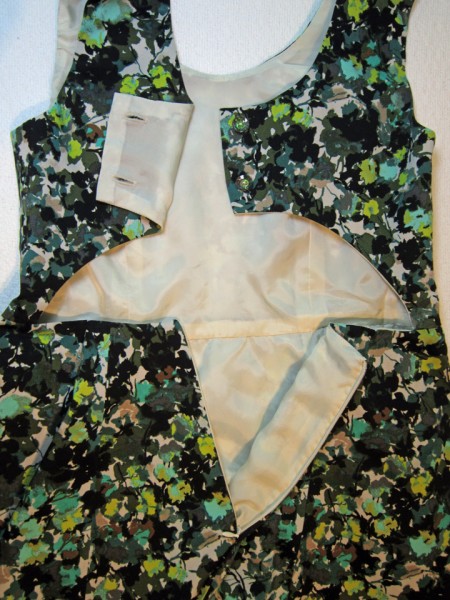
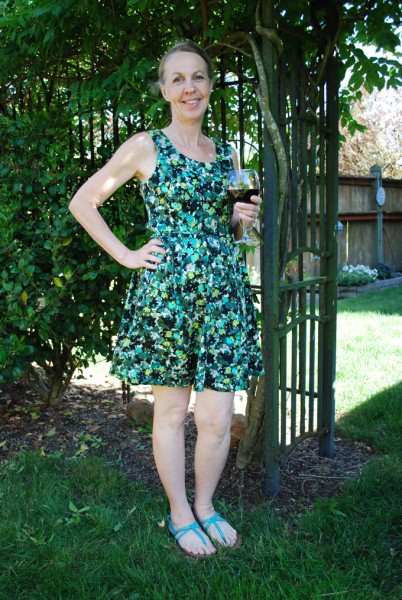
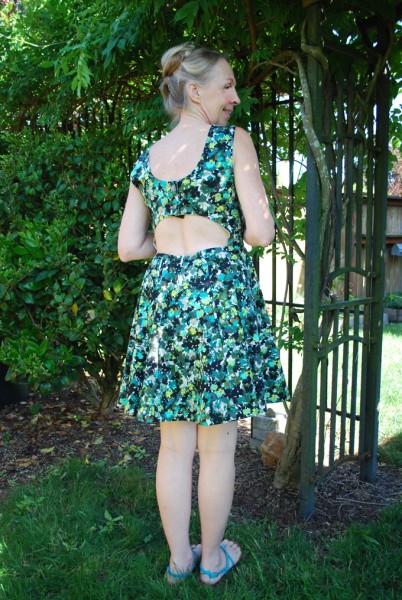
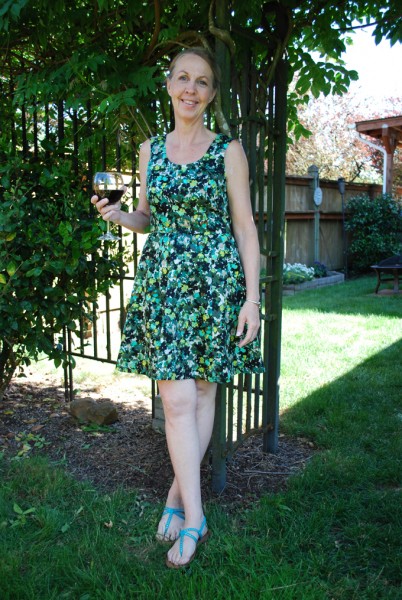
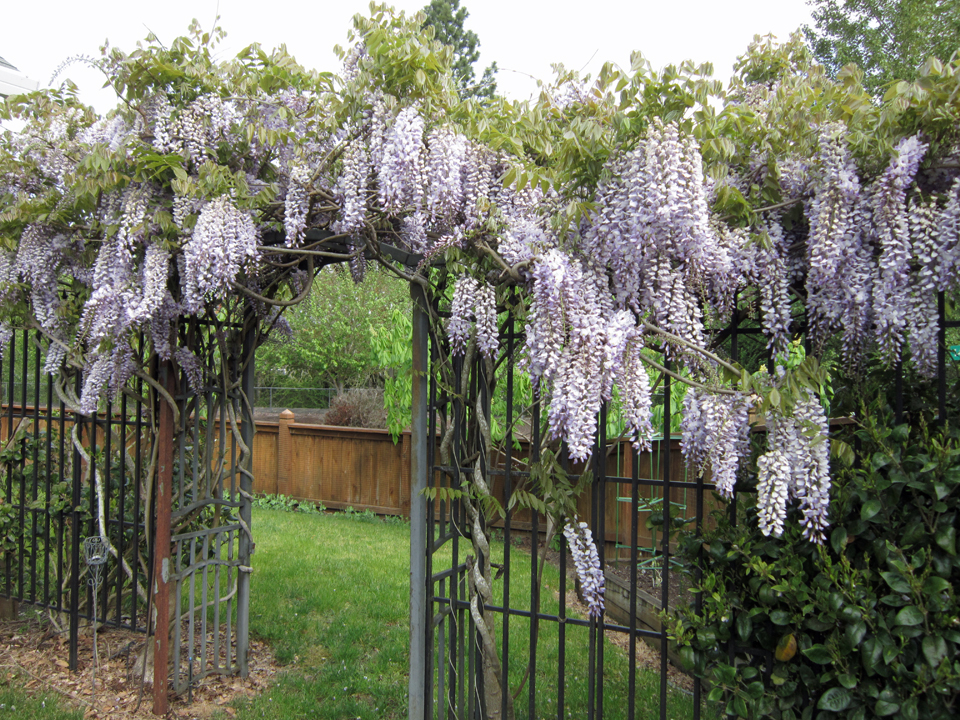
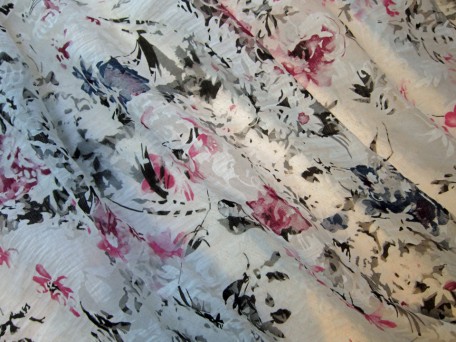

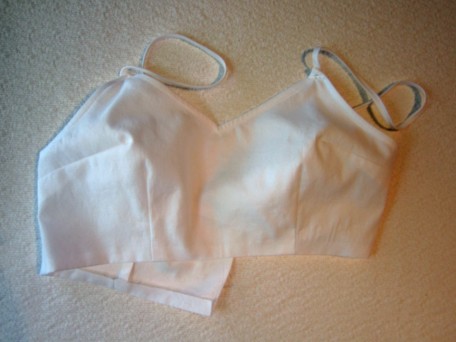
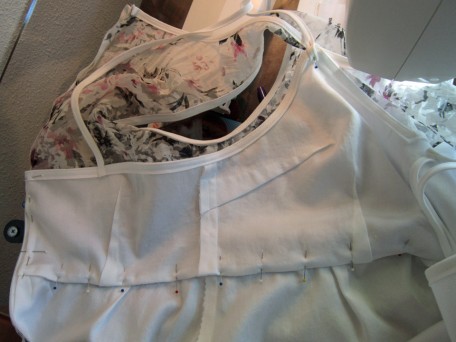
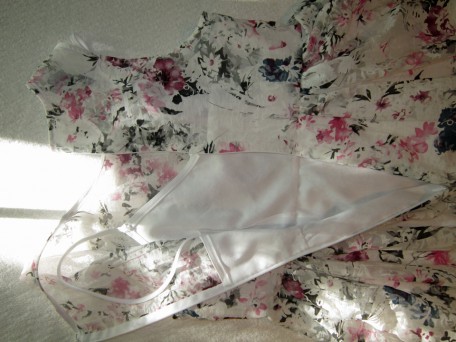
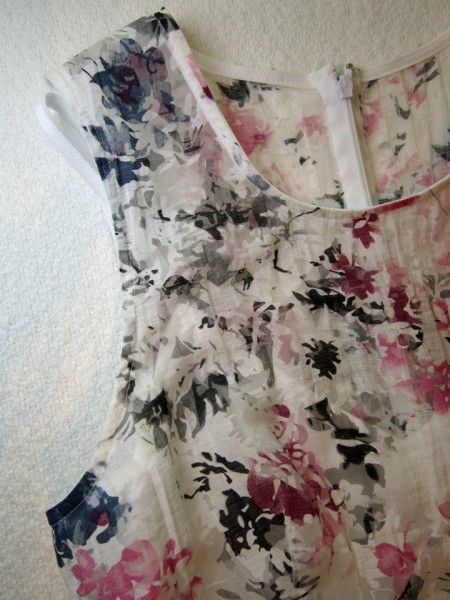
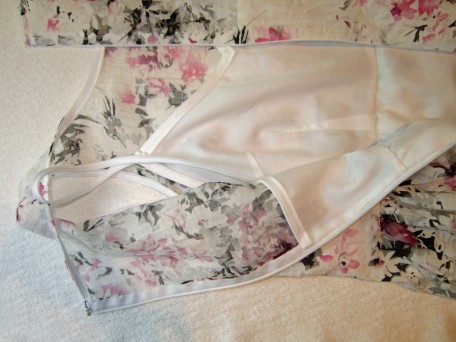
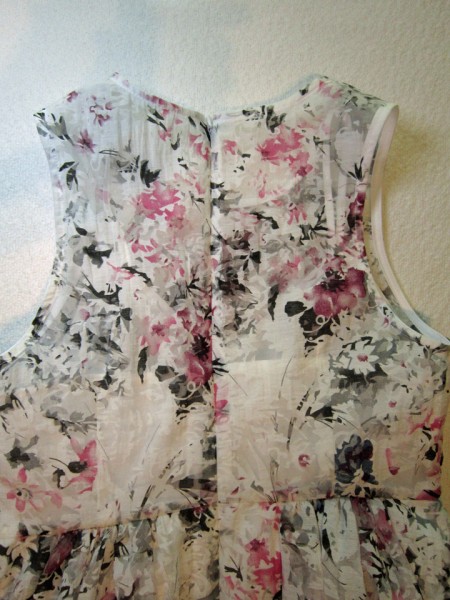
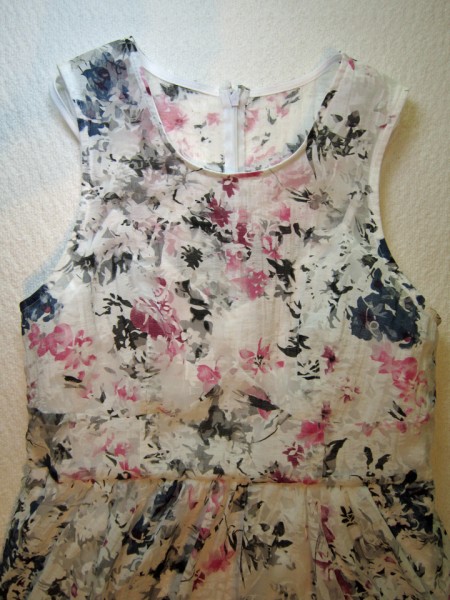
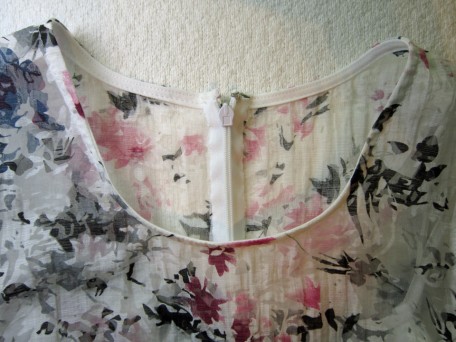
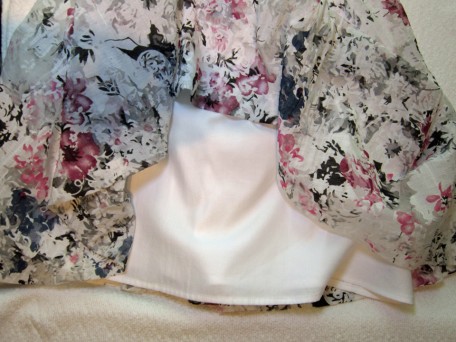
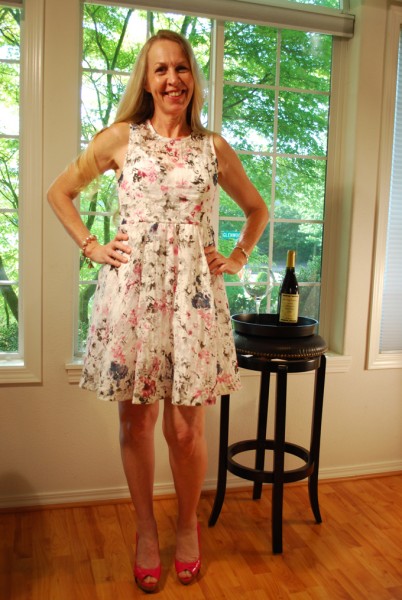
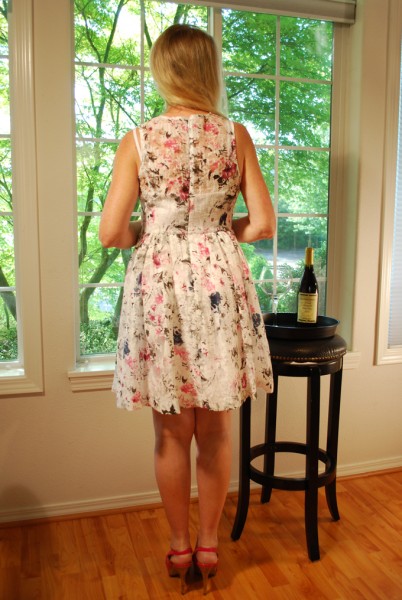
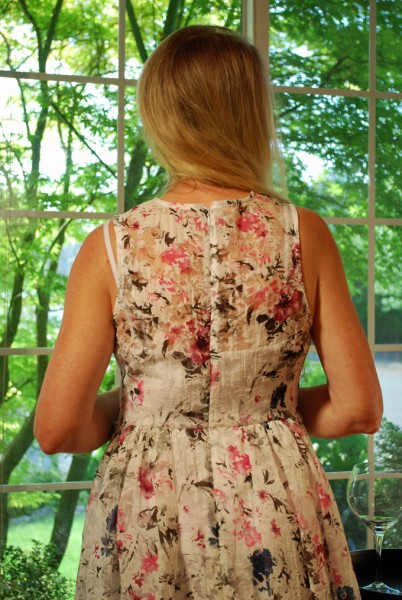
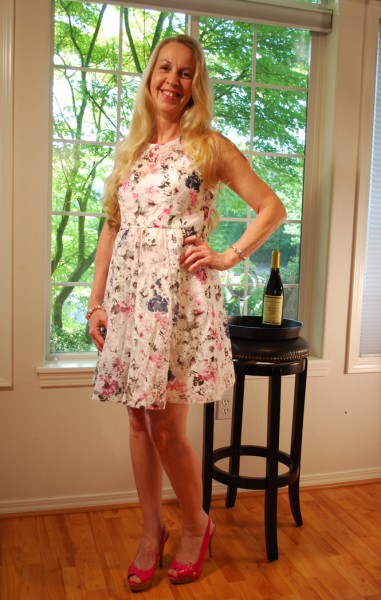
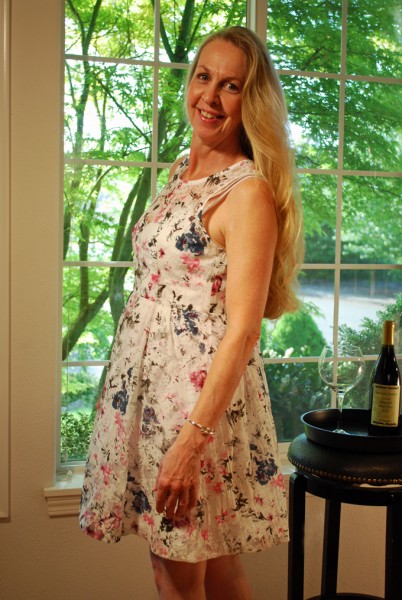
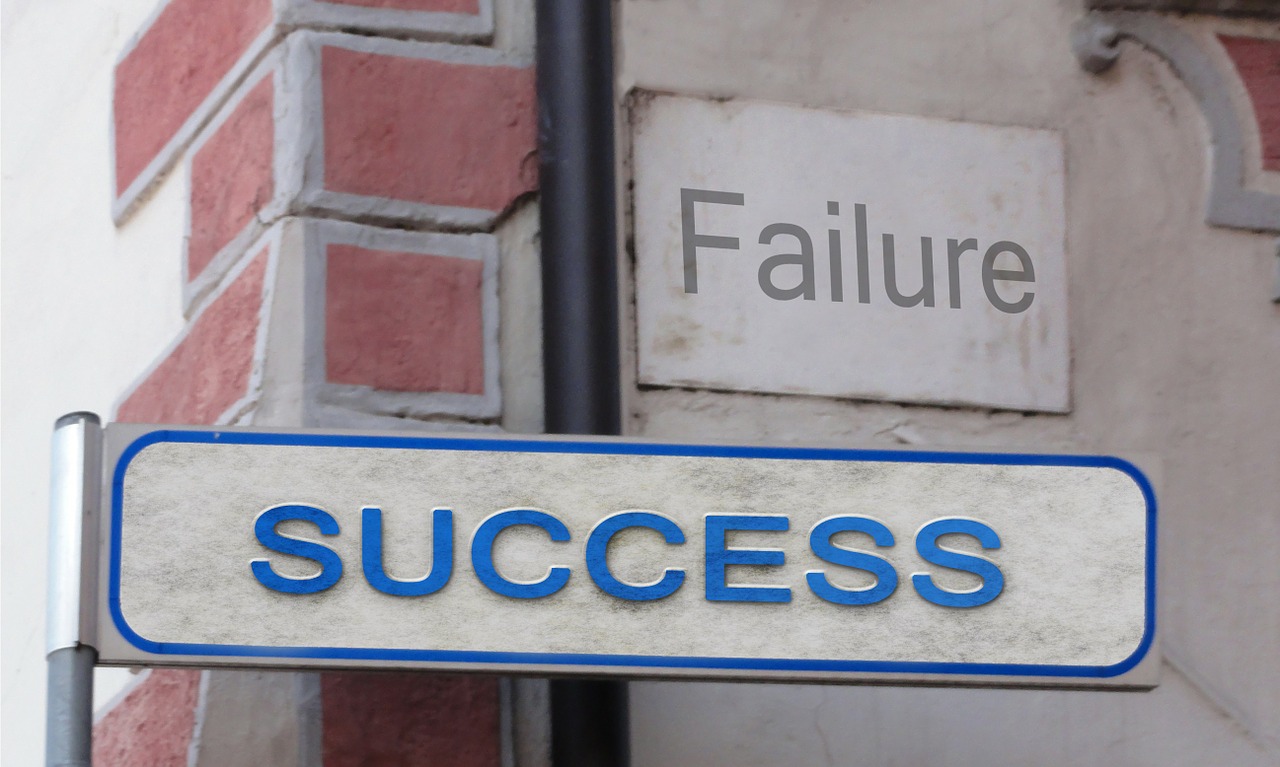
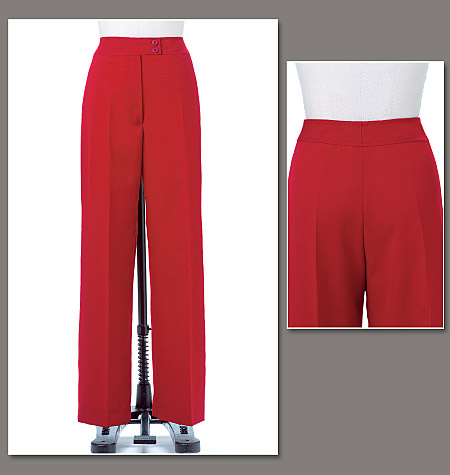
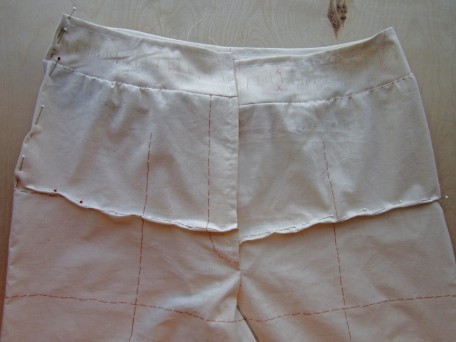

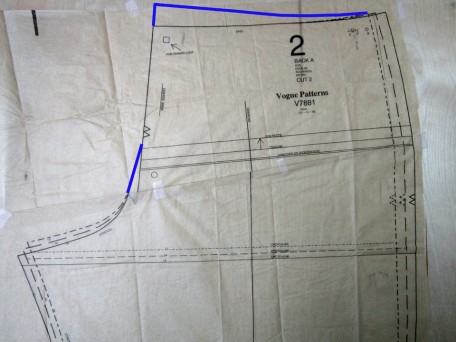
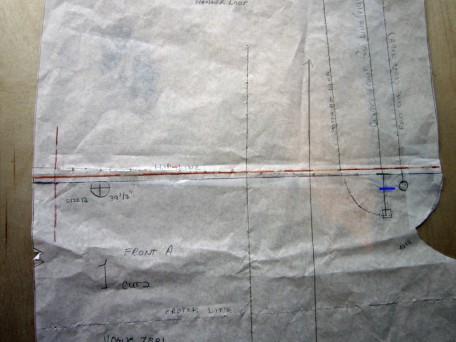
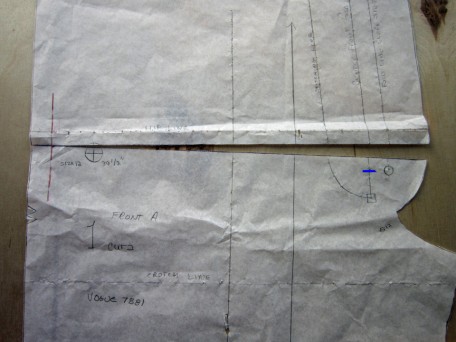
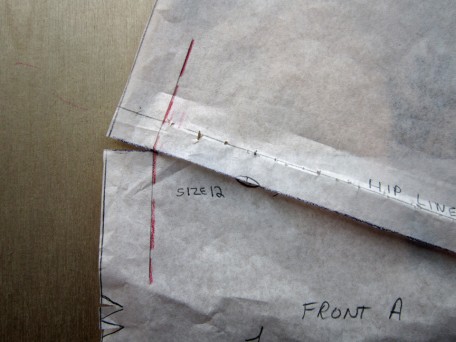
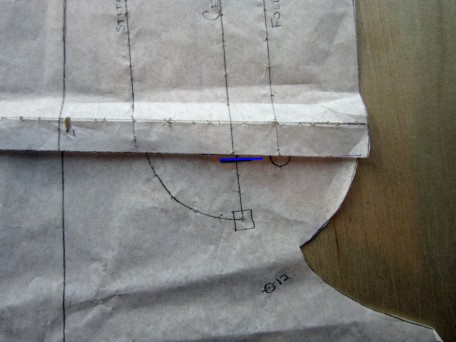
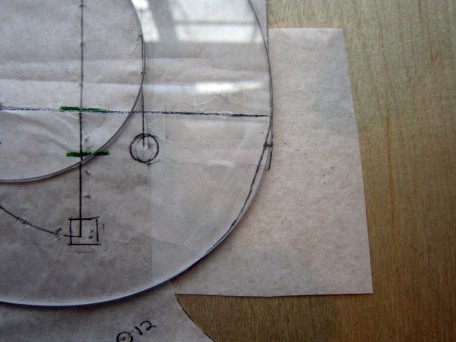
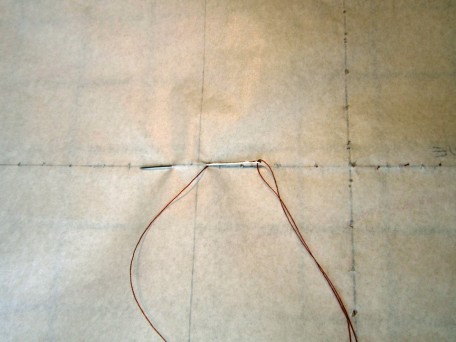
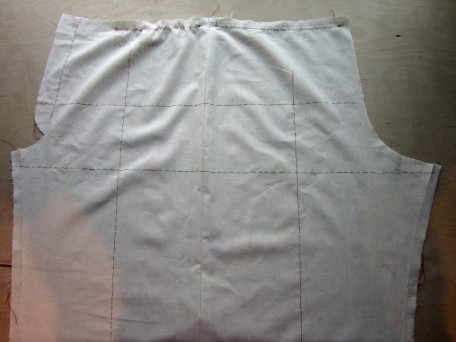
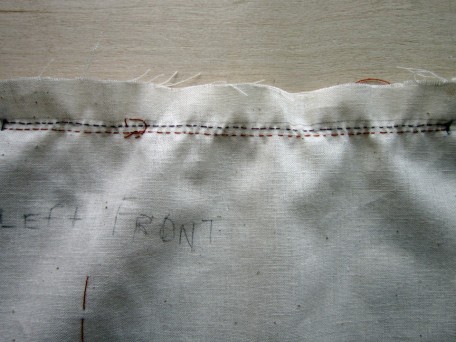
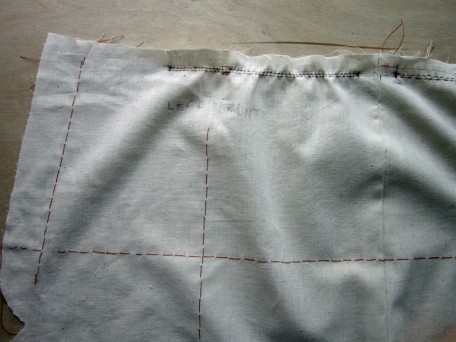

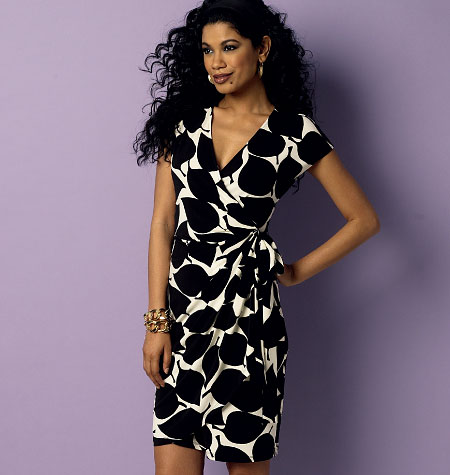

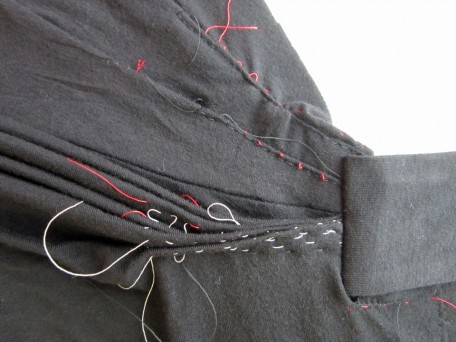
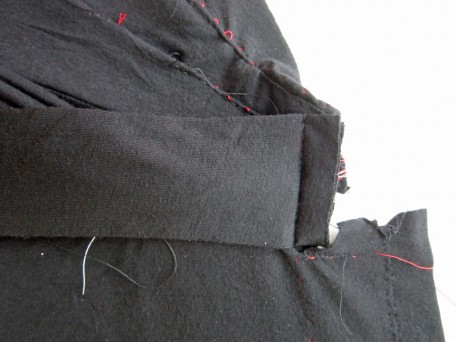
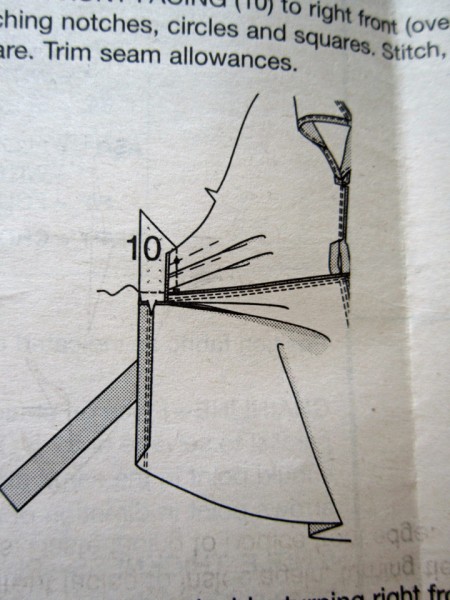
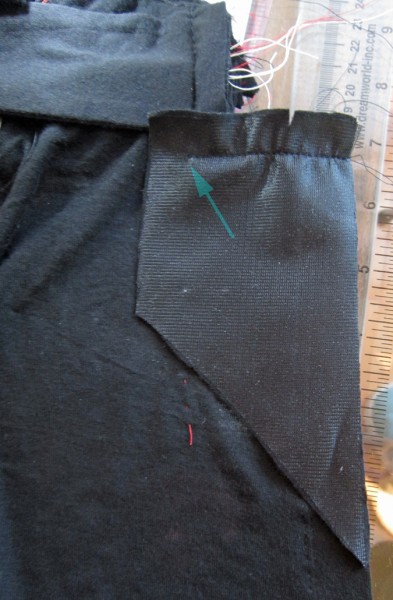
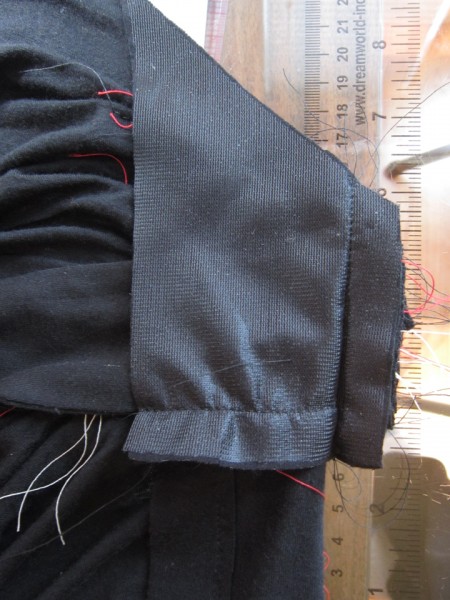
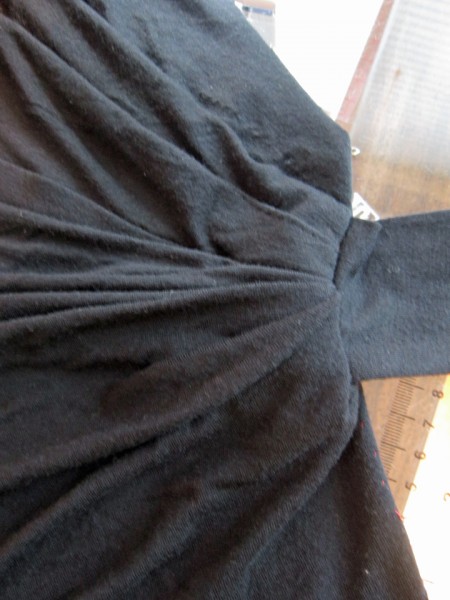
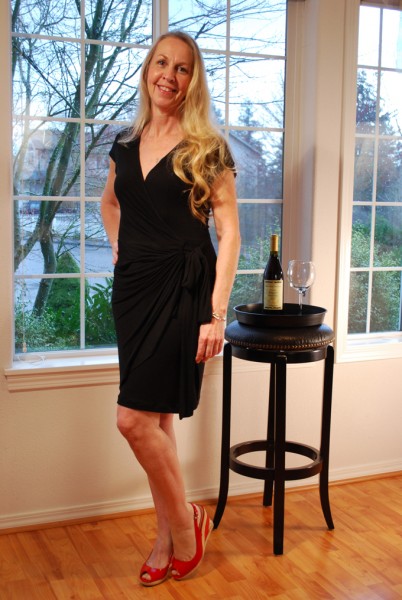
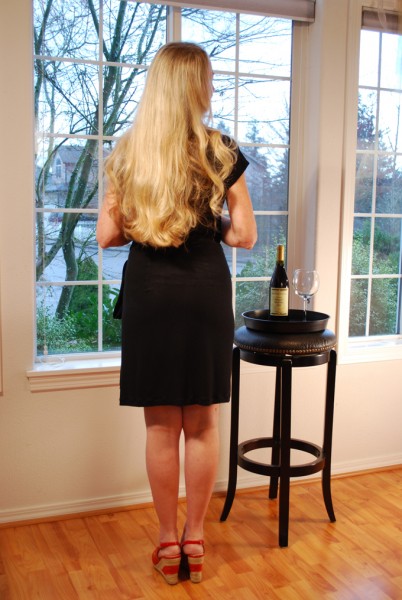

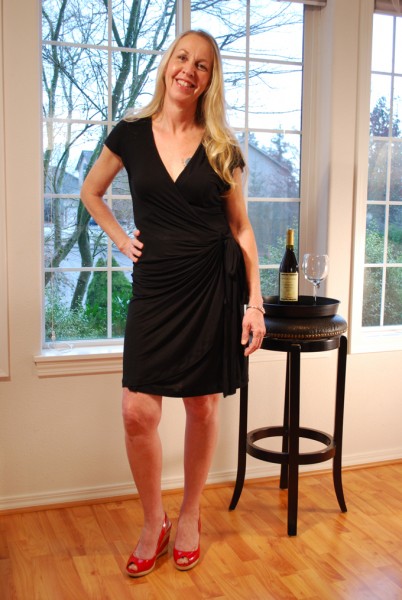
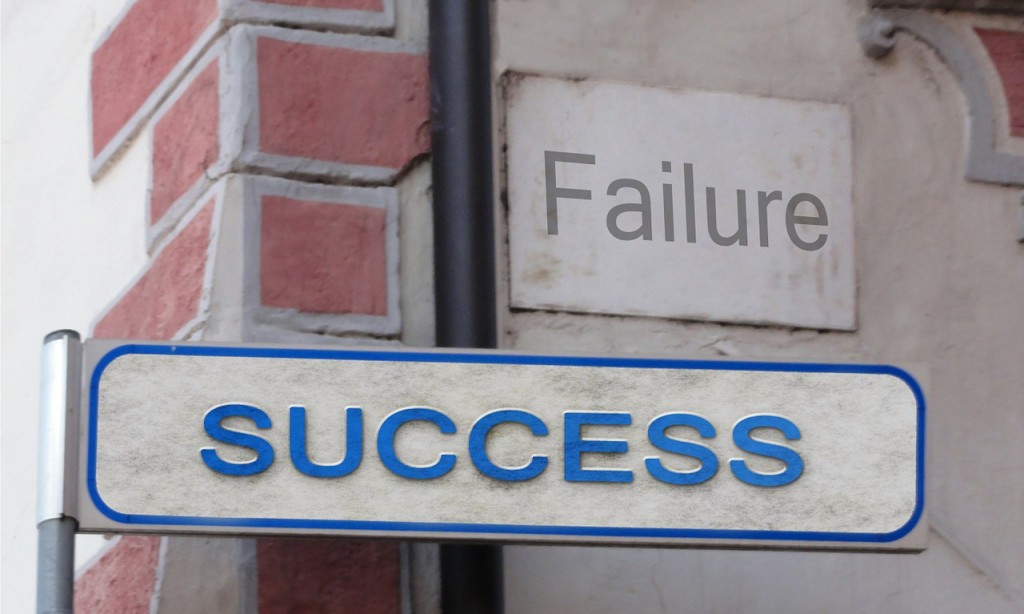

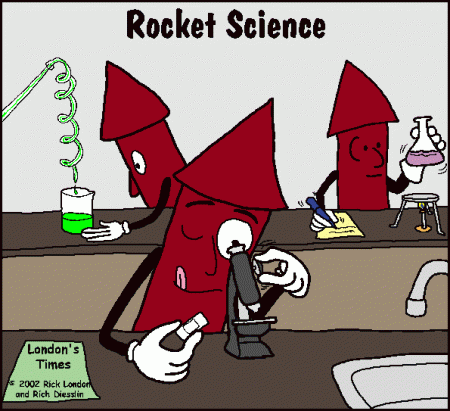

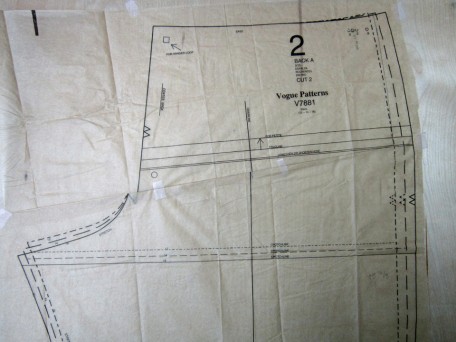
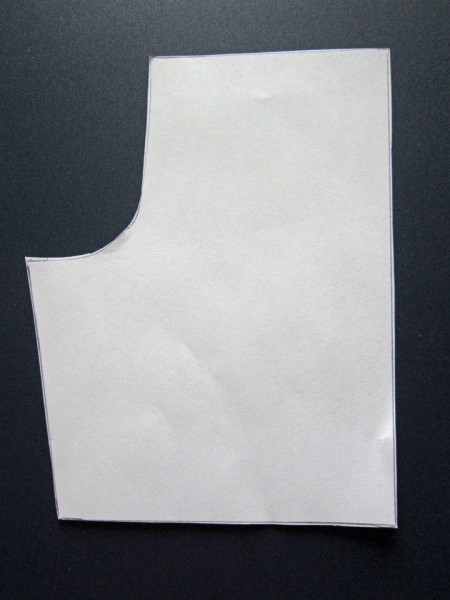
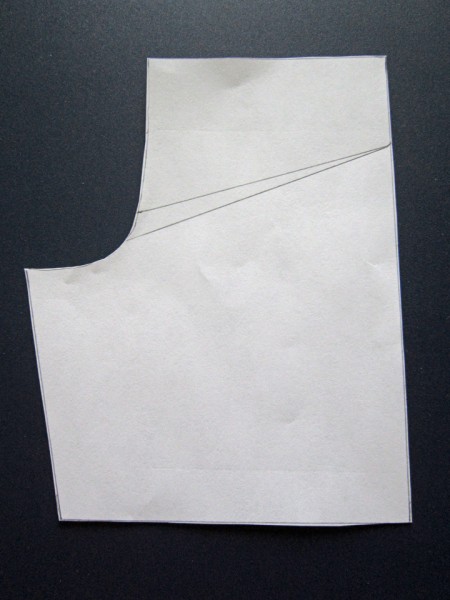
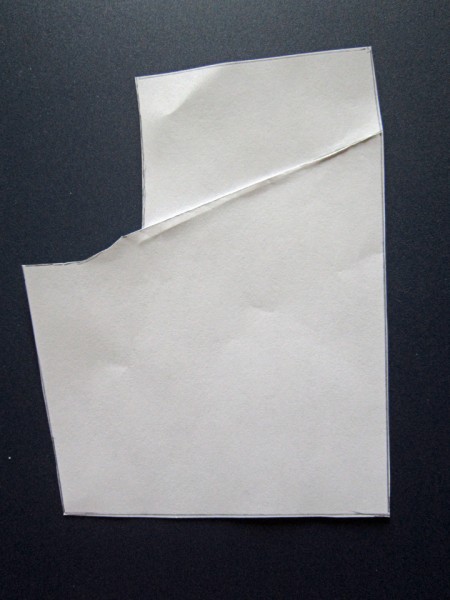
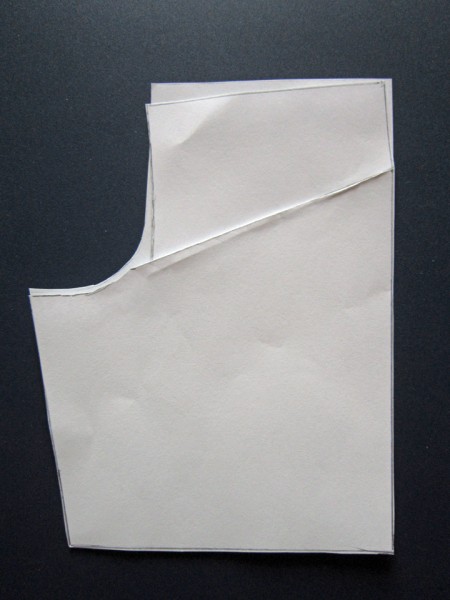
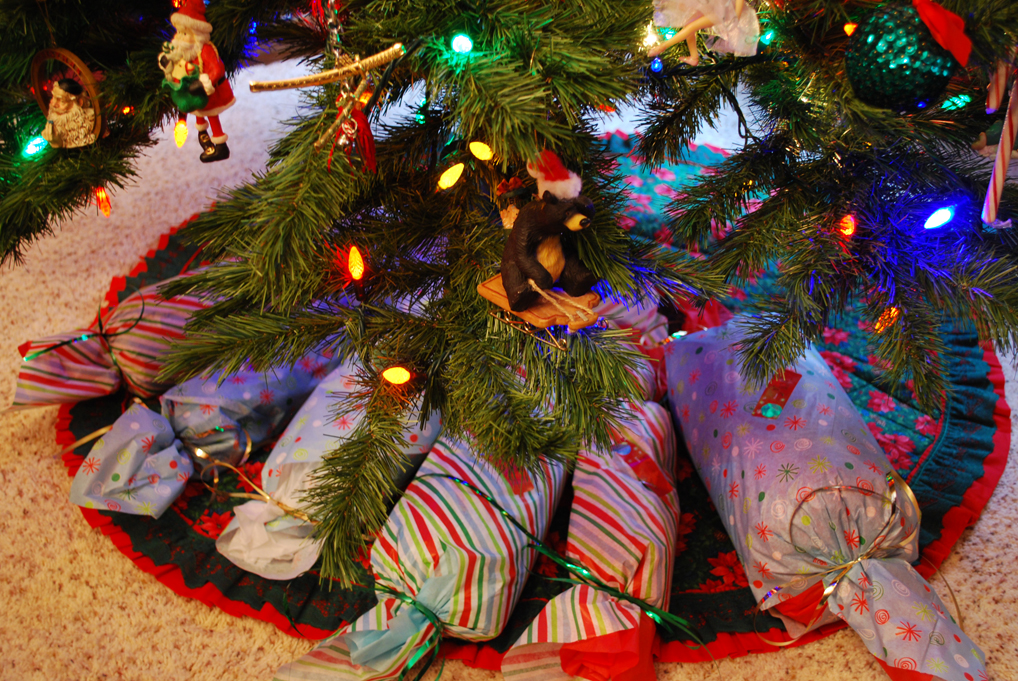
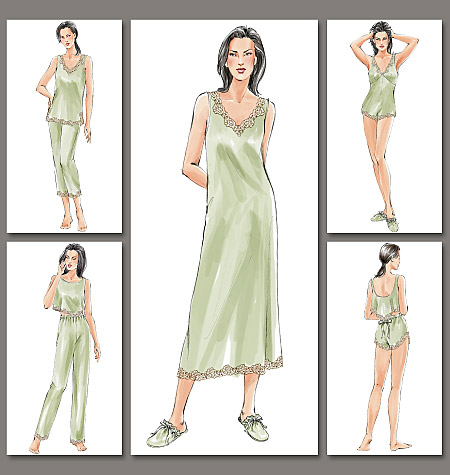
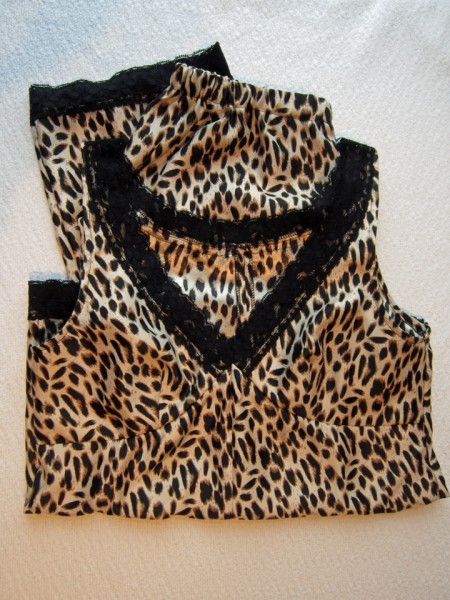
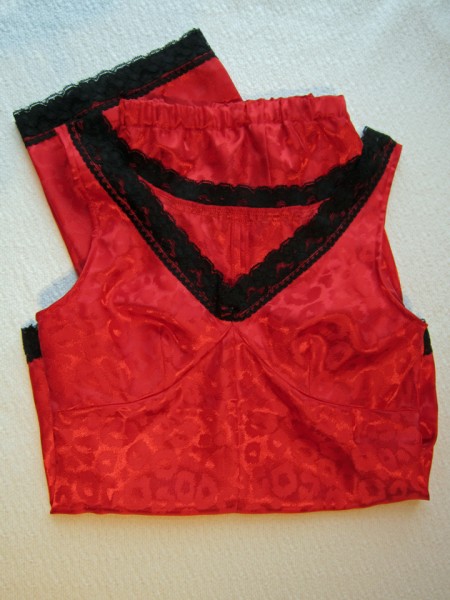
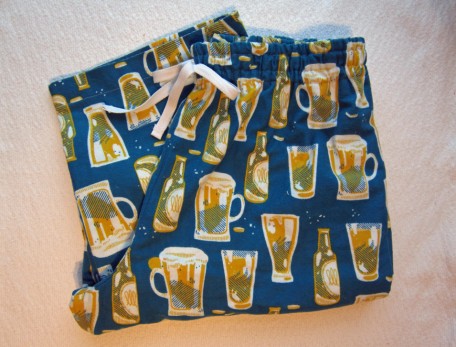
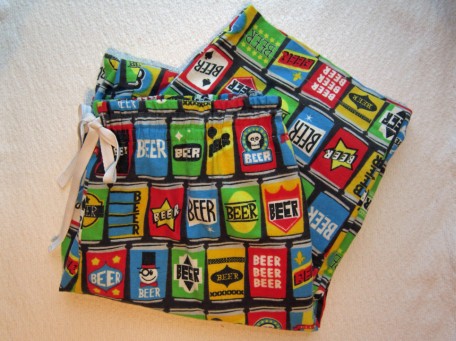
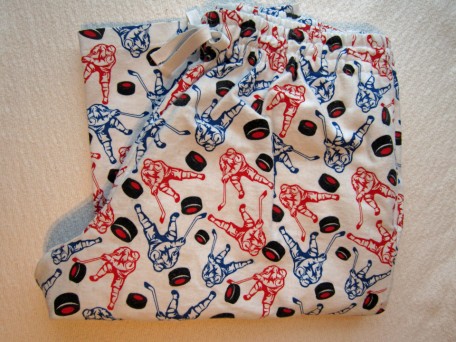

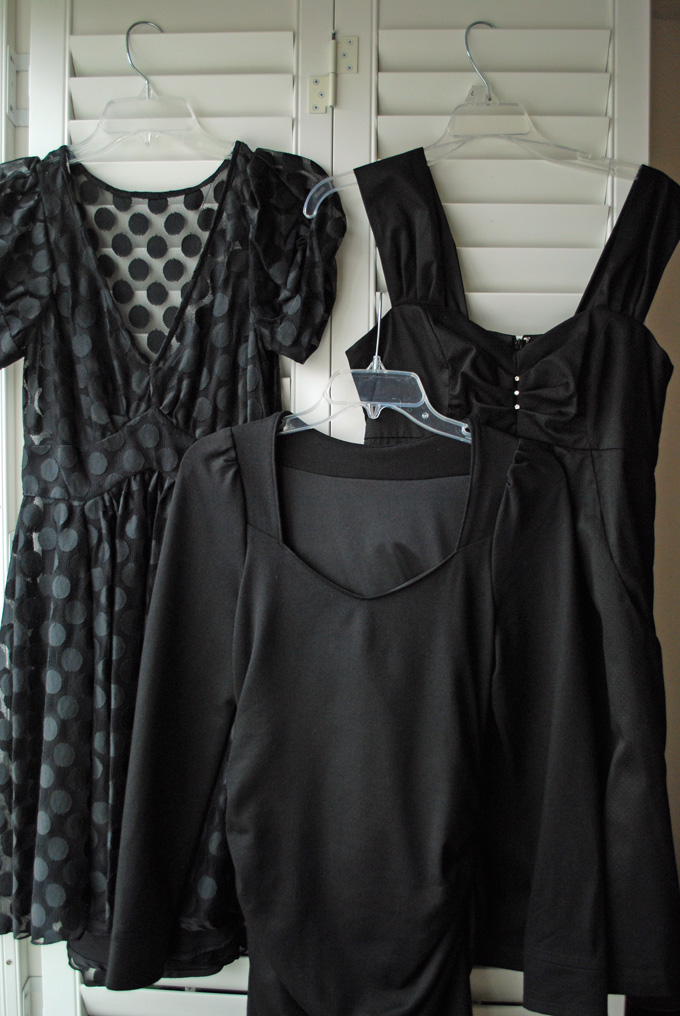
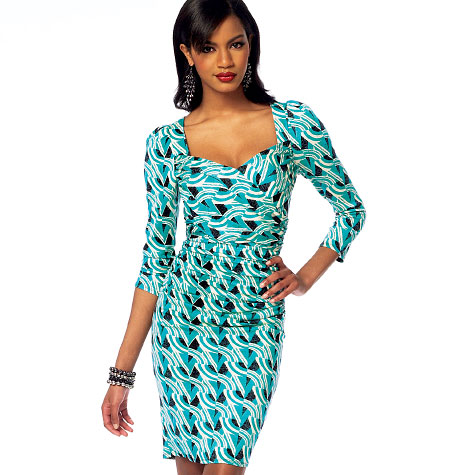
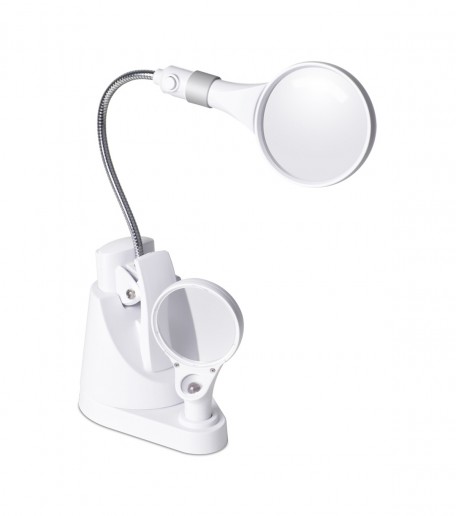
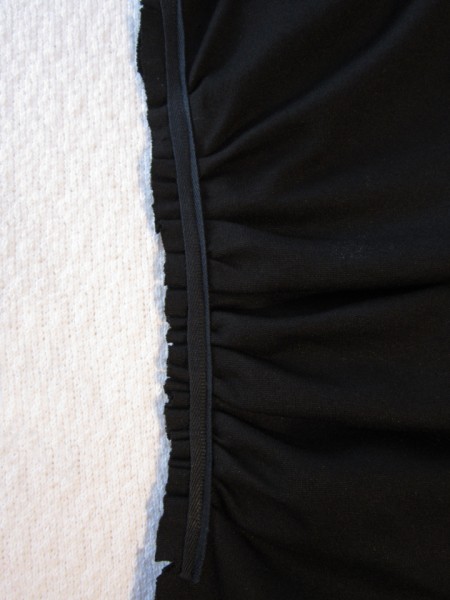
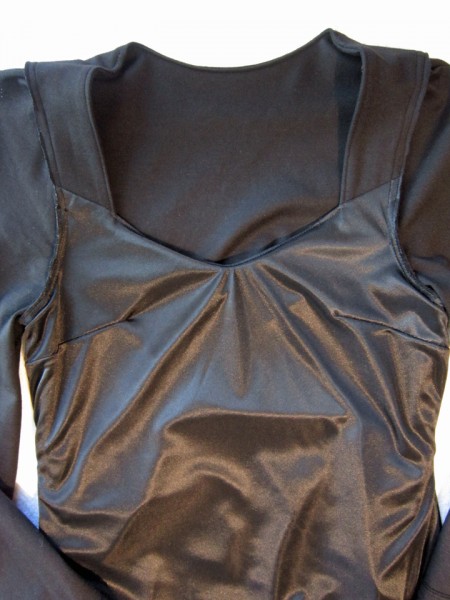
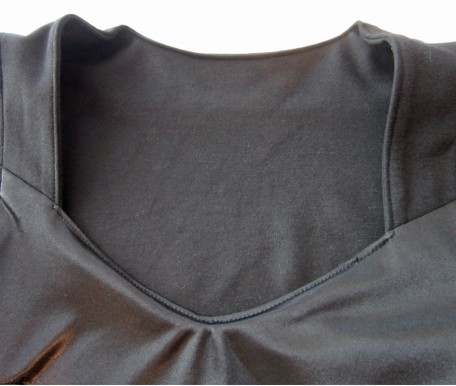
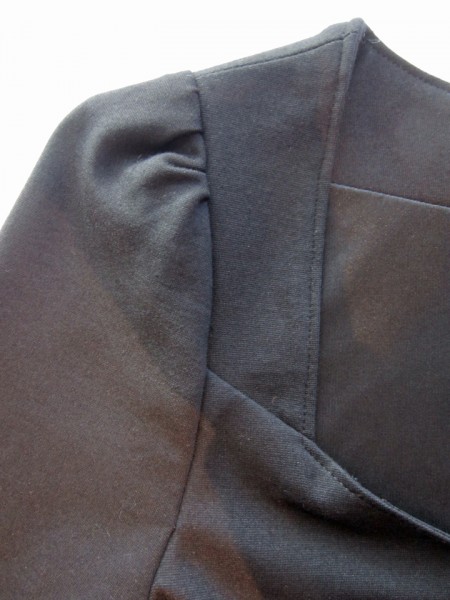
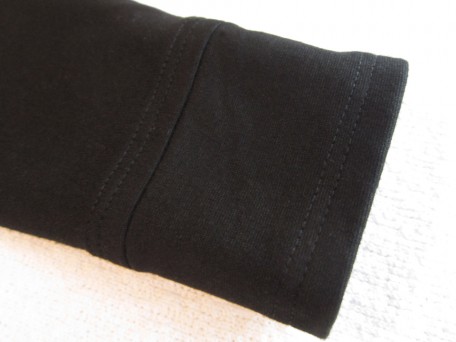
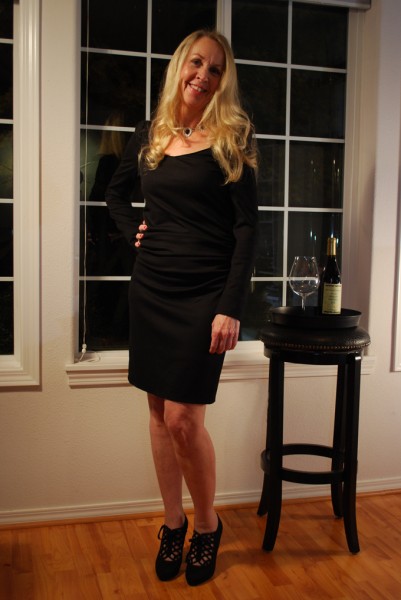
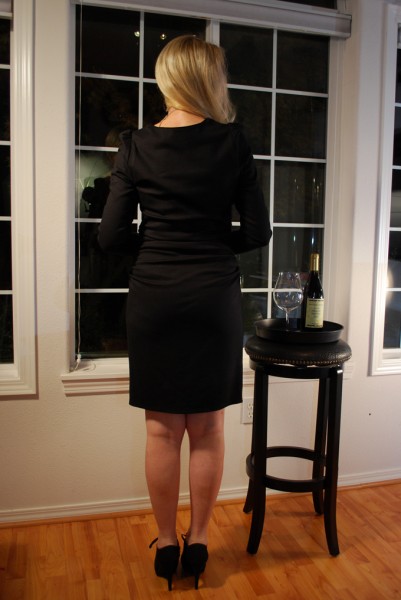

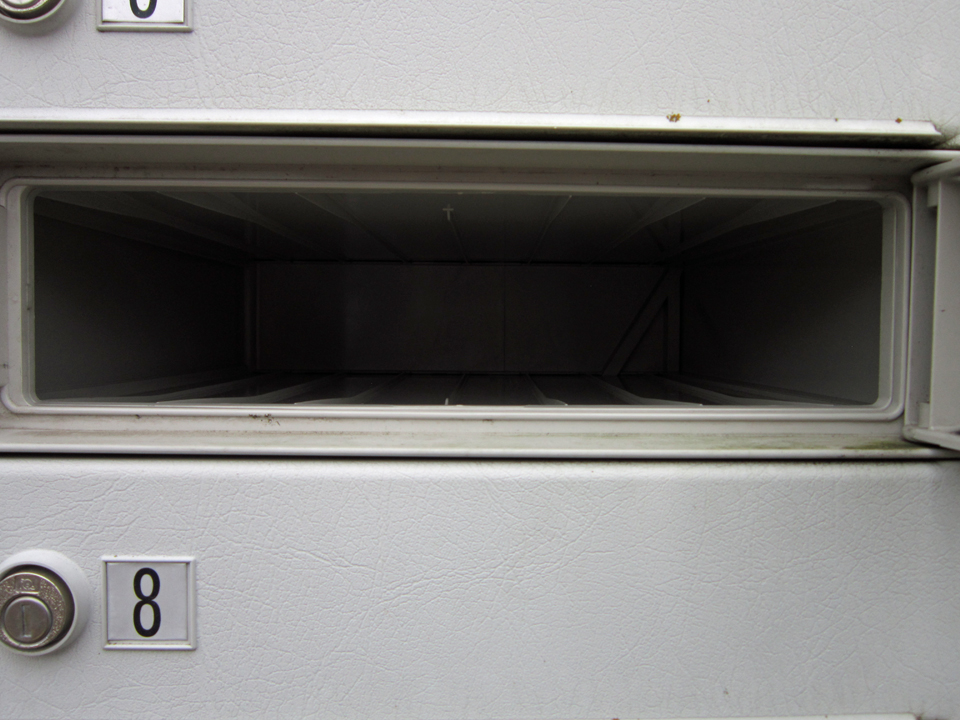
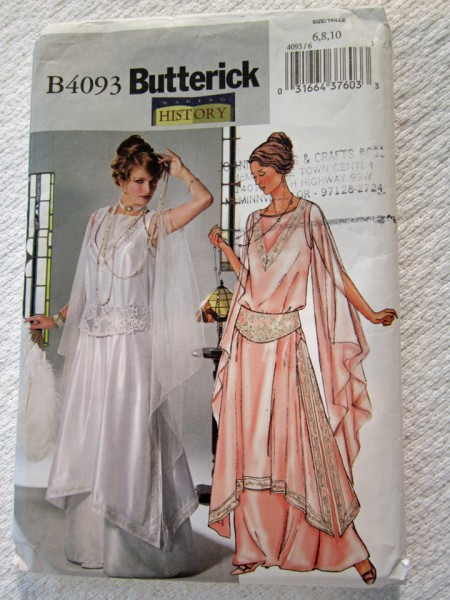
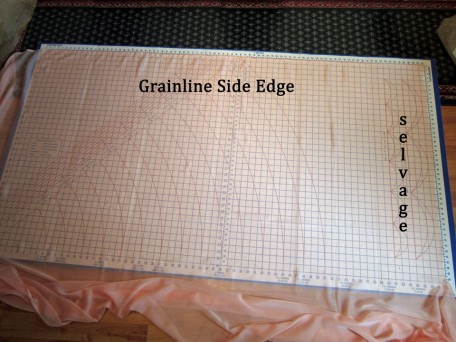
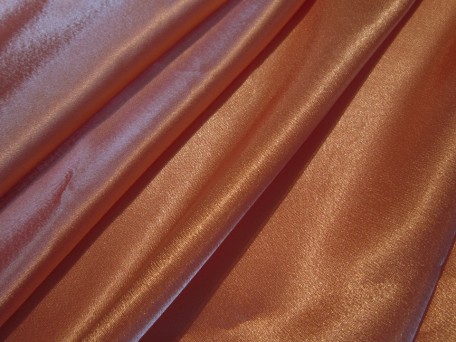
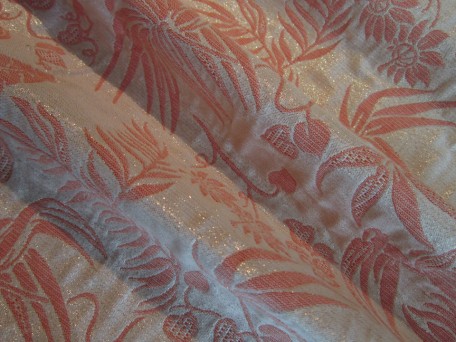
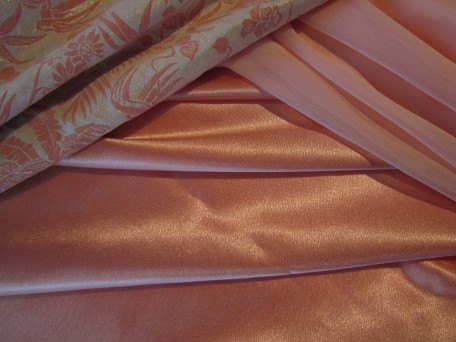
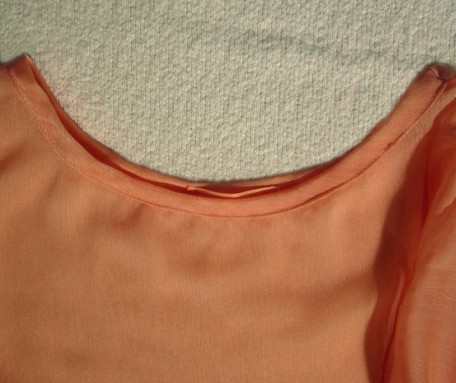
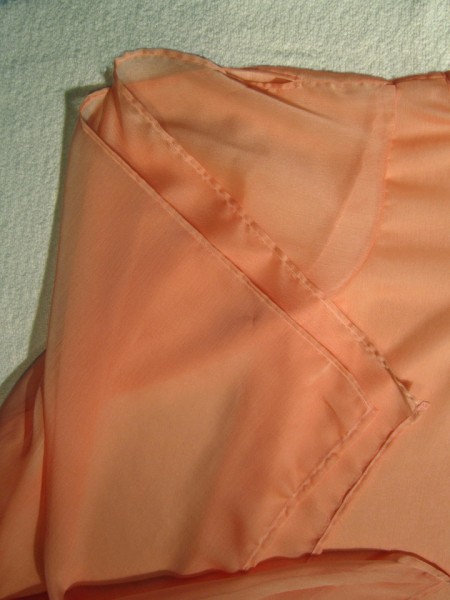
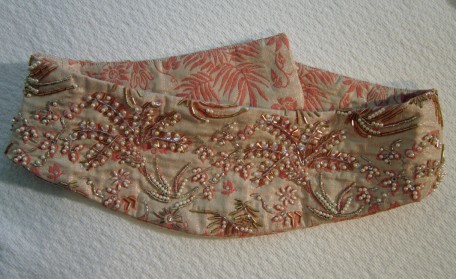
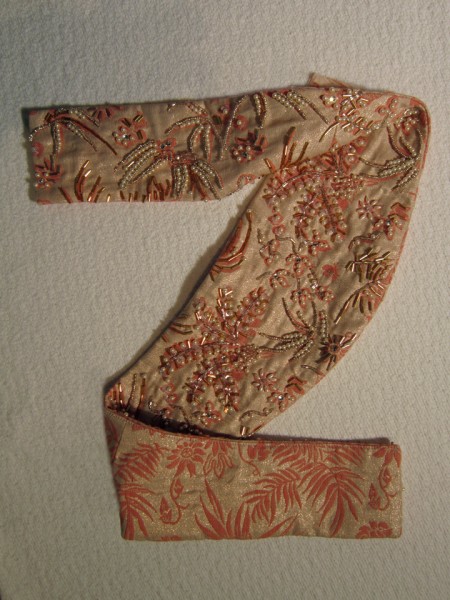
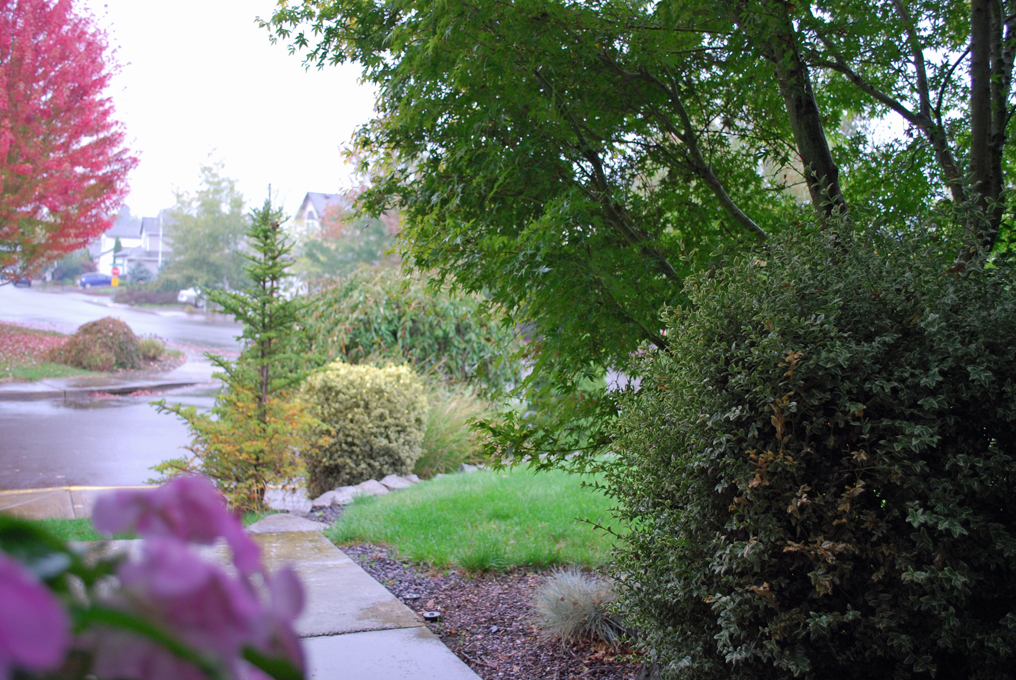
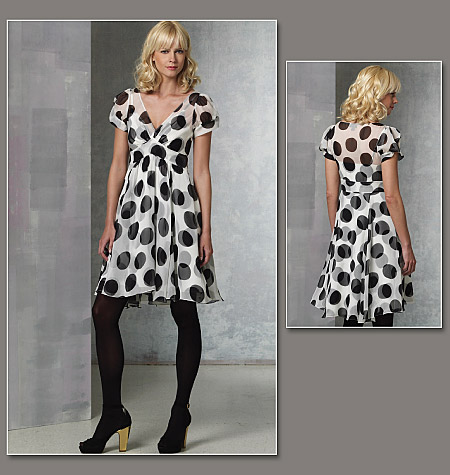
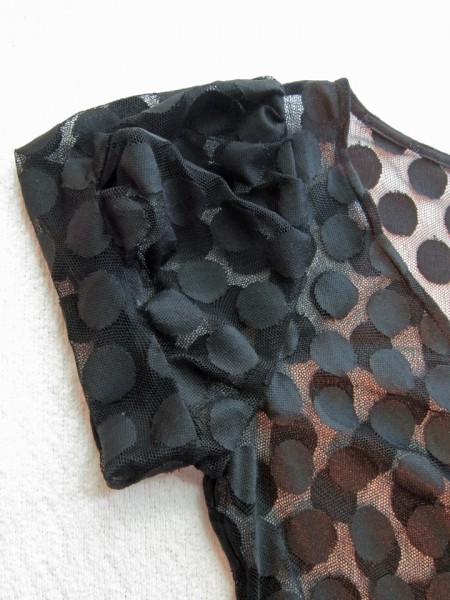
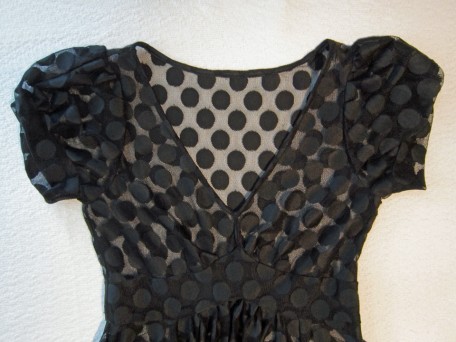
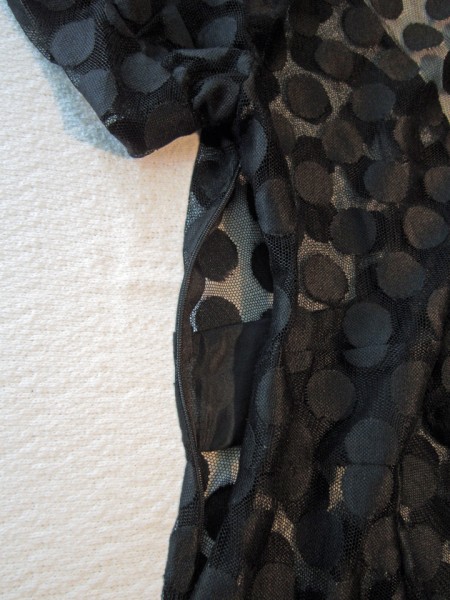
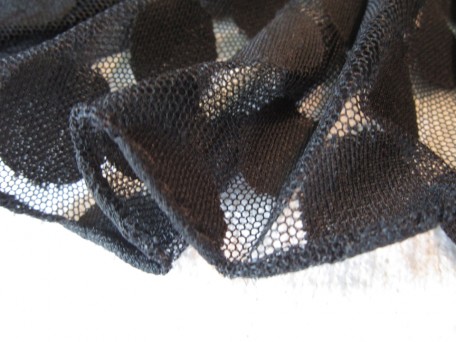
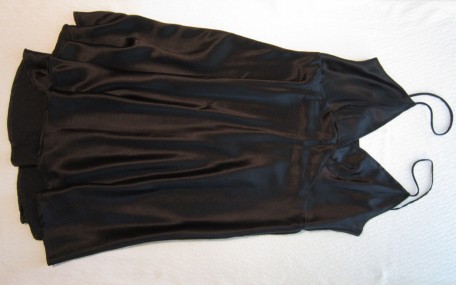
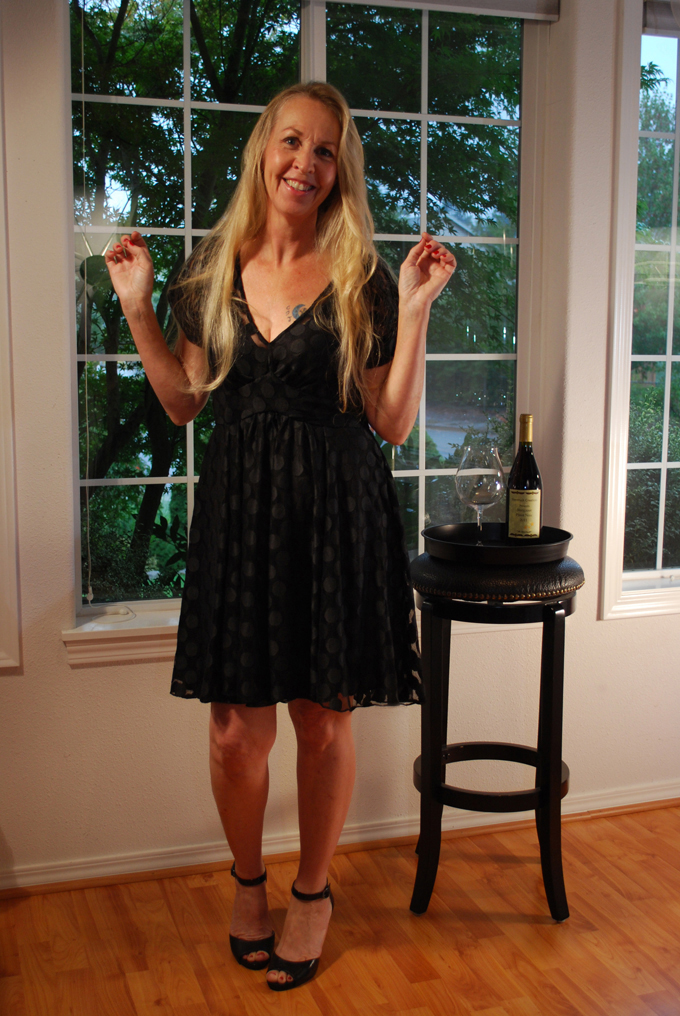

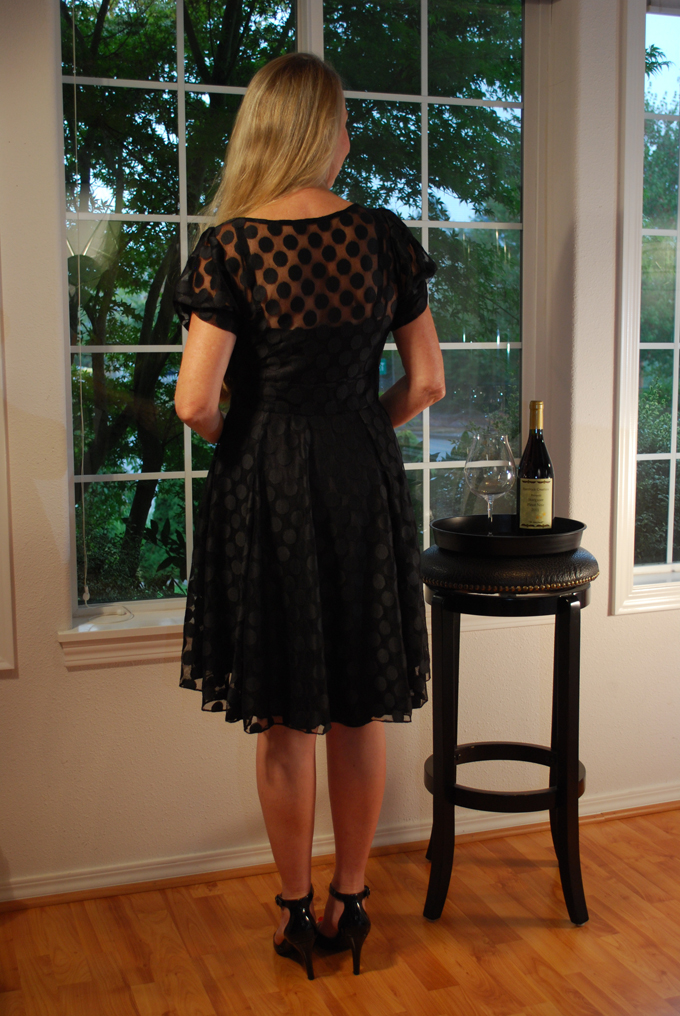
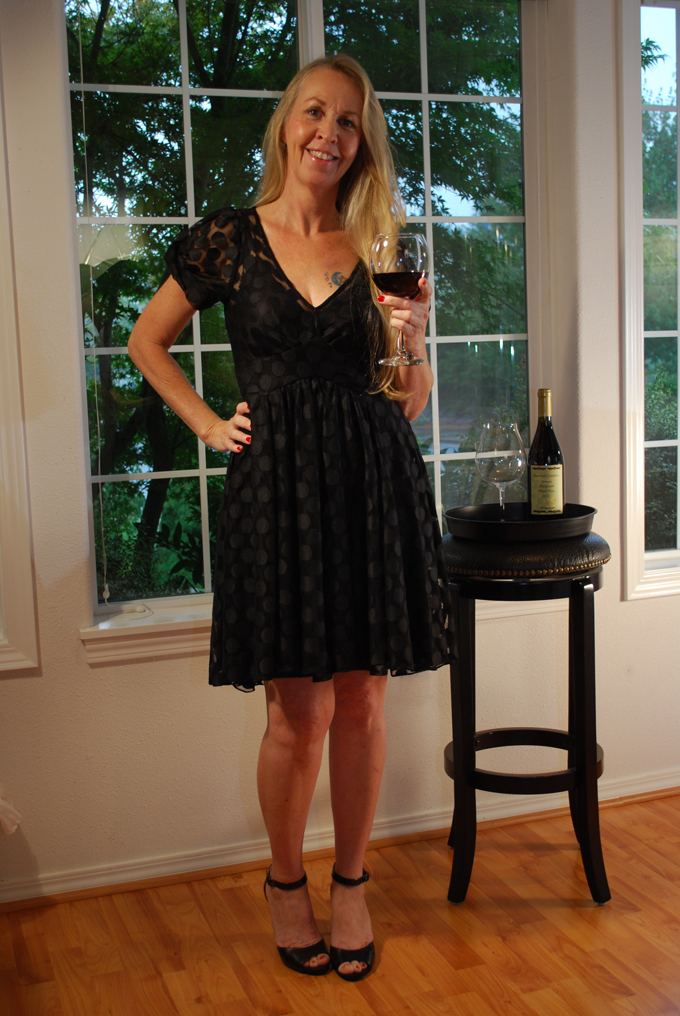
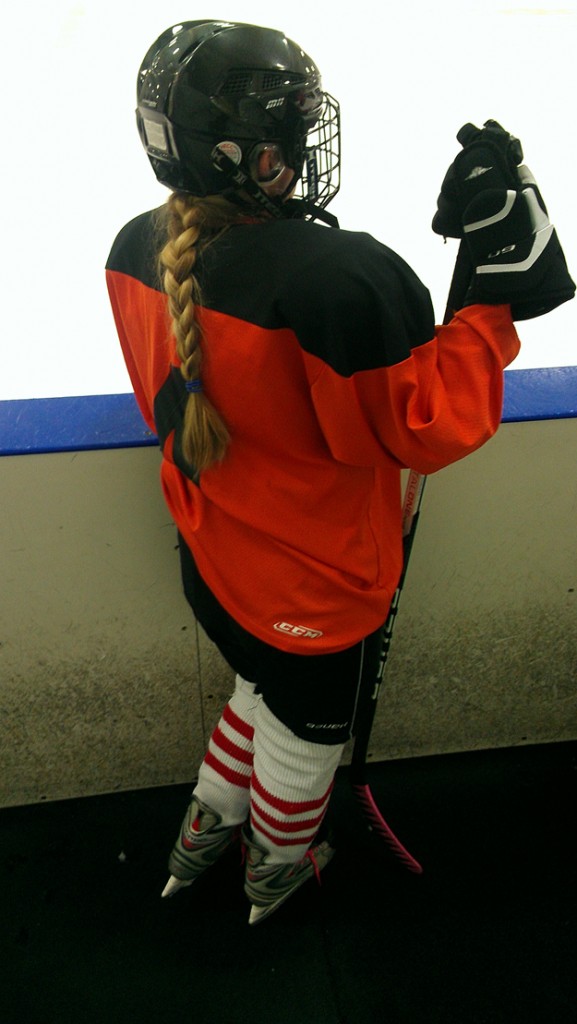
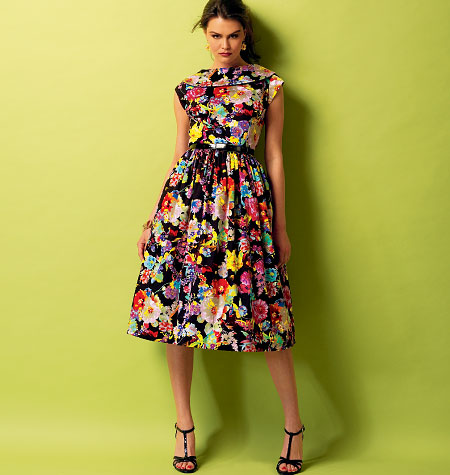
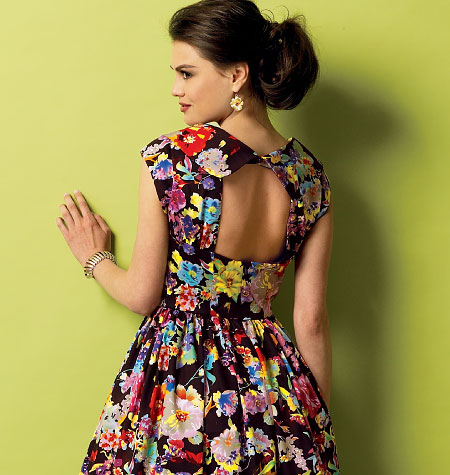
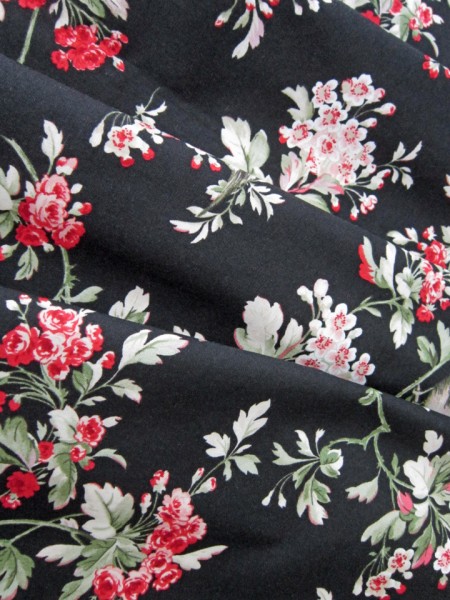
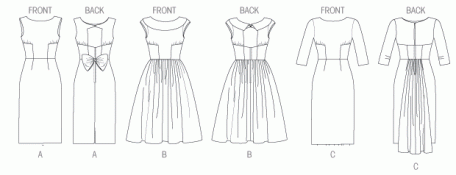
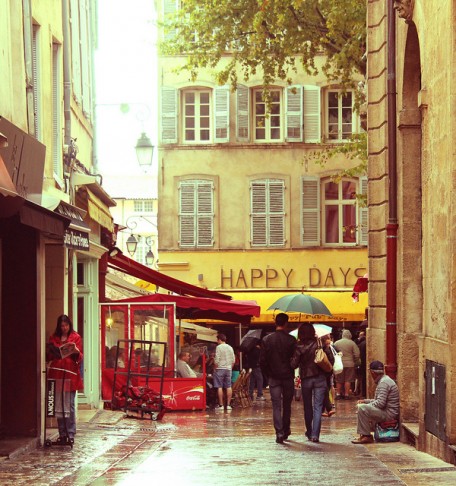
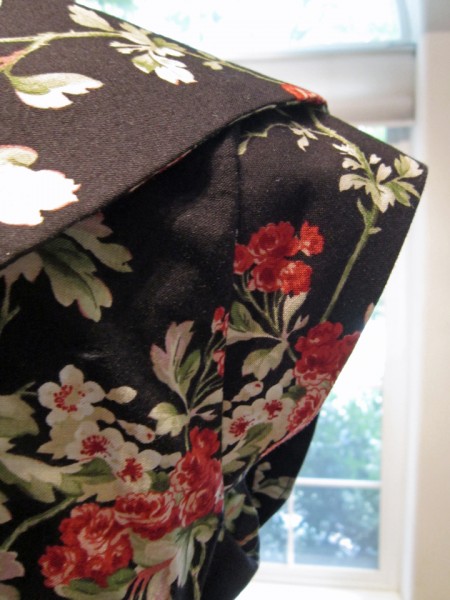
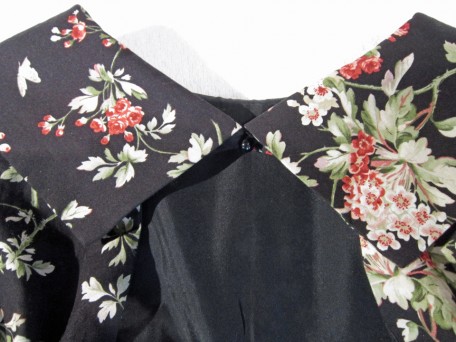
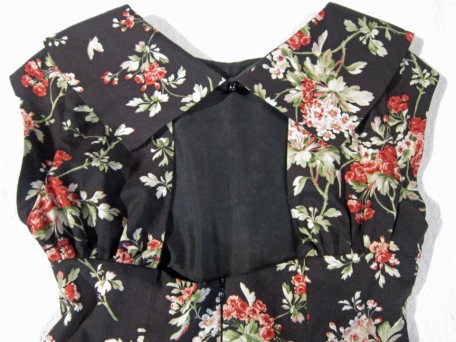
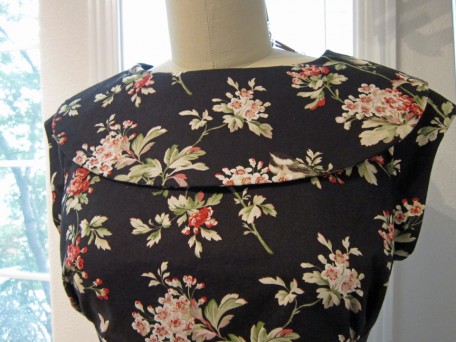
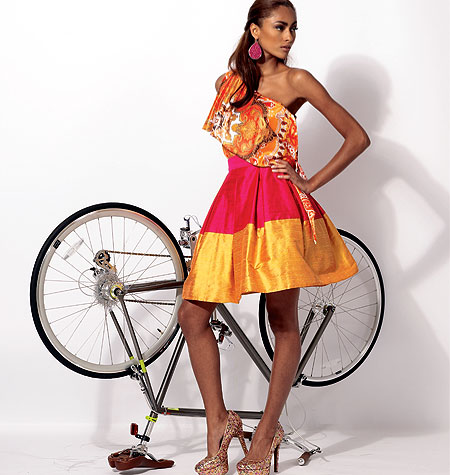
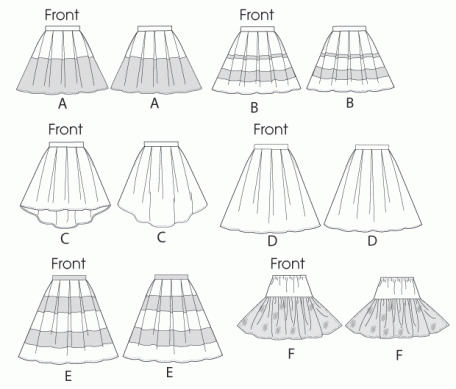
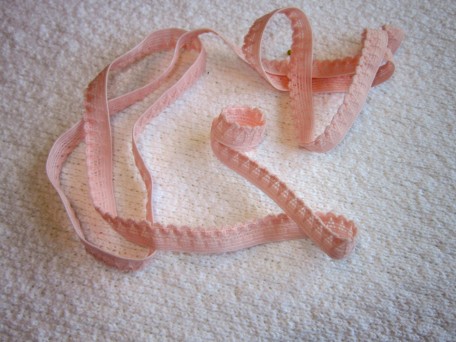
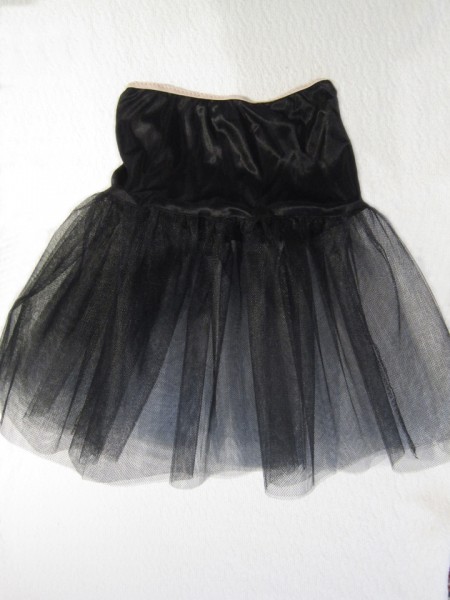
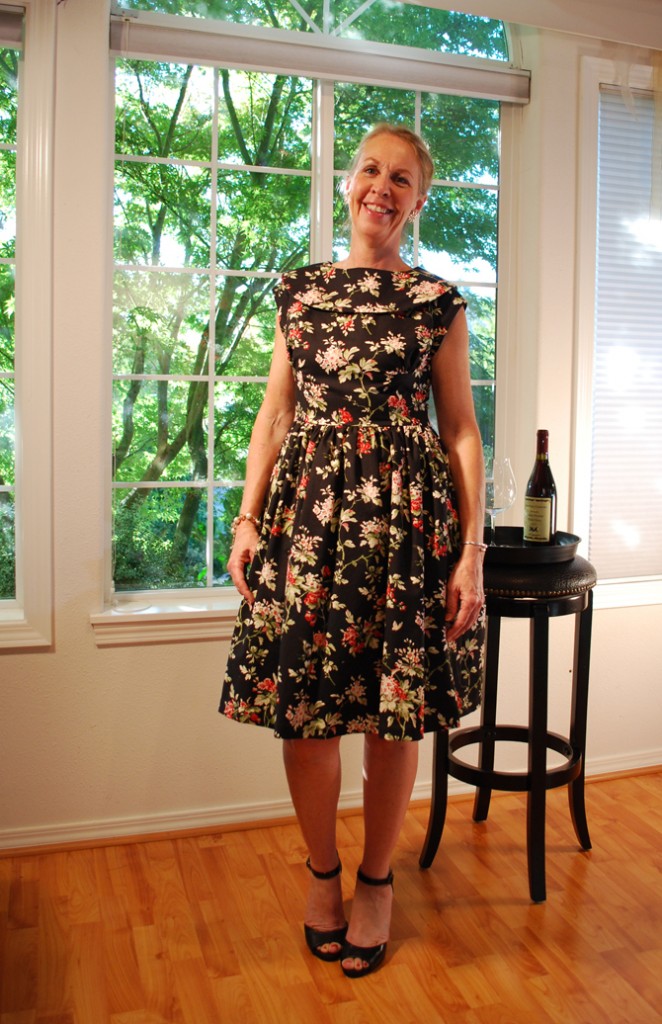
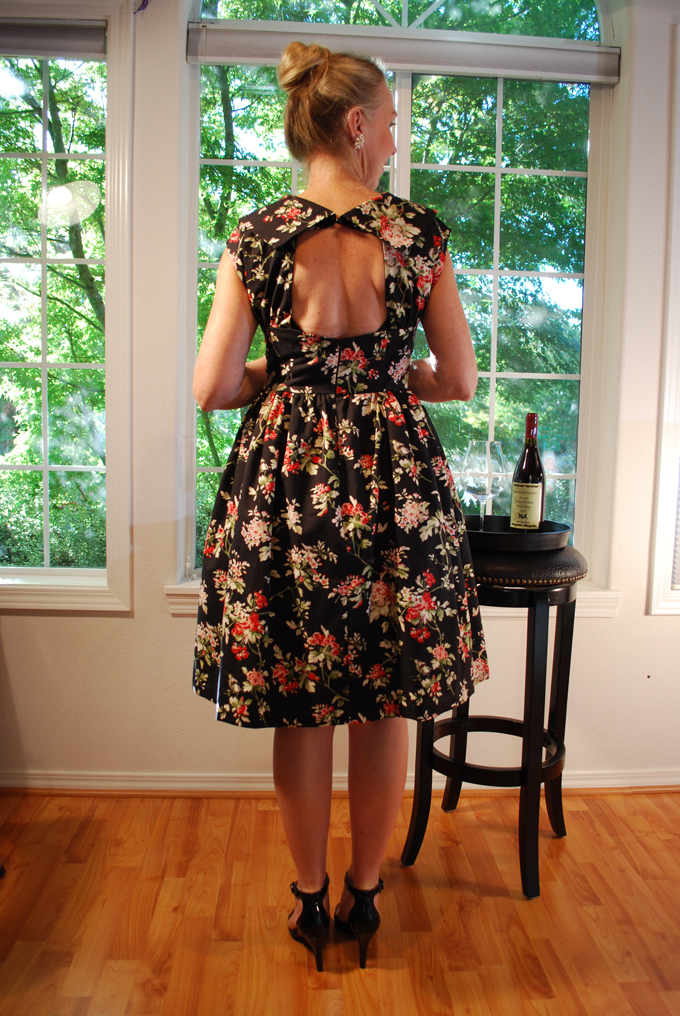
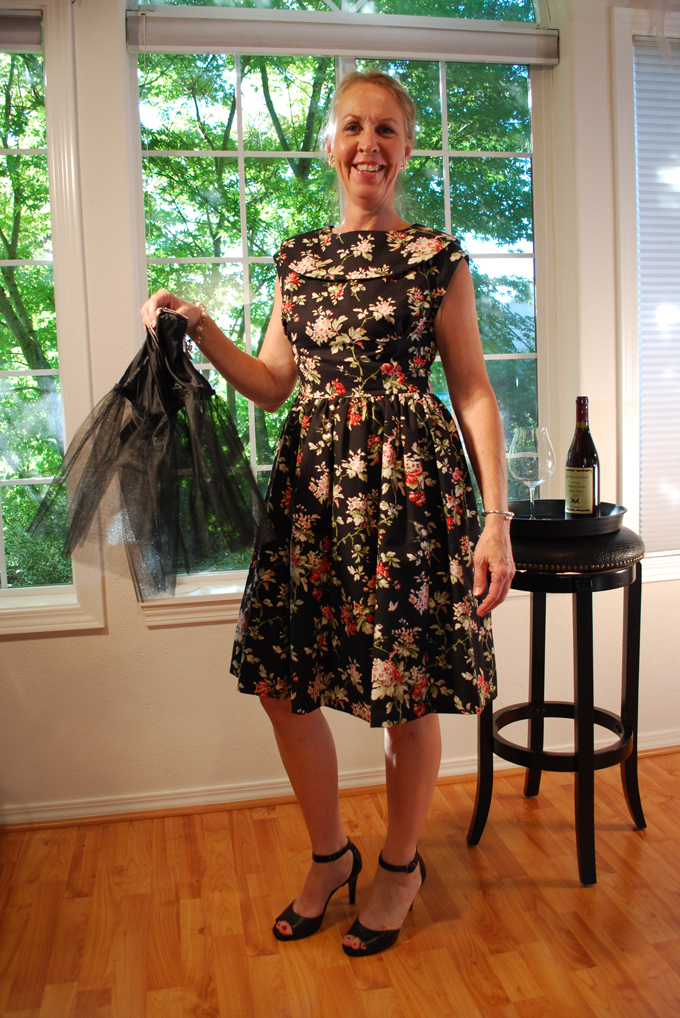
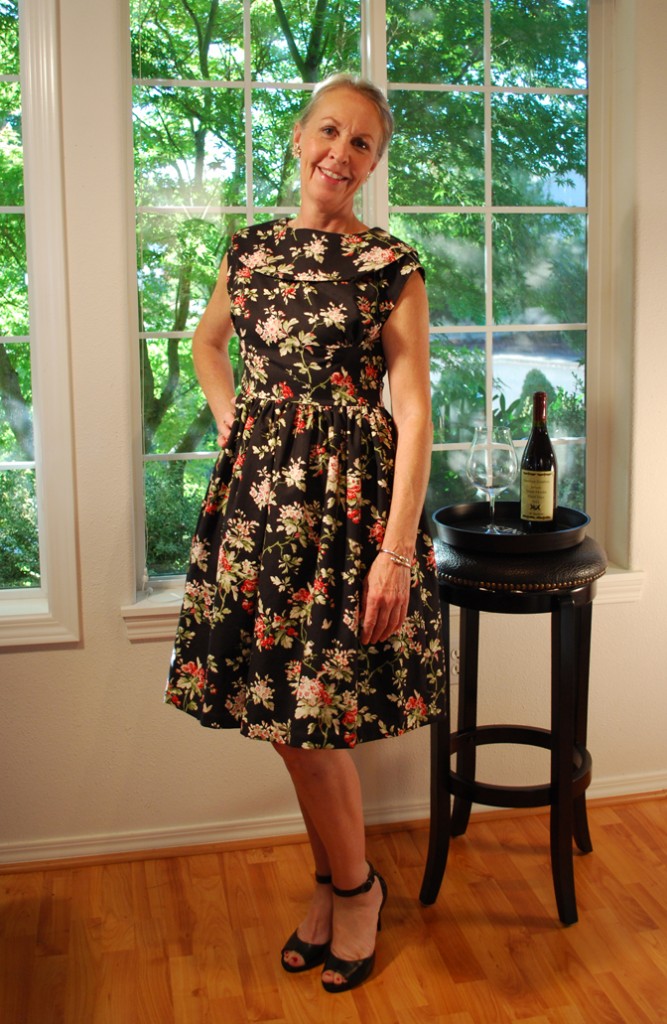
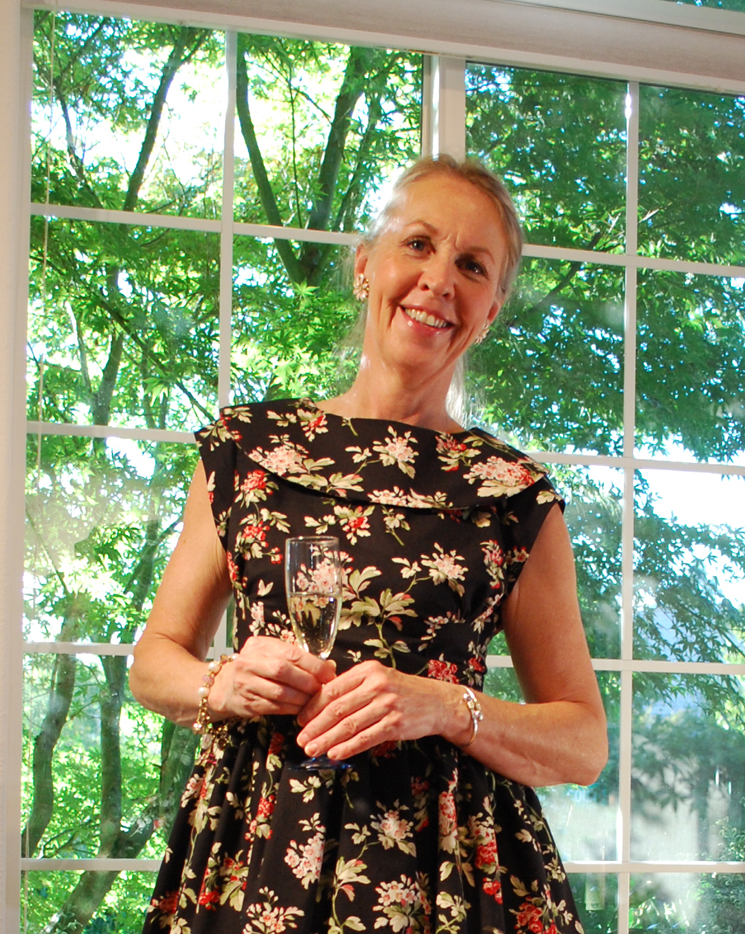
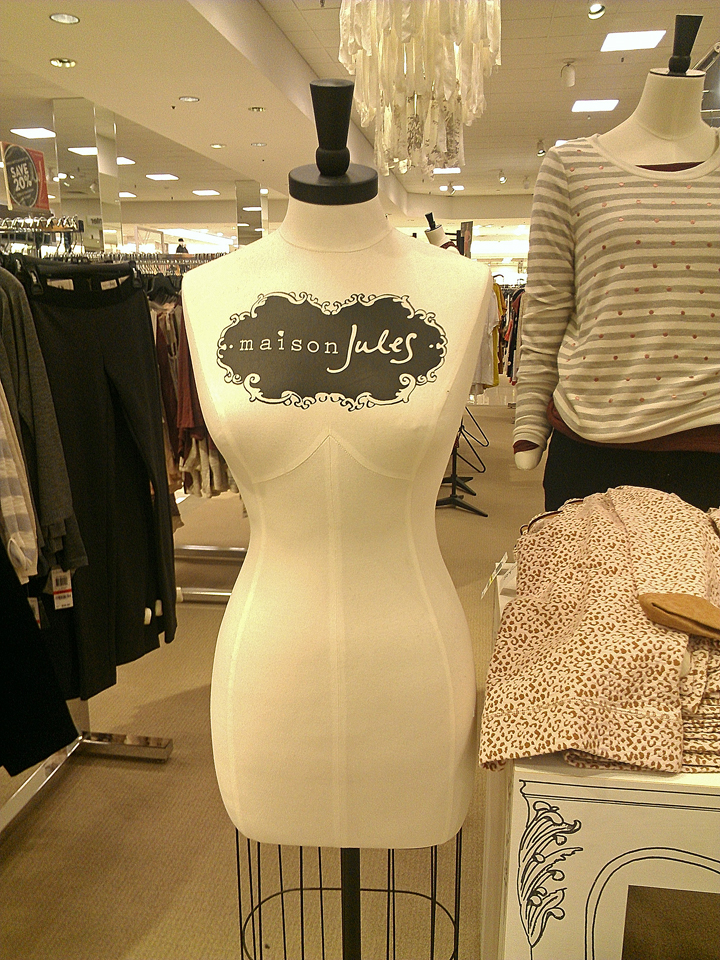
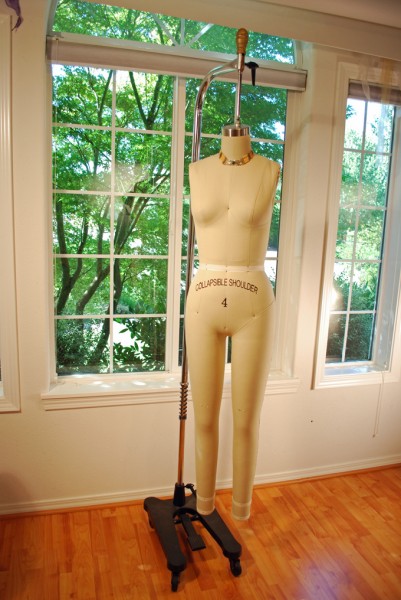
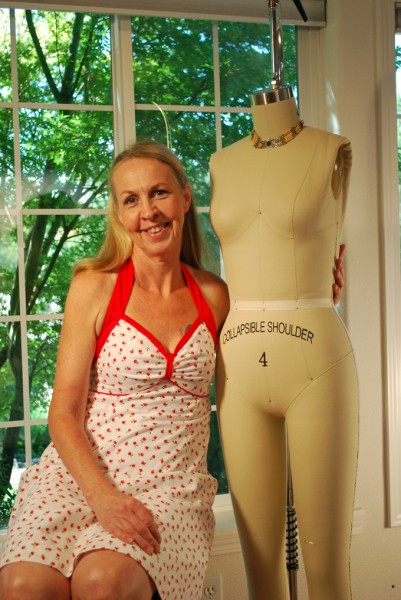
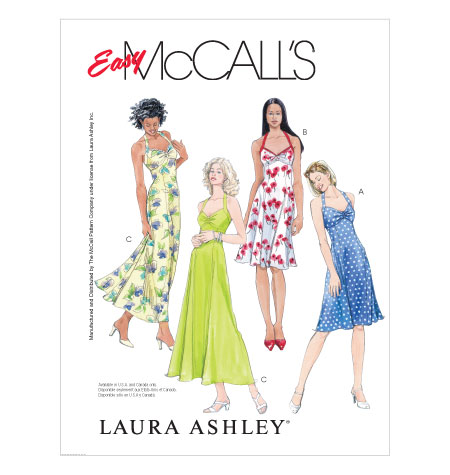
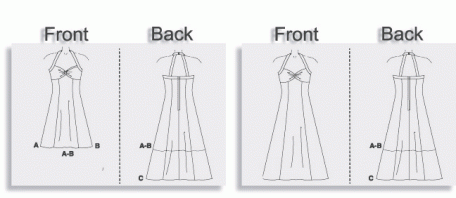
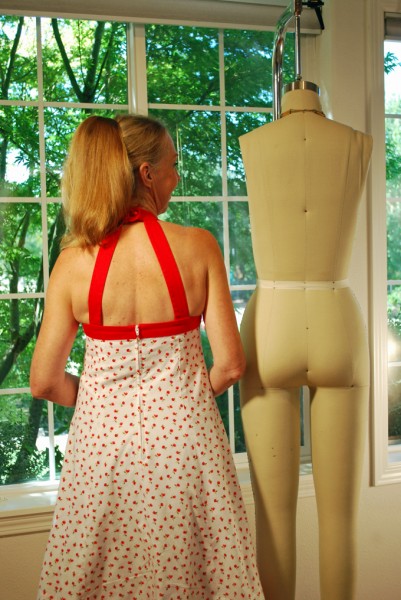
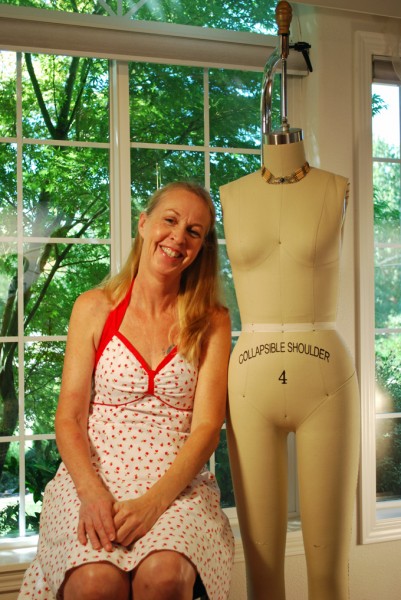
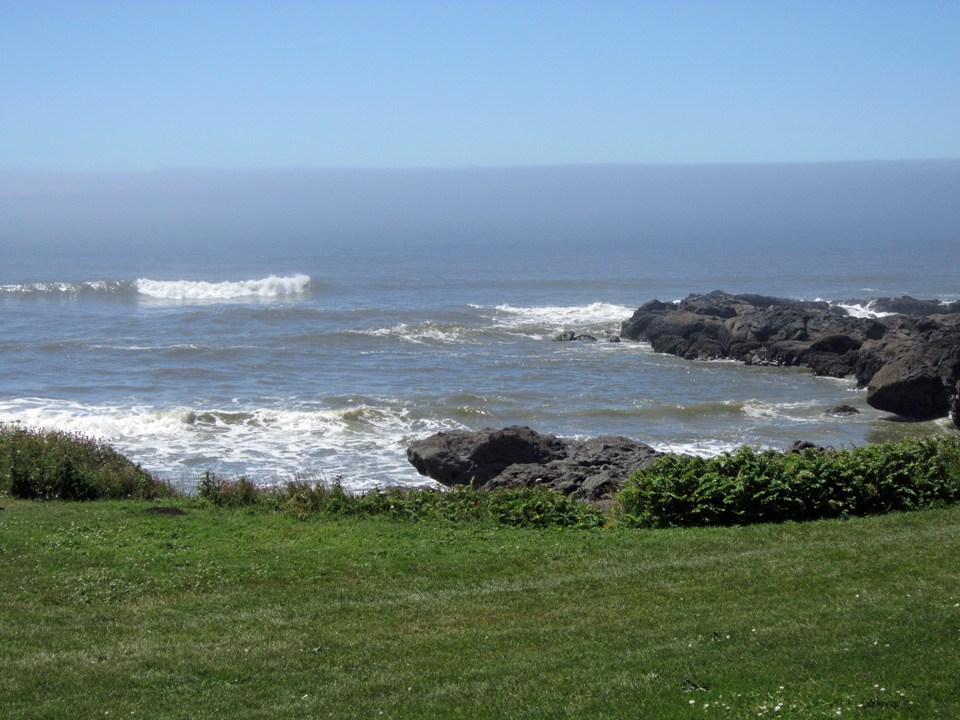

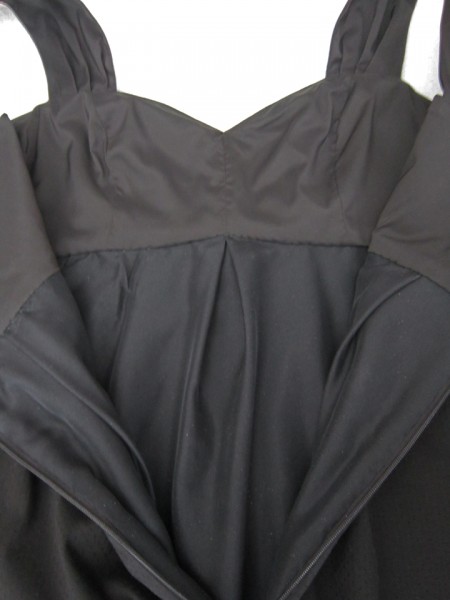
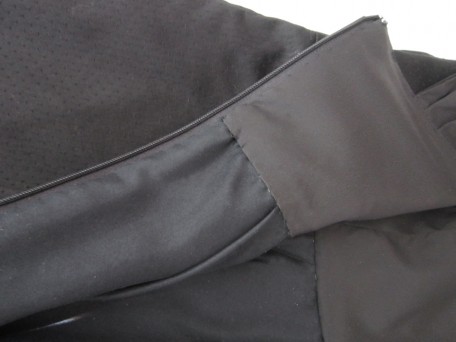
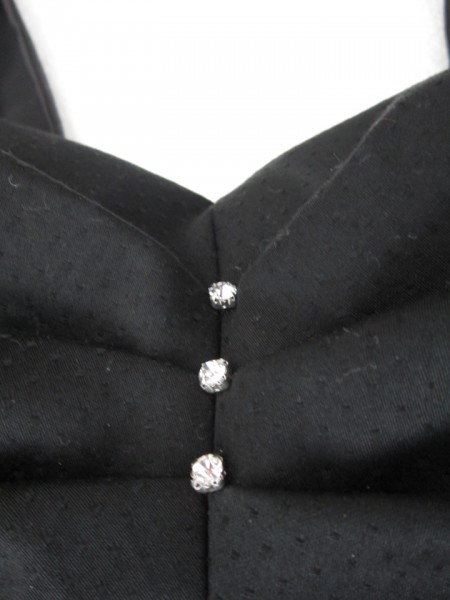
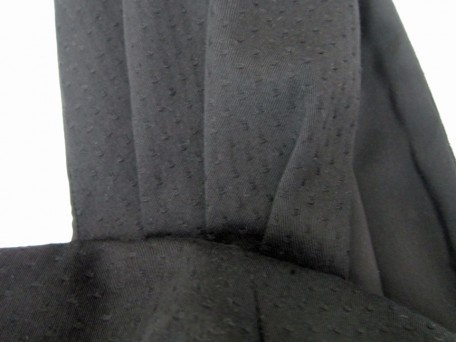
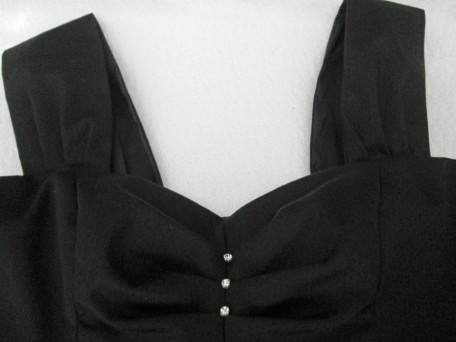
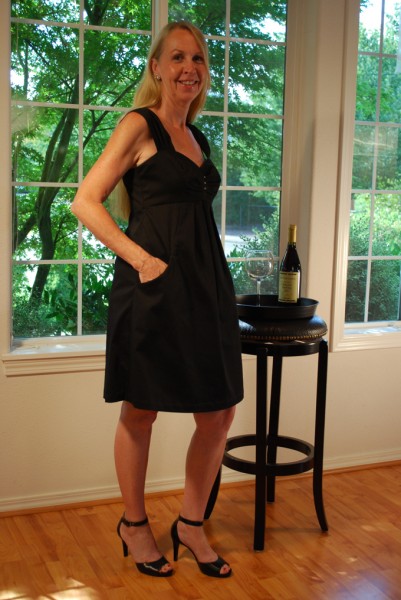
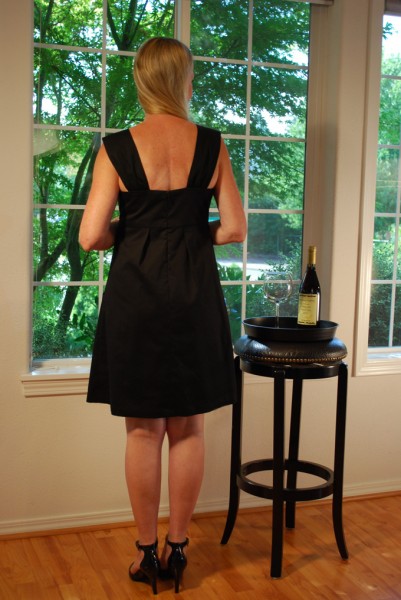

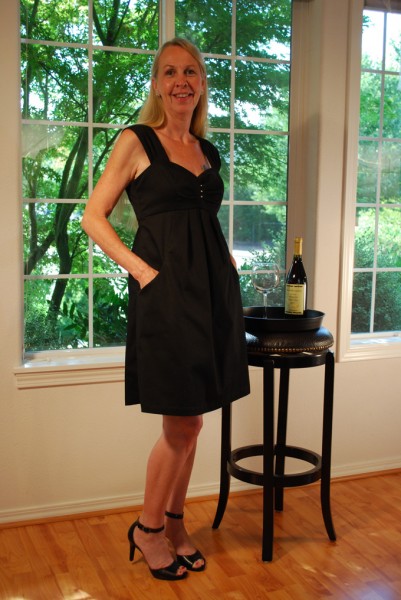
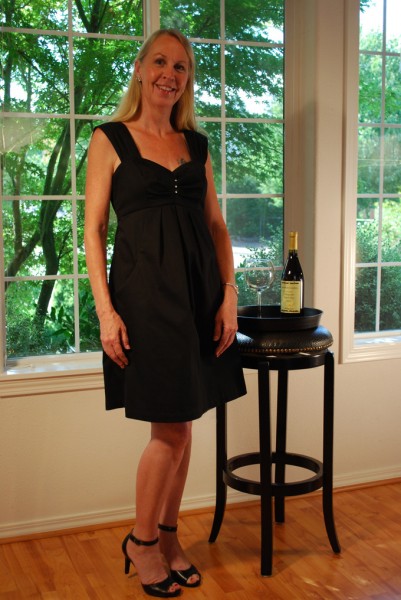
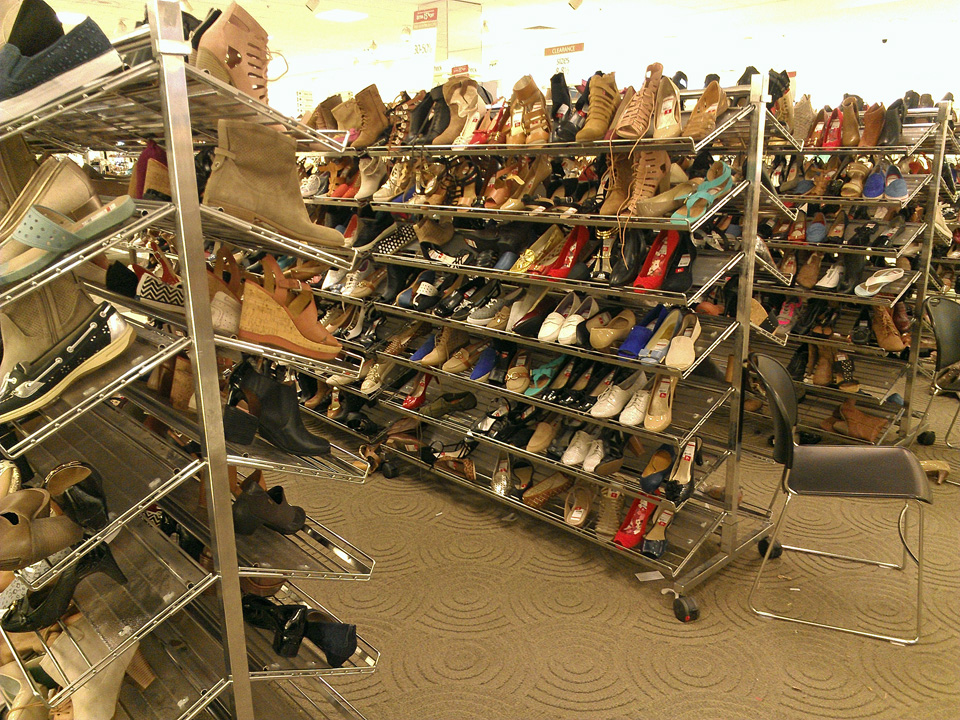
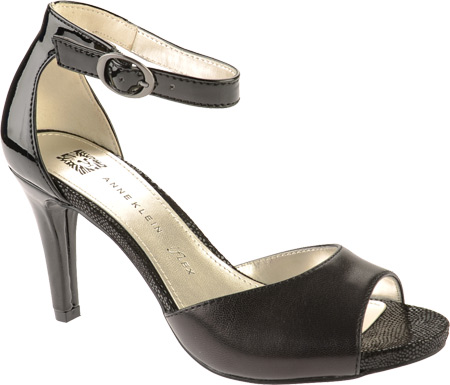

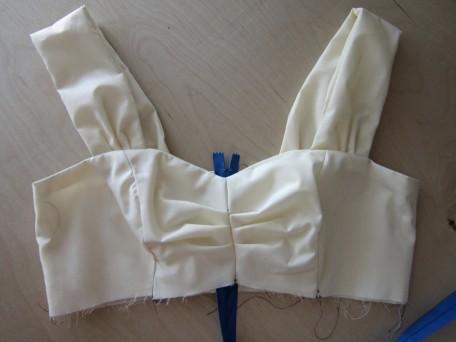
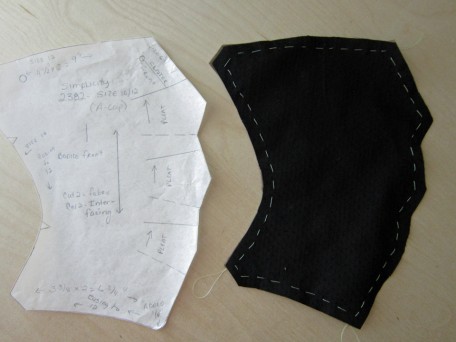
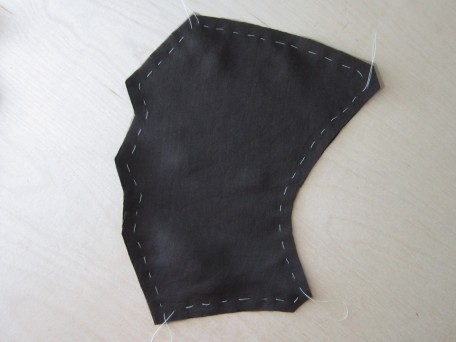
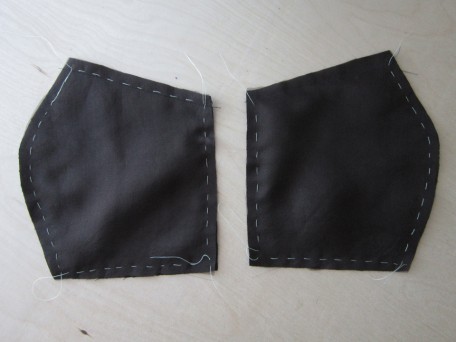
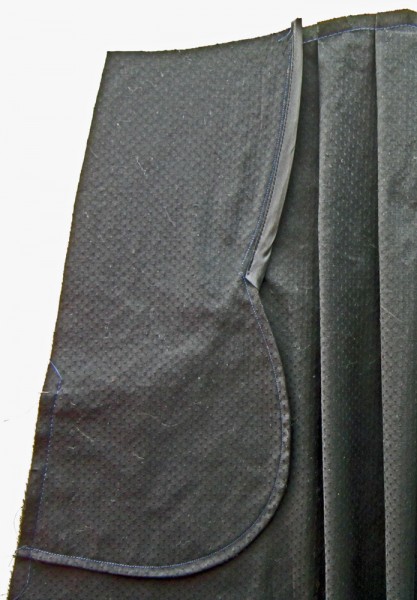
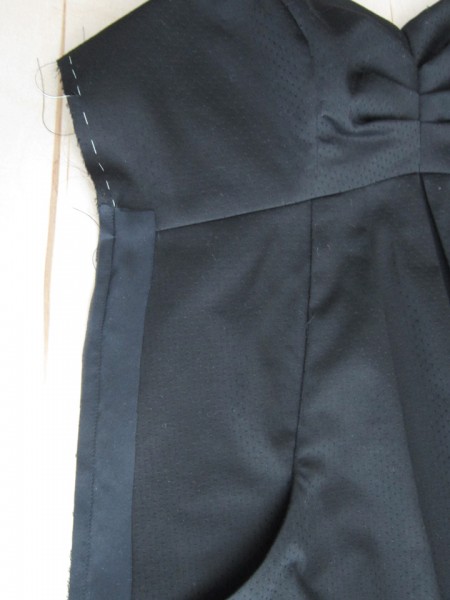
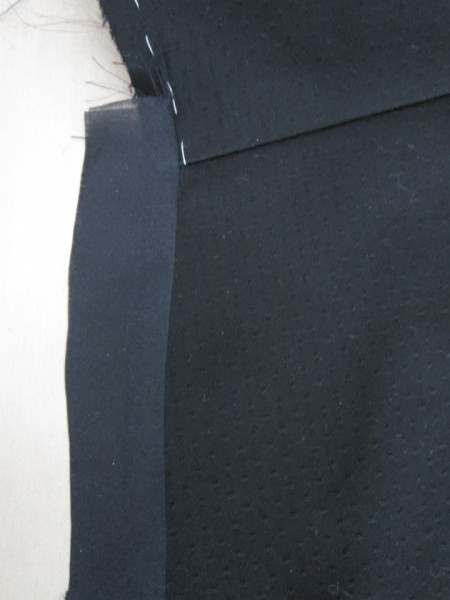
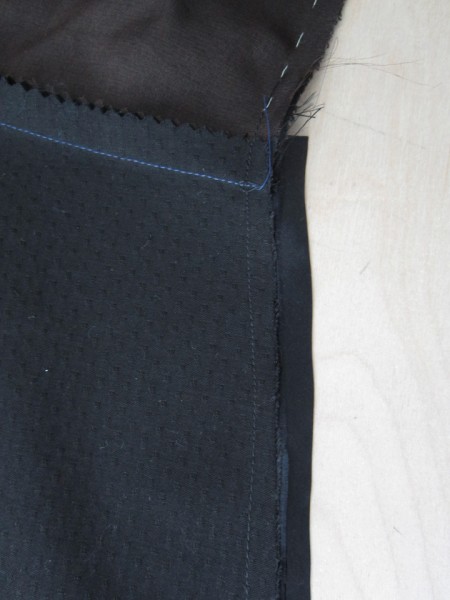
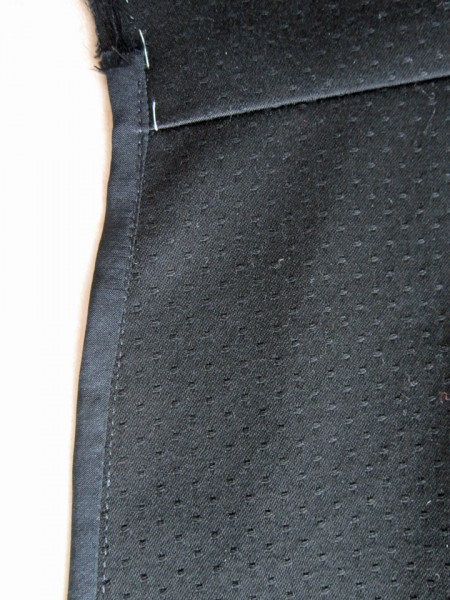
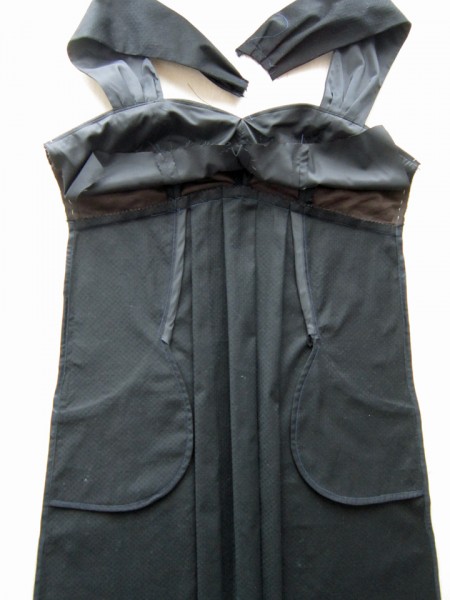
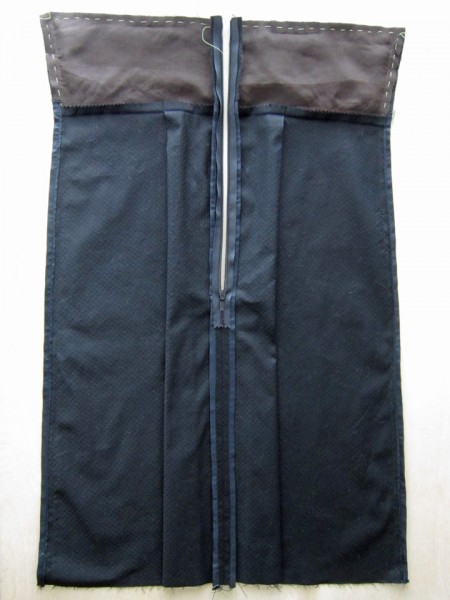
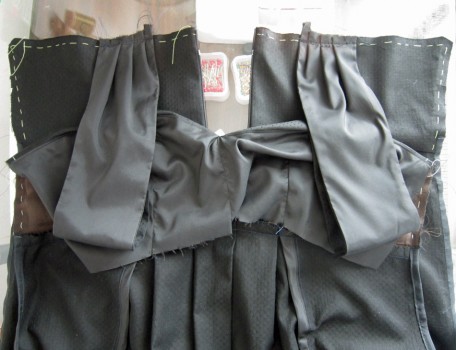
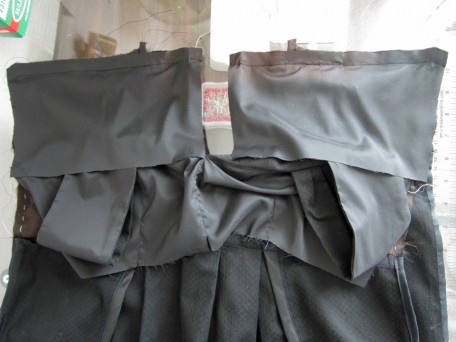
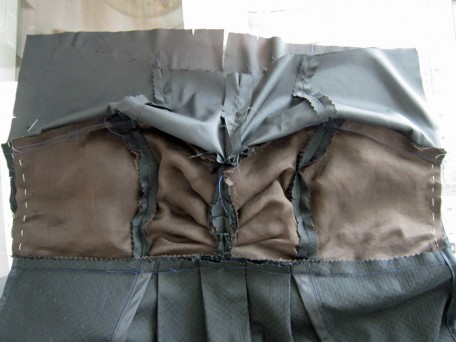
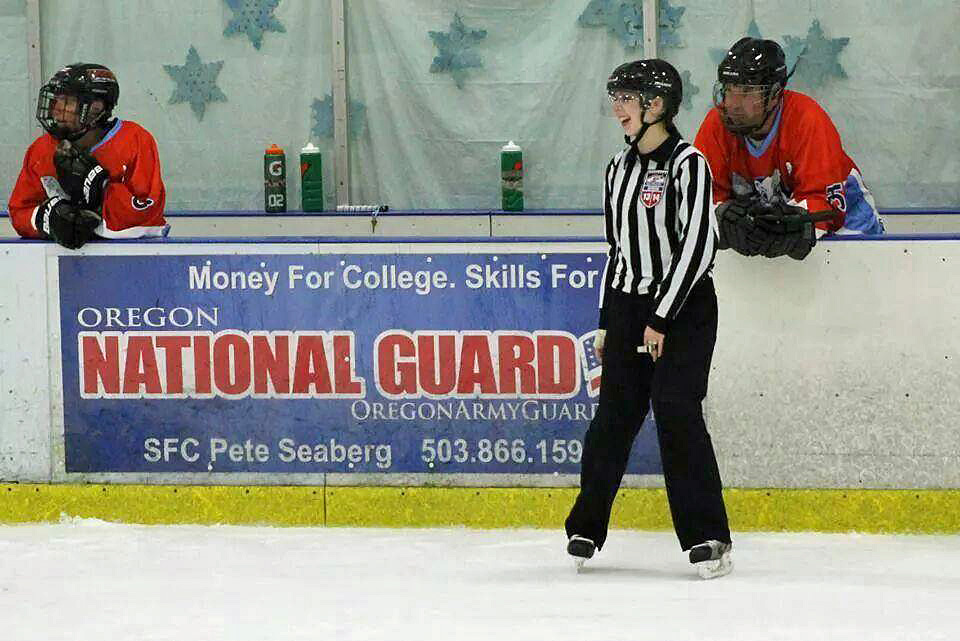
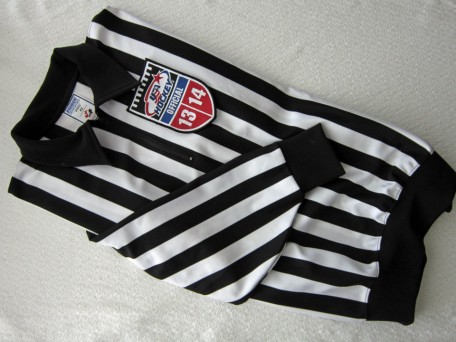
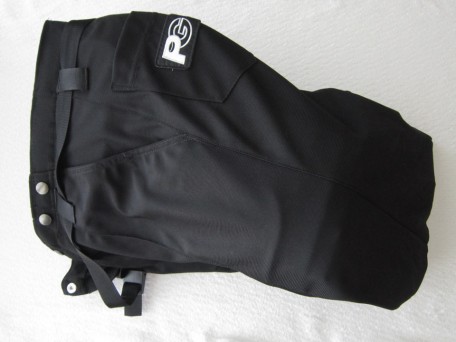
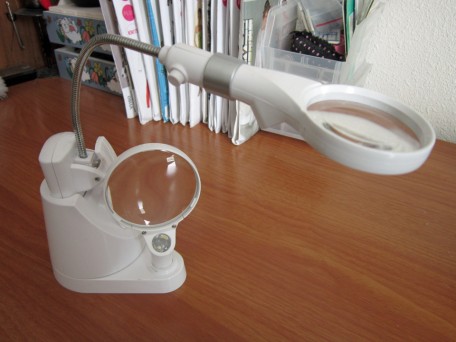
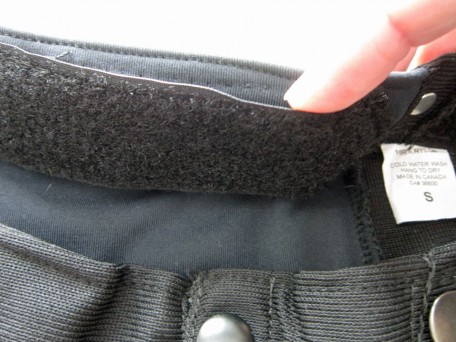
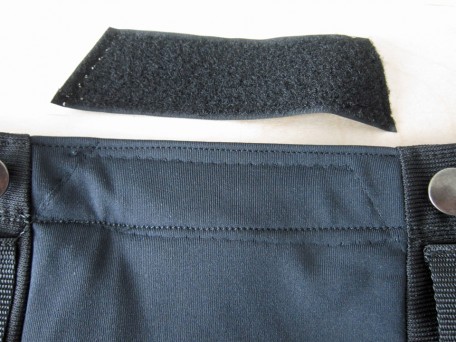
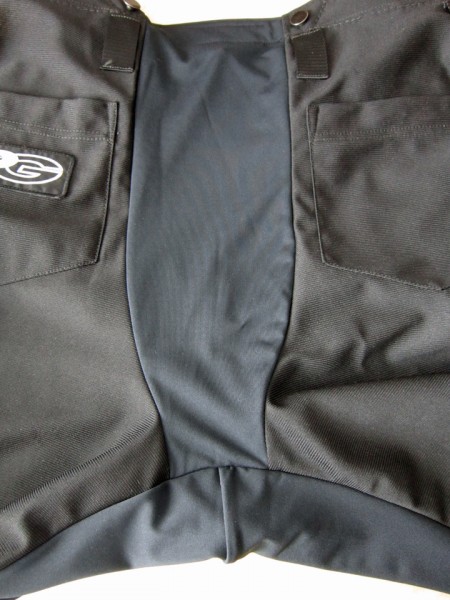
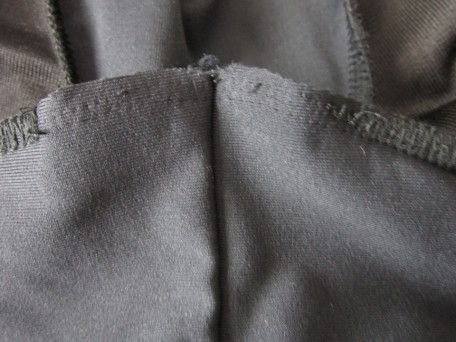
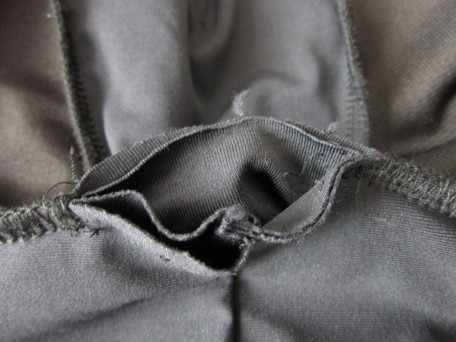
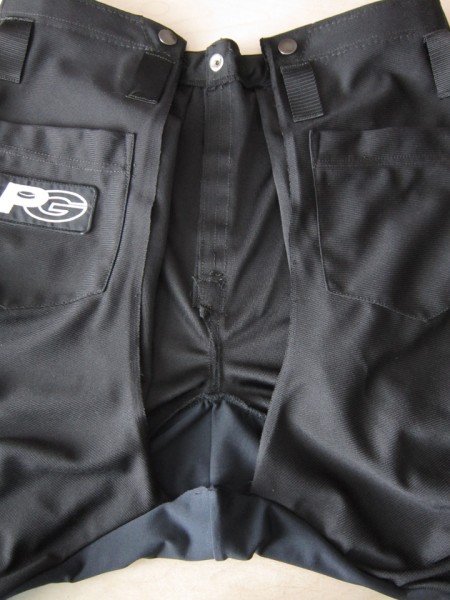
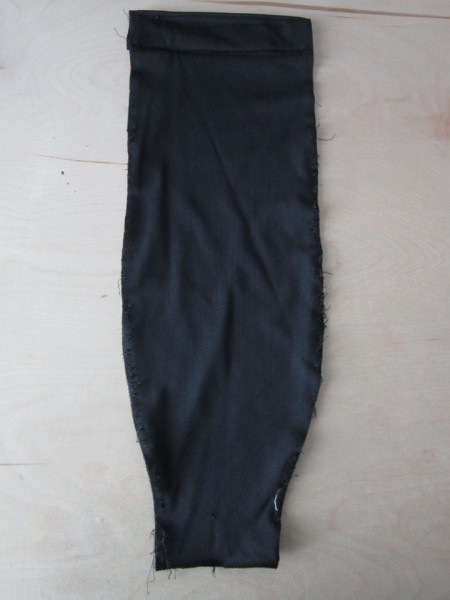
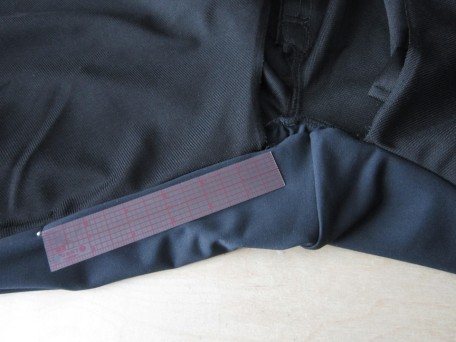
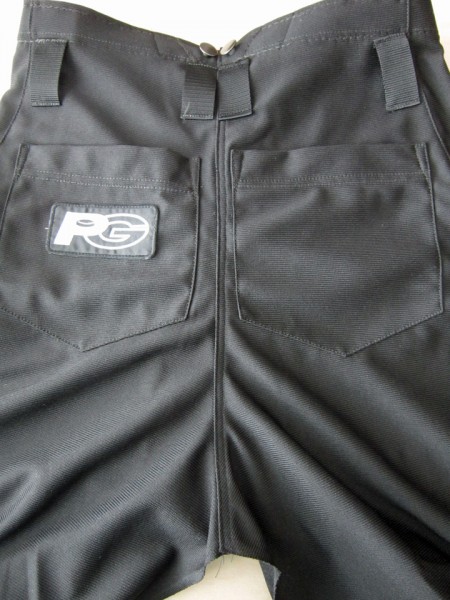
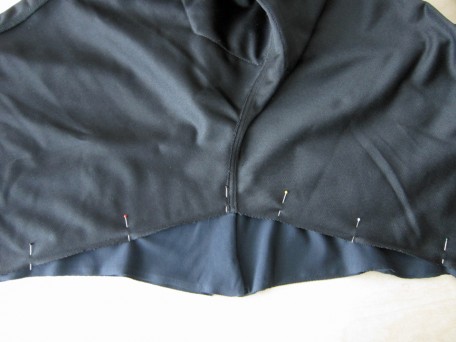
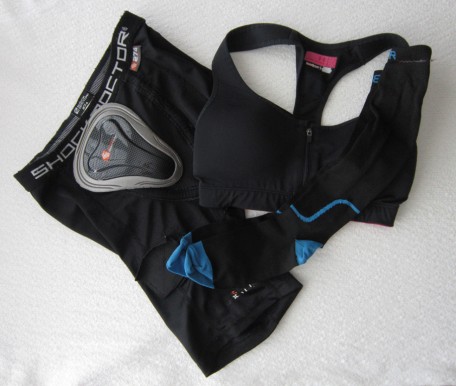
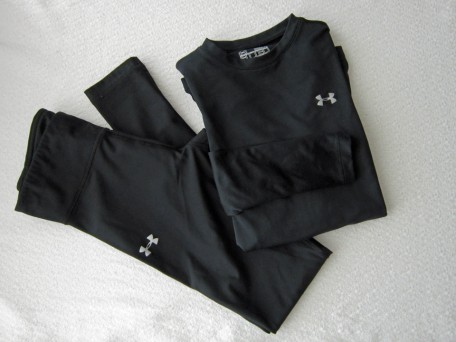
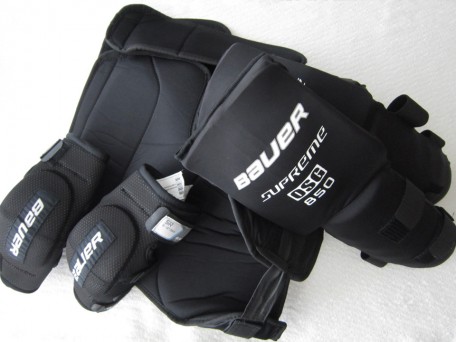
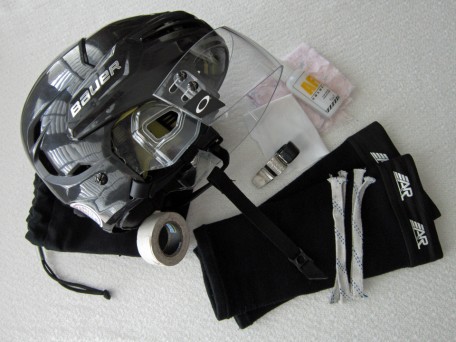
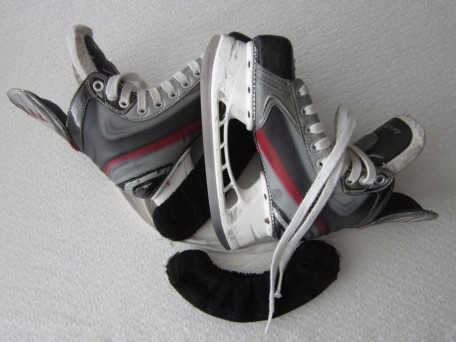
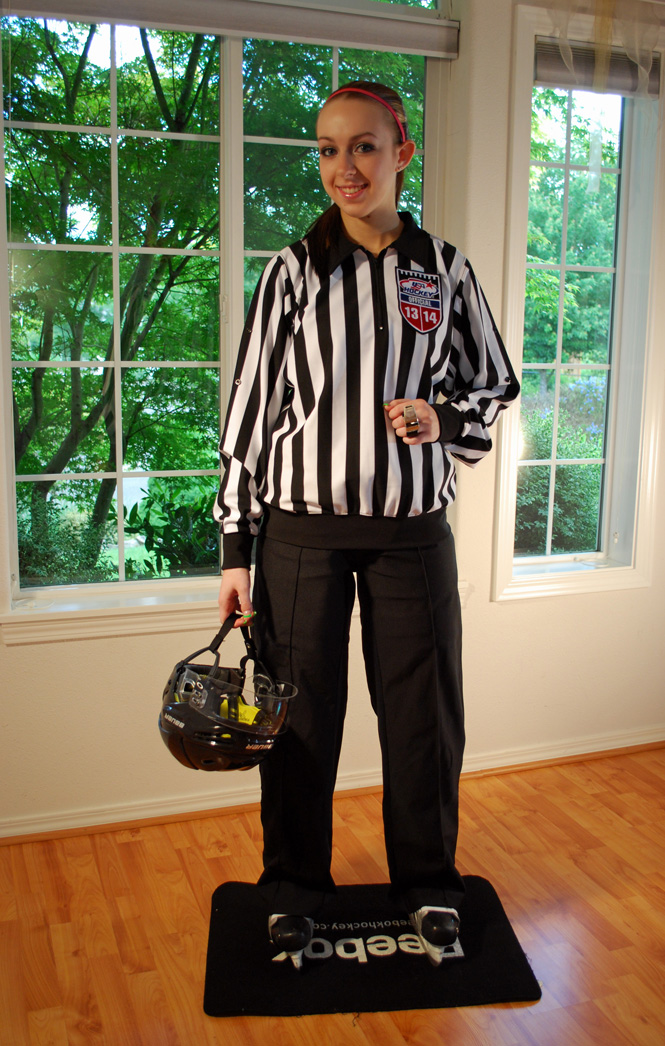
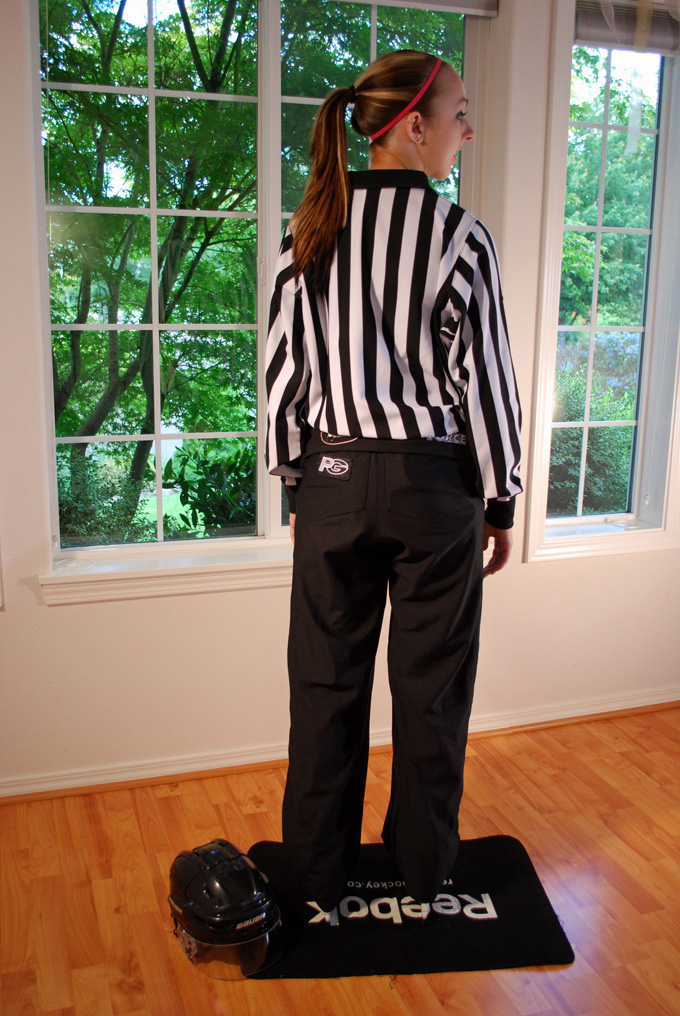
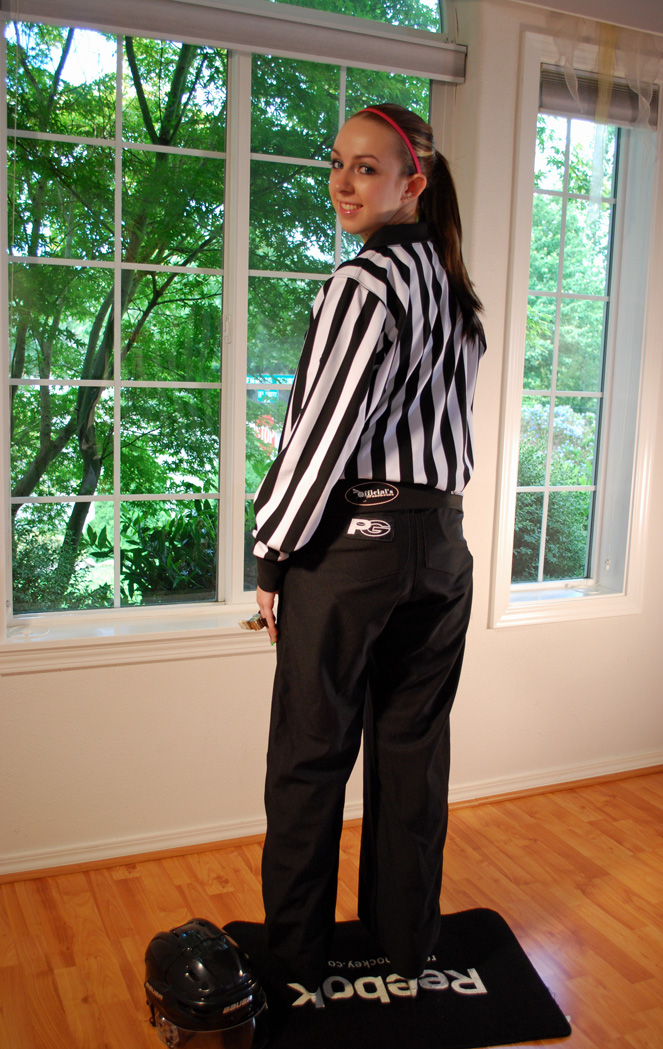
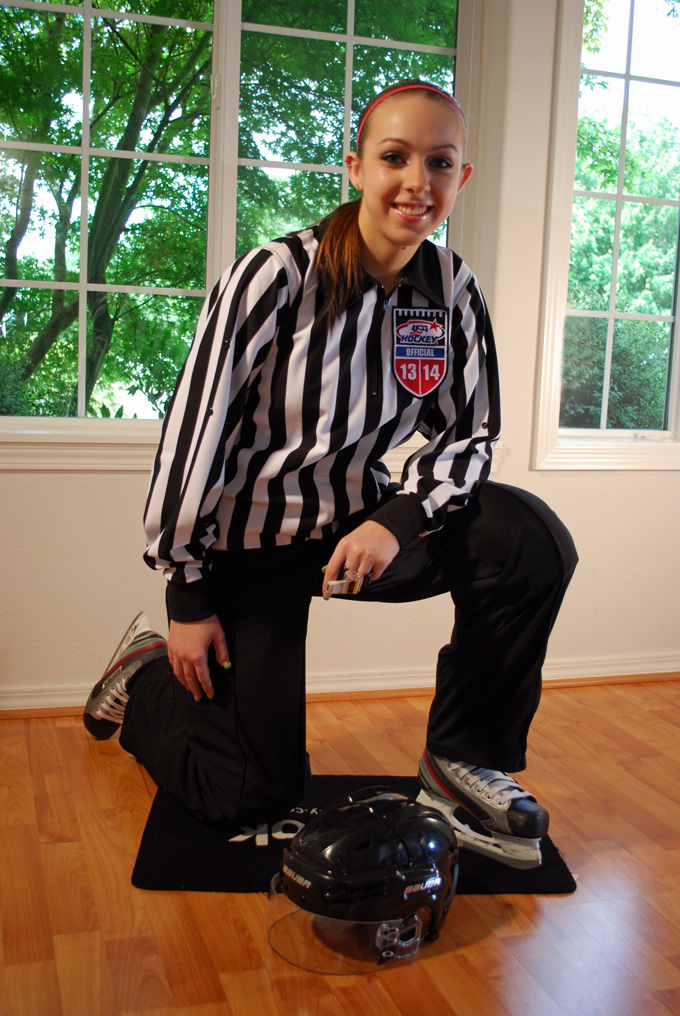
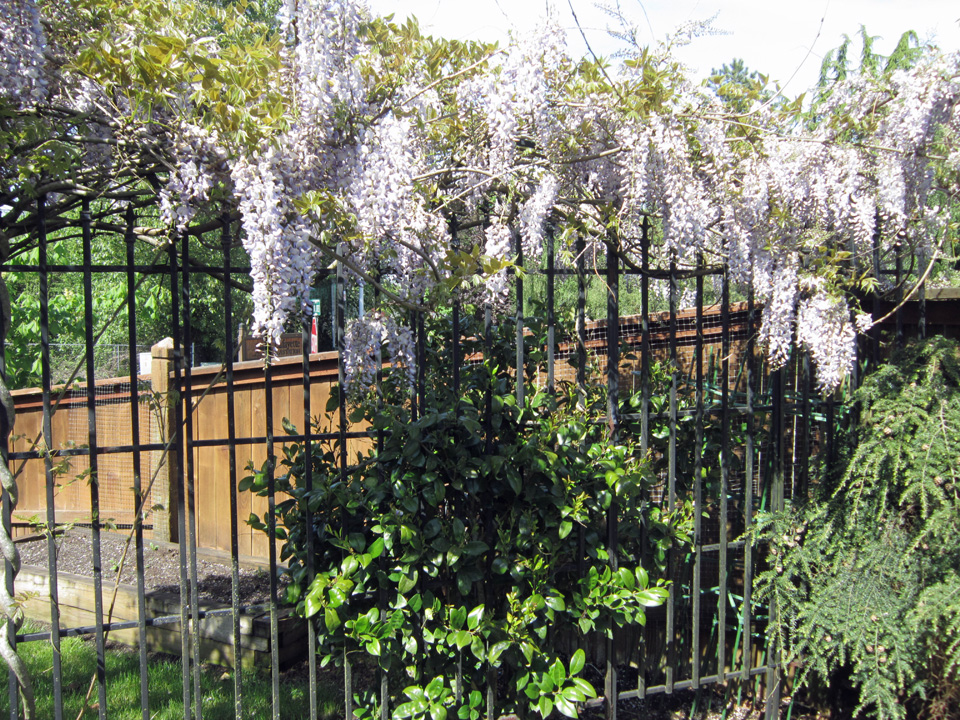
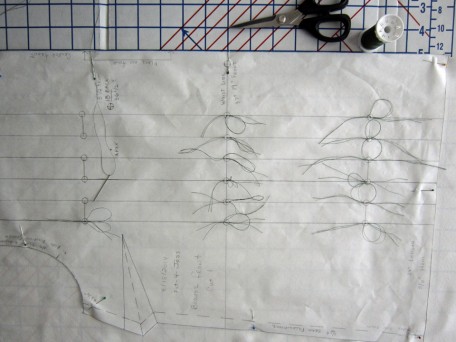
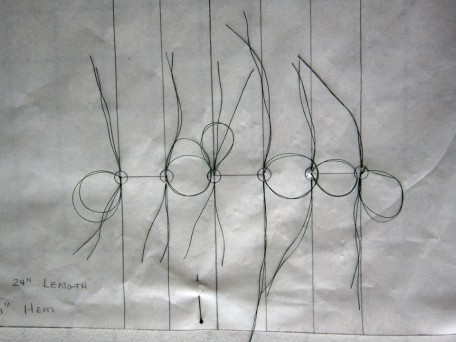
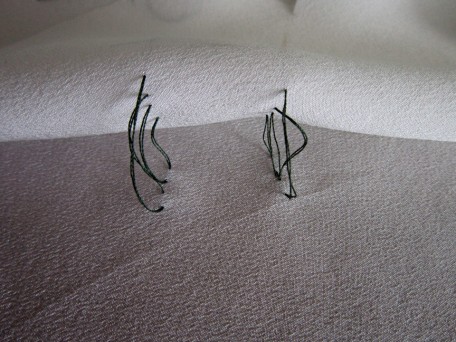
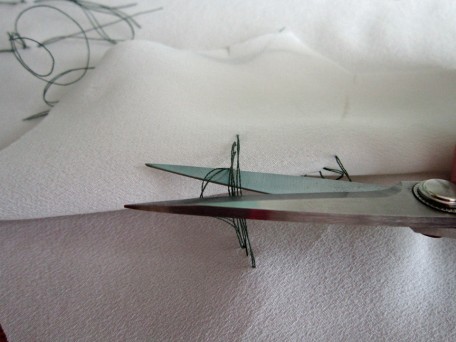
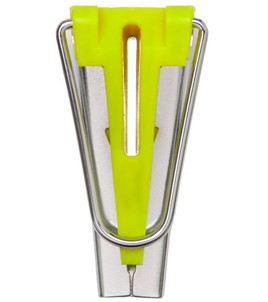
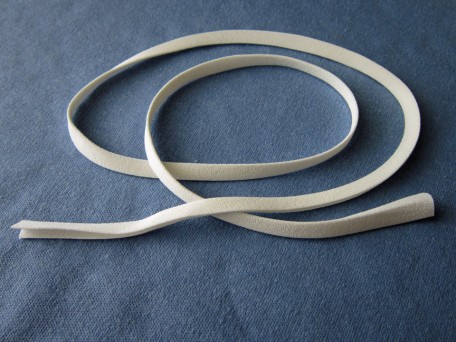
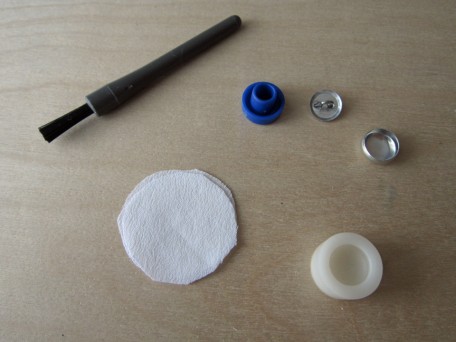
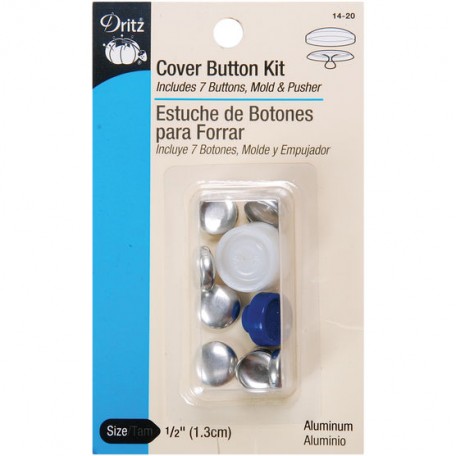
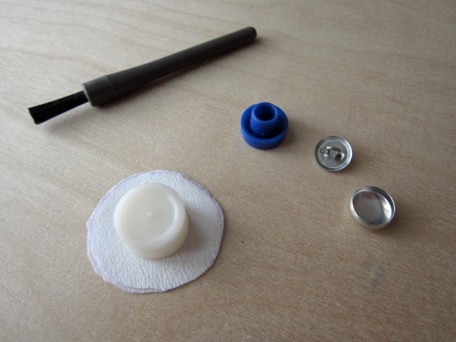
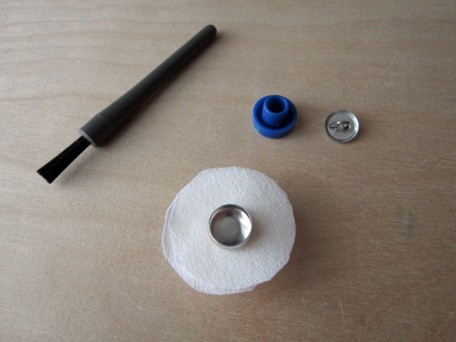
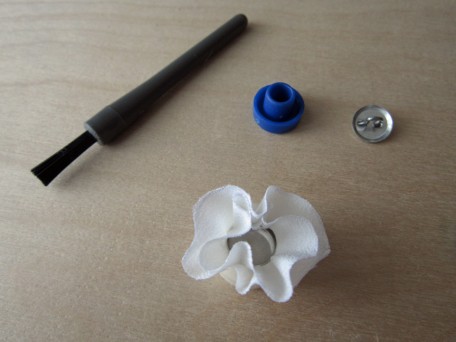
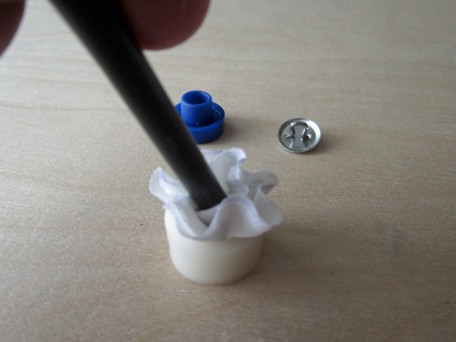
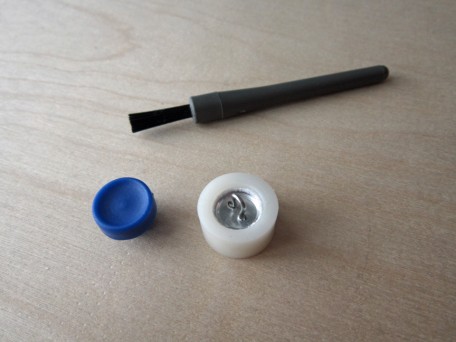
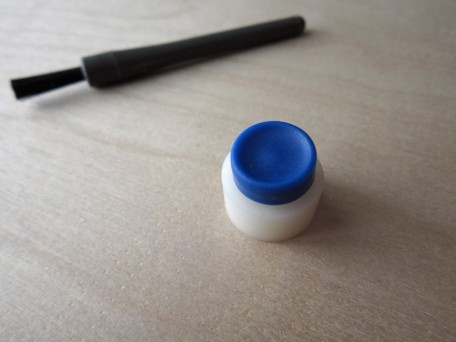
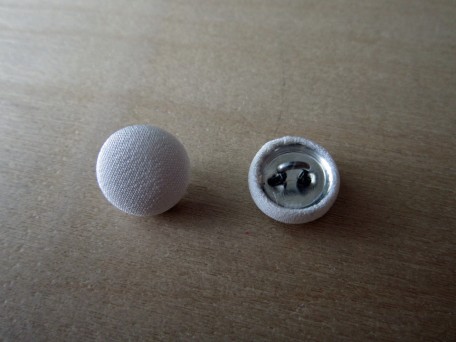
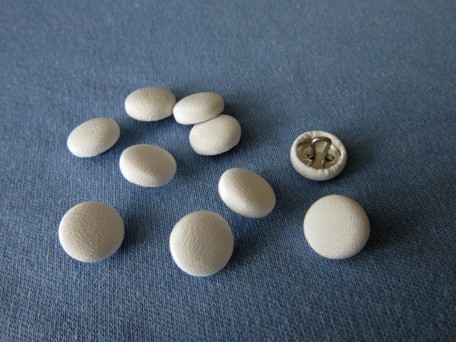
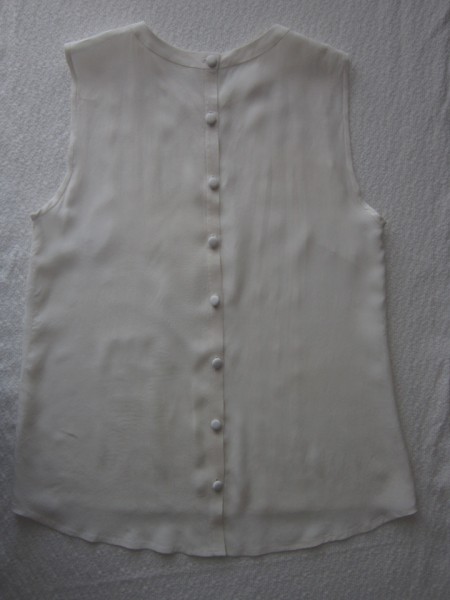
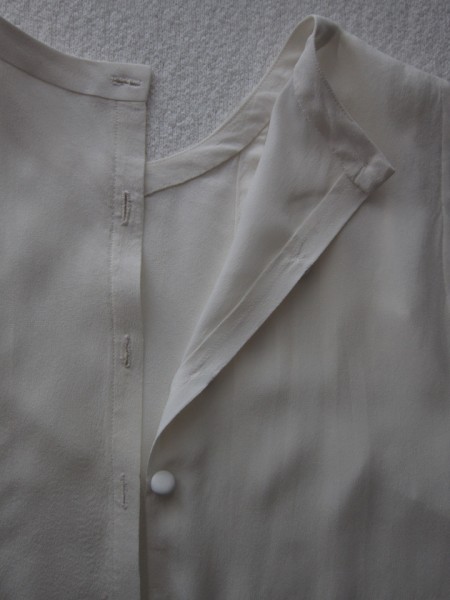
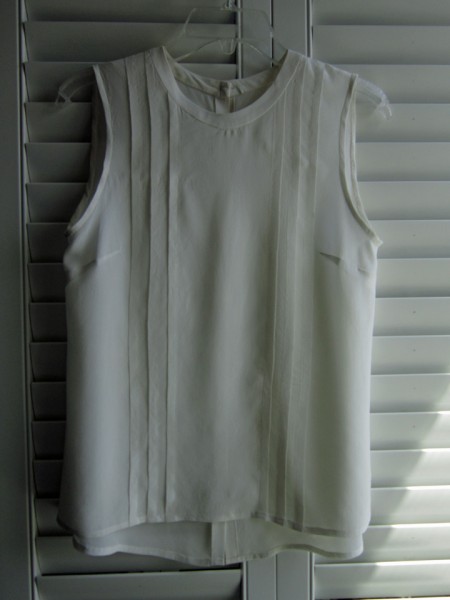
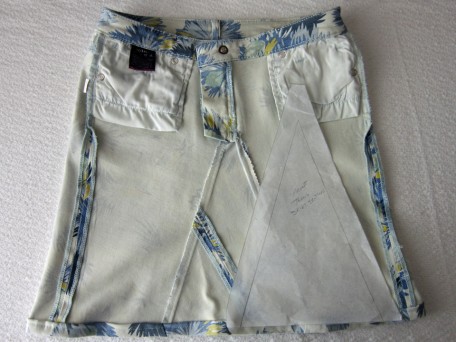
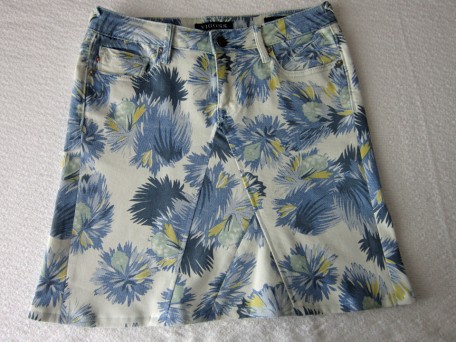
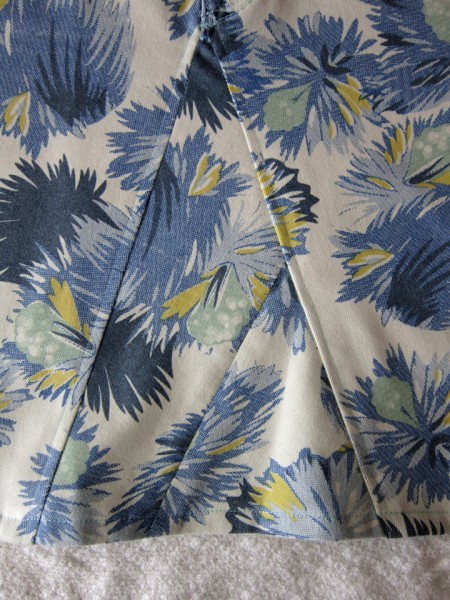
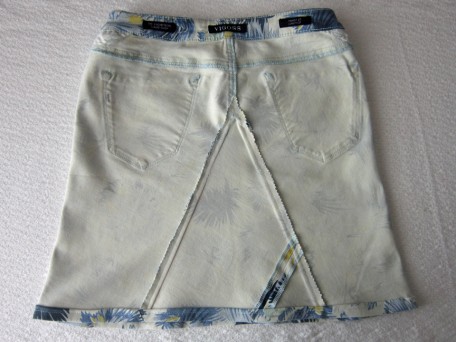
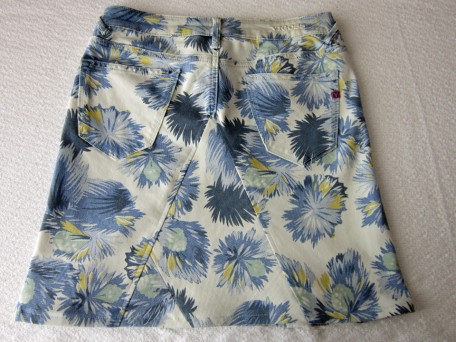
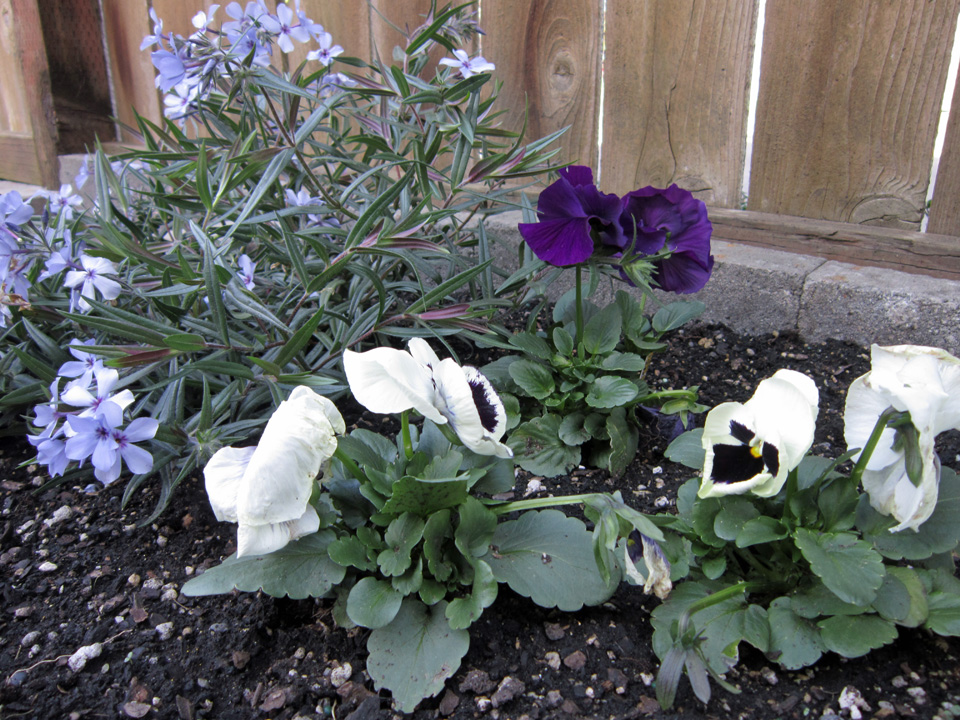
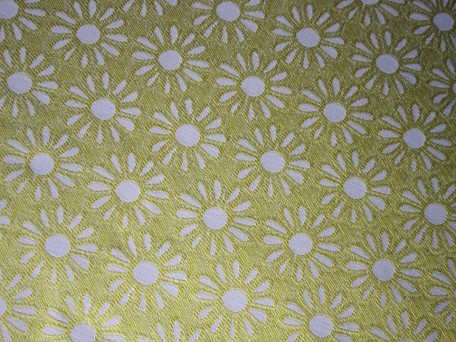
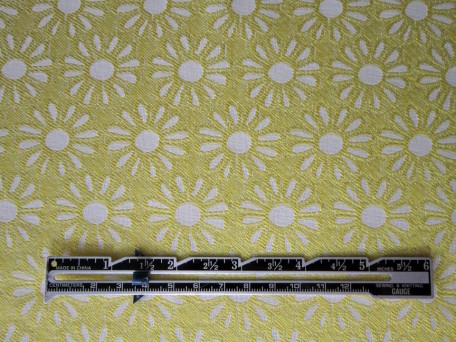
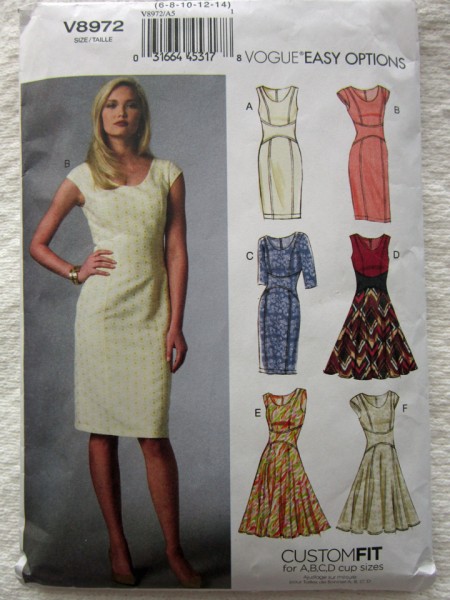
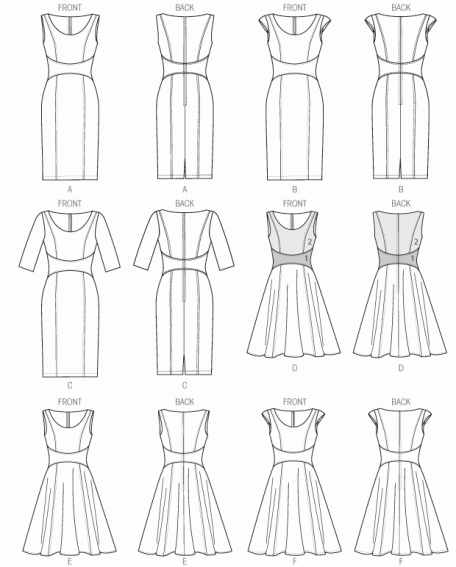
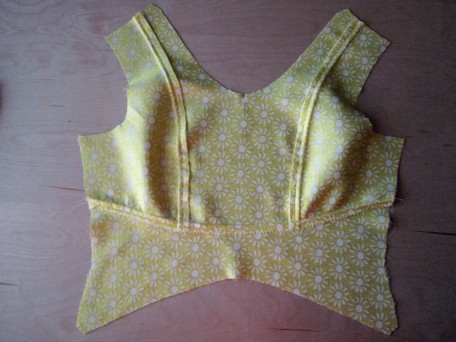
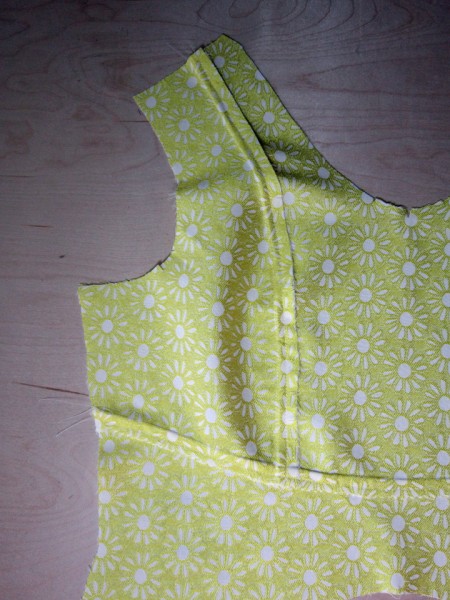
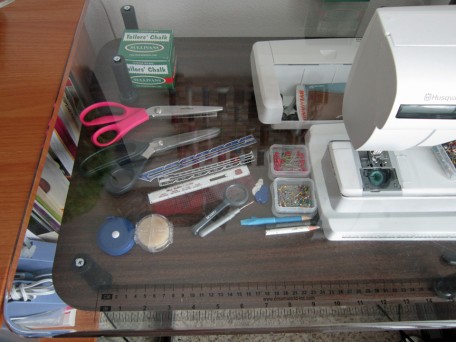
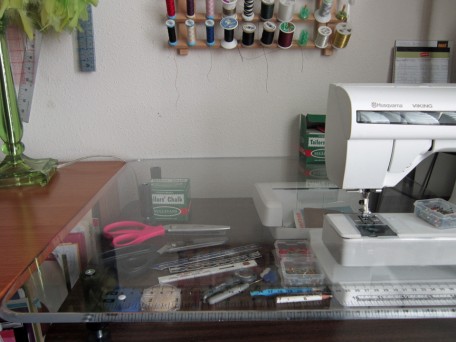
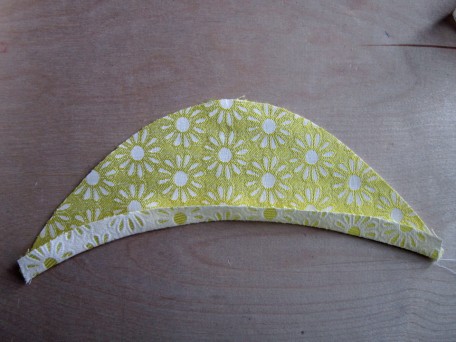
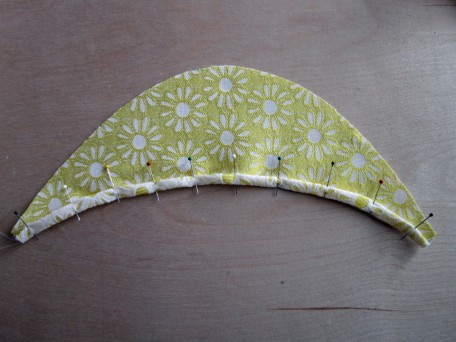
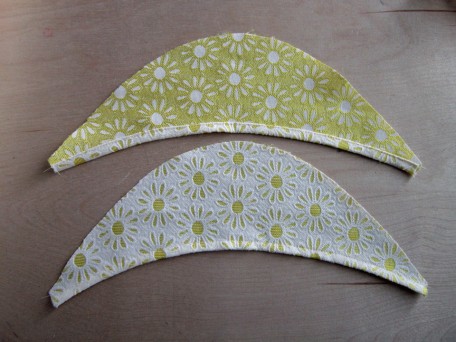
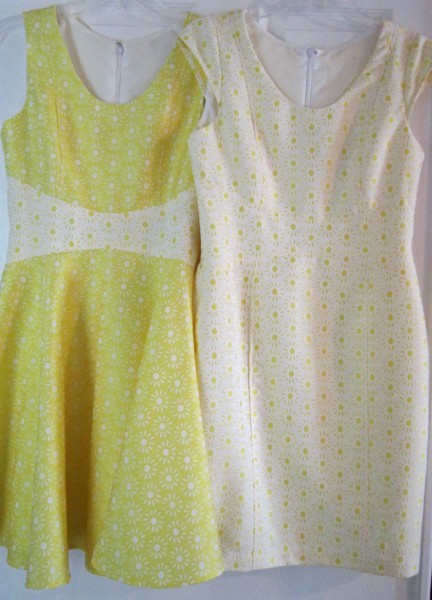
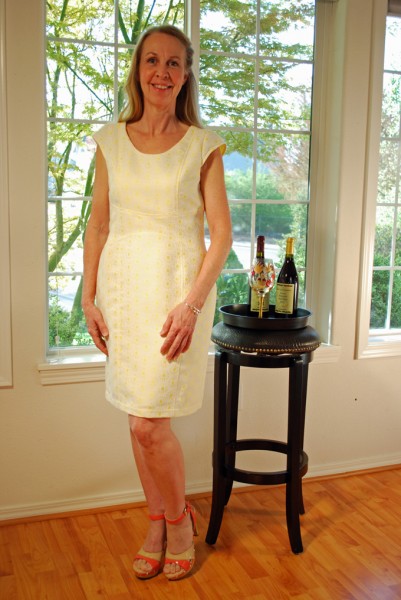
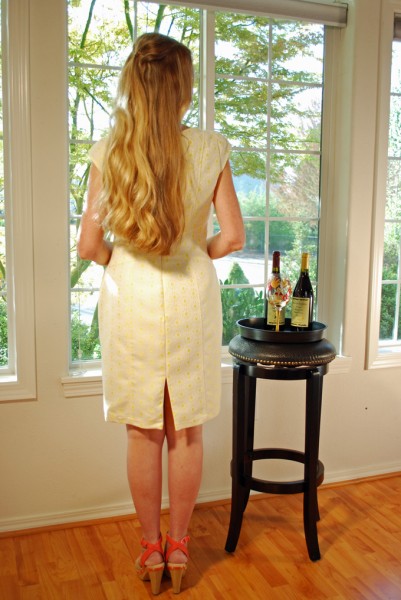
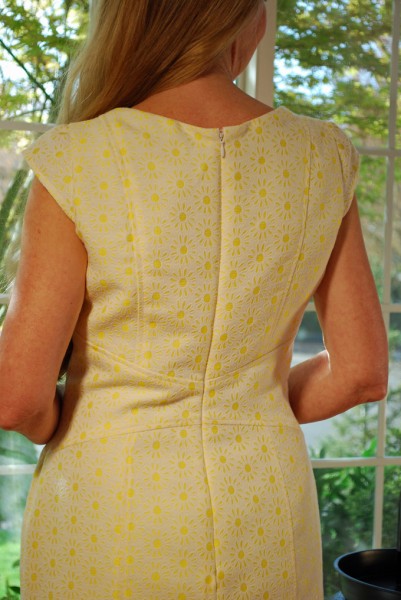
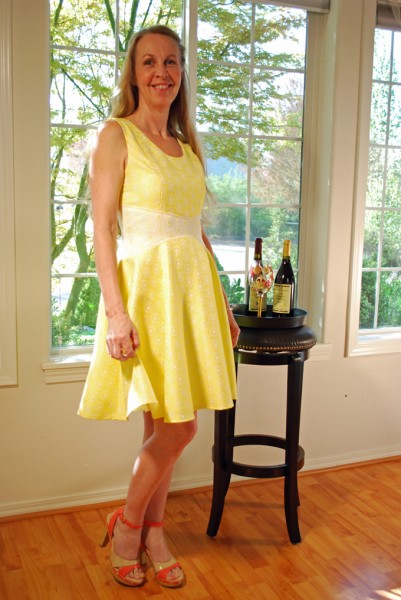
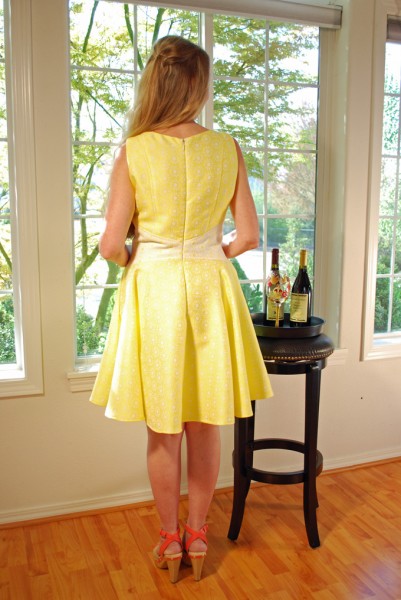
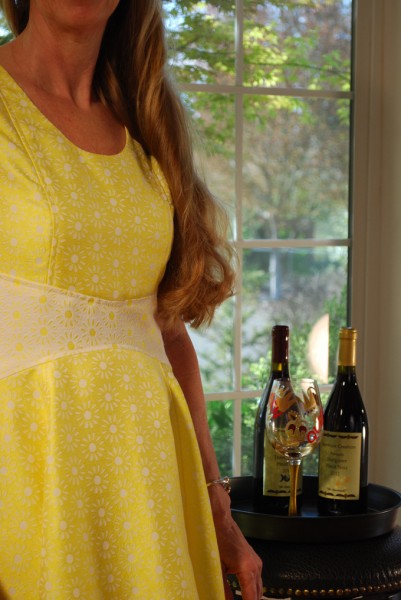
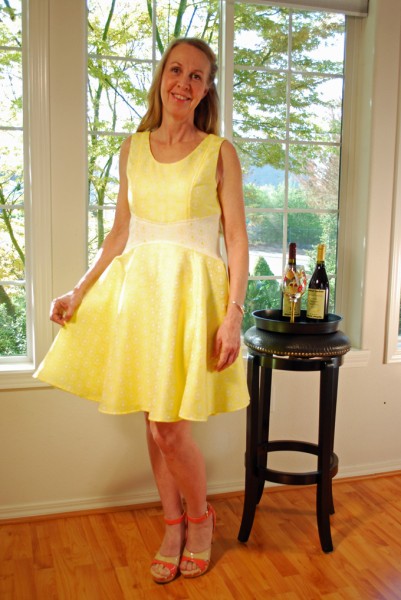

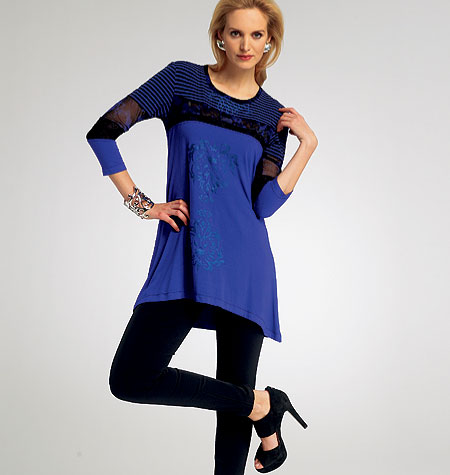
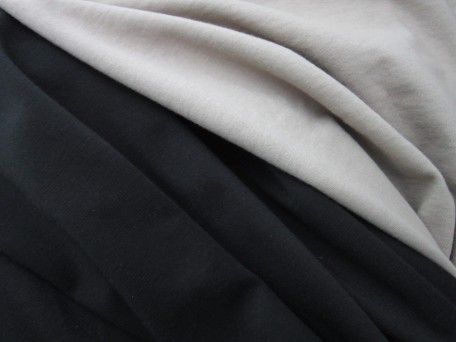
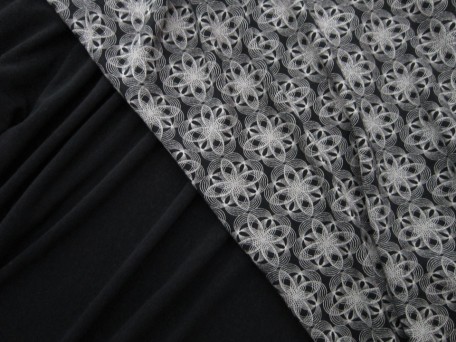
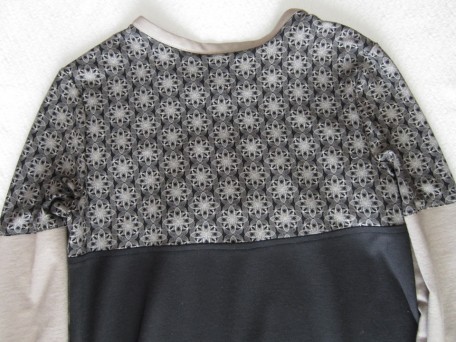
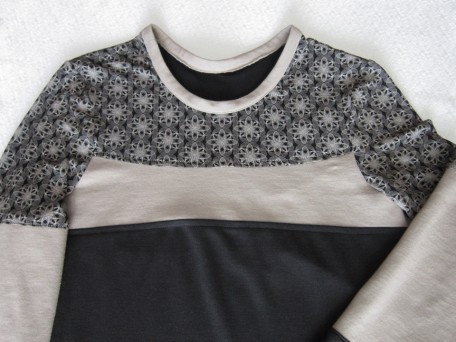
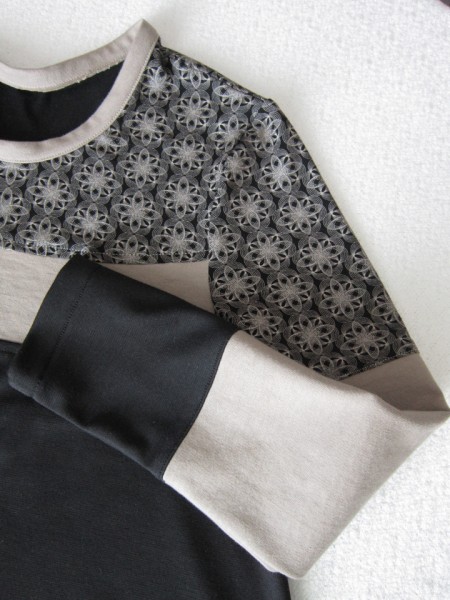
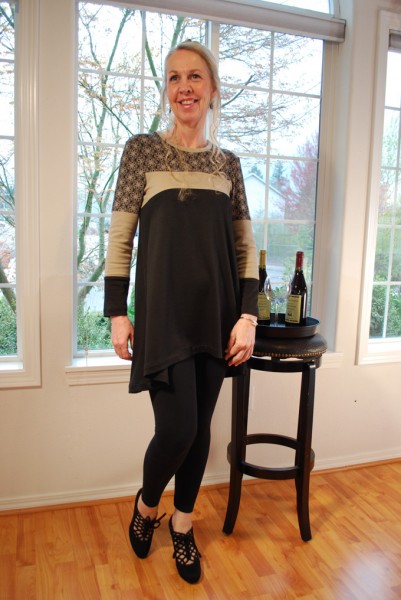
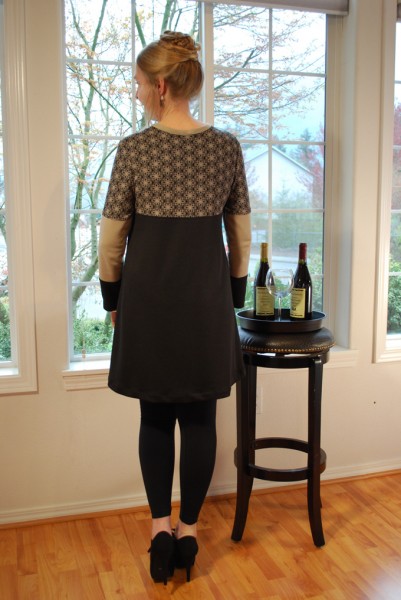
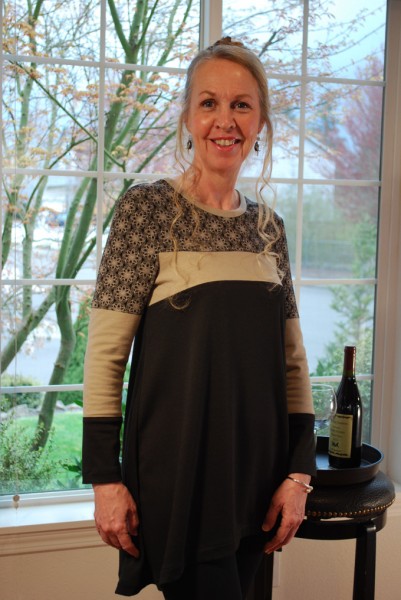
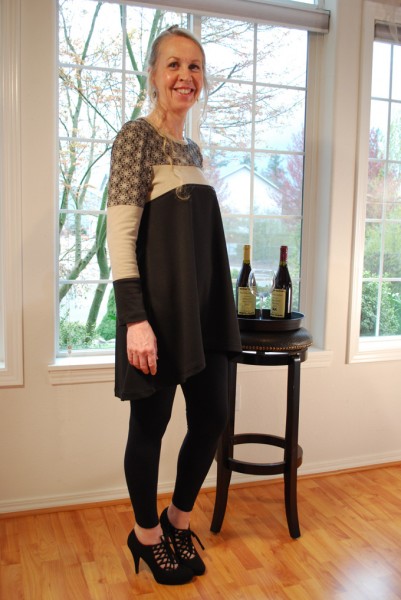
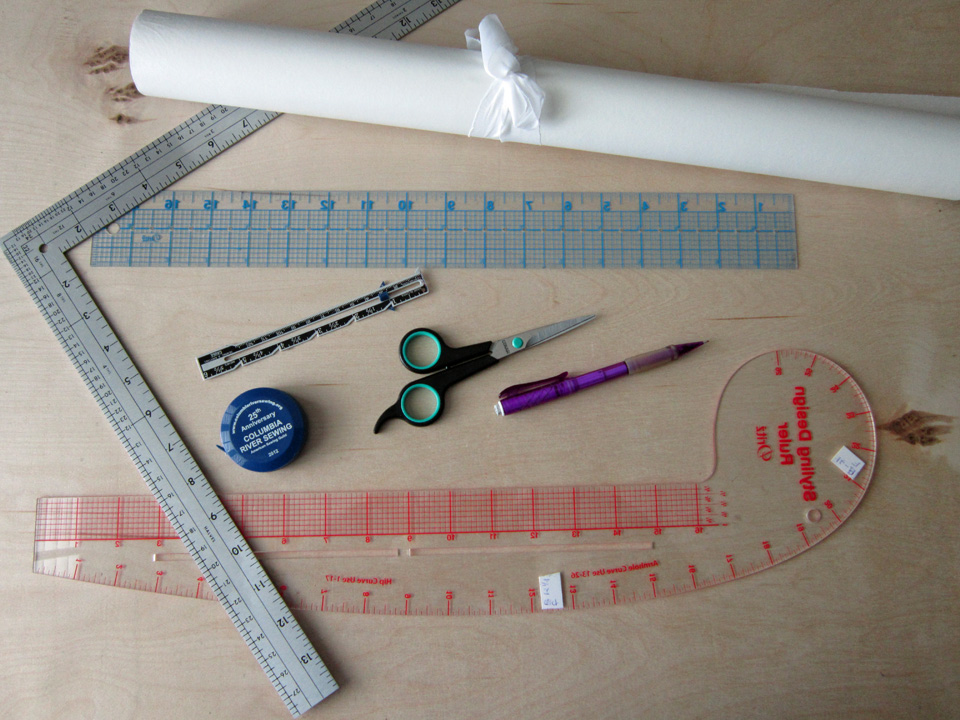
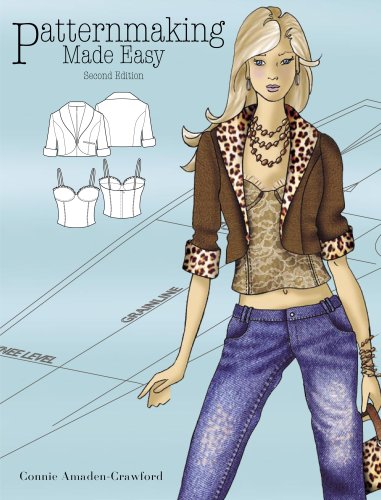
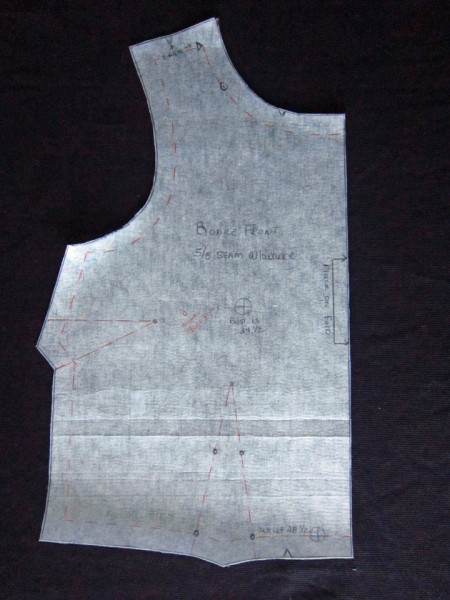
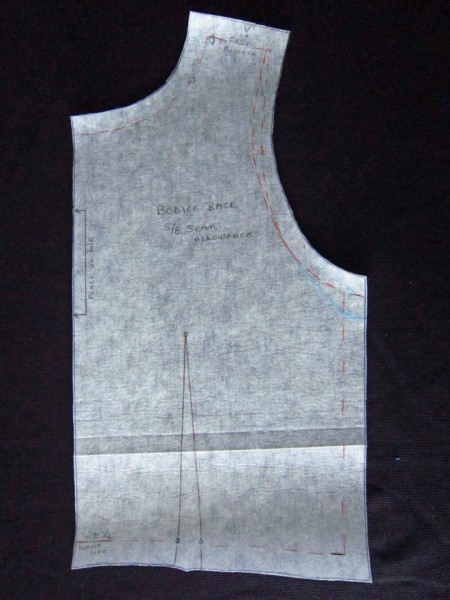
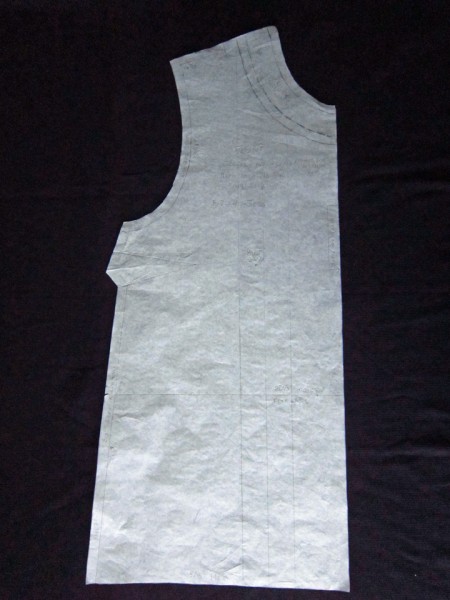
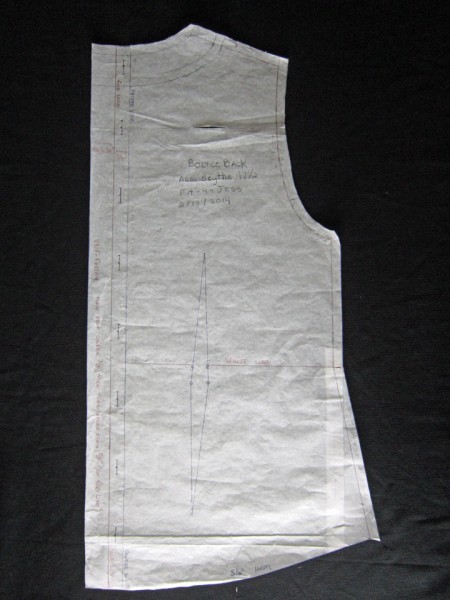
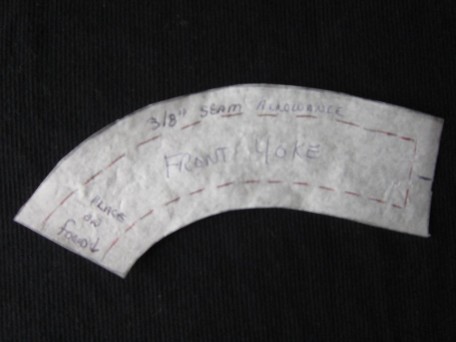
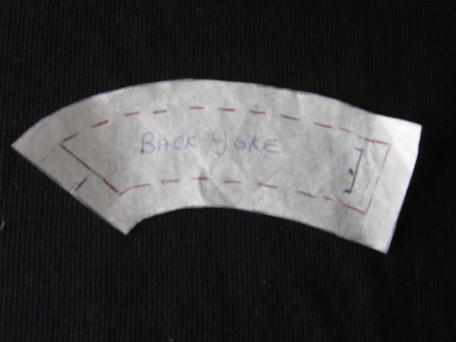
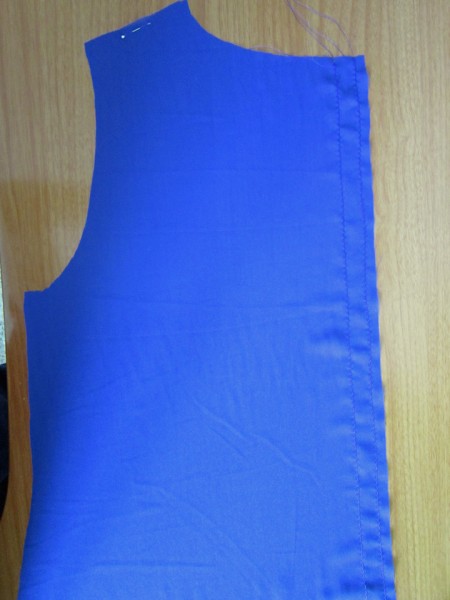
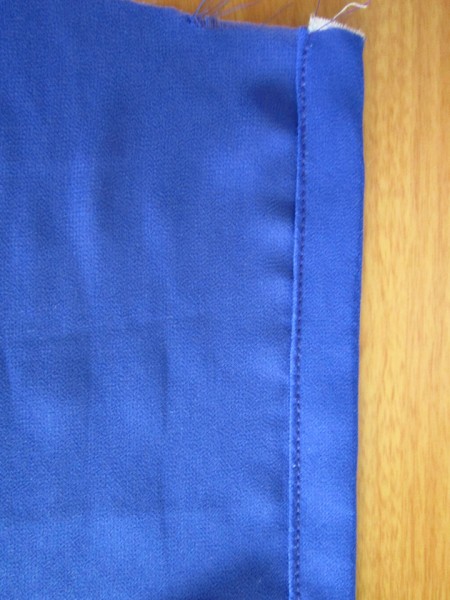
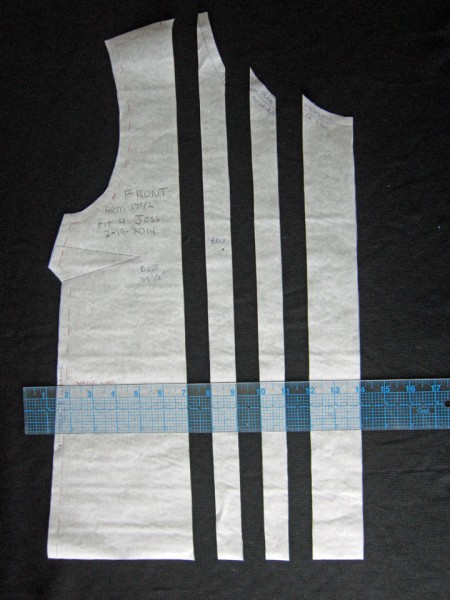
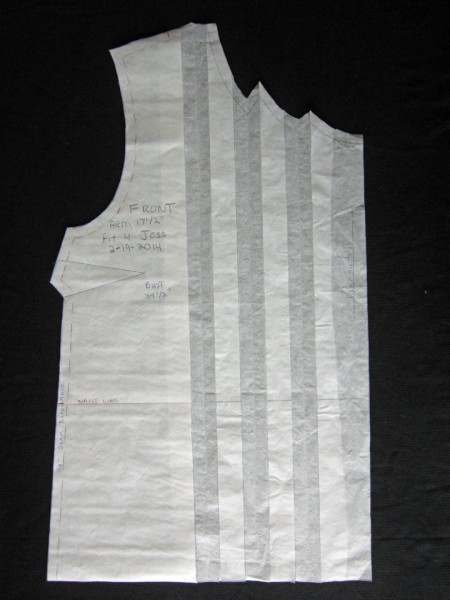
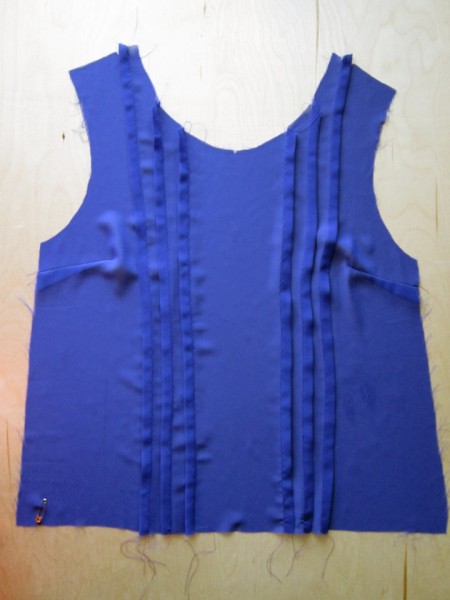
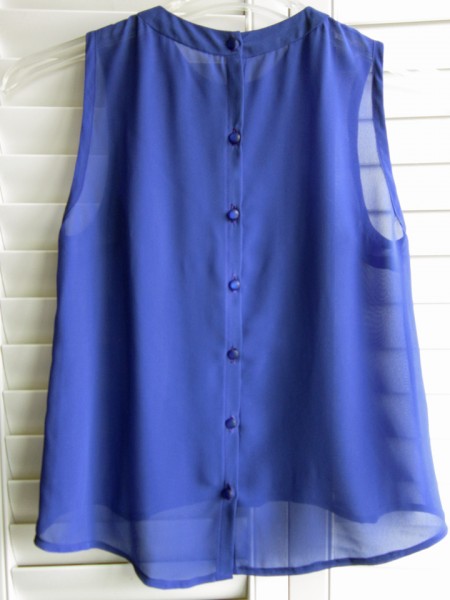
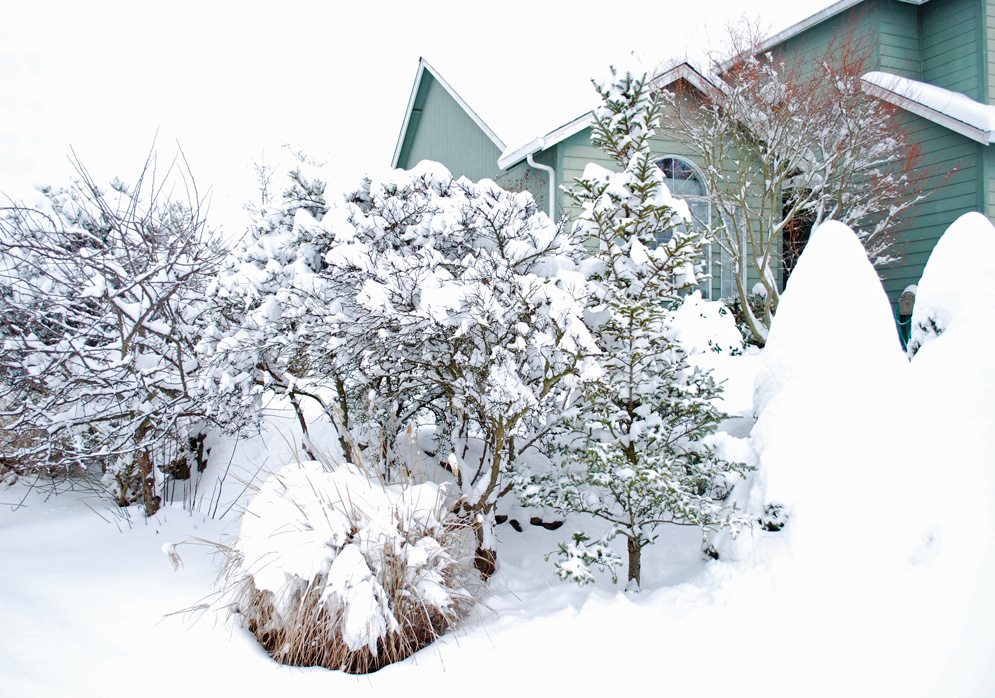
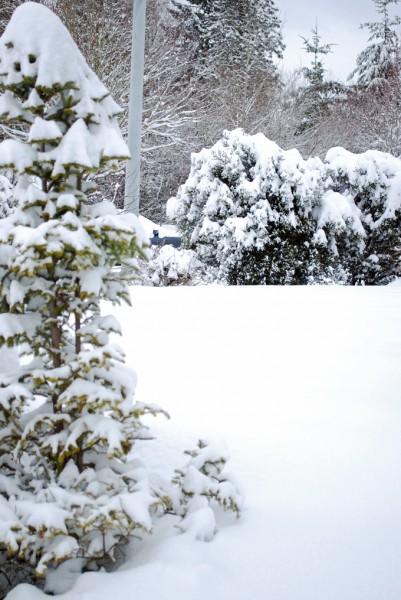
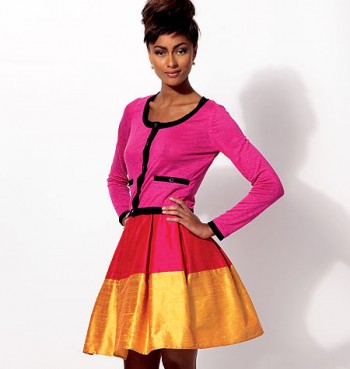
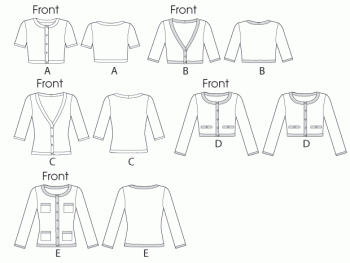
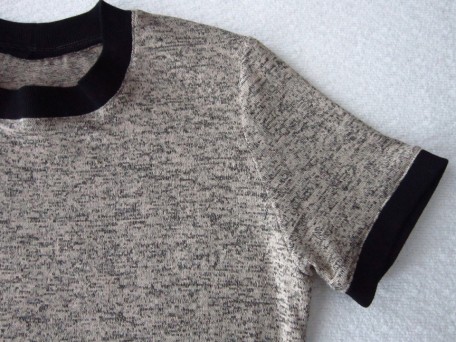
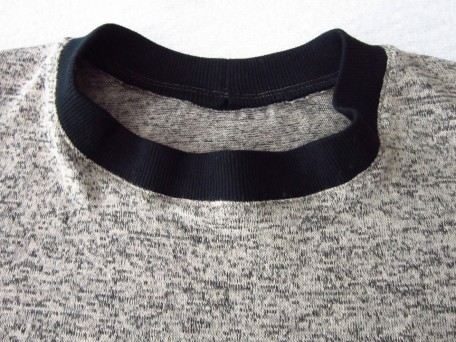
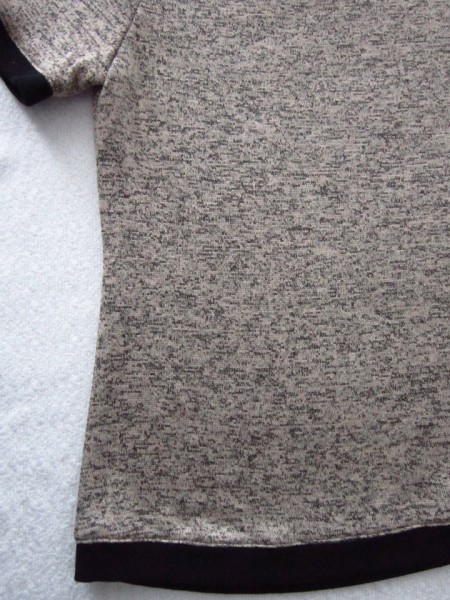
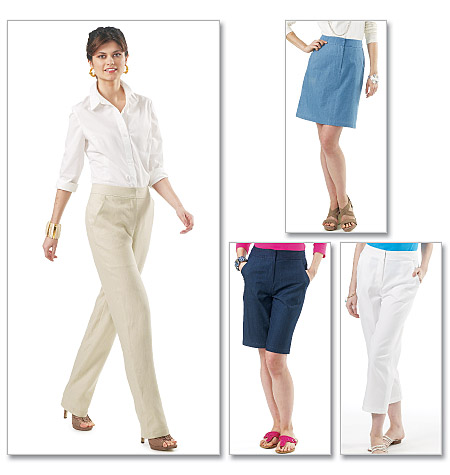
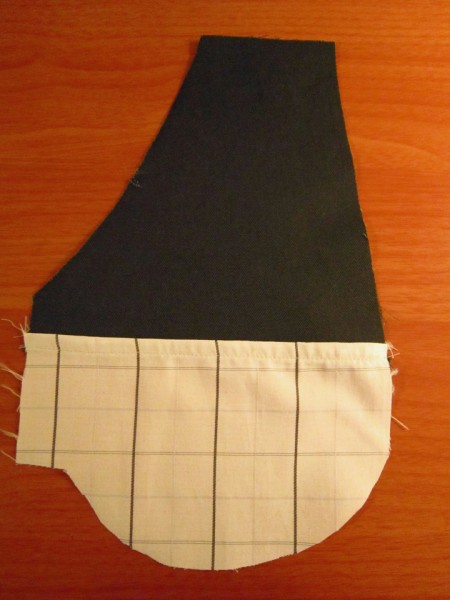
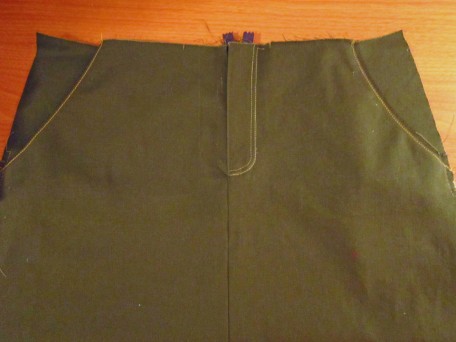
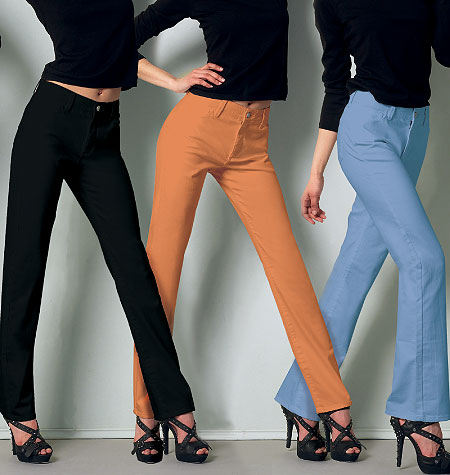
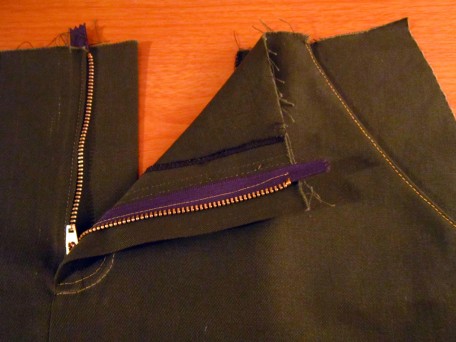
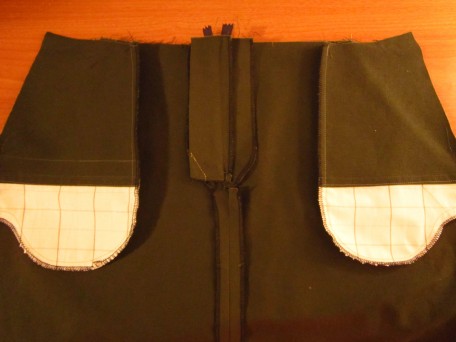
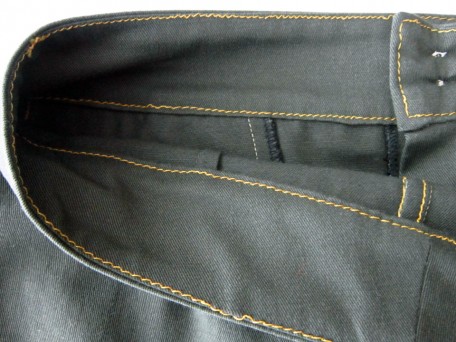
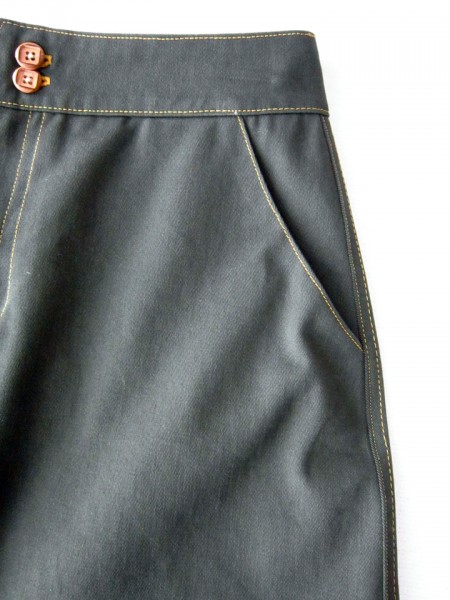
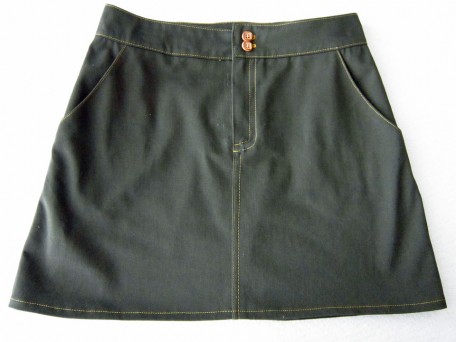
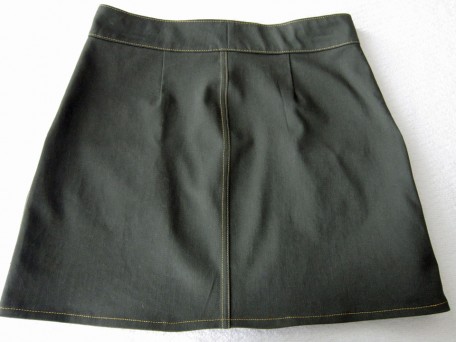
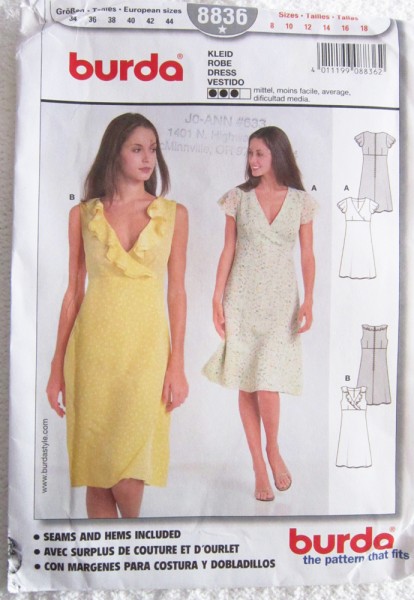
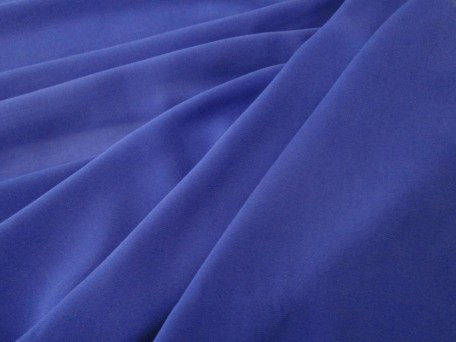
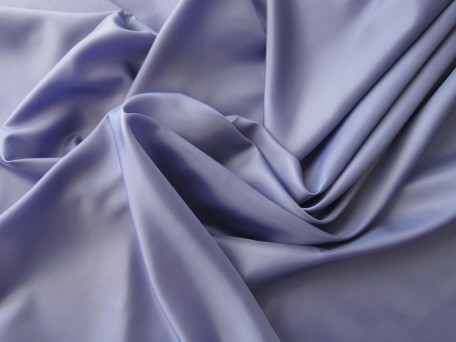
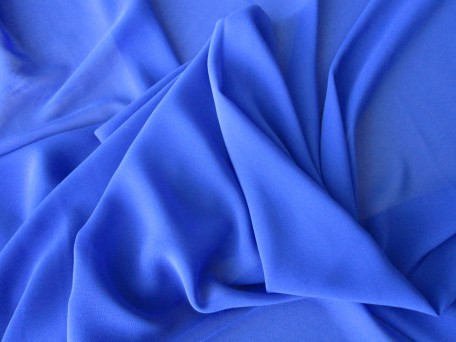
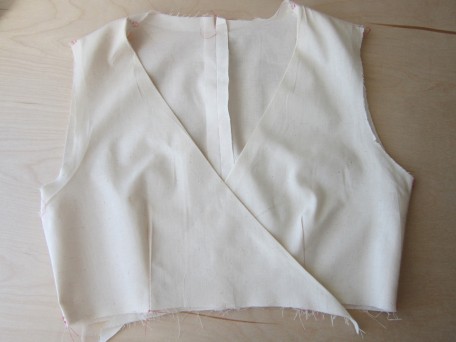
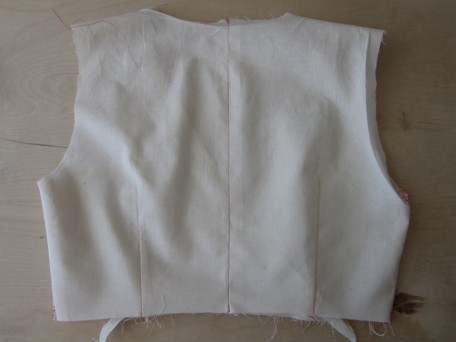
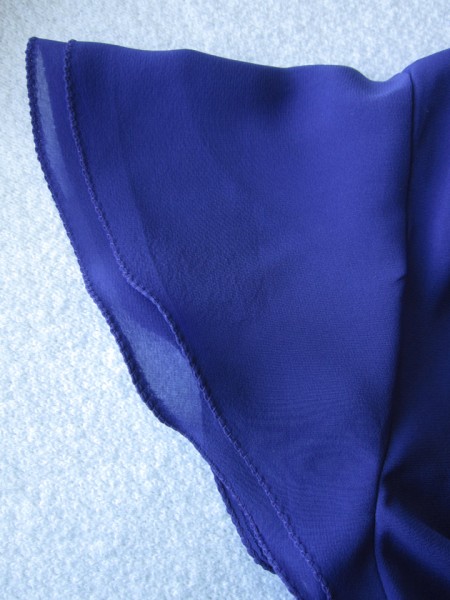
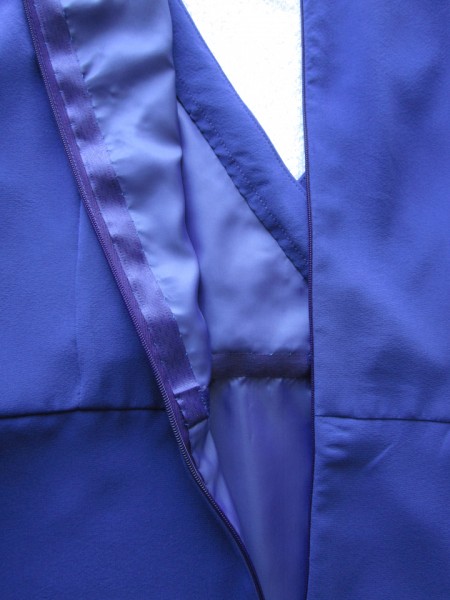
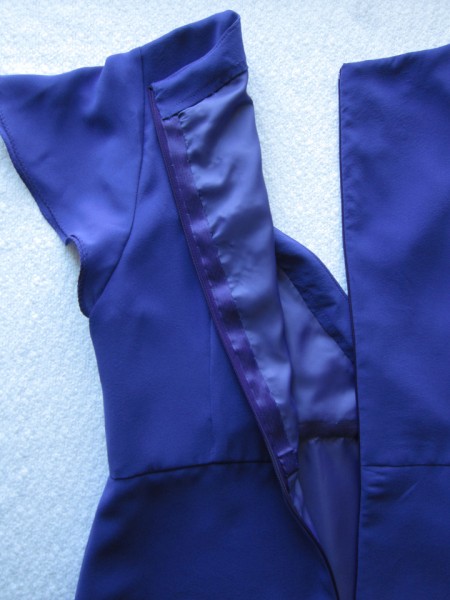
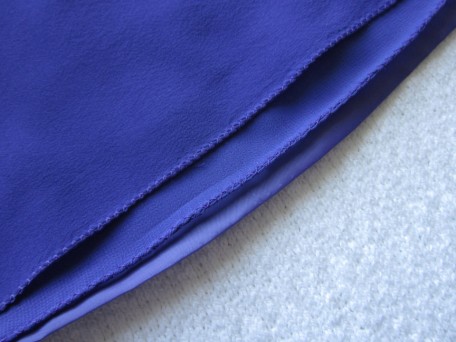
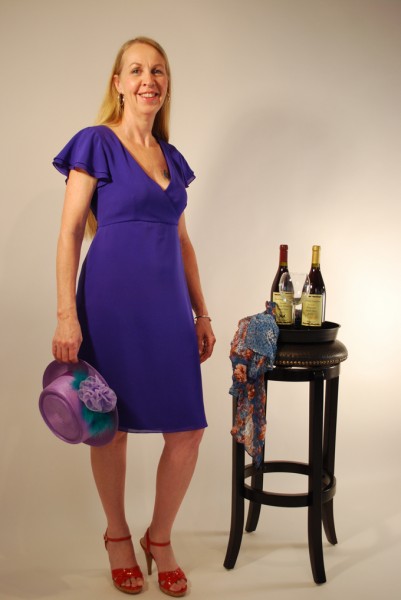
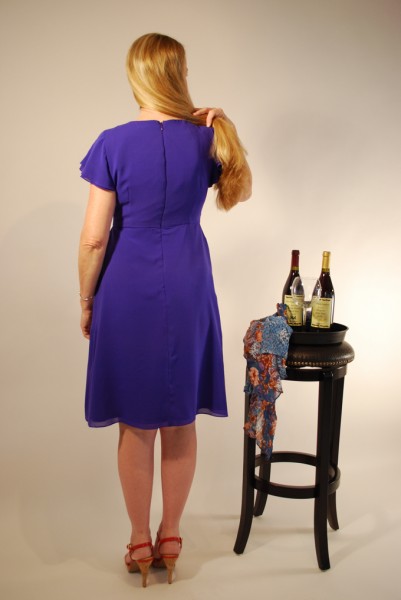
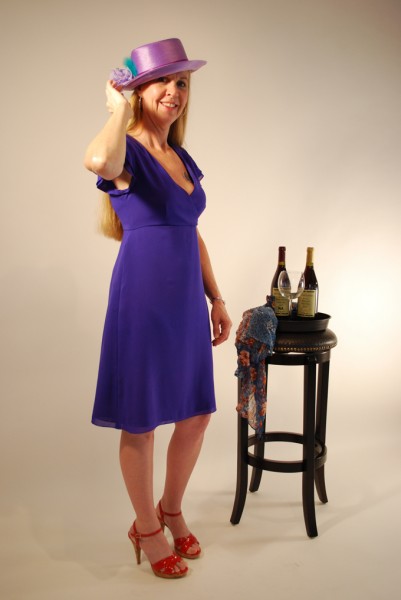
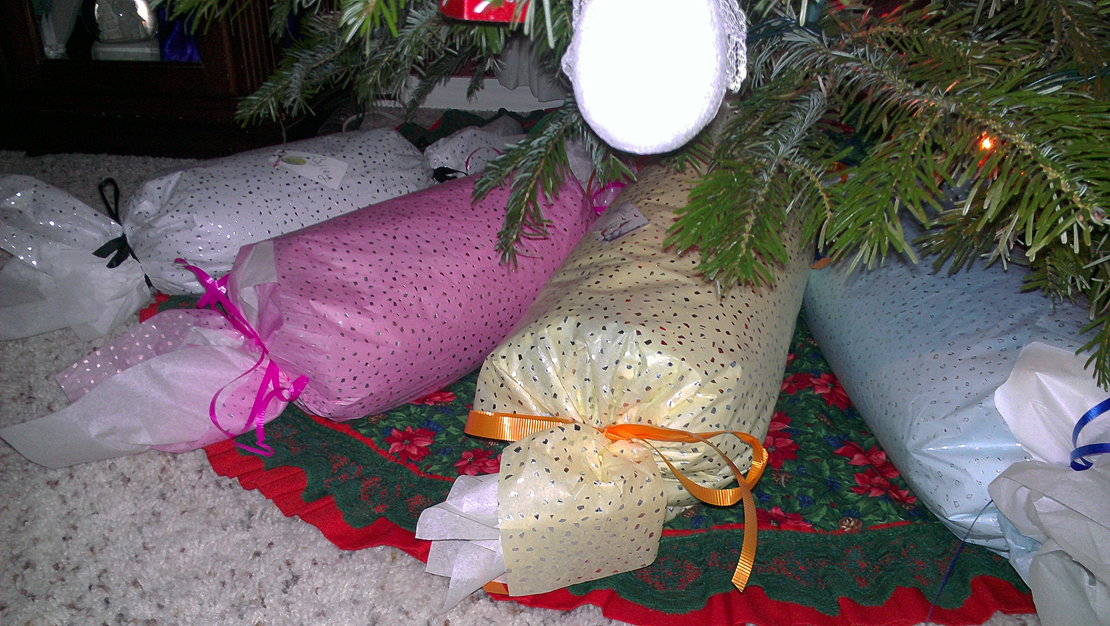
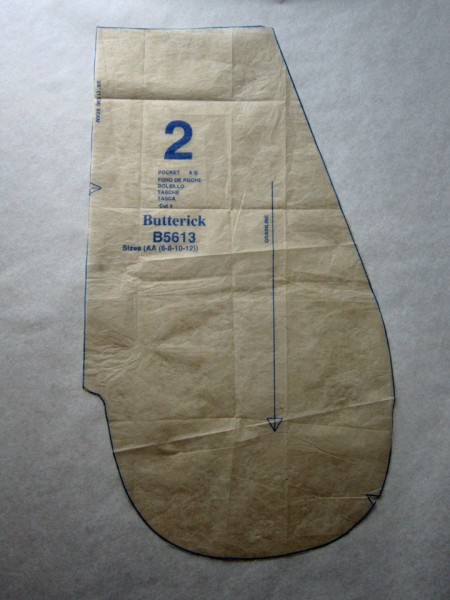
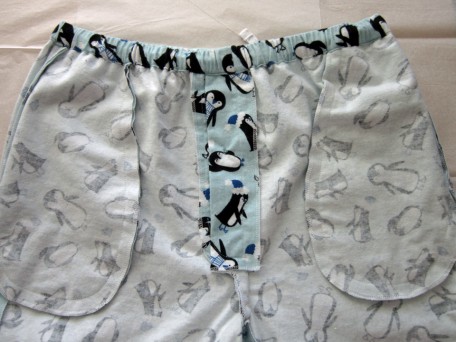
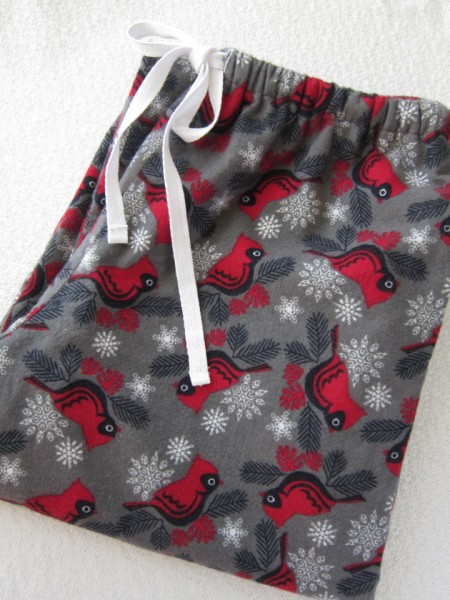
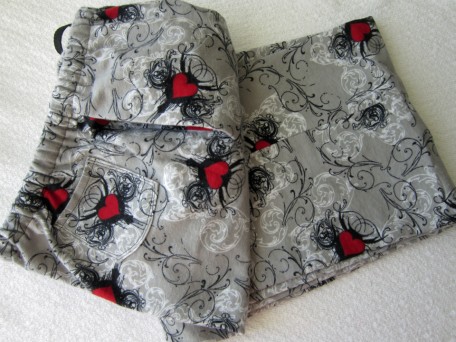
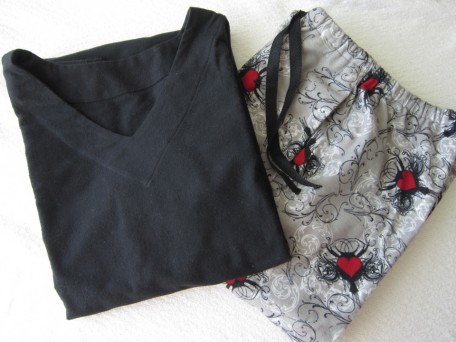
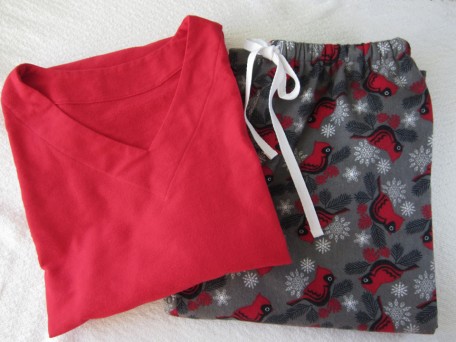
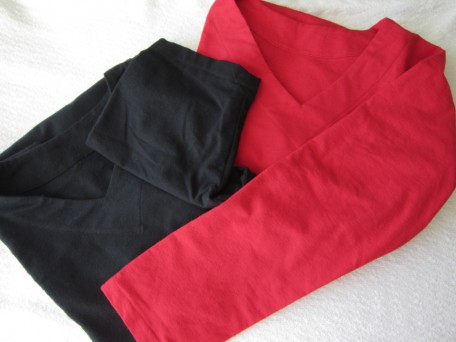
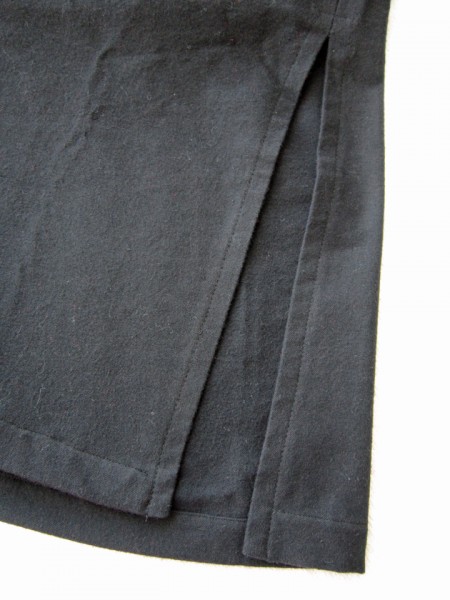
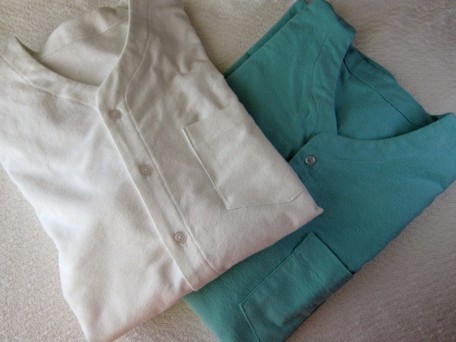
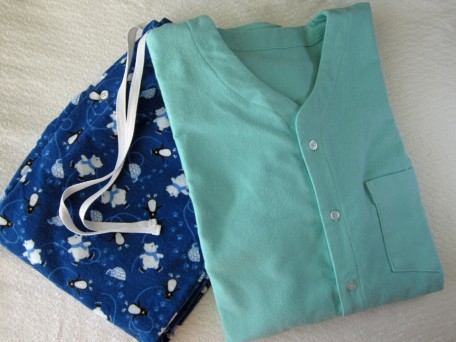
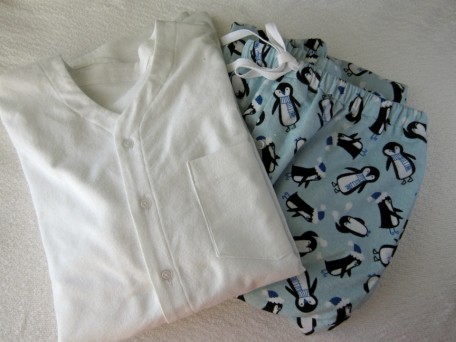

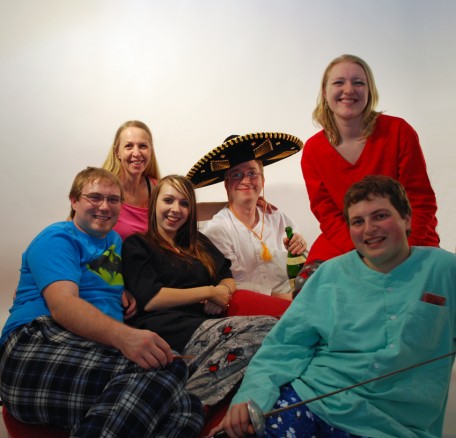
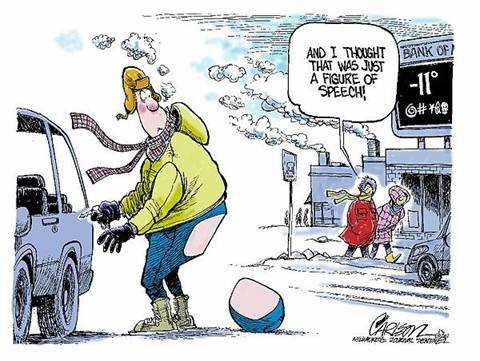
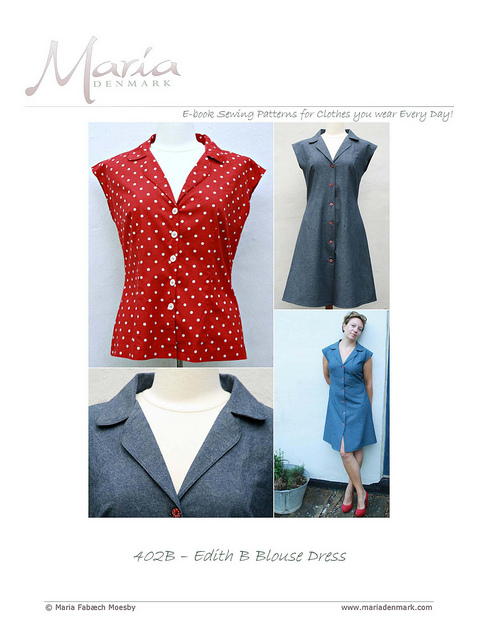
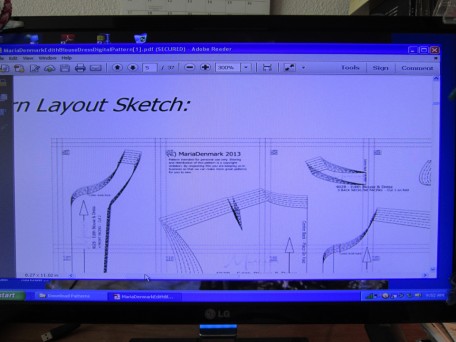
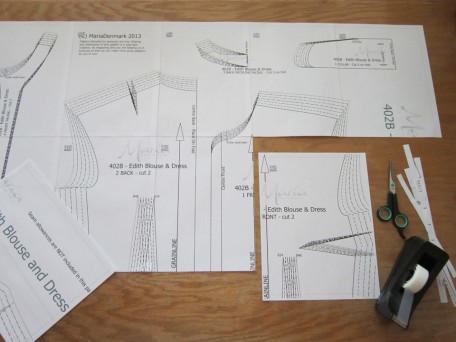
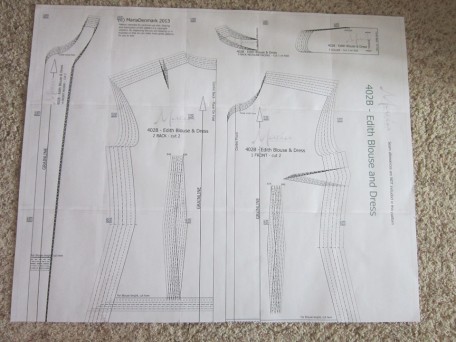
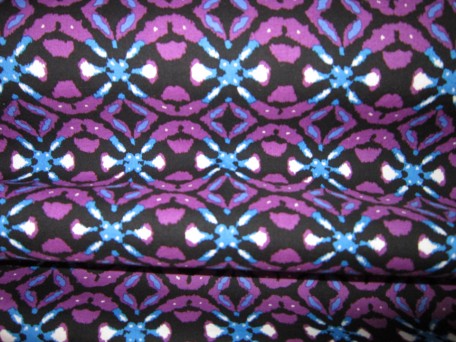
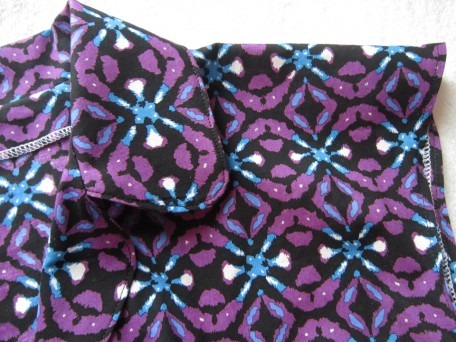
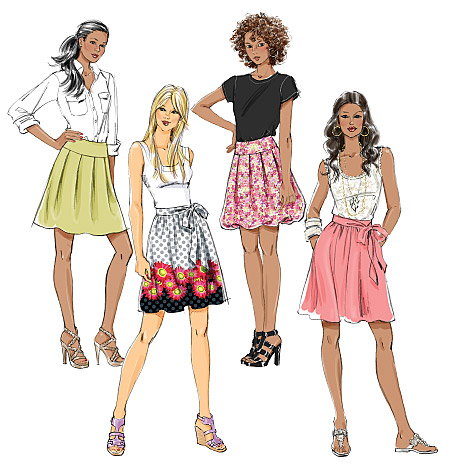
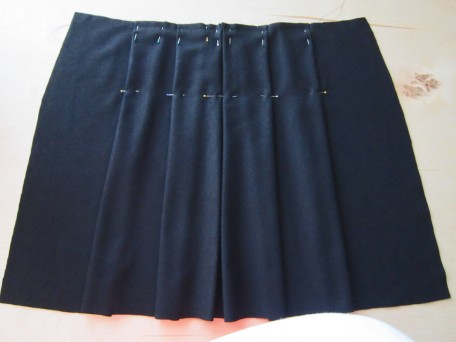
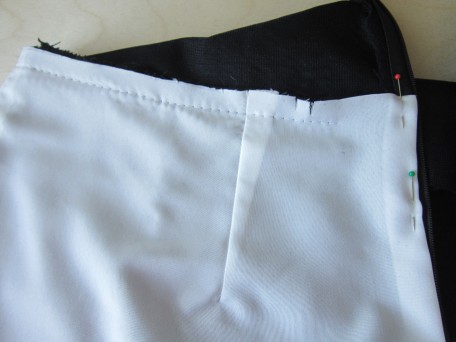
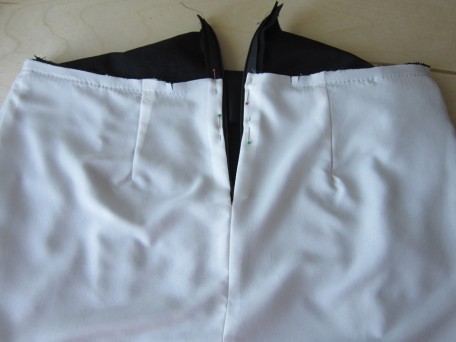
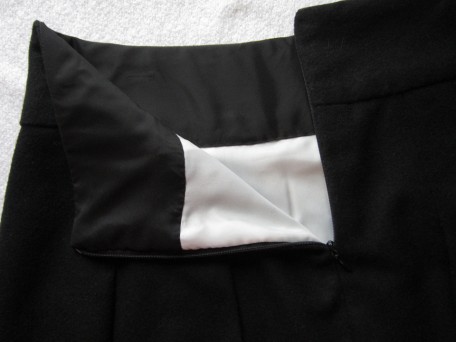
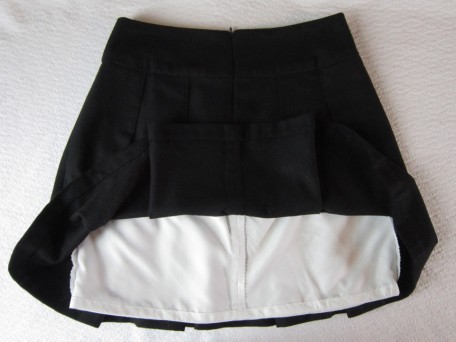
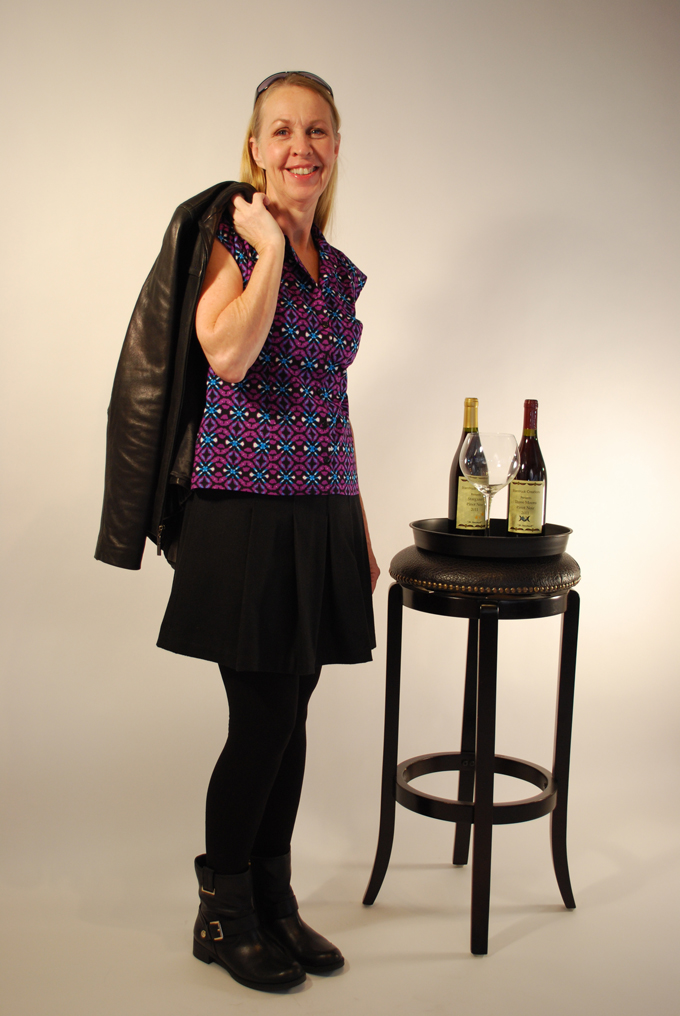
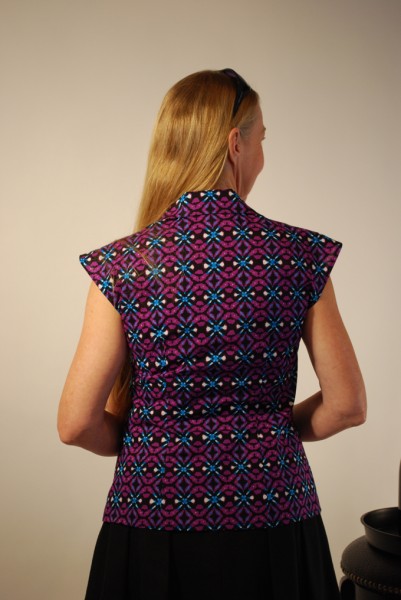

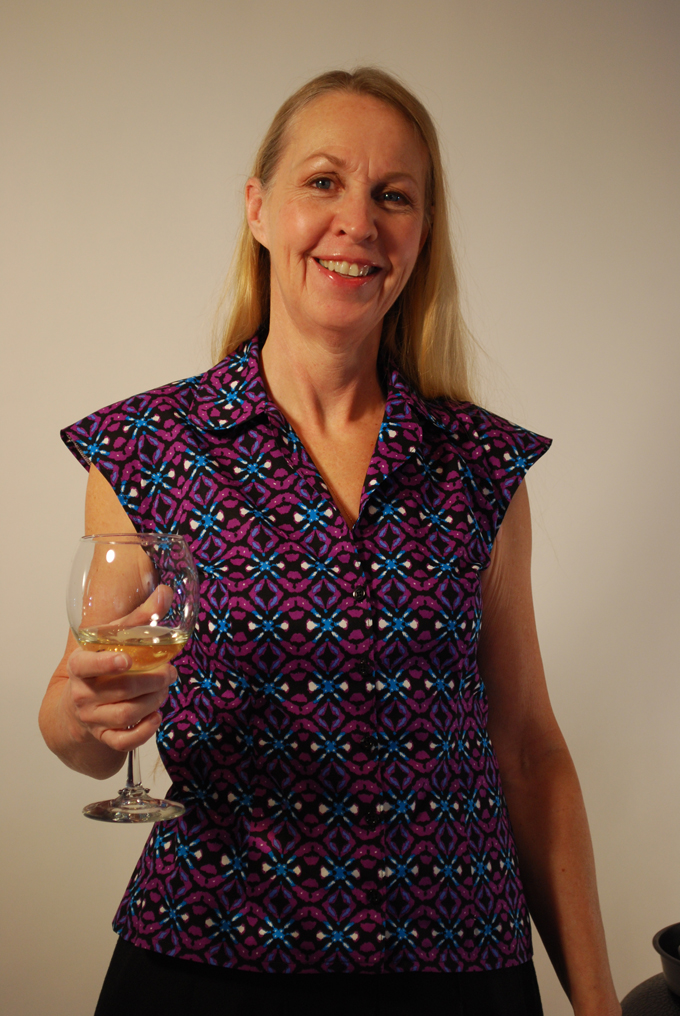
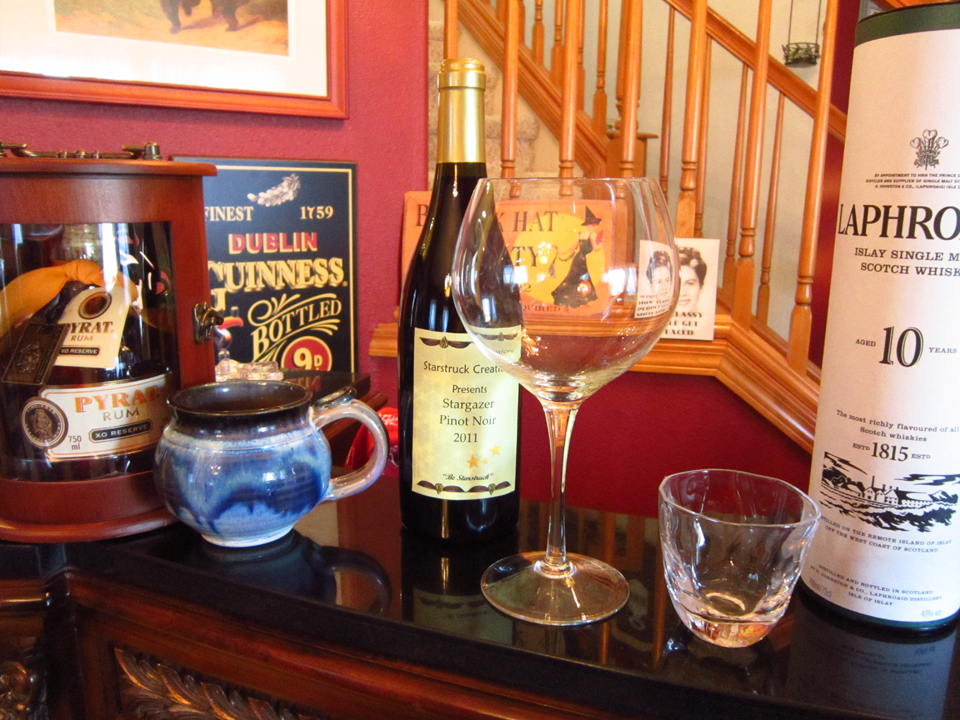
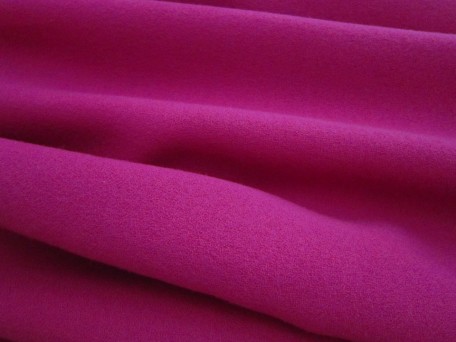
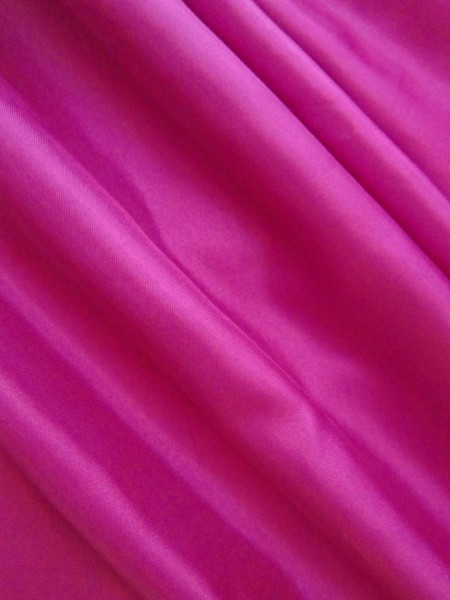
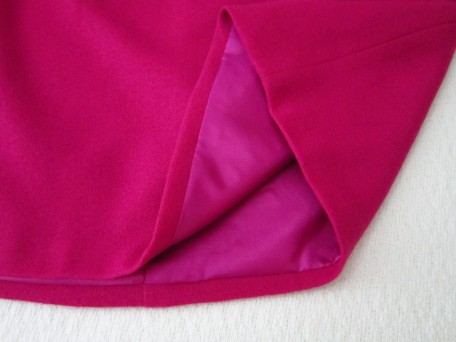
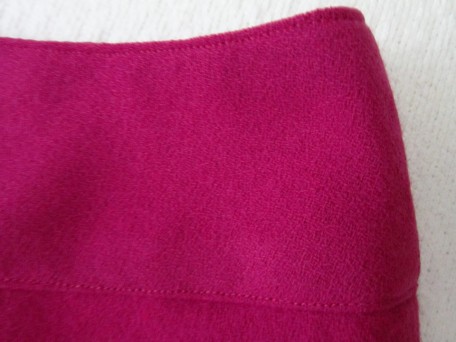


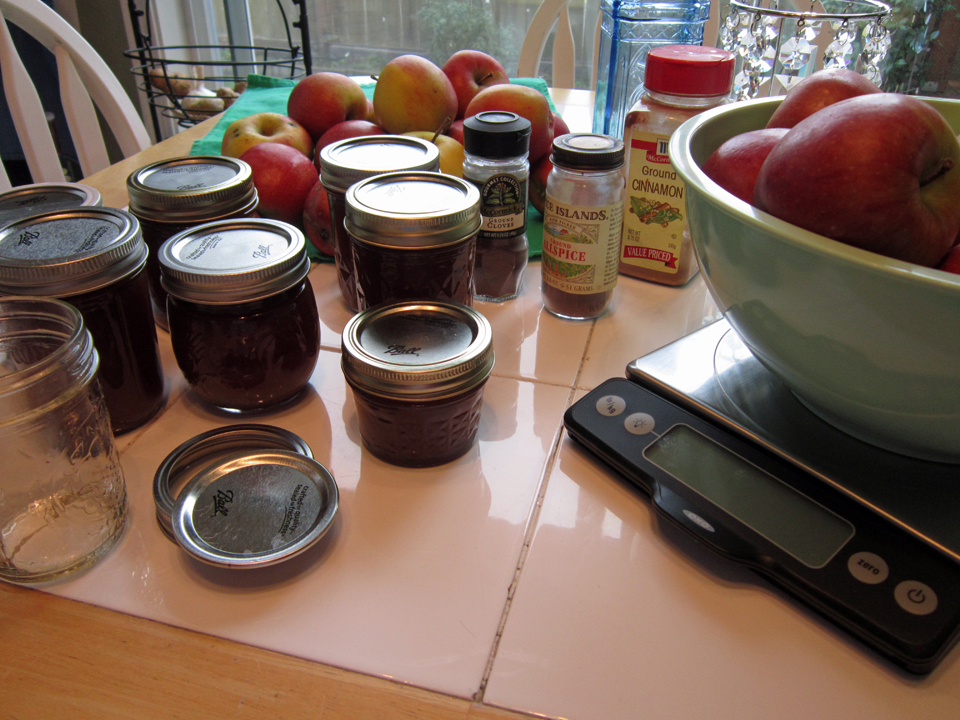
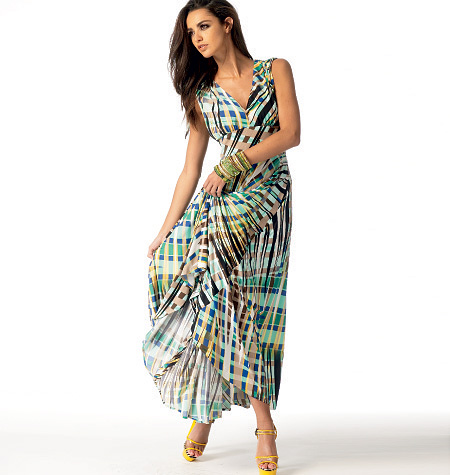
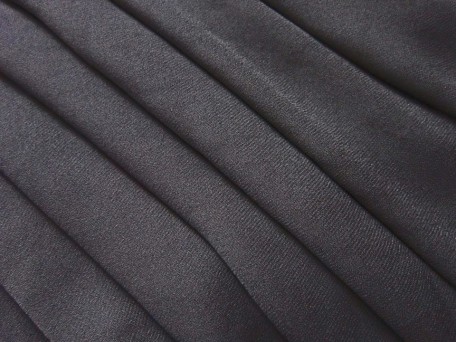
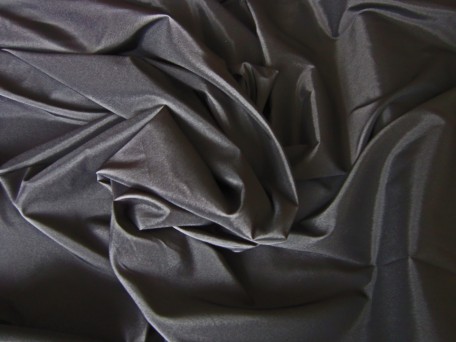
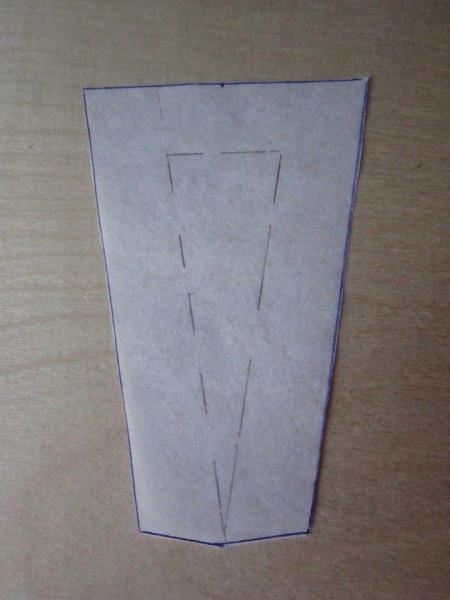
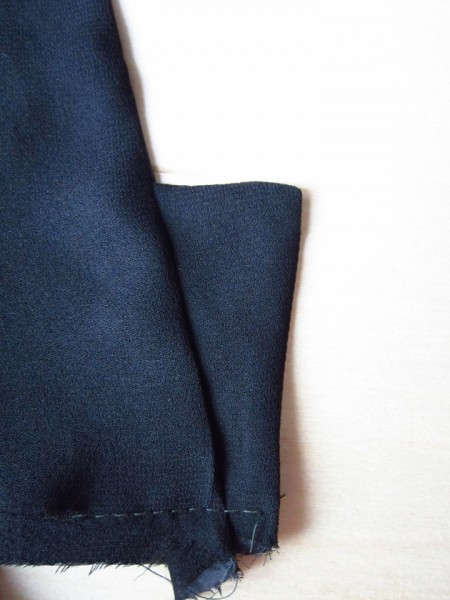
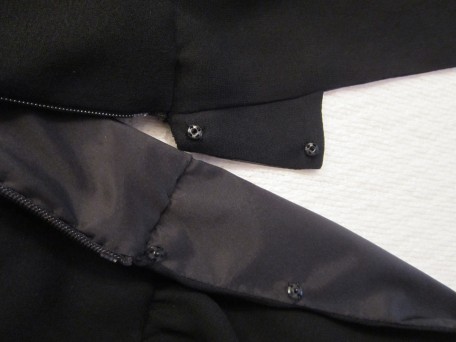
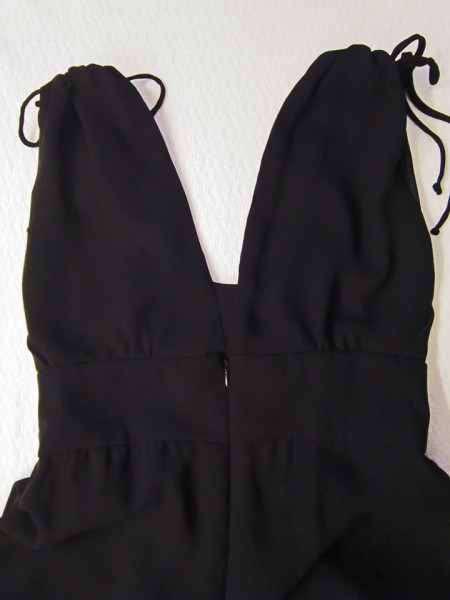
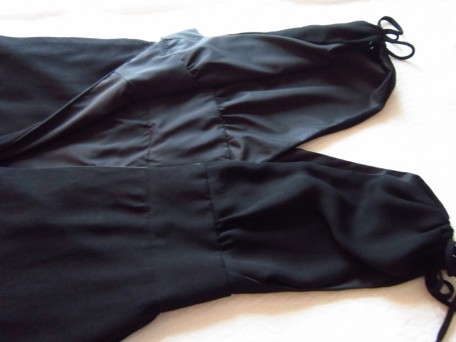
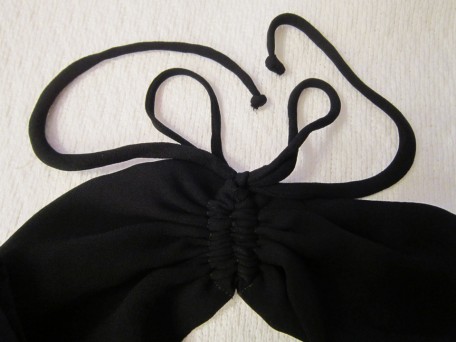
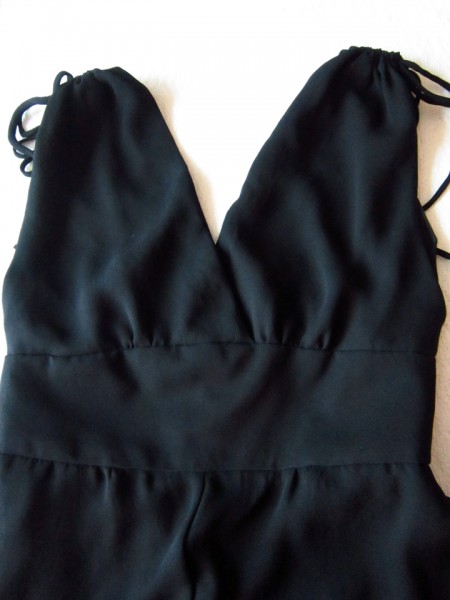
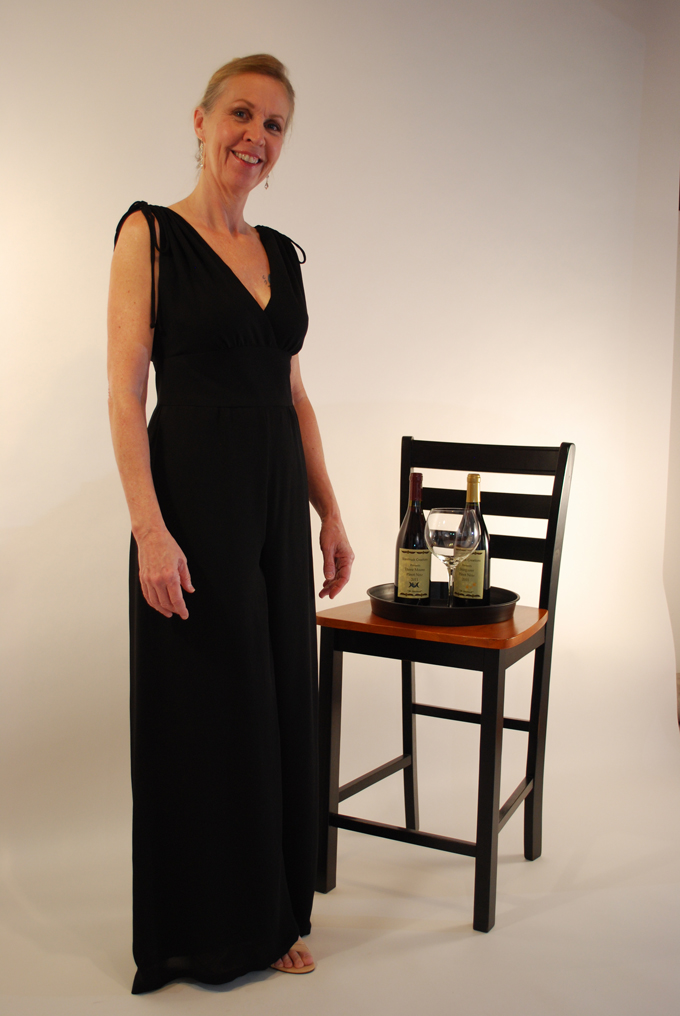
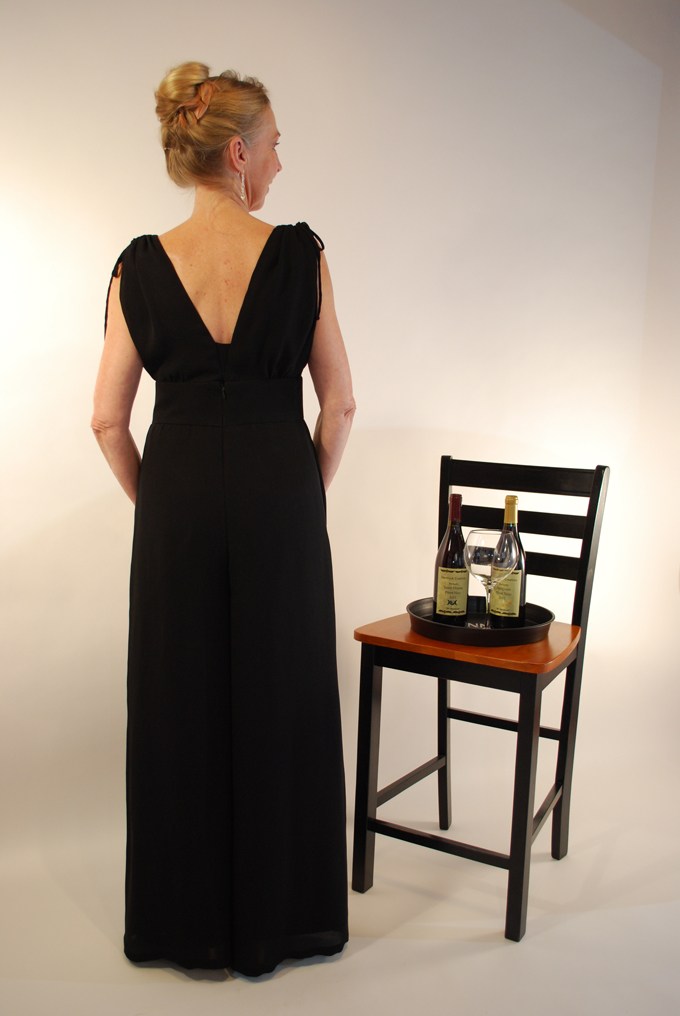
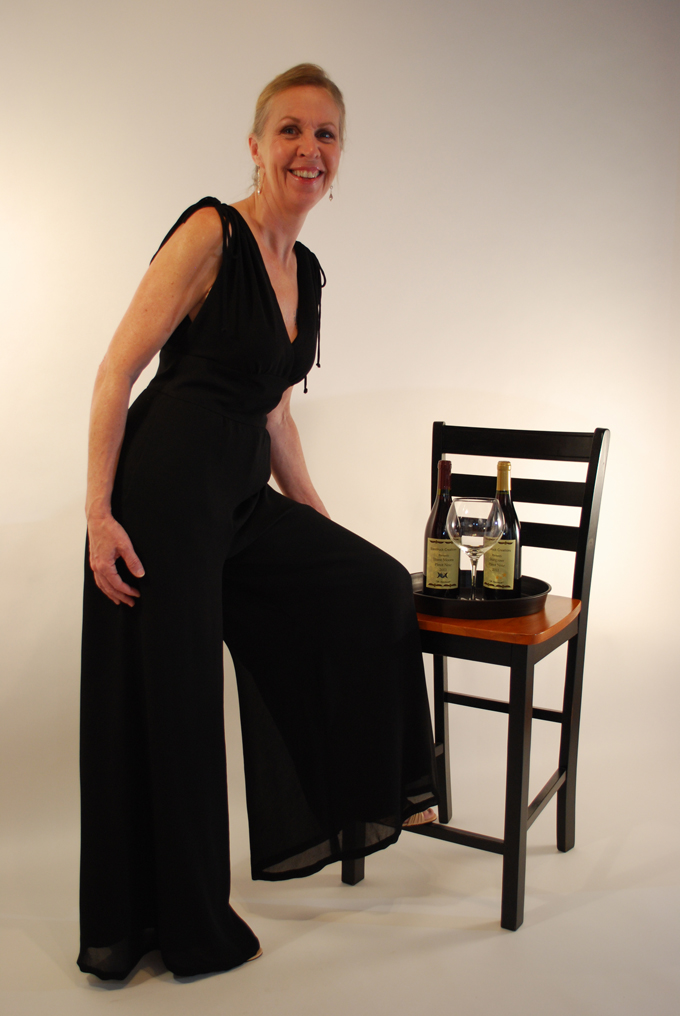
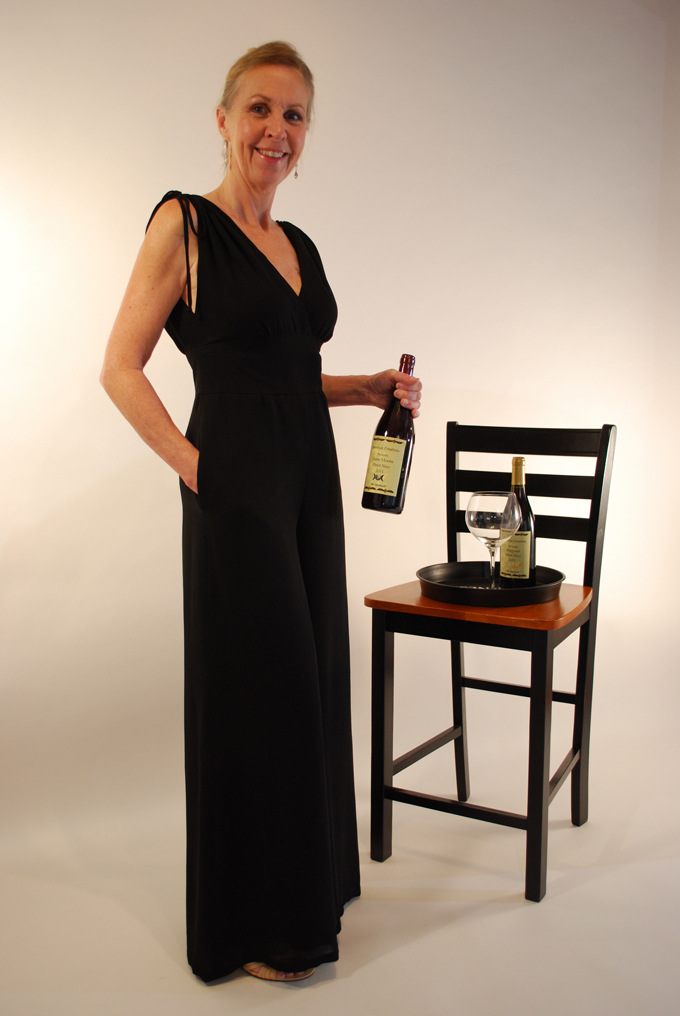

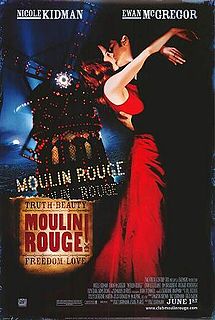
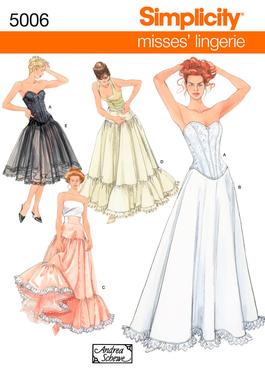
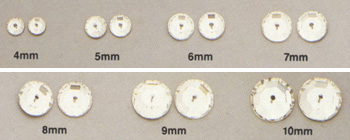
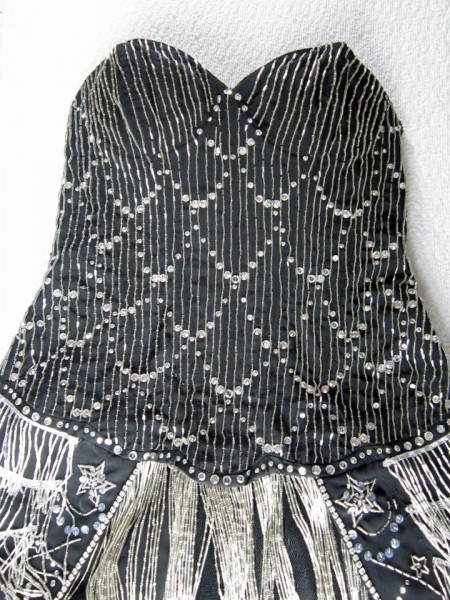
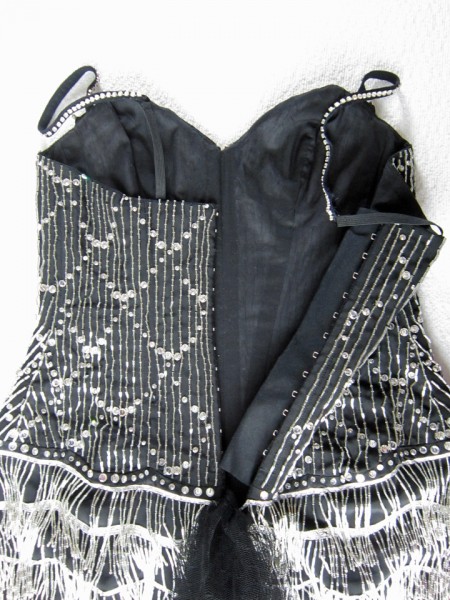
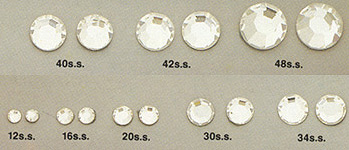
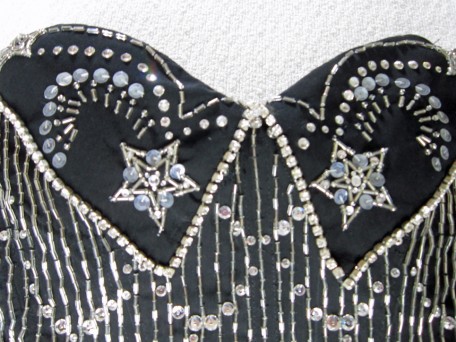
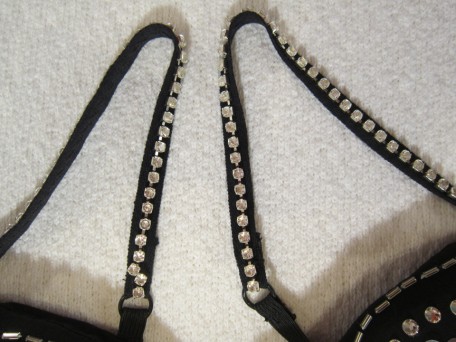
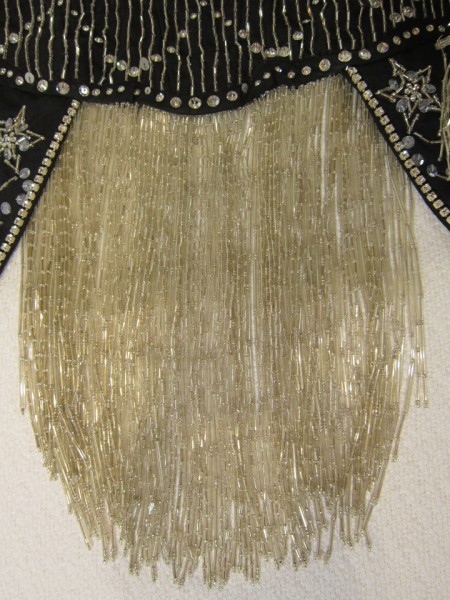
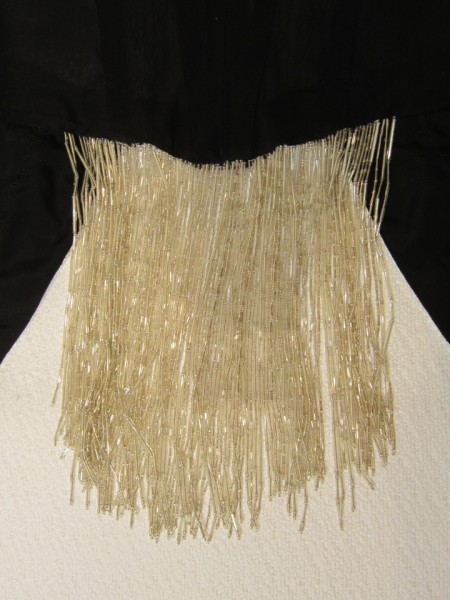
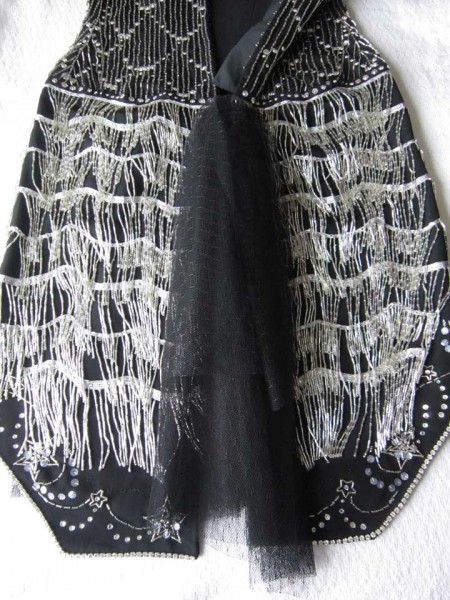
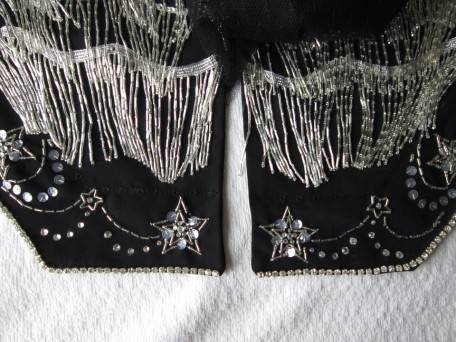

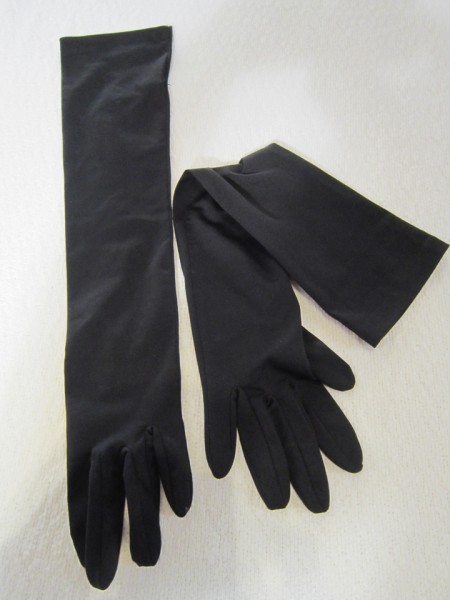
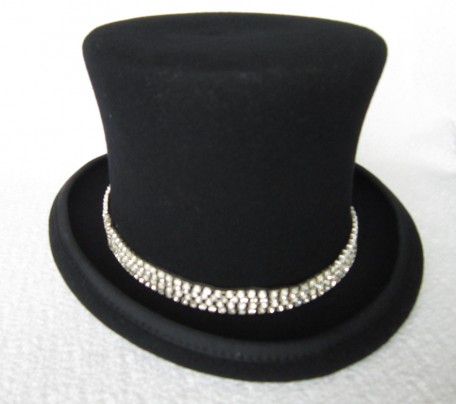
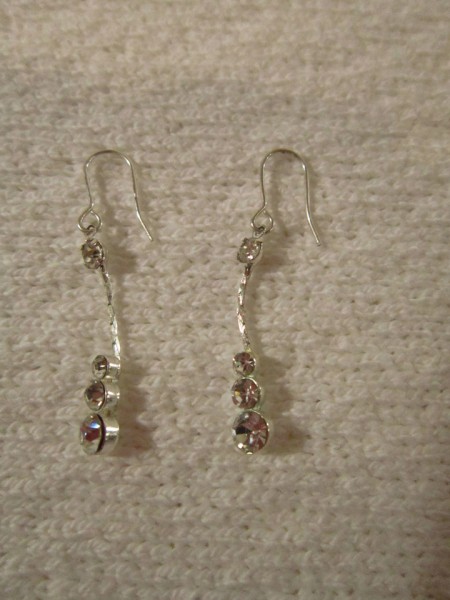
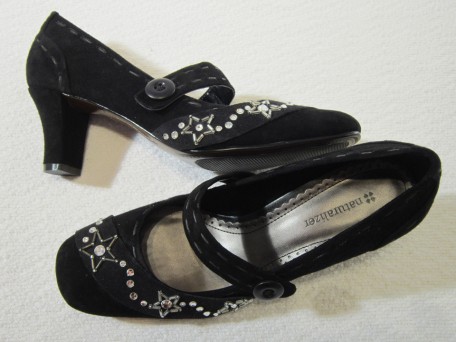
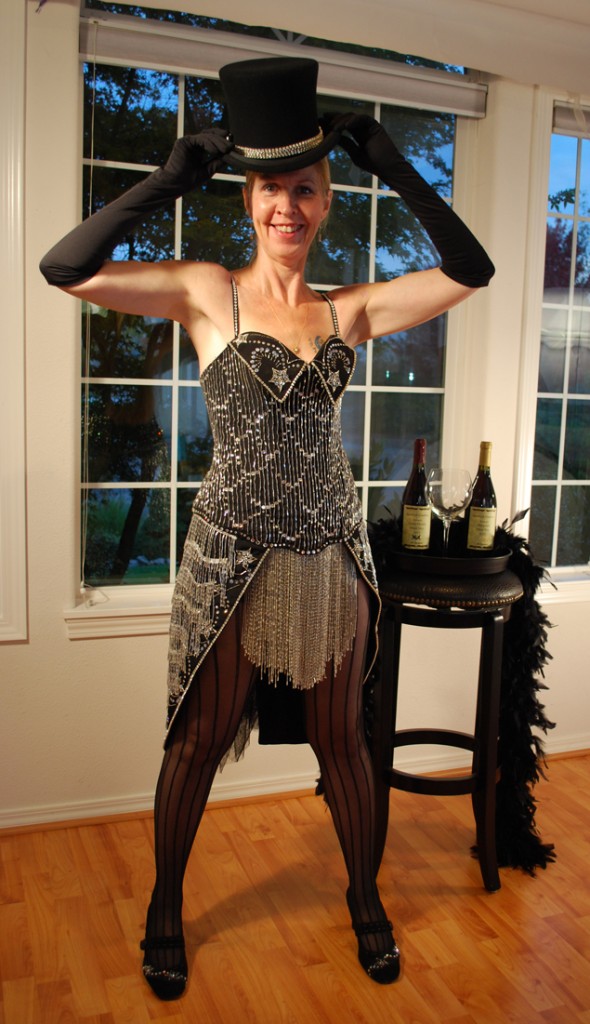
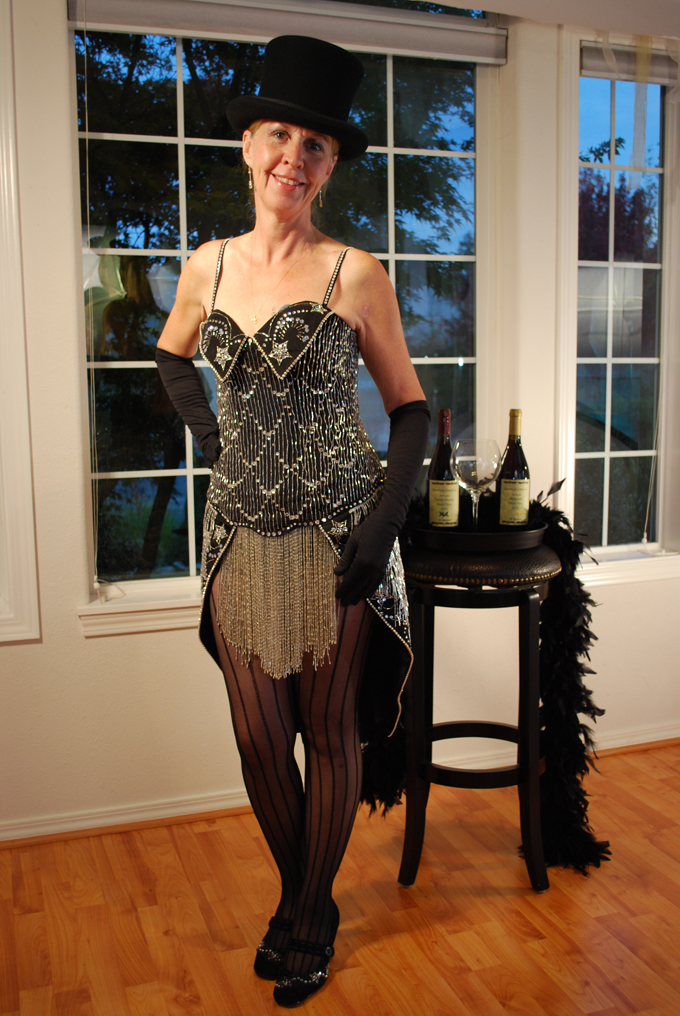
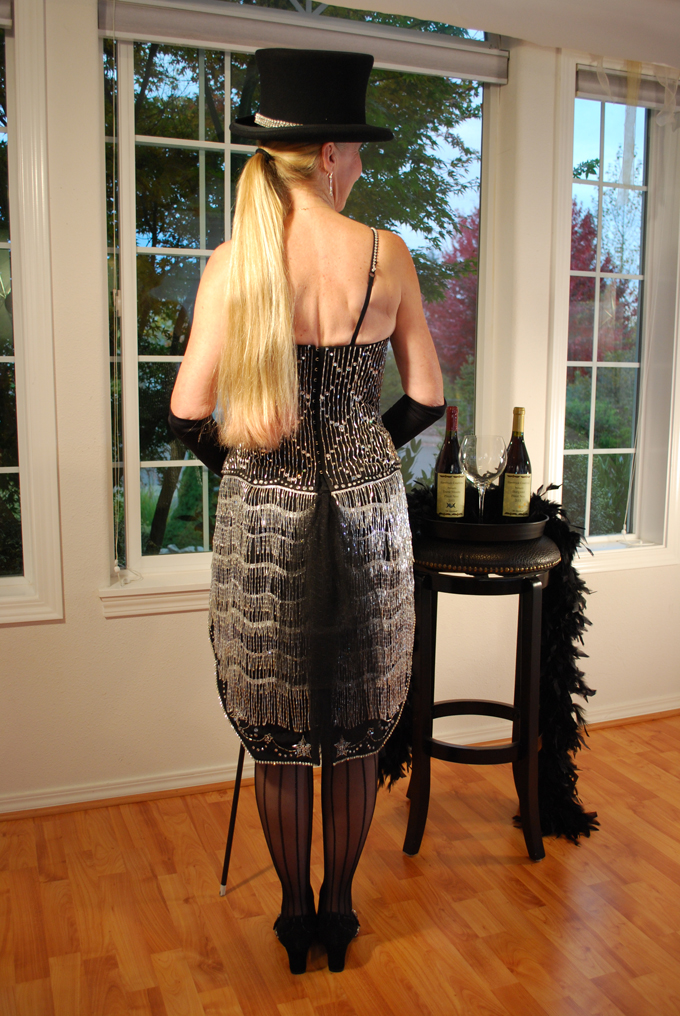
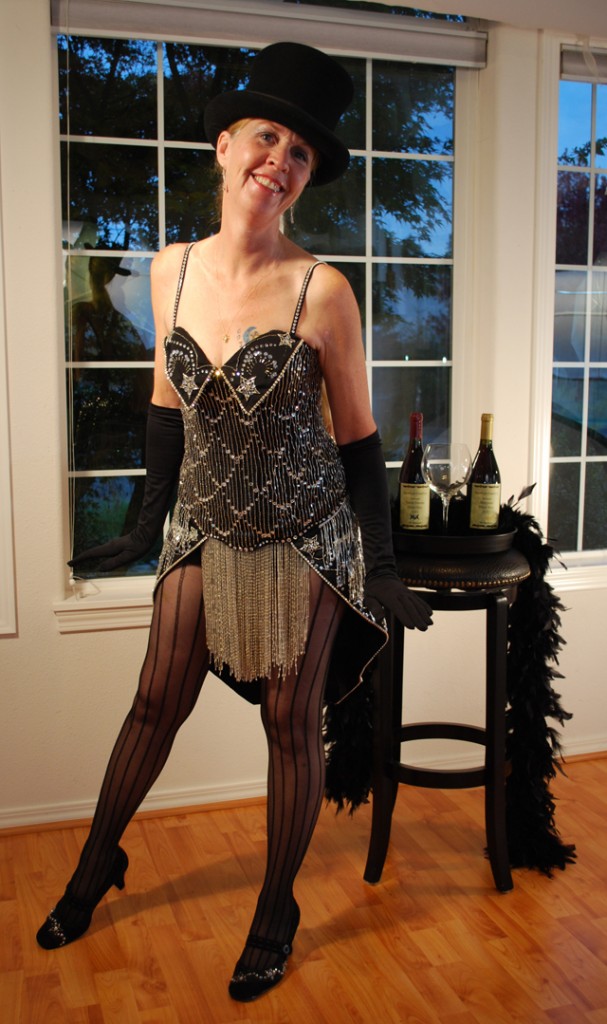
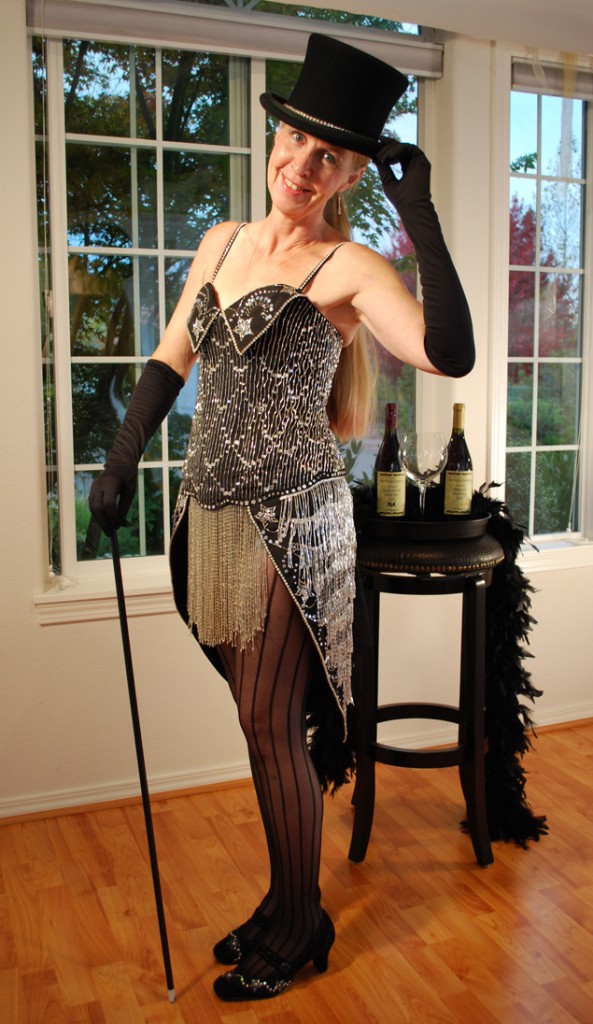
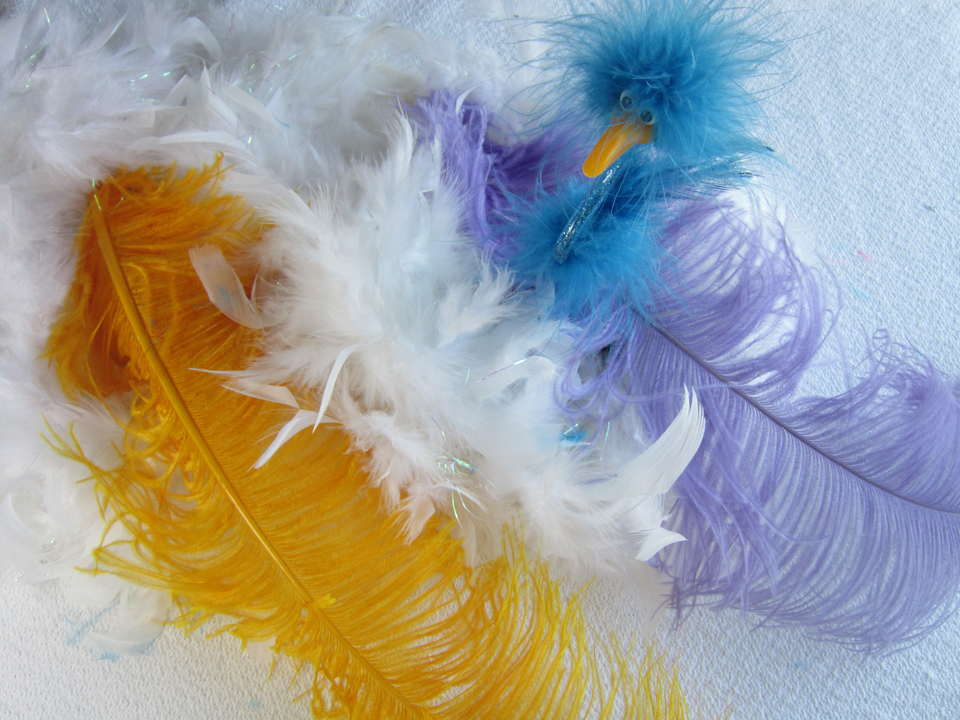
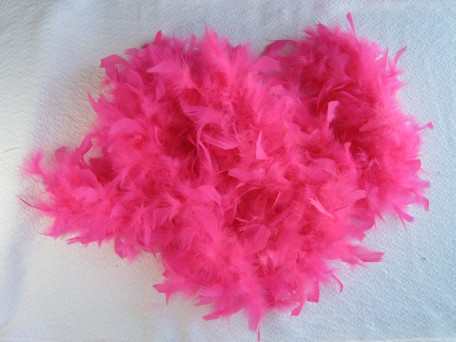
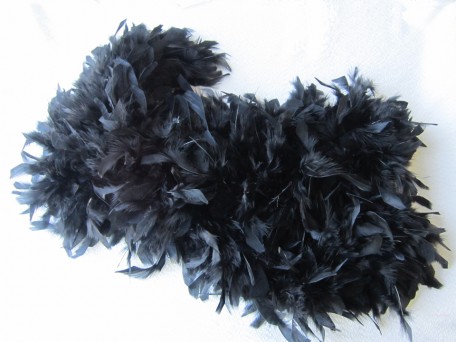
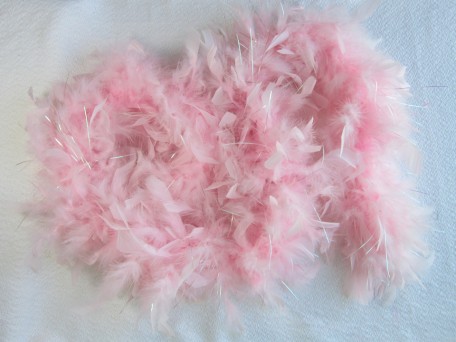
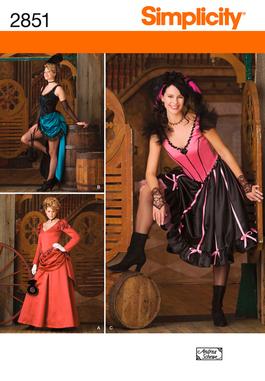
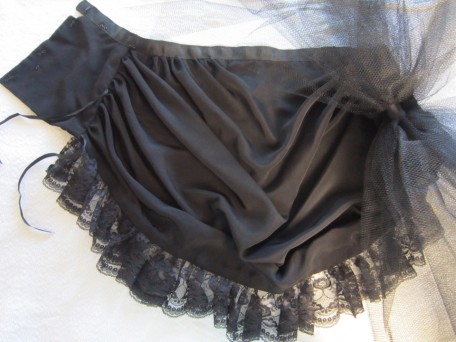
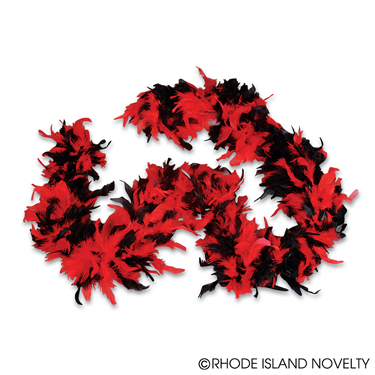

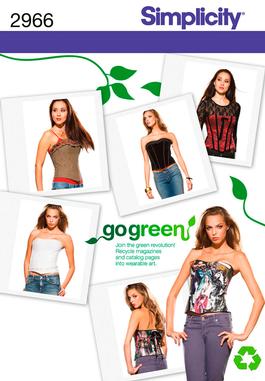
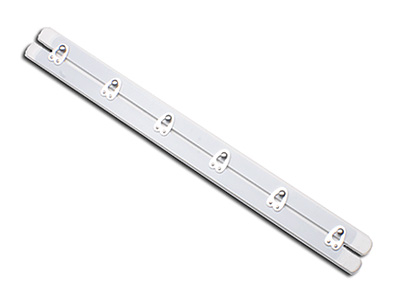
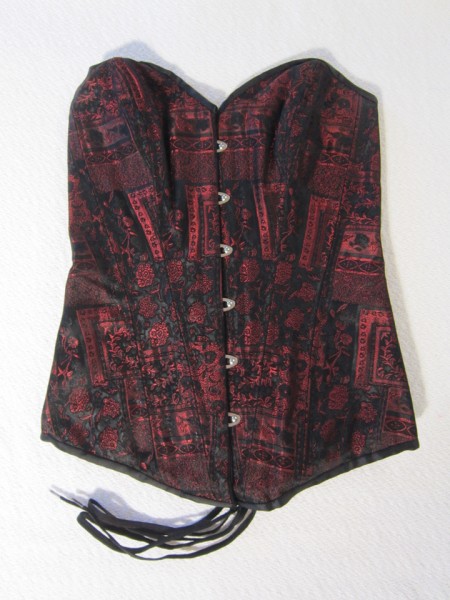
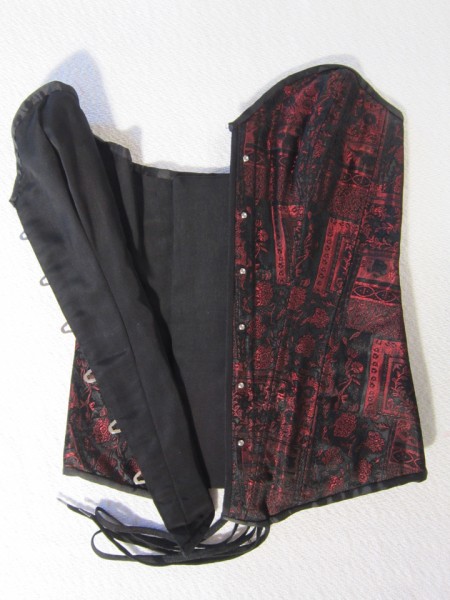
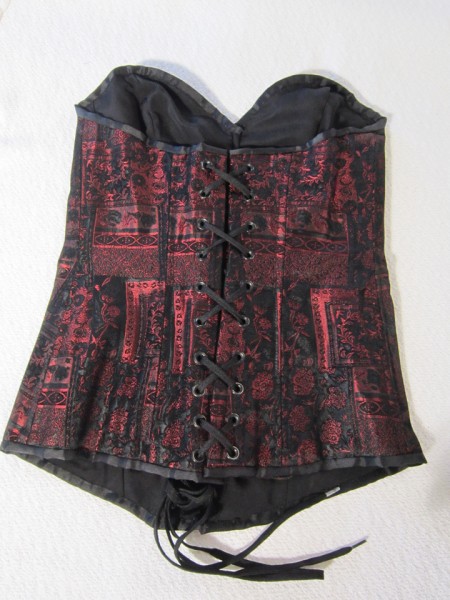
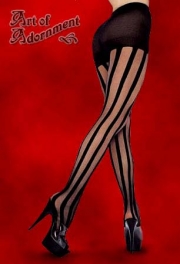
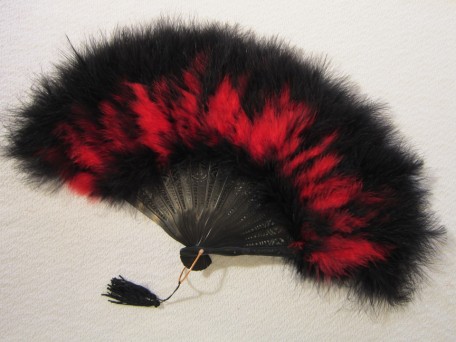
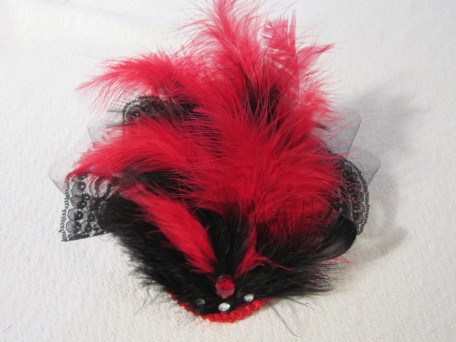
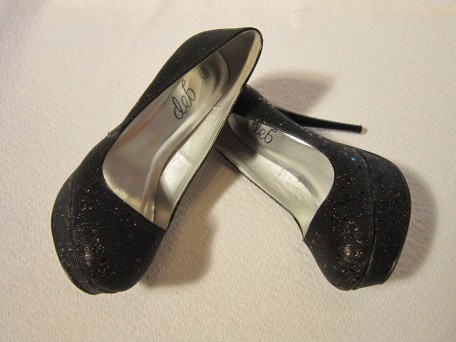
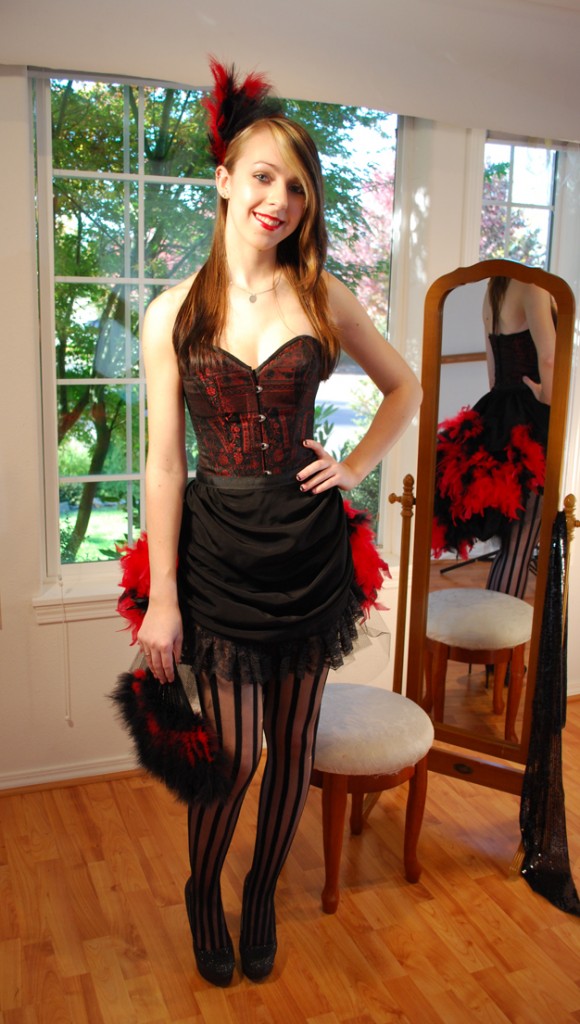
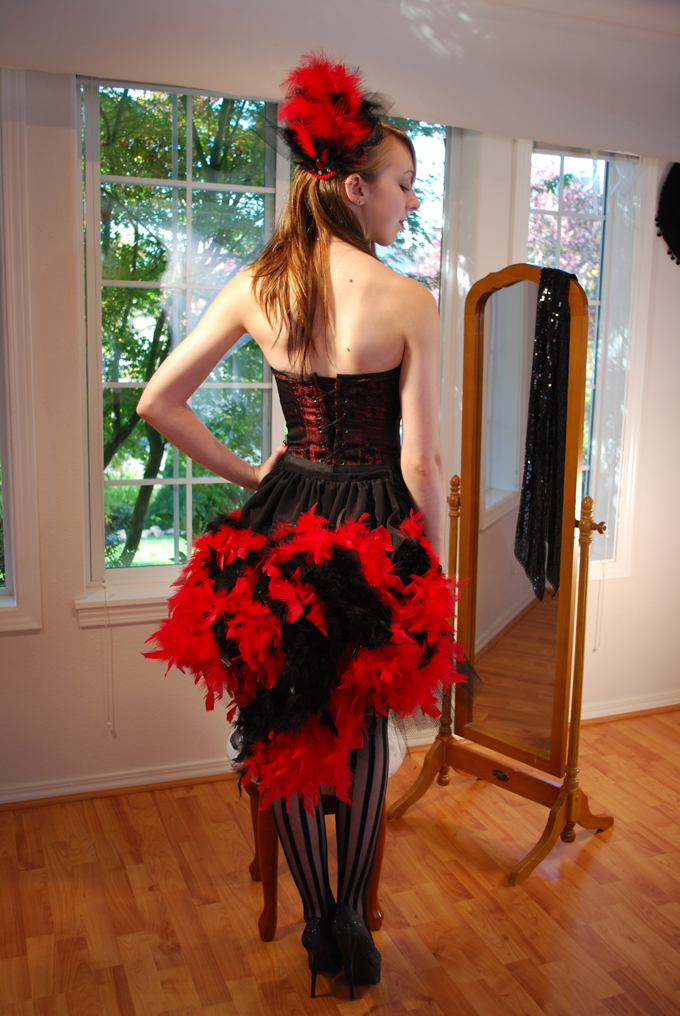
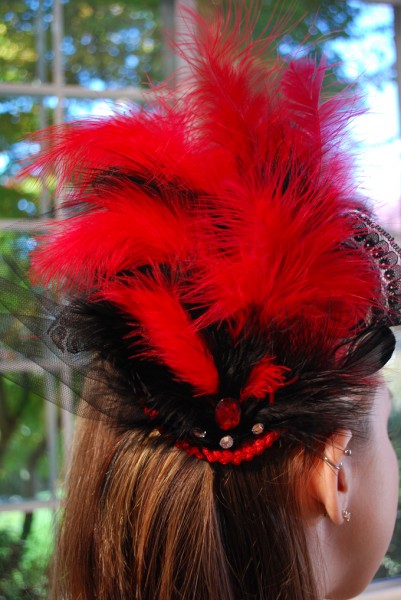
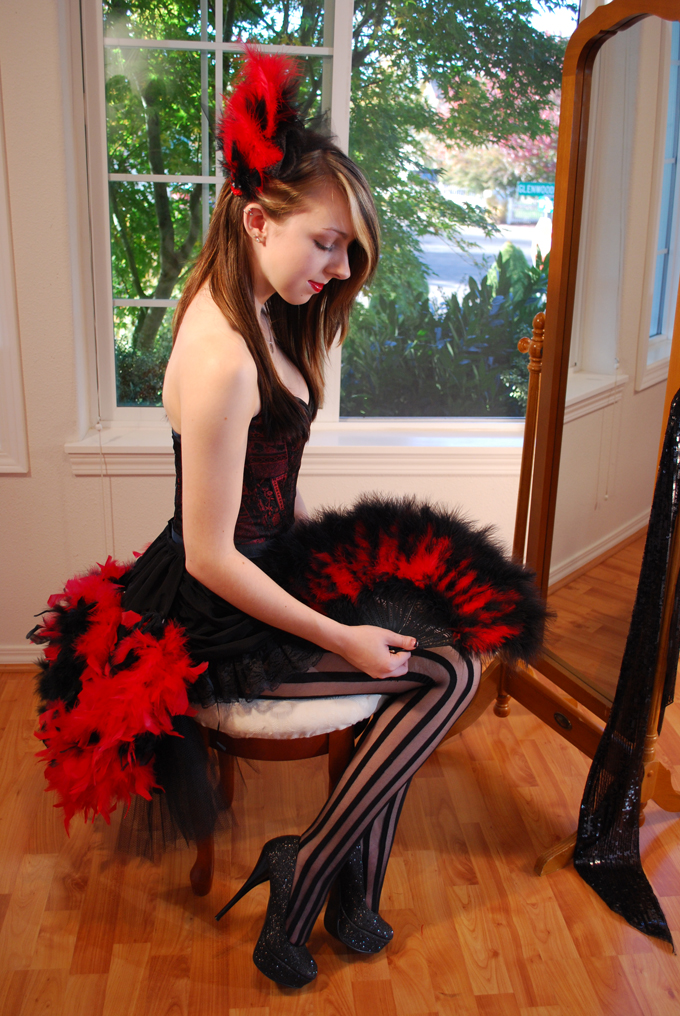

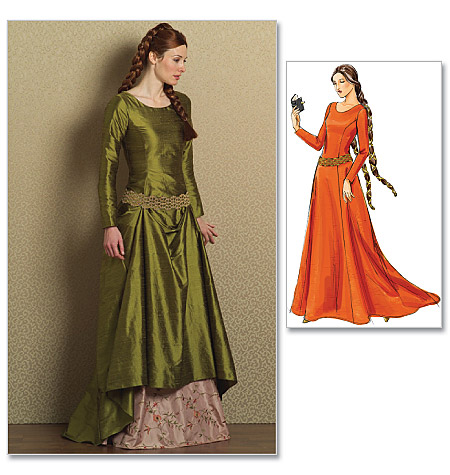
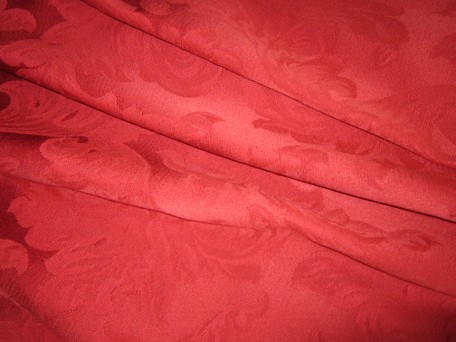
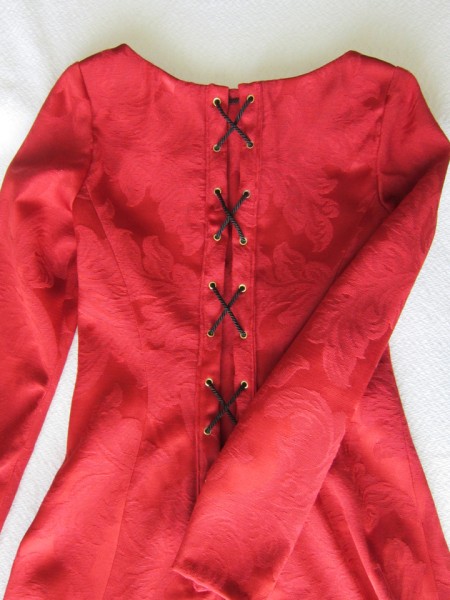
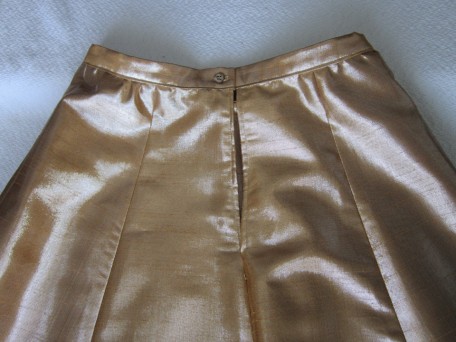
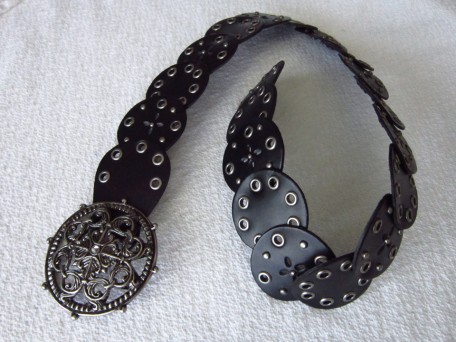
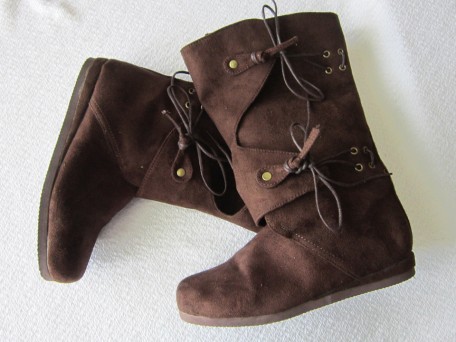
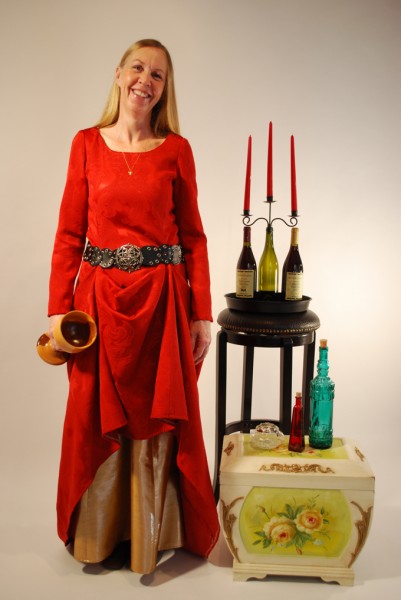
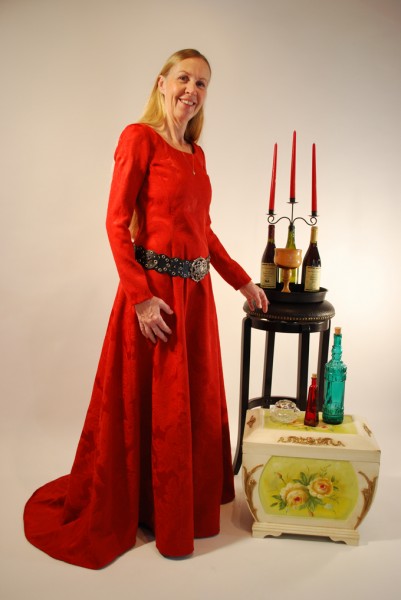
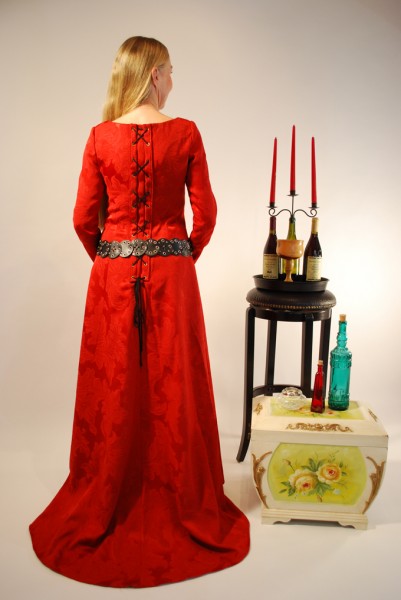
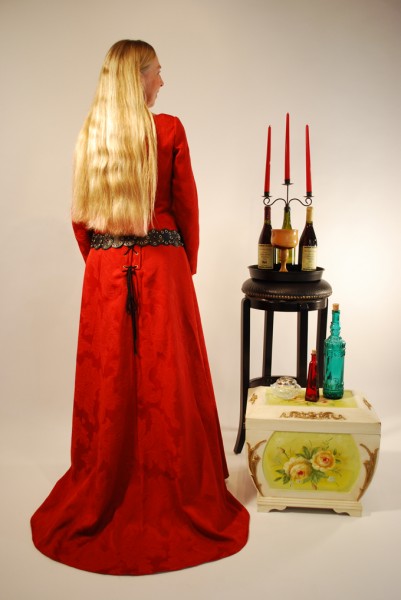
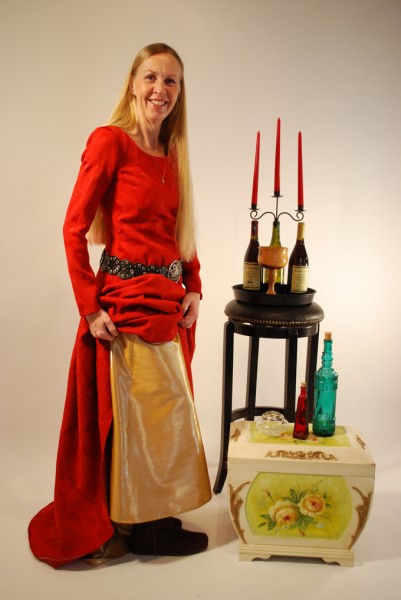
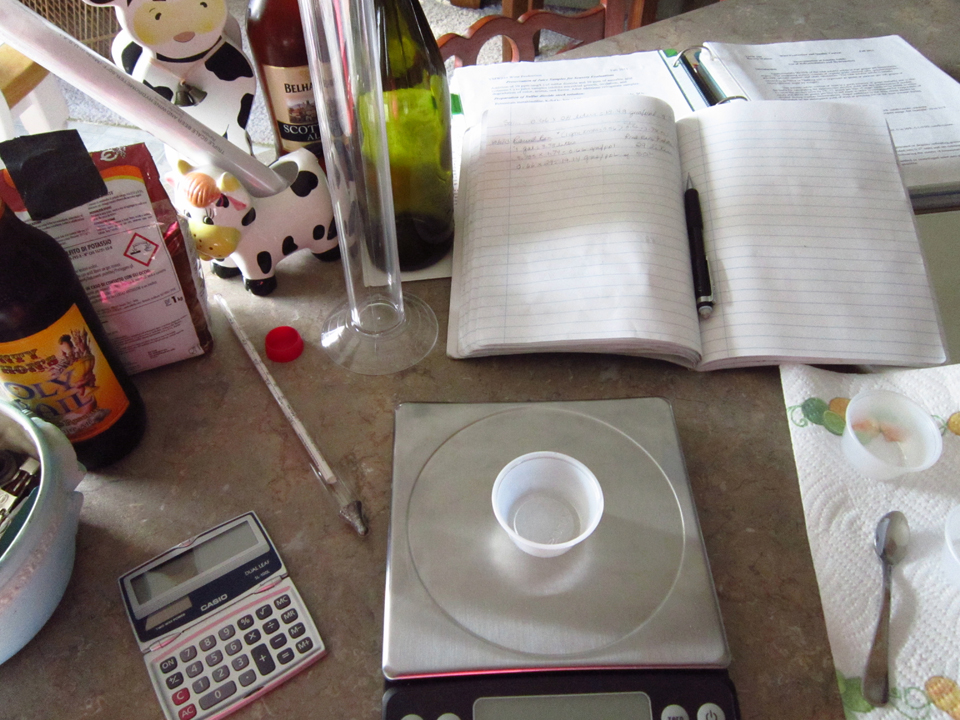
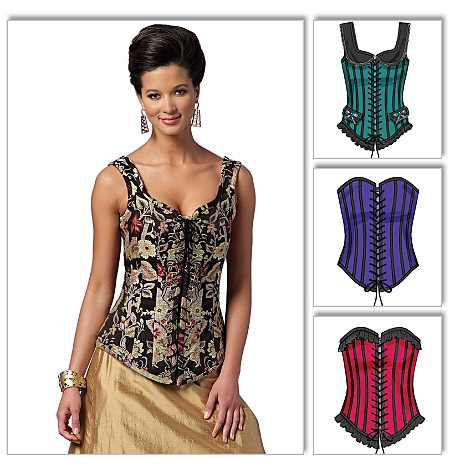
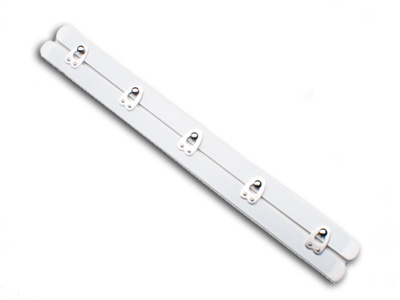
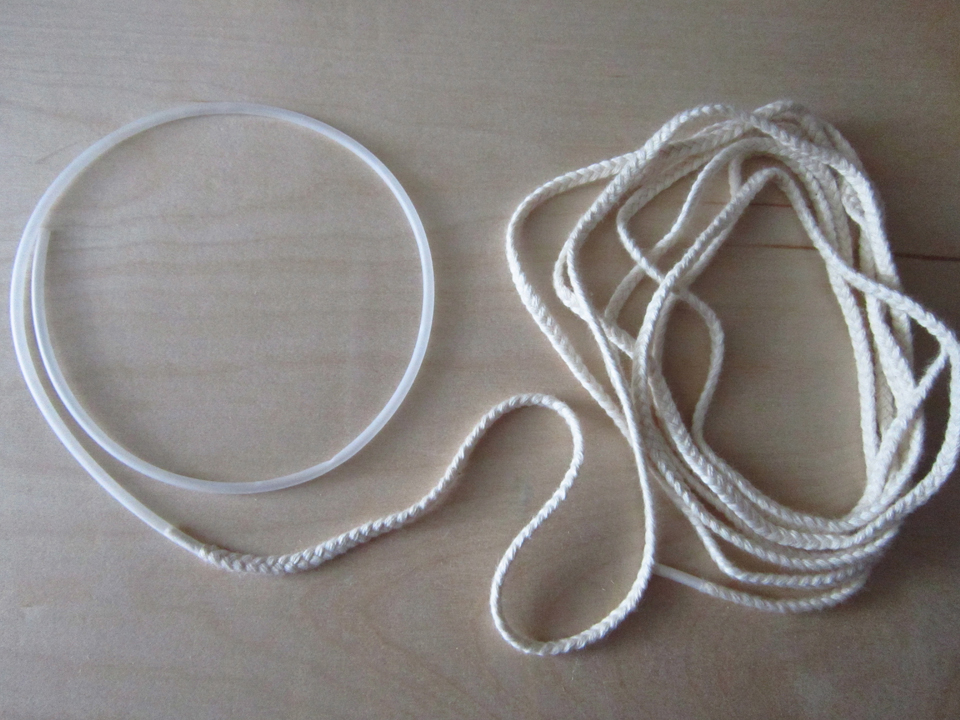
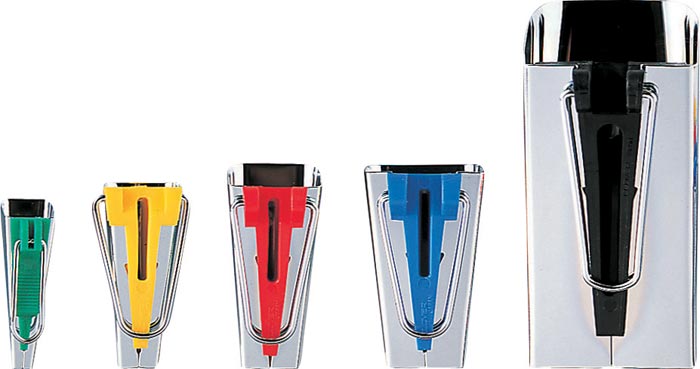
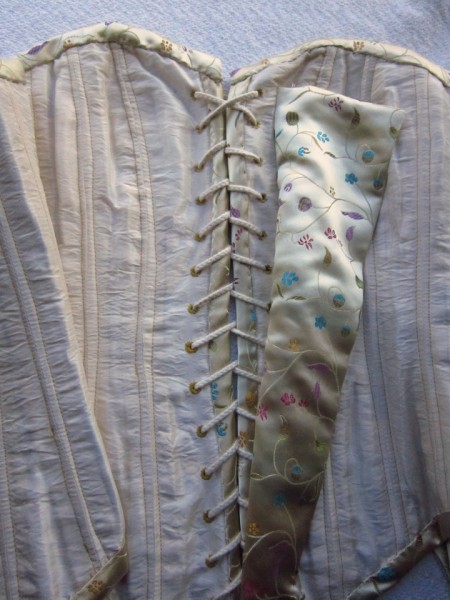
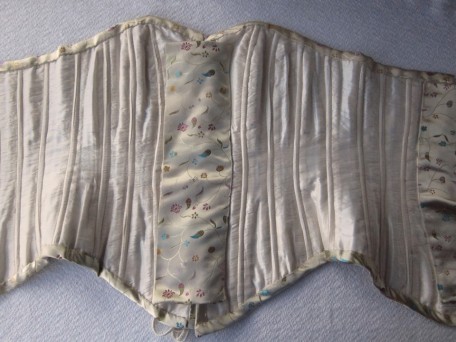
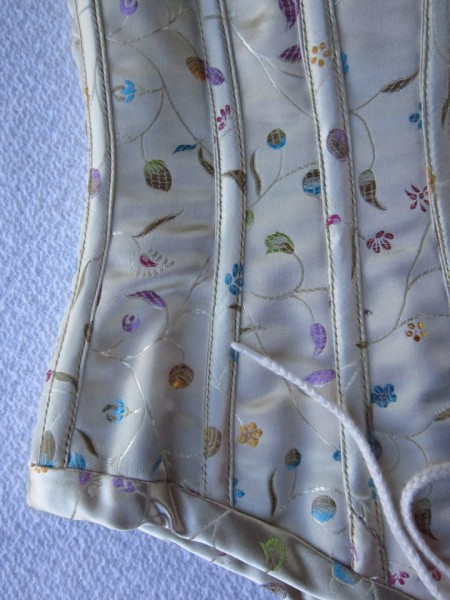
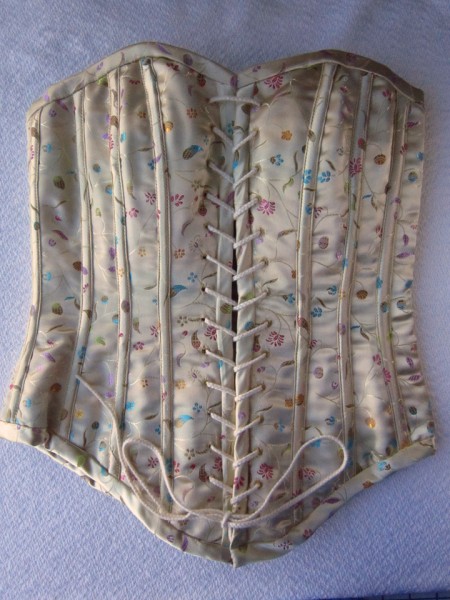
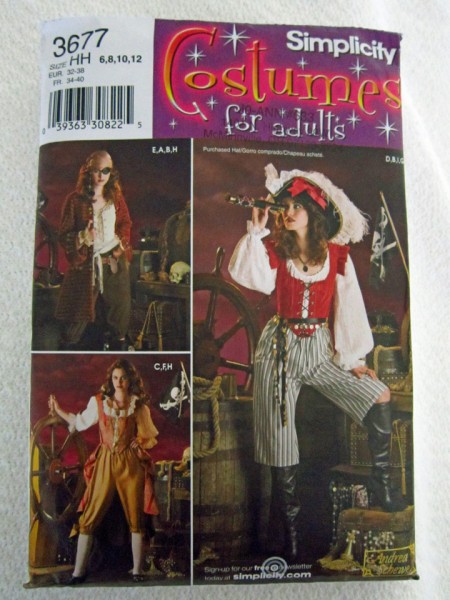
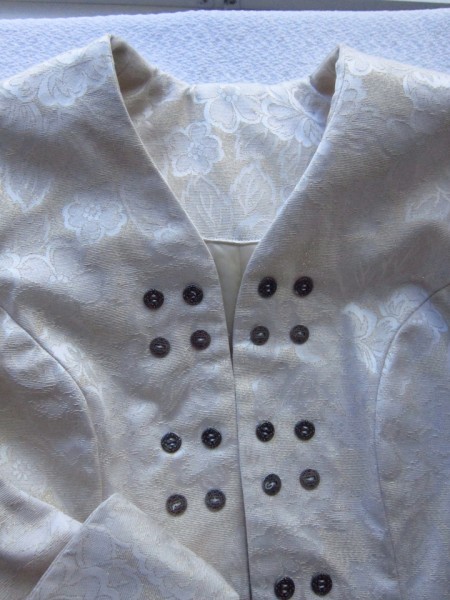
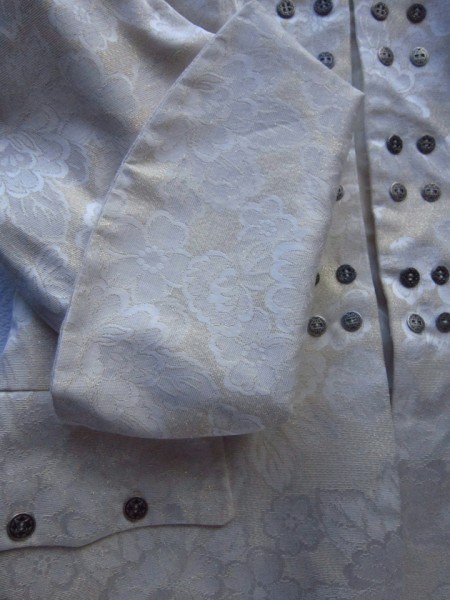
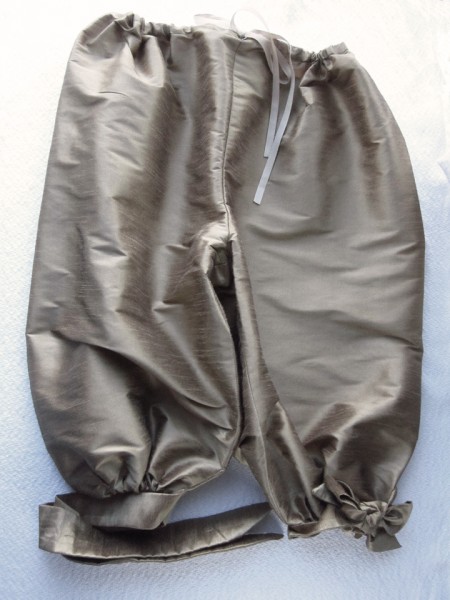
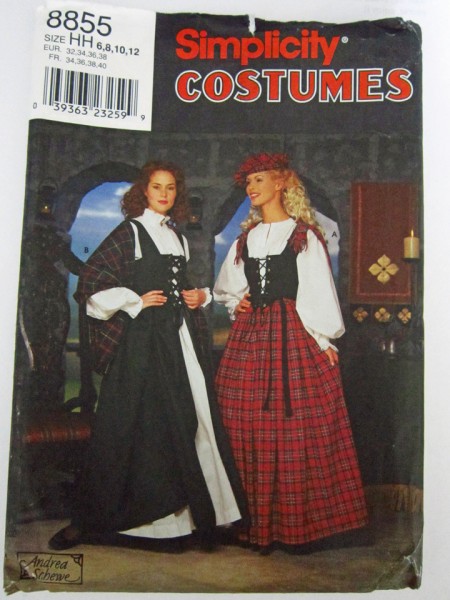
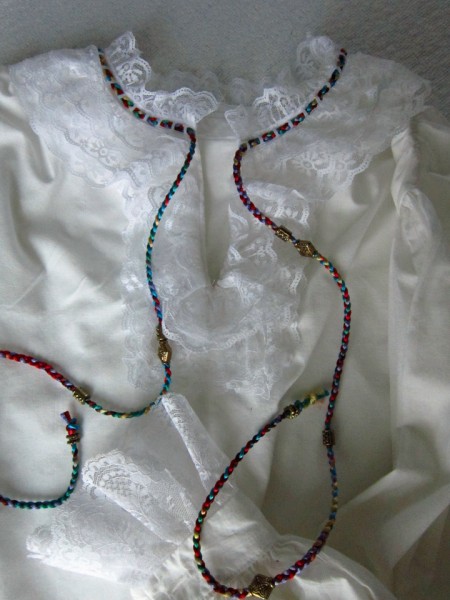
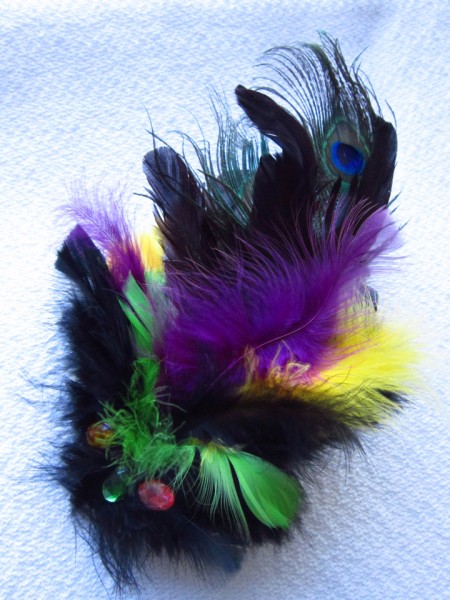
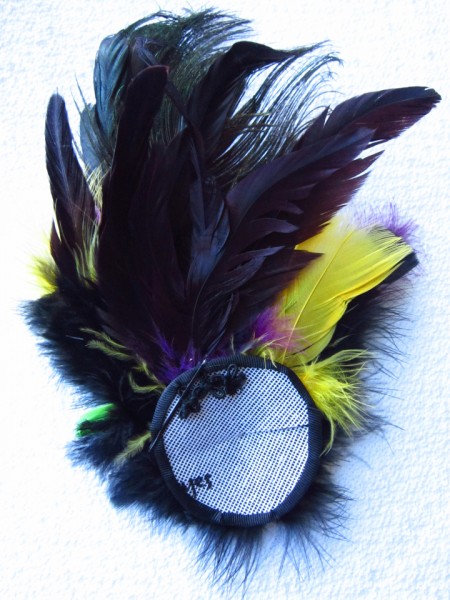
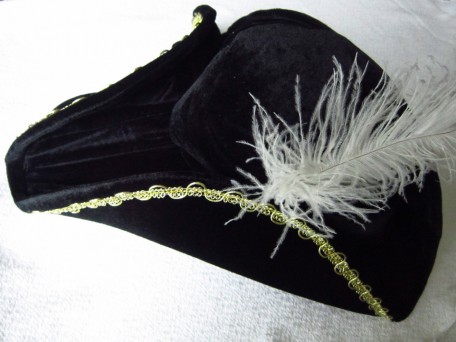
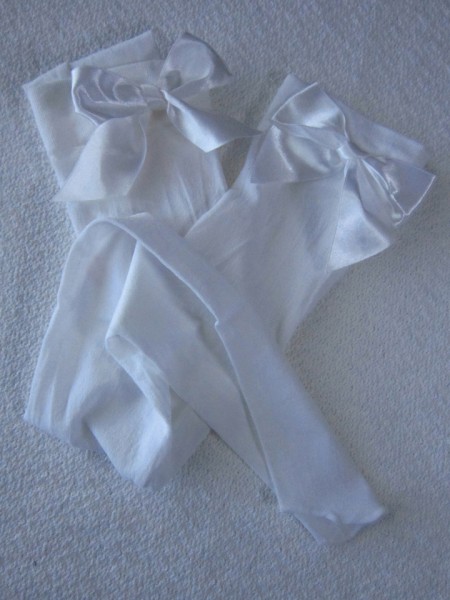
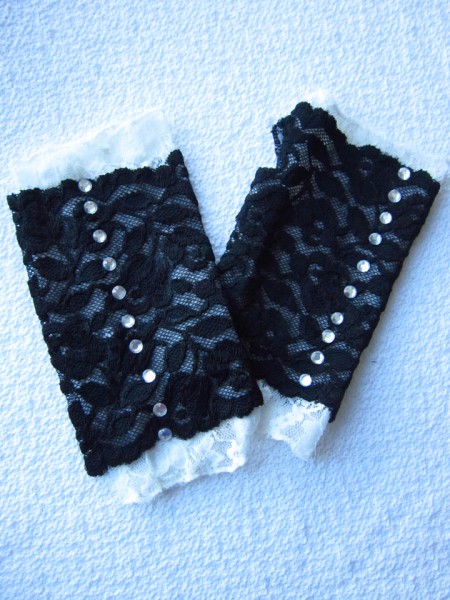
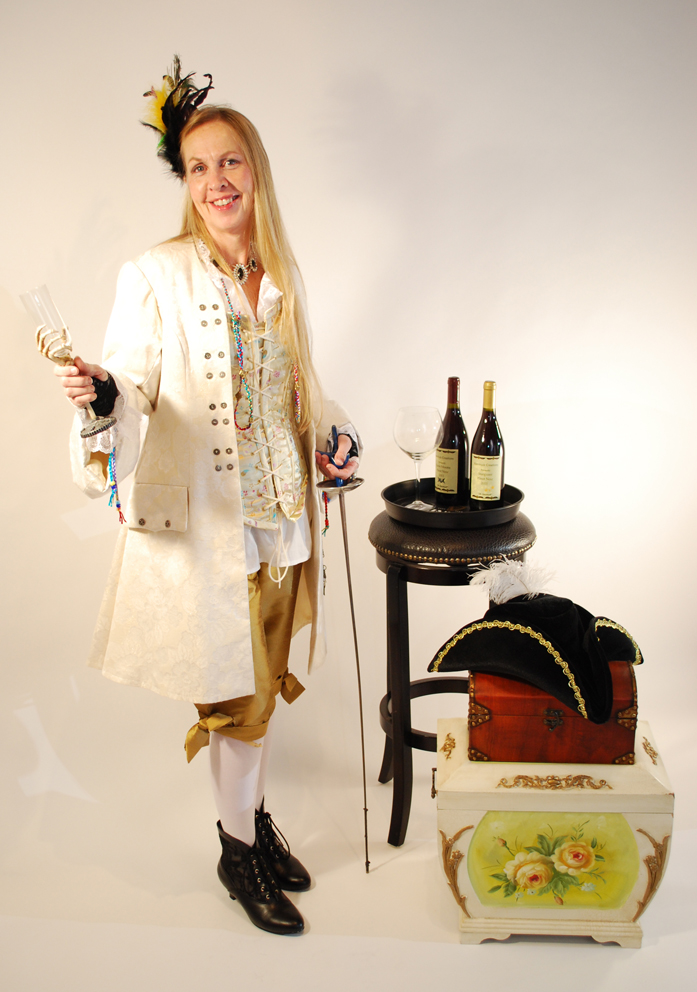
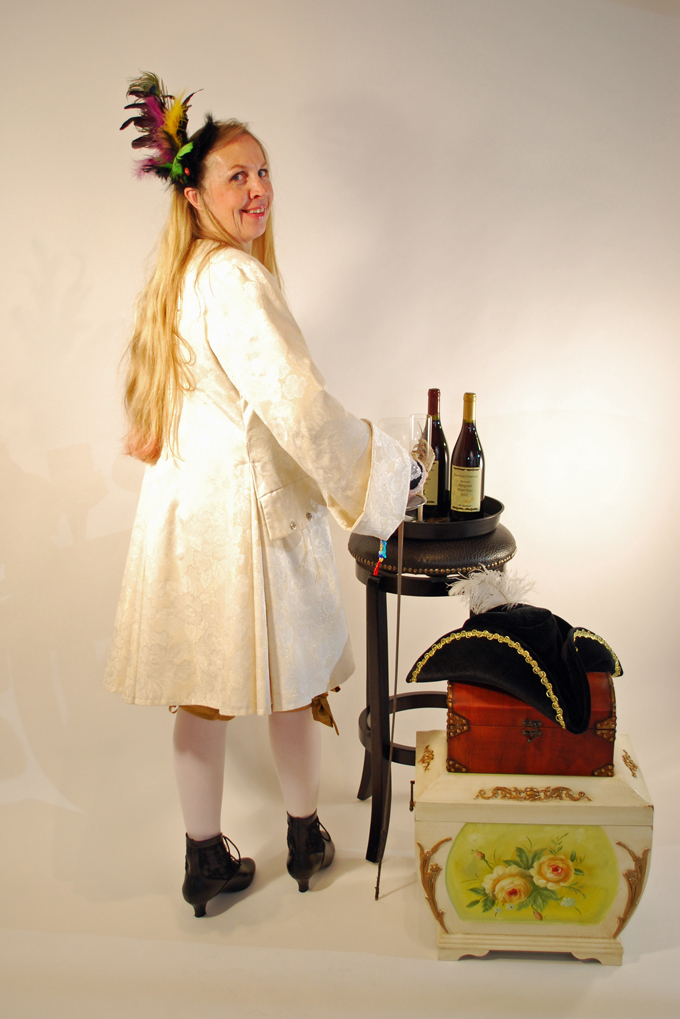
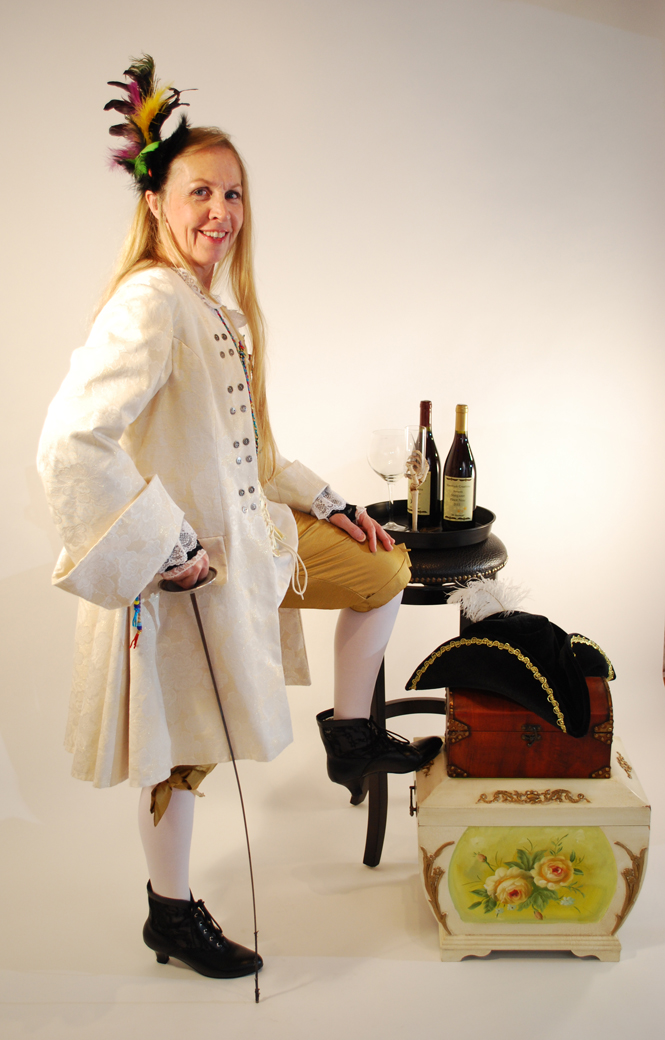
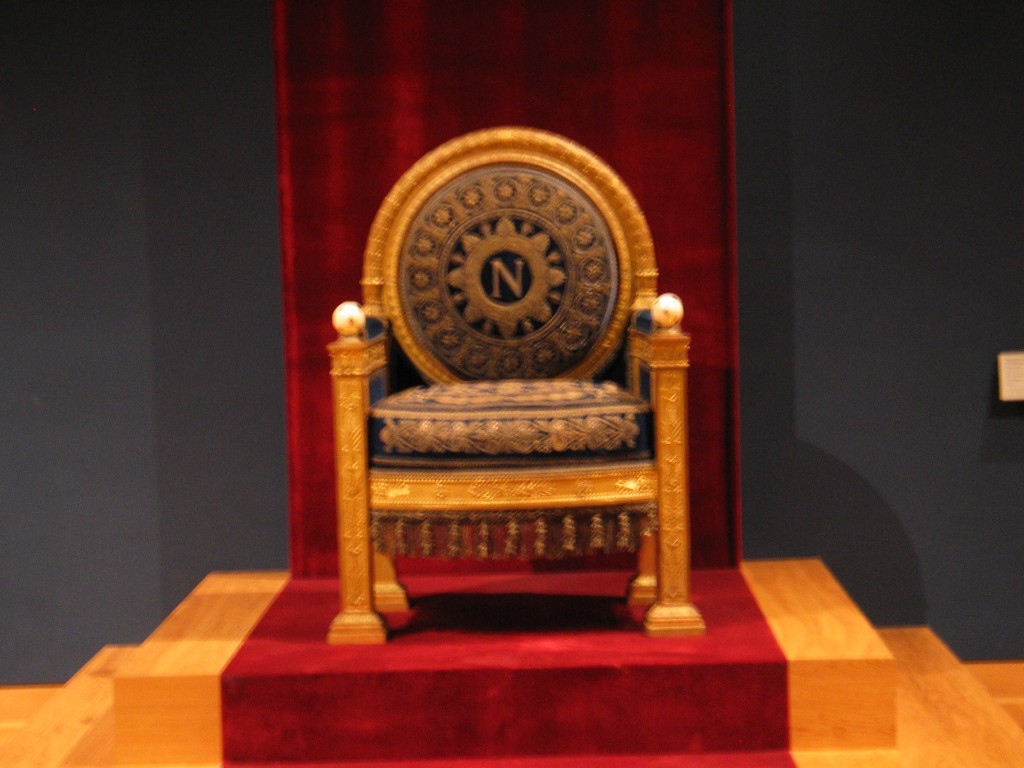
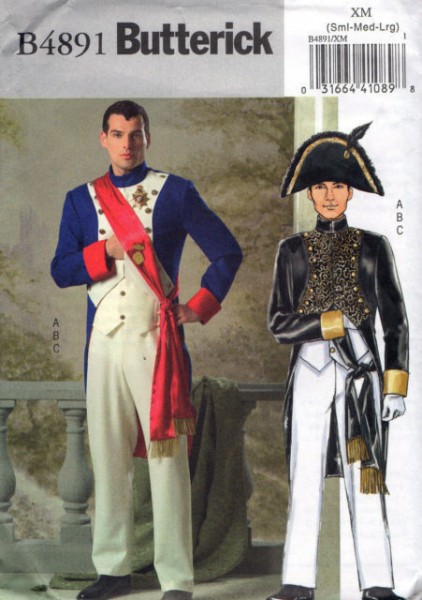
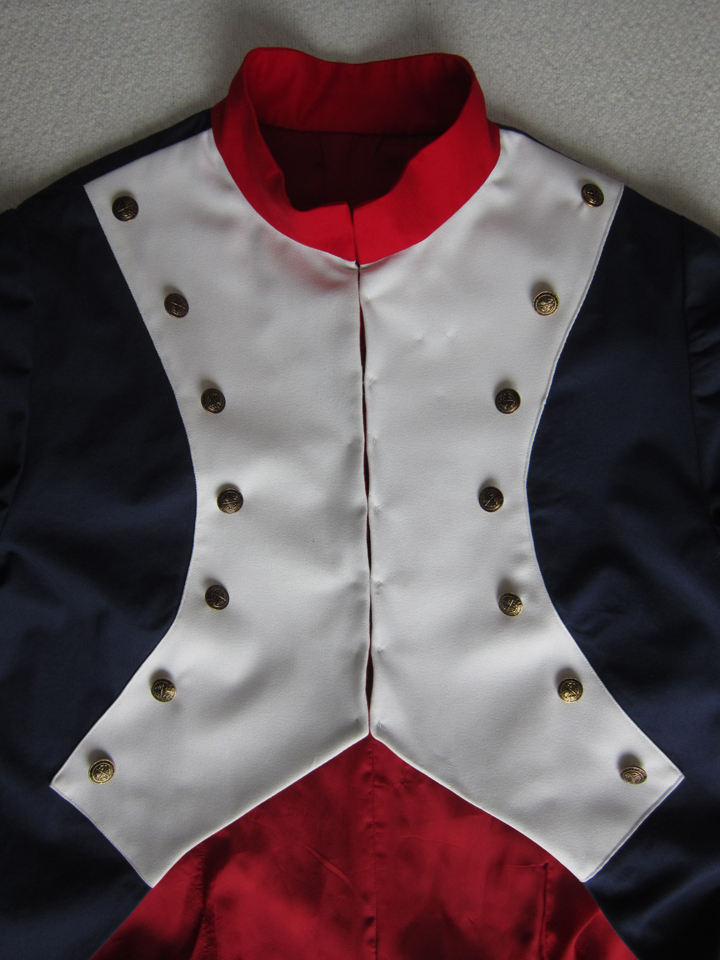
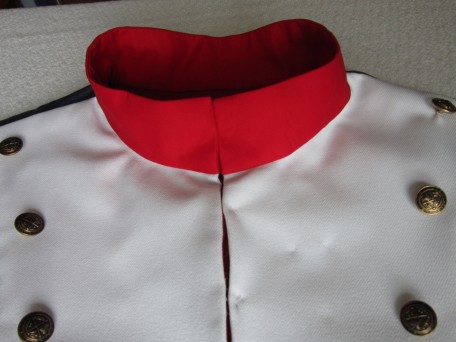
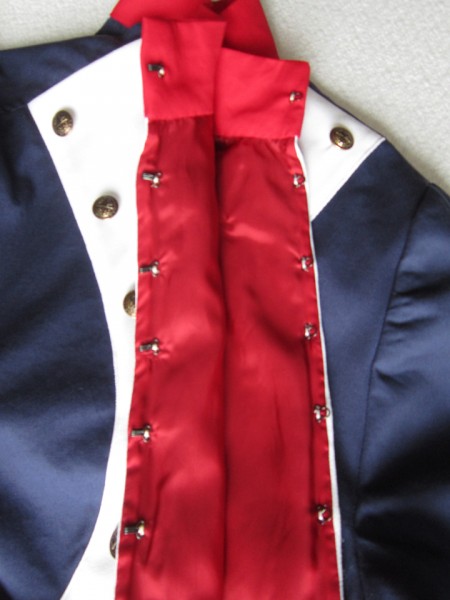
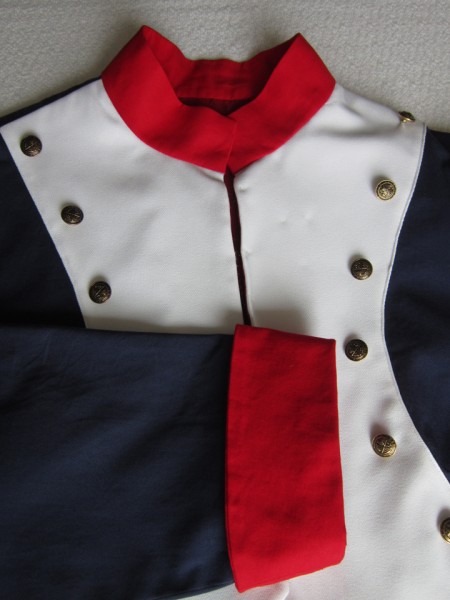
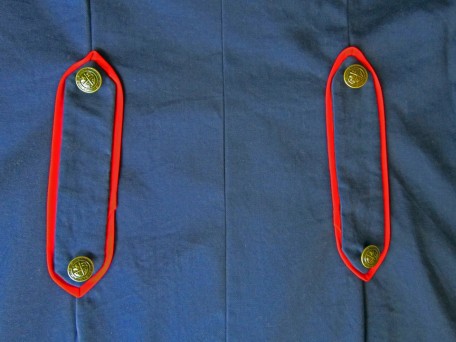
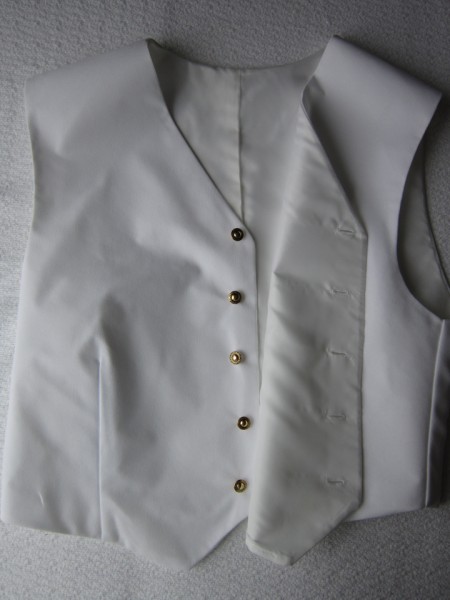
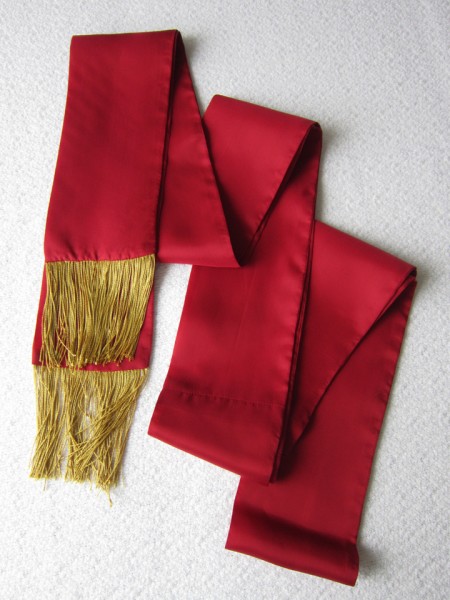
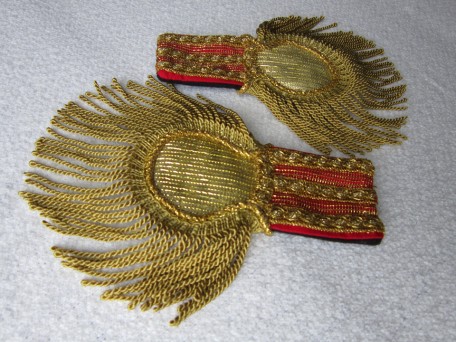
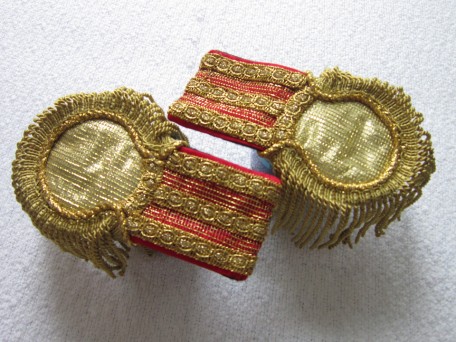
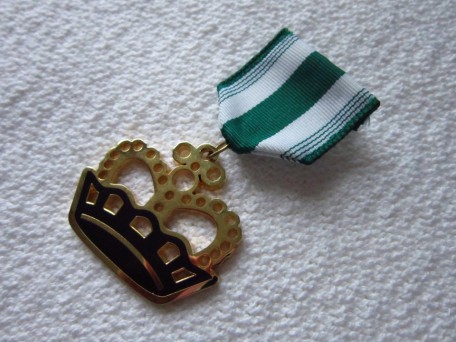
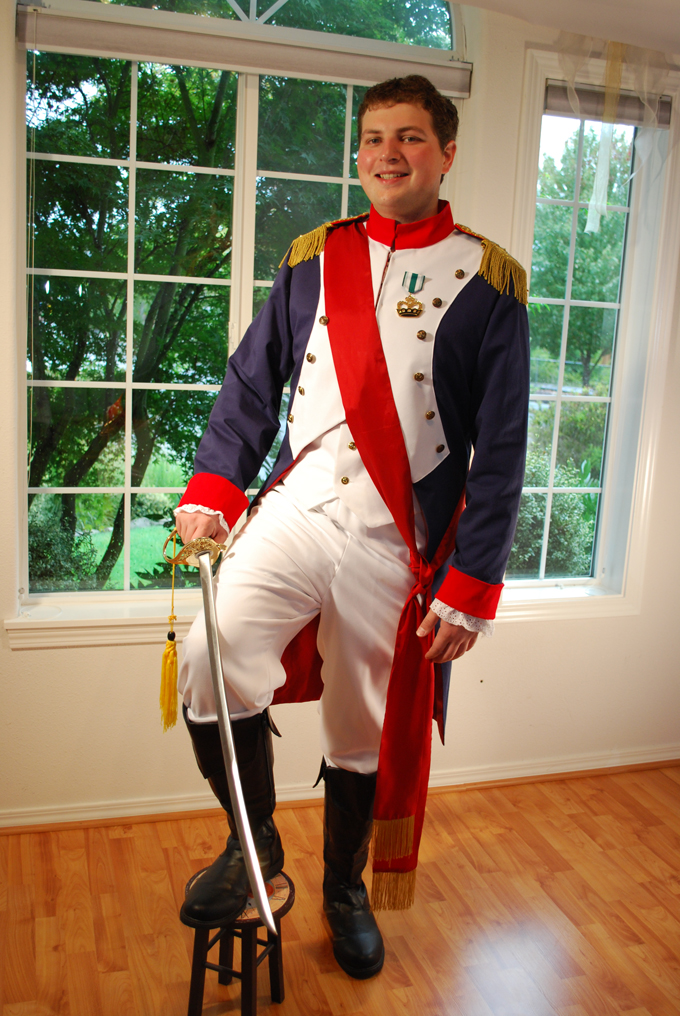
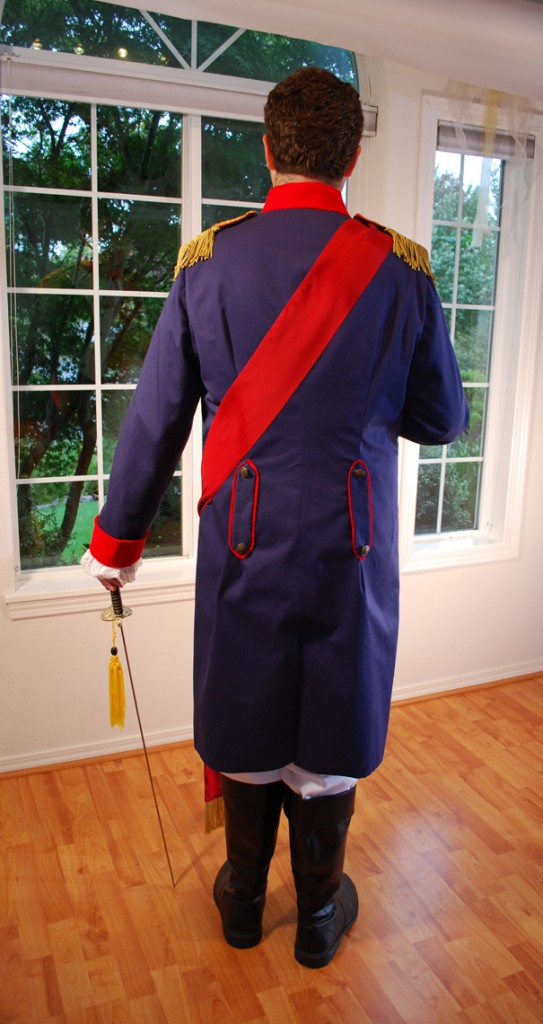
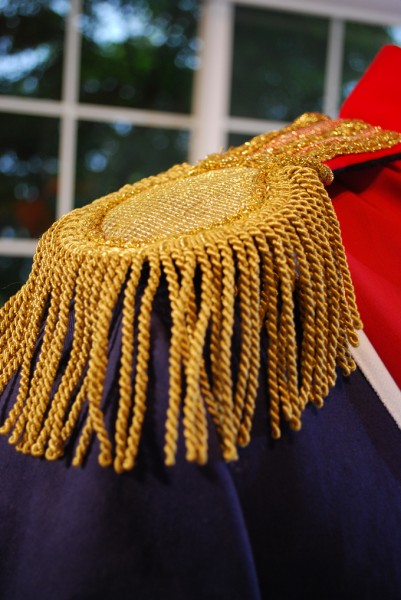
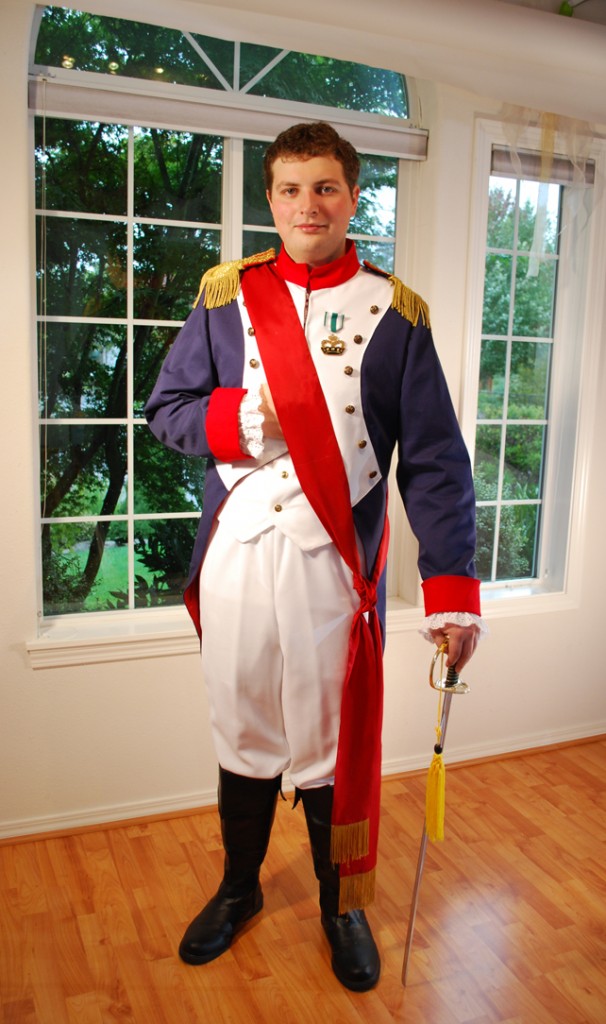
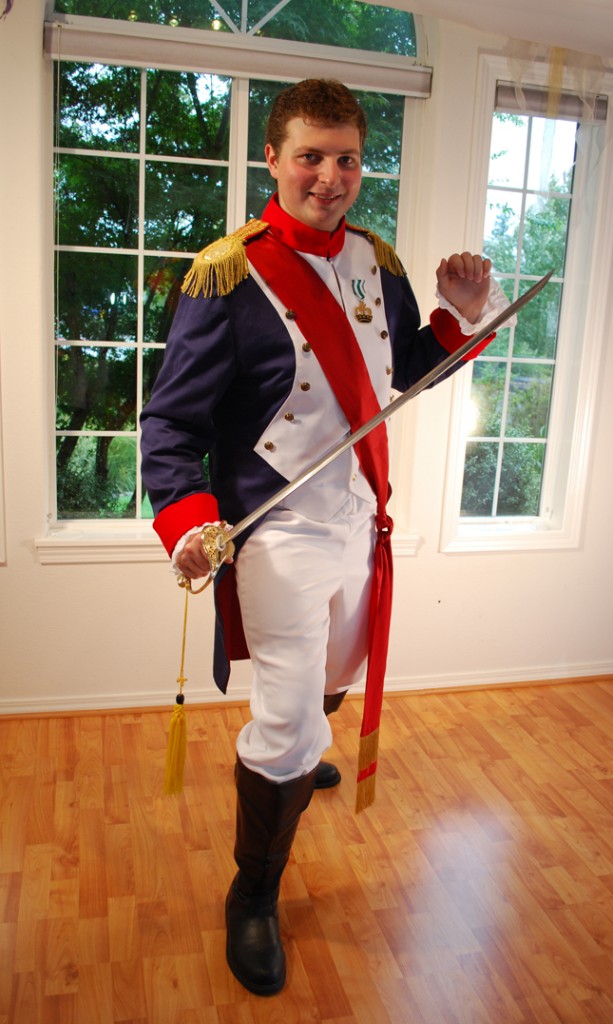
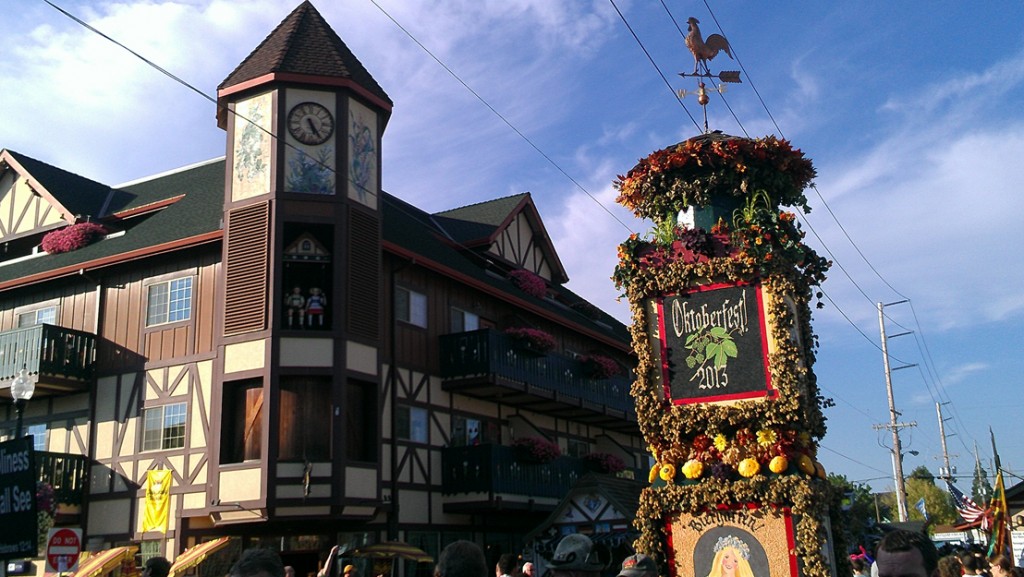
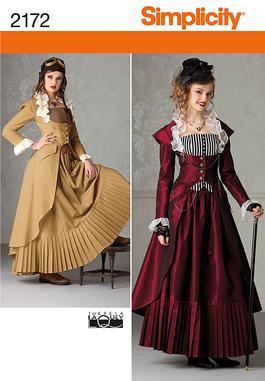
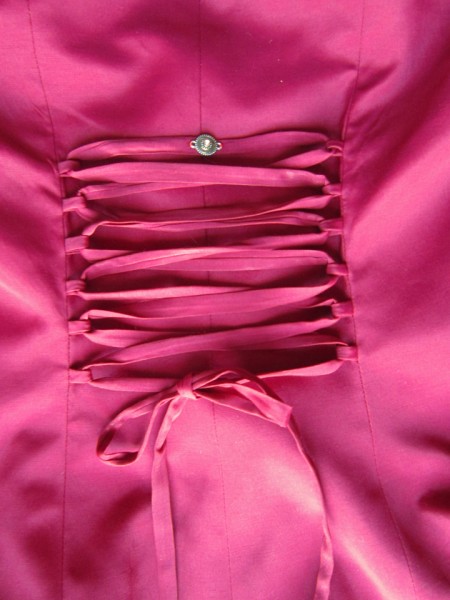
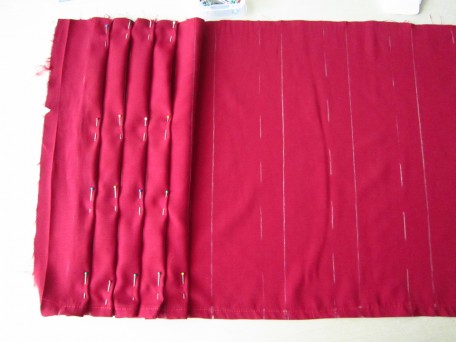
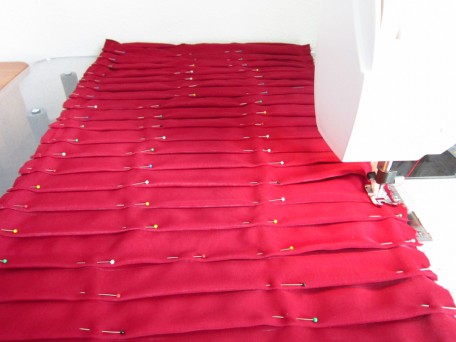
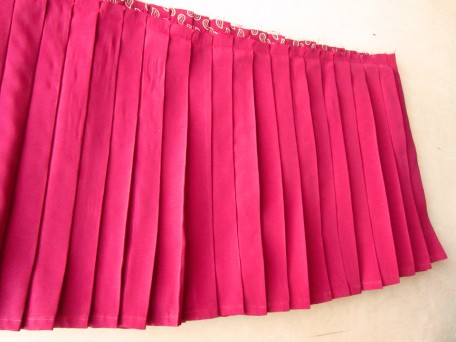
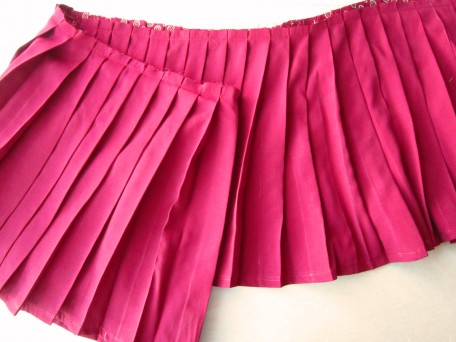
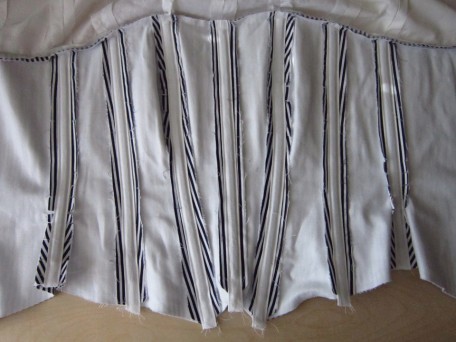
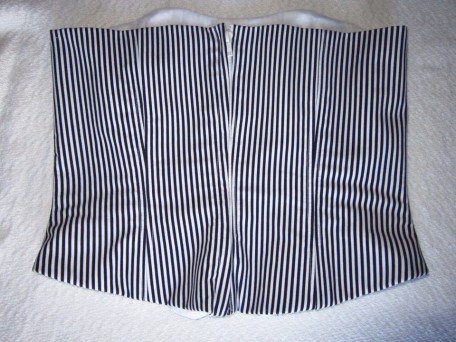
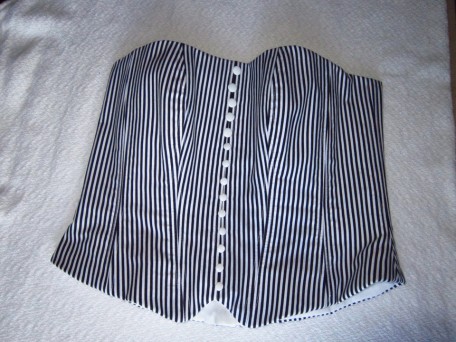
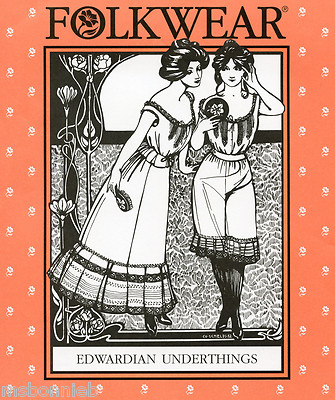
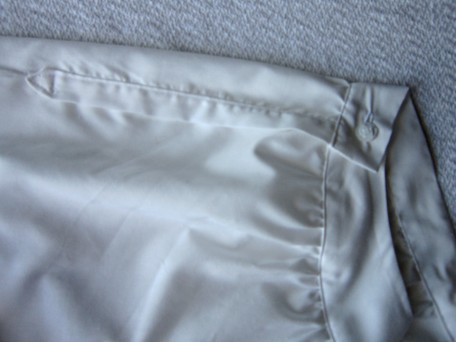
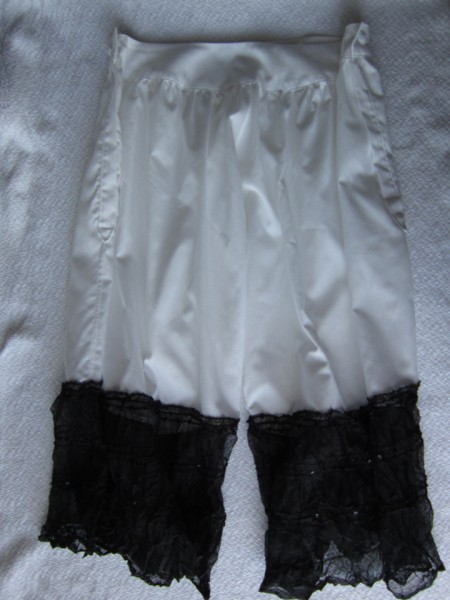
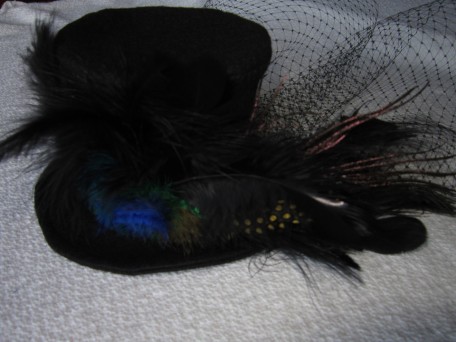
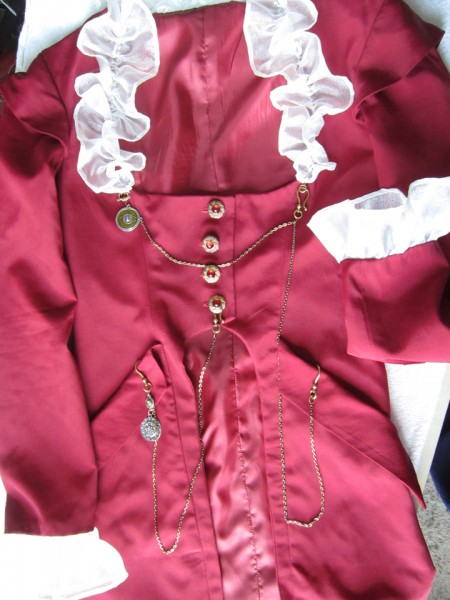
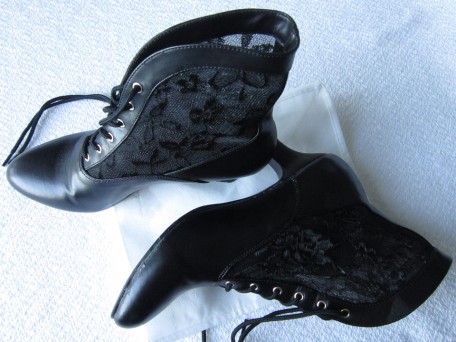
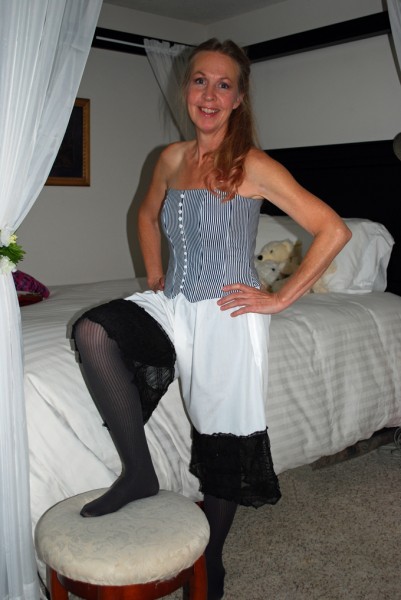
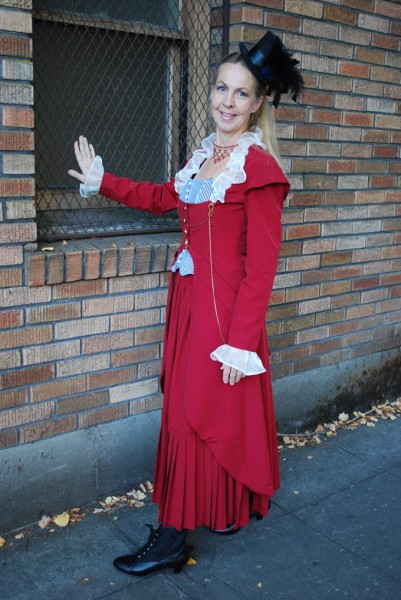
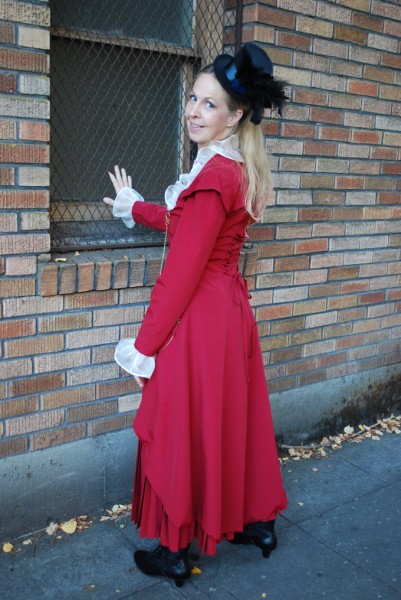
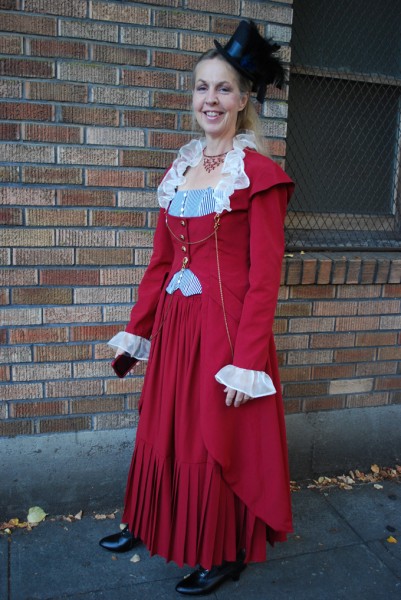
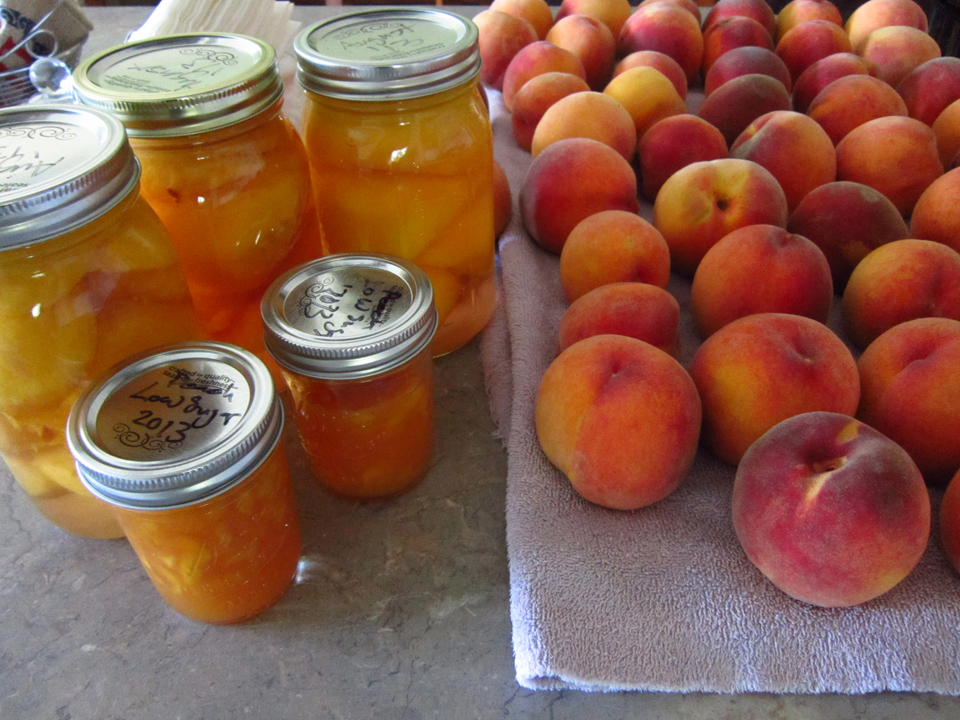
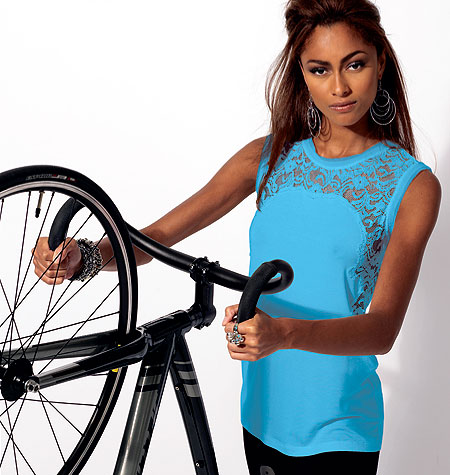
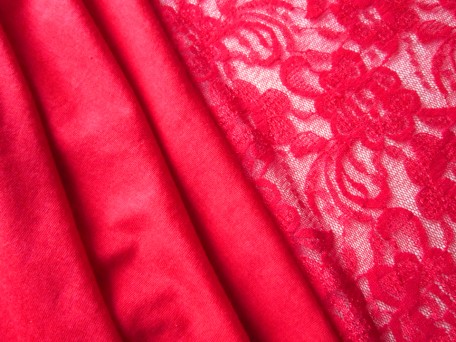
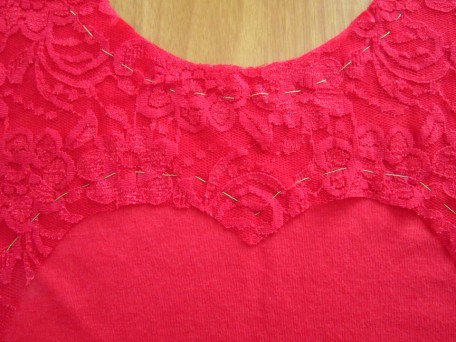
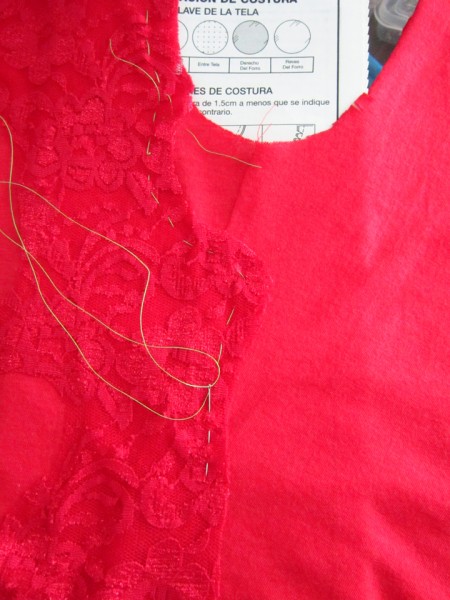
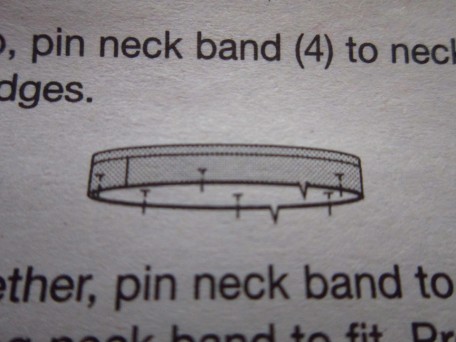
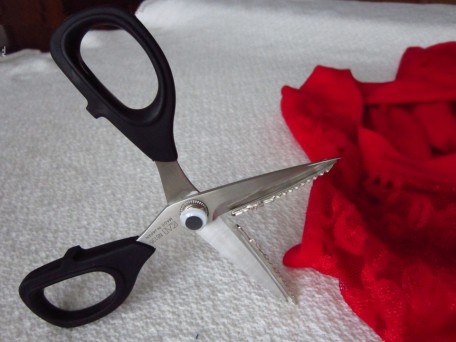
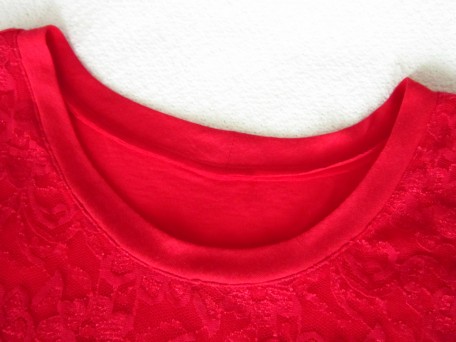
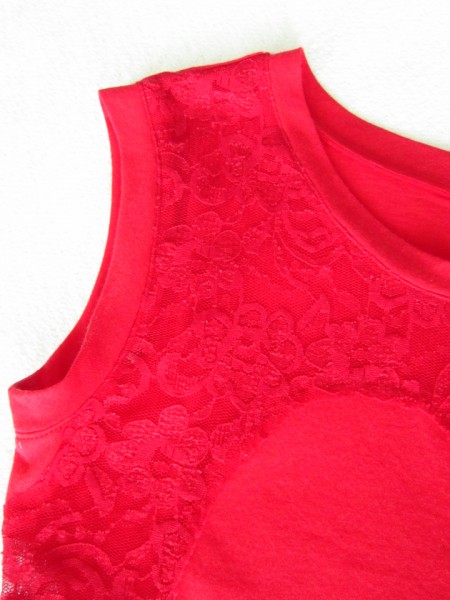
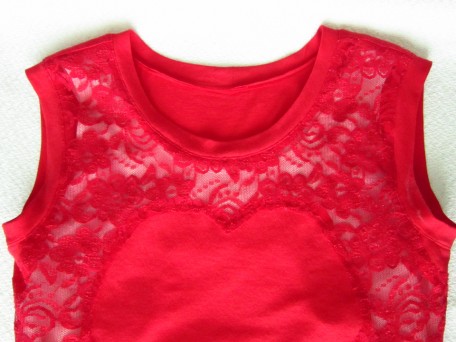
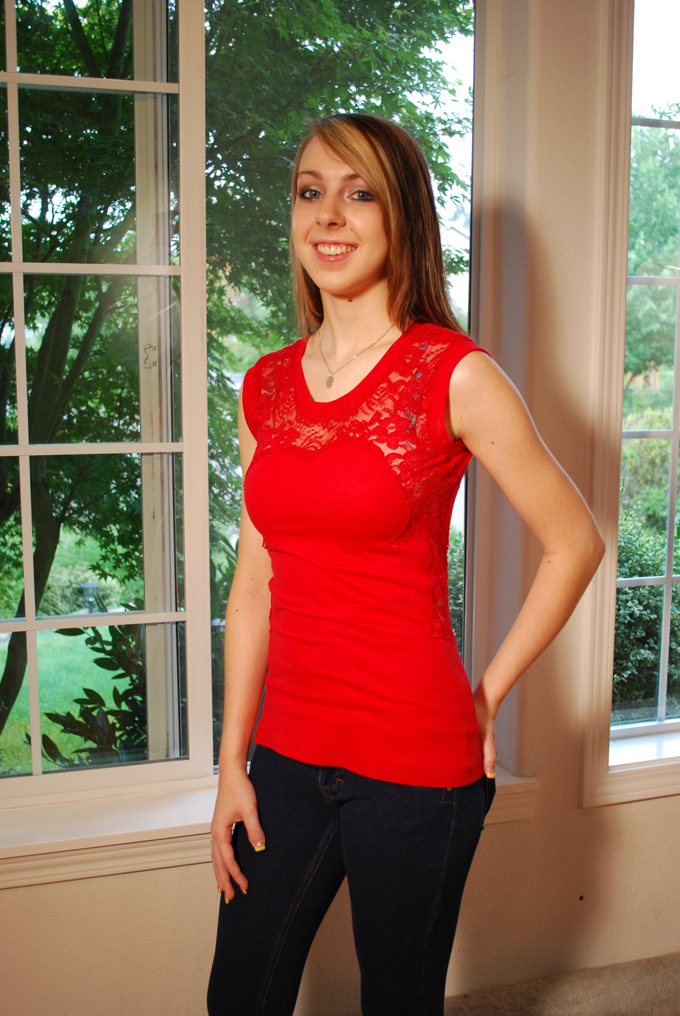
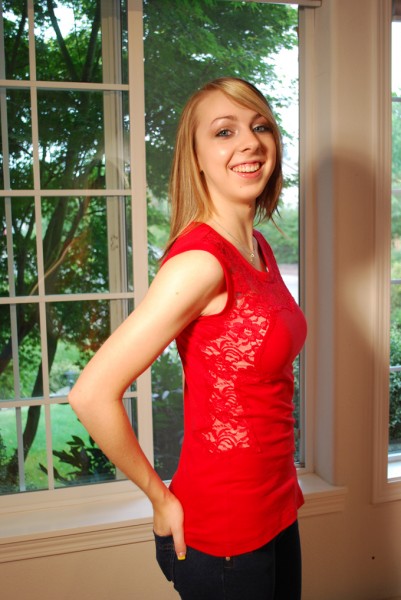
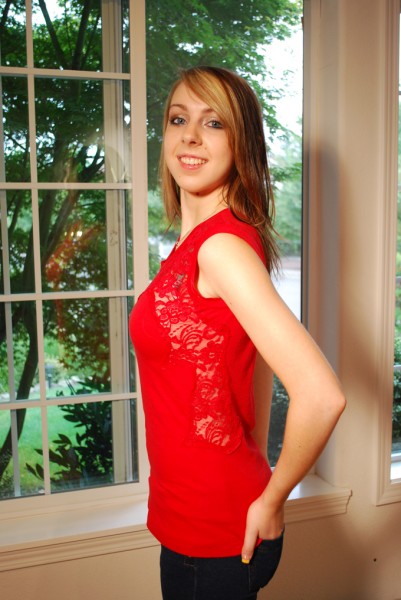
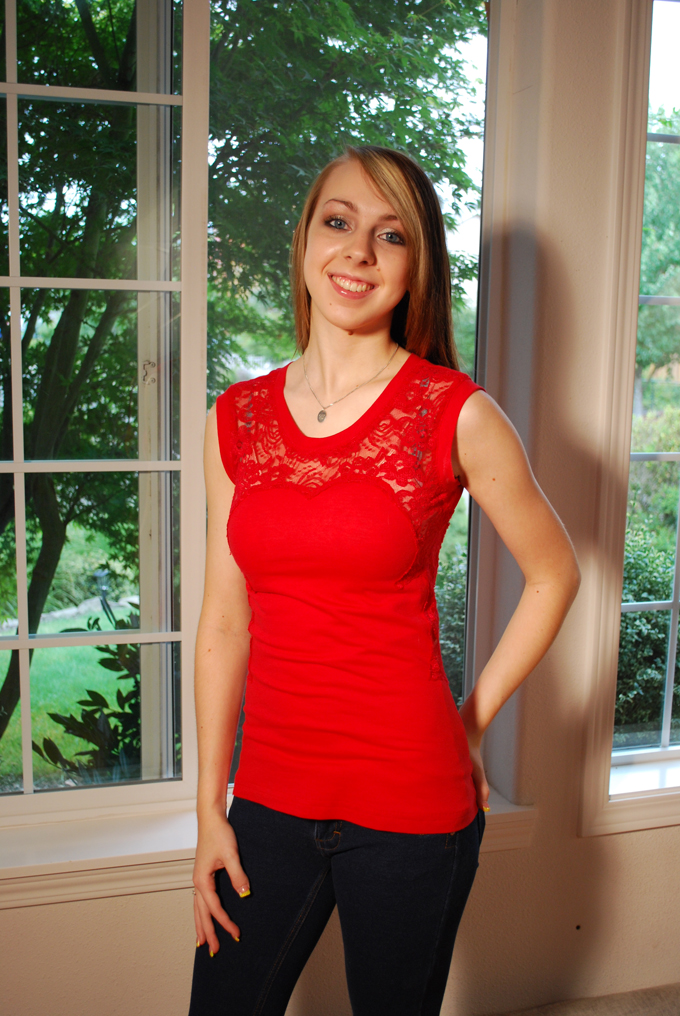
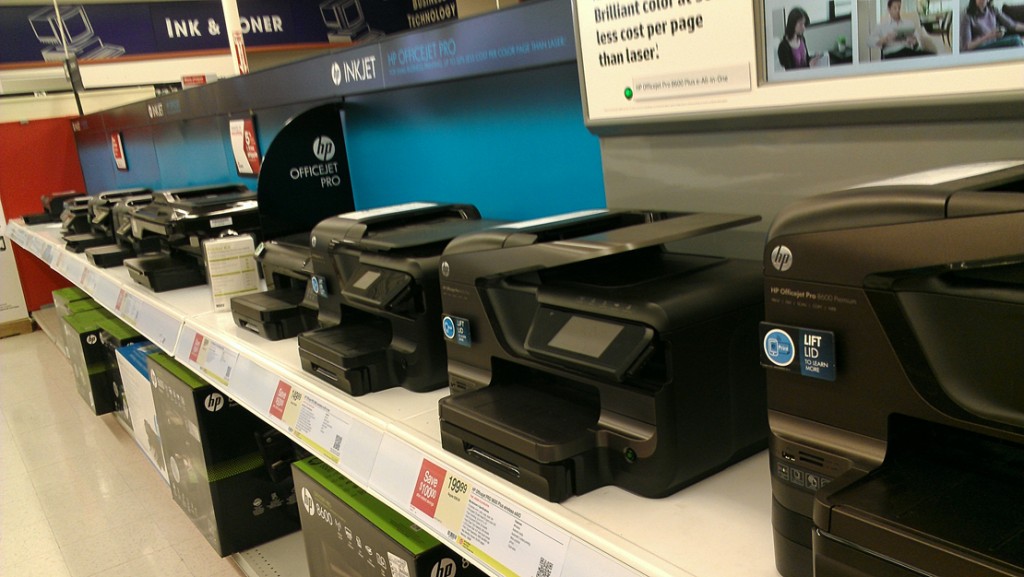
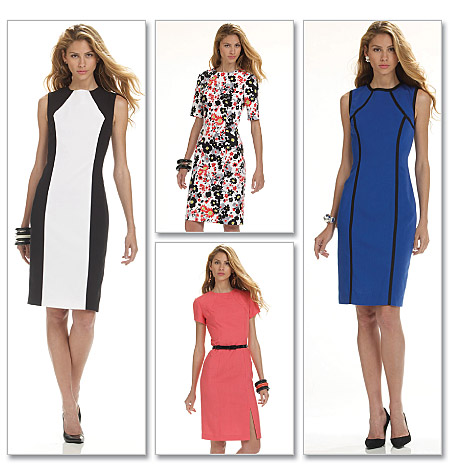
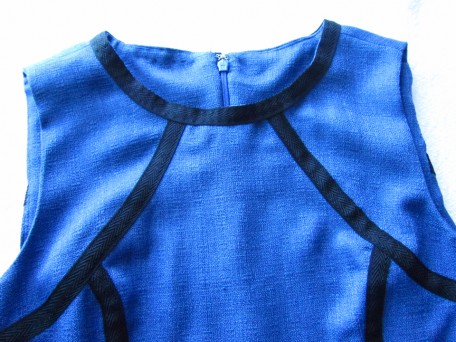
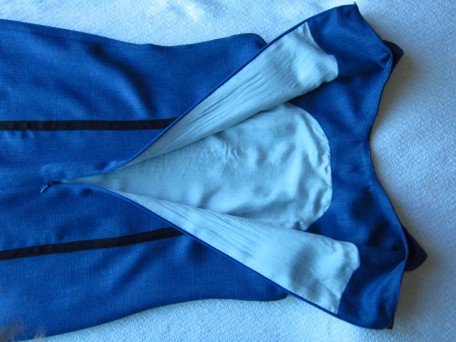
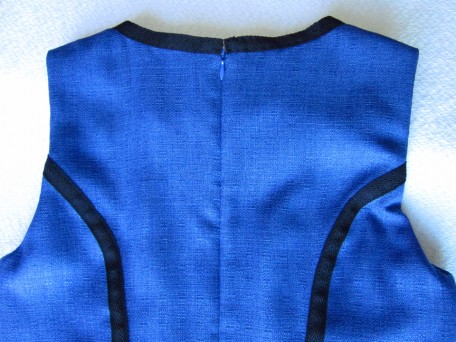
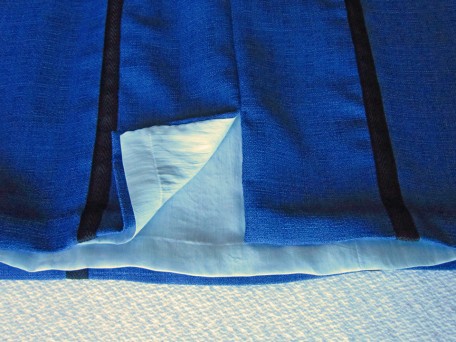
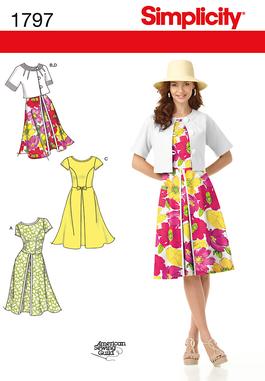
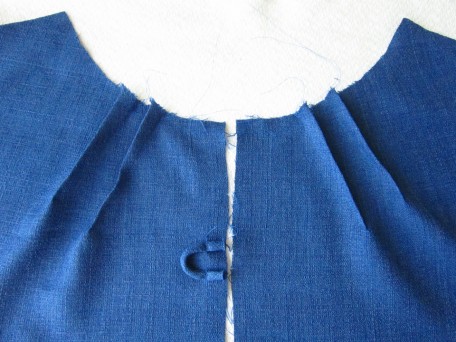
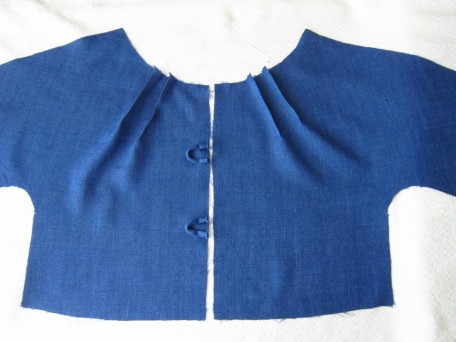
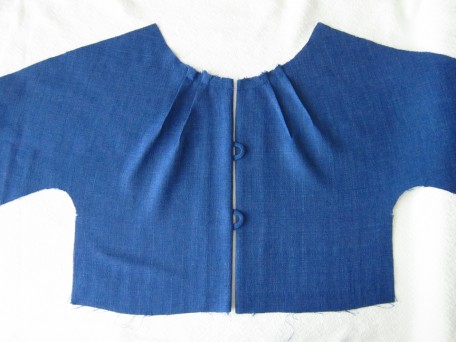
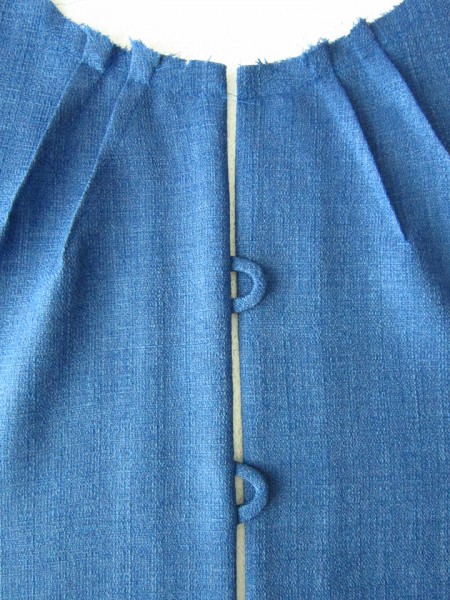
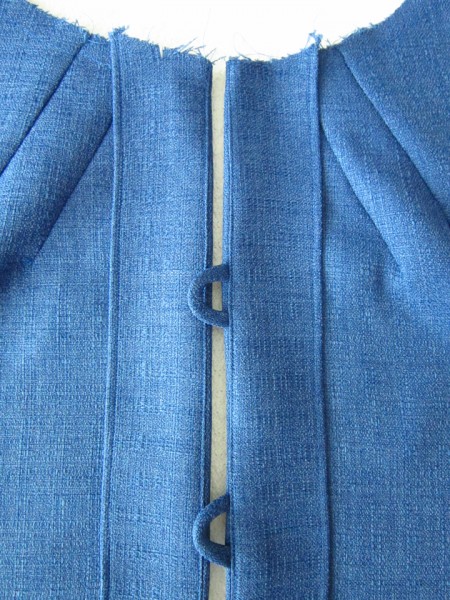
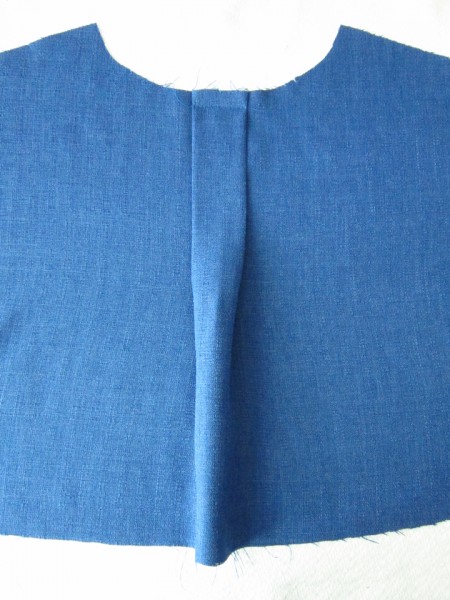
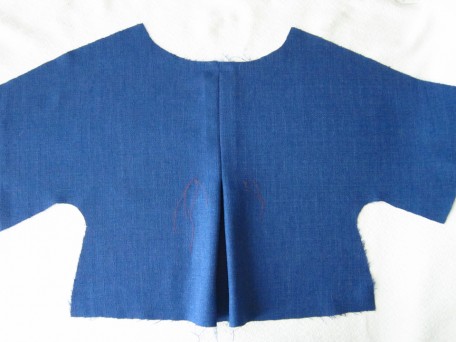
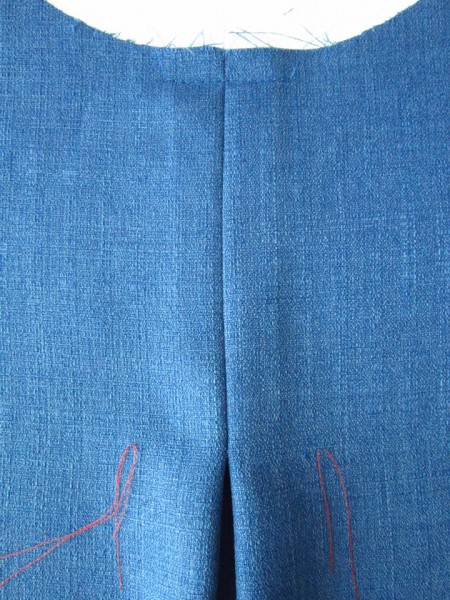
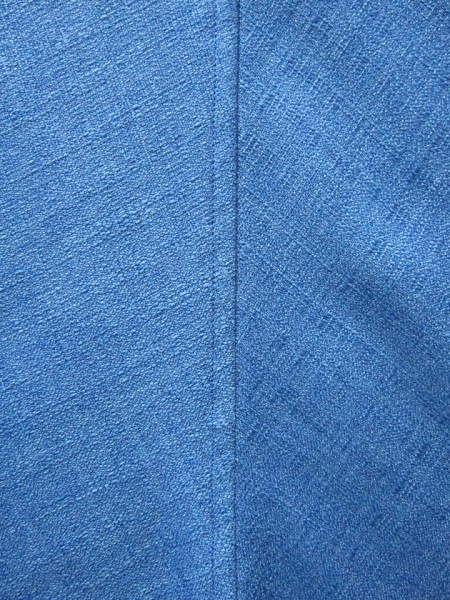
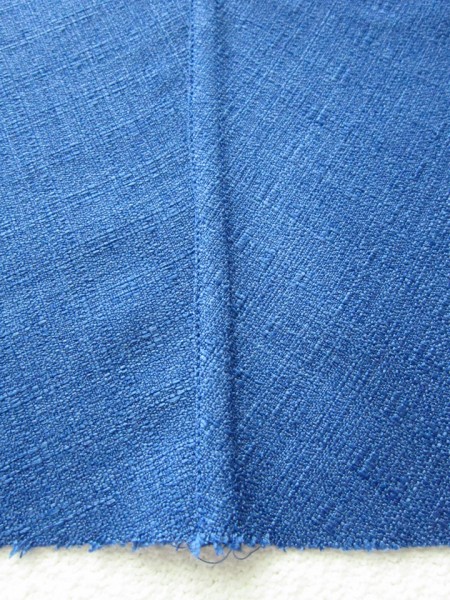
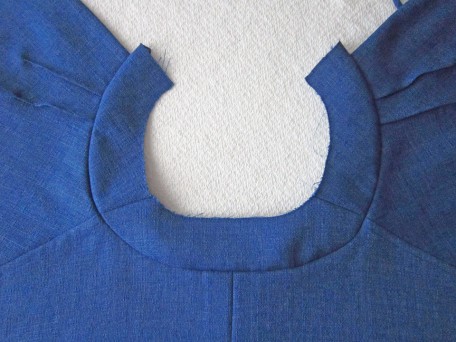
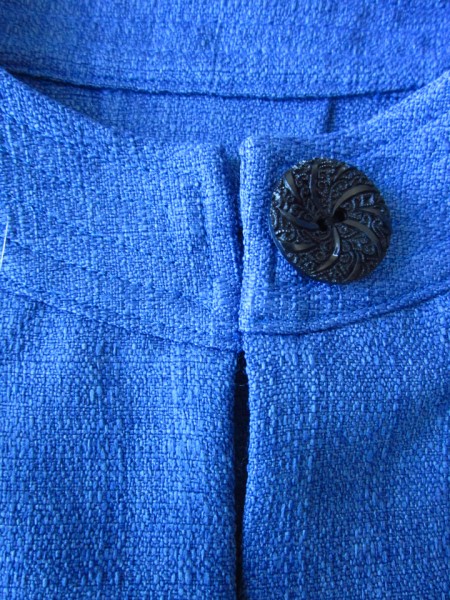
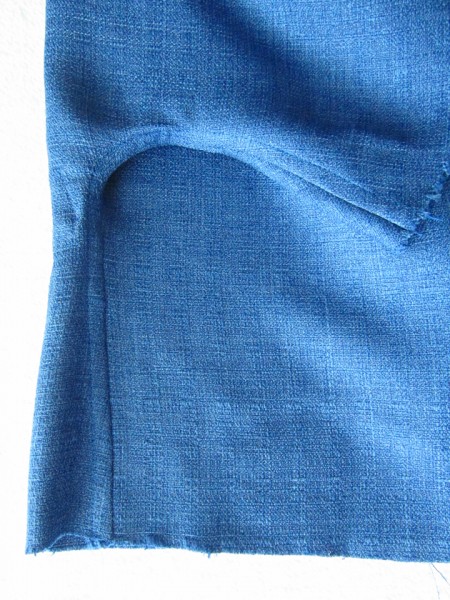
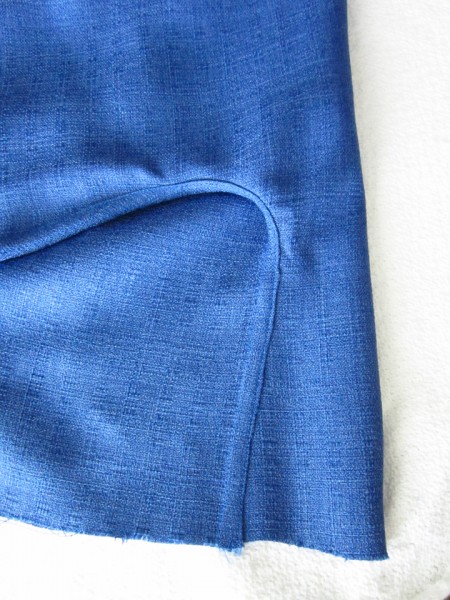
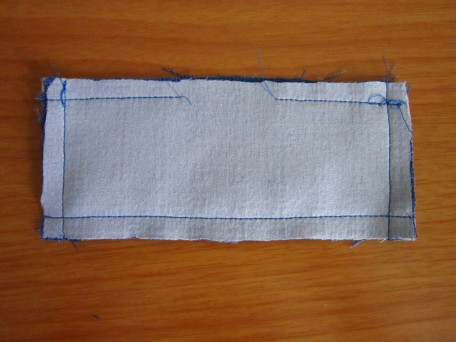
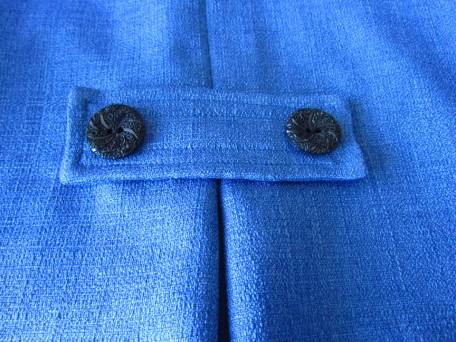
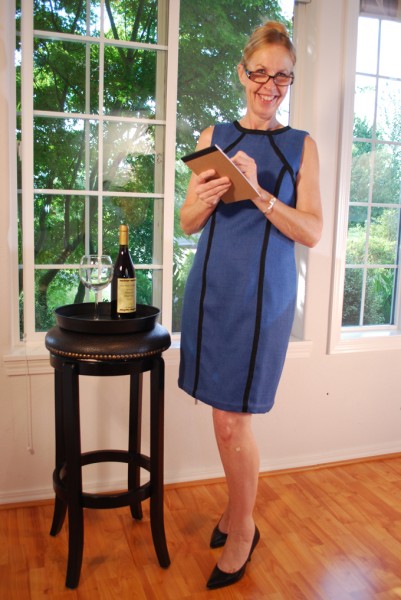
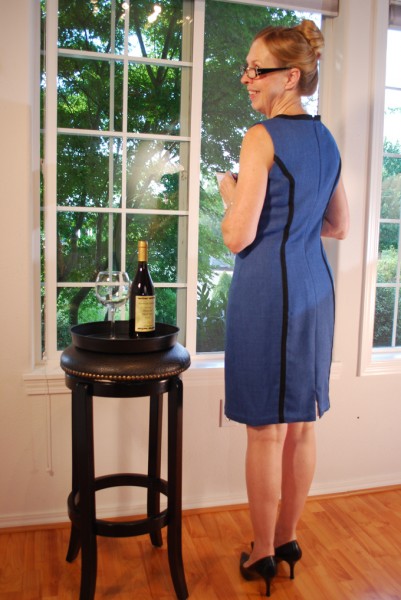
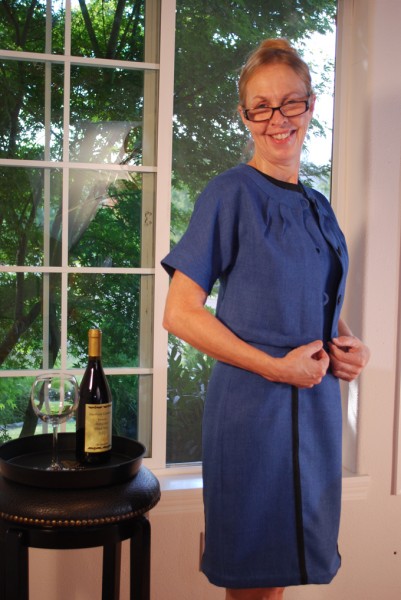
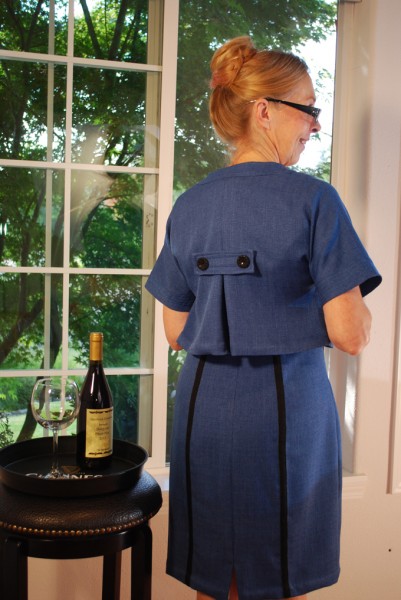
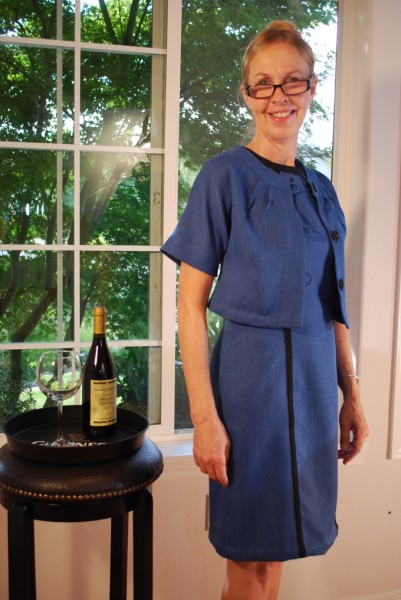
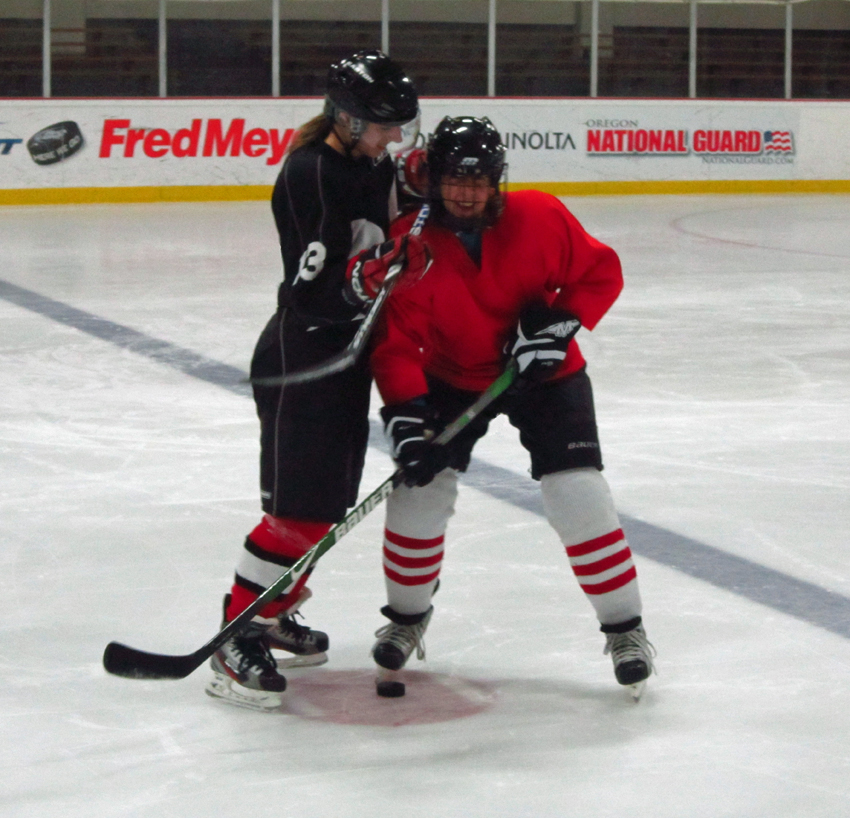
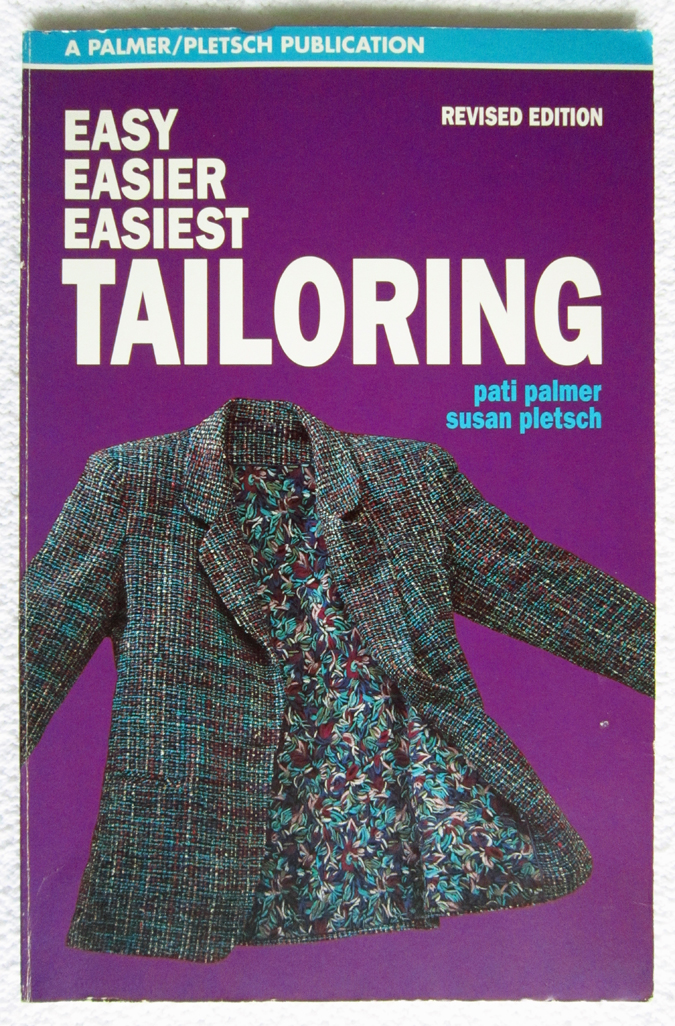
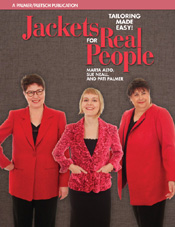
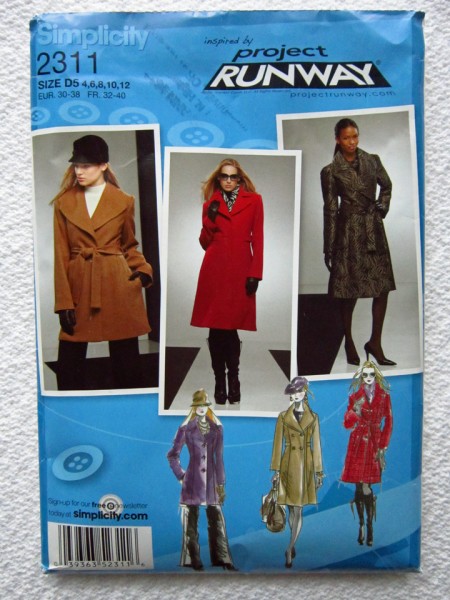
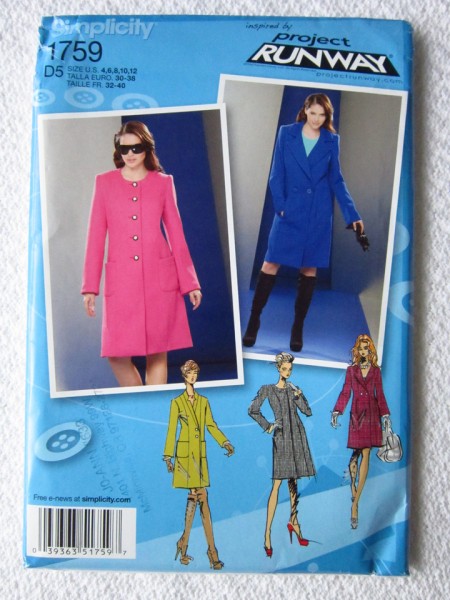
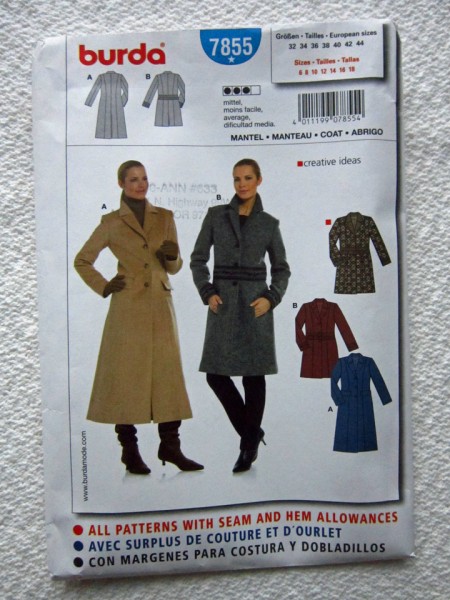

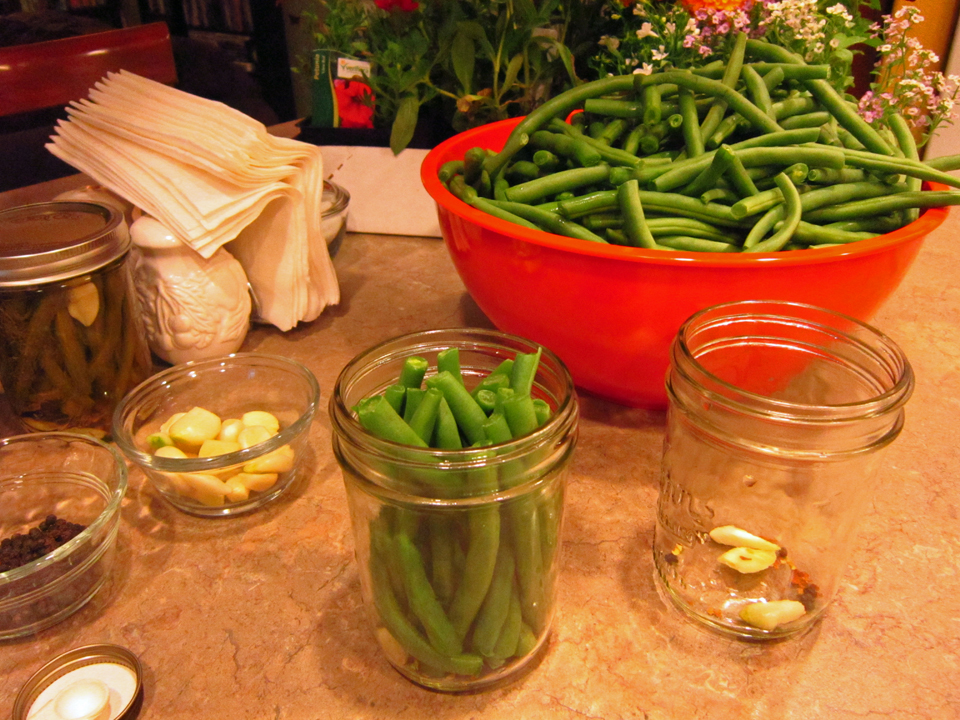
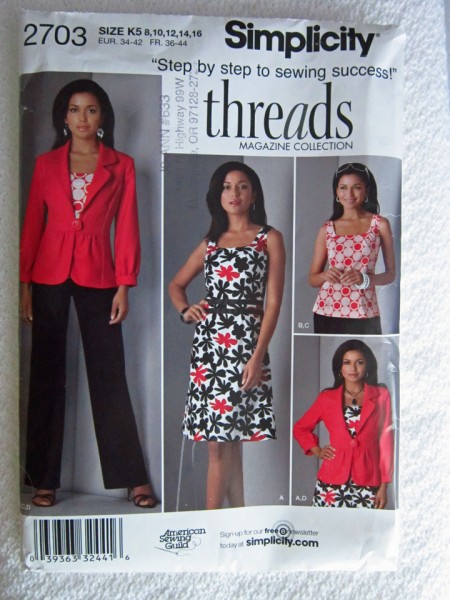
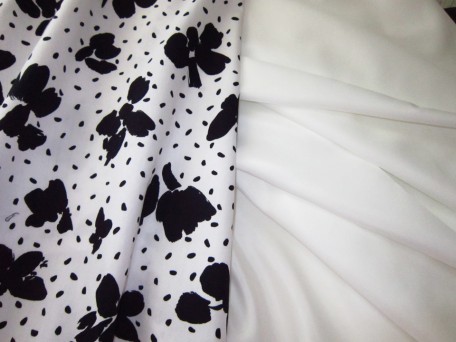
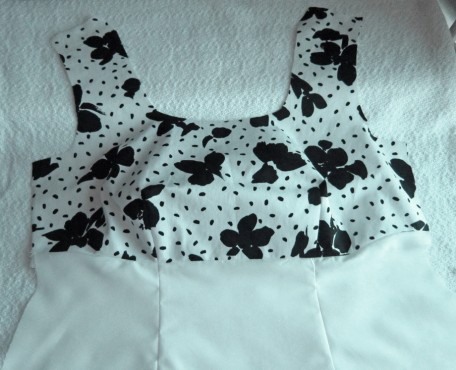
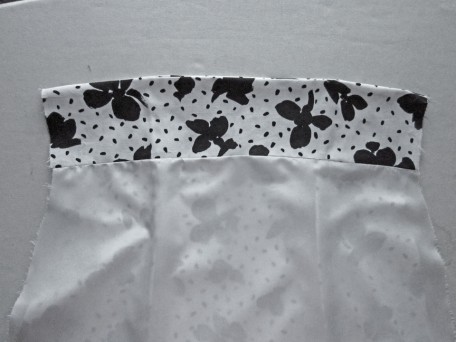
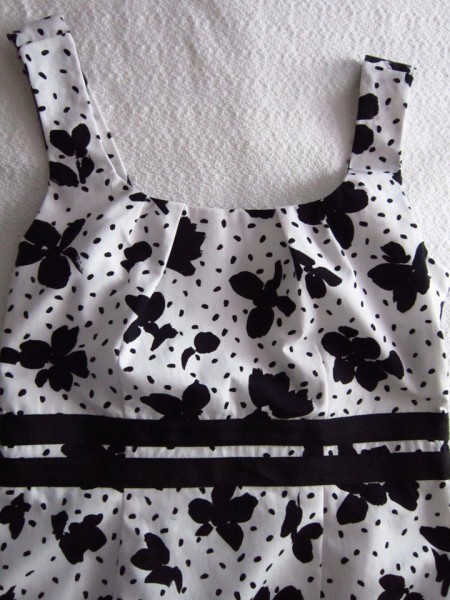
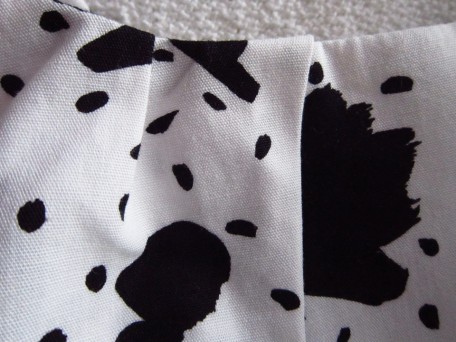
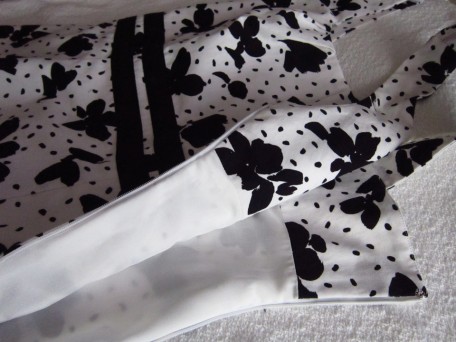
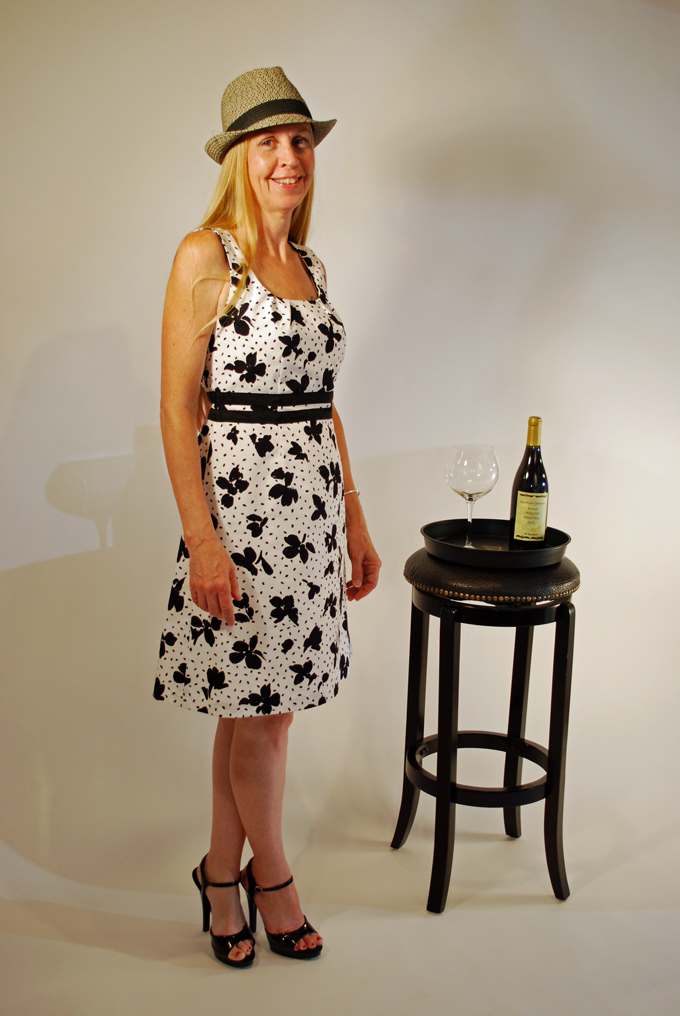
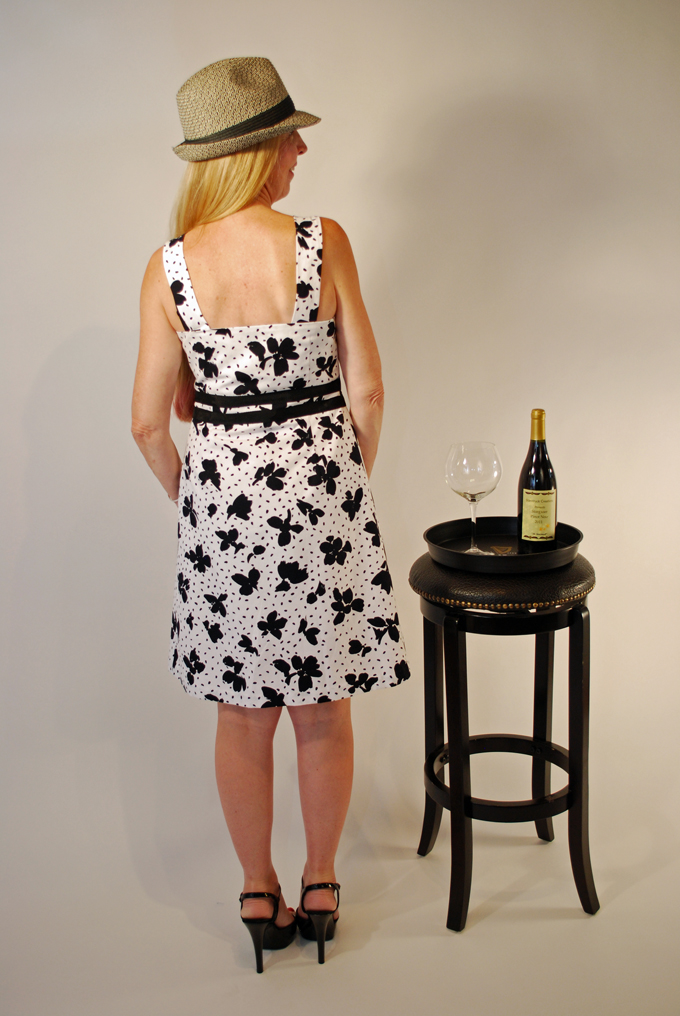
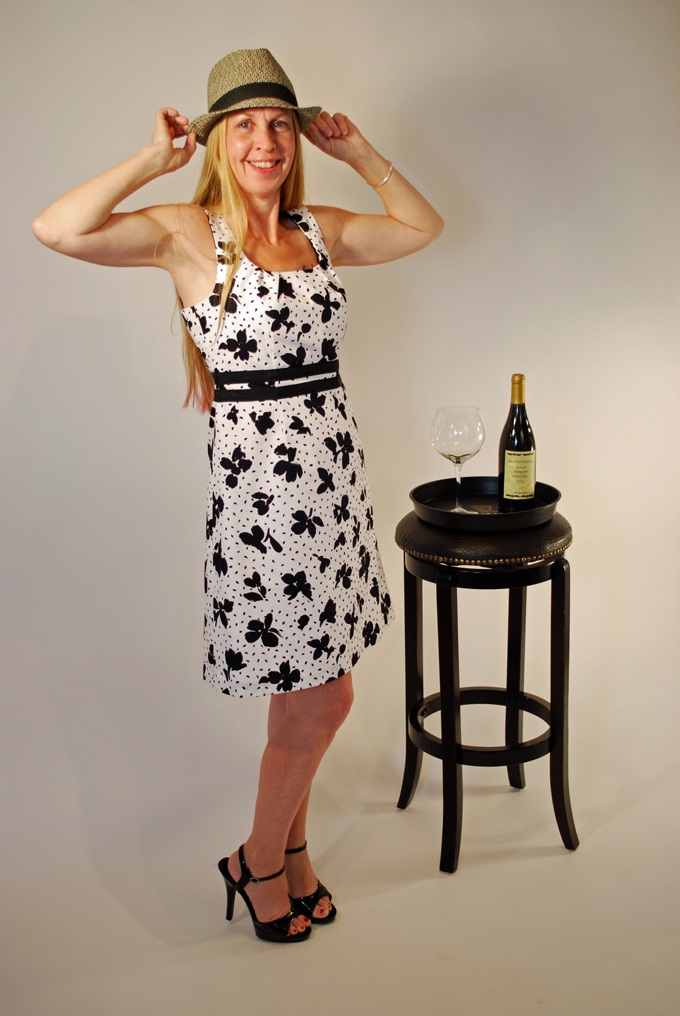
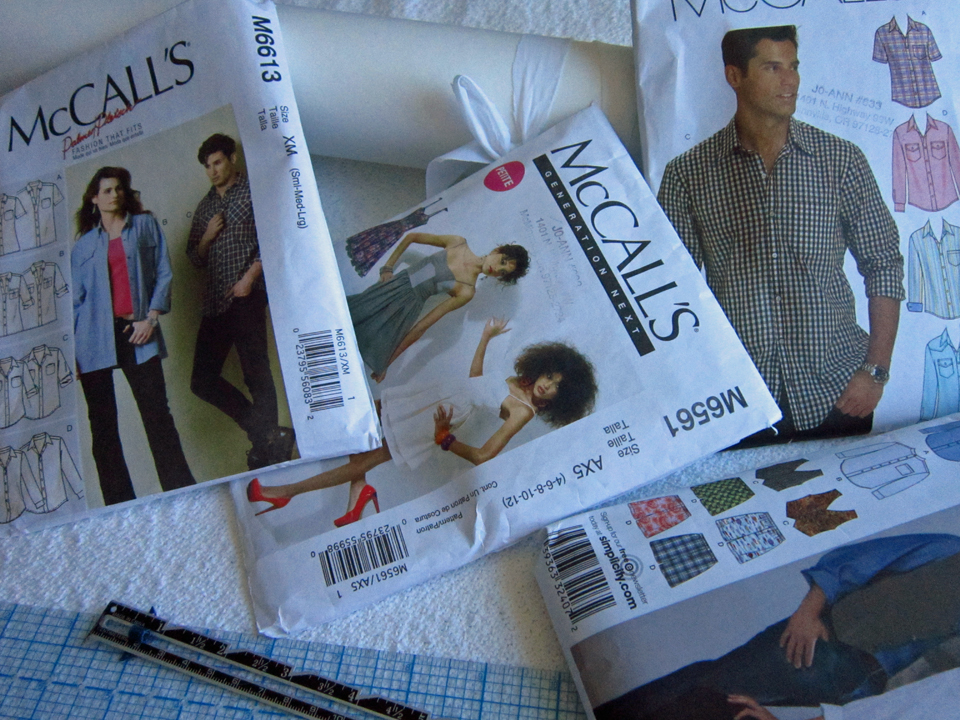
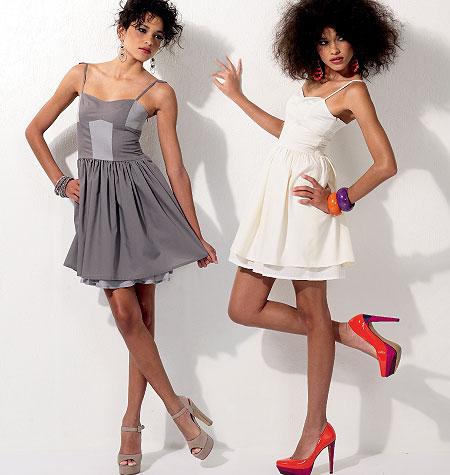
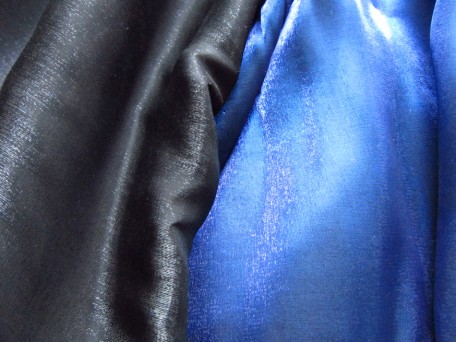
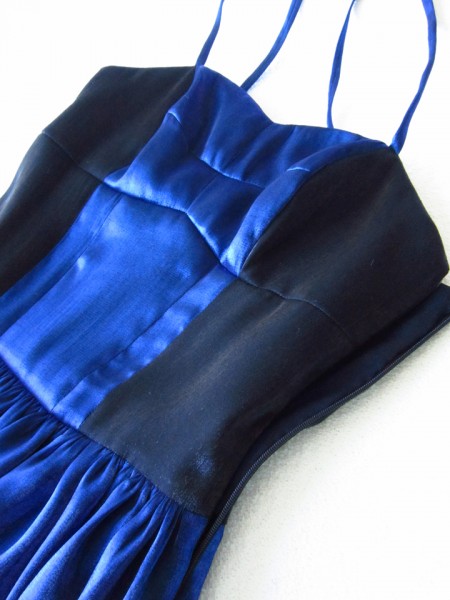
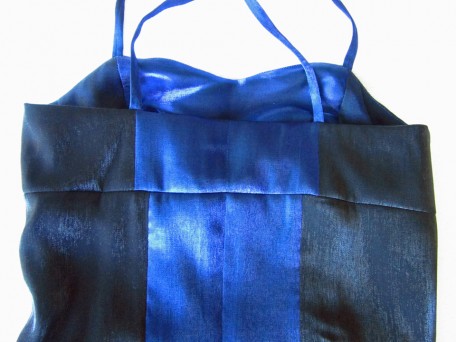
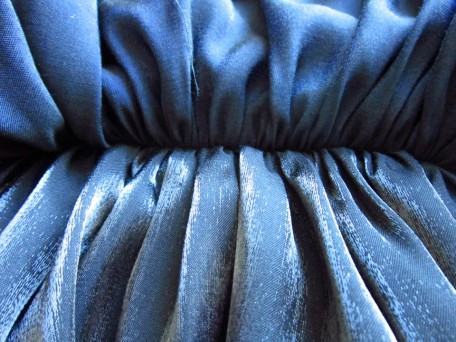
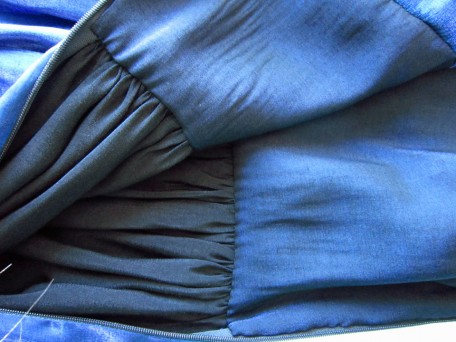
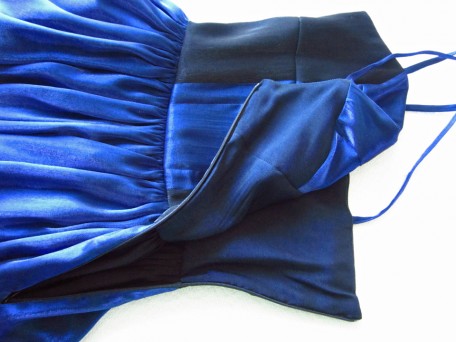
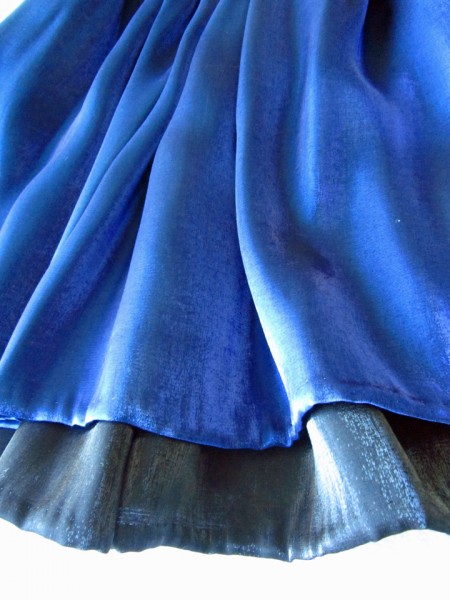
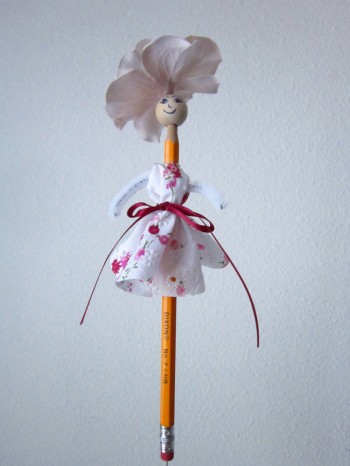
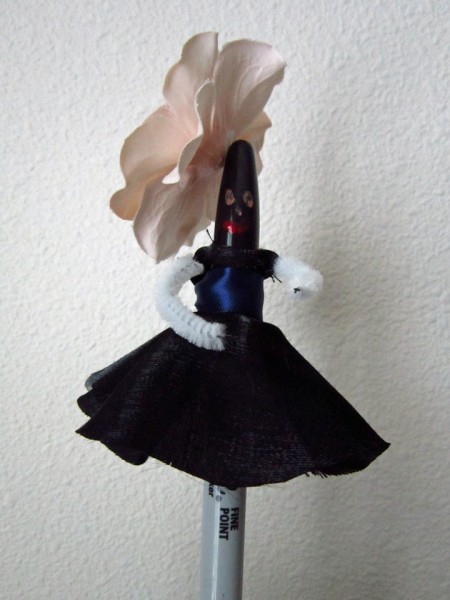
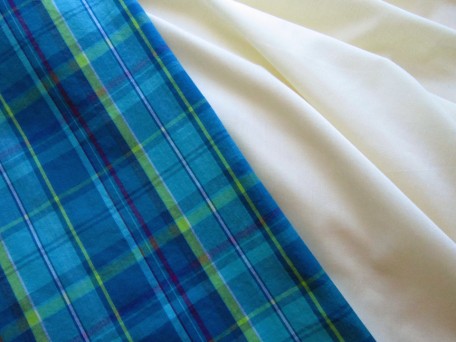
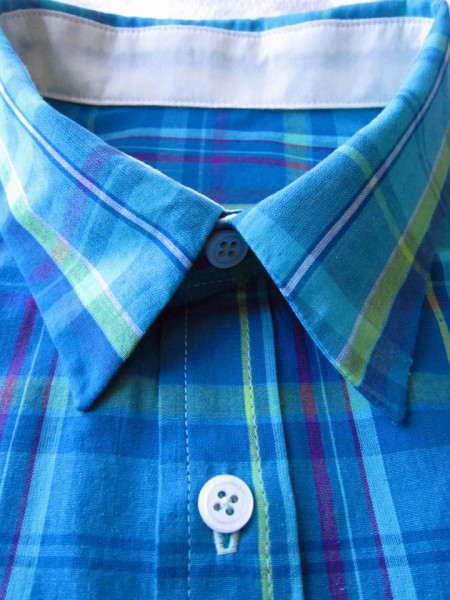
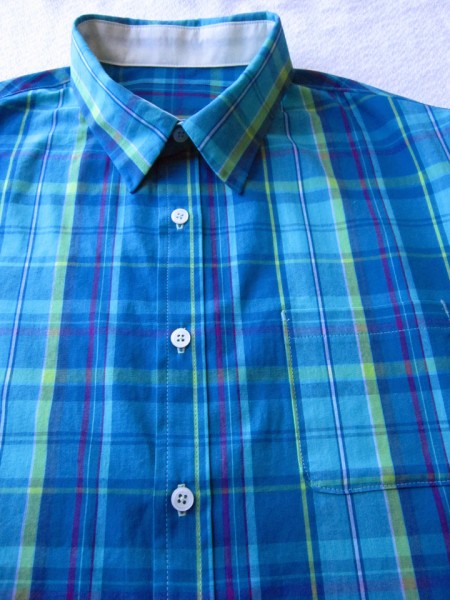
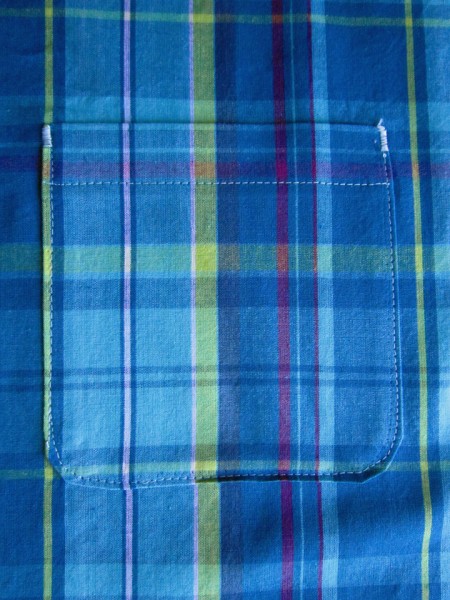
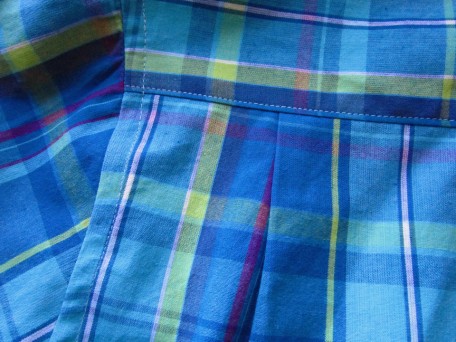
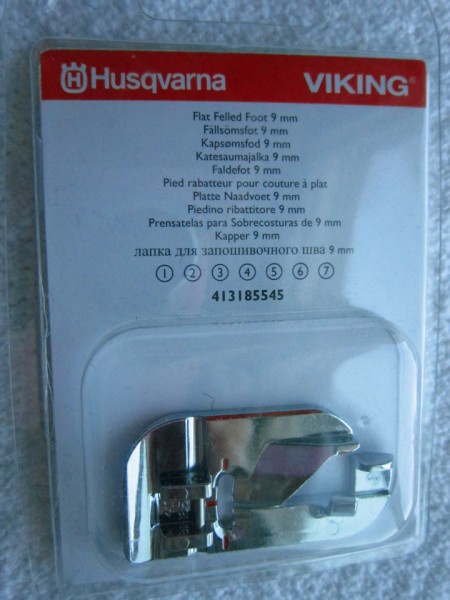
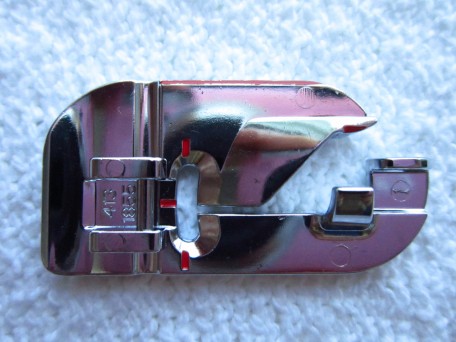
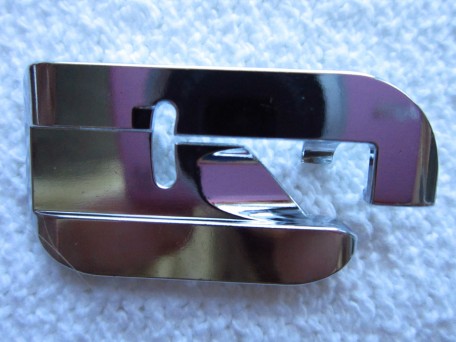
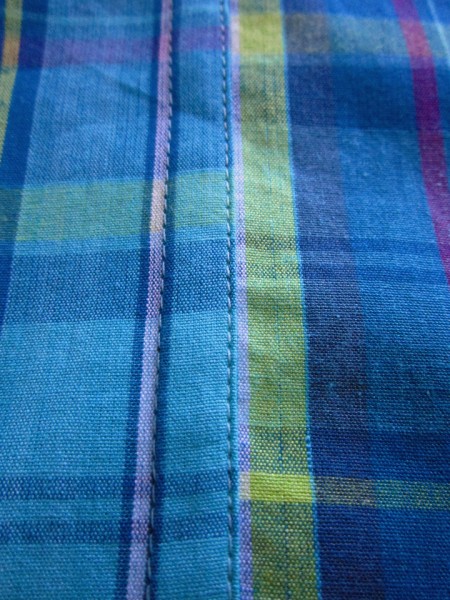
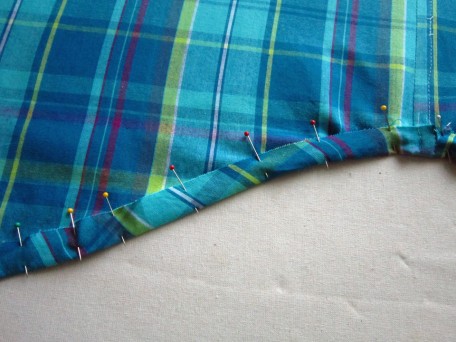
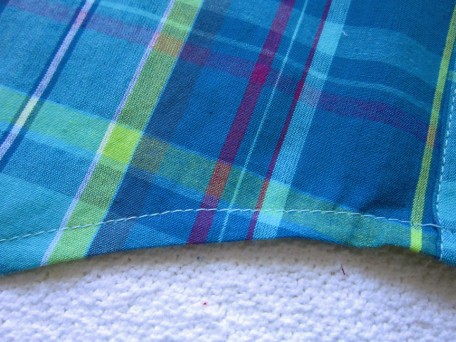
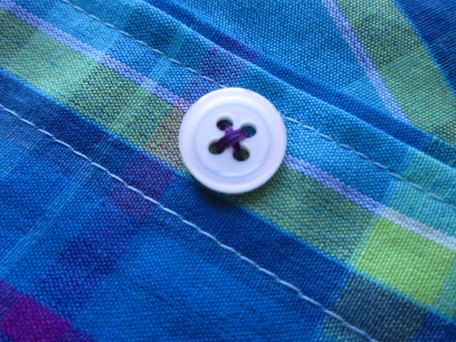
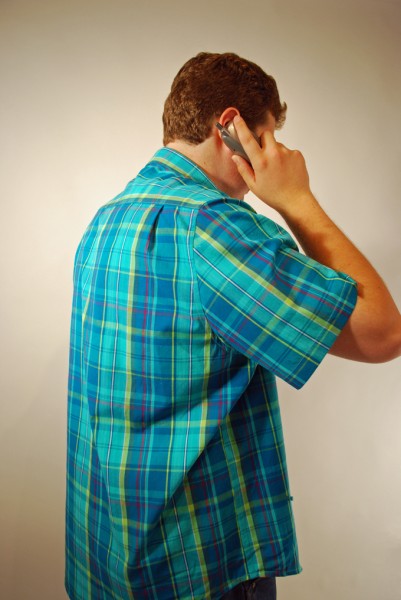
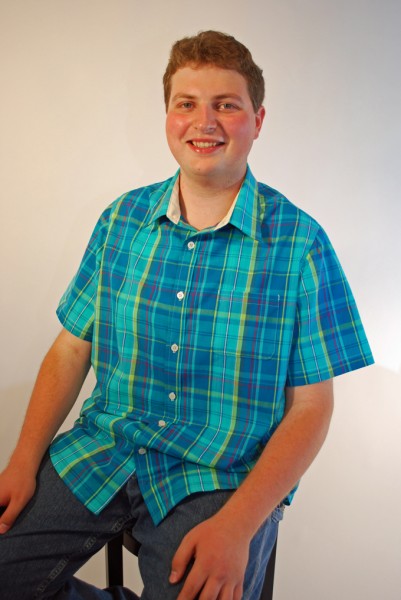
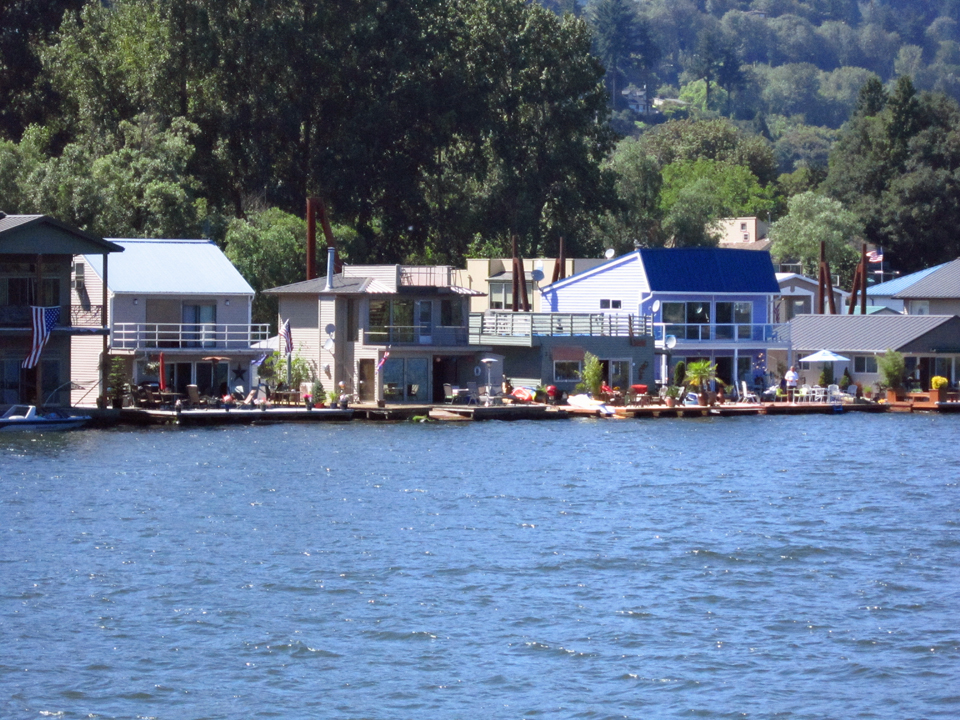
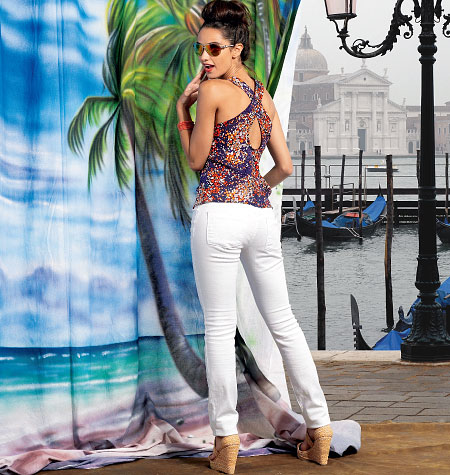
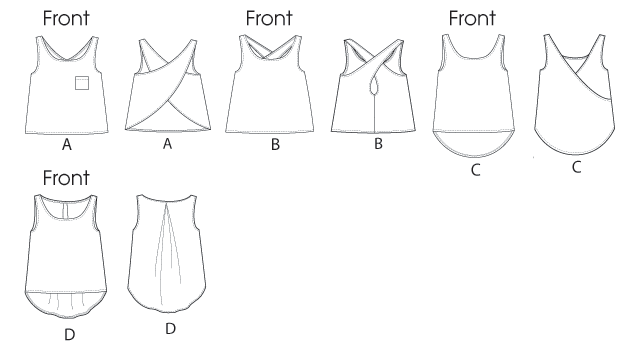
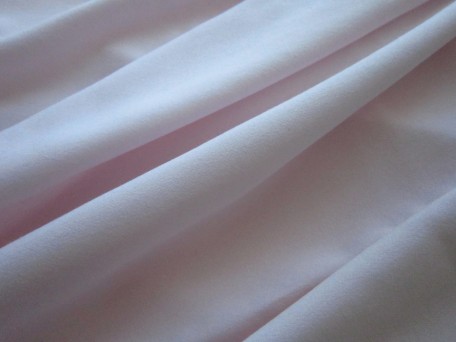
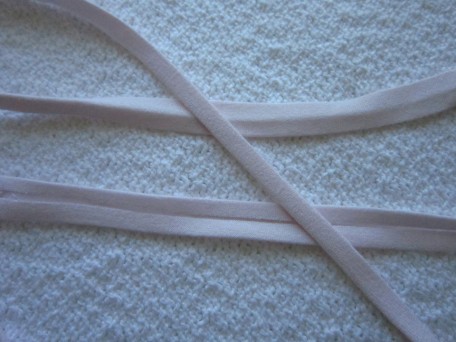
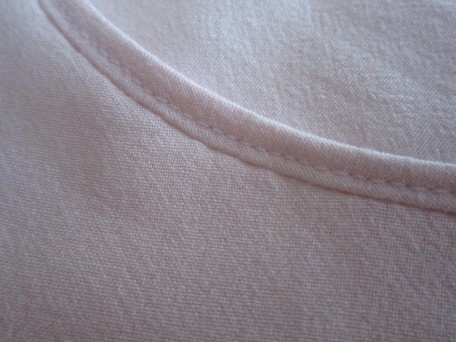
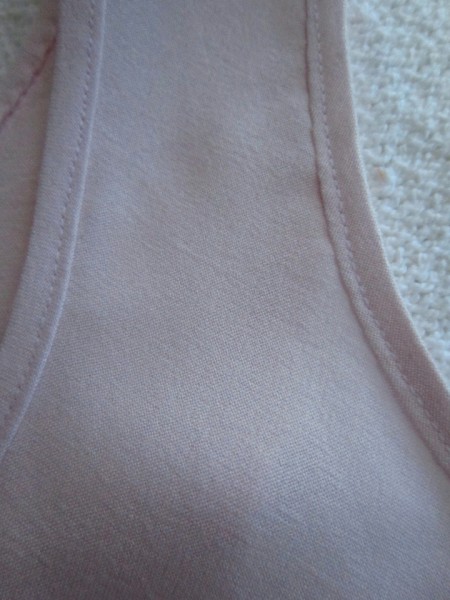
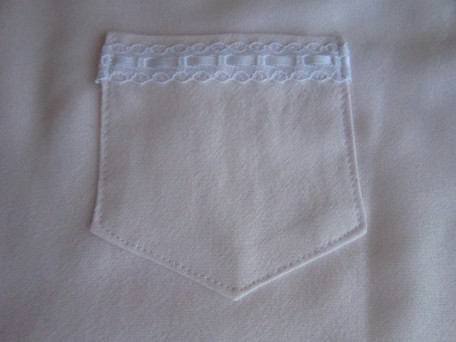
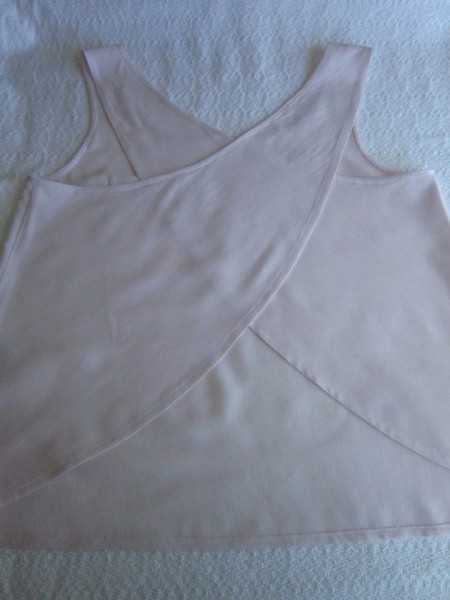
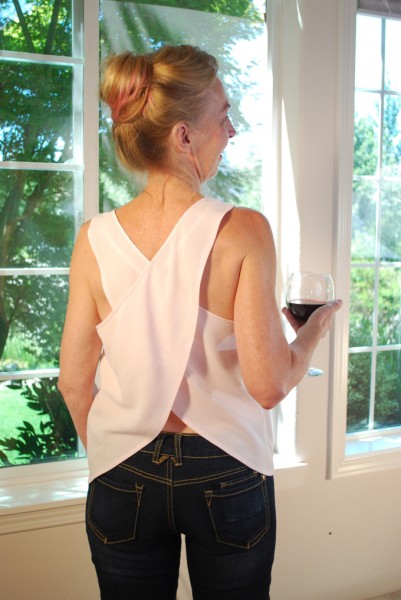
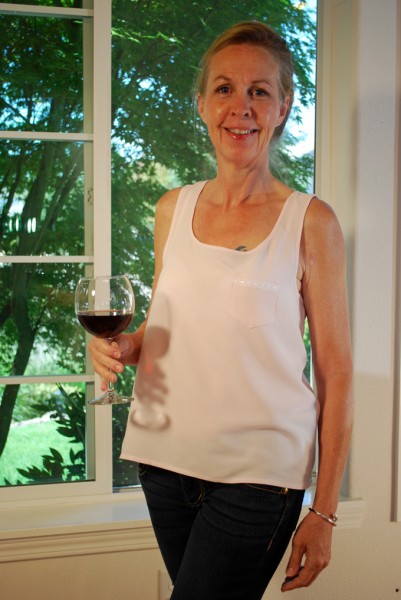
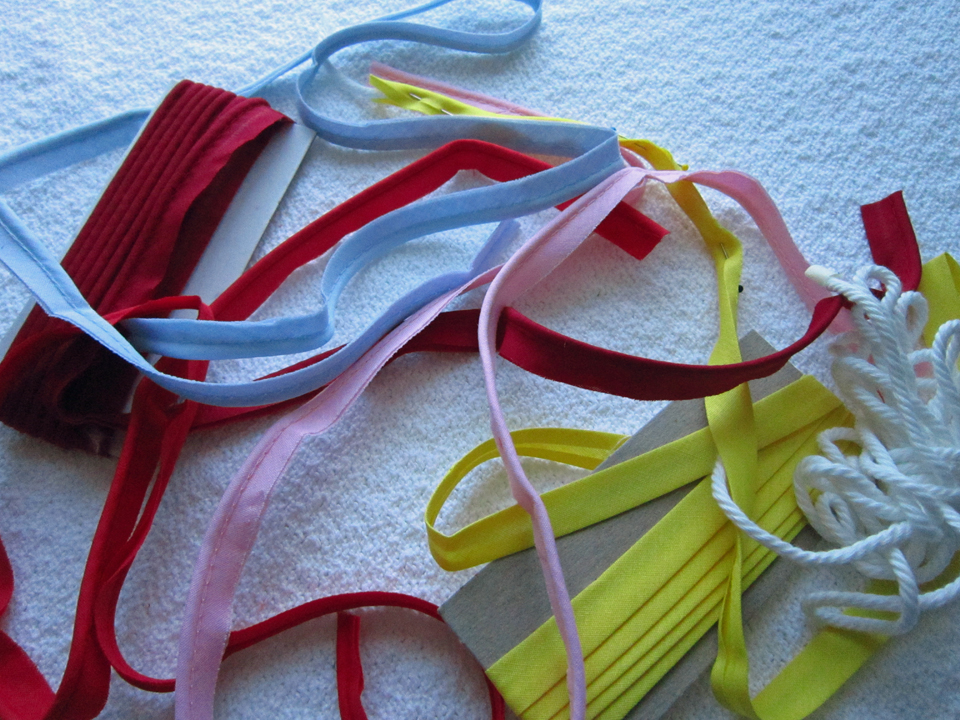
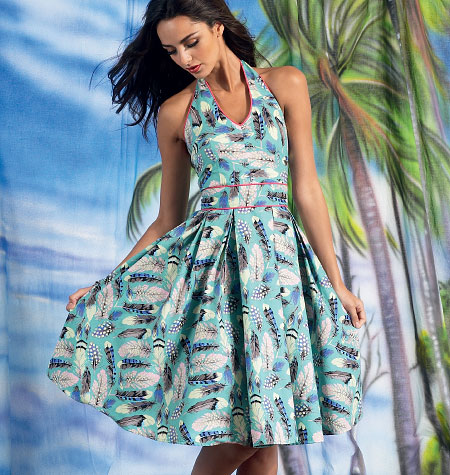
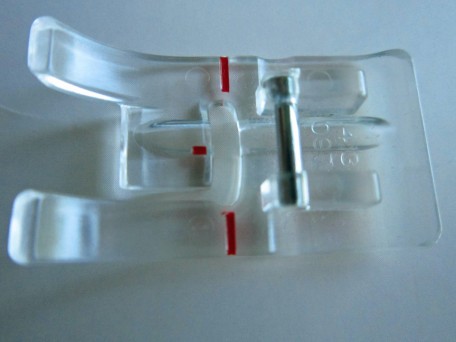
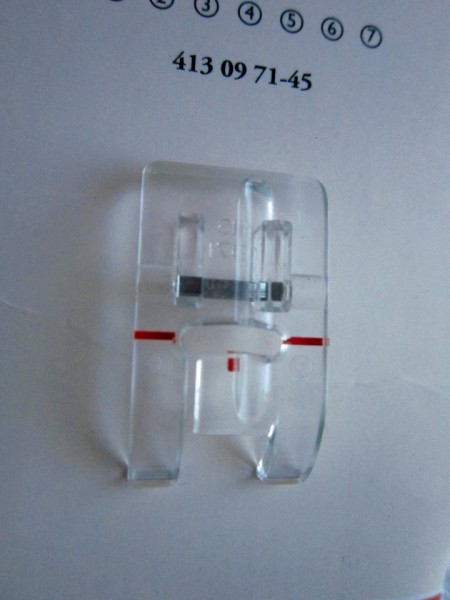
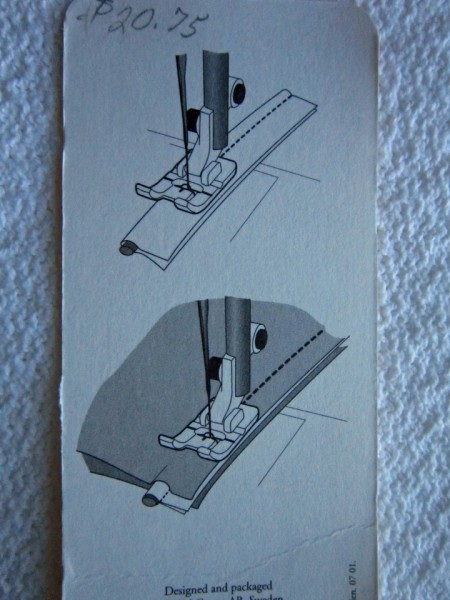
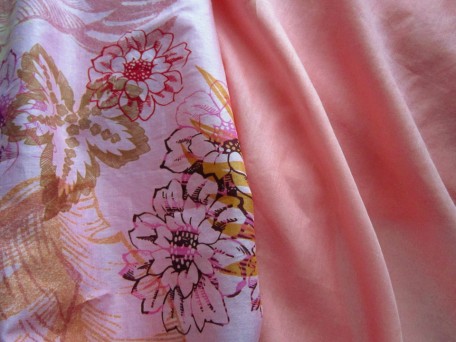
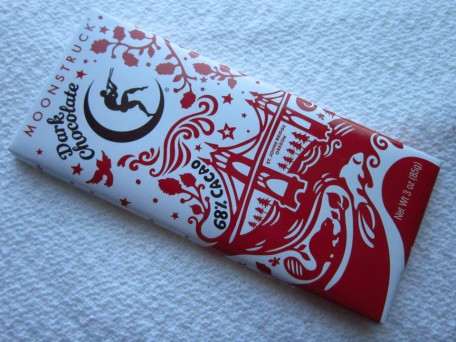
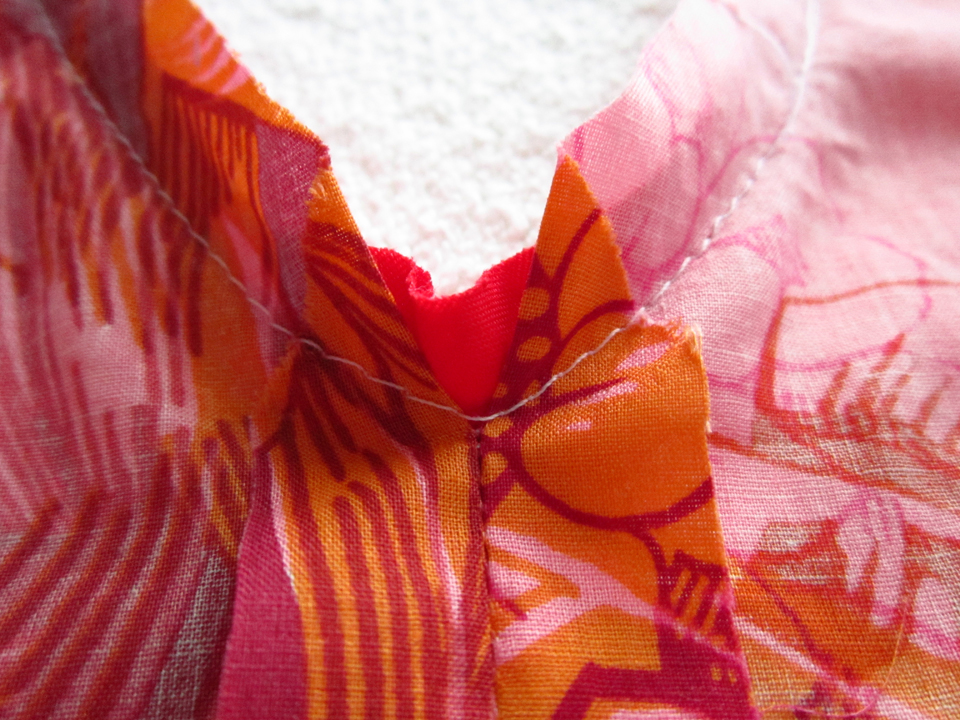
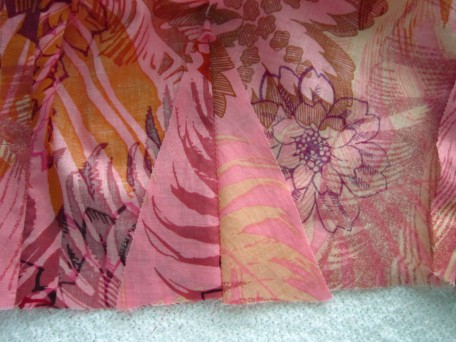
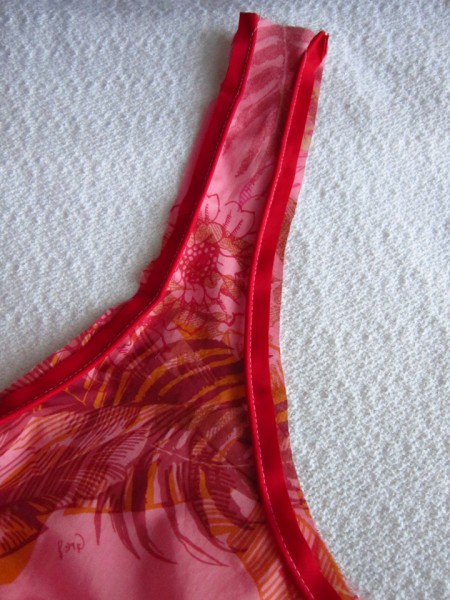
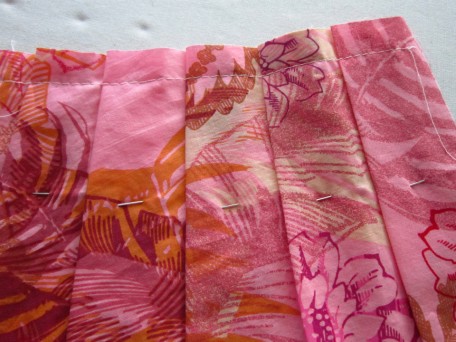

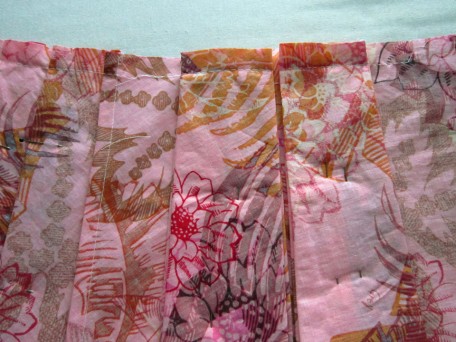
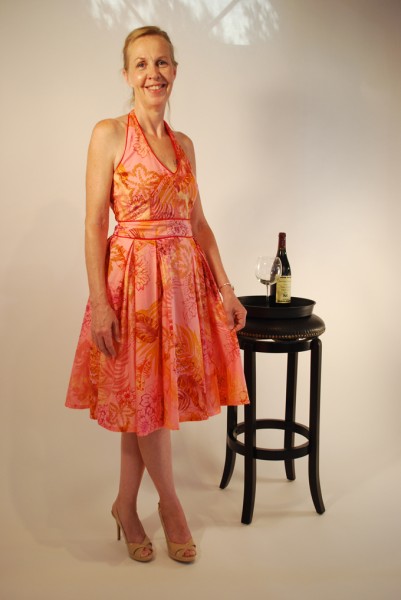
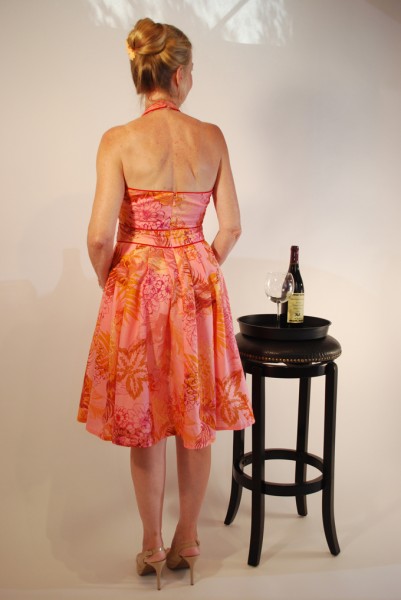
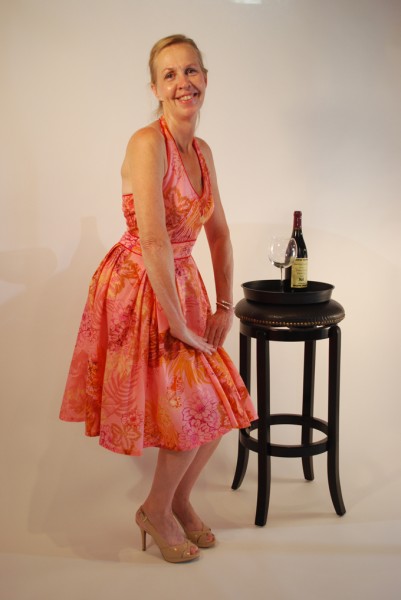

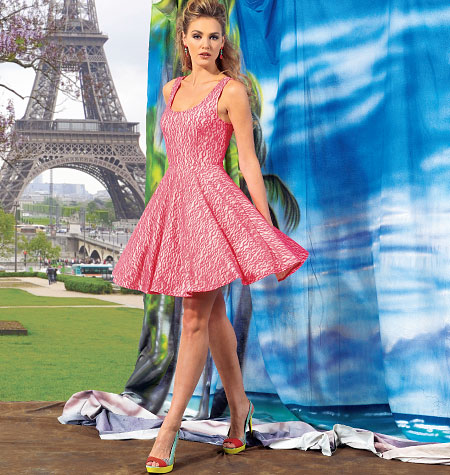
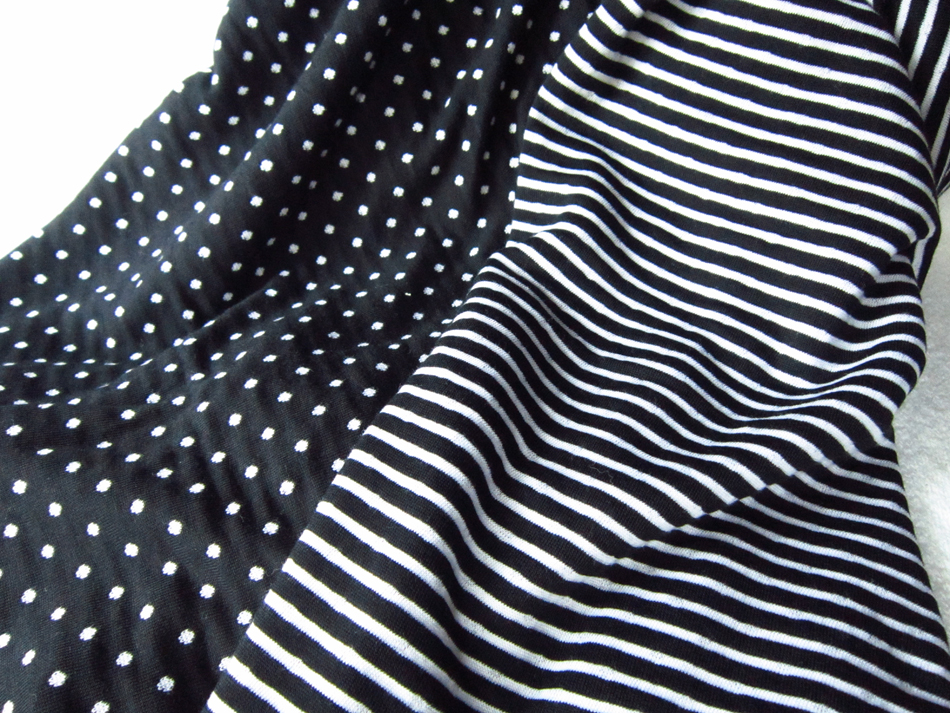
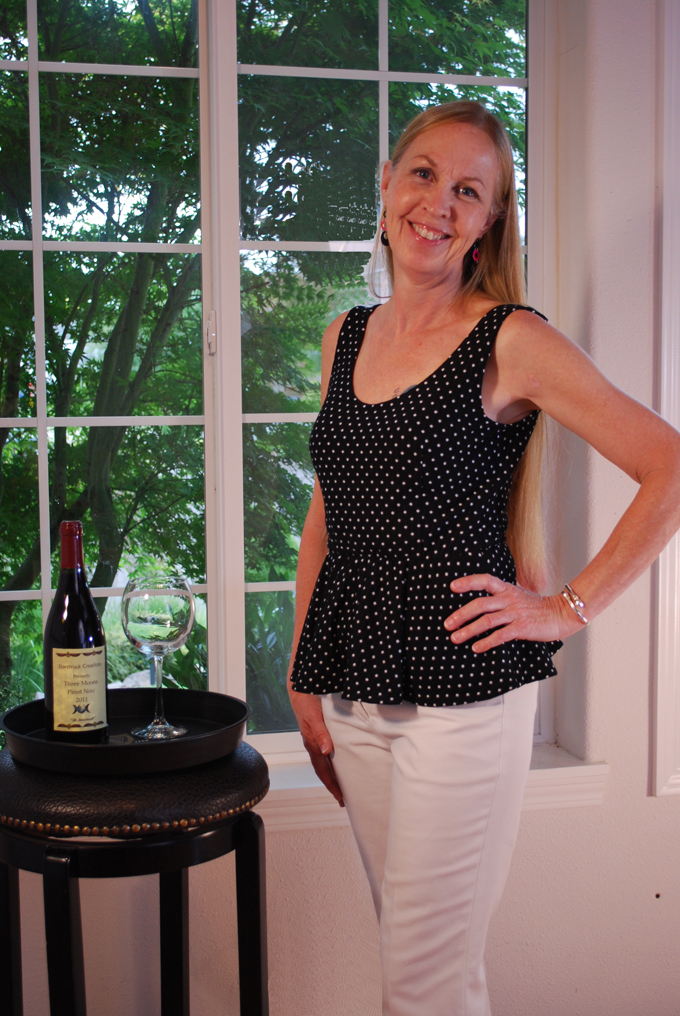
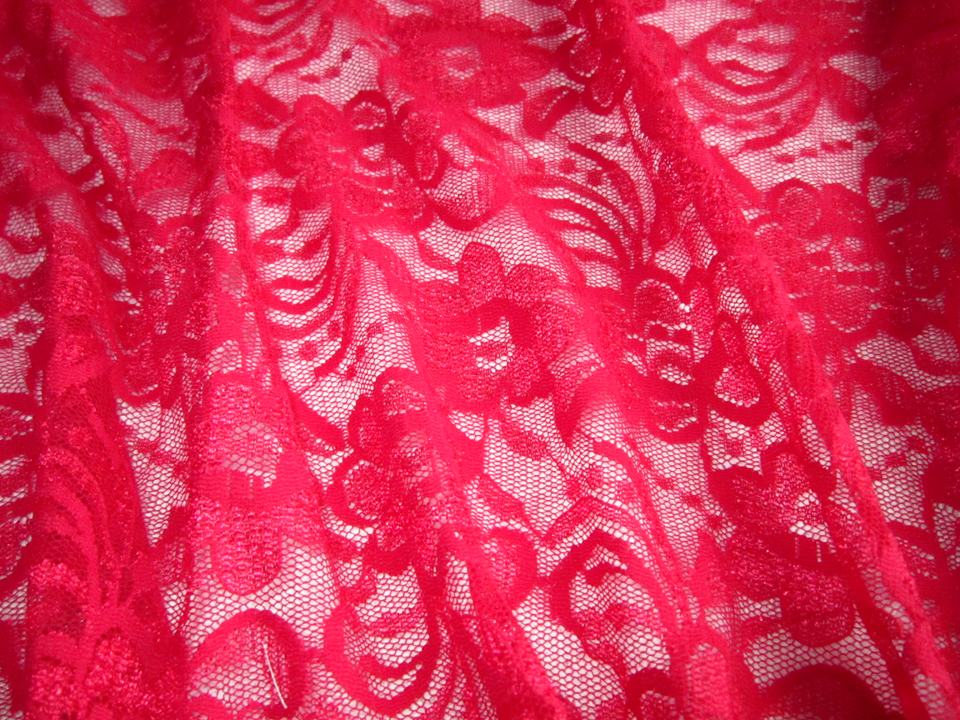
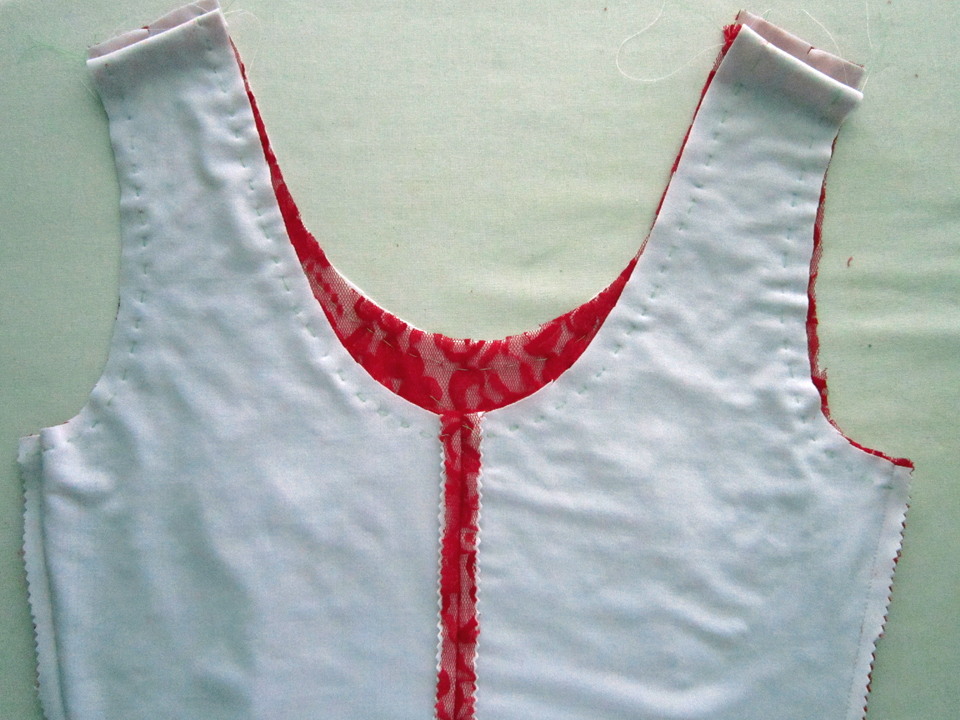
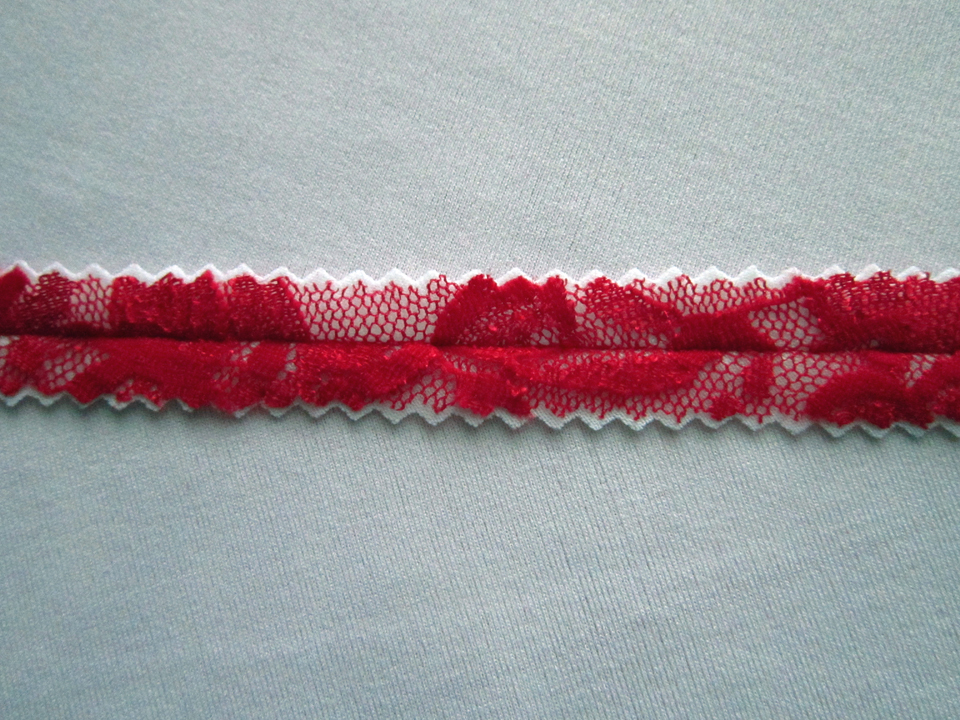
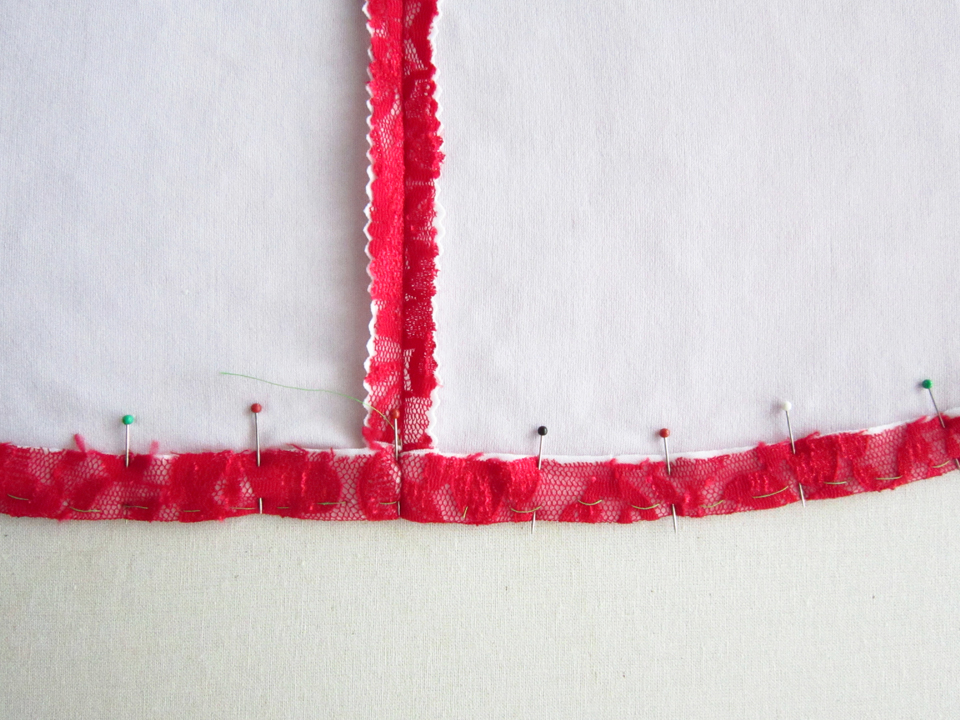
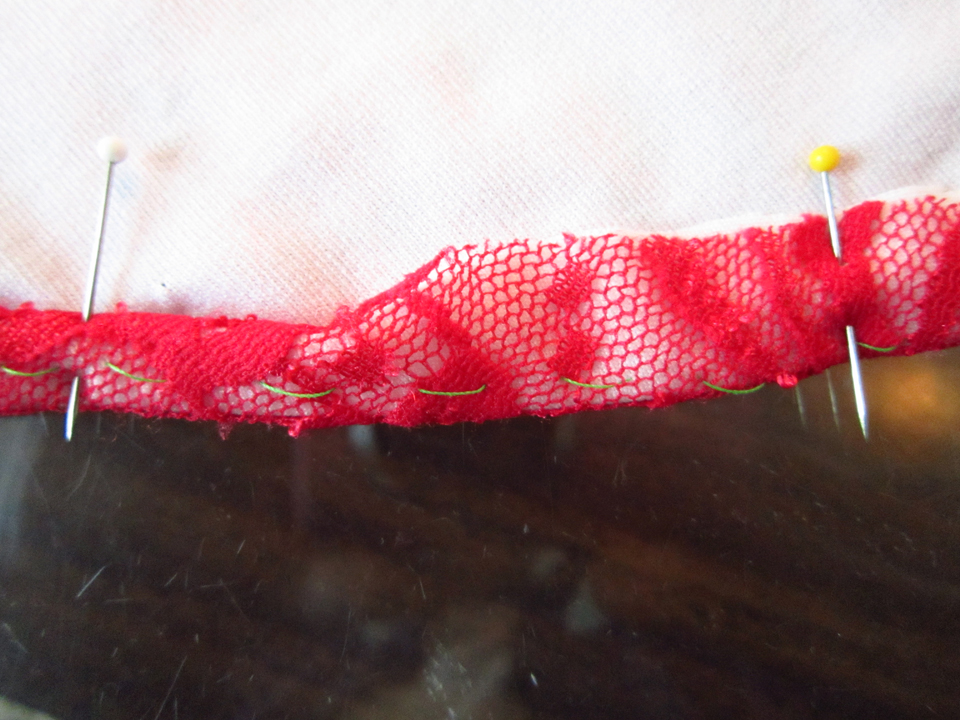
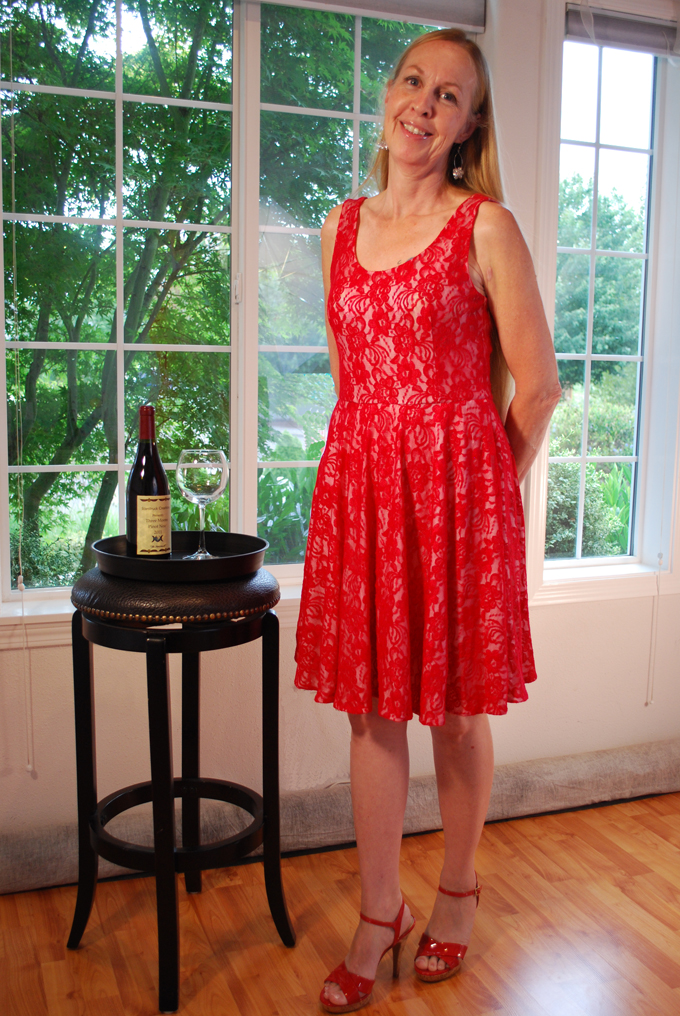
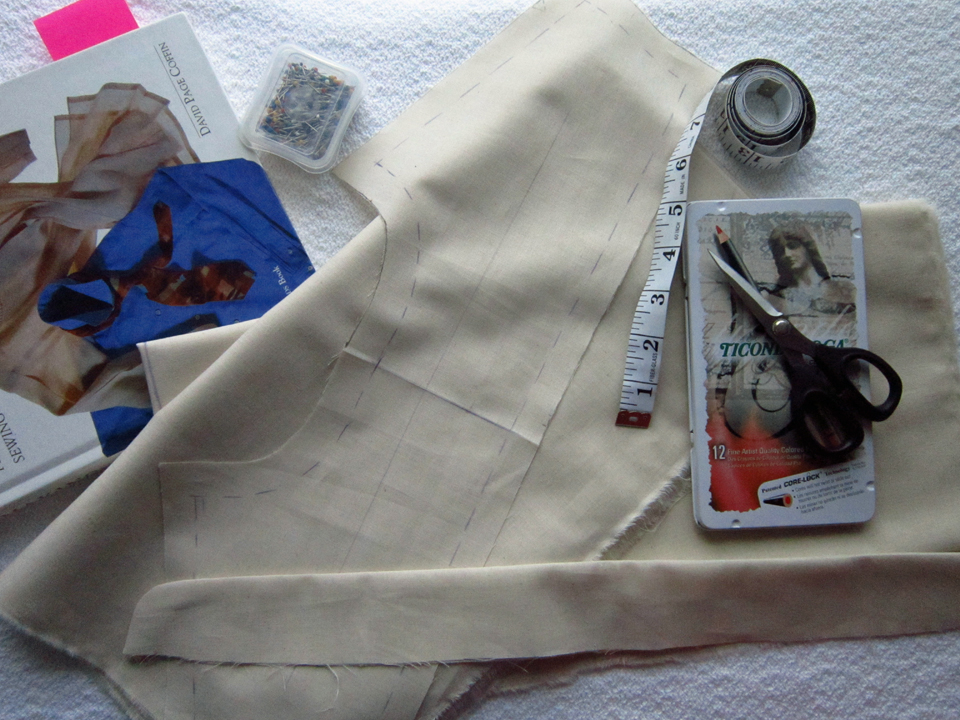
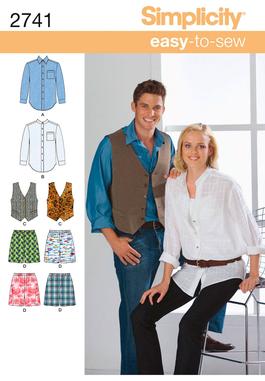
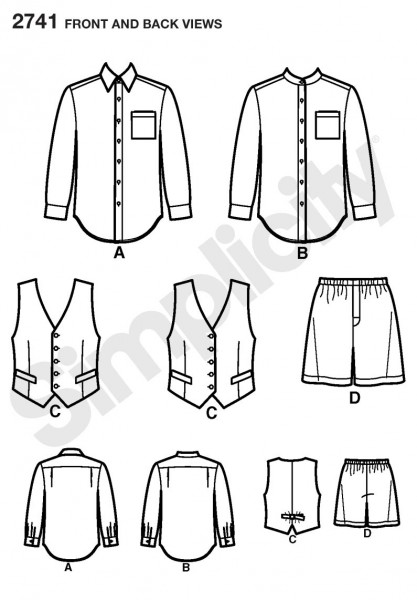
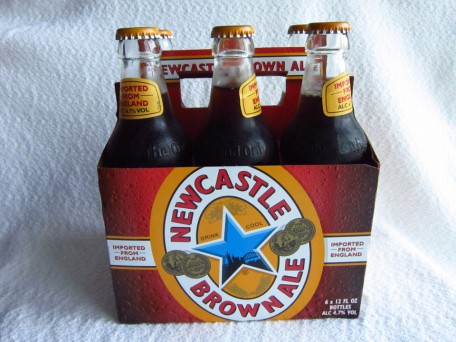
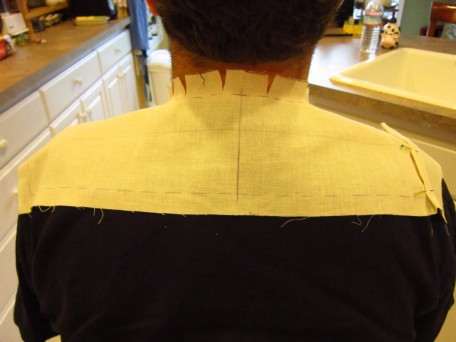
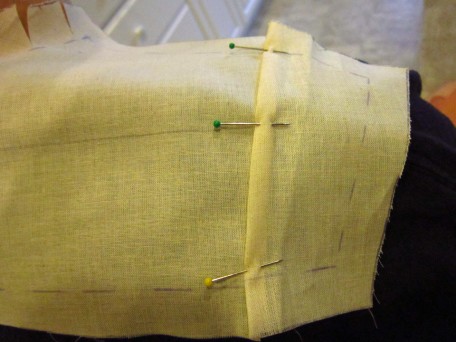
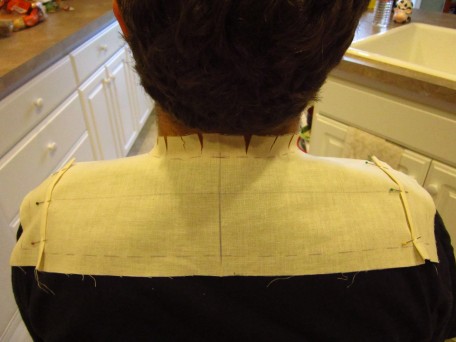
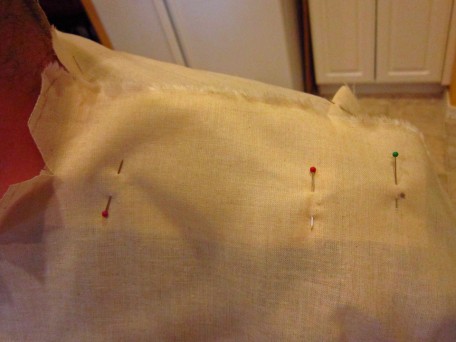
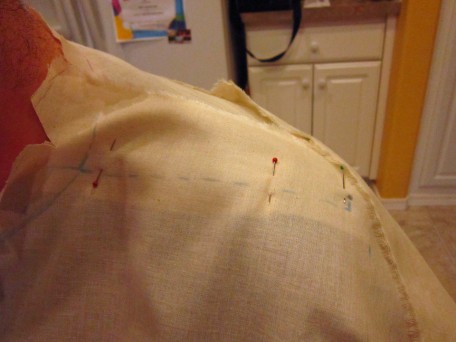
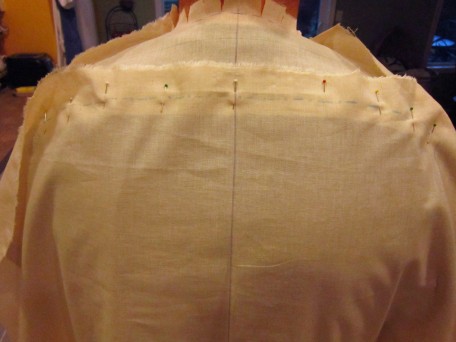
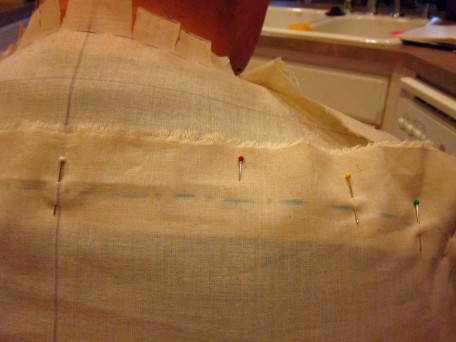
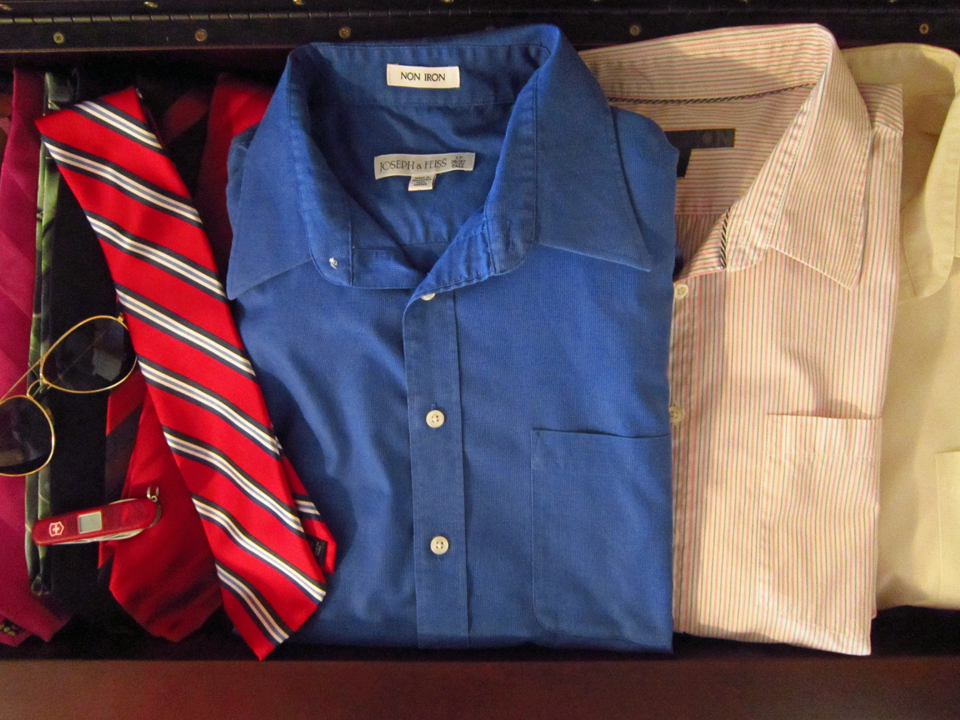
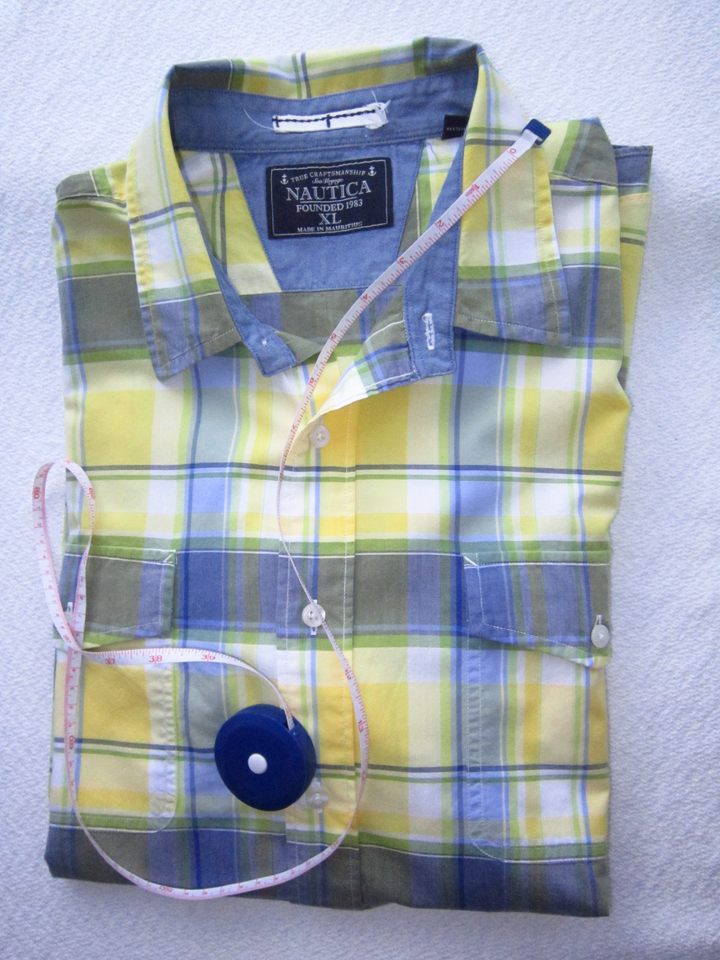
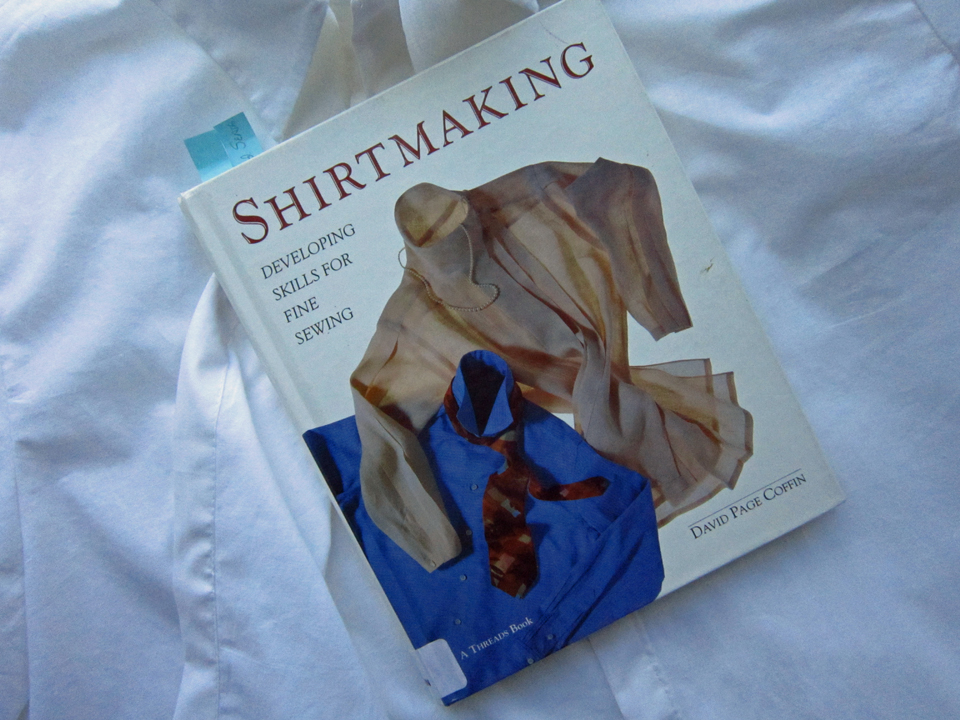
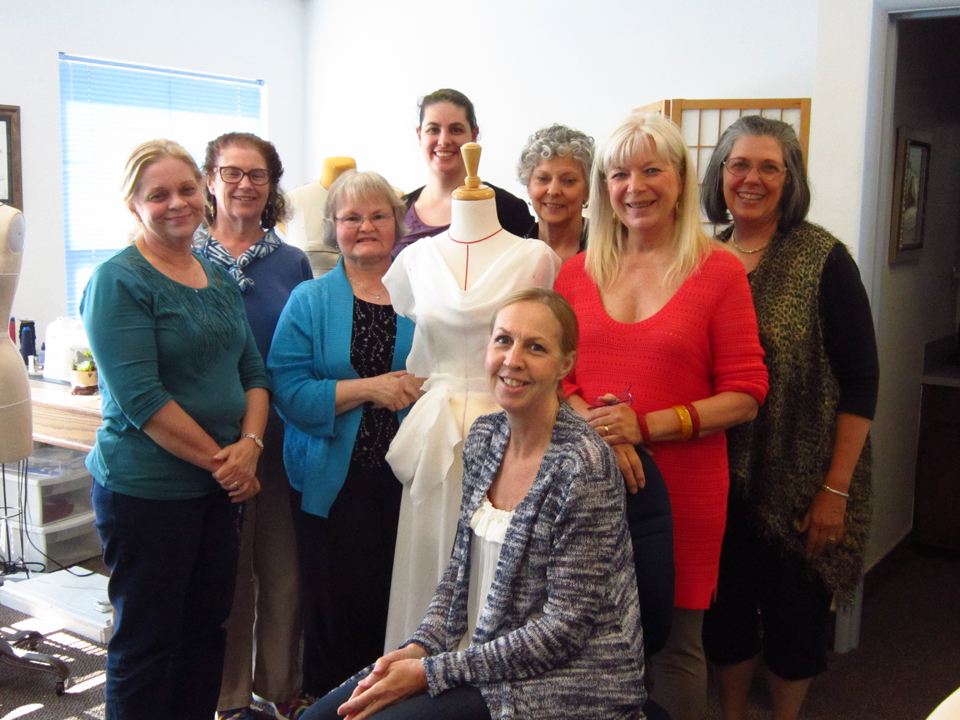
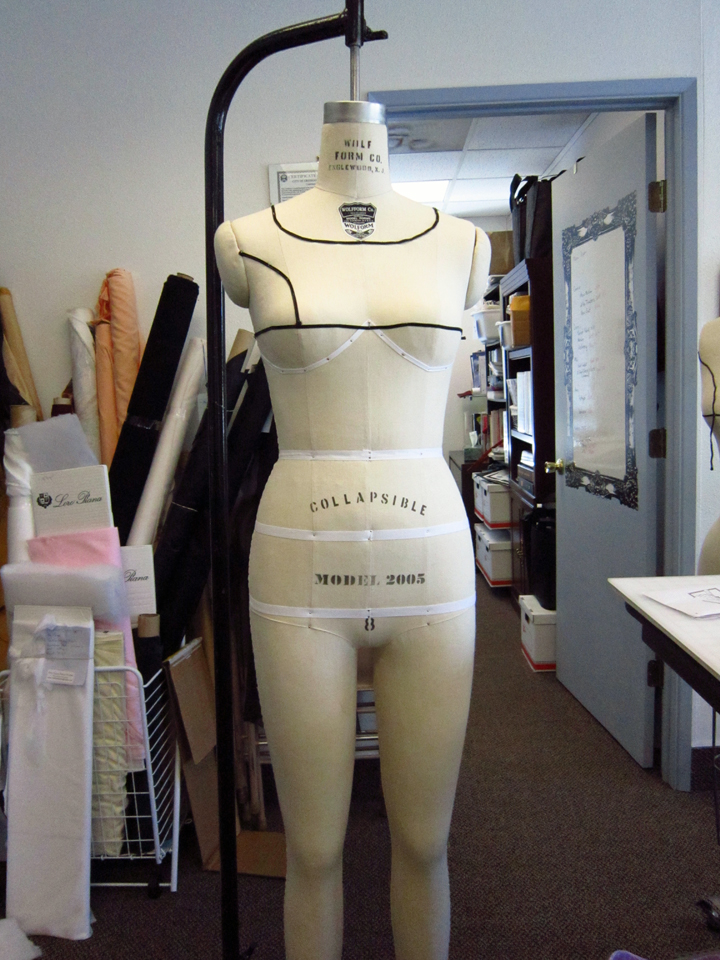
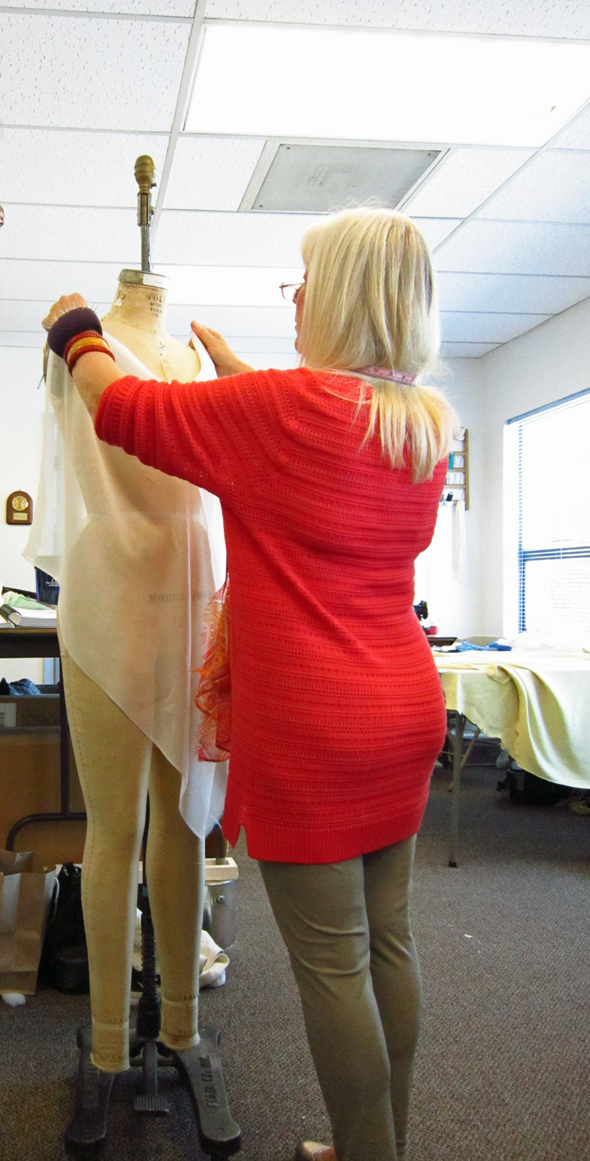
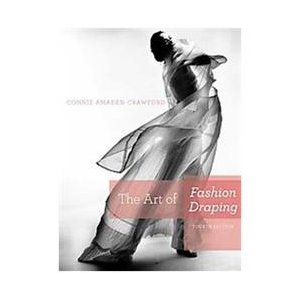
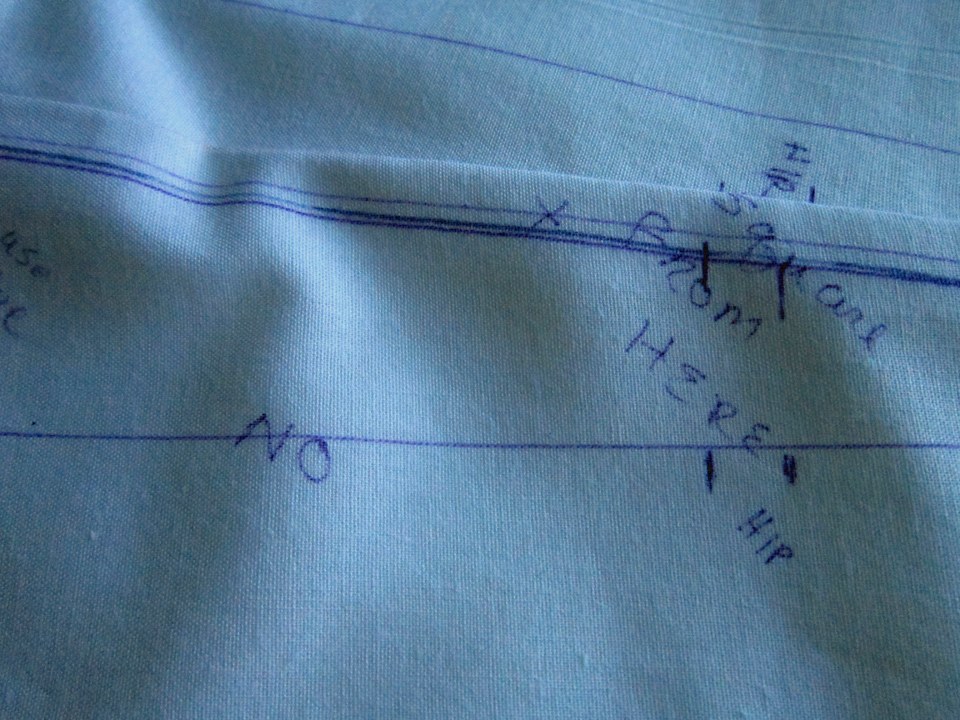
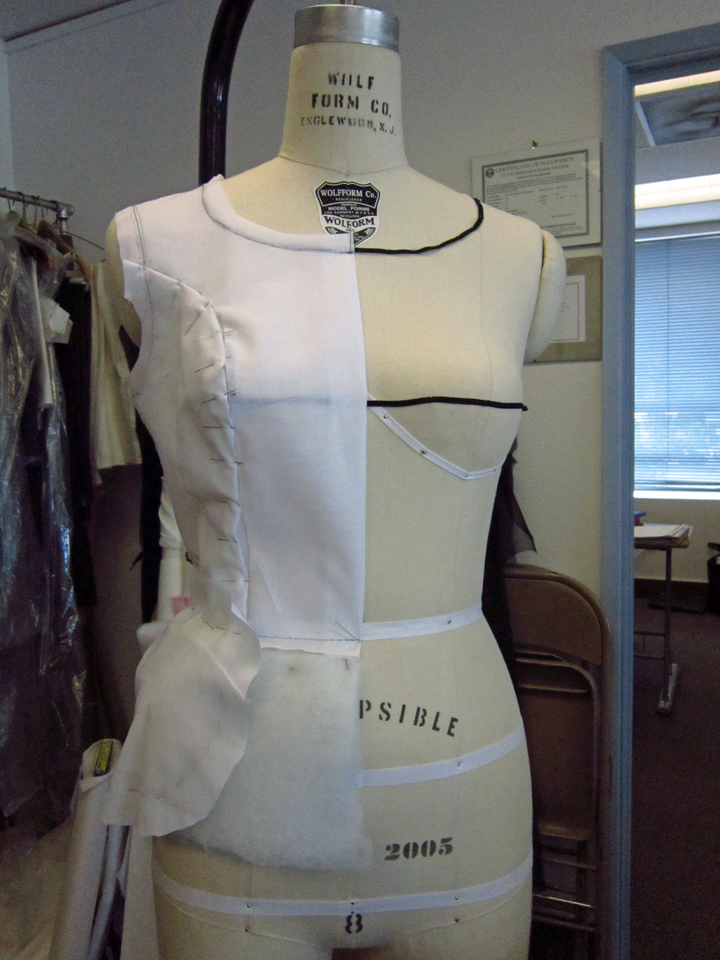
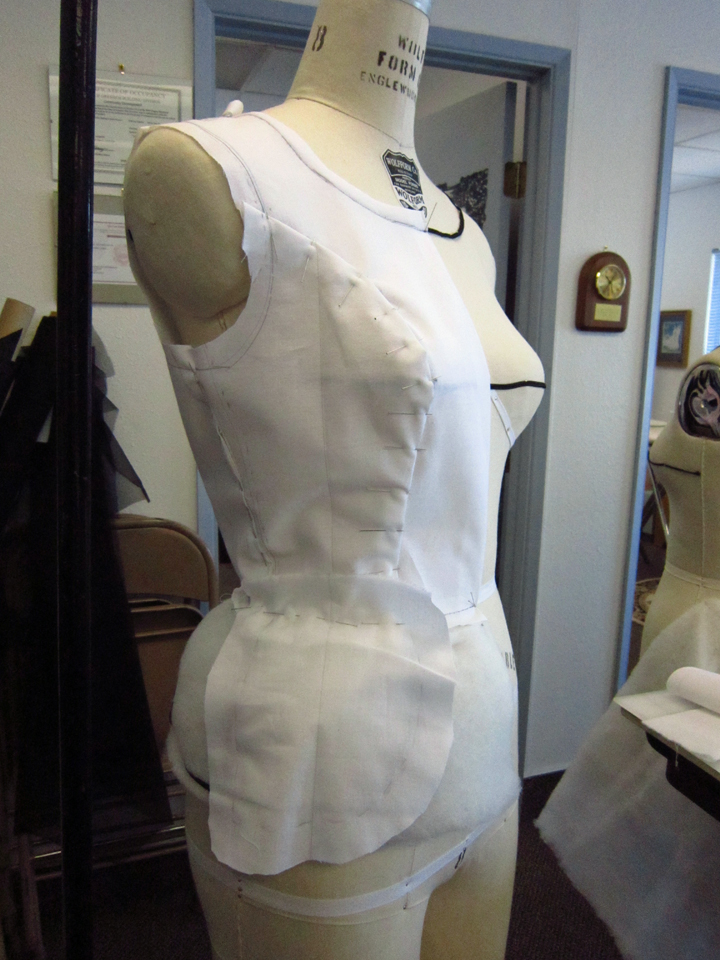
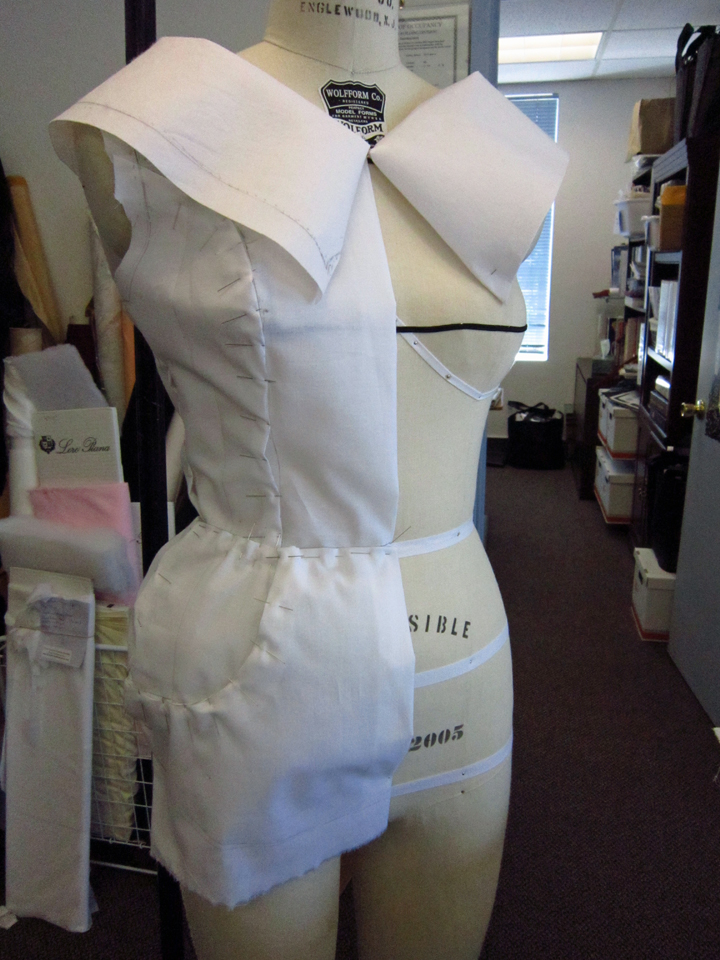
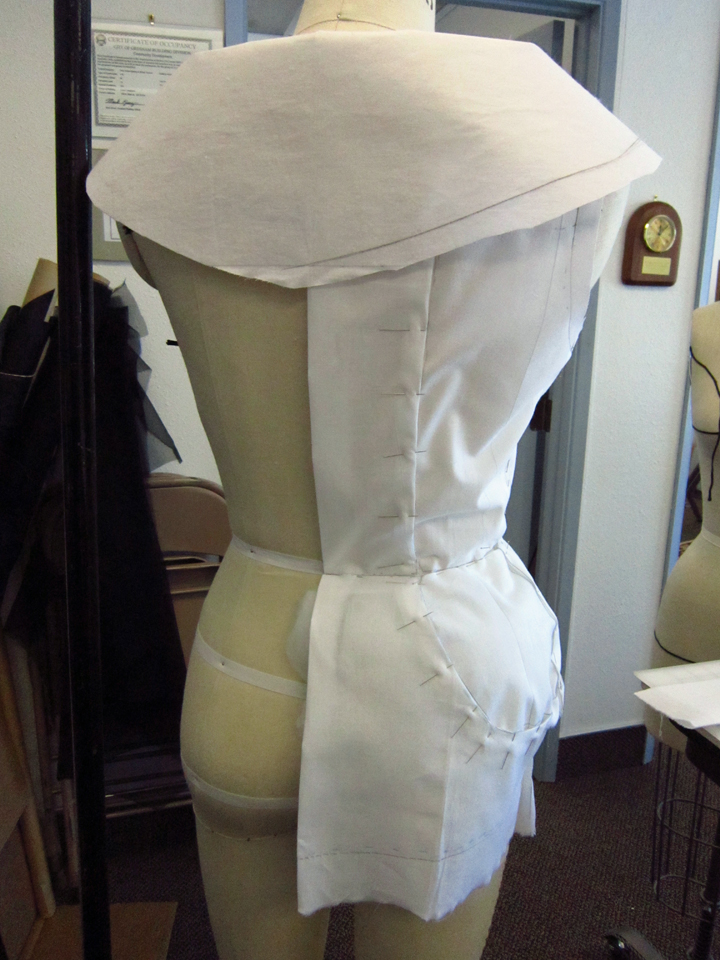
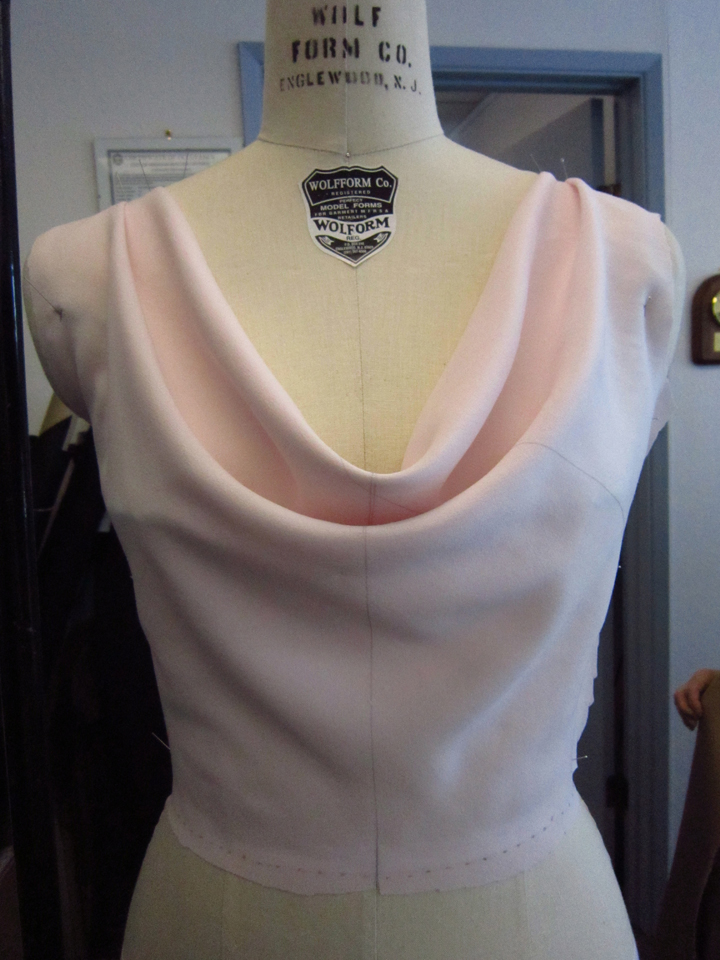
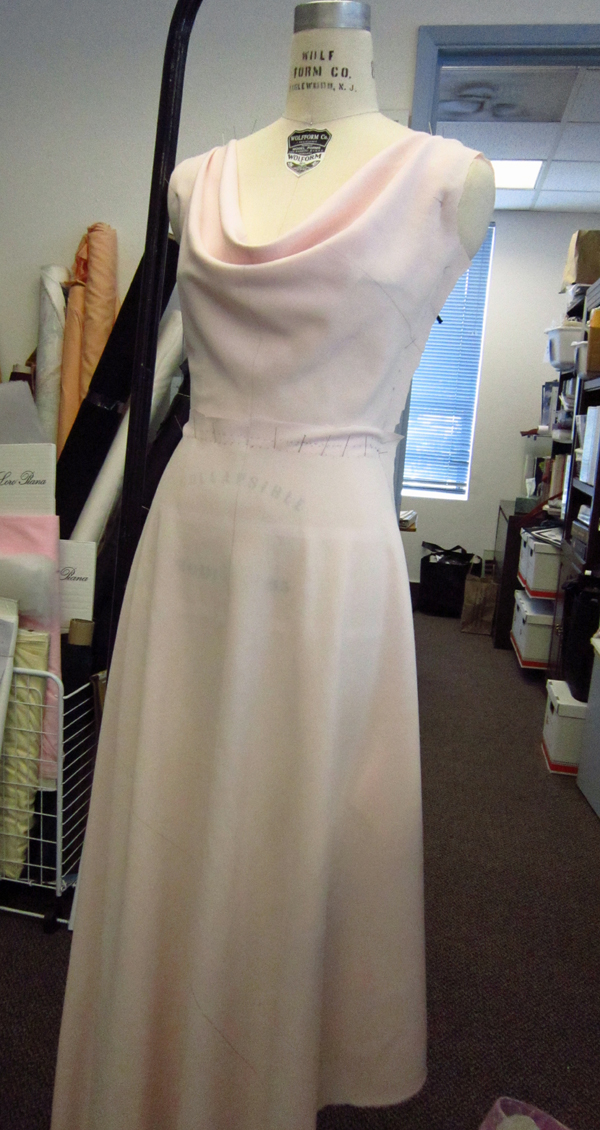
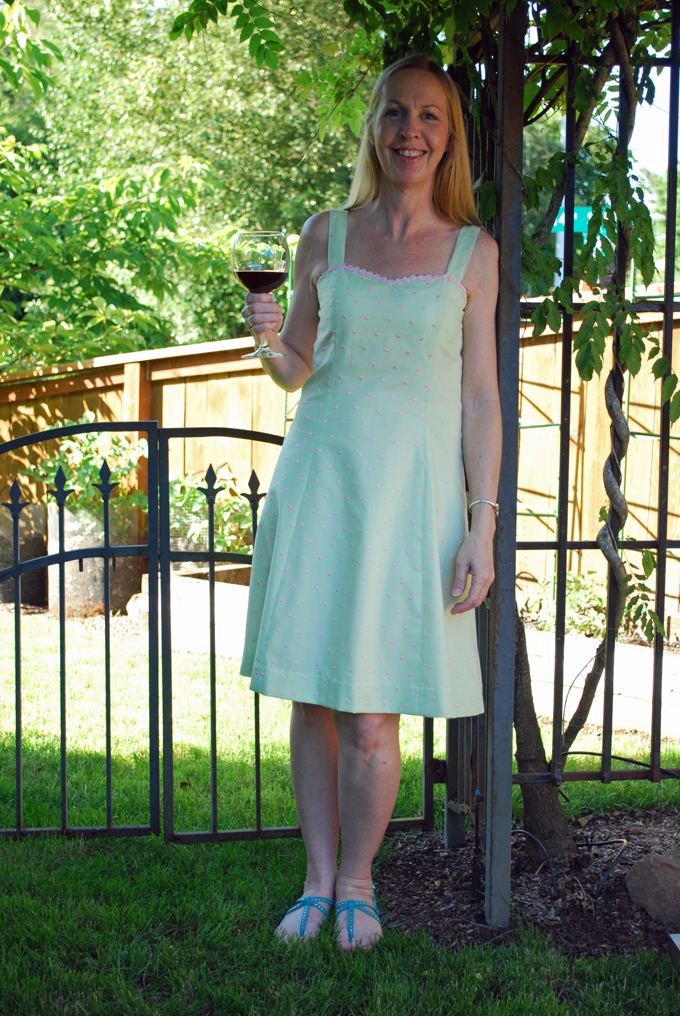
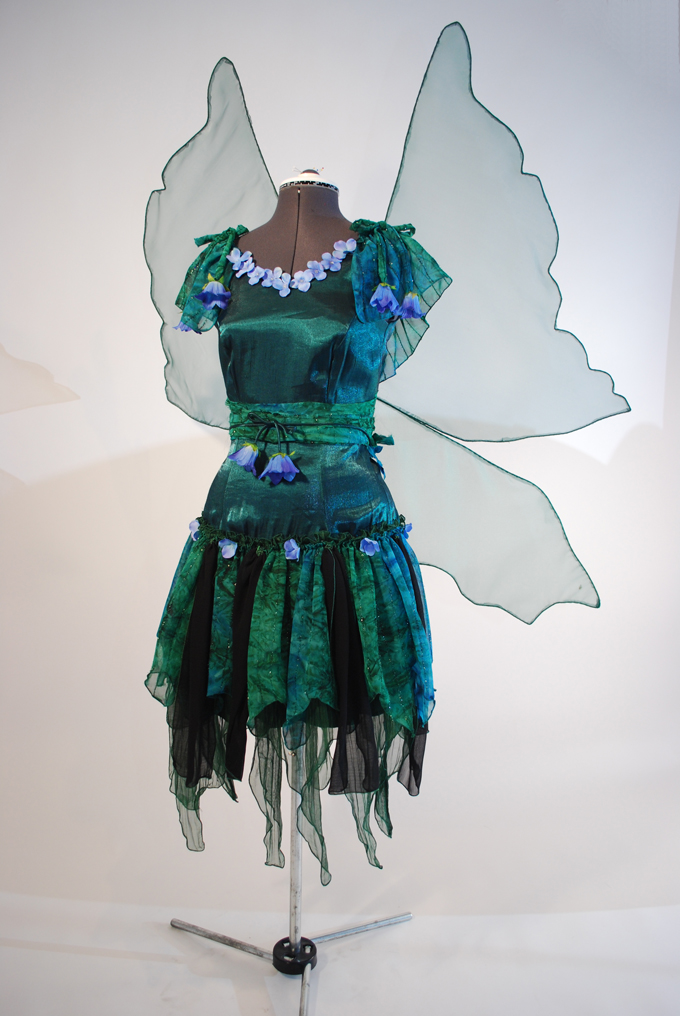
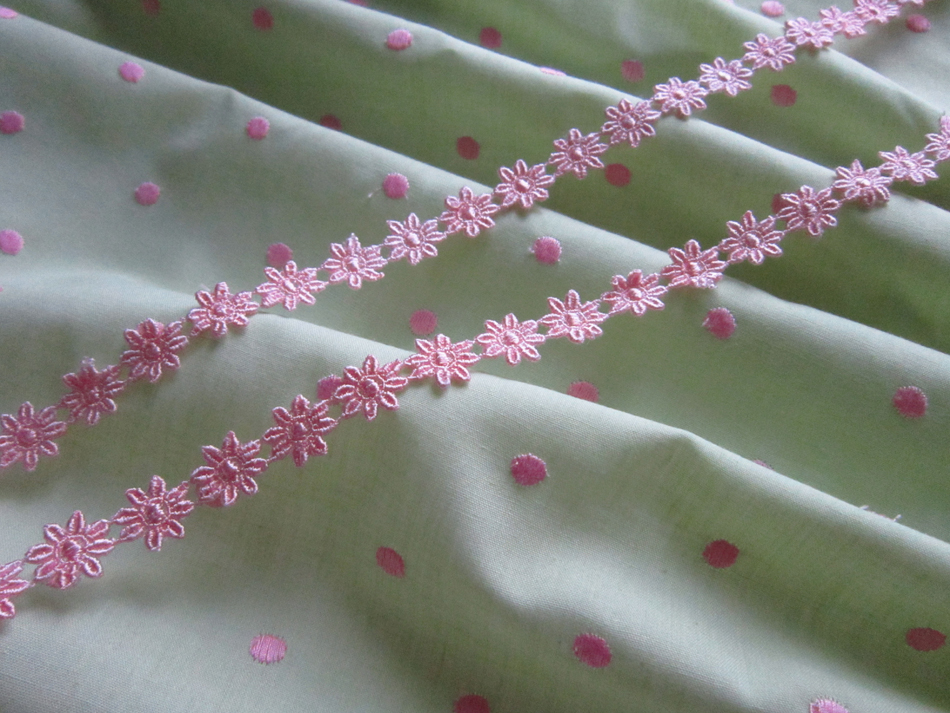
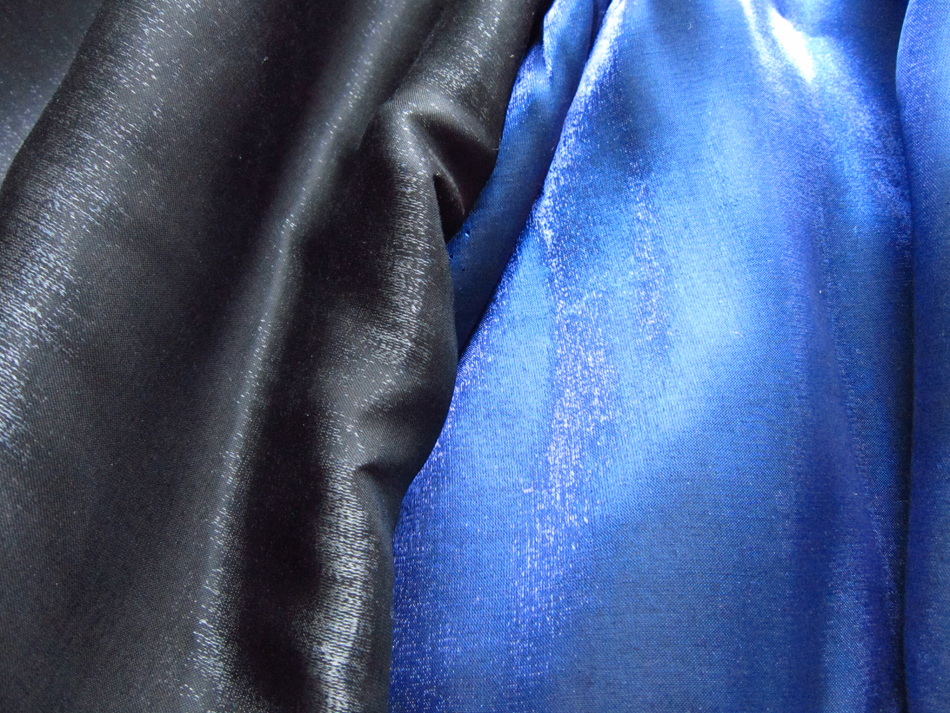
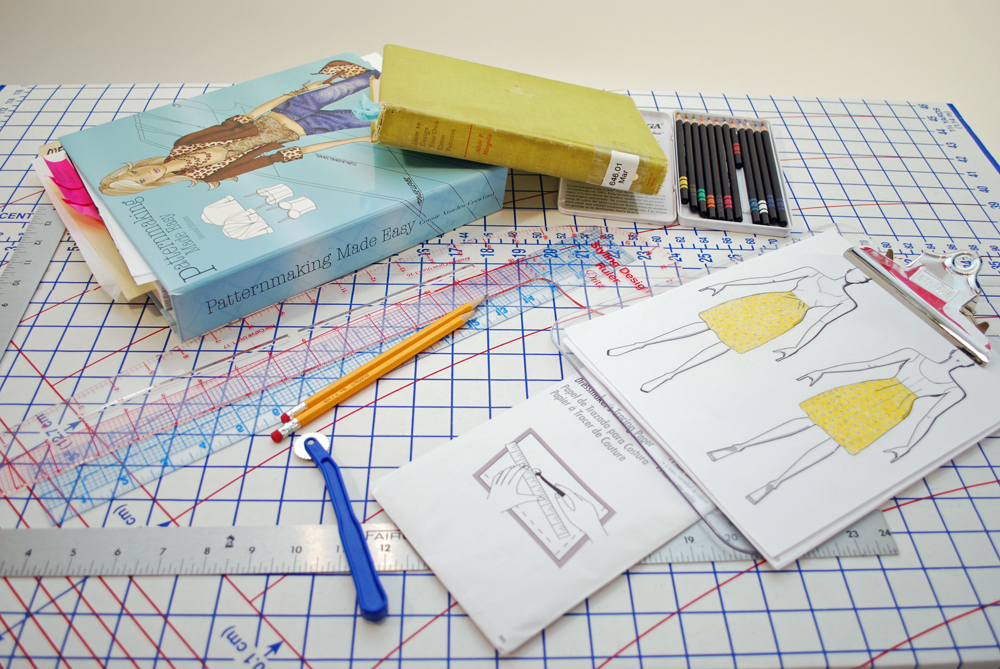
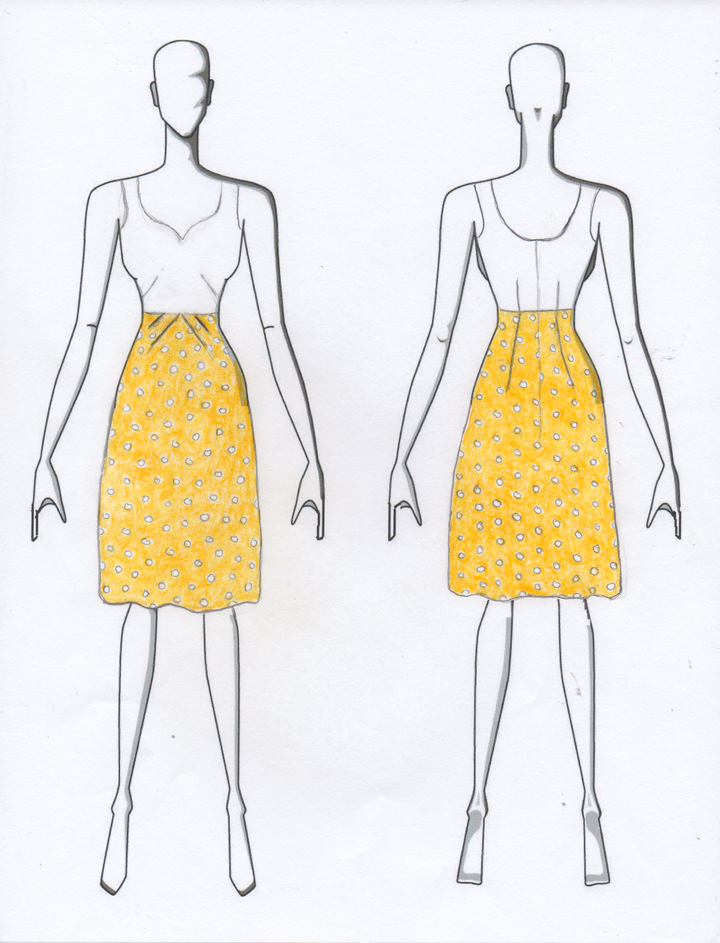
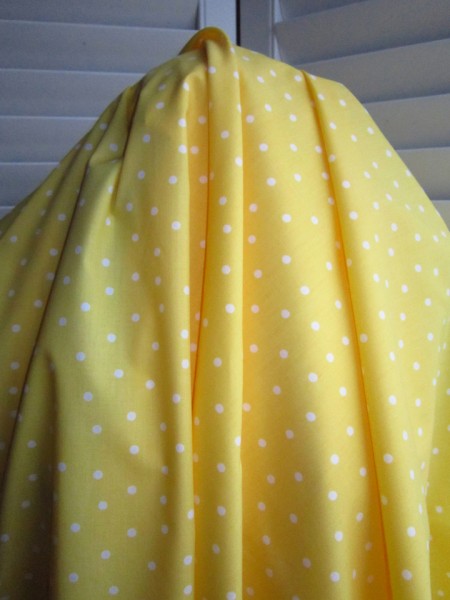
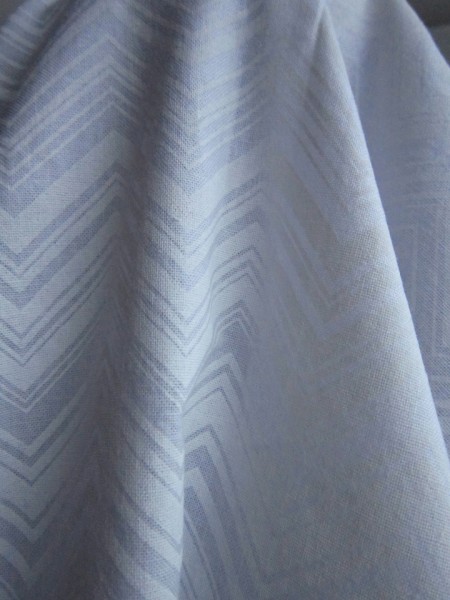
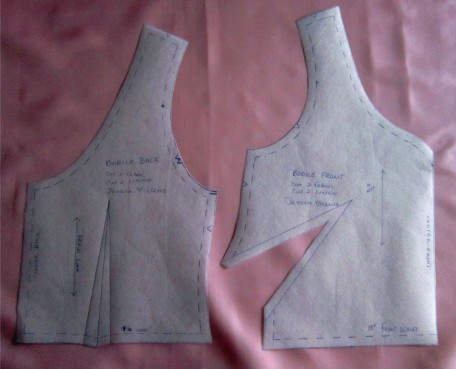
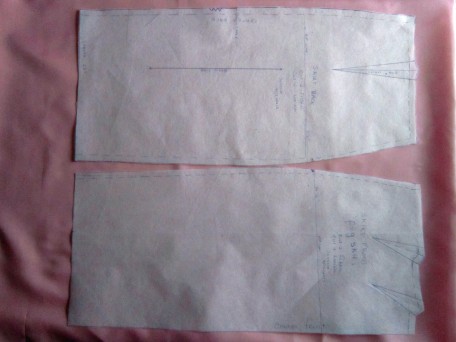
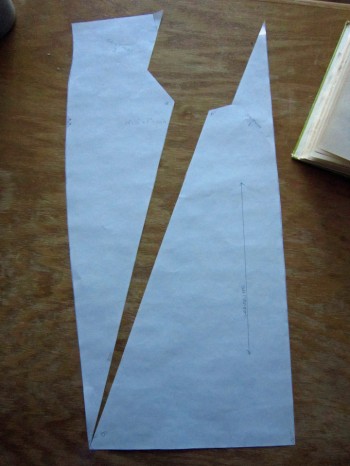
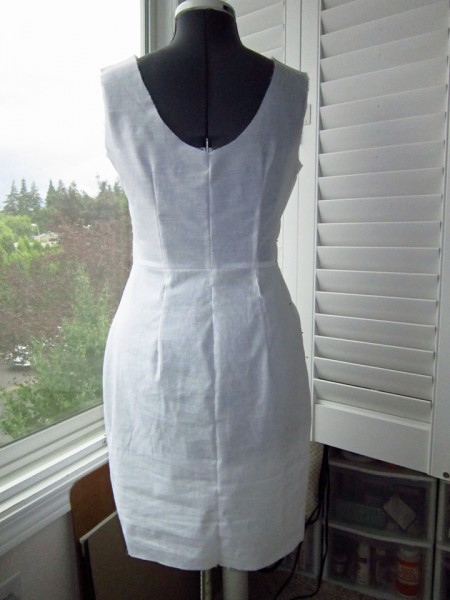
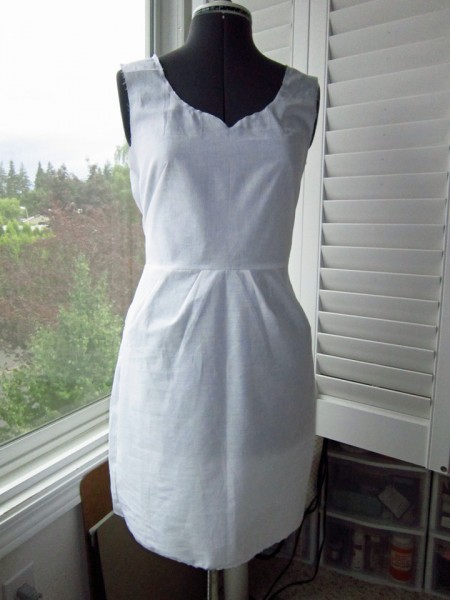
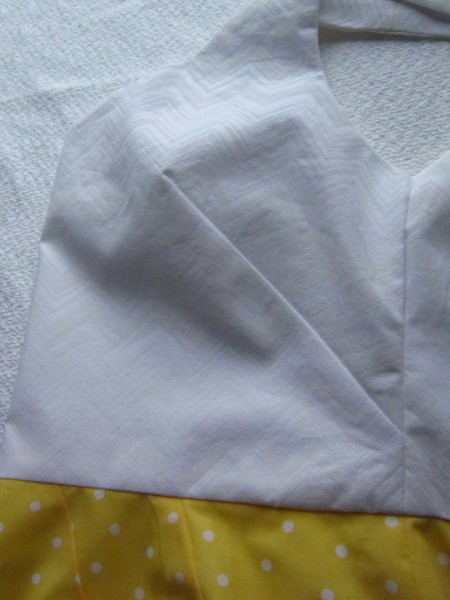
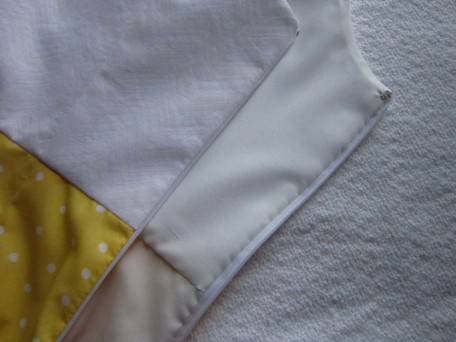
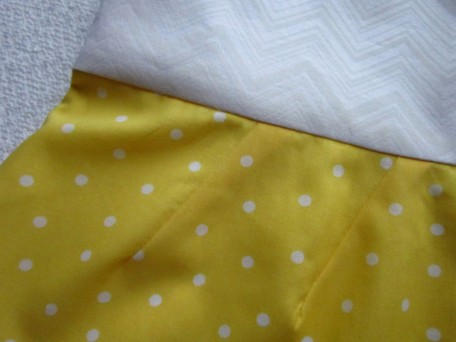
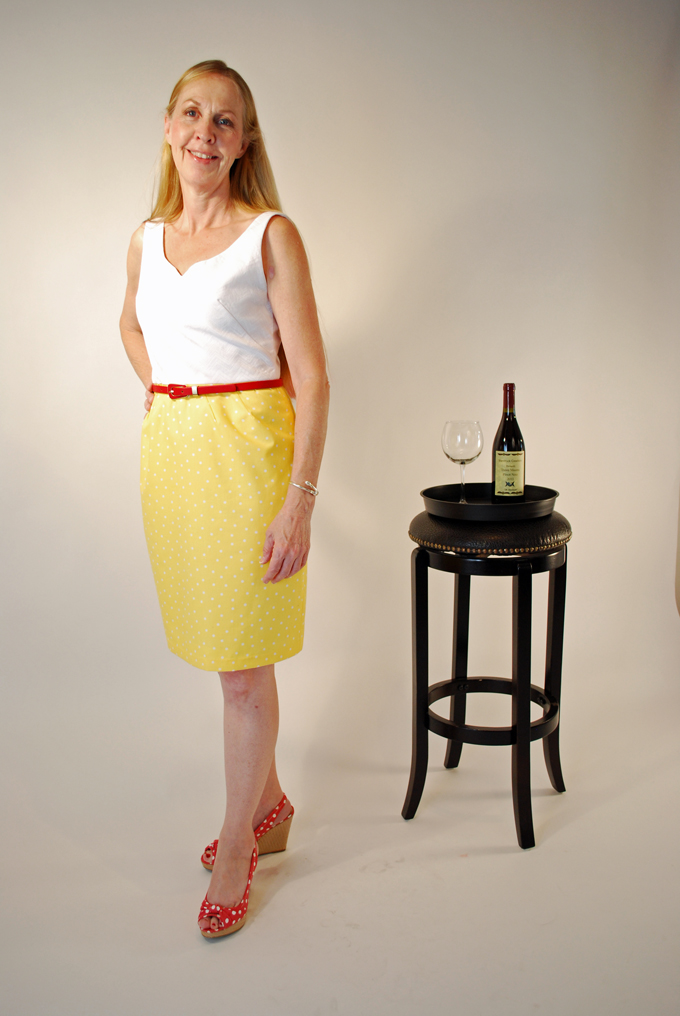
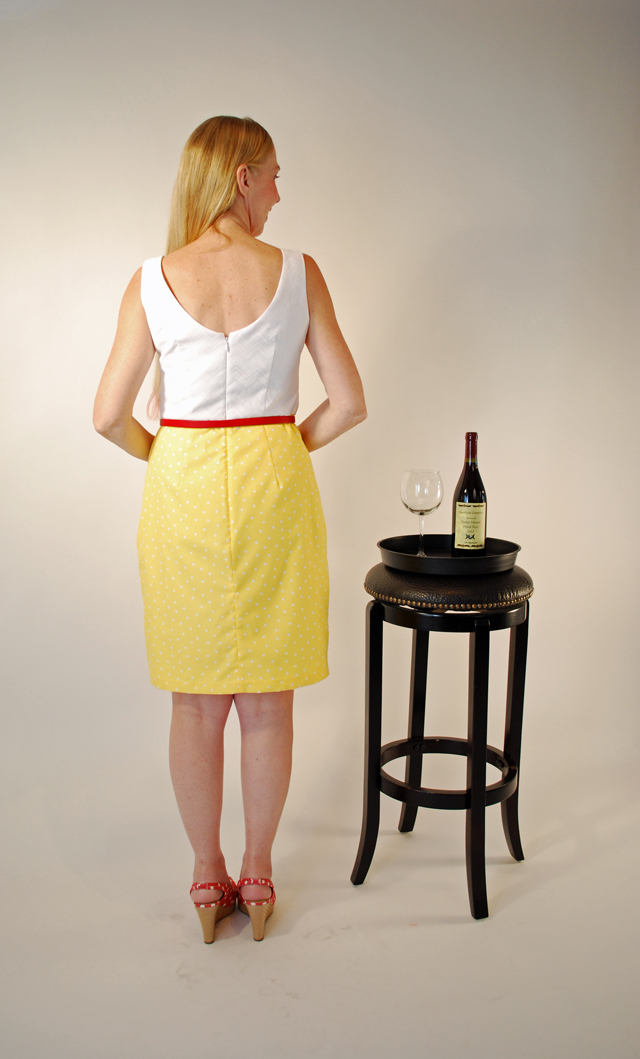
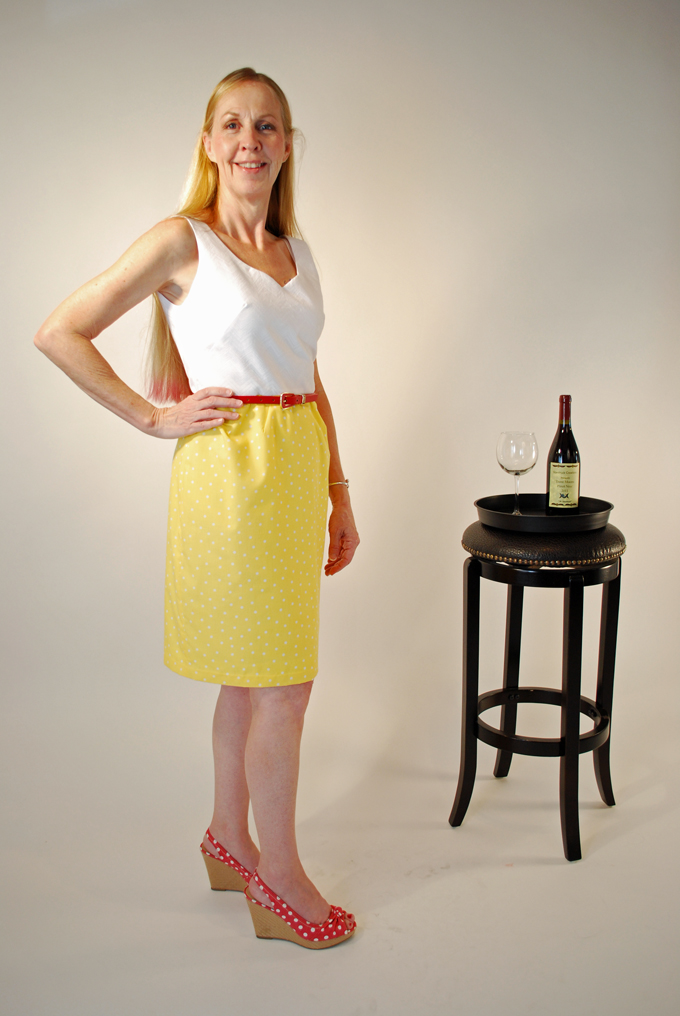
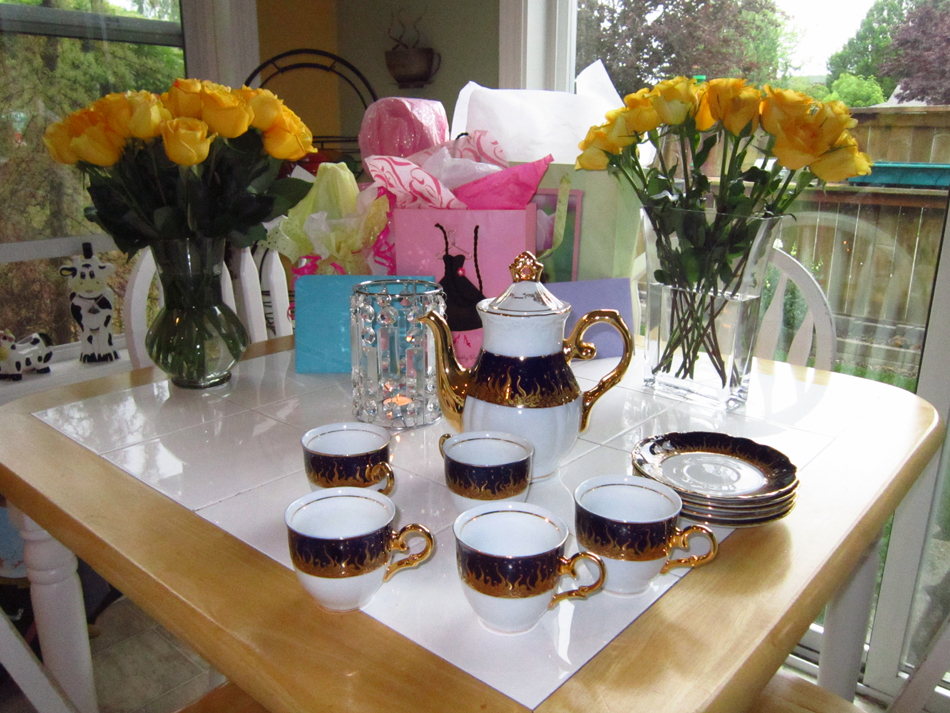
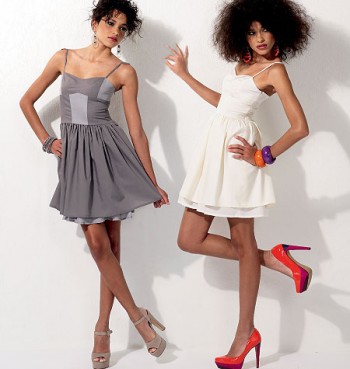
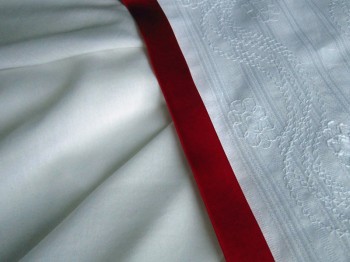
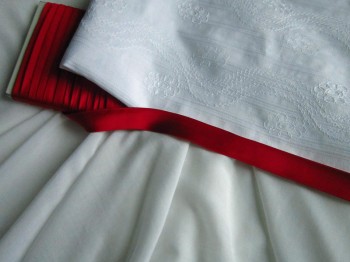
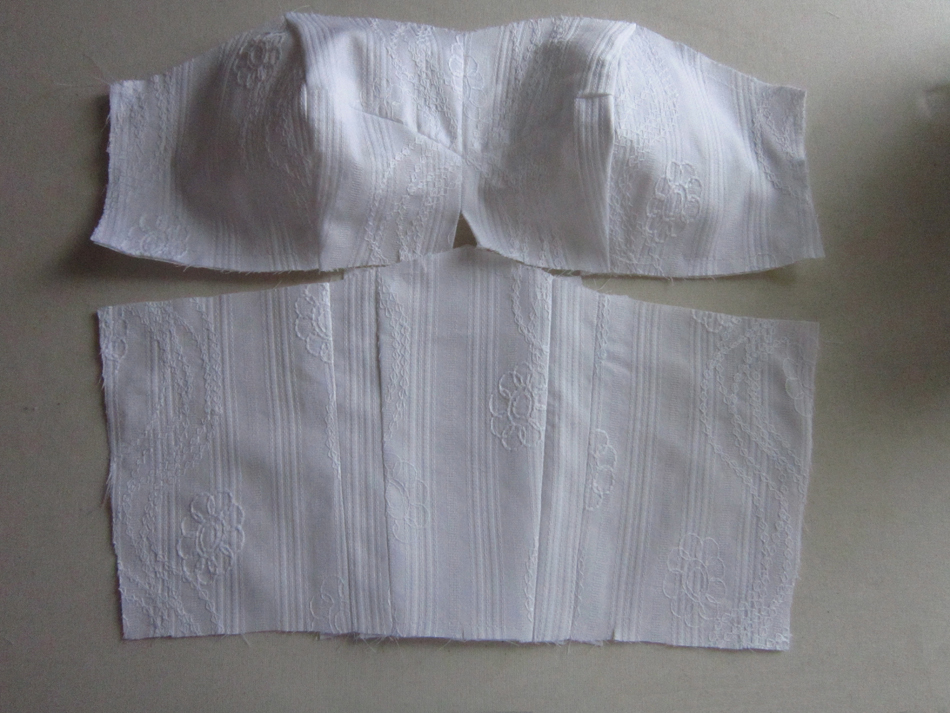
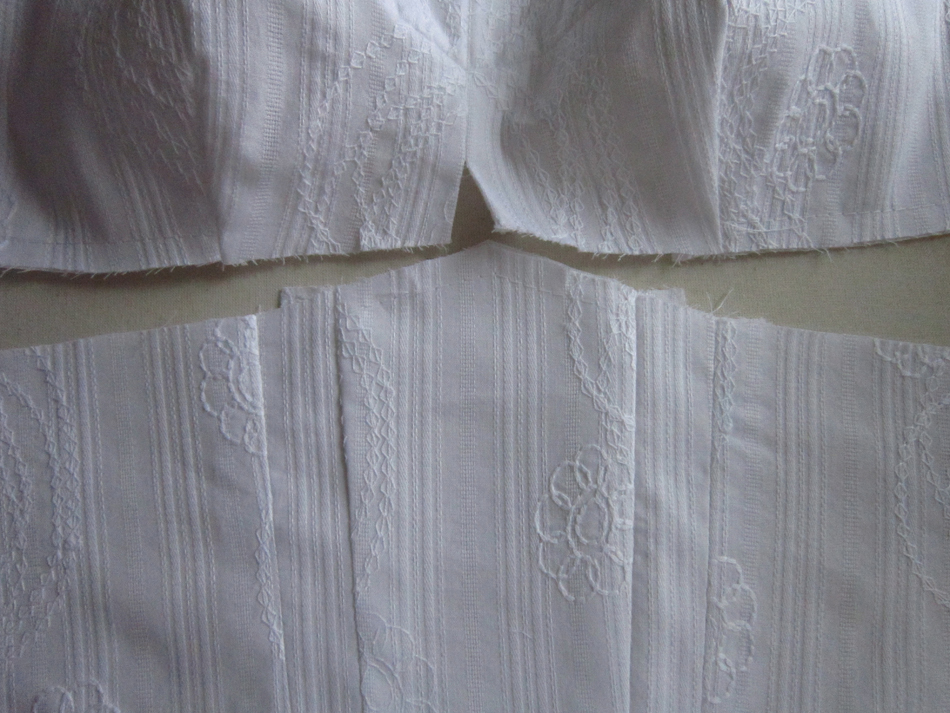
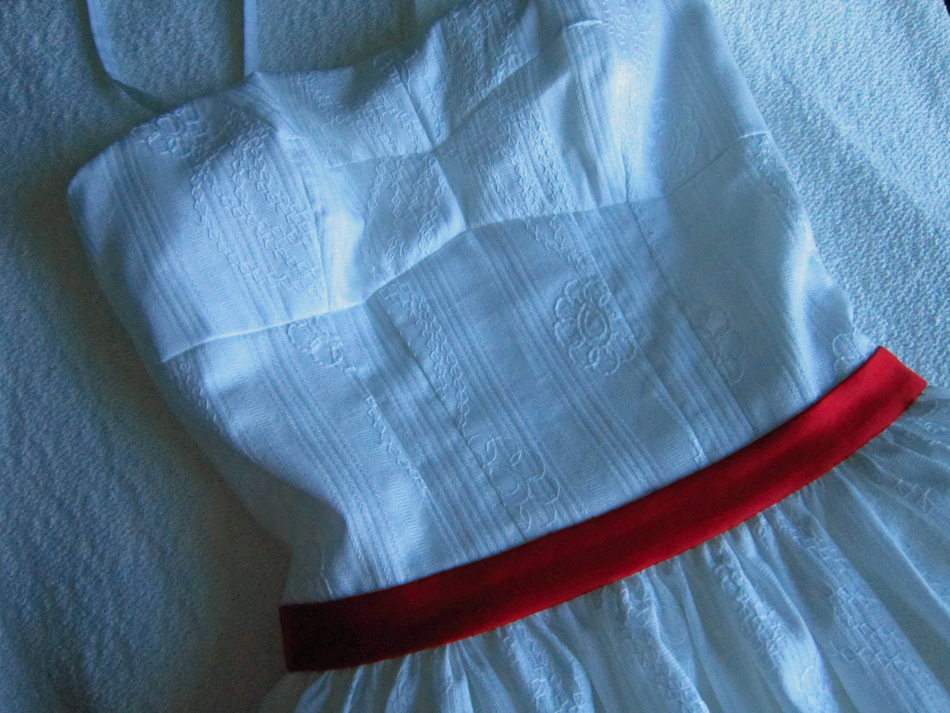
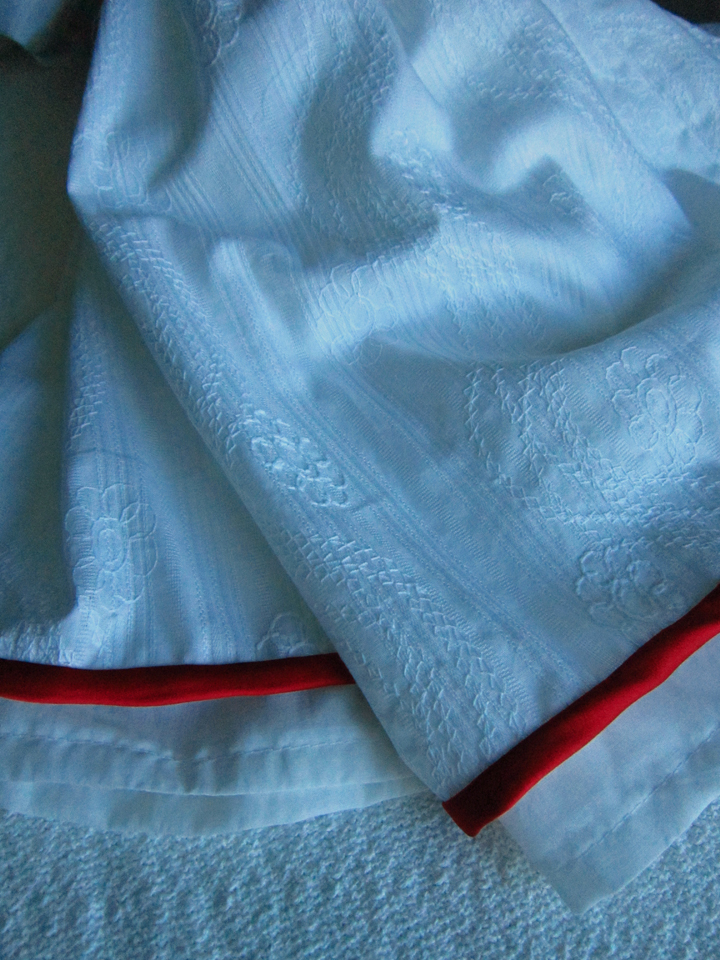
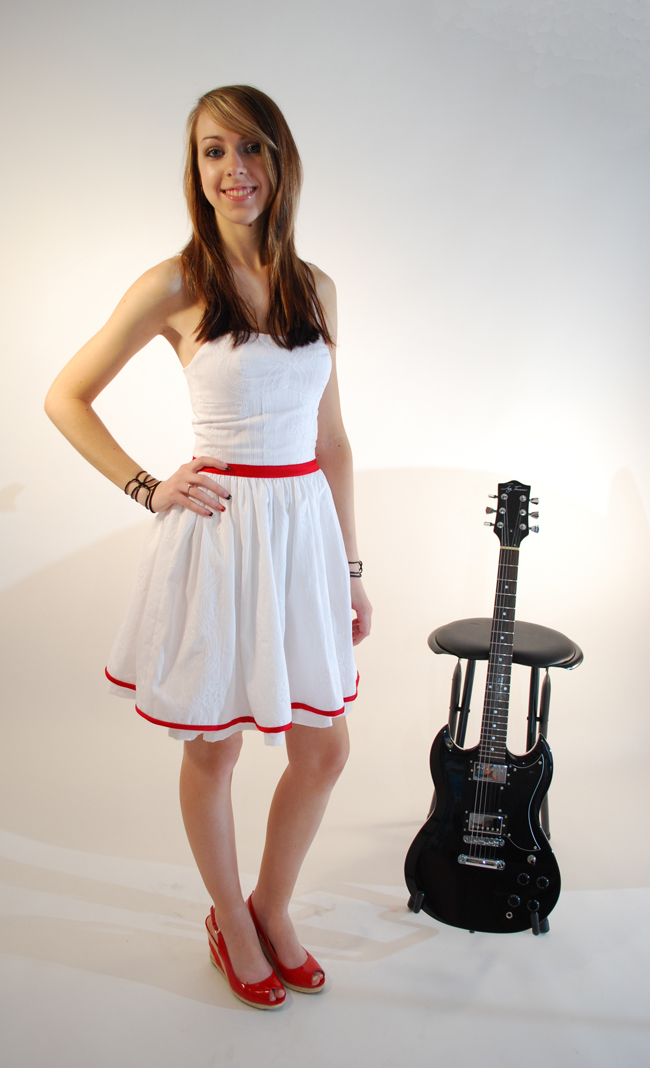
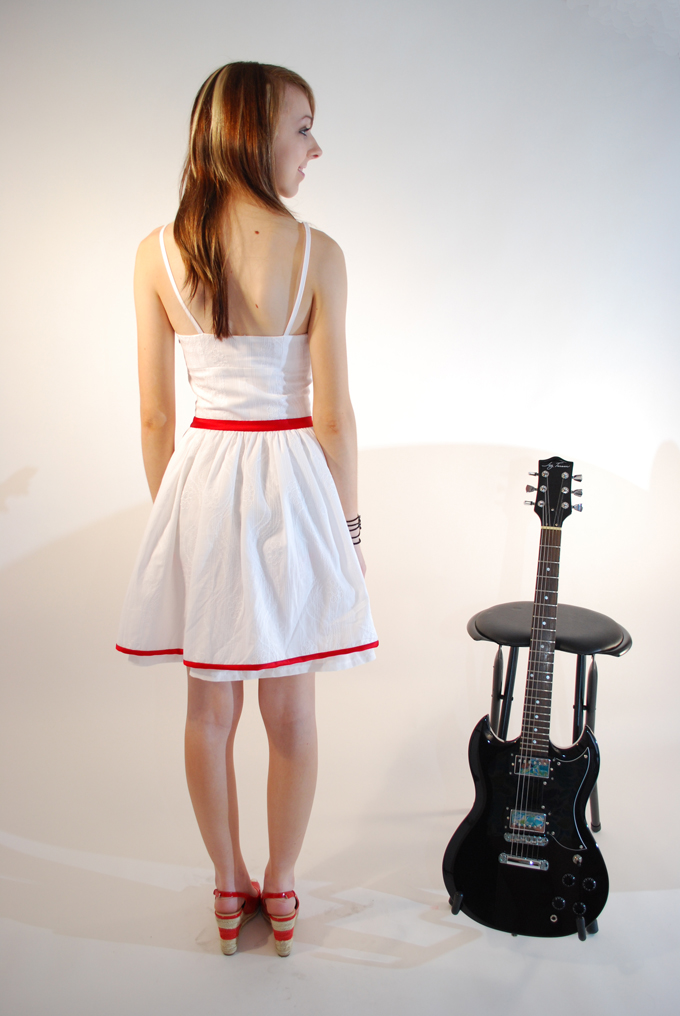

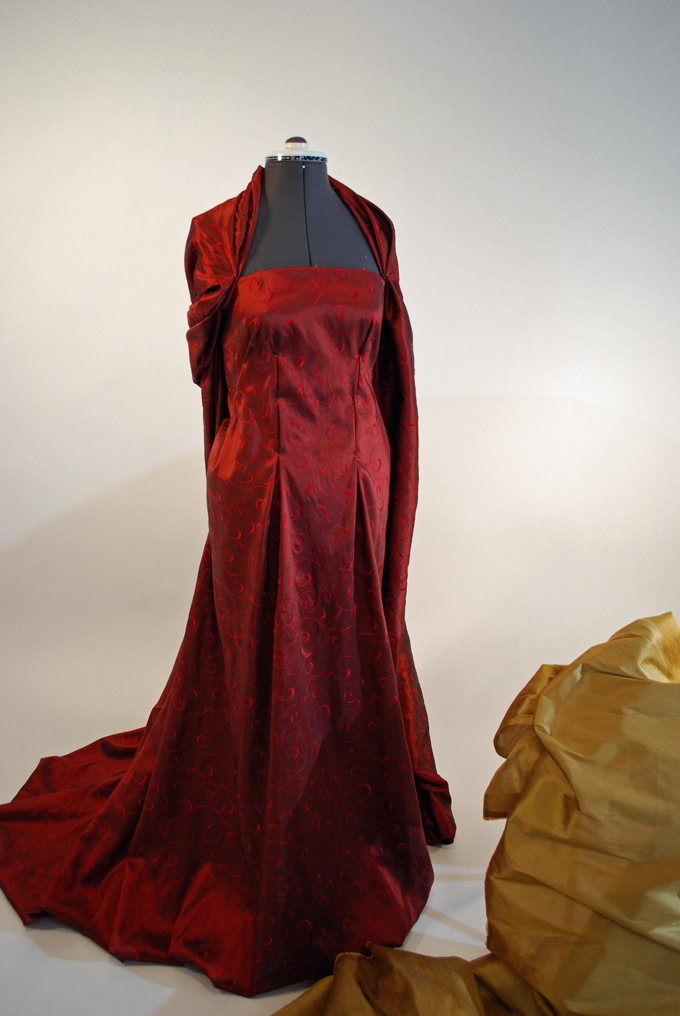
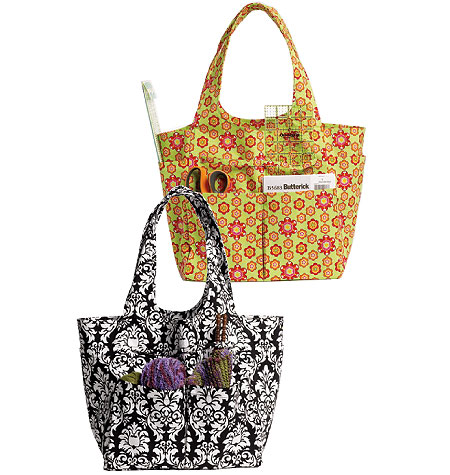
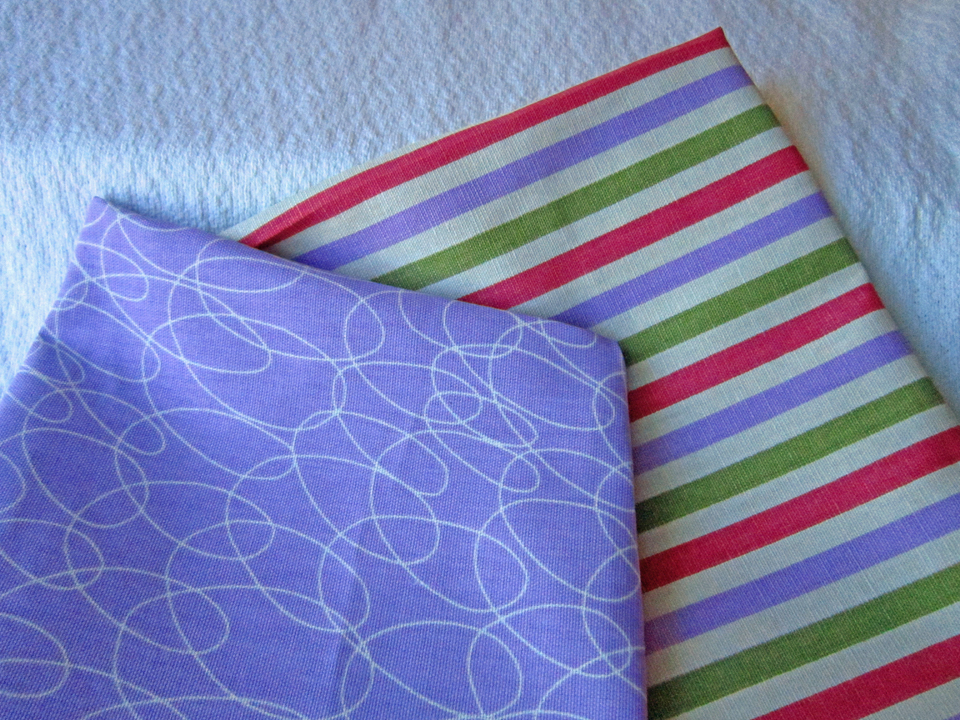
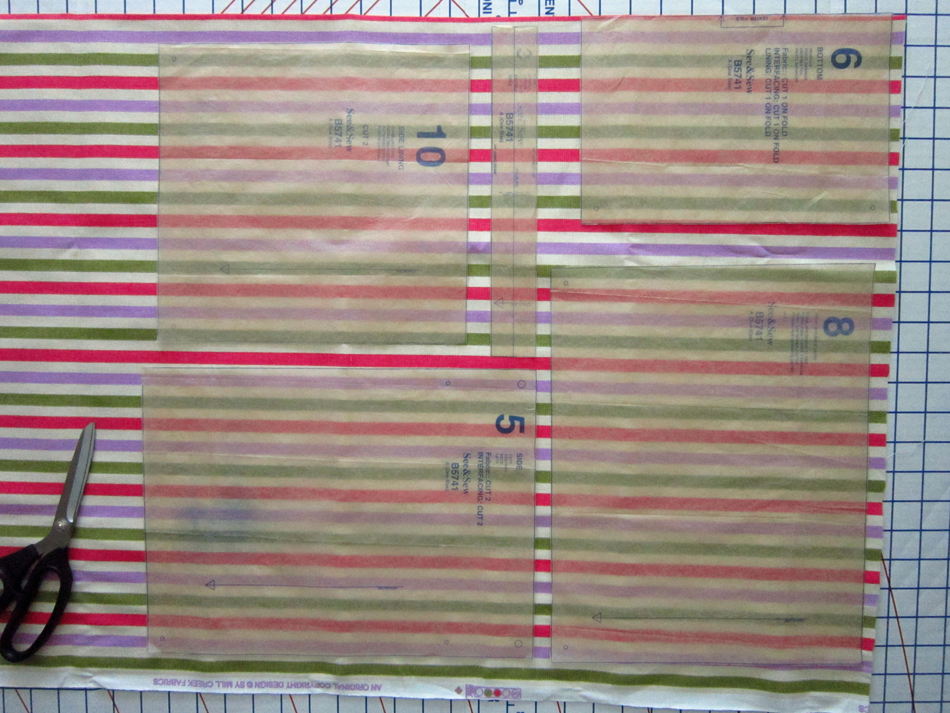
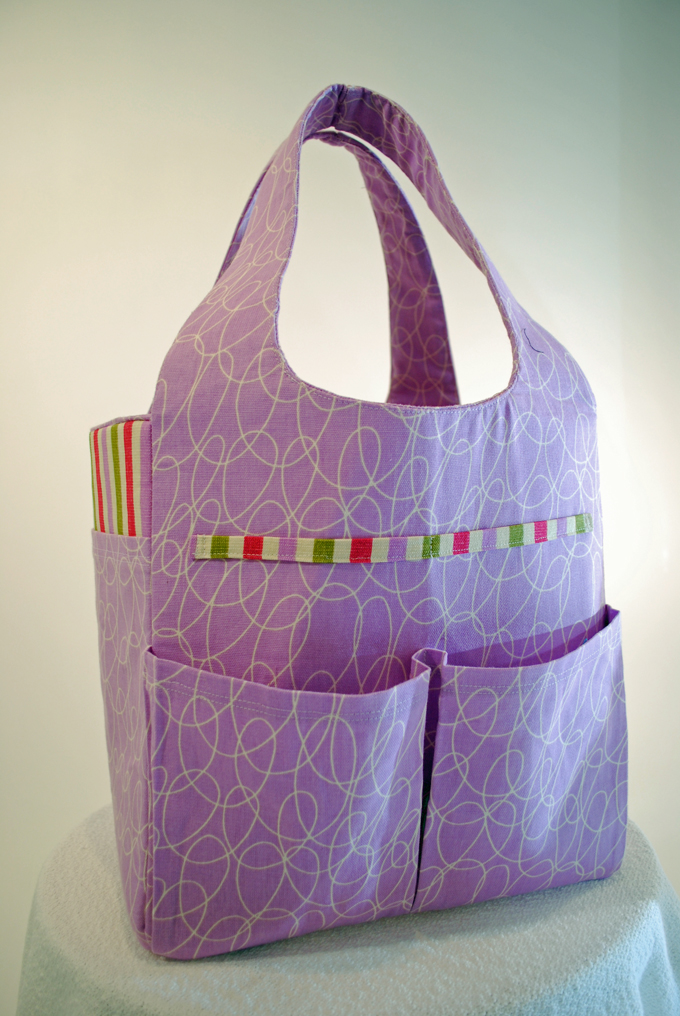
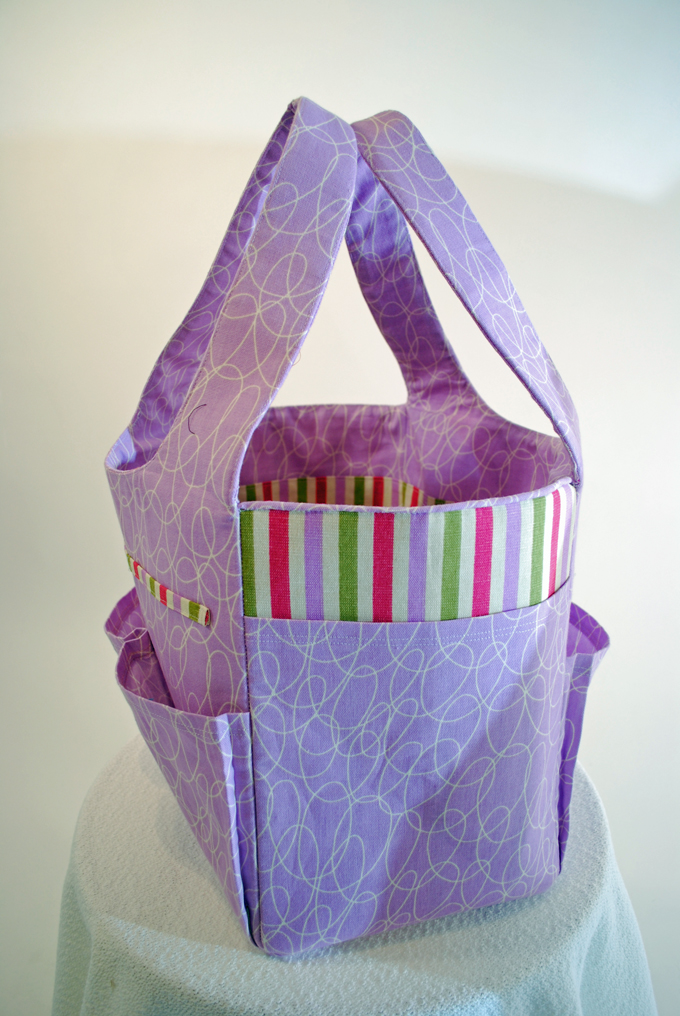
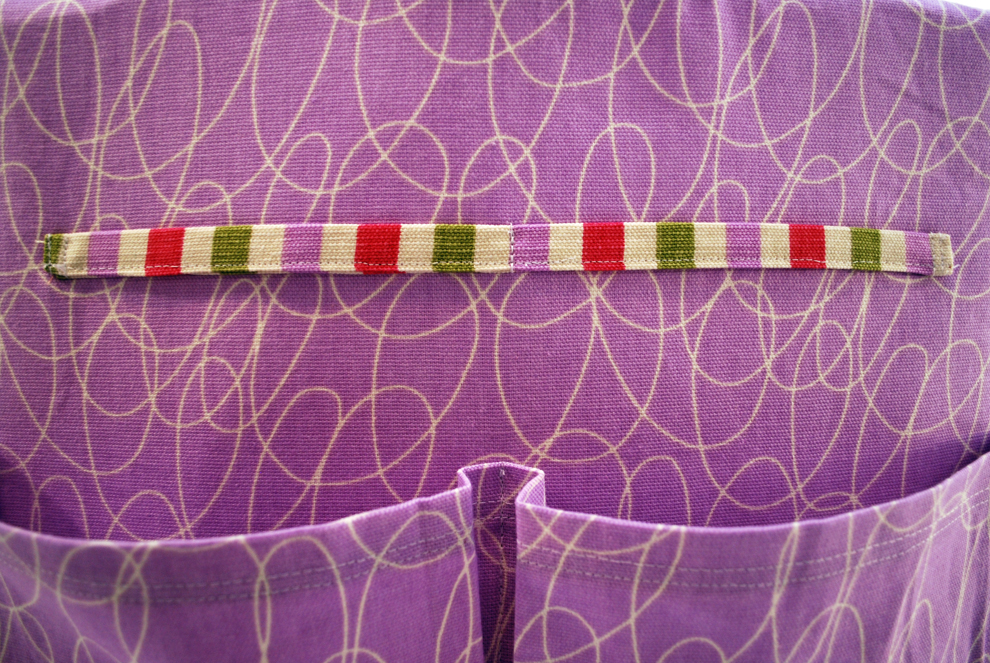
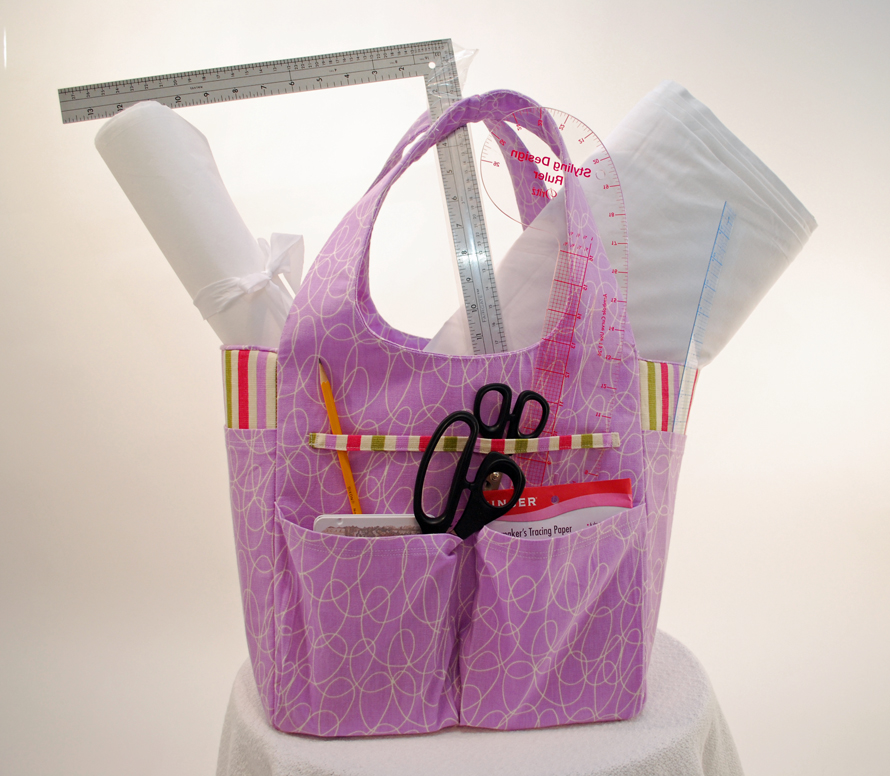
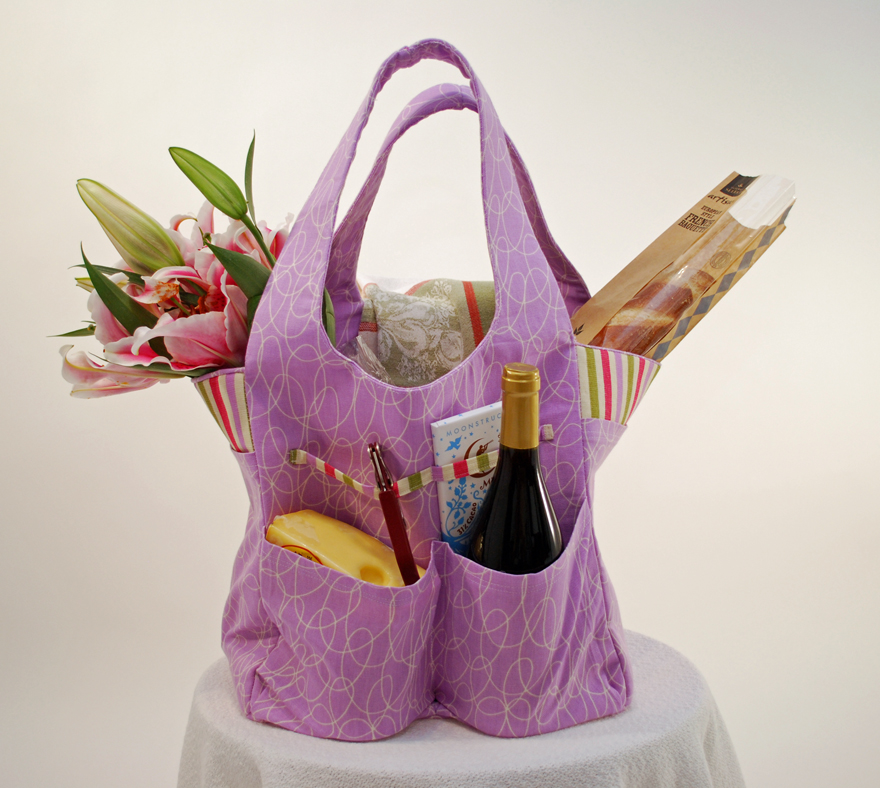
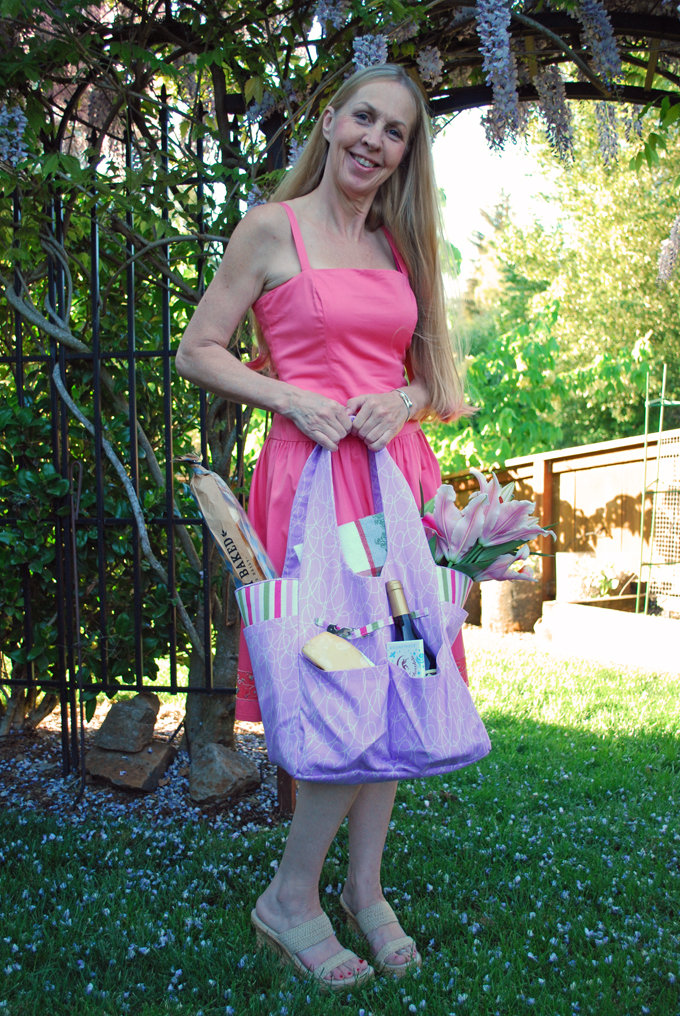

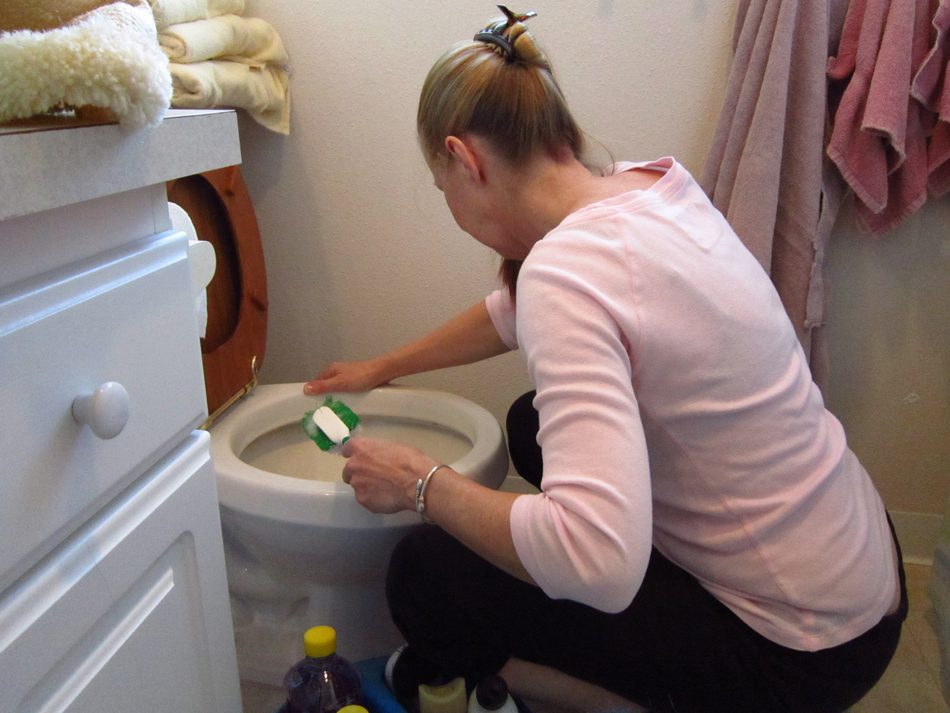
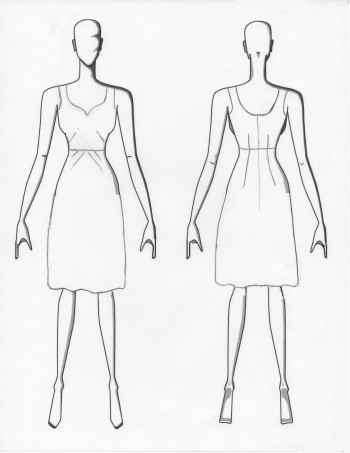
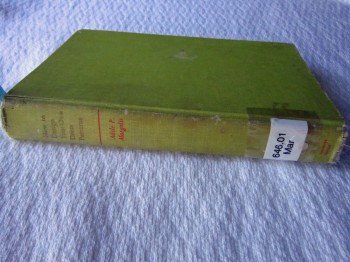
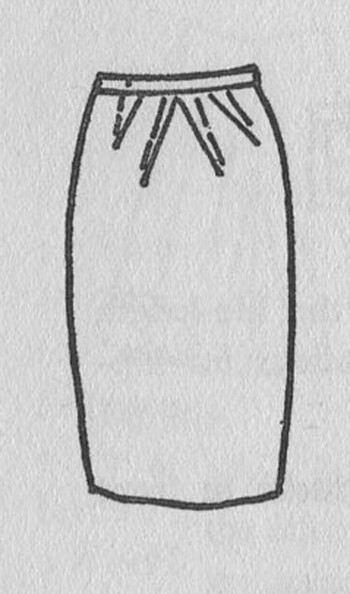
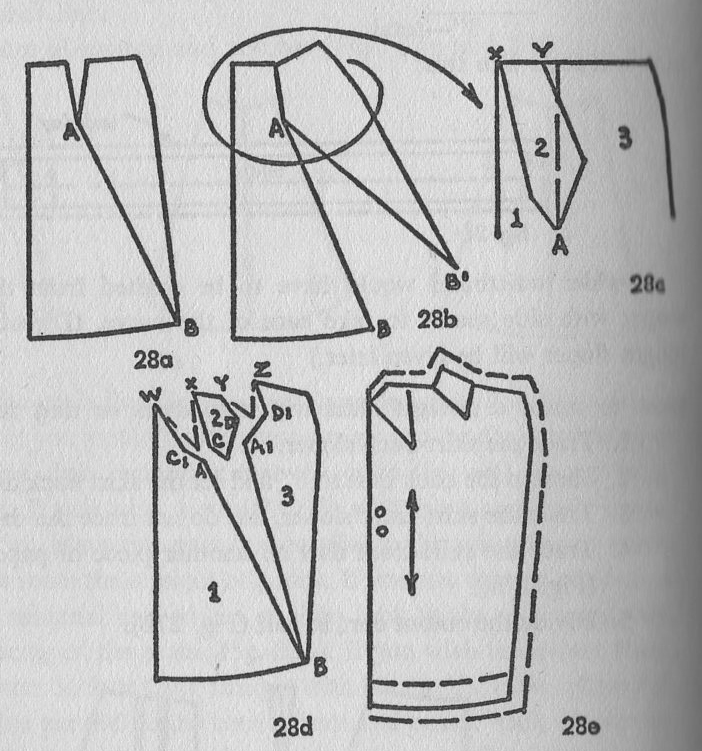
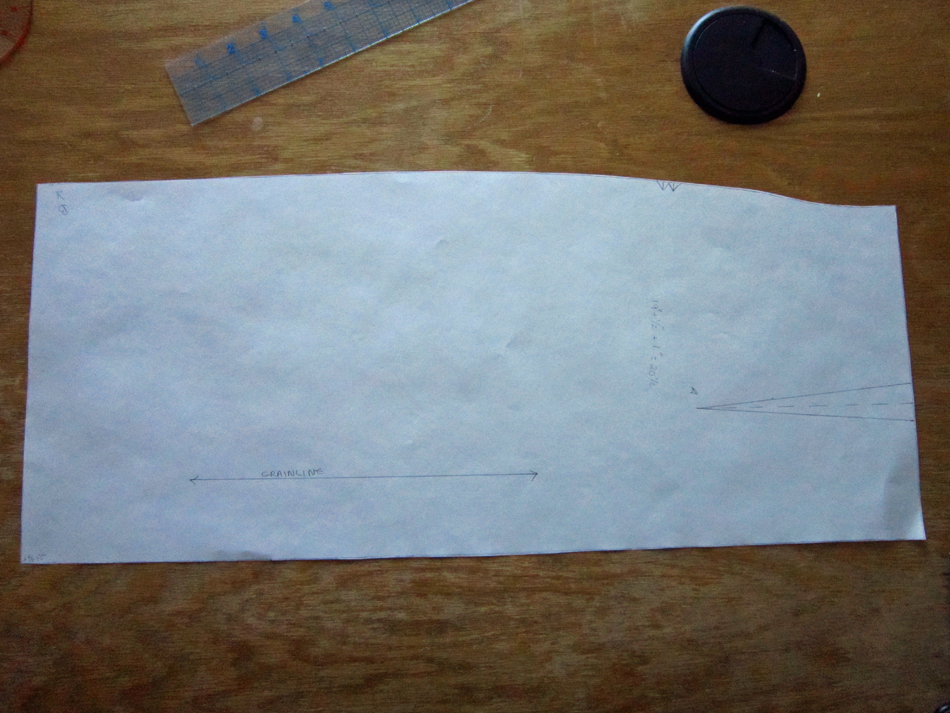
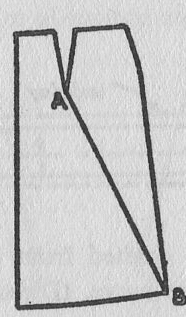
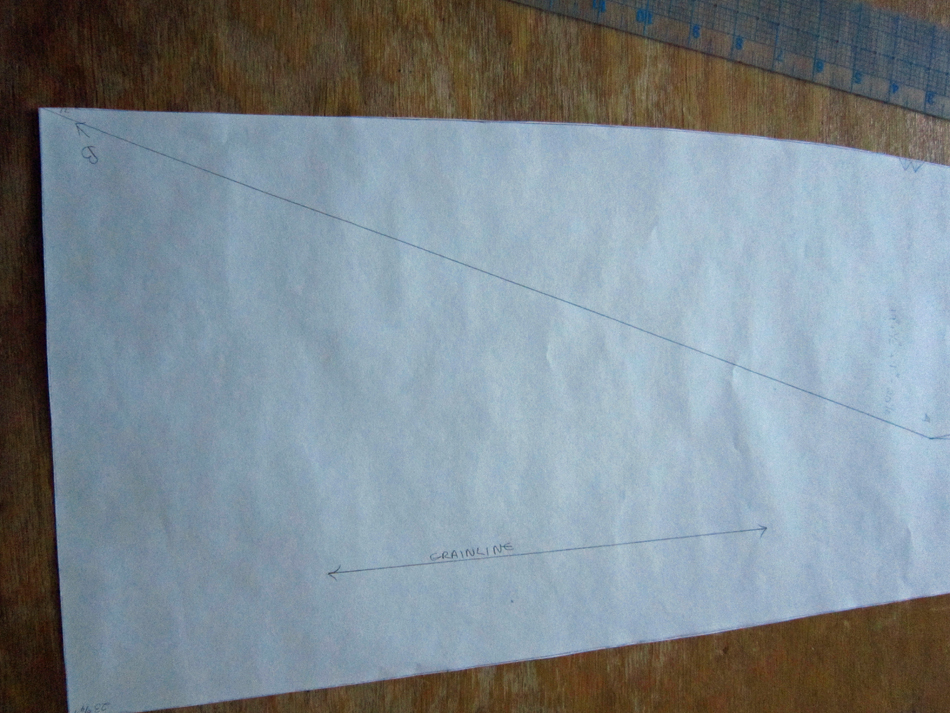
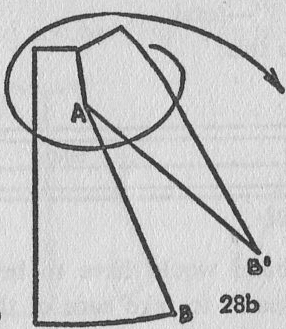
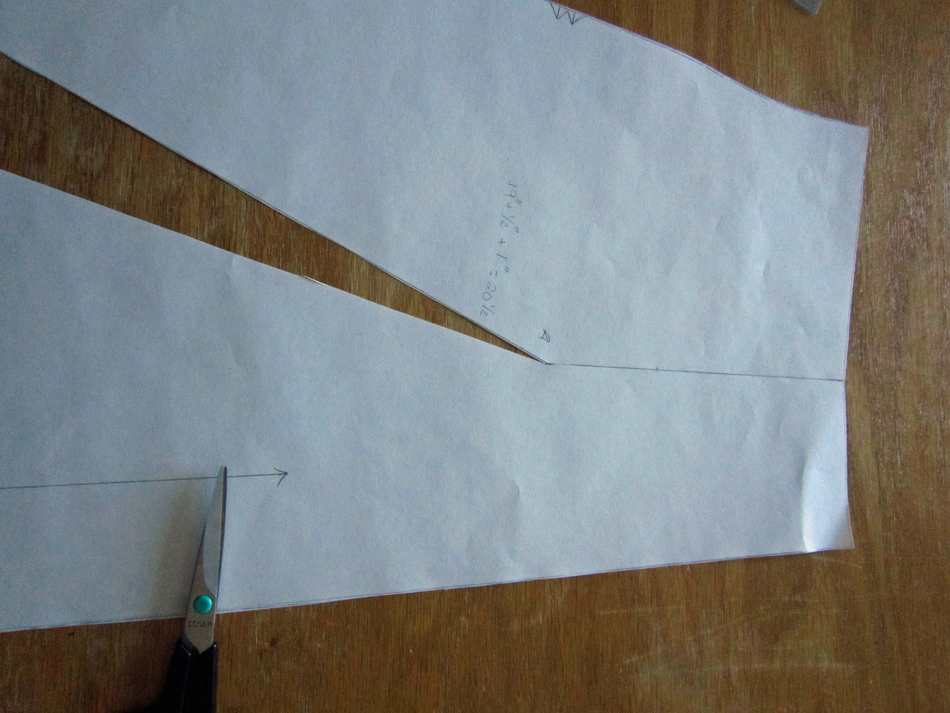
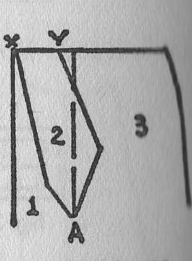
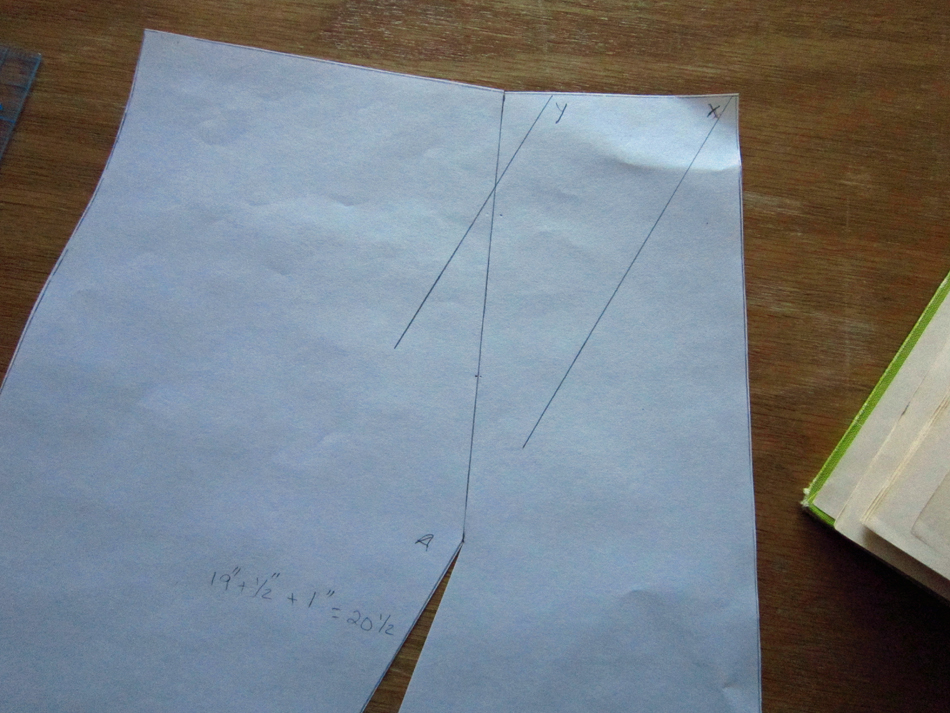
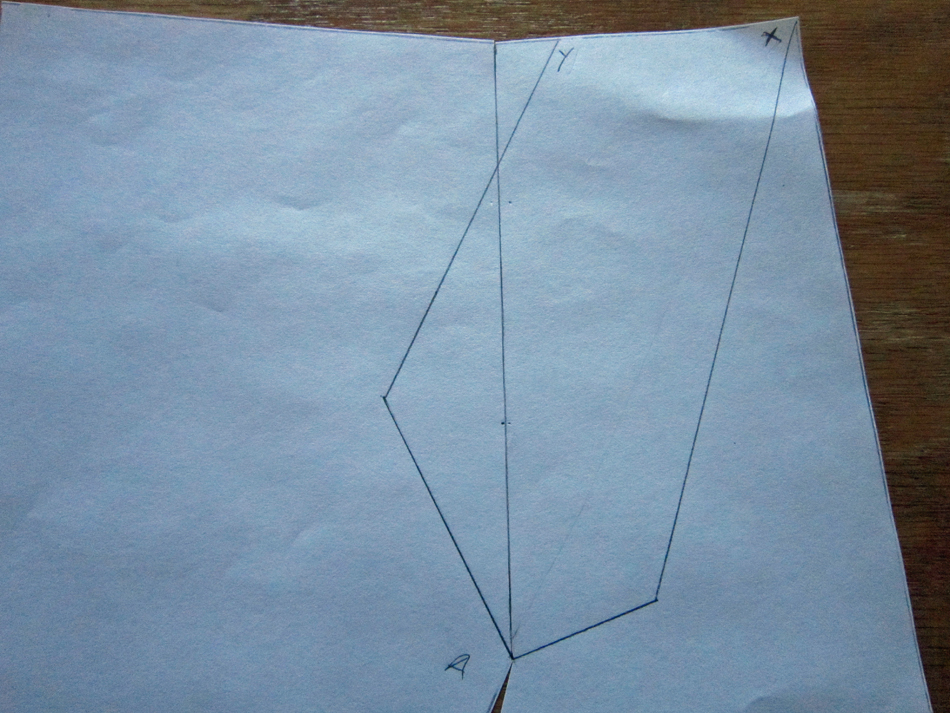
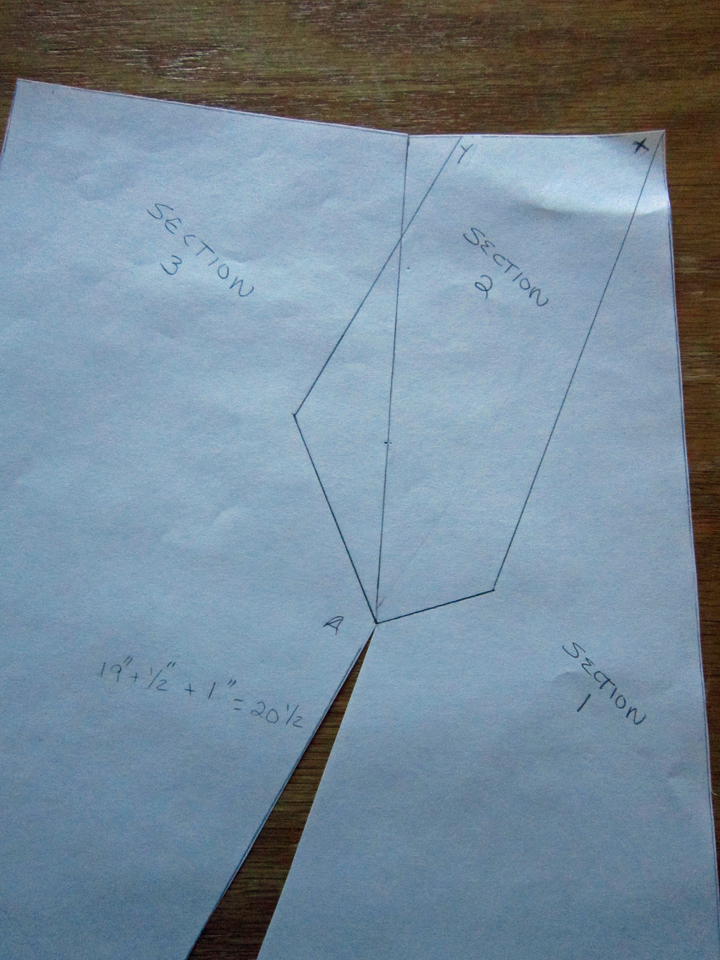
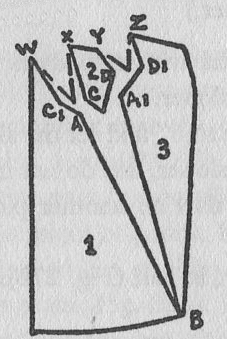
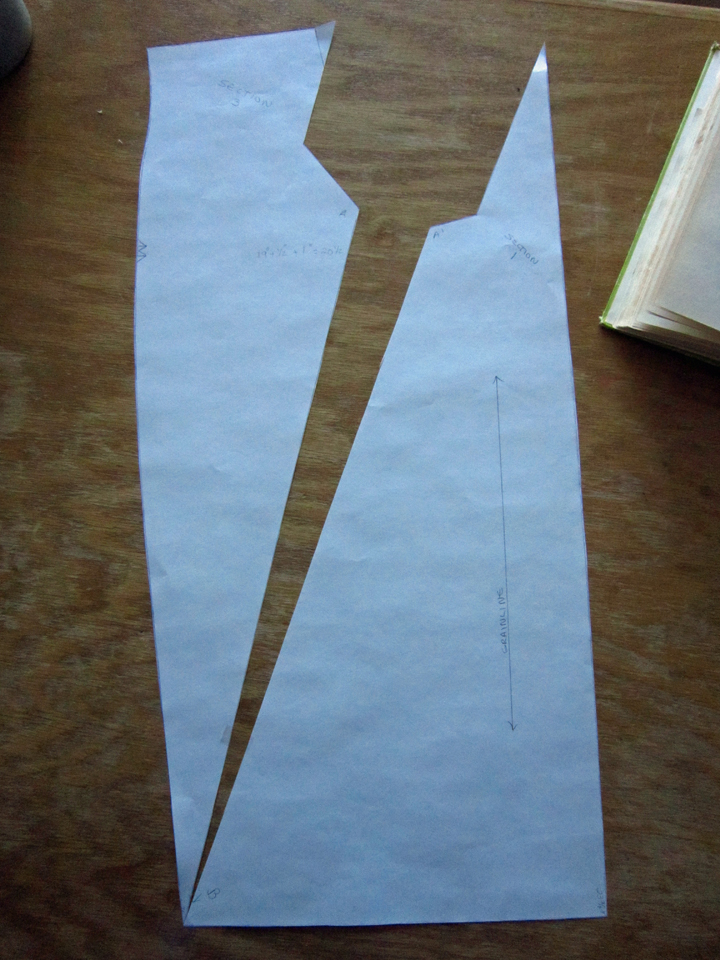
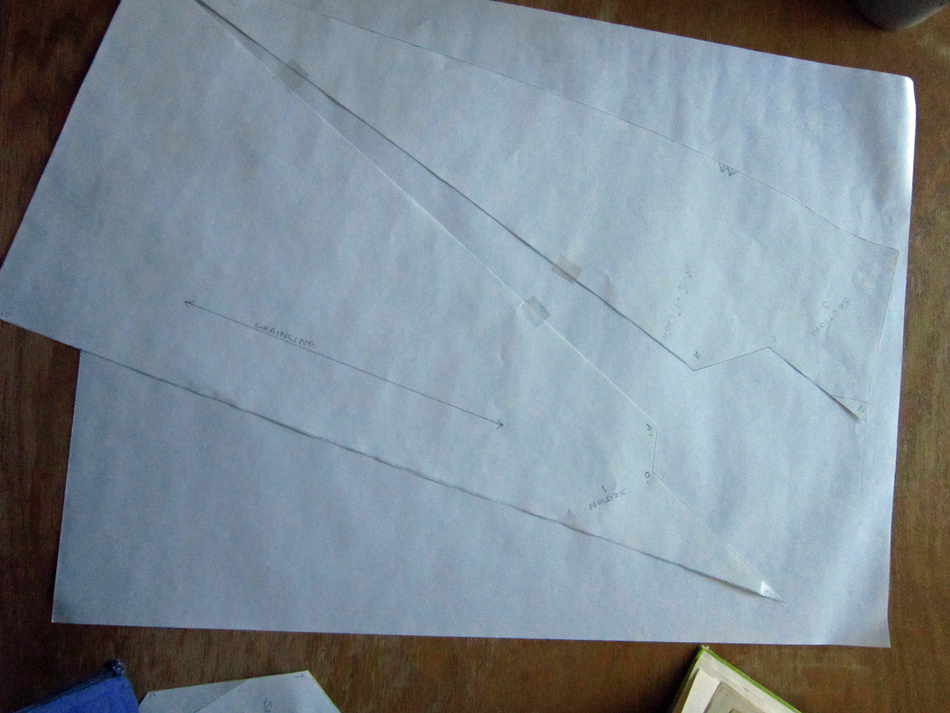
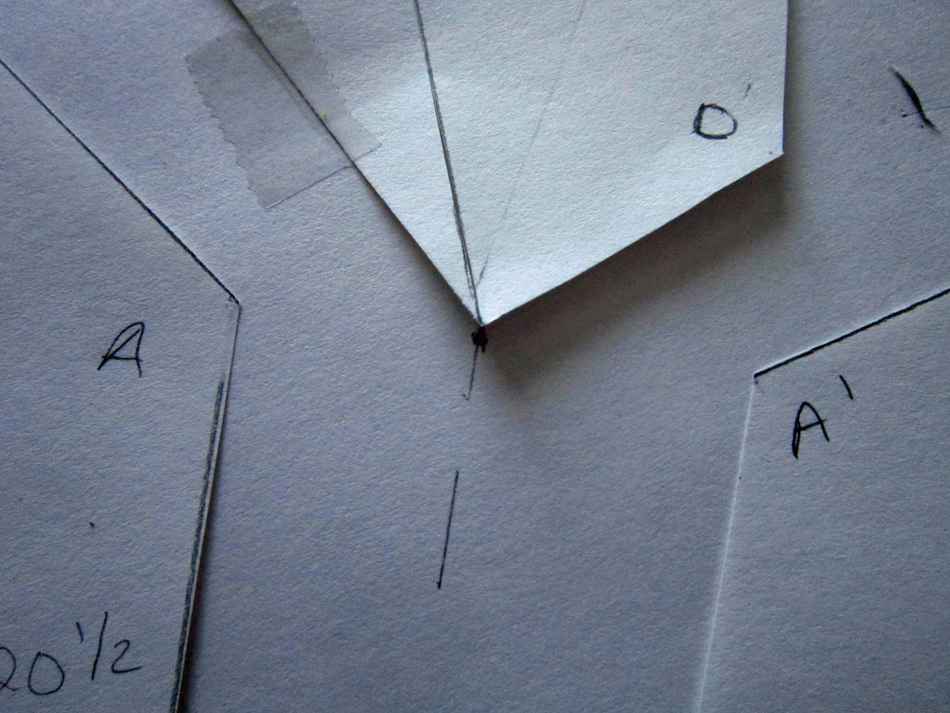
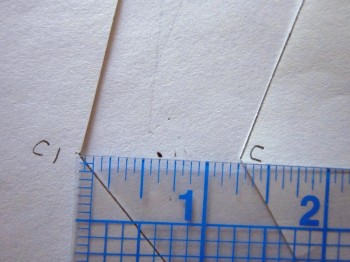
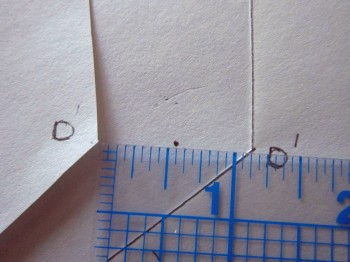
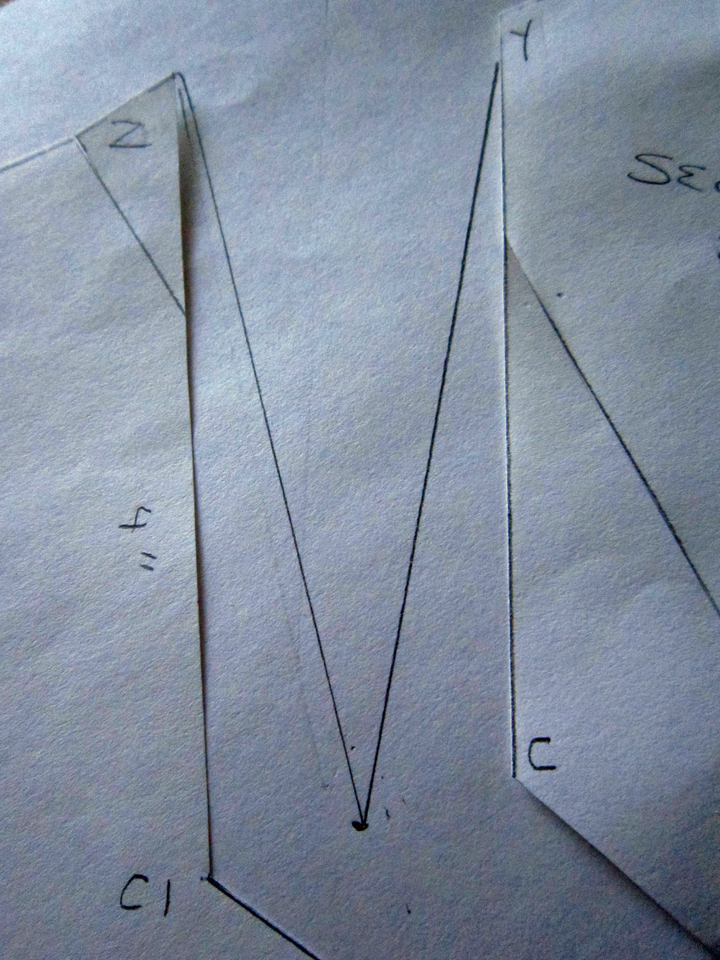
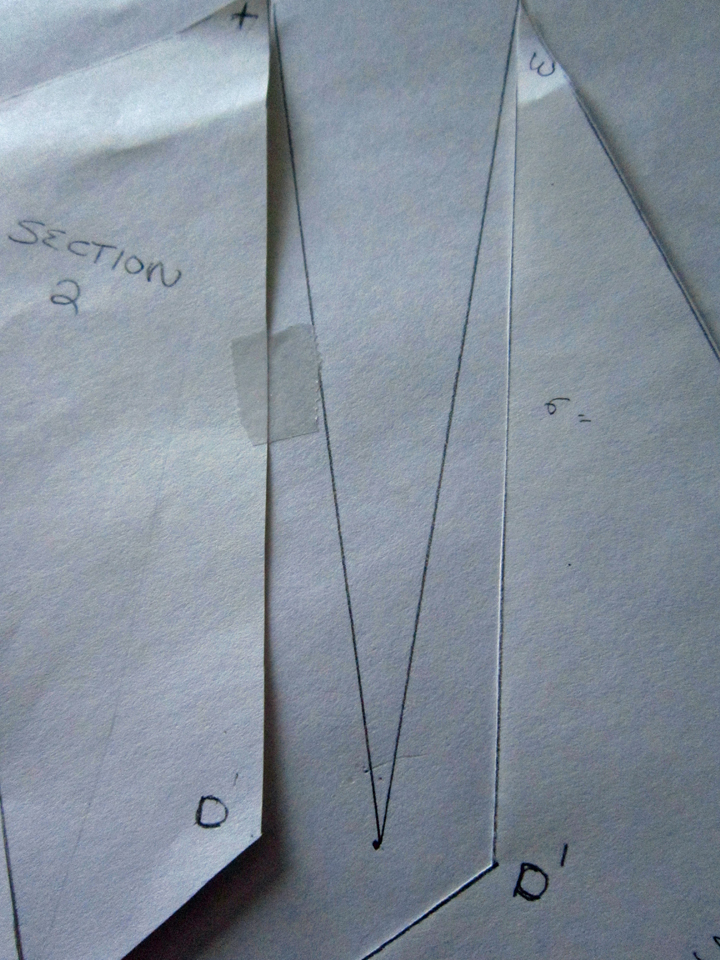
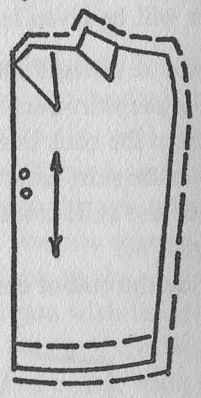
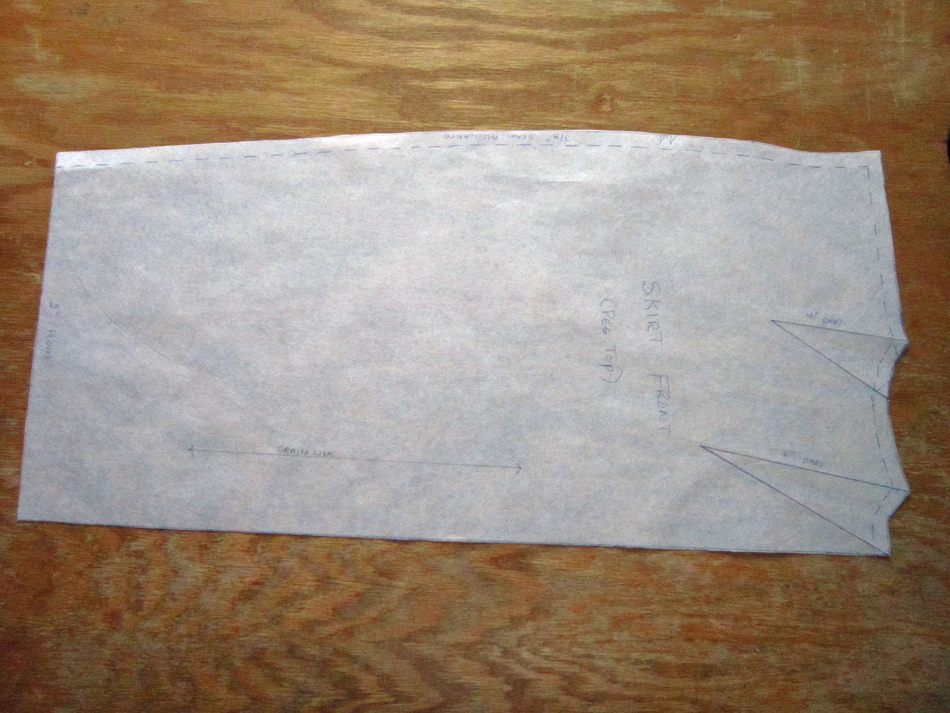
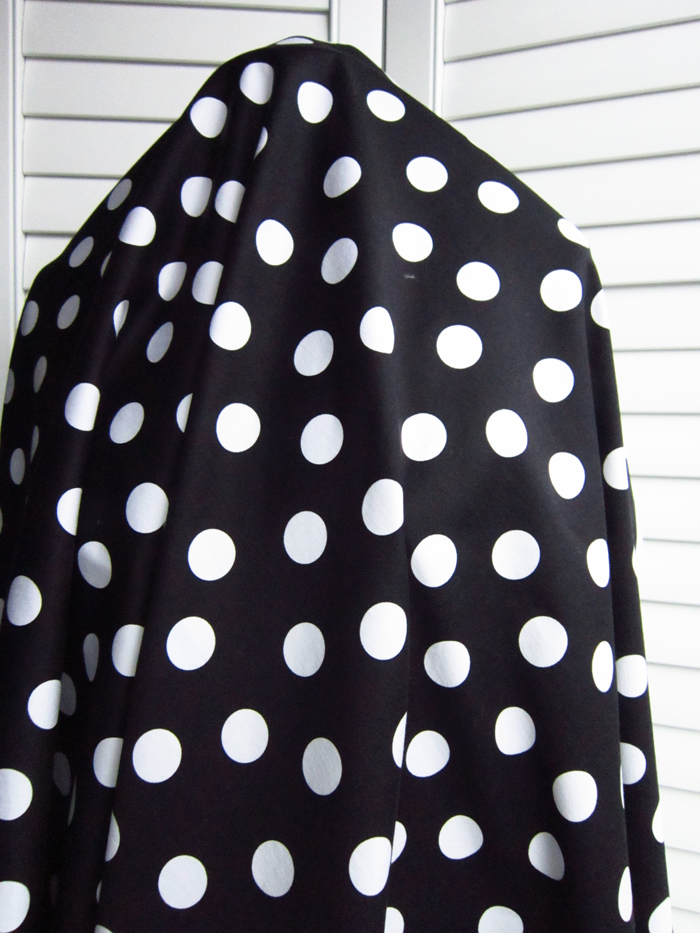
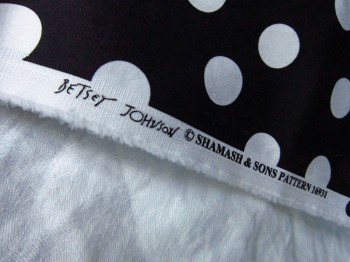
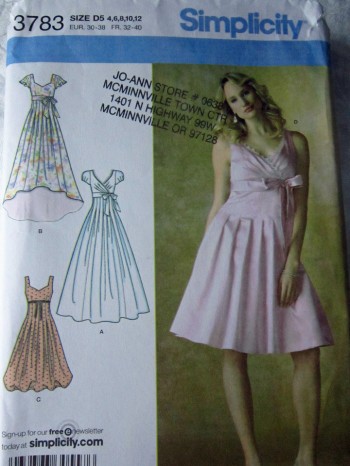
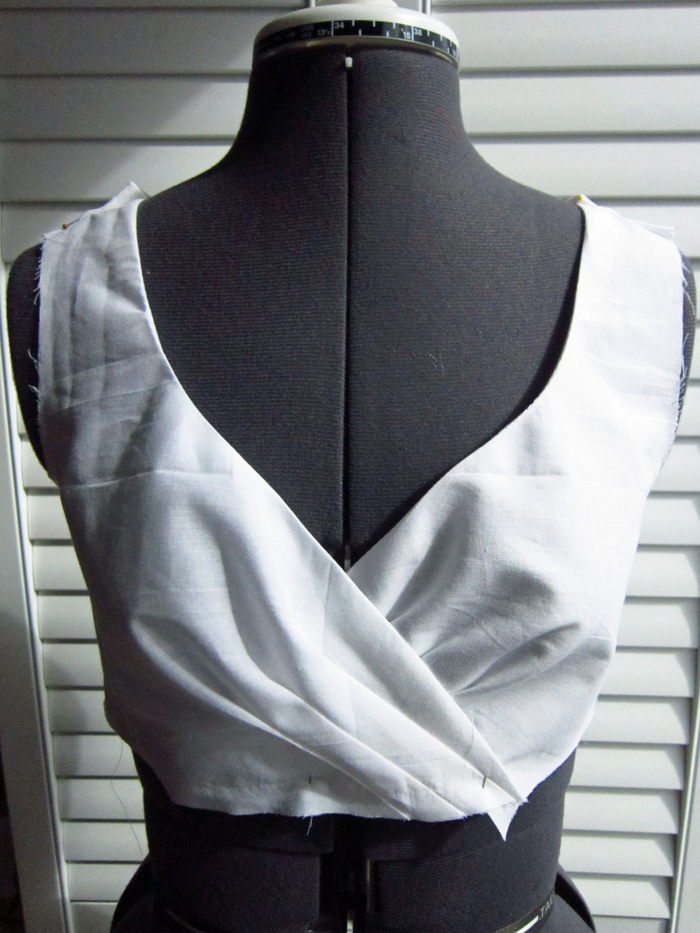
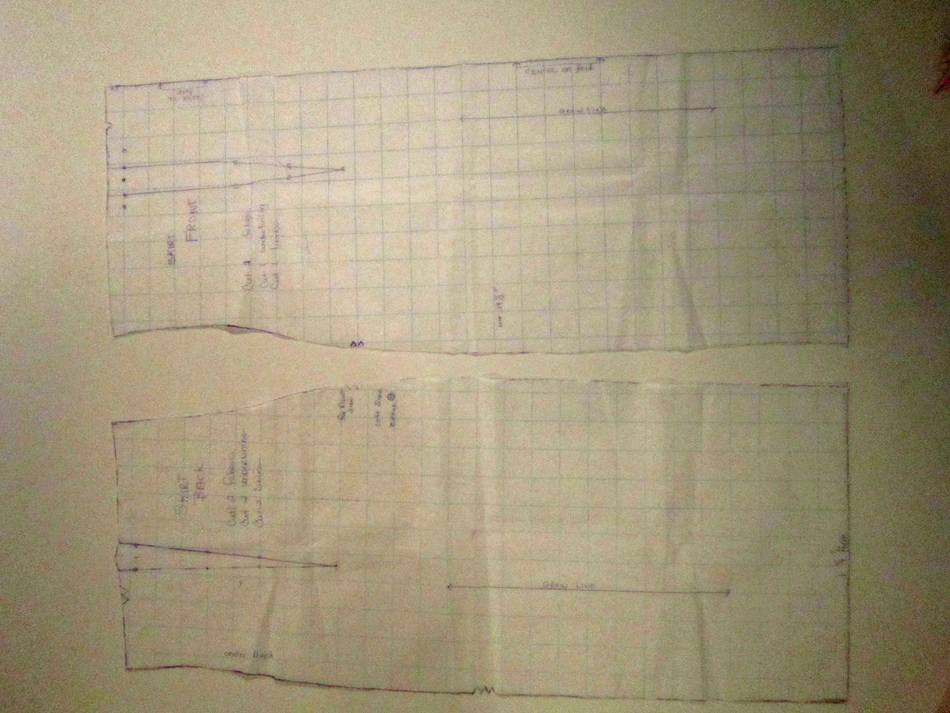
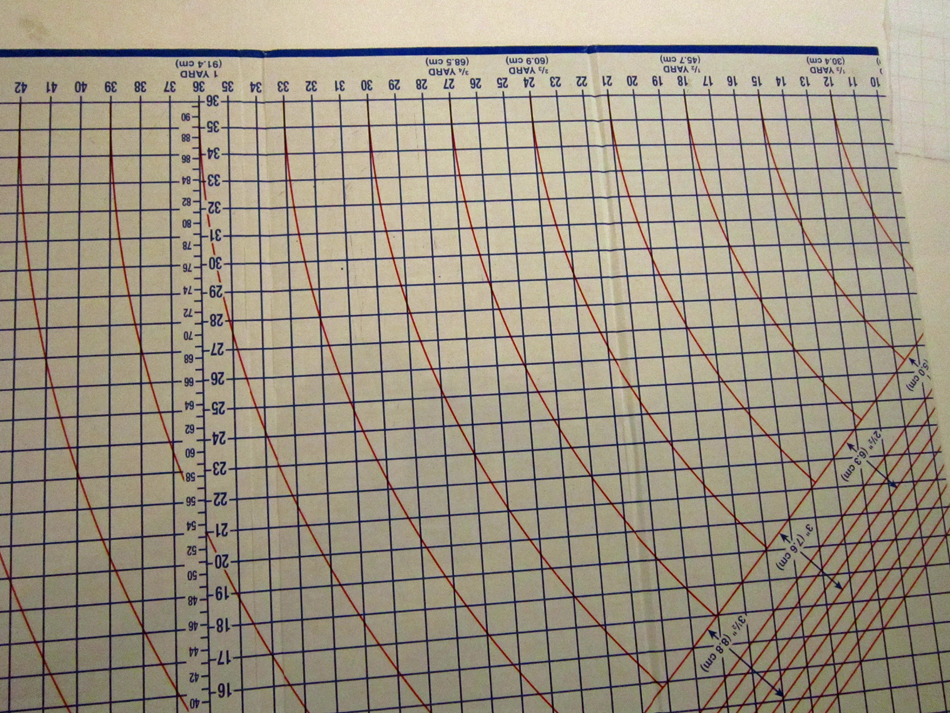
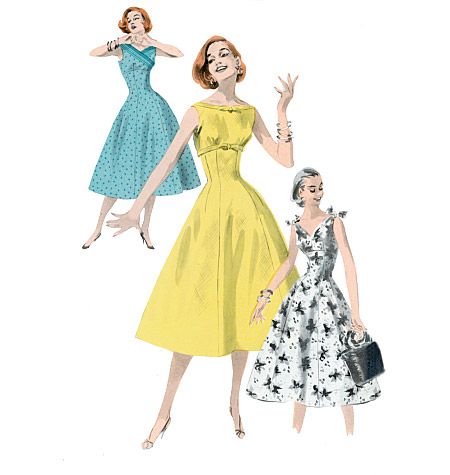
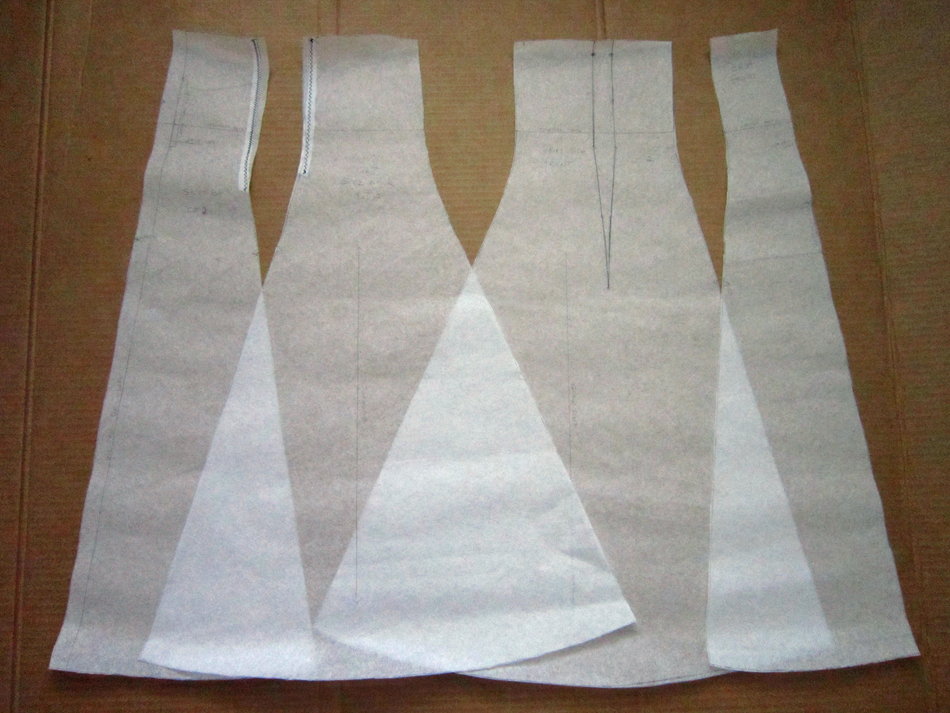
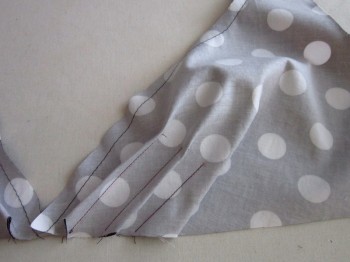
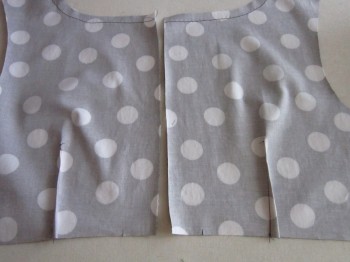
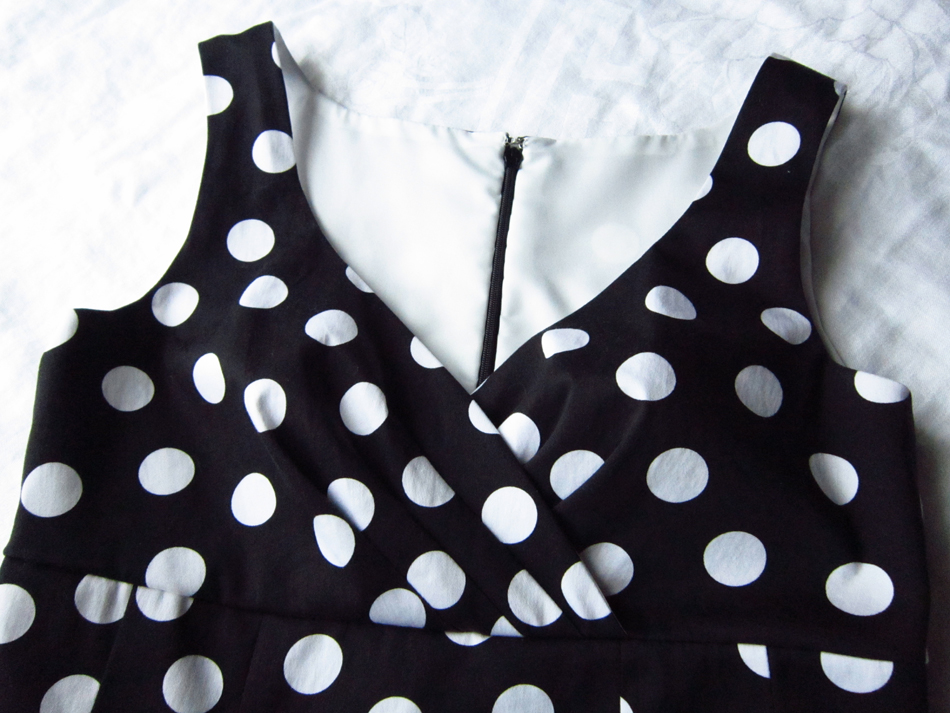
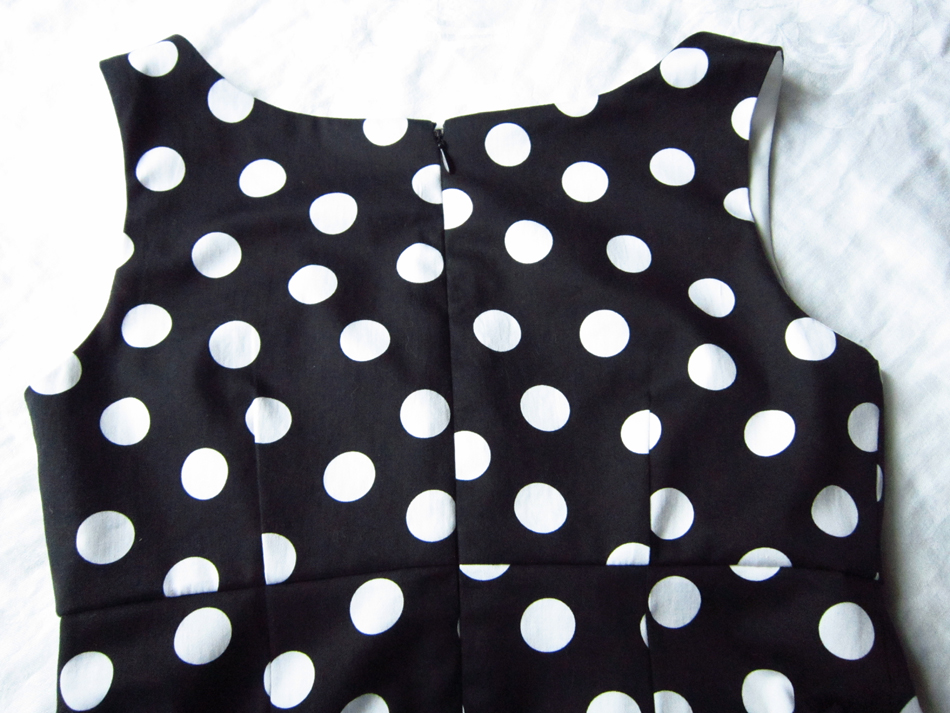
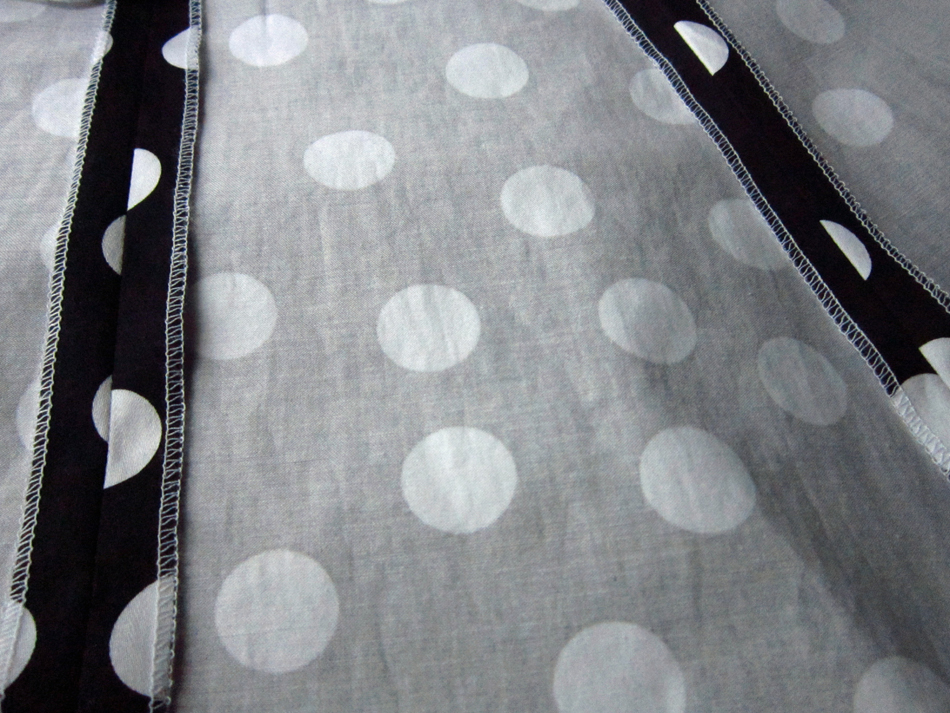
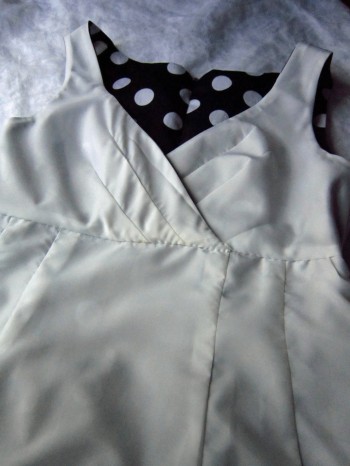
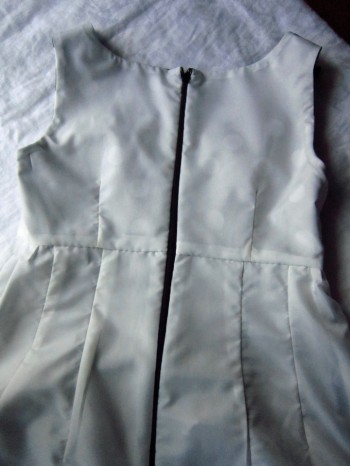
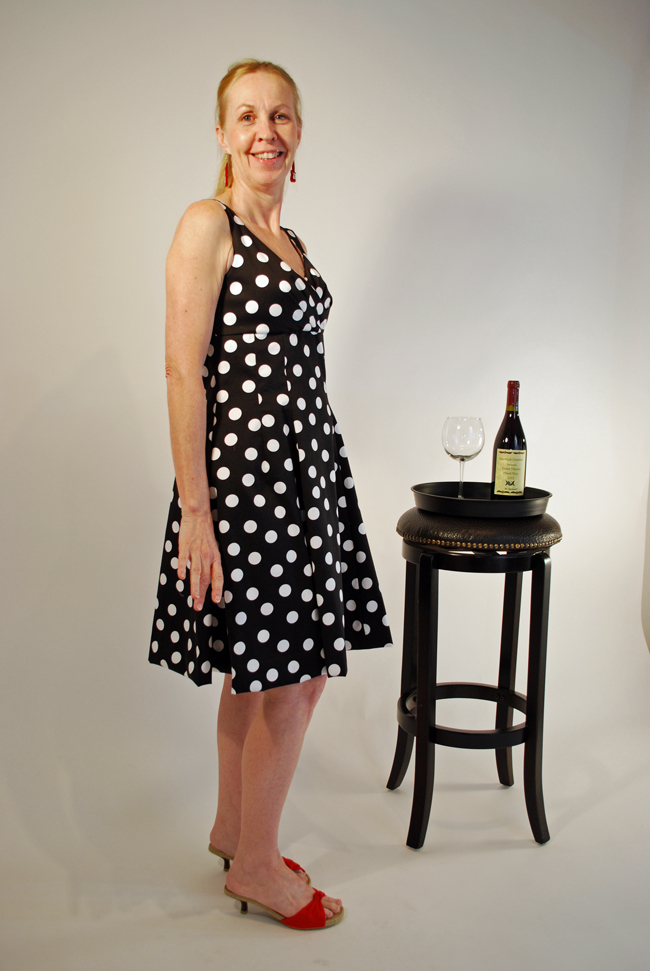
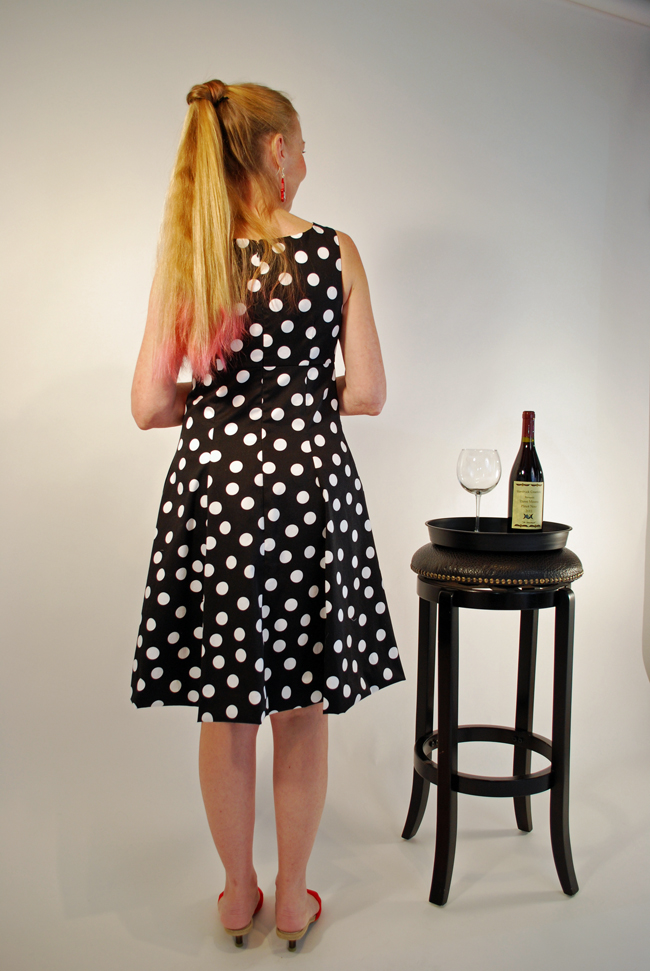
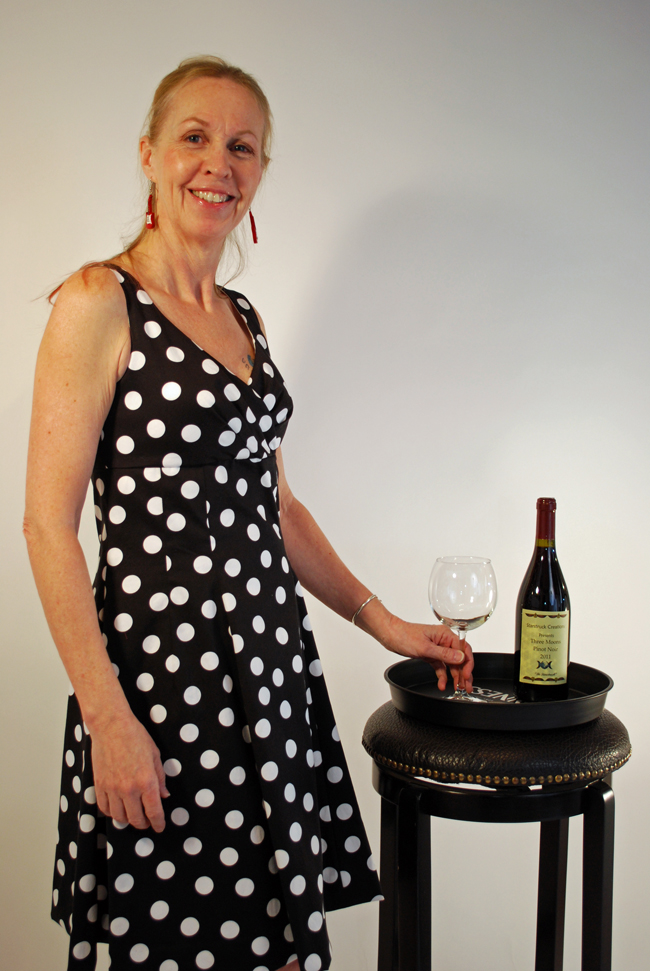
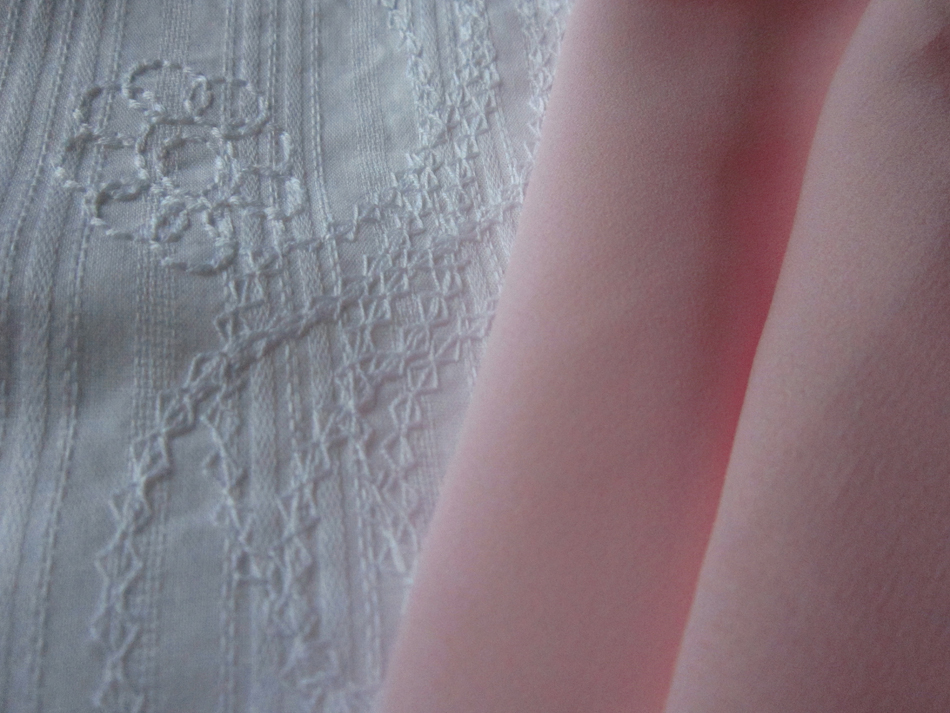
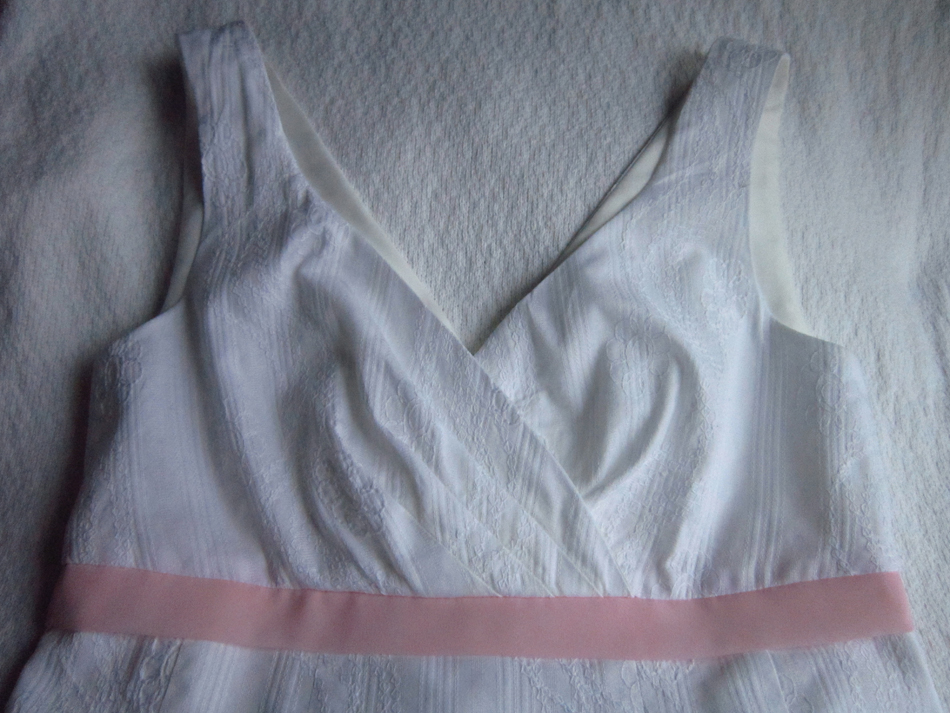
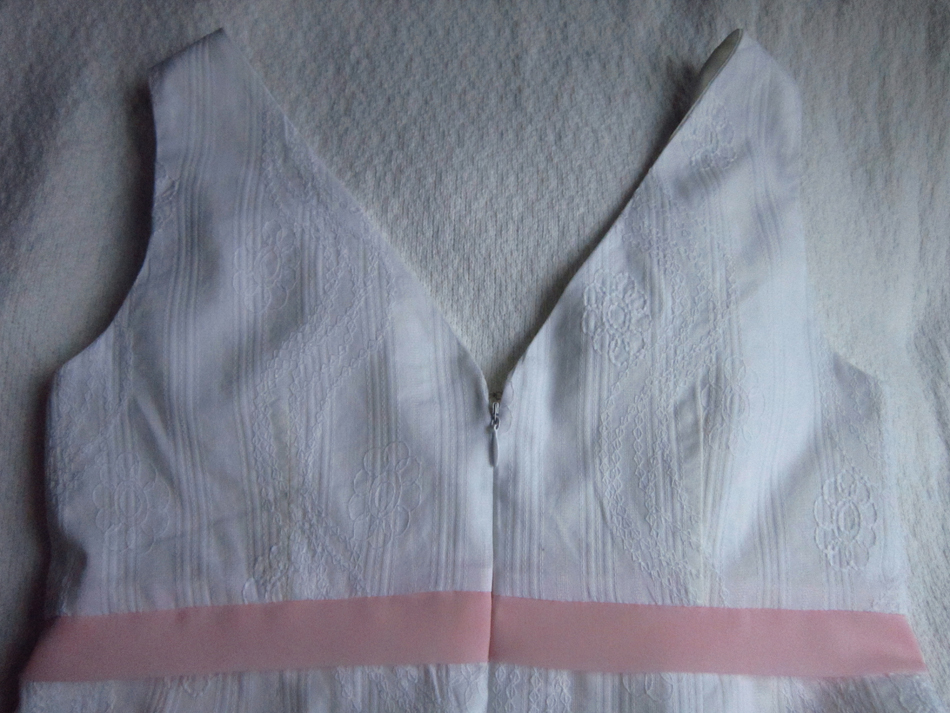
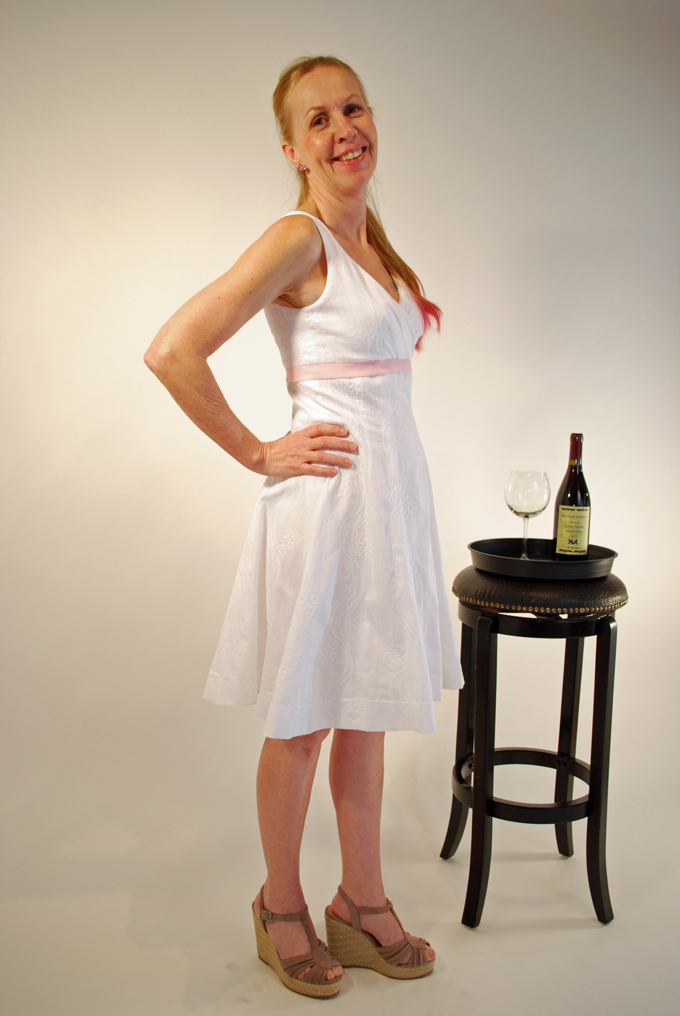
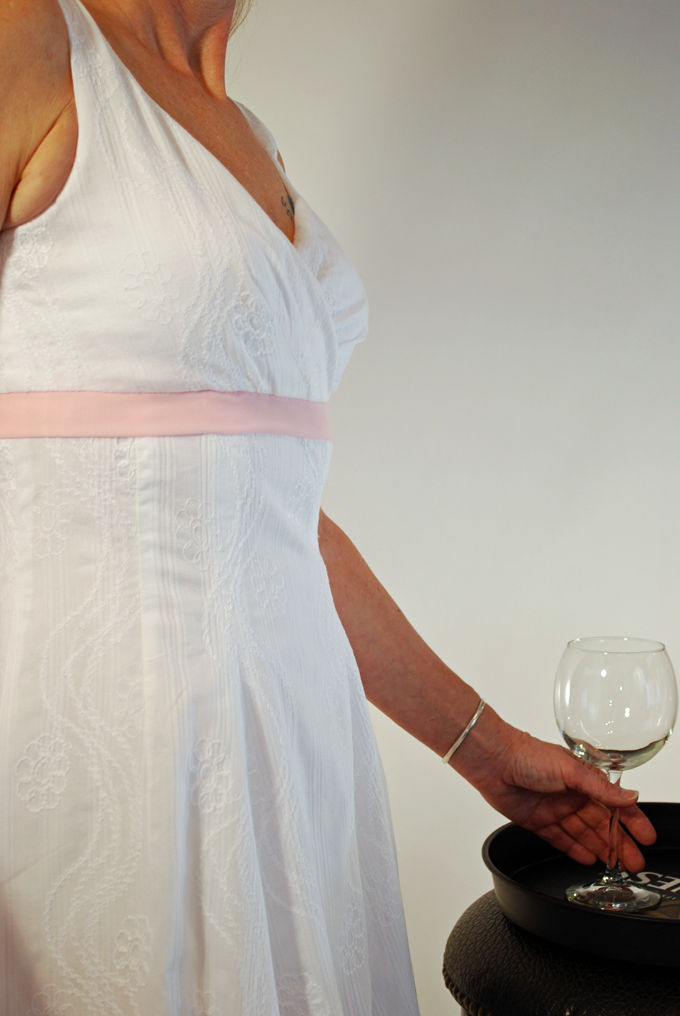
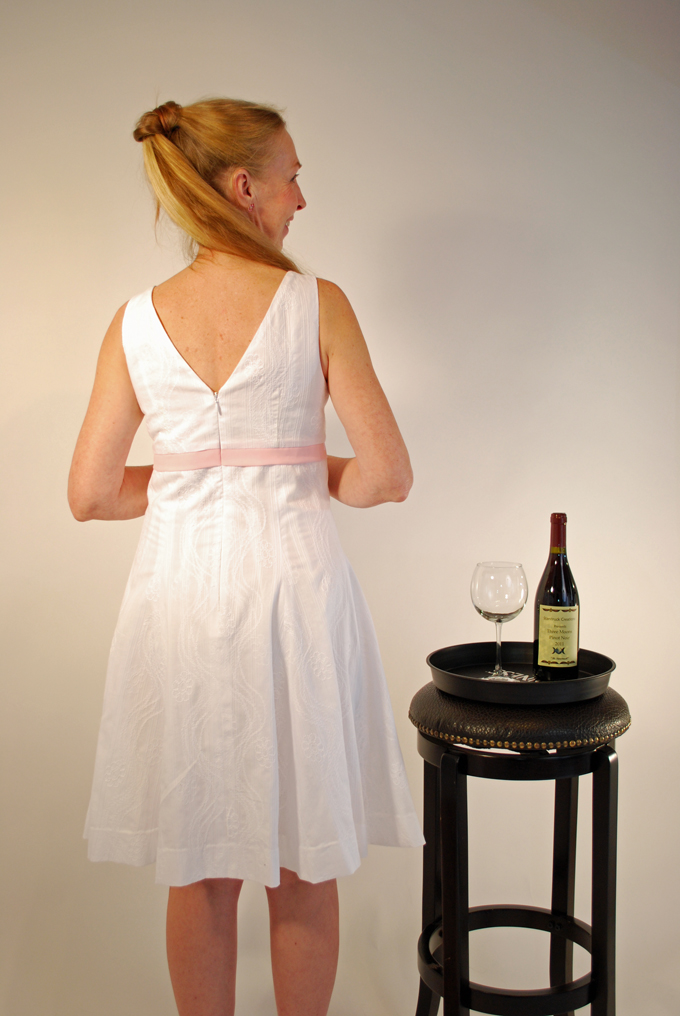
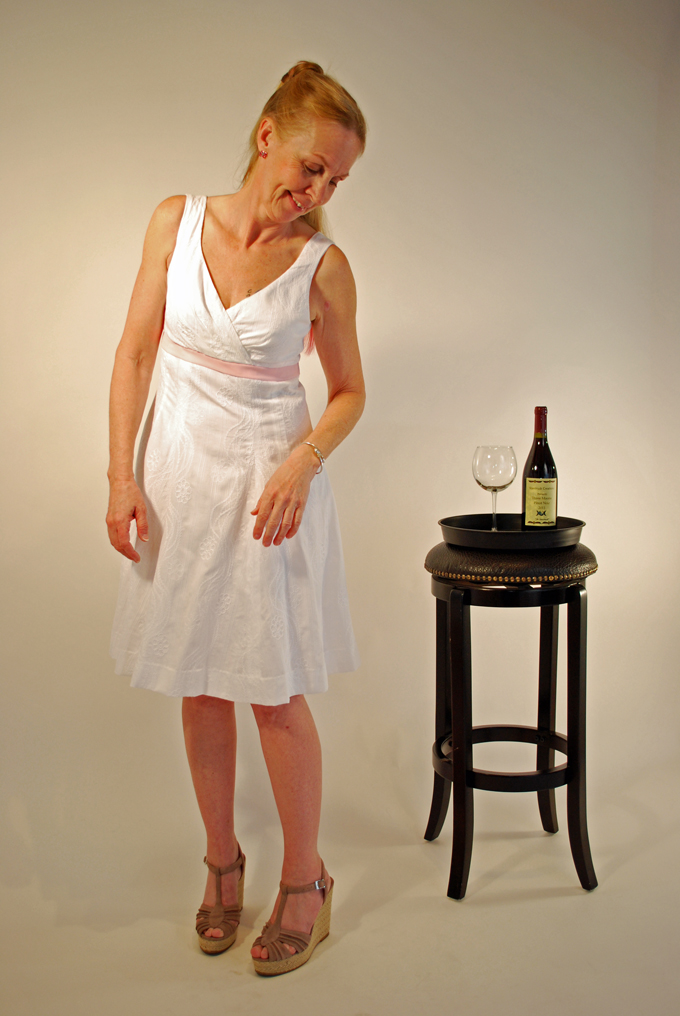
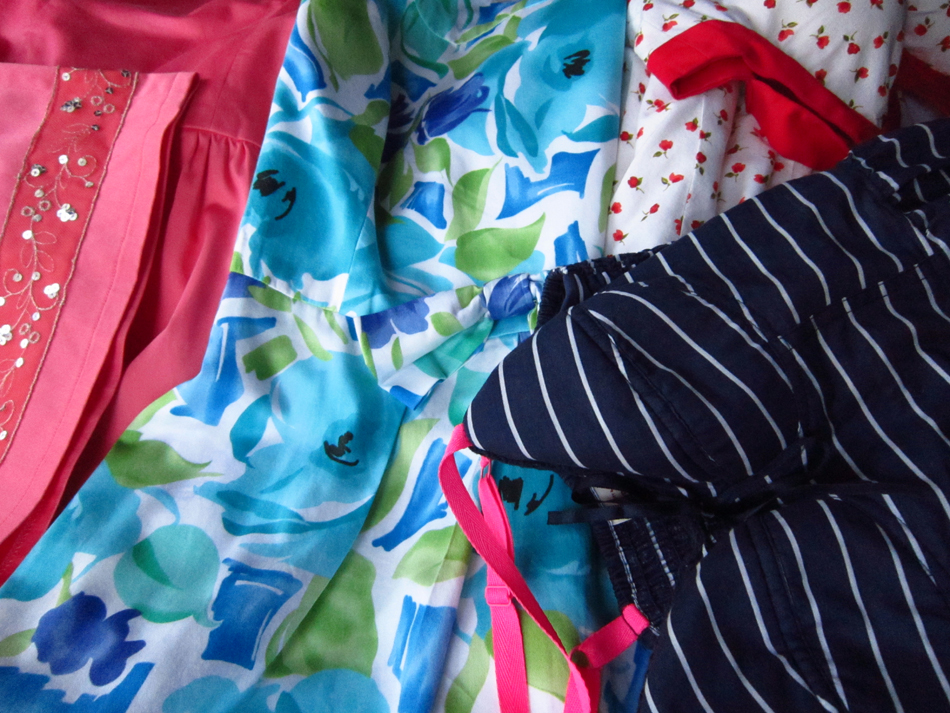

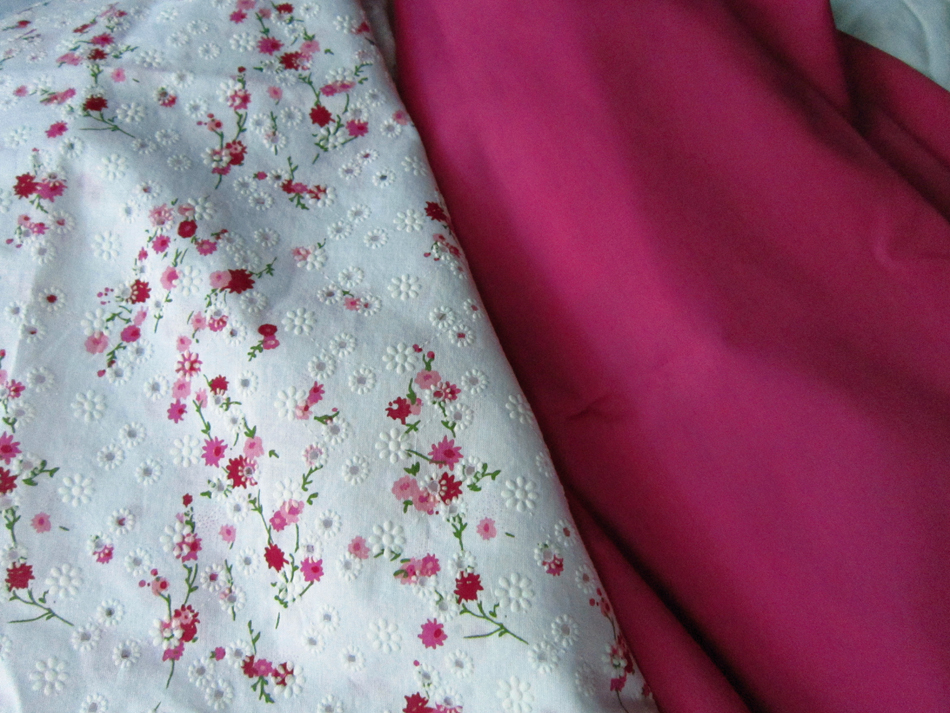
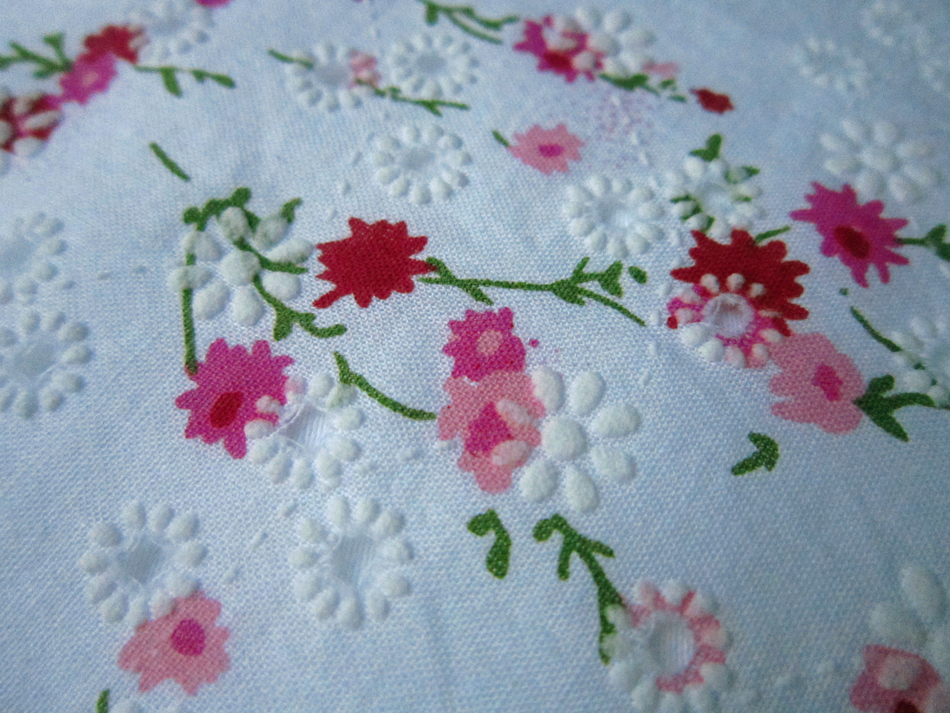
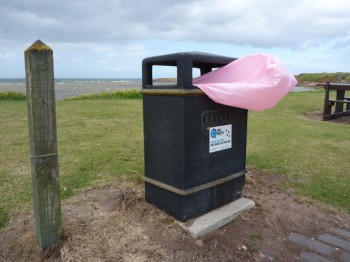
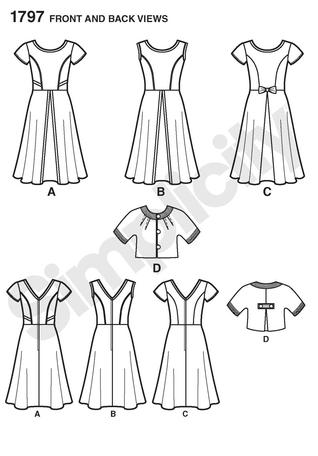
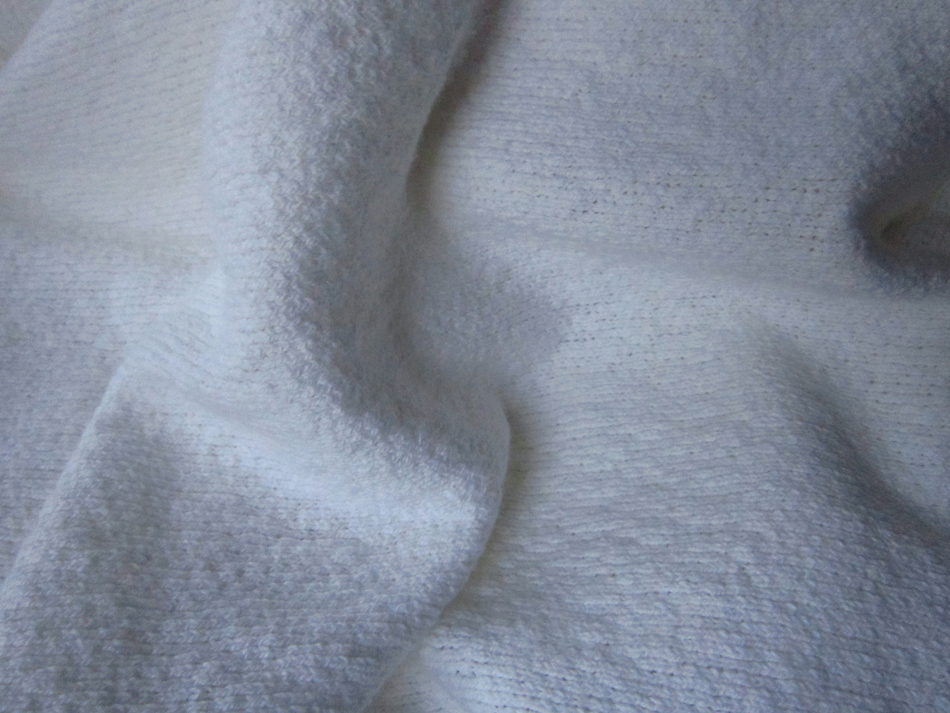
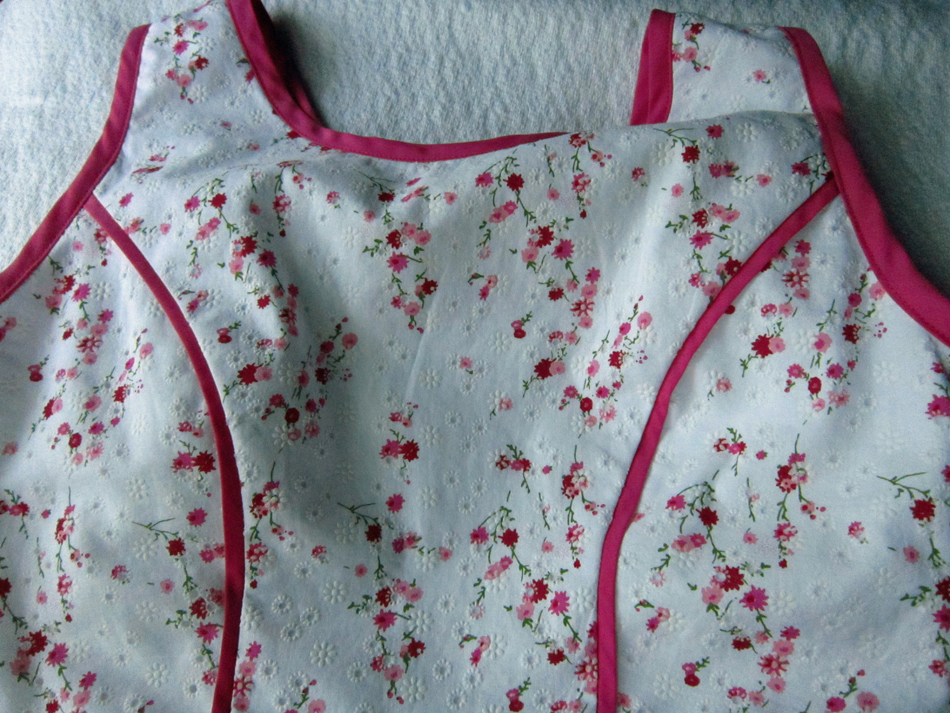
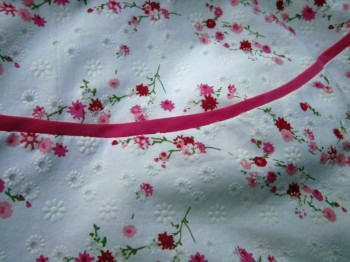
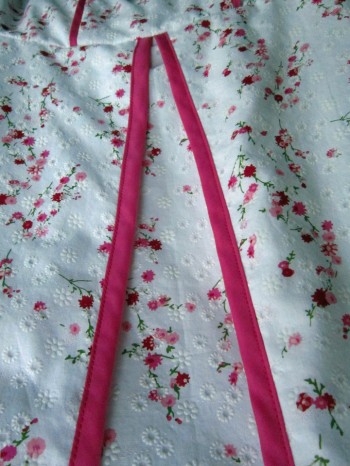
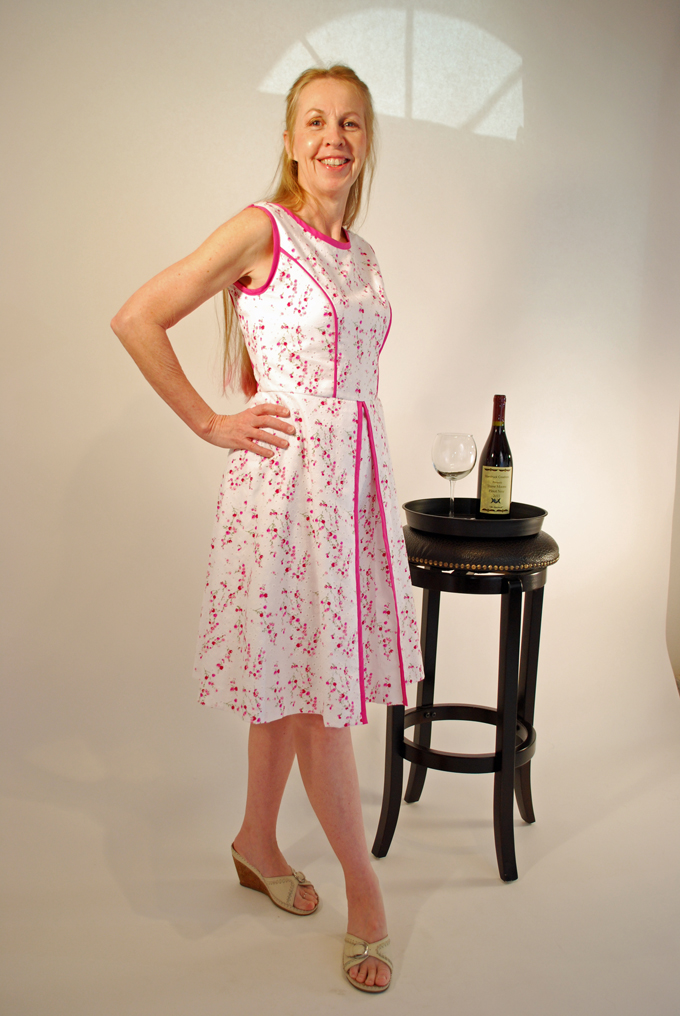
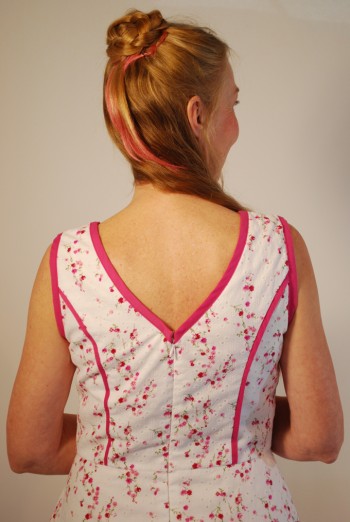
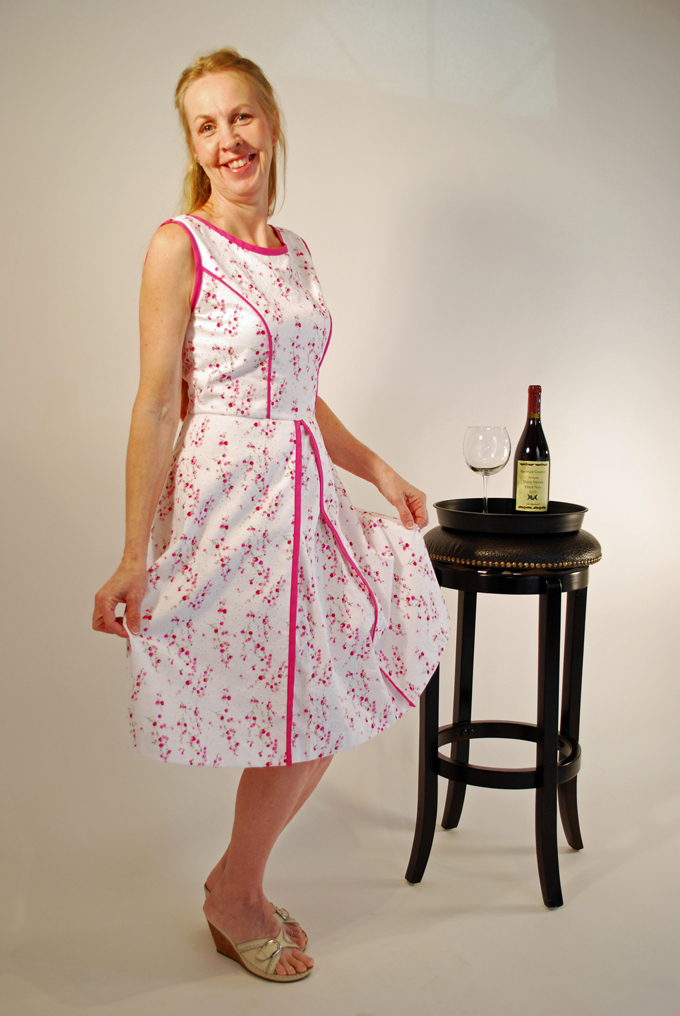
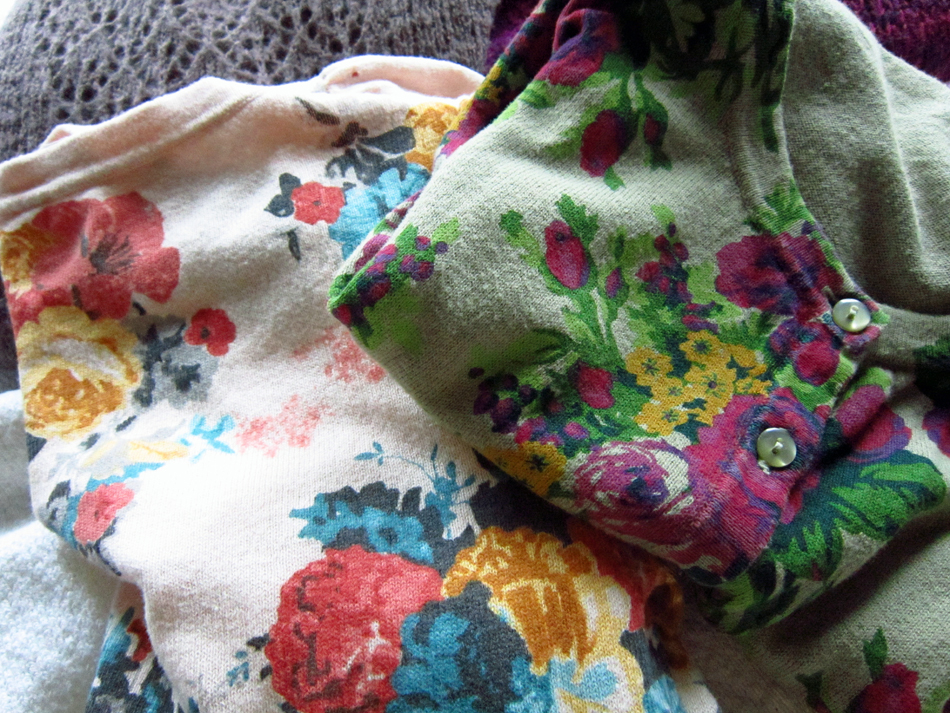

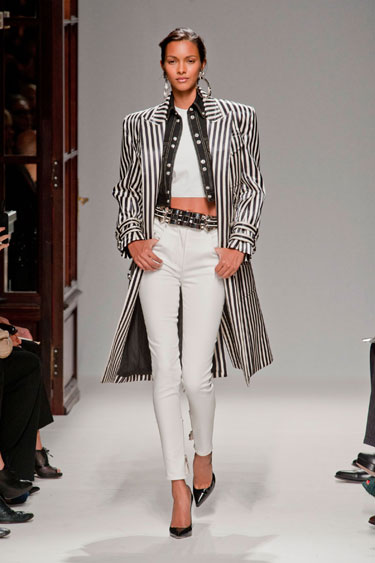
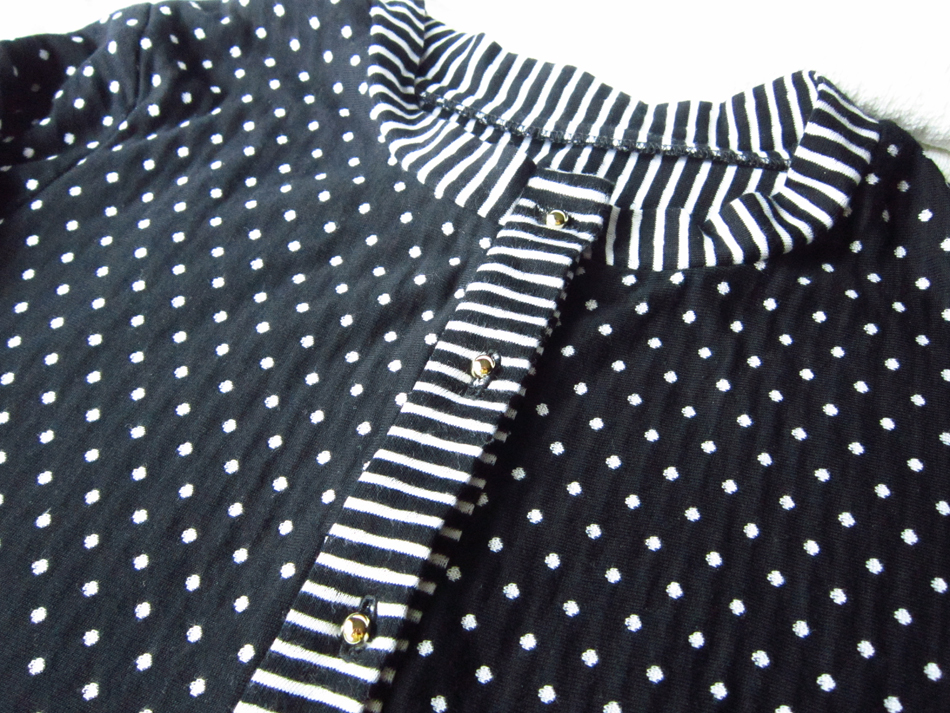
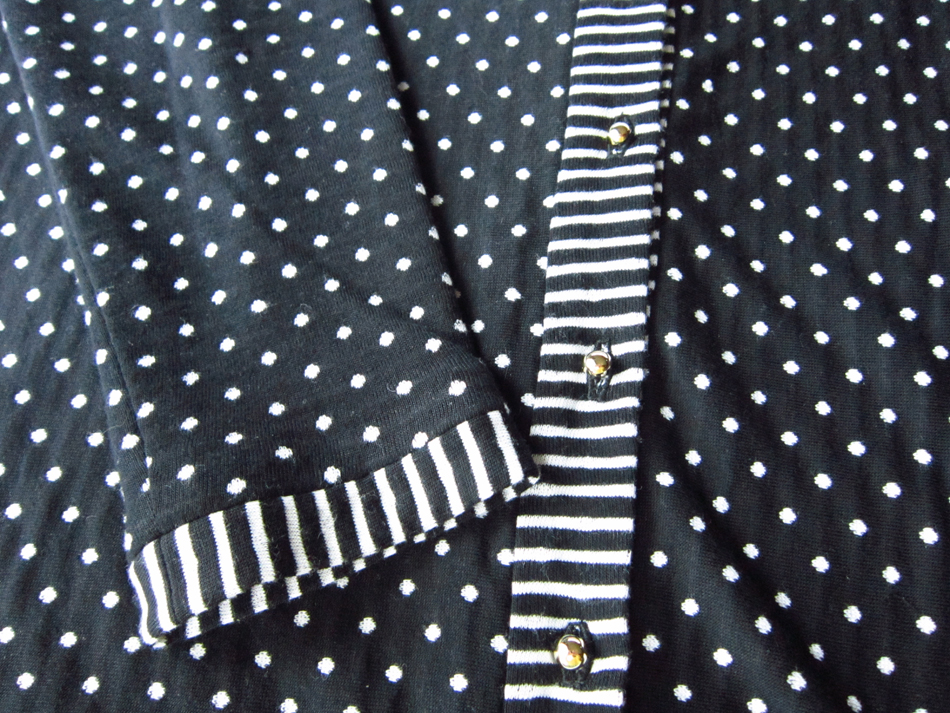
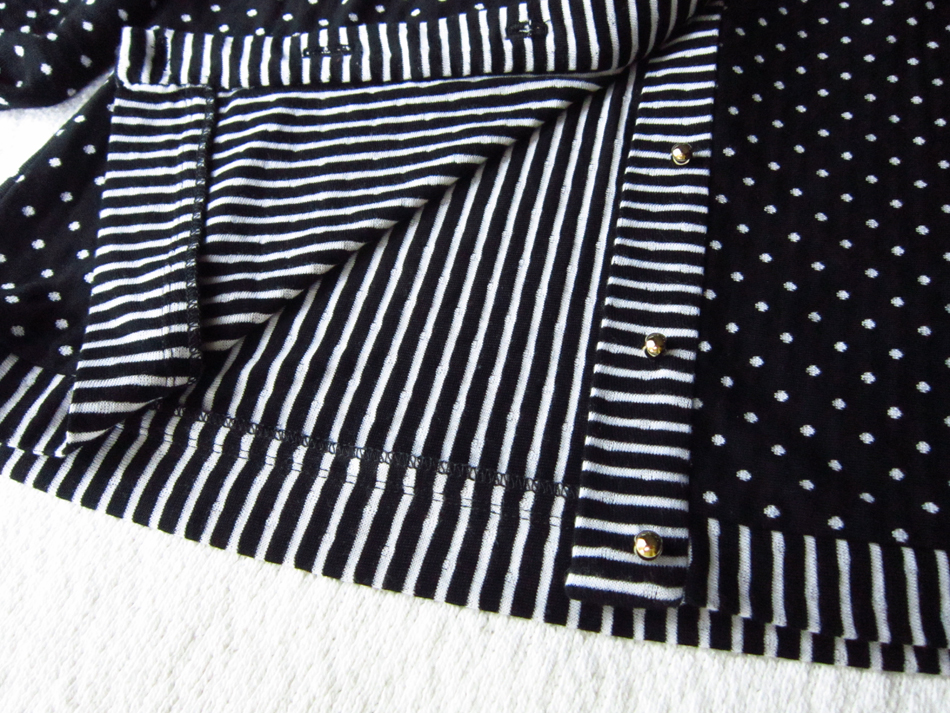

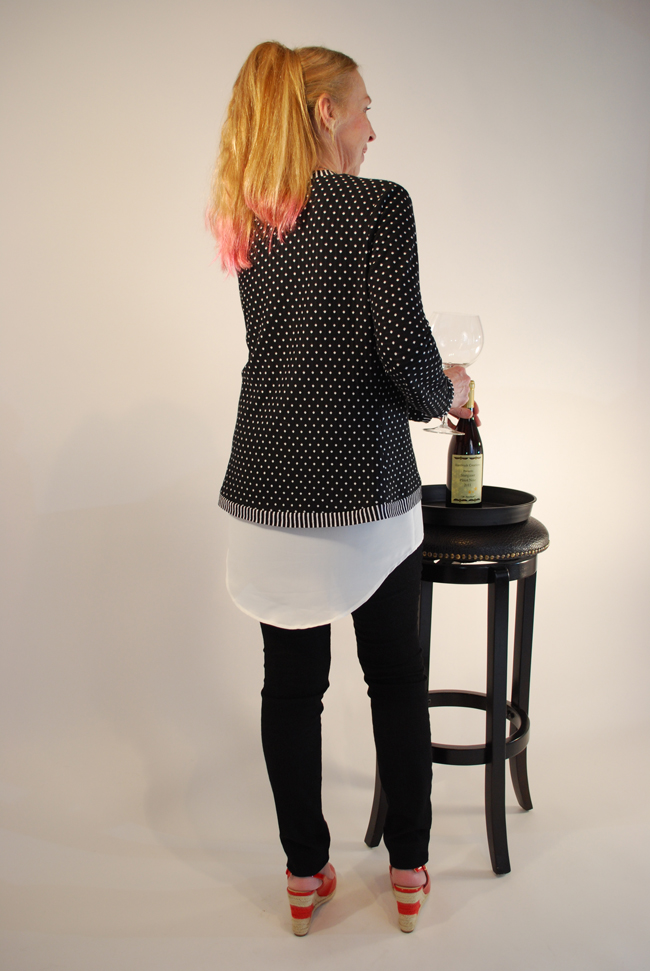
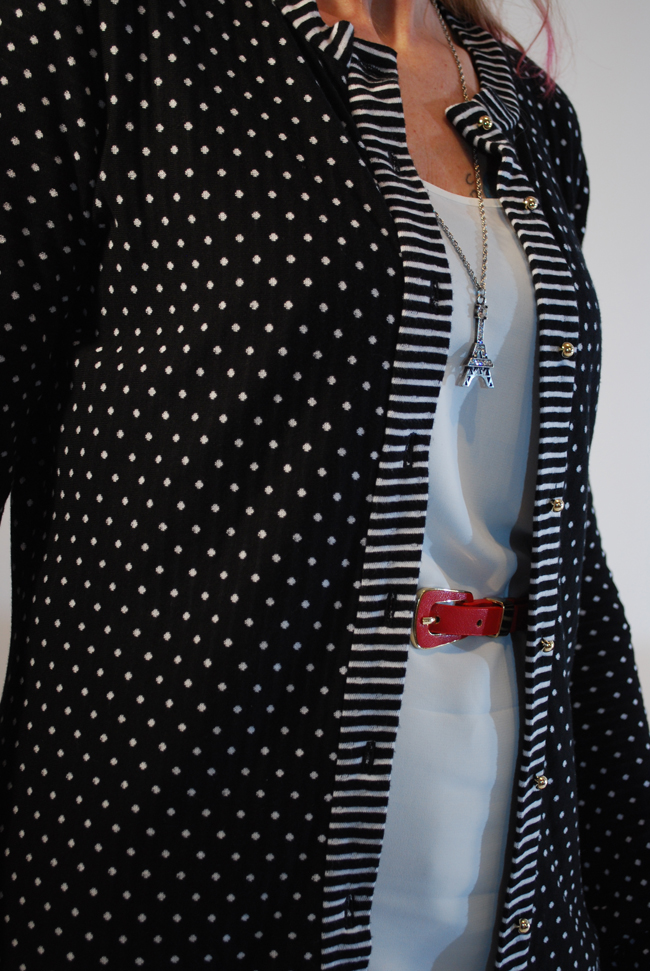
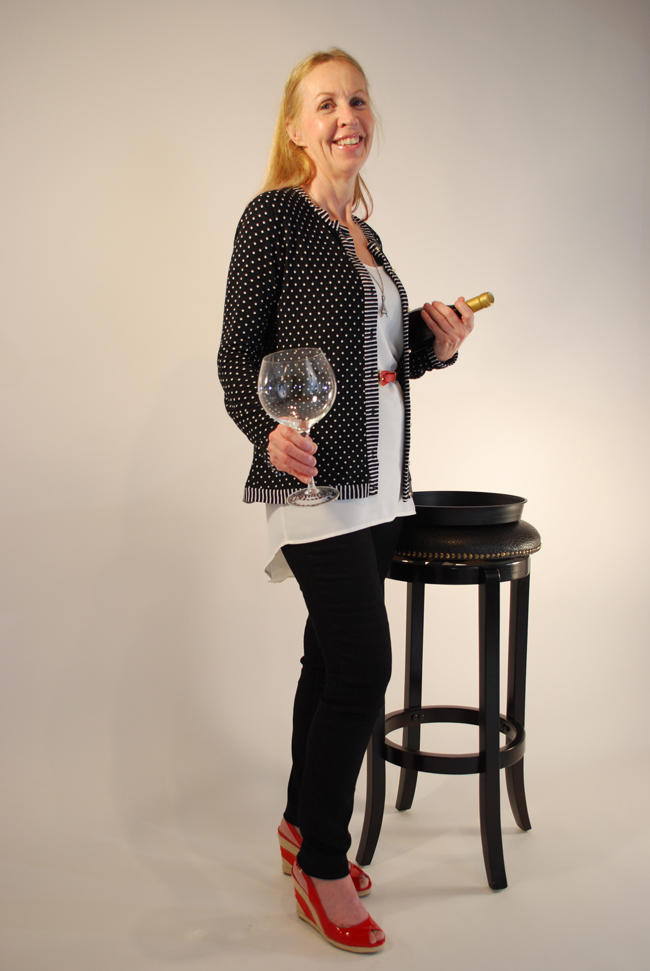
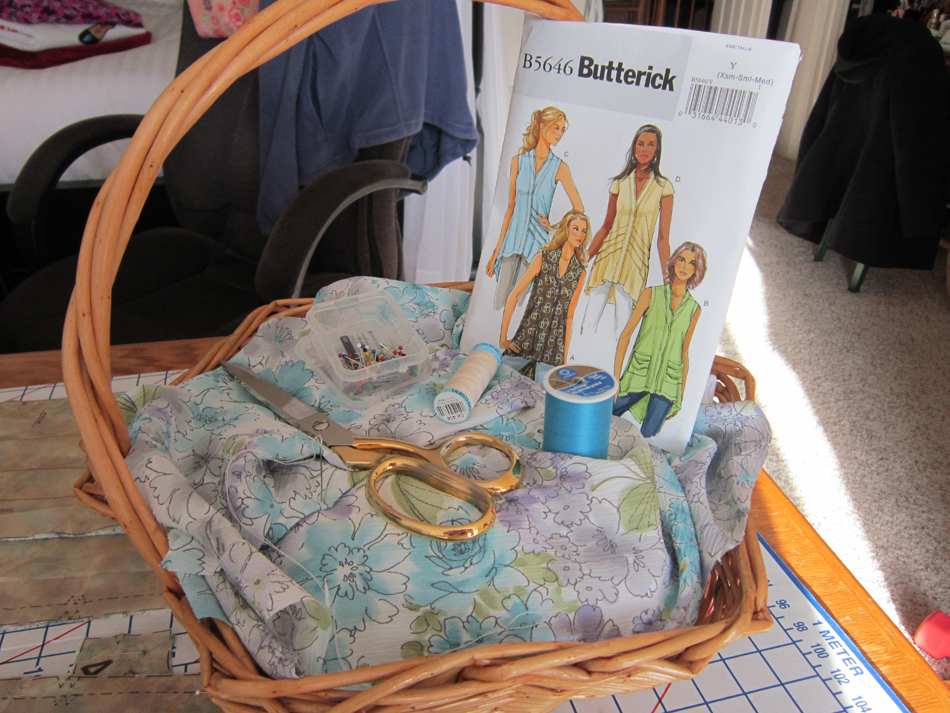
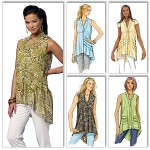
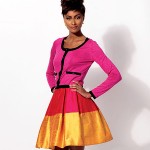
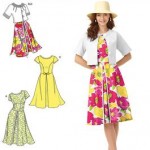
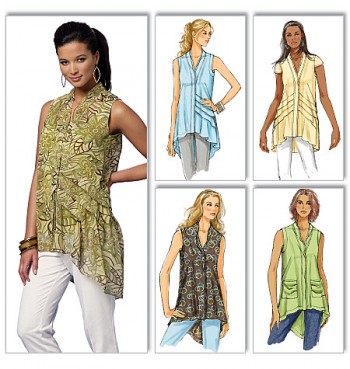
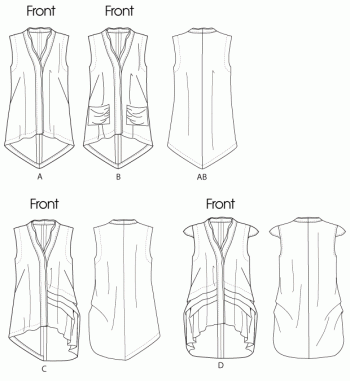
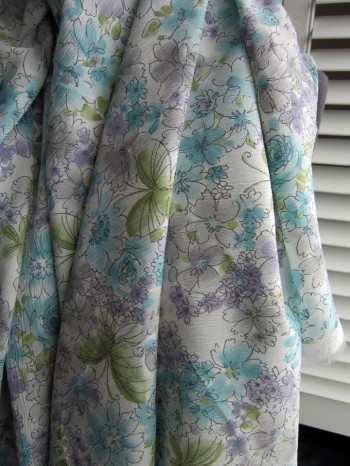
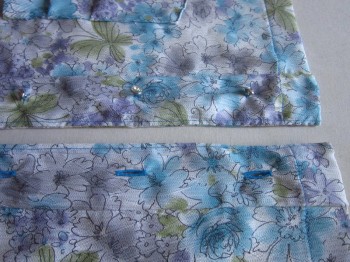
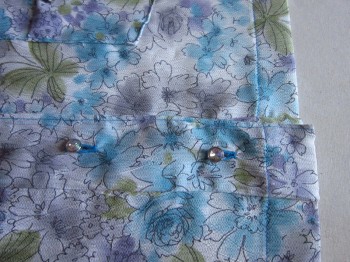
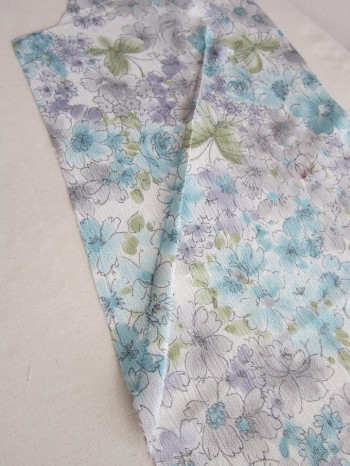
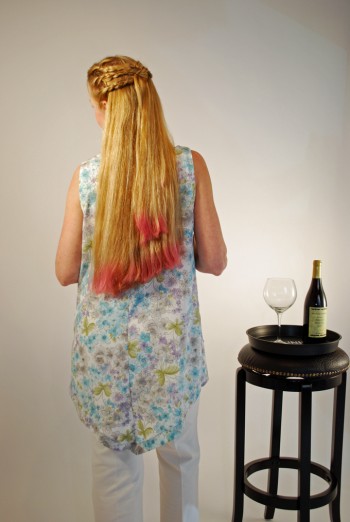

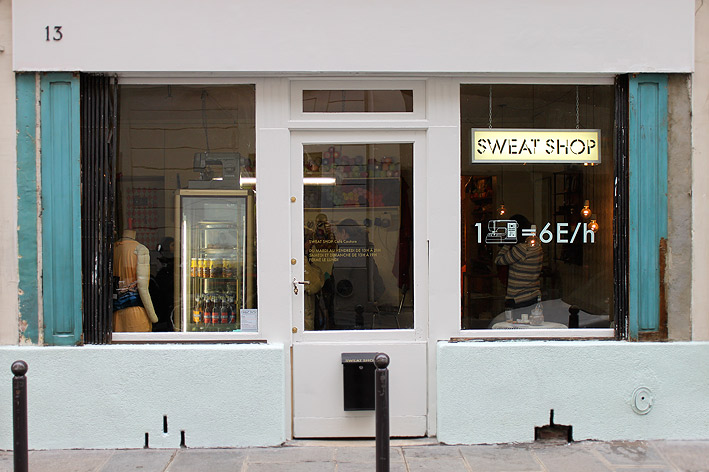
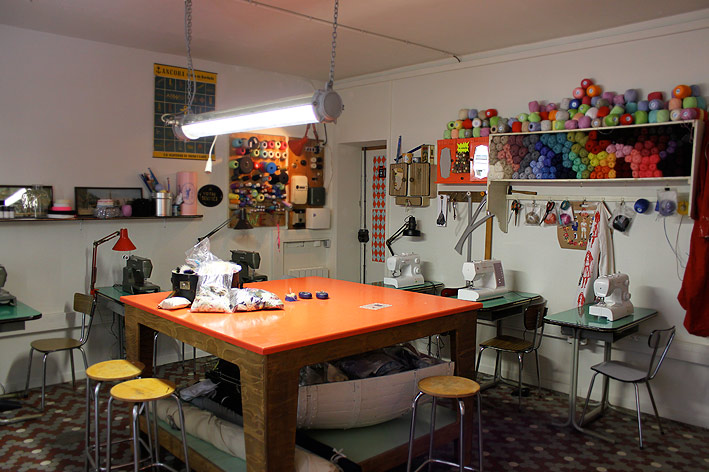
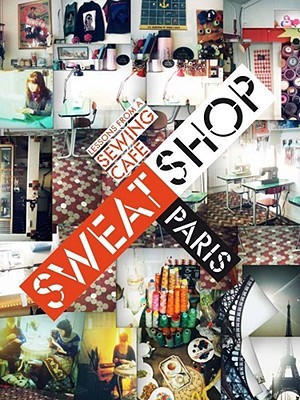
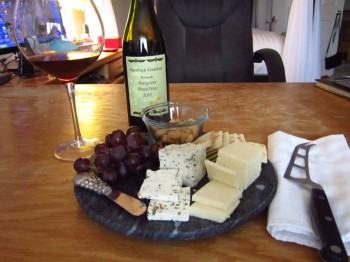
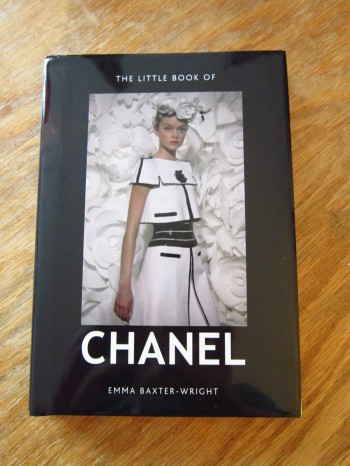
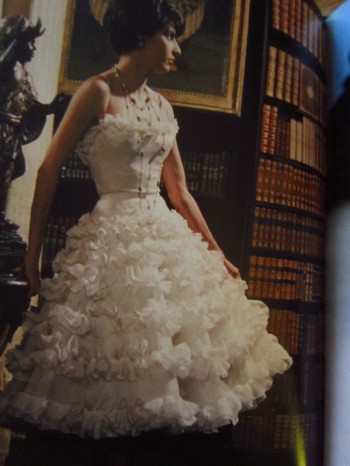
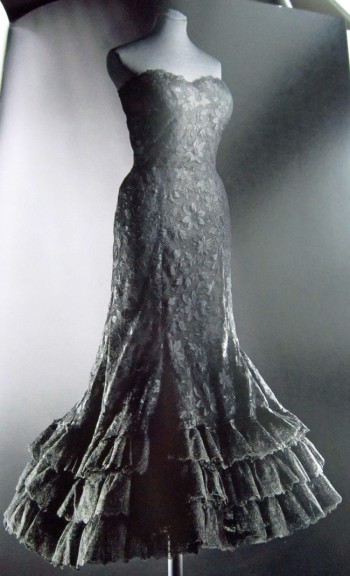
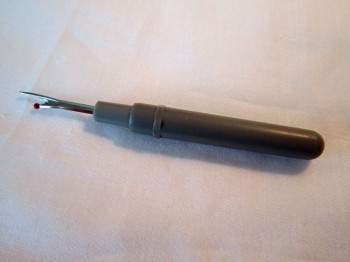
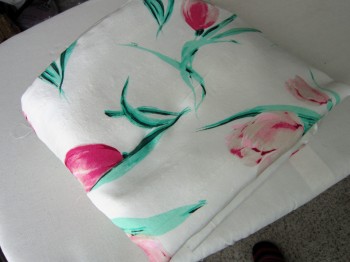

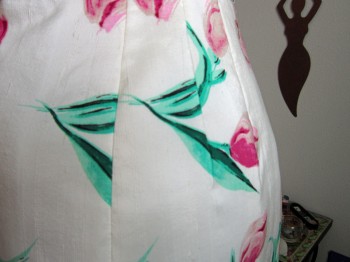
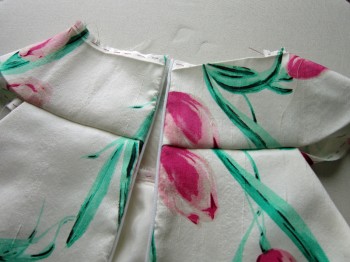
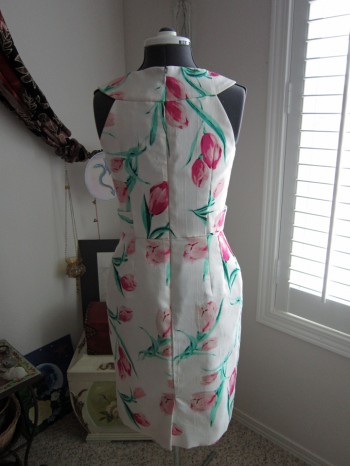
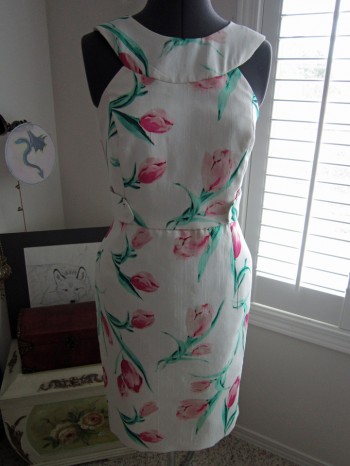
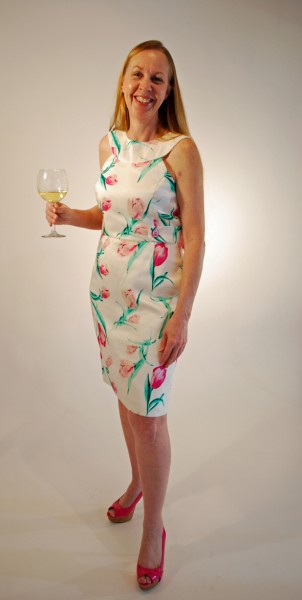
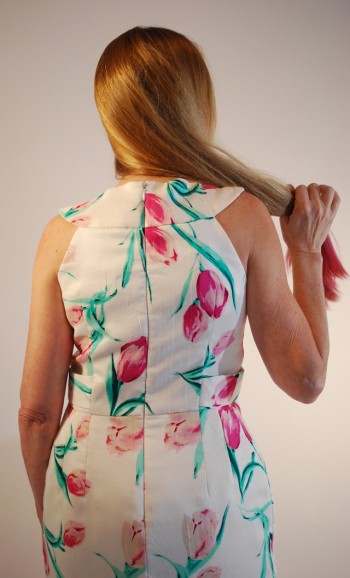
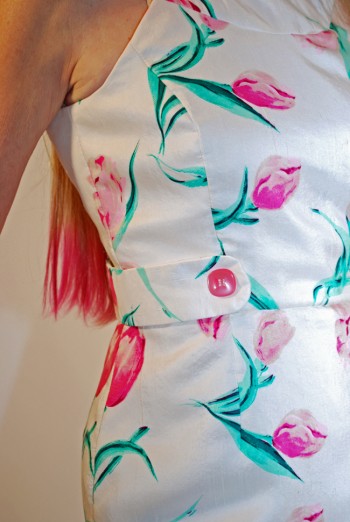

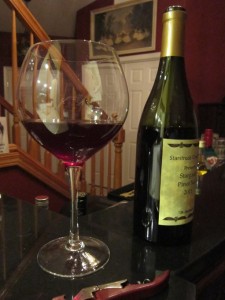



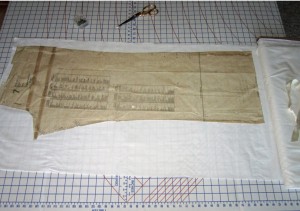
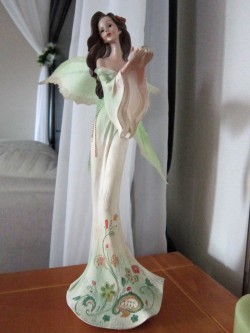
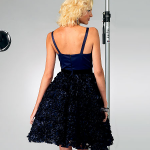
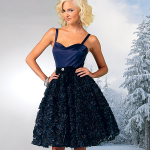
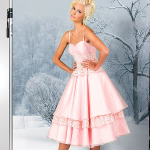
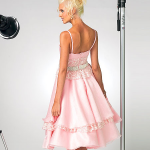
 Portland, Oregon,
Portland, Oregon, 